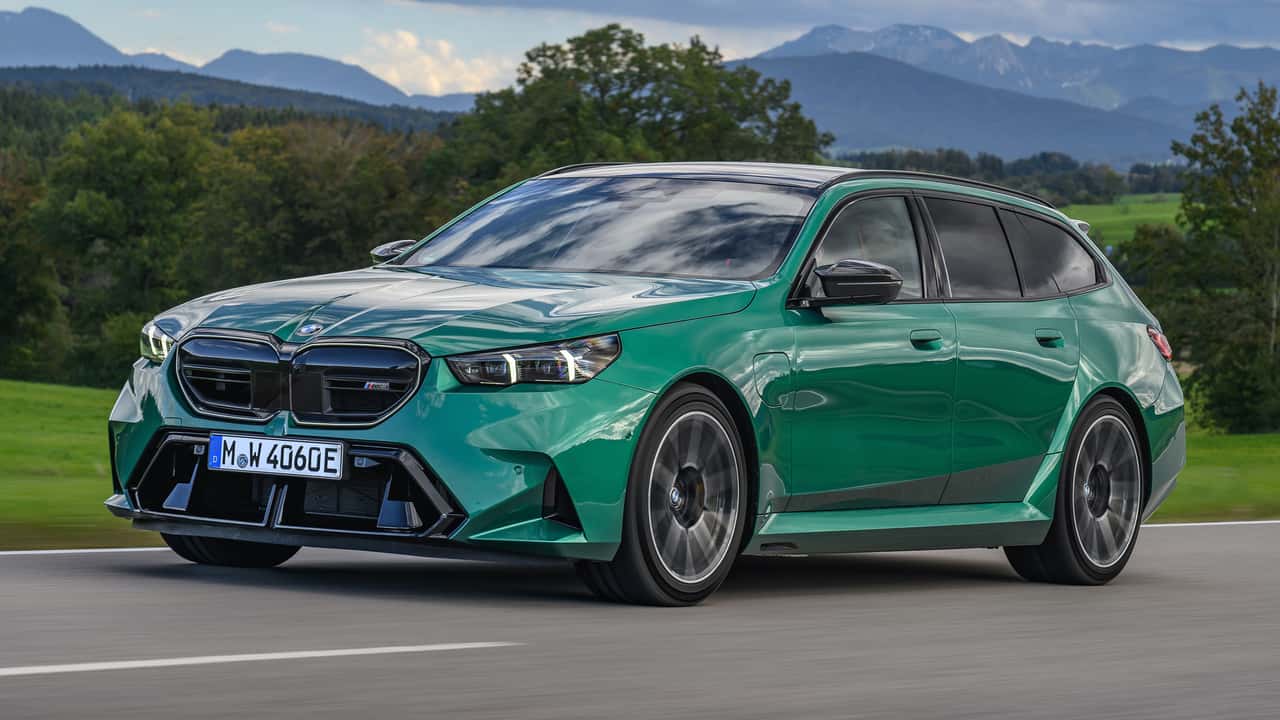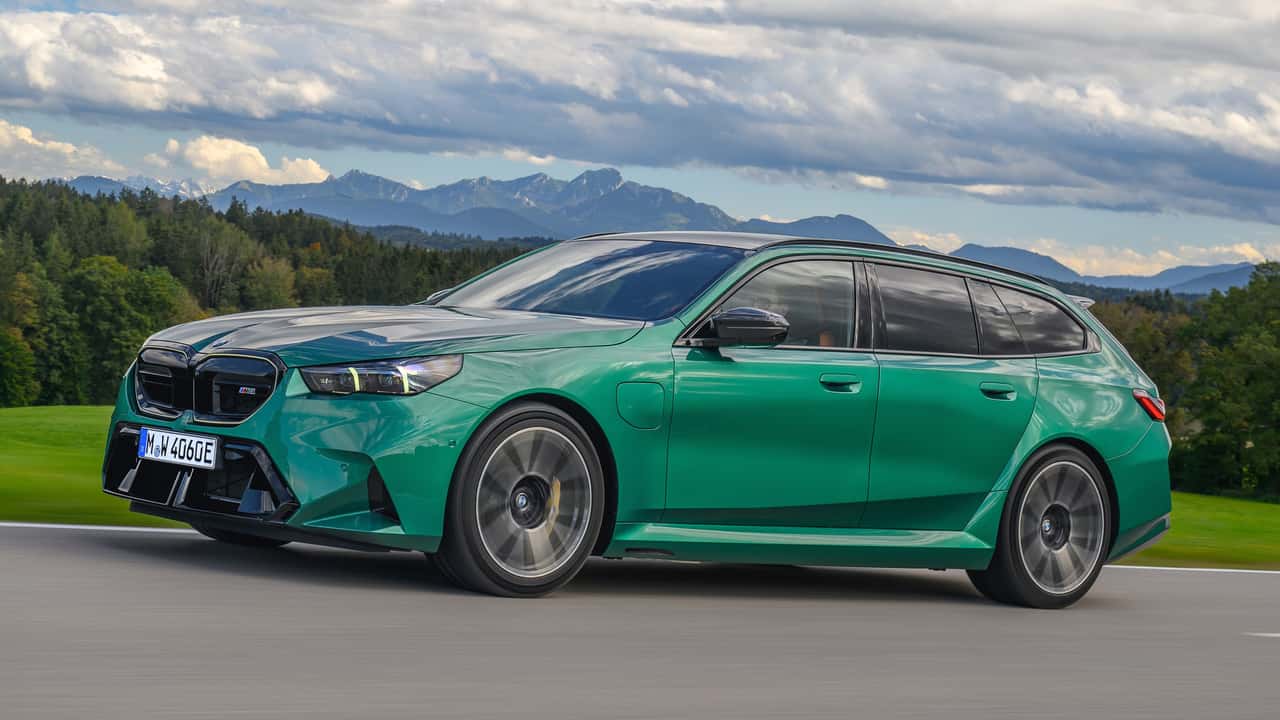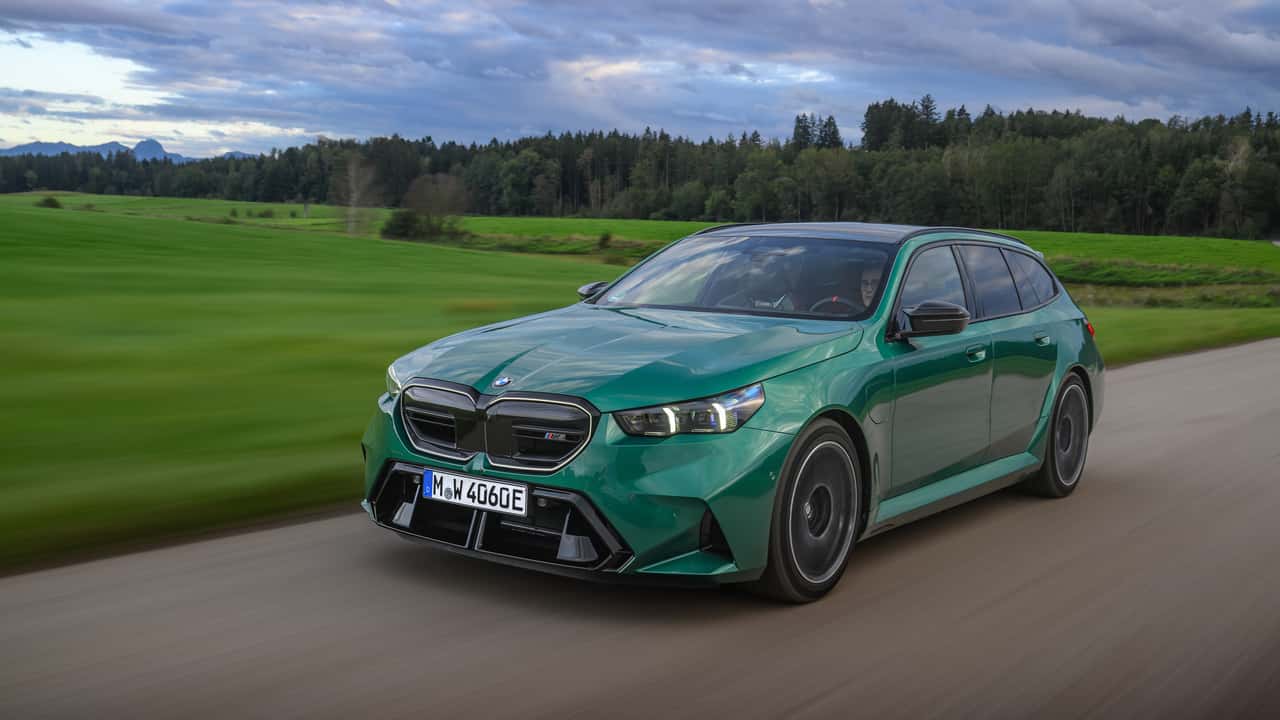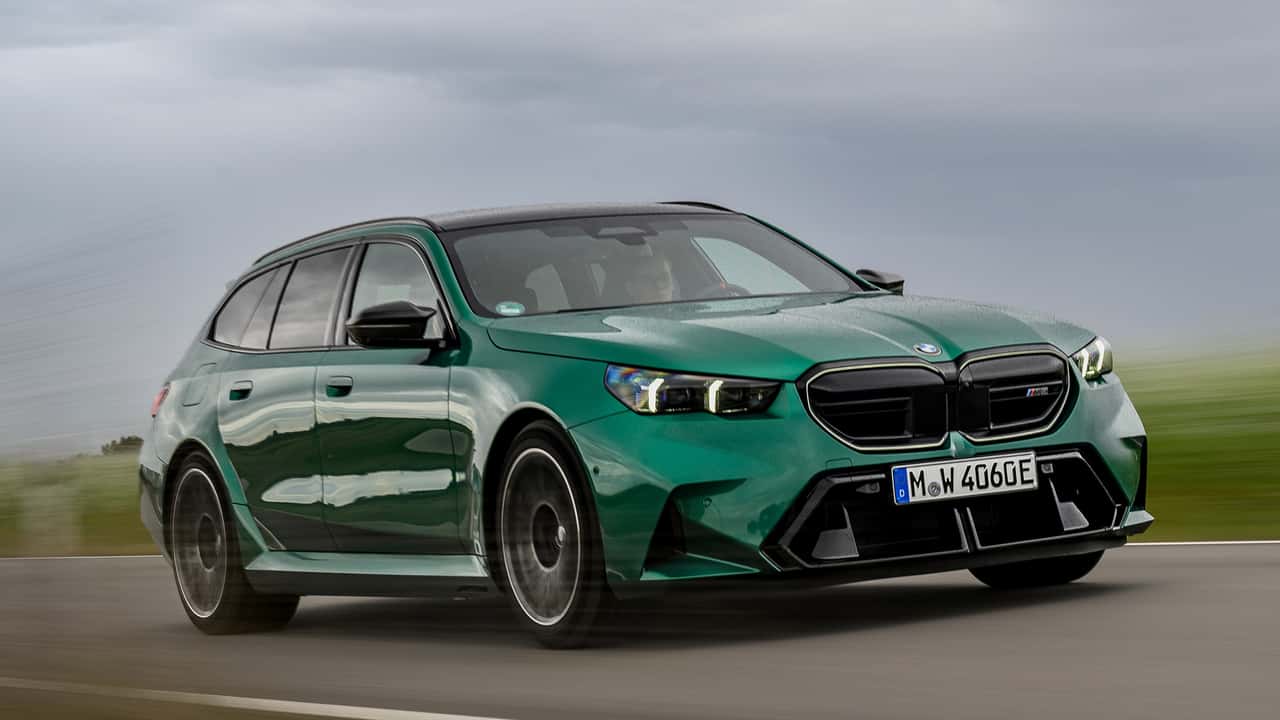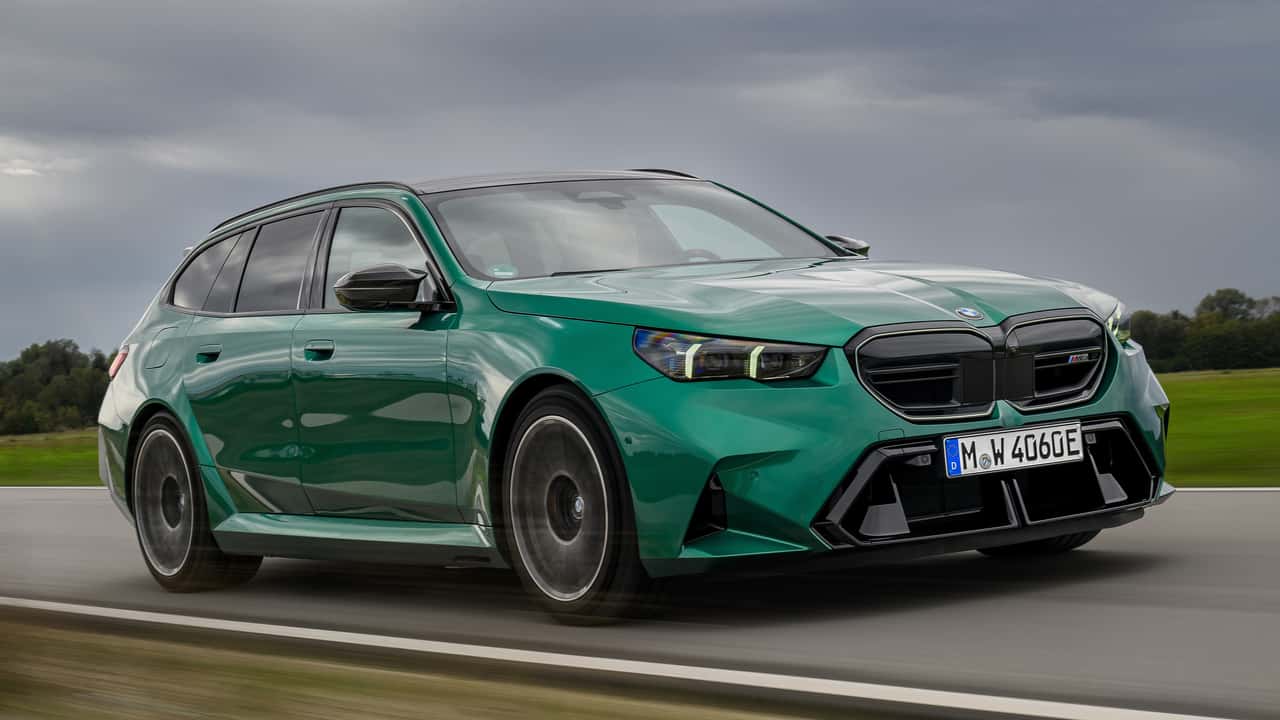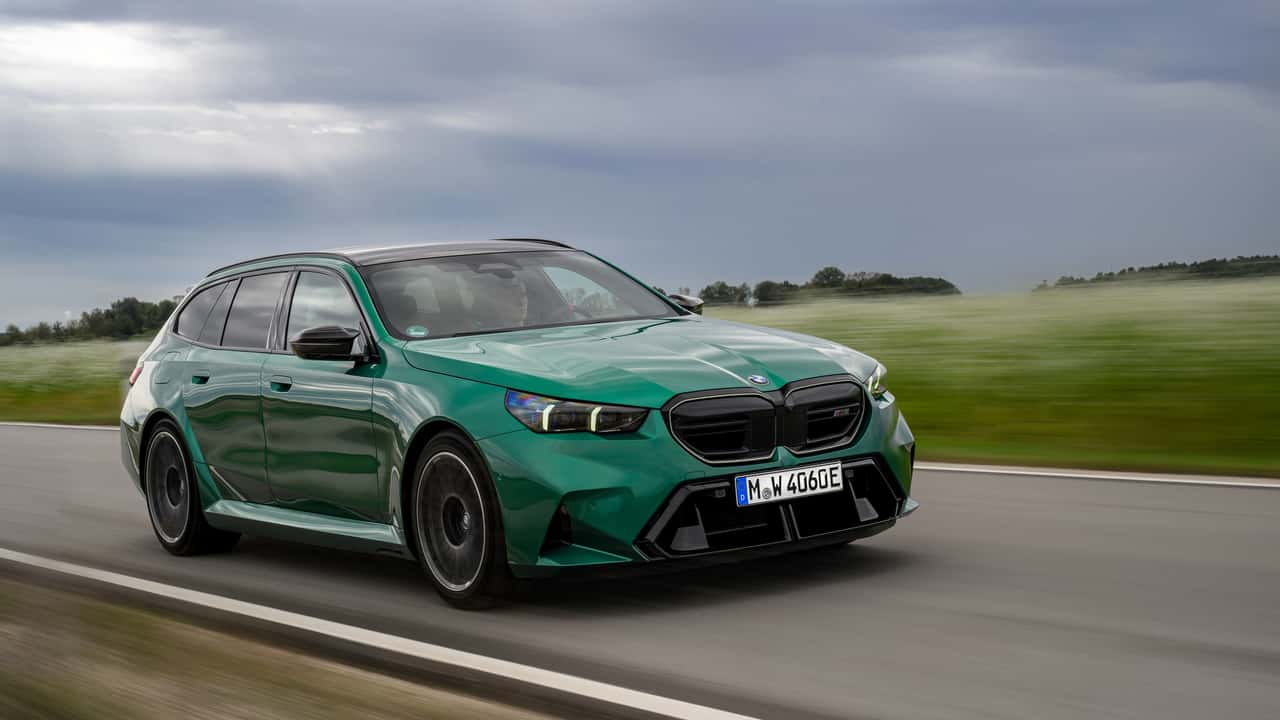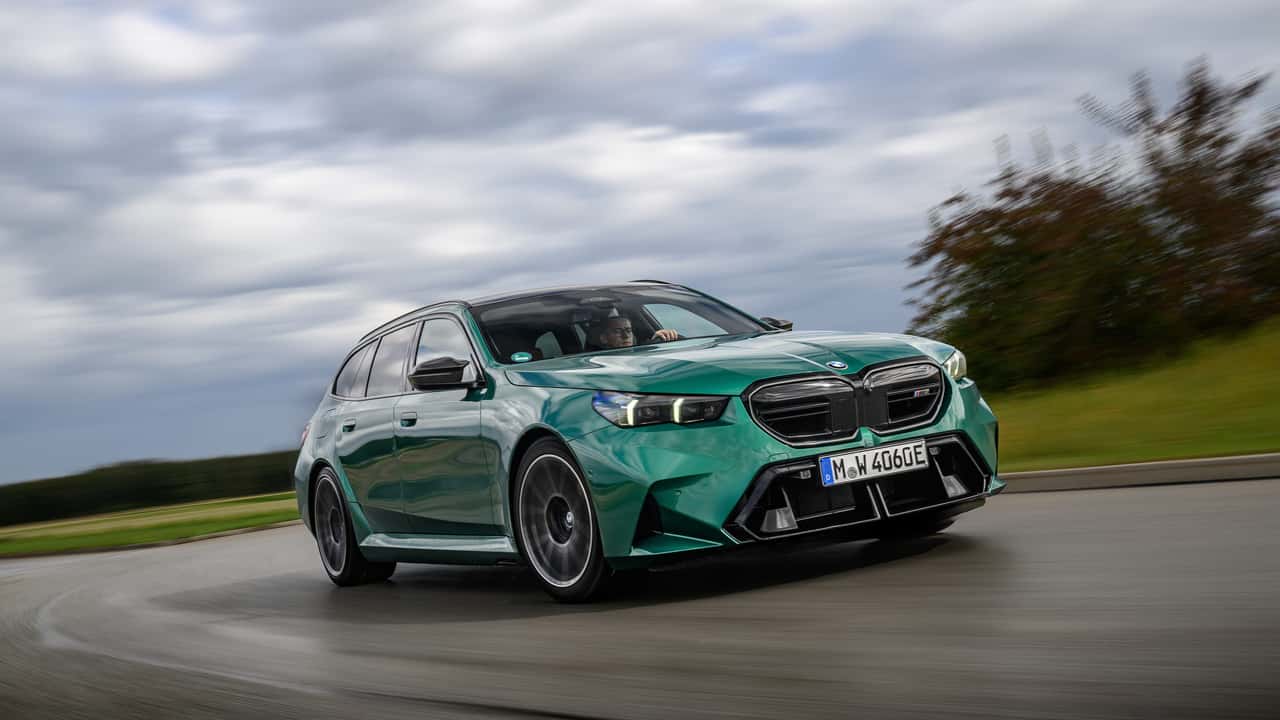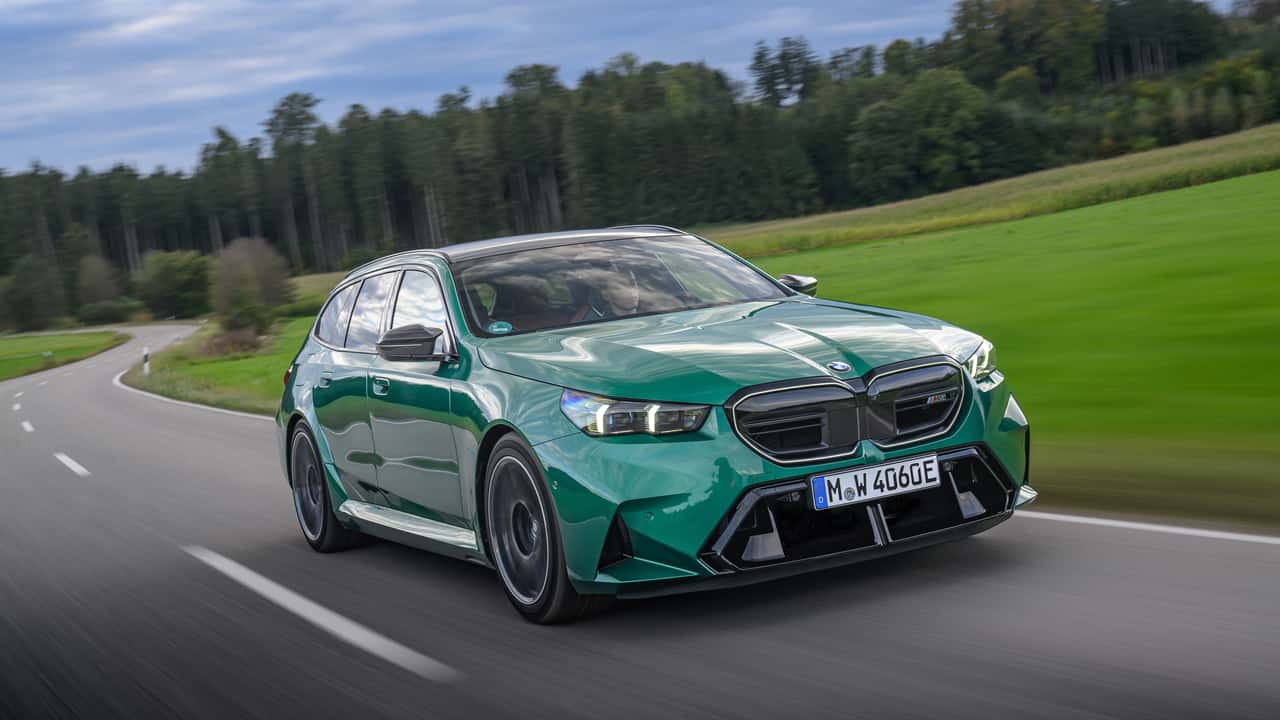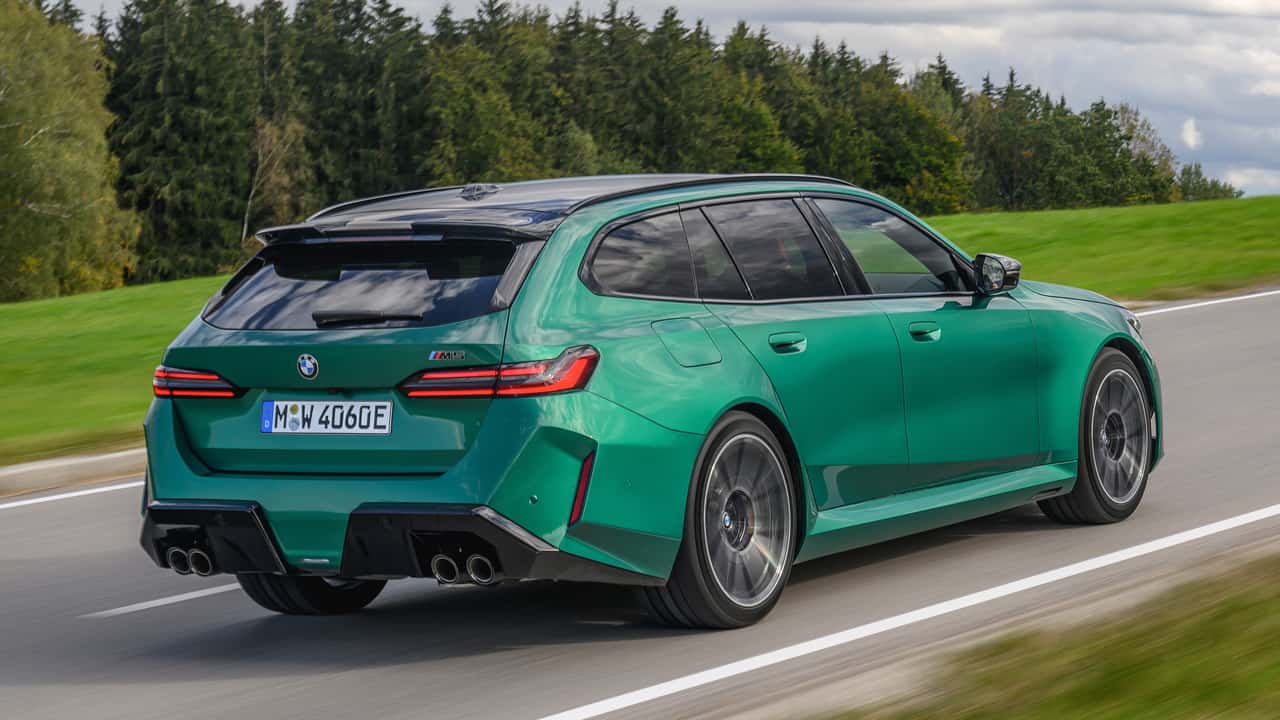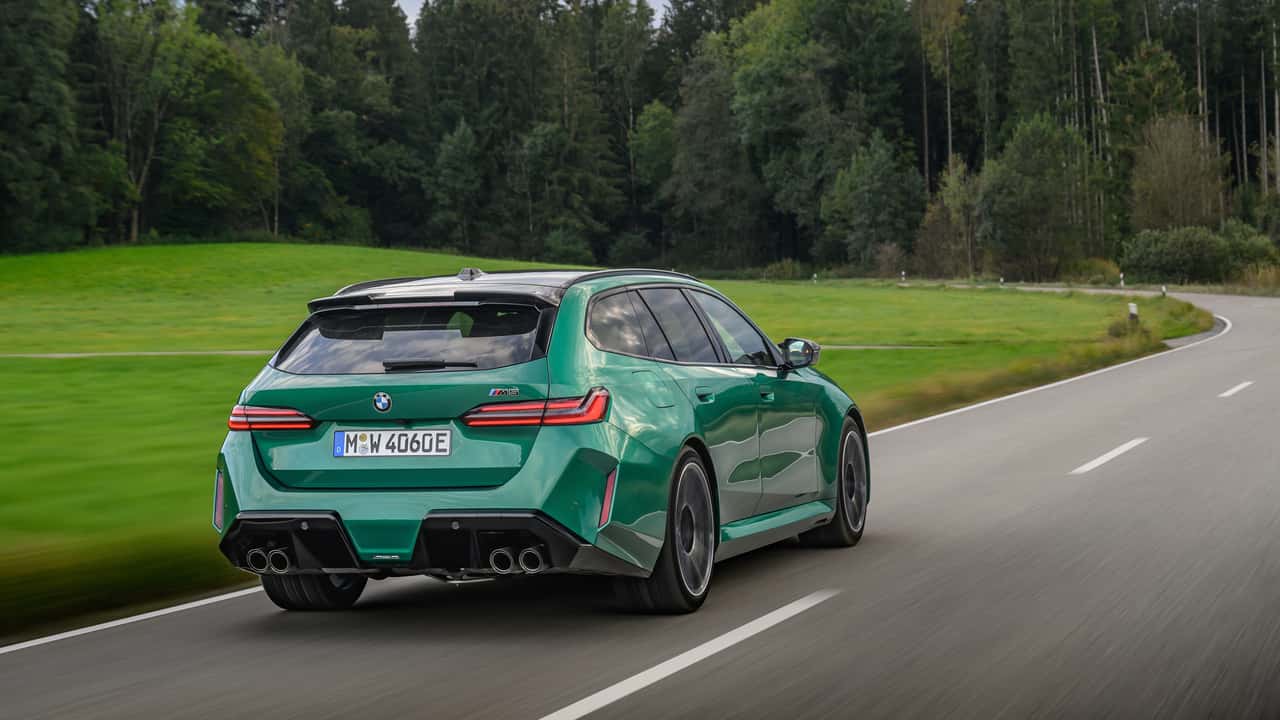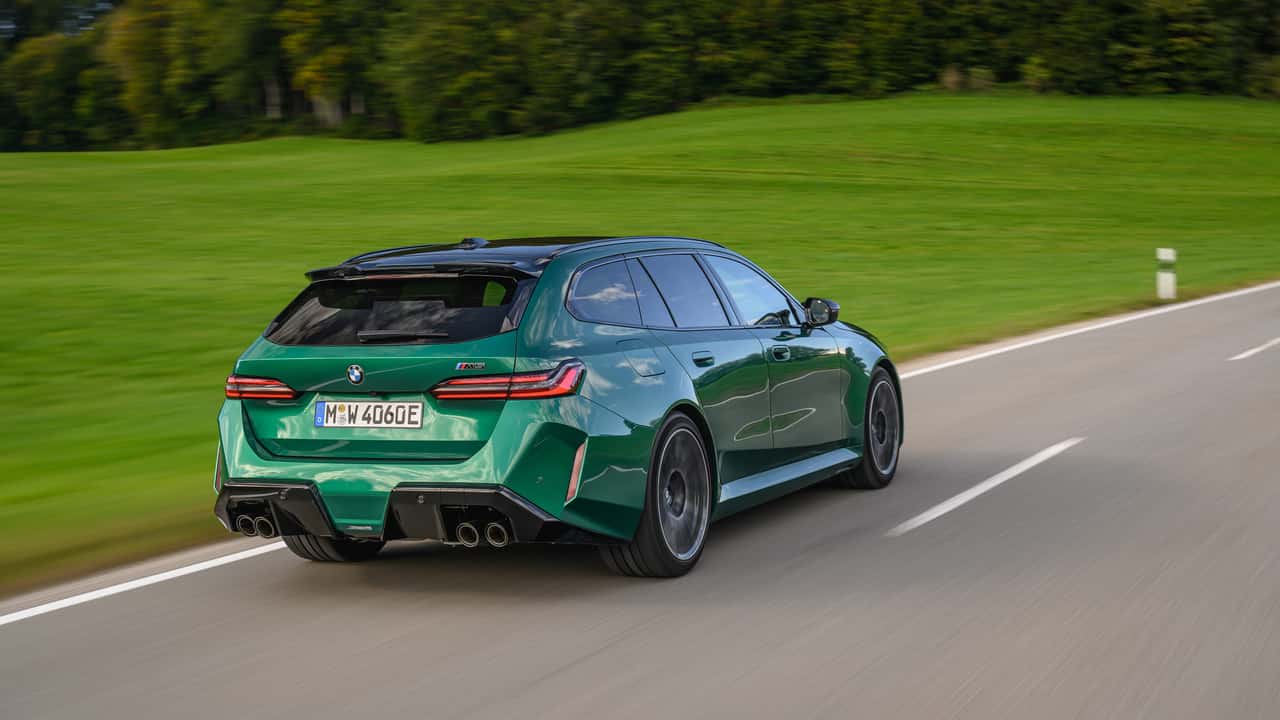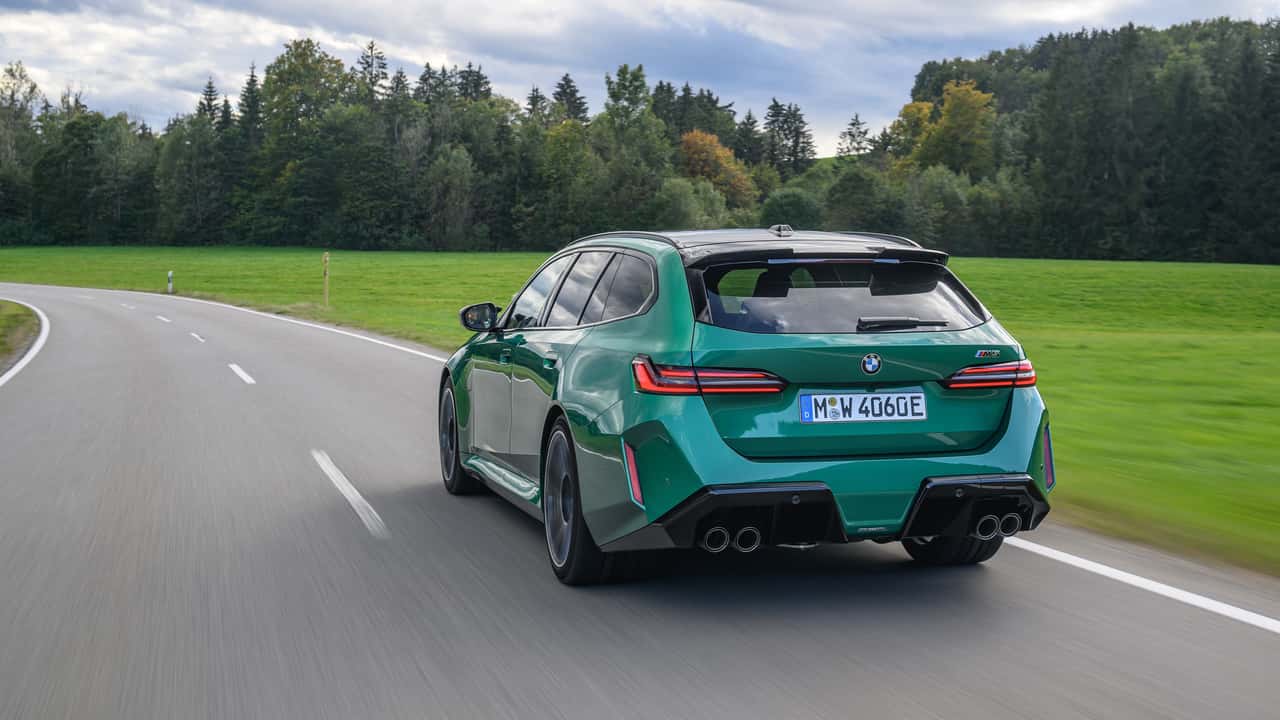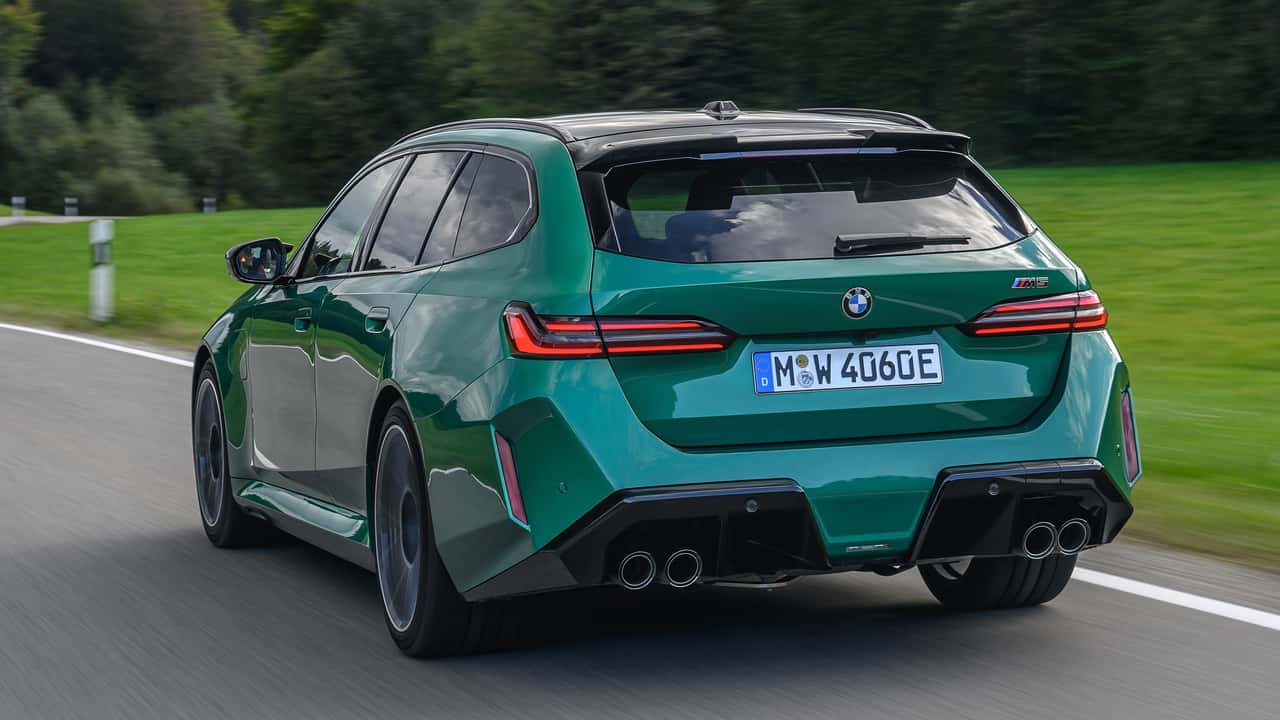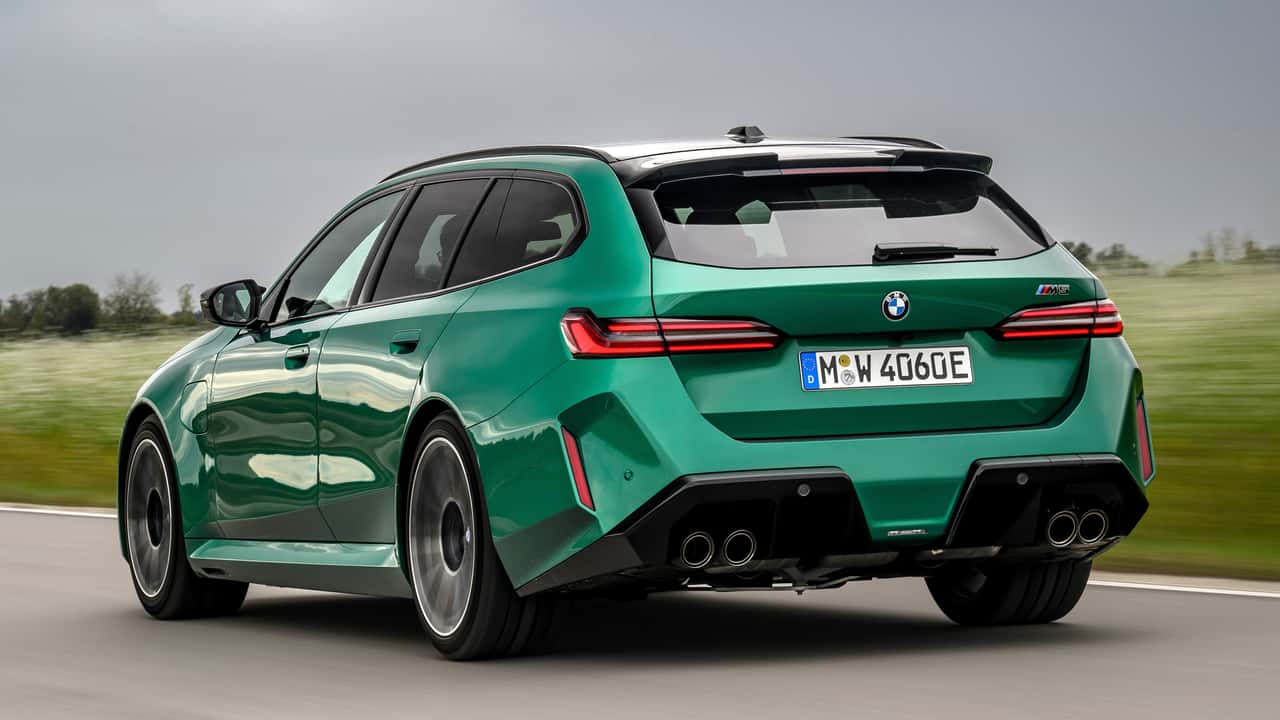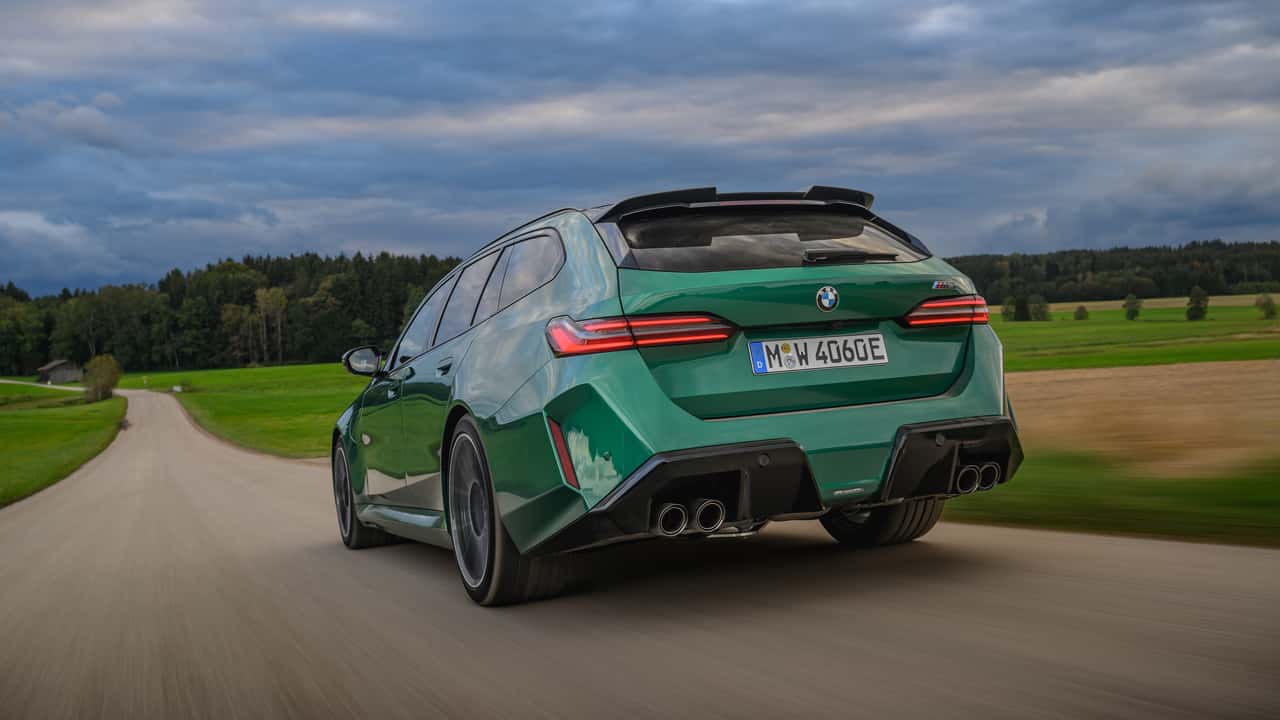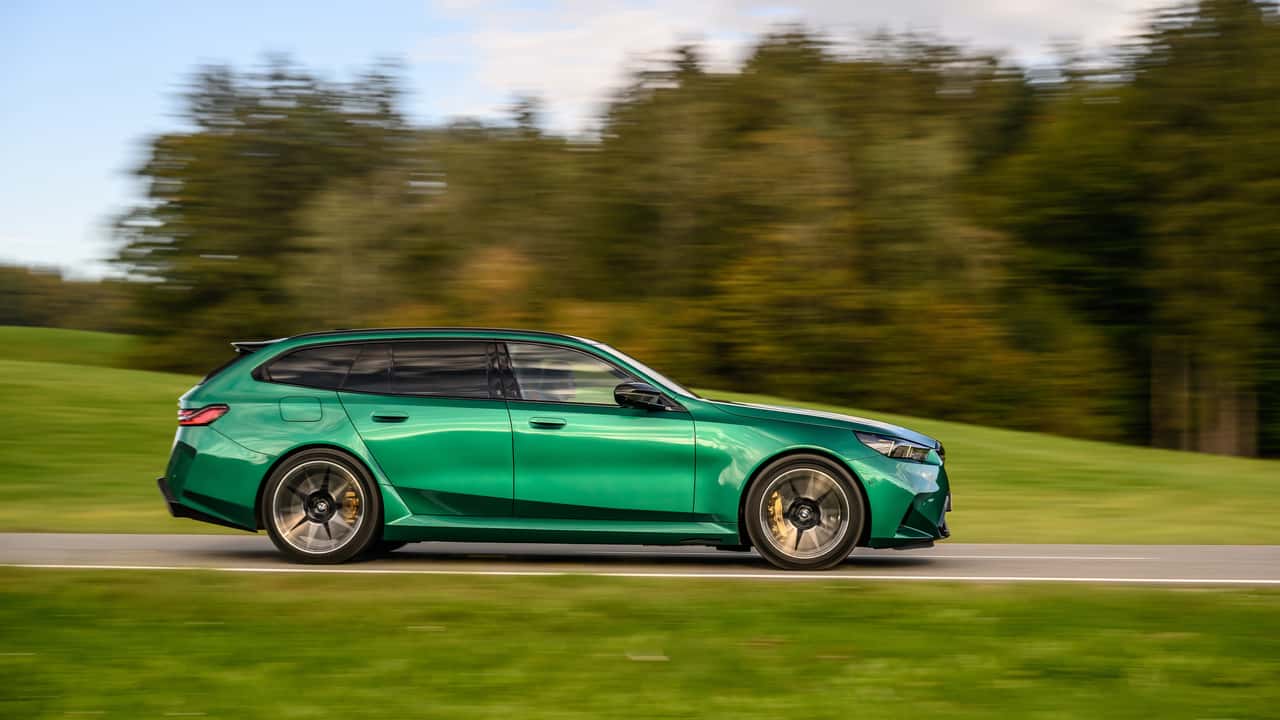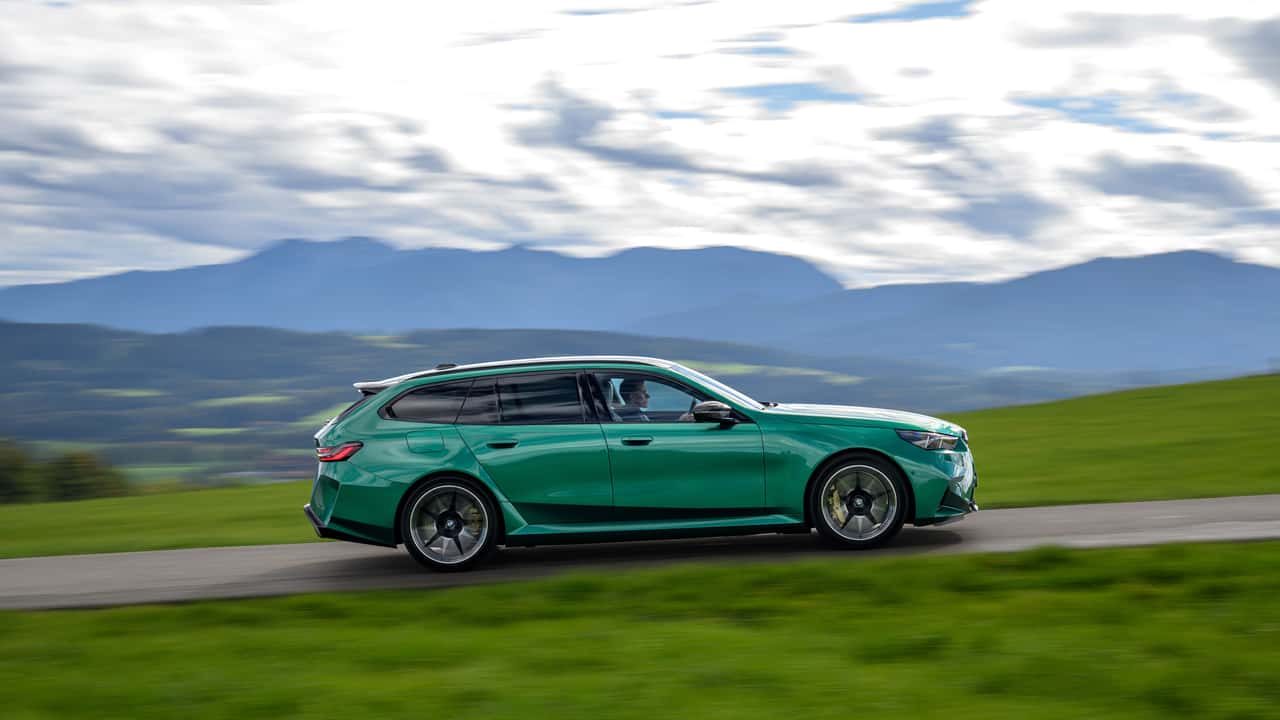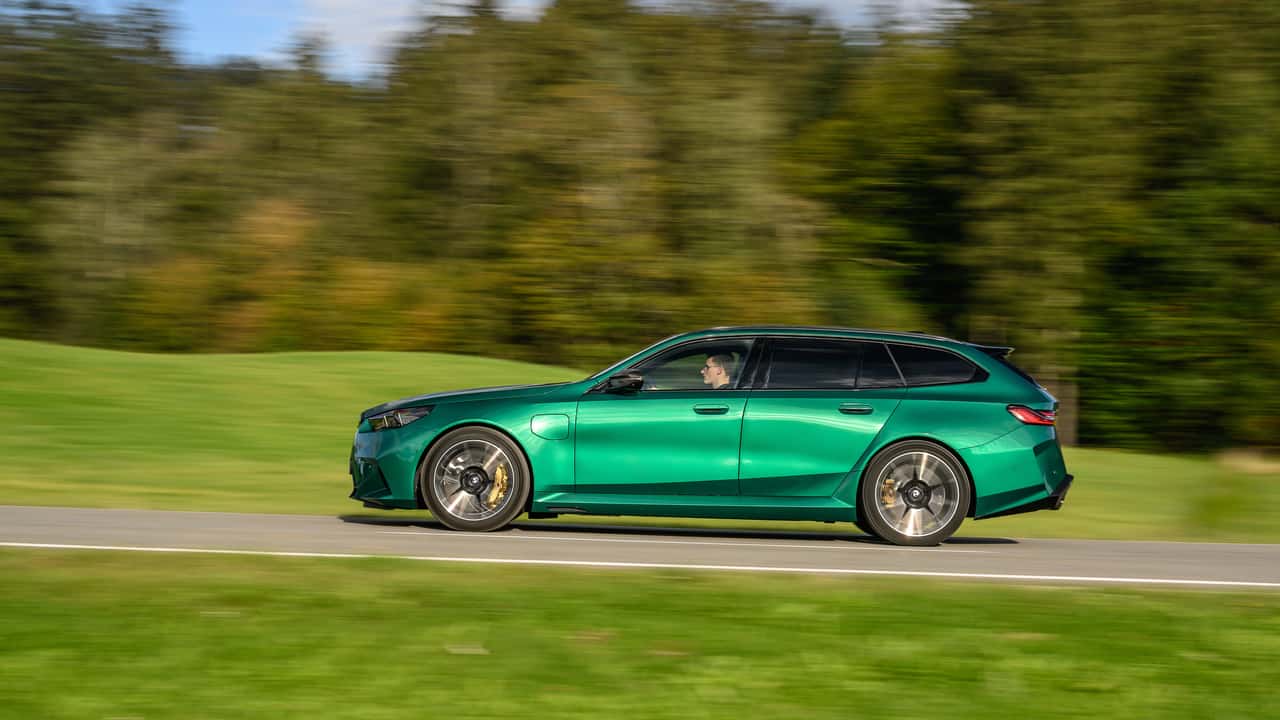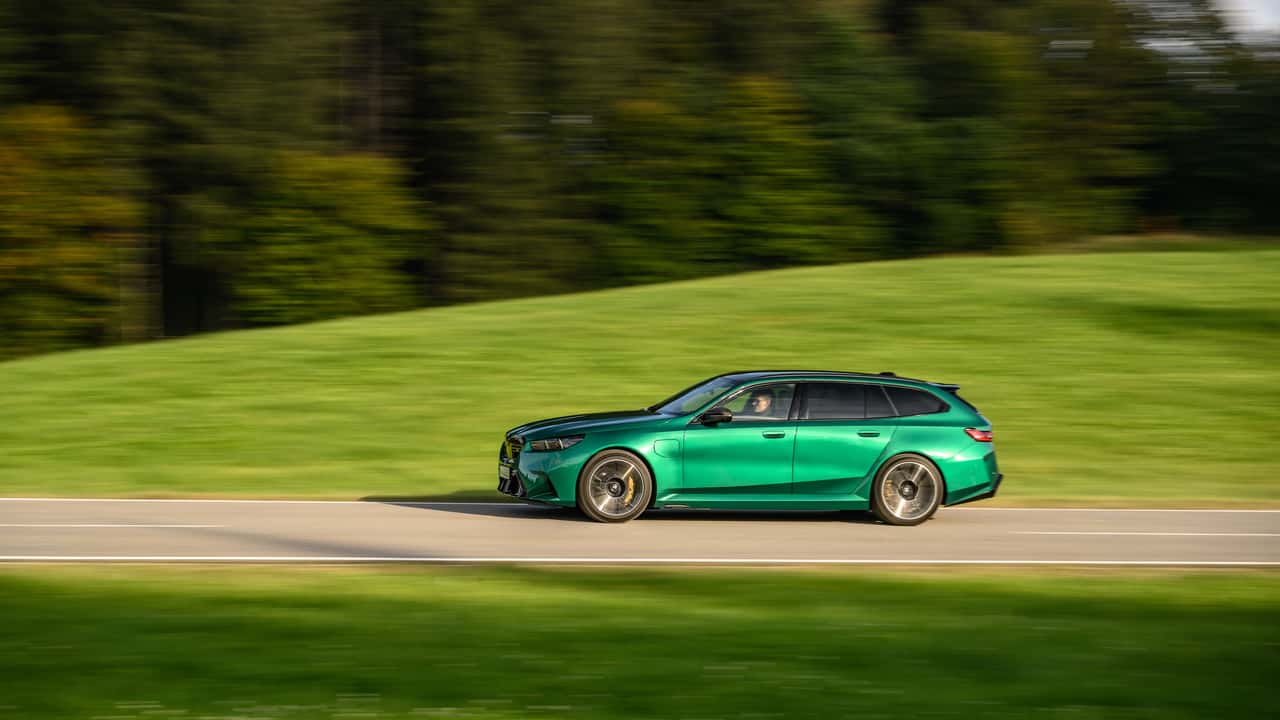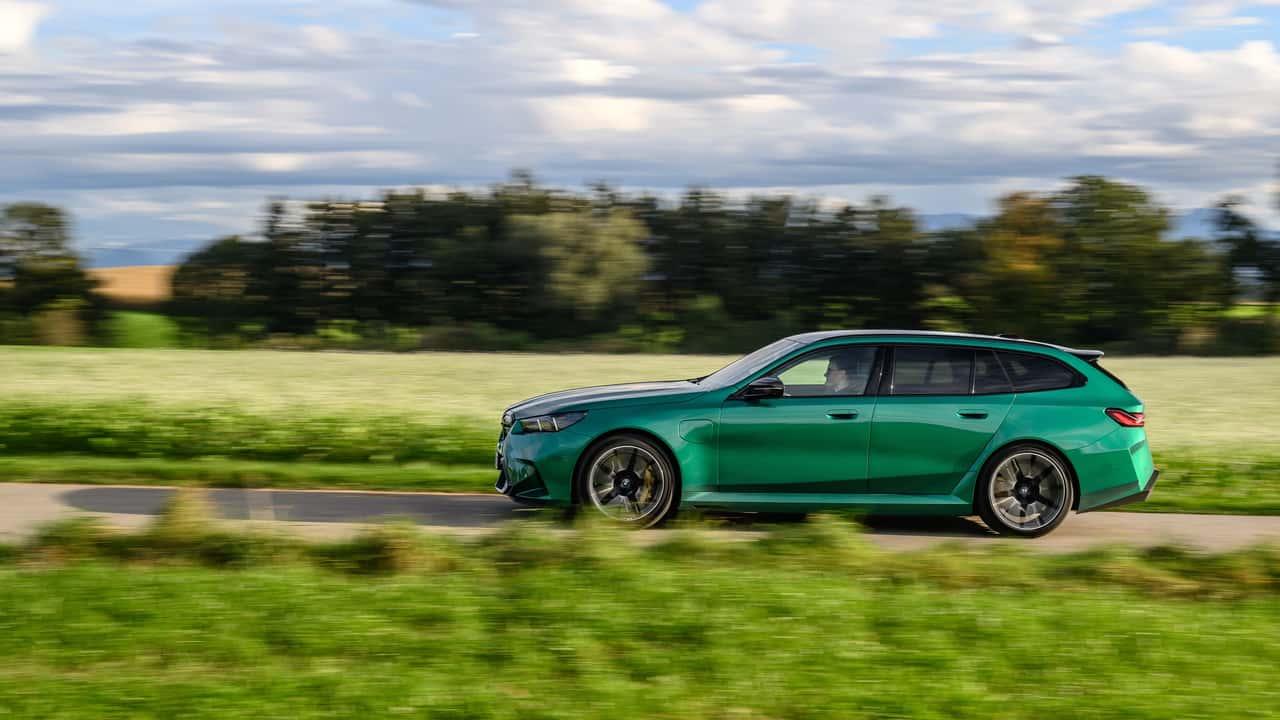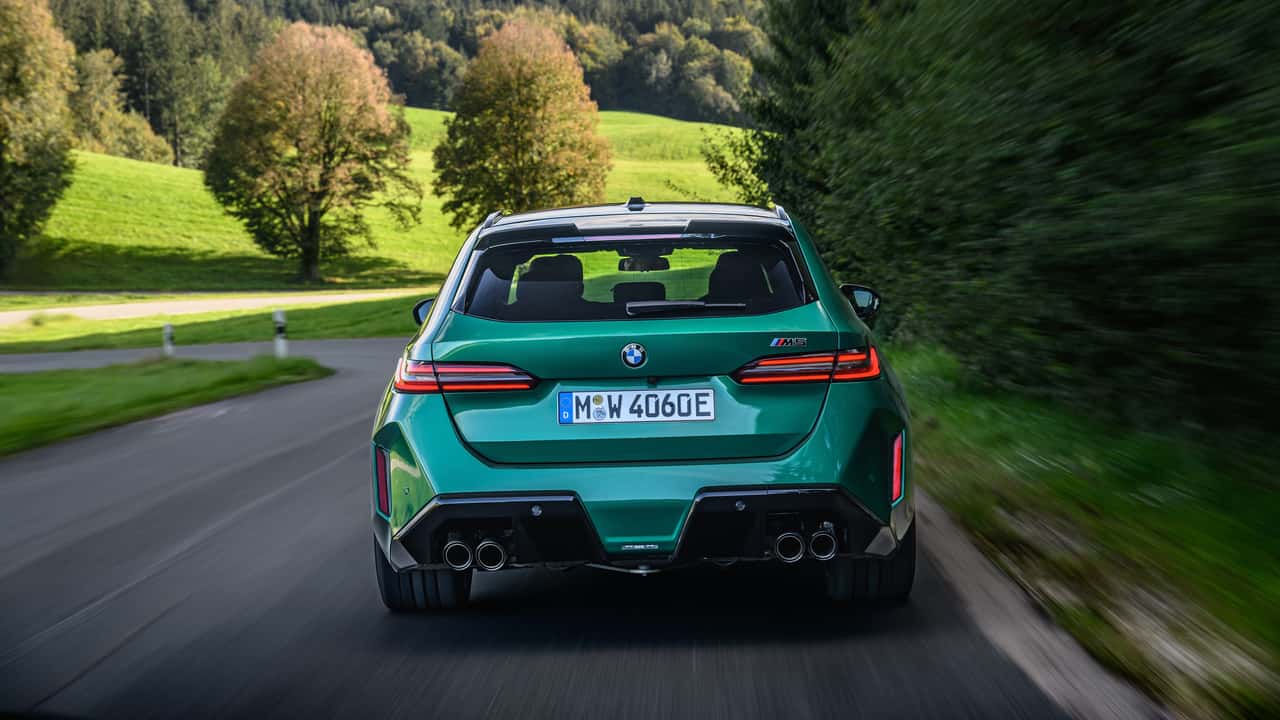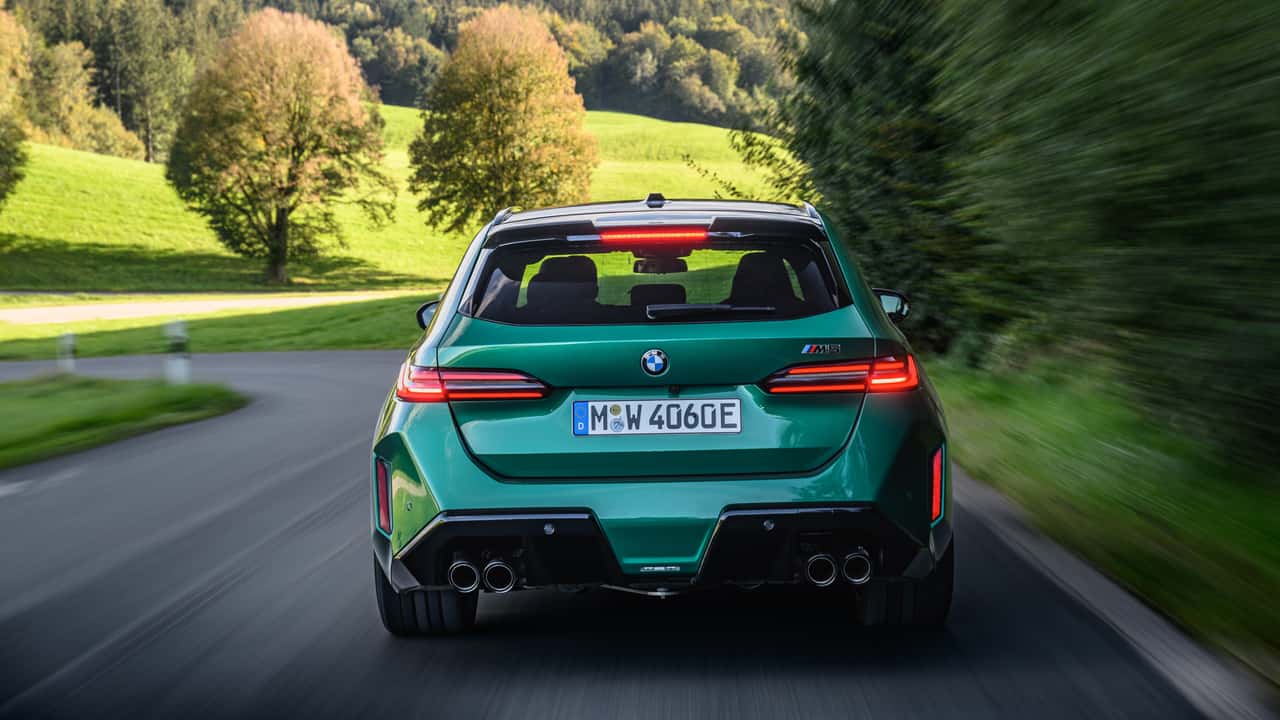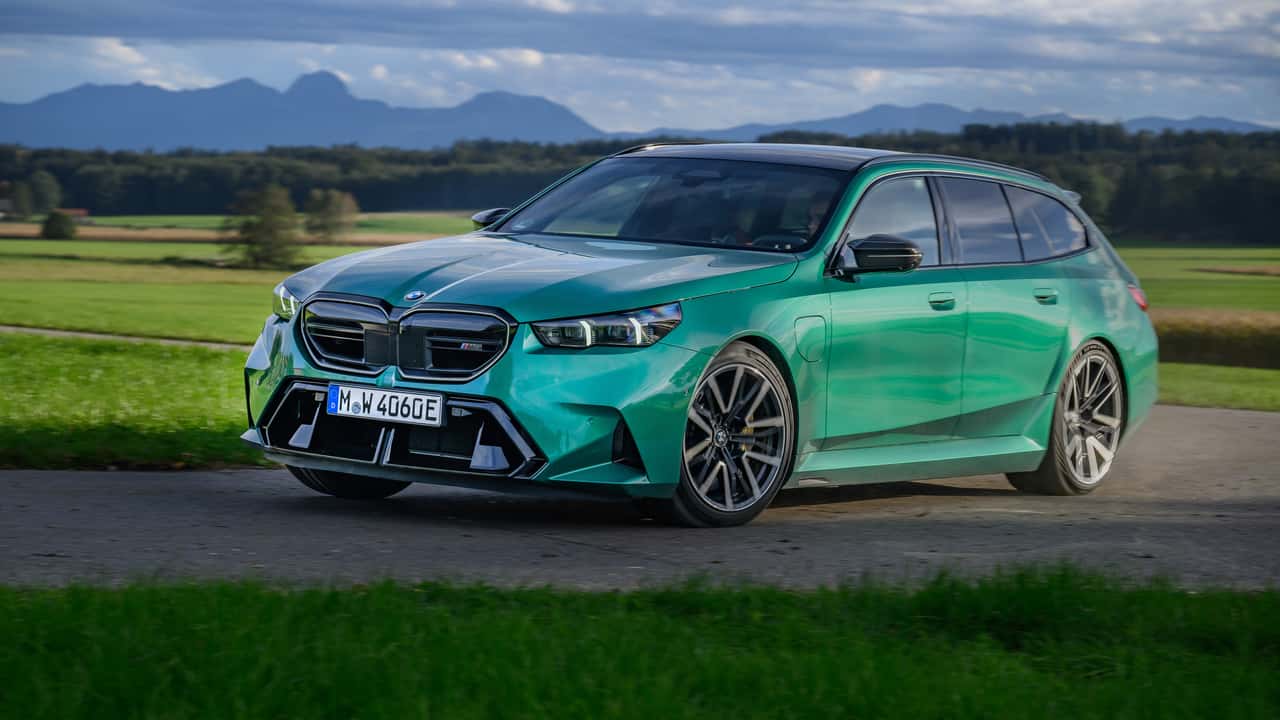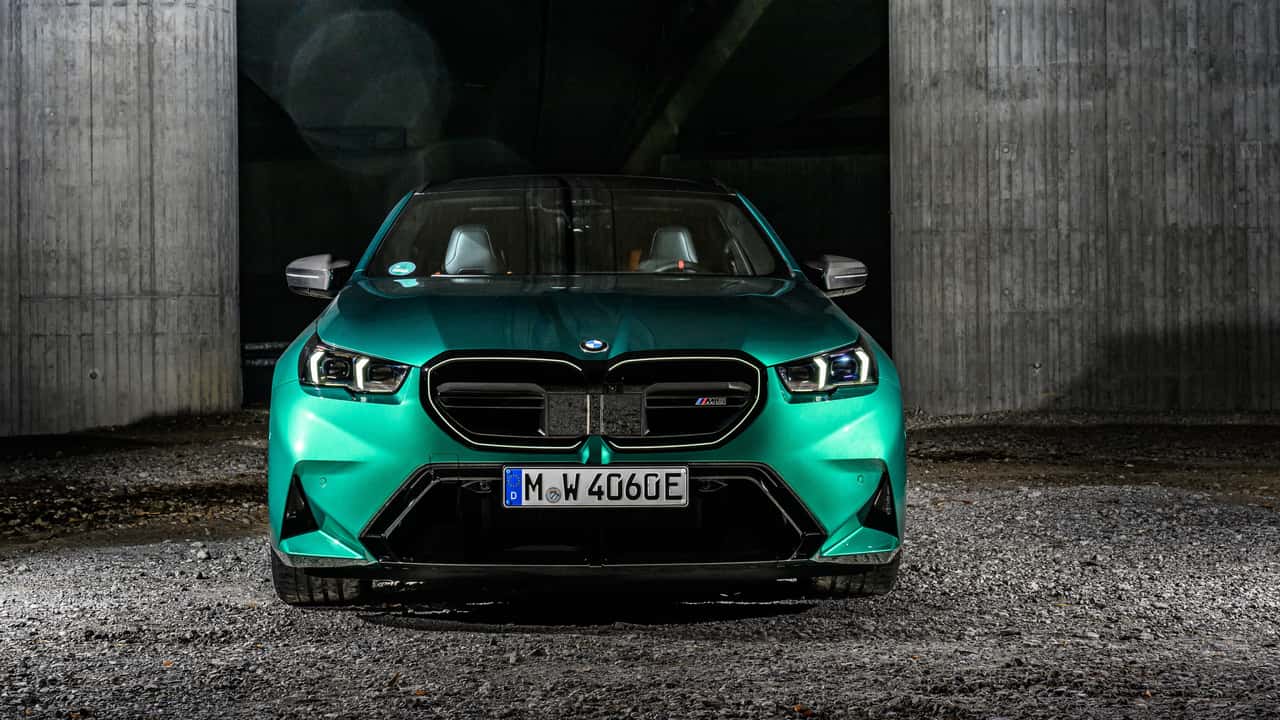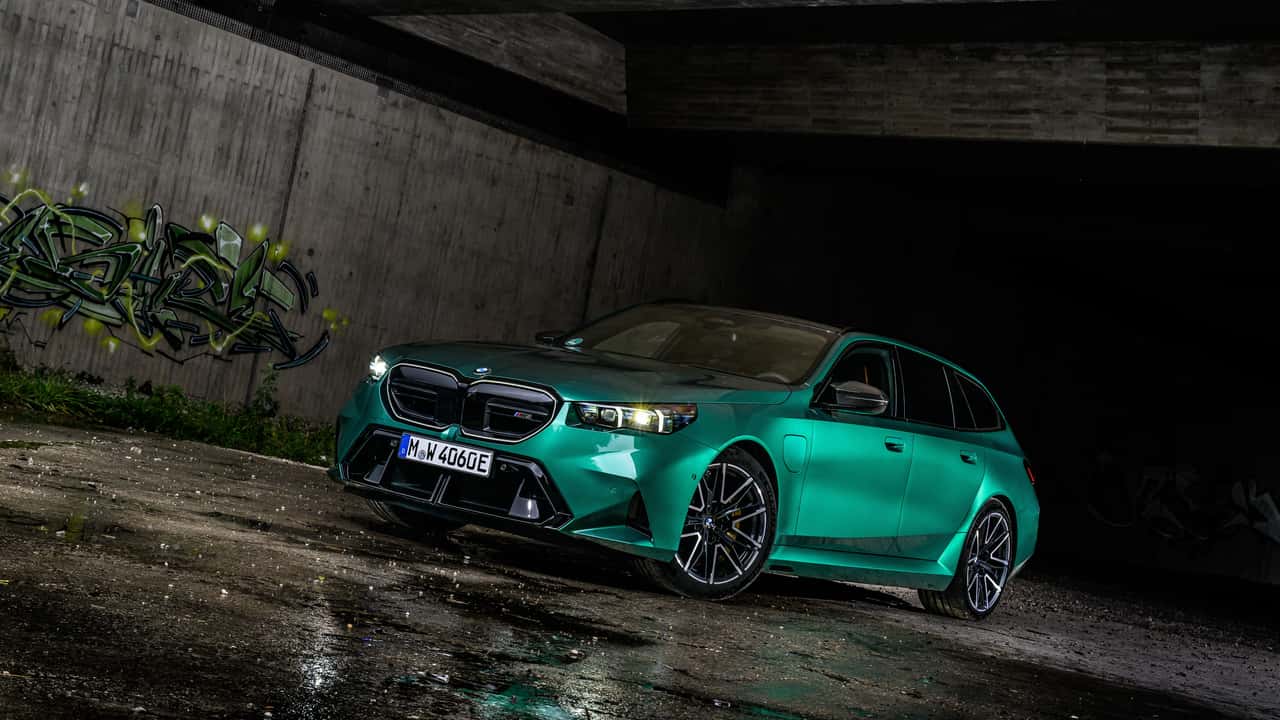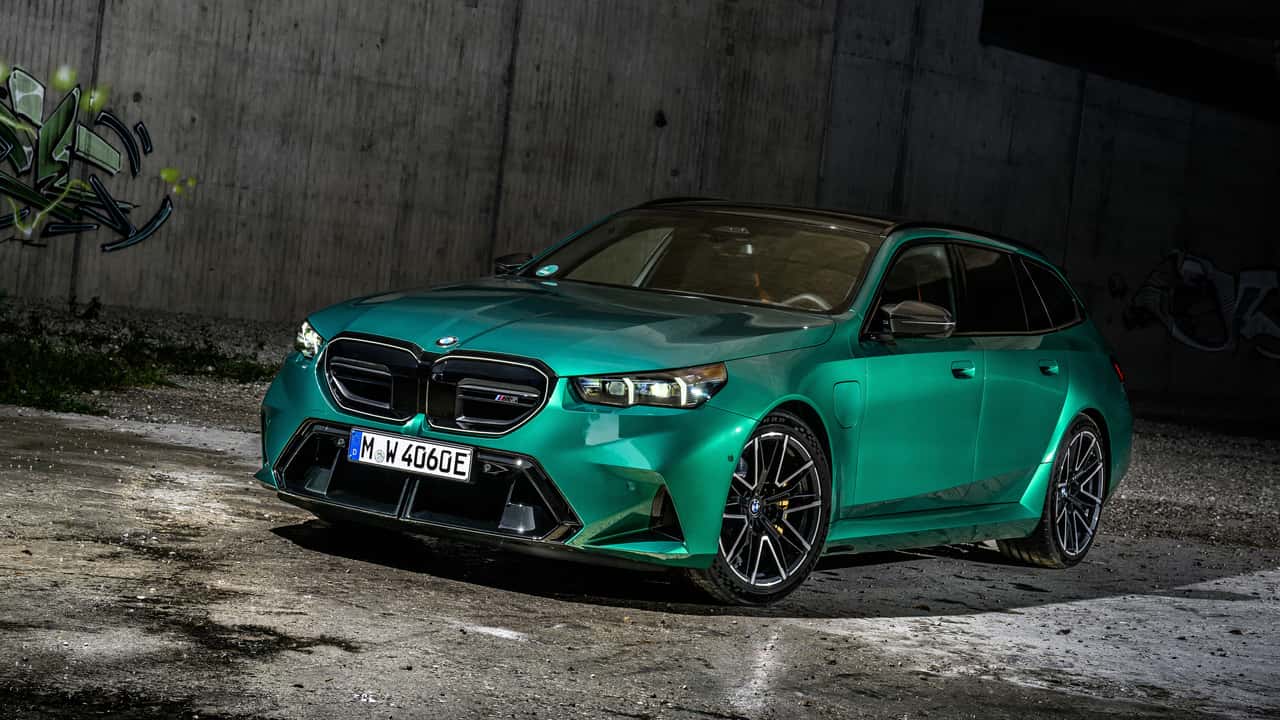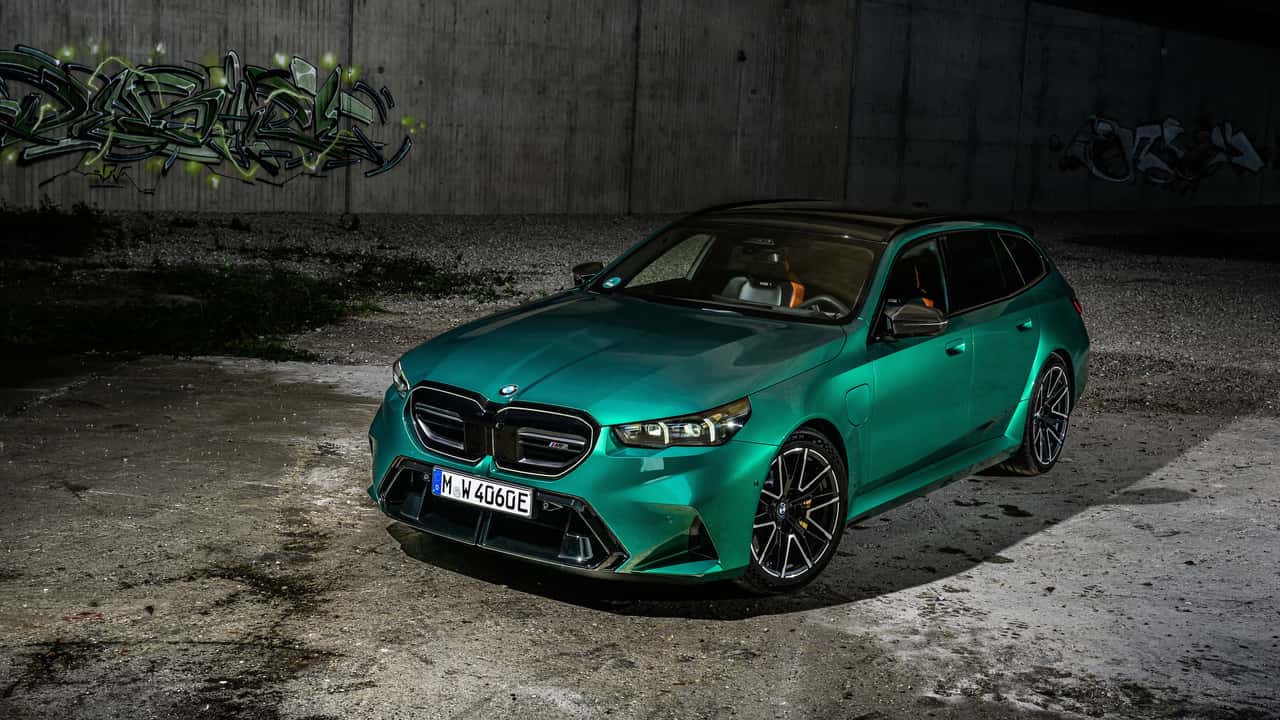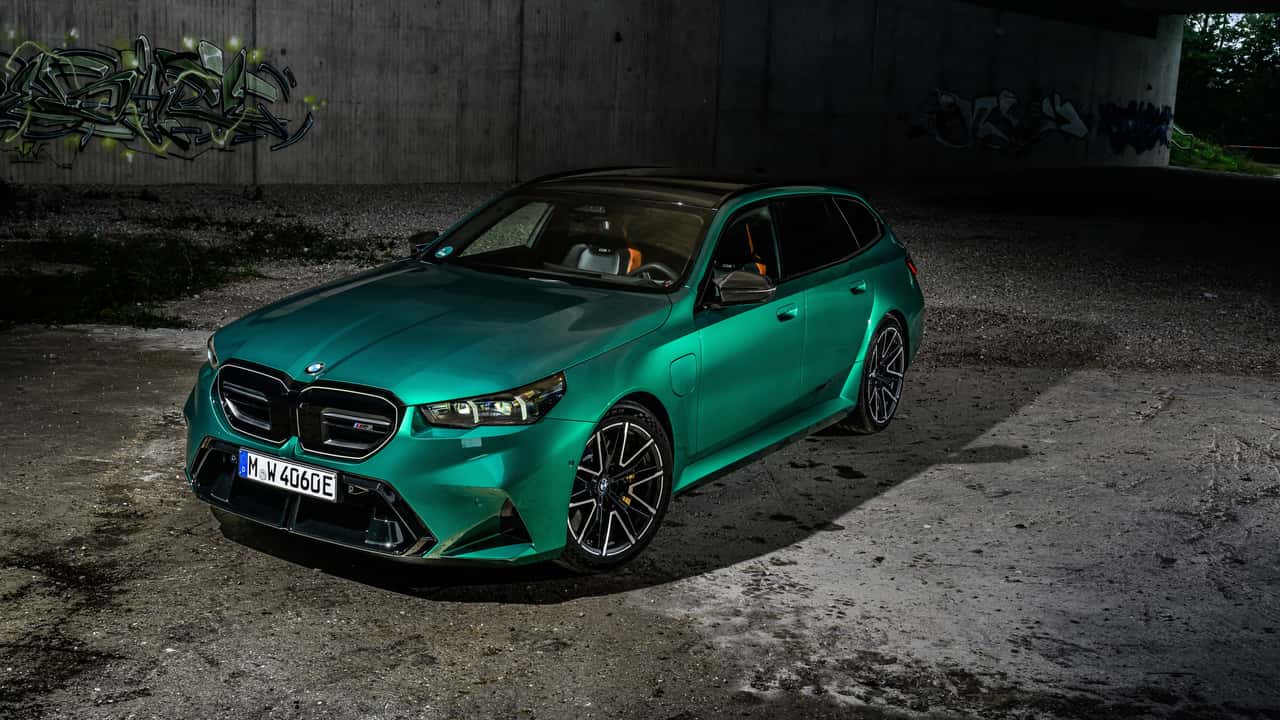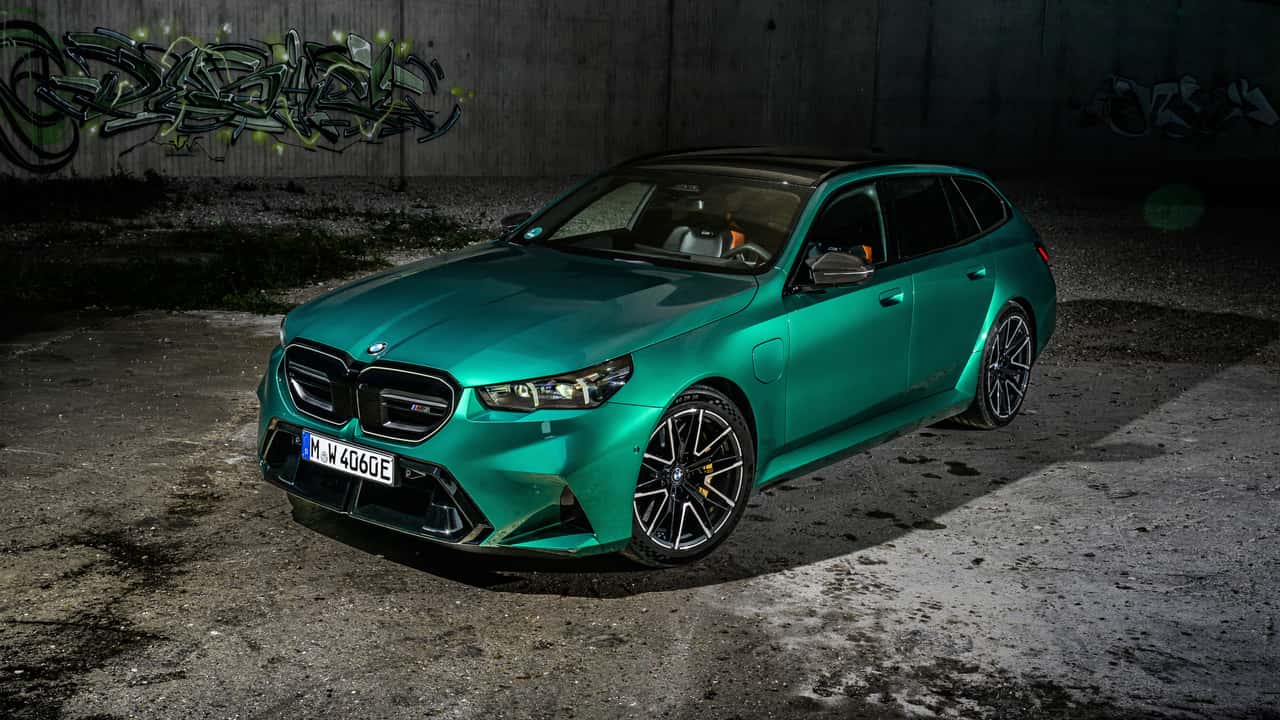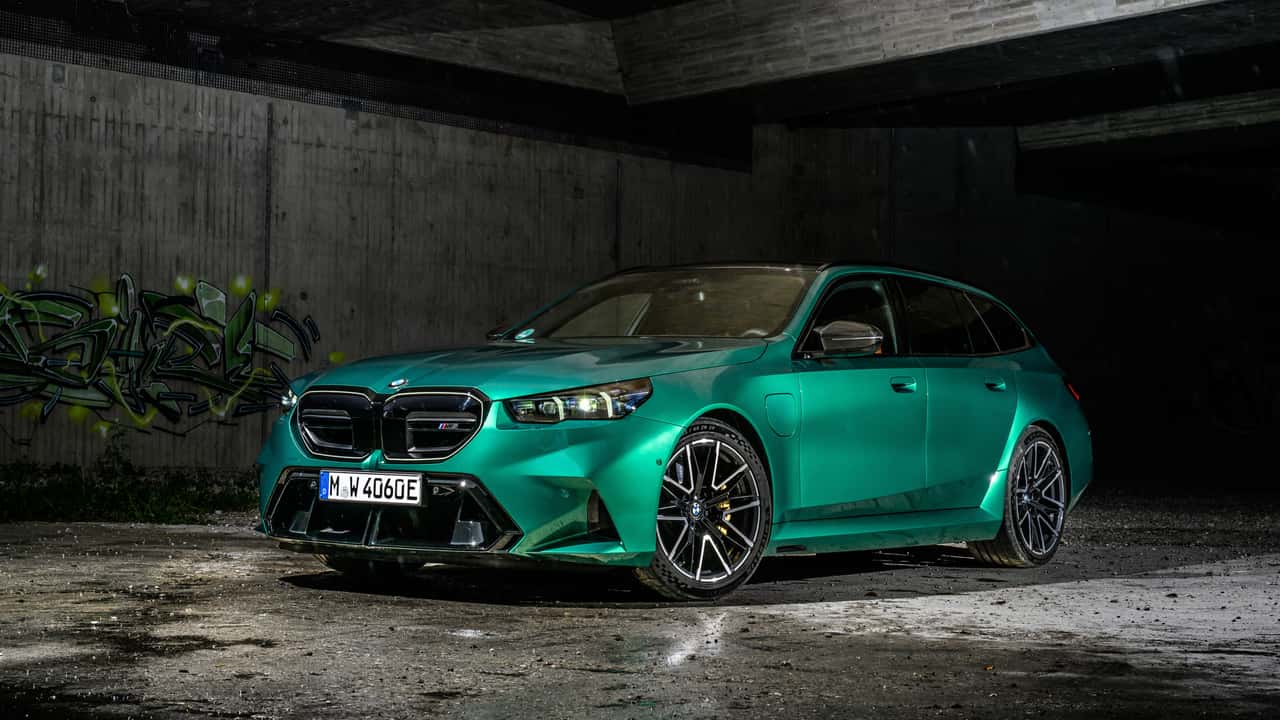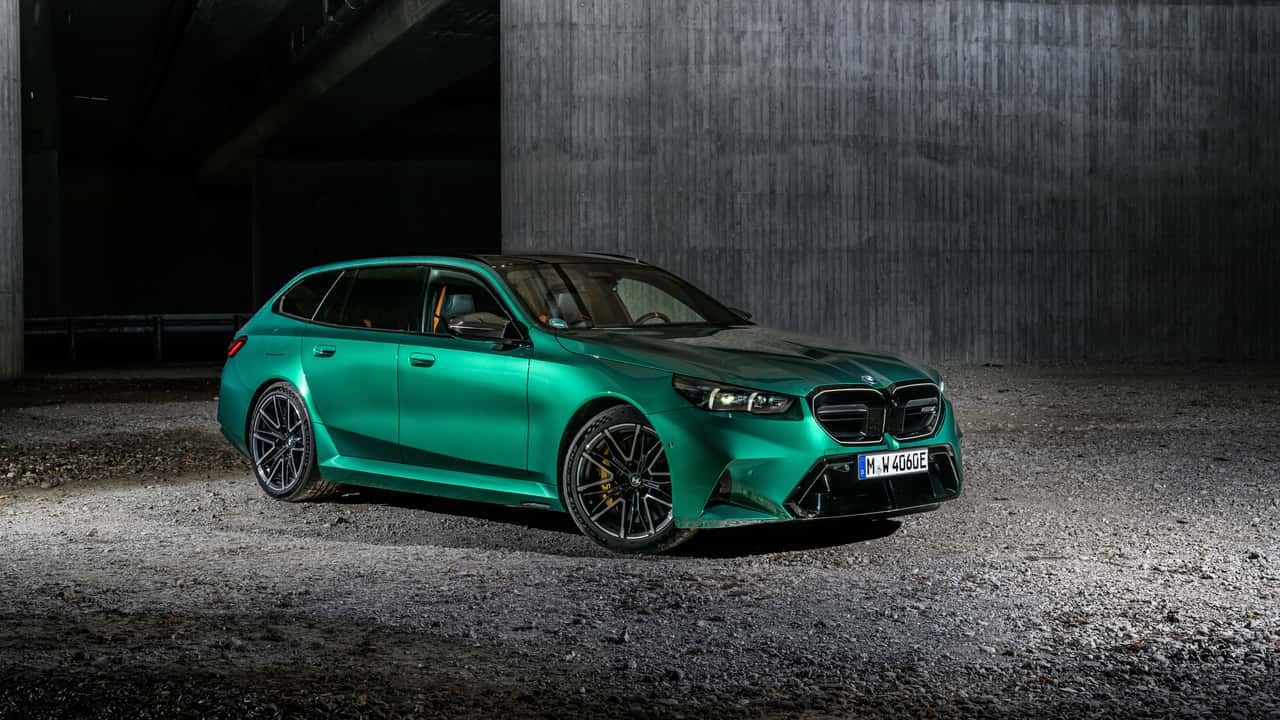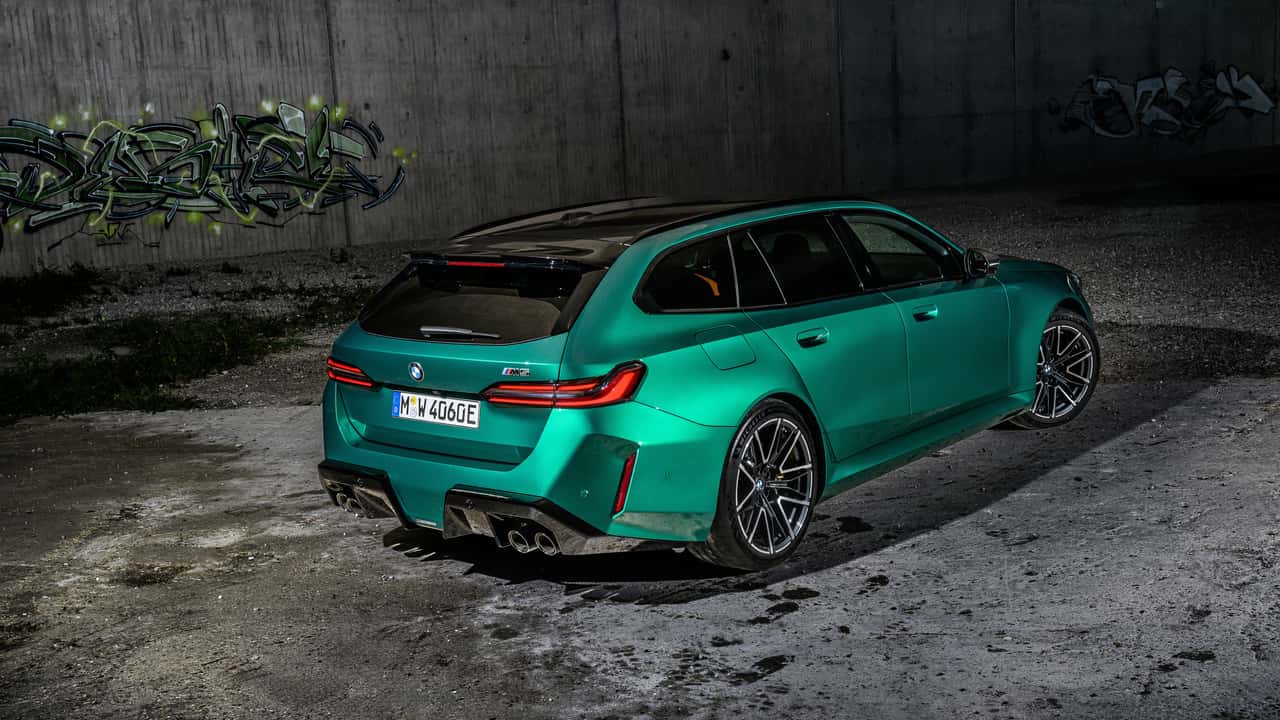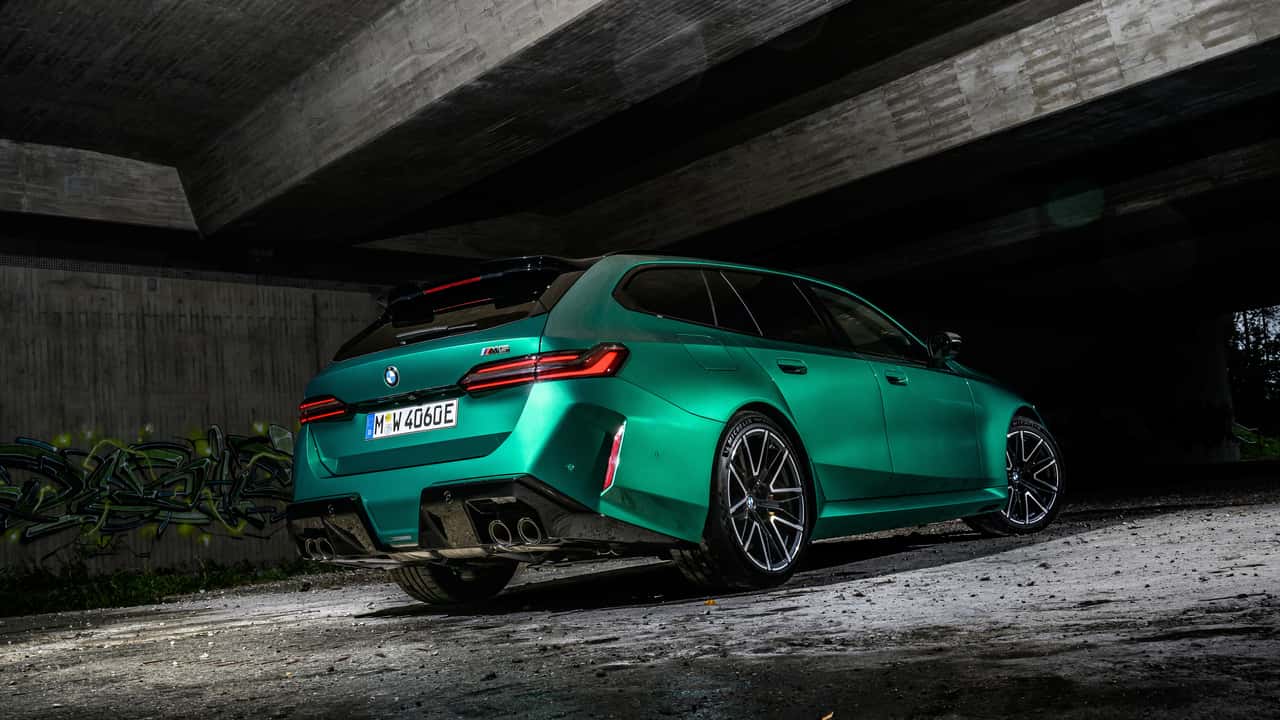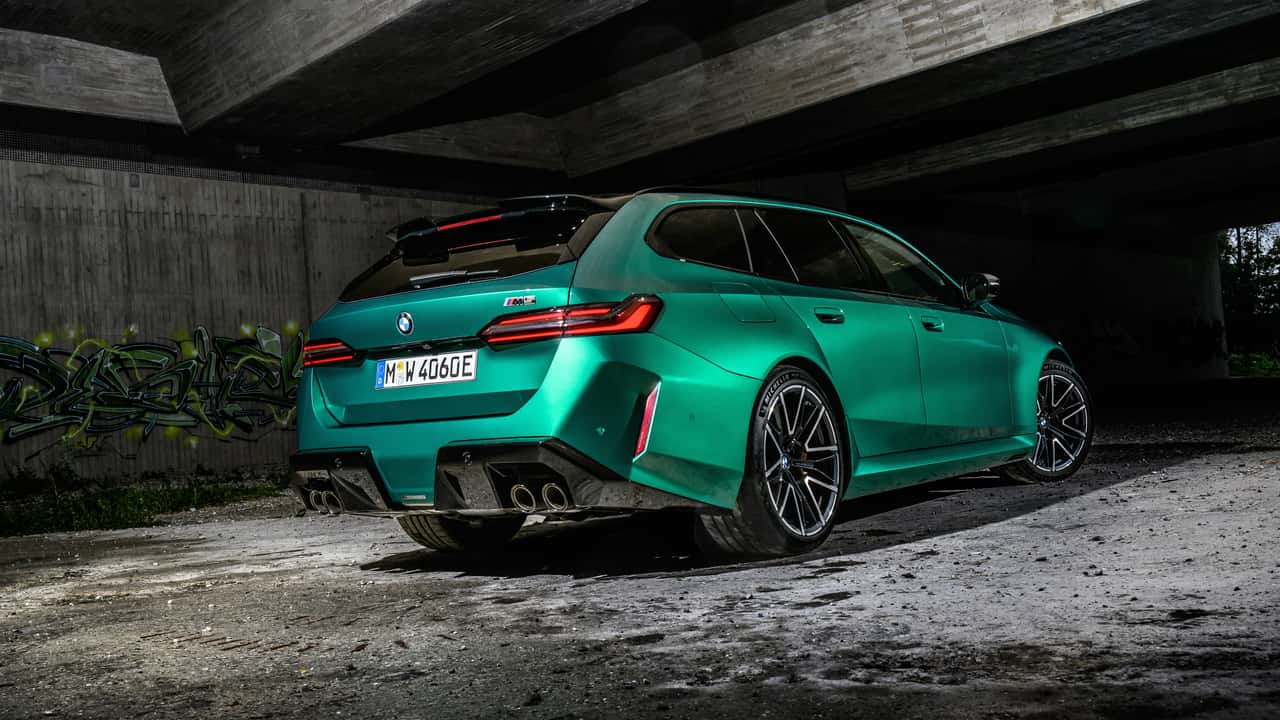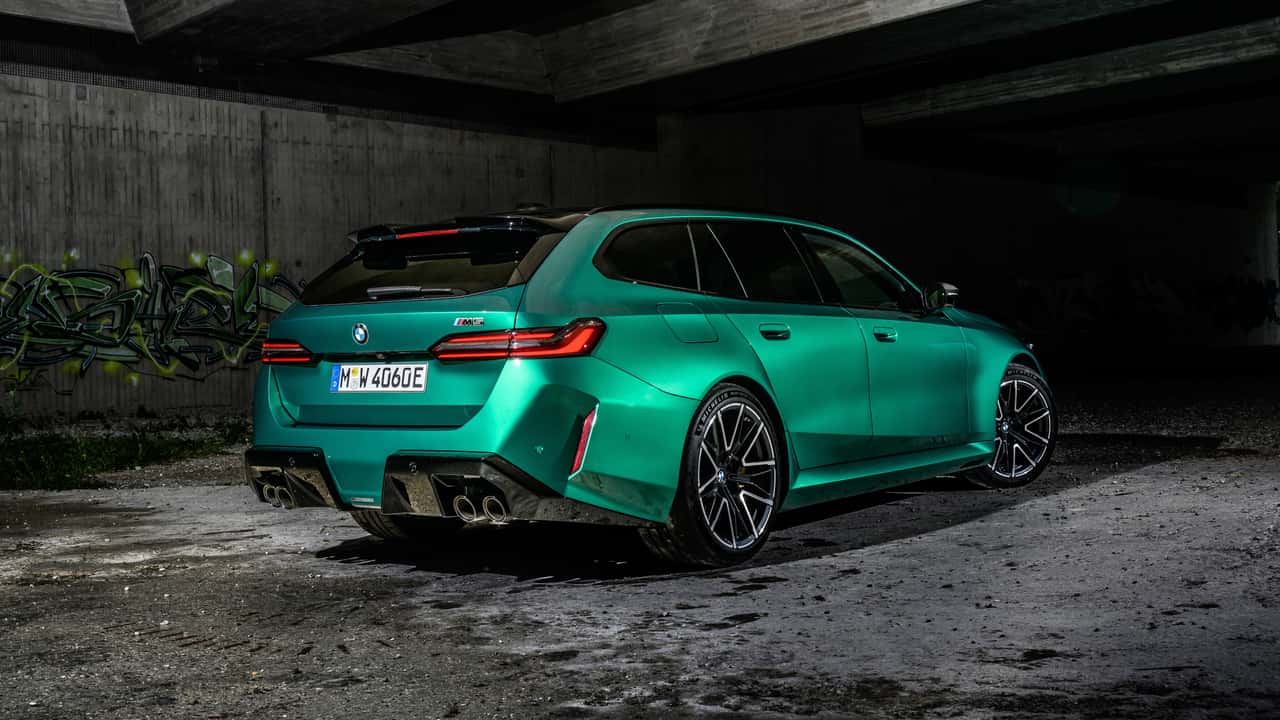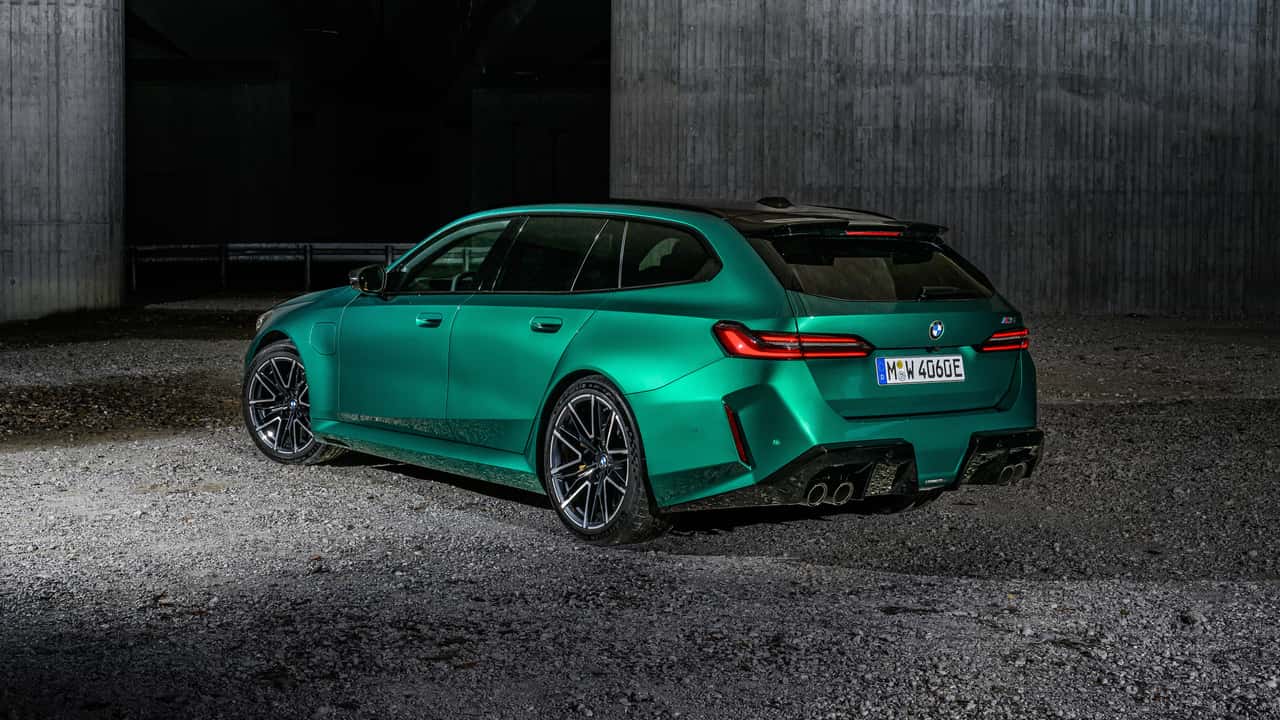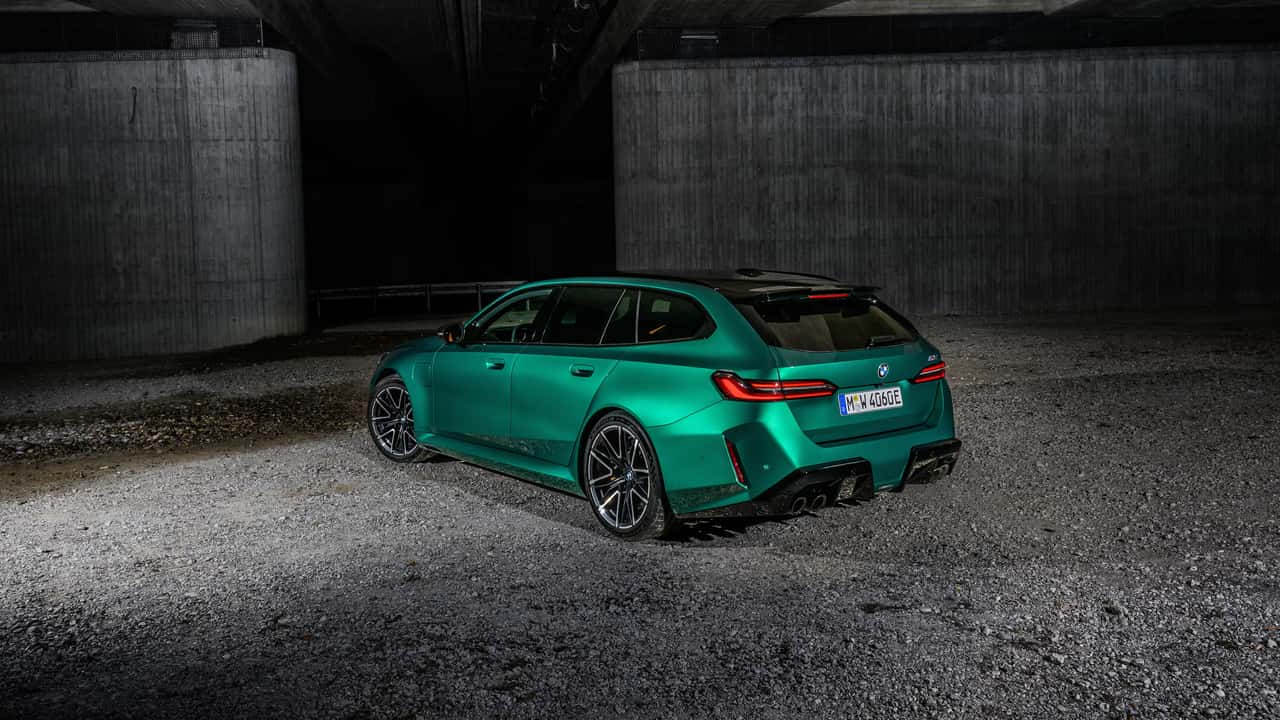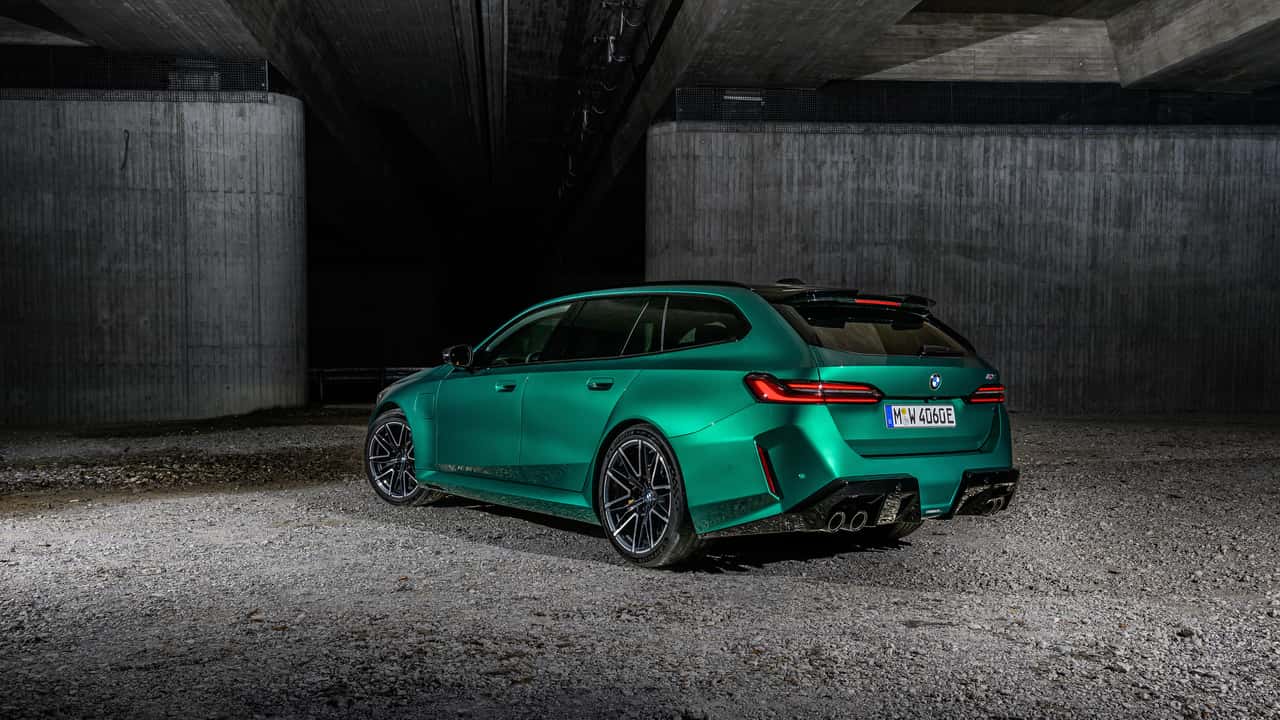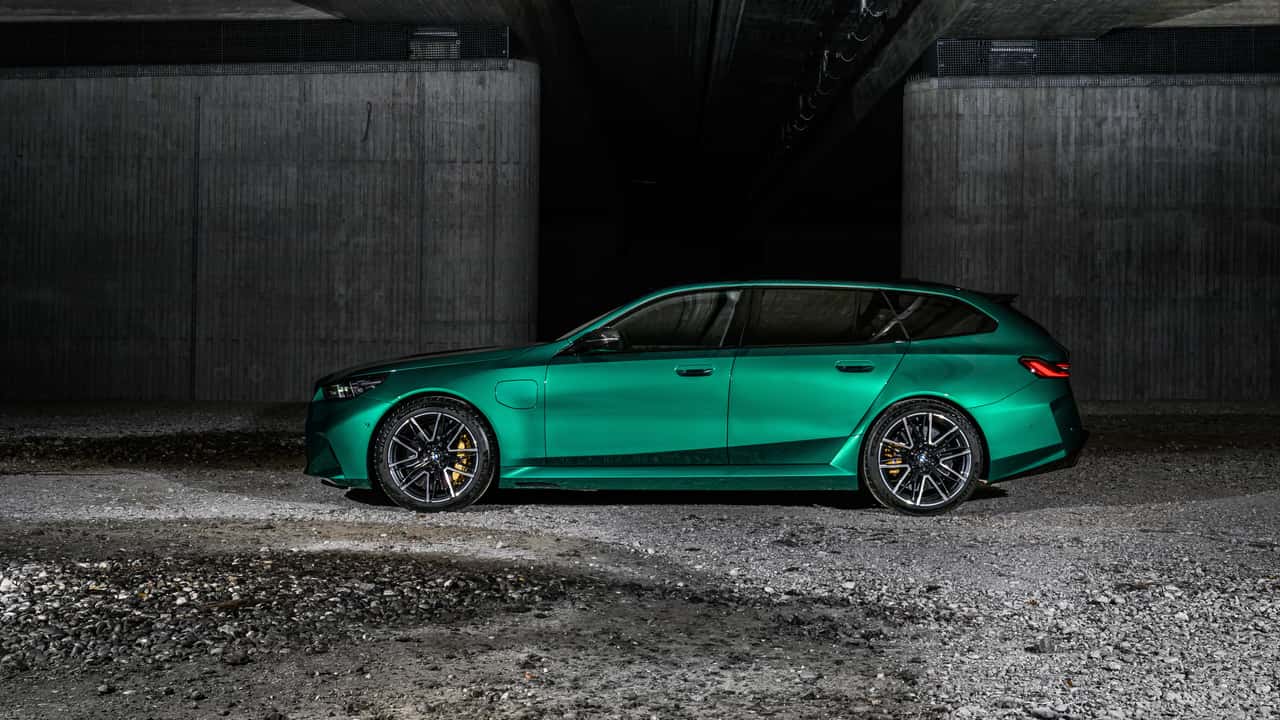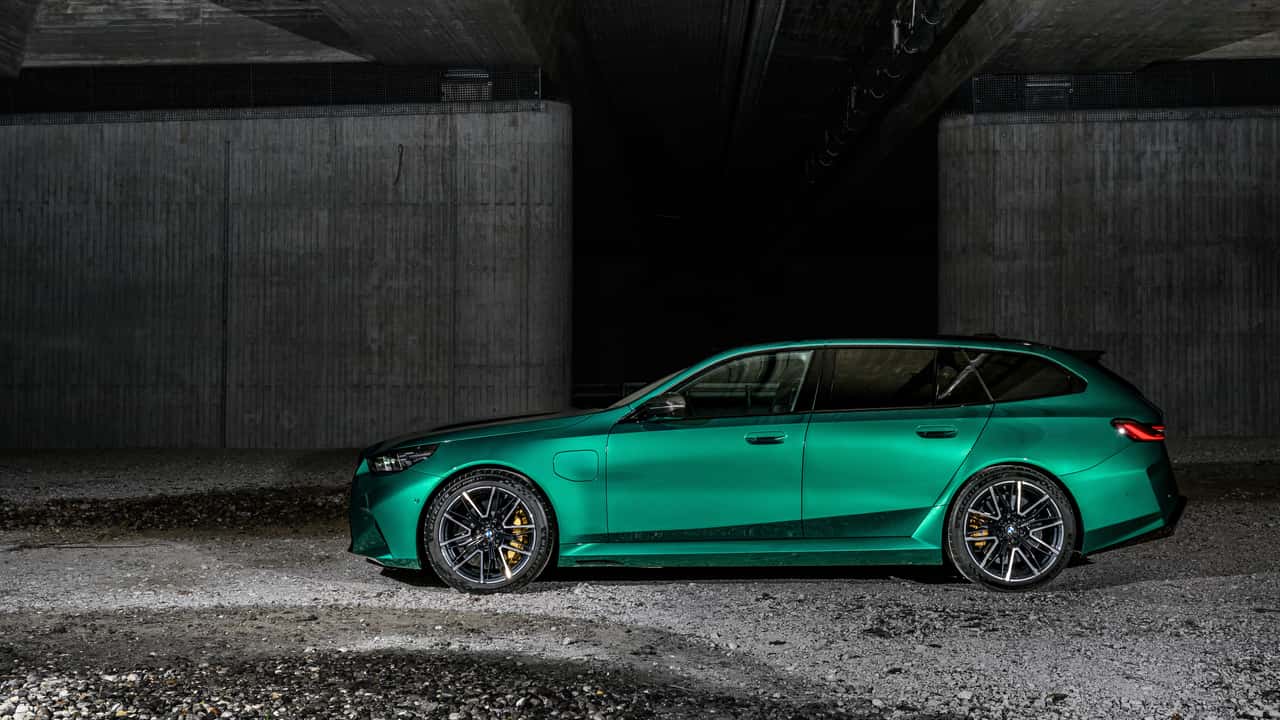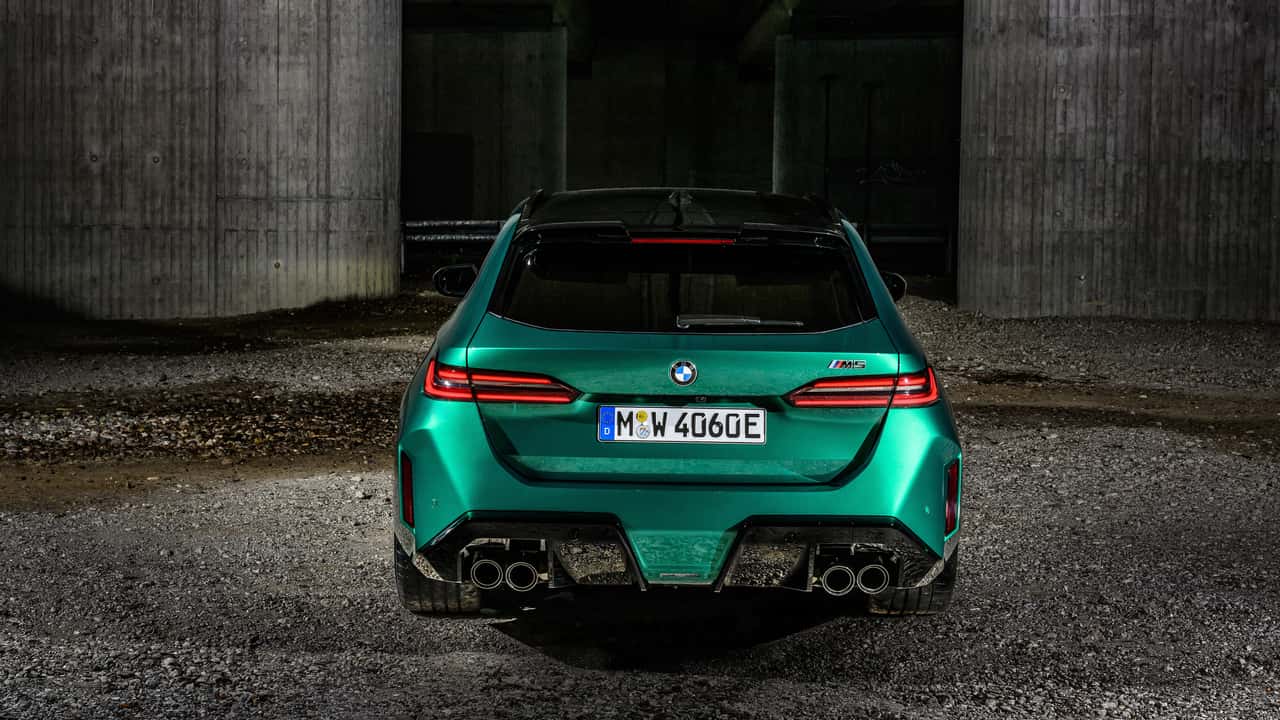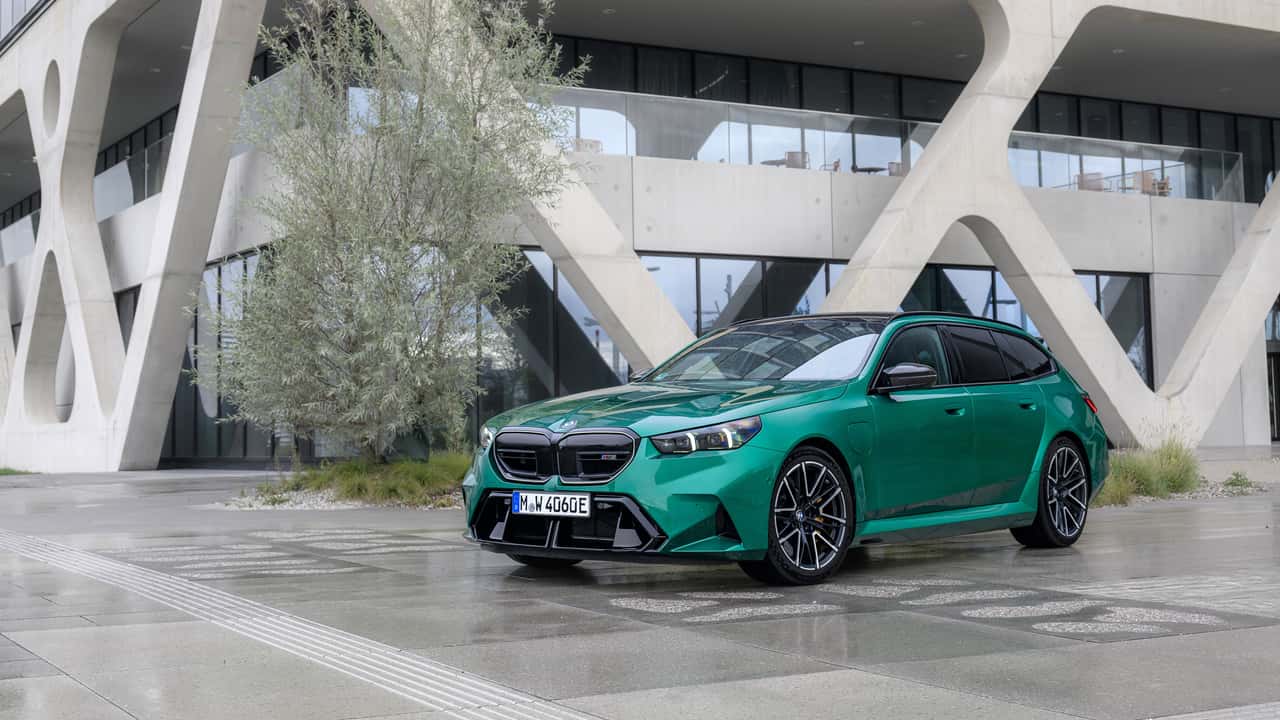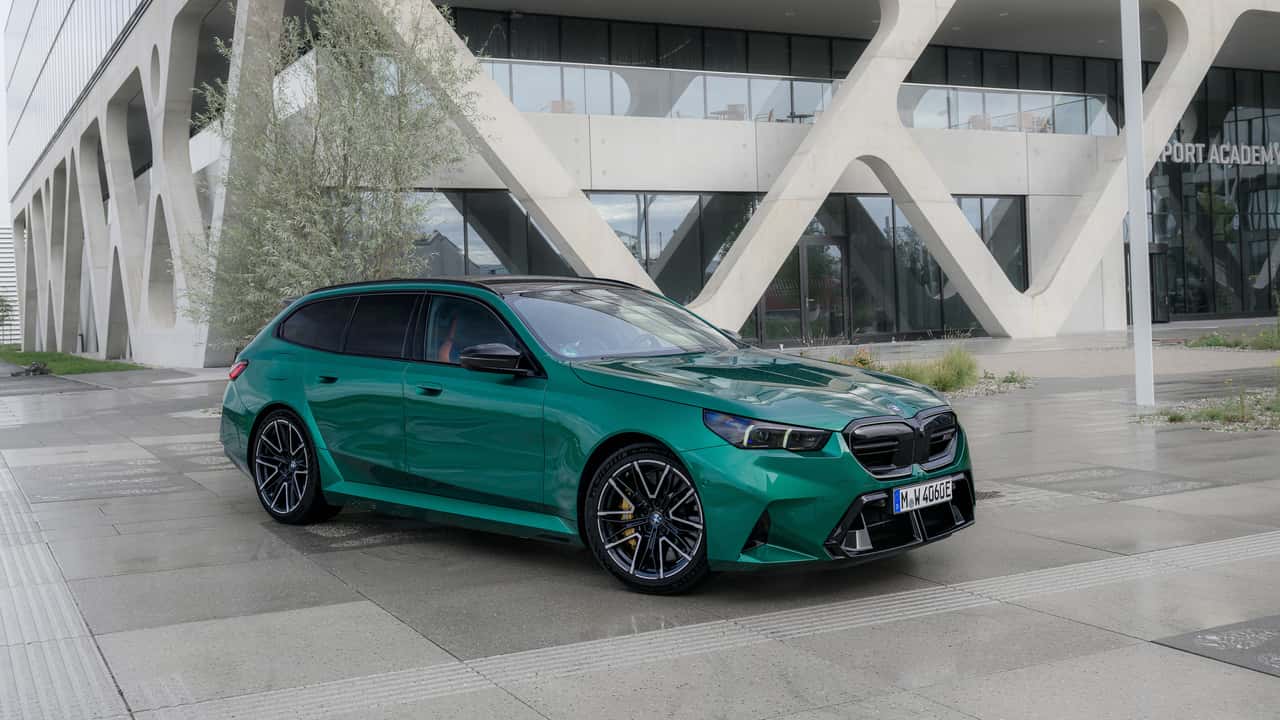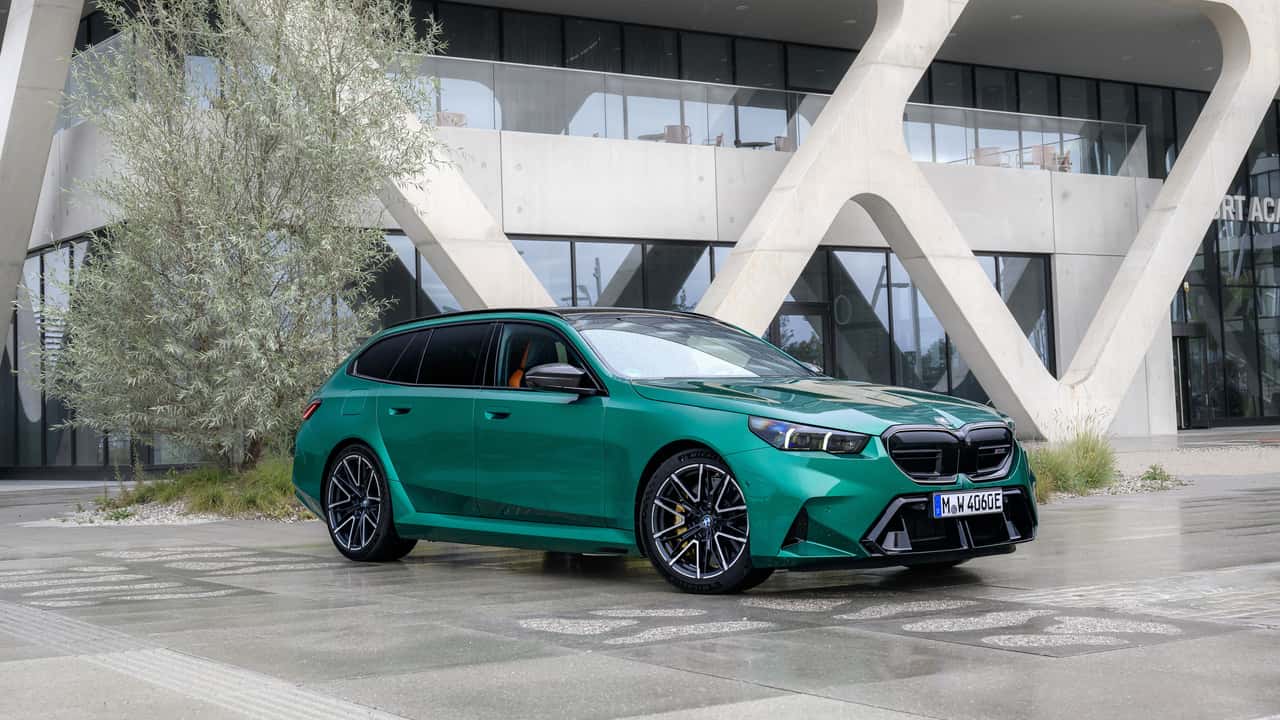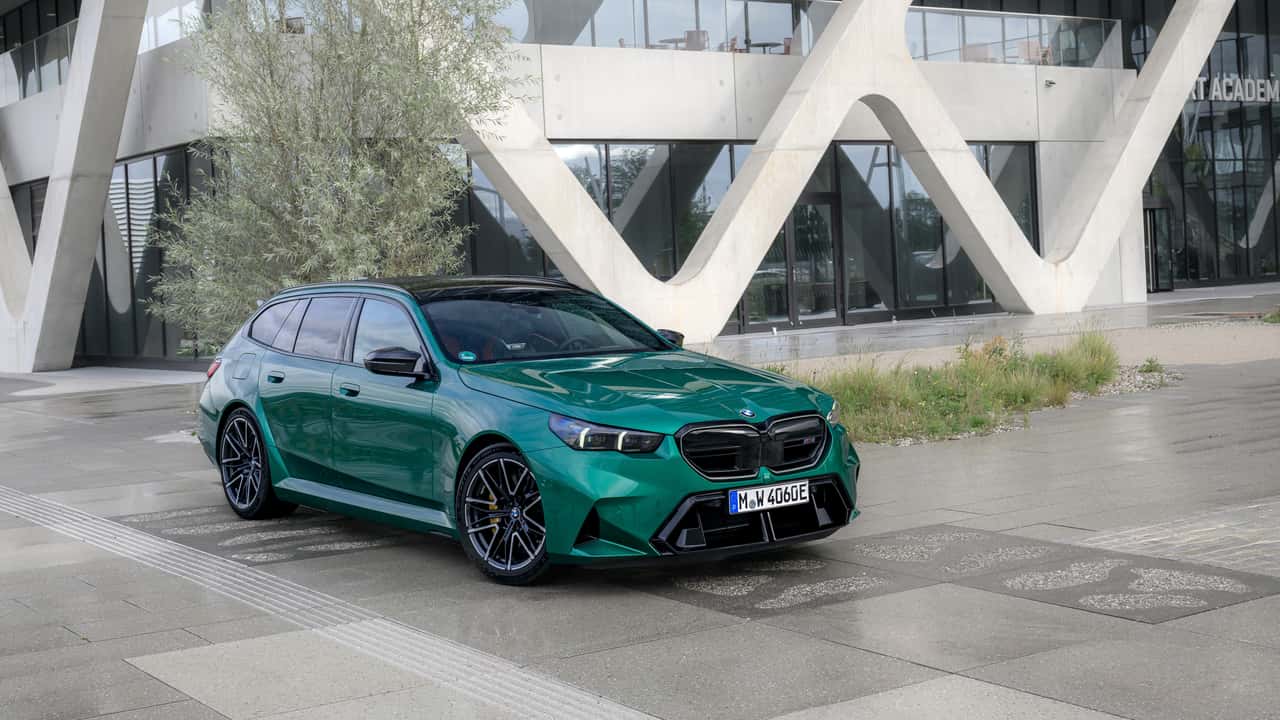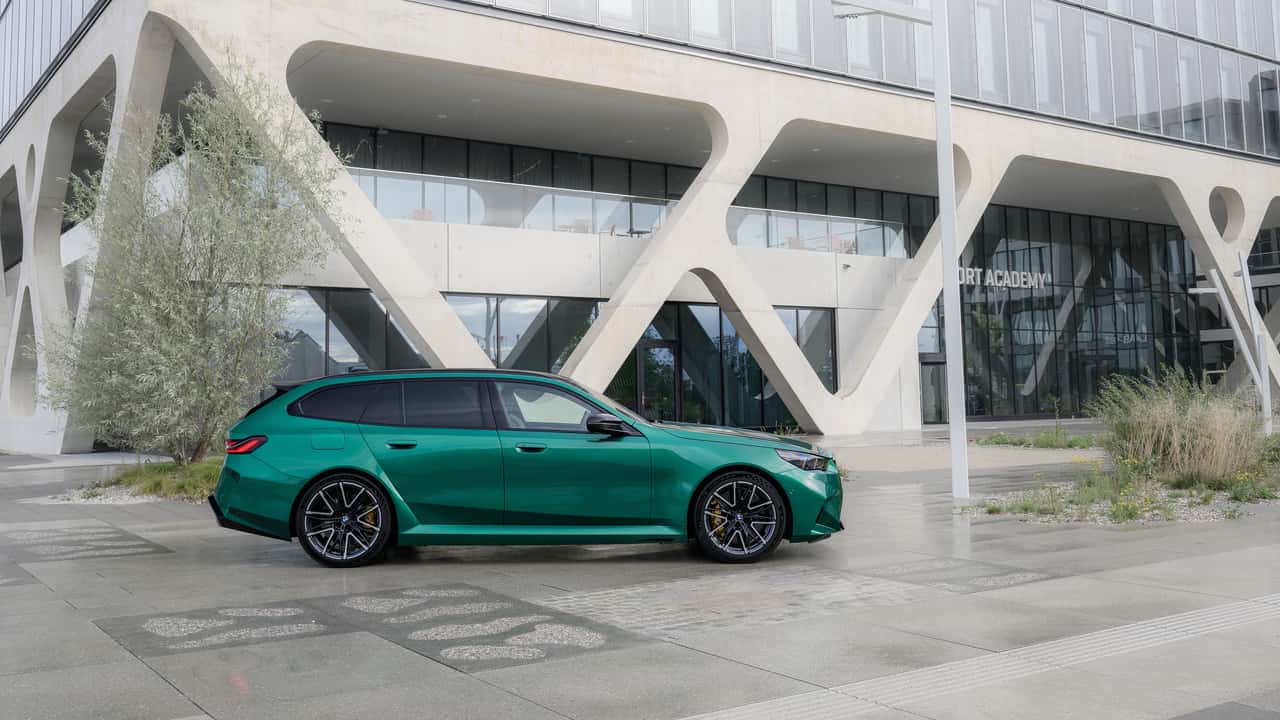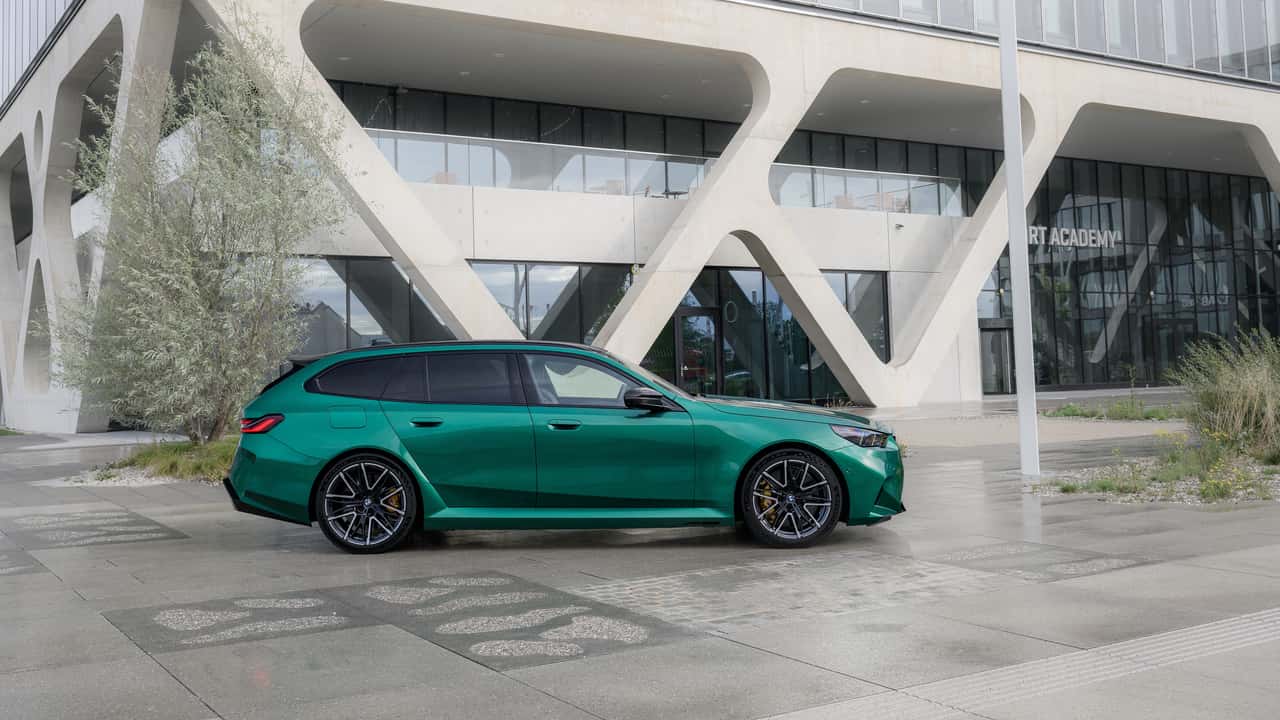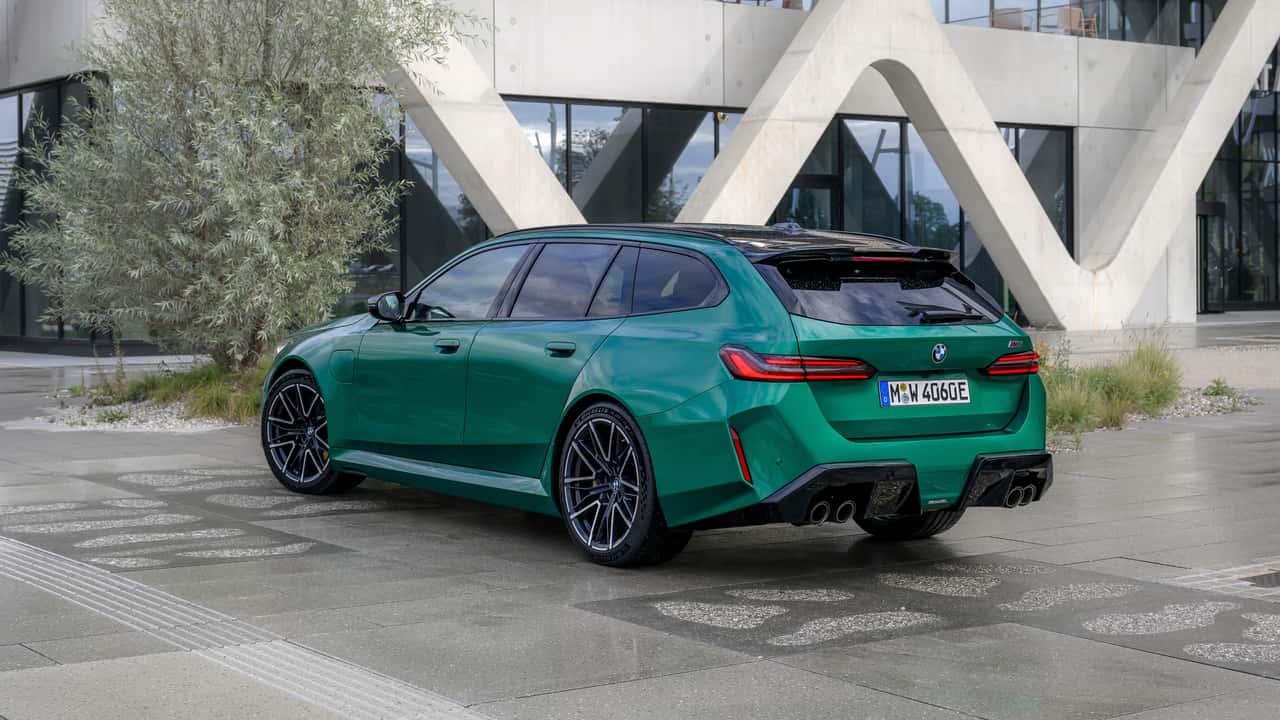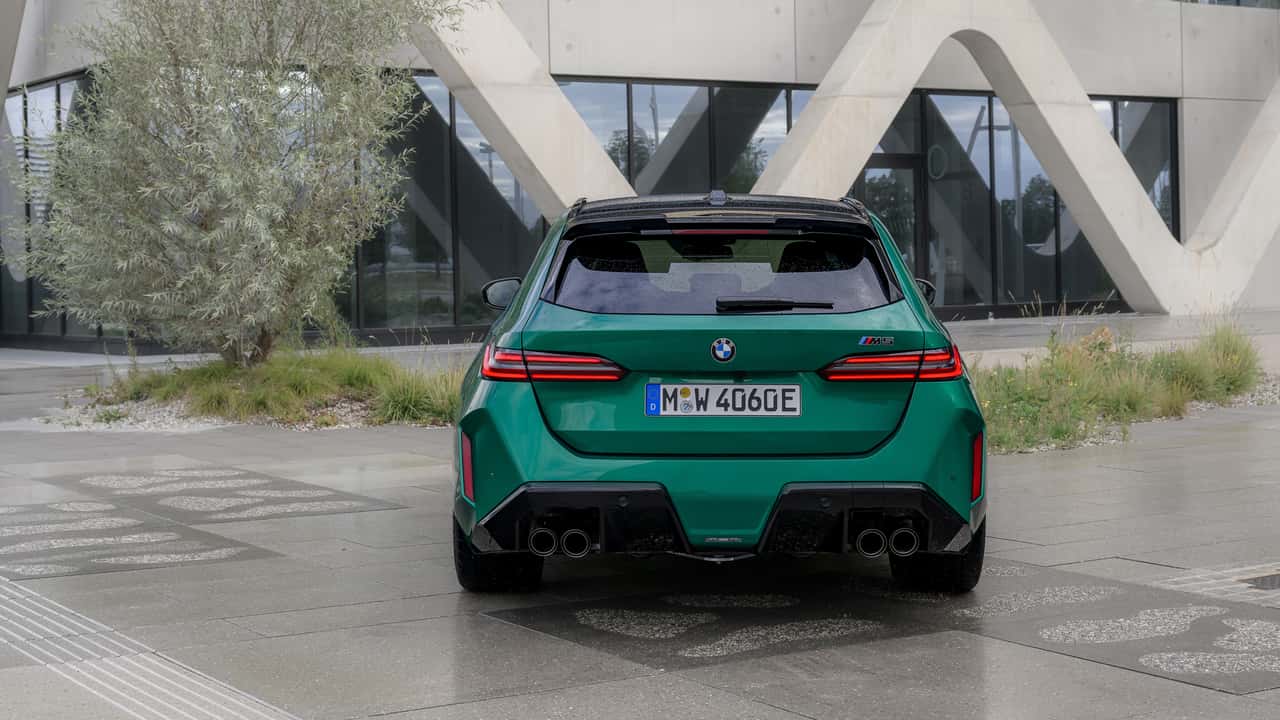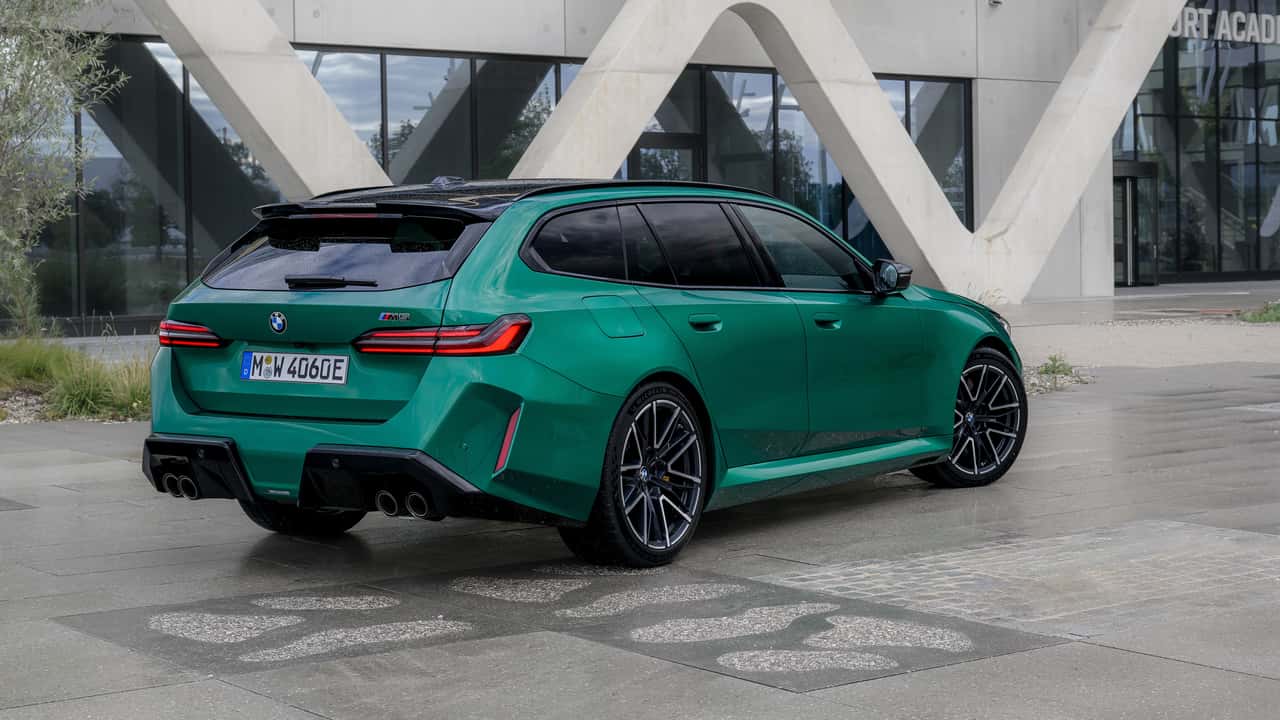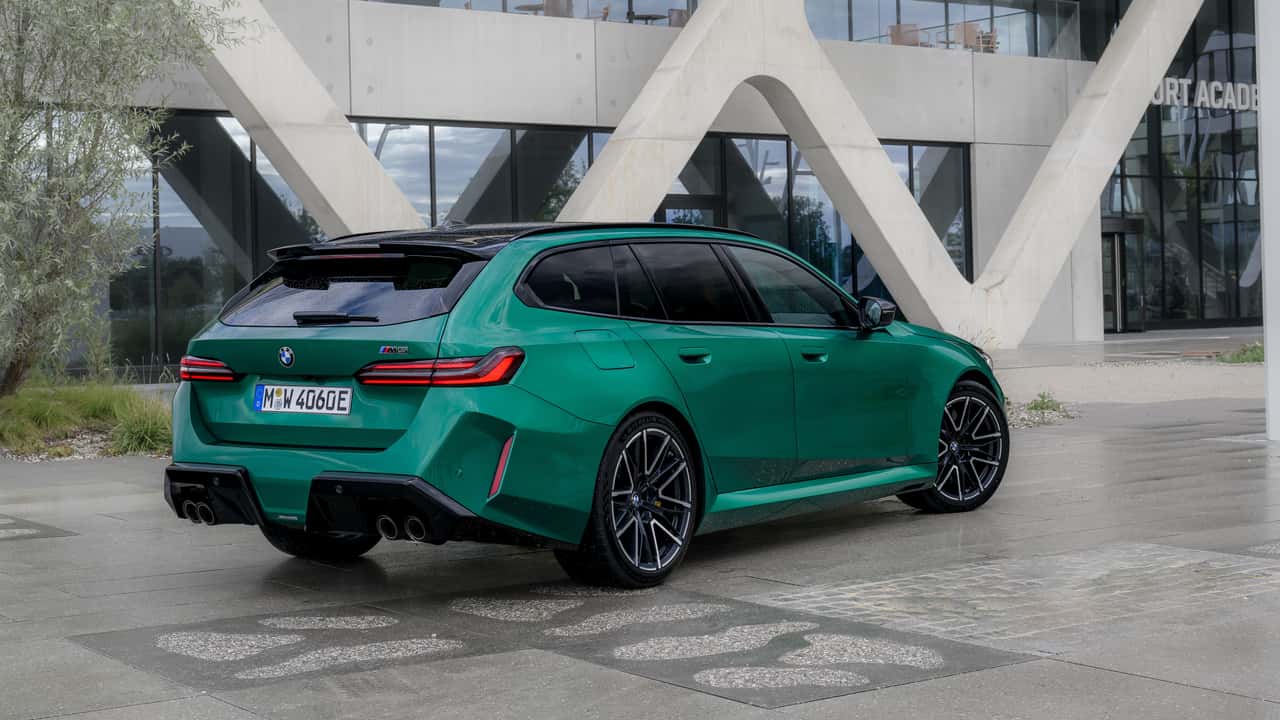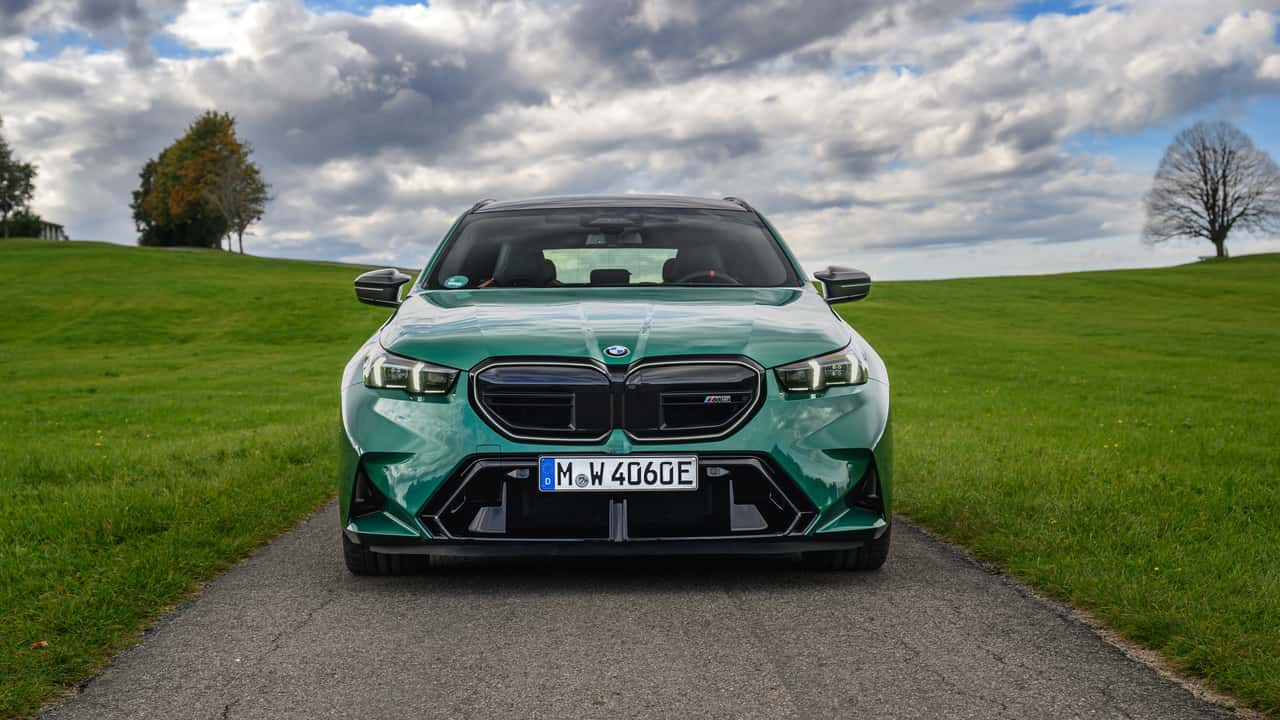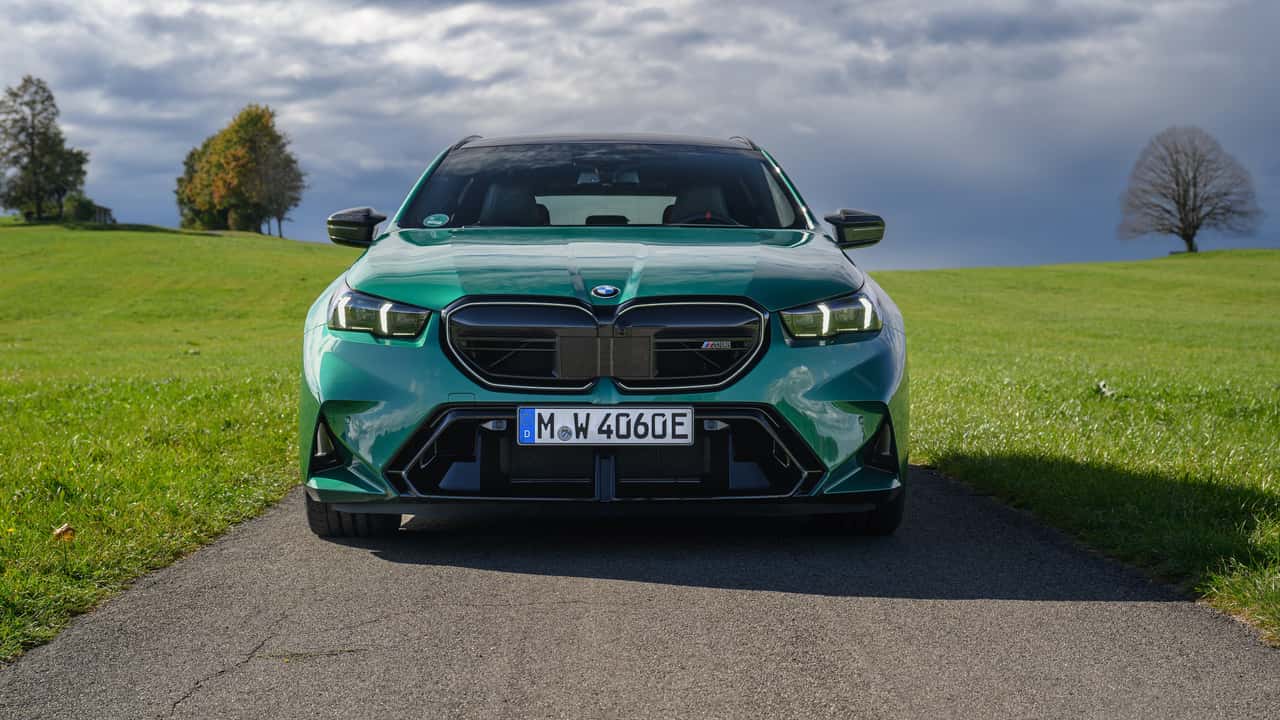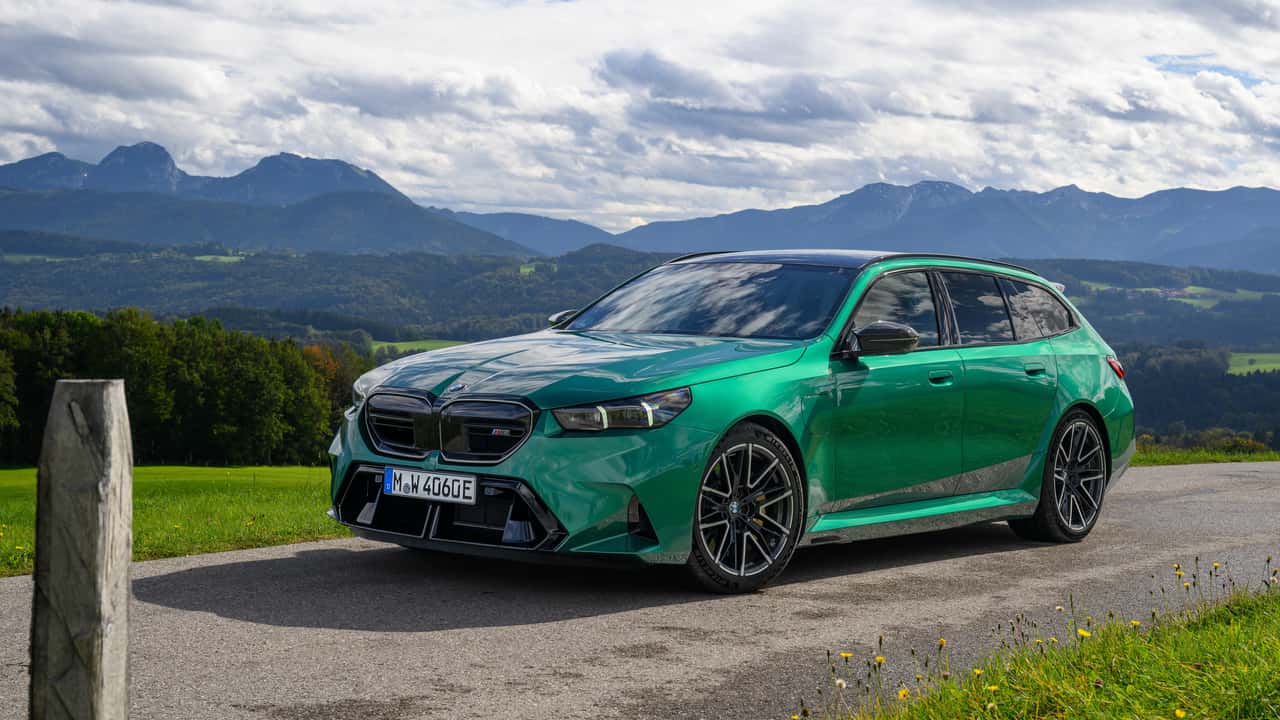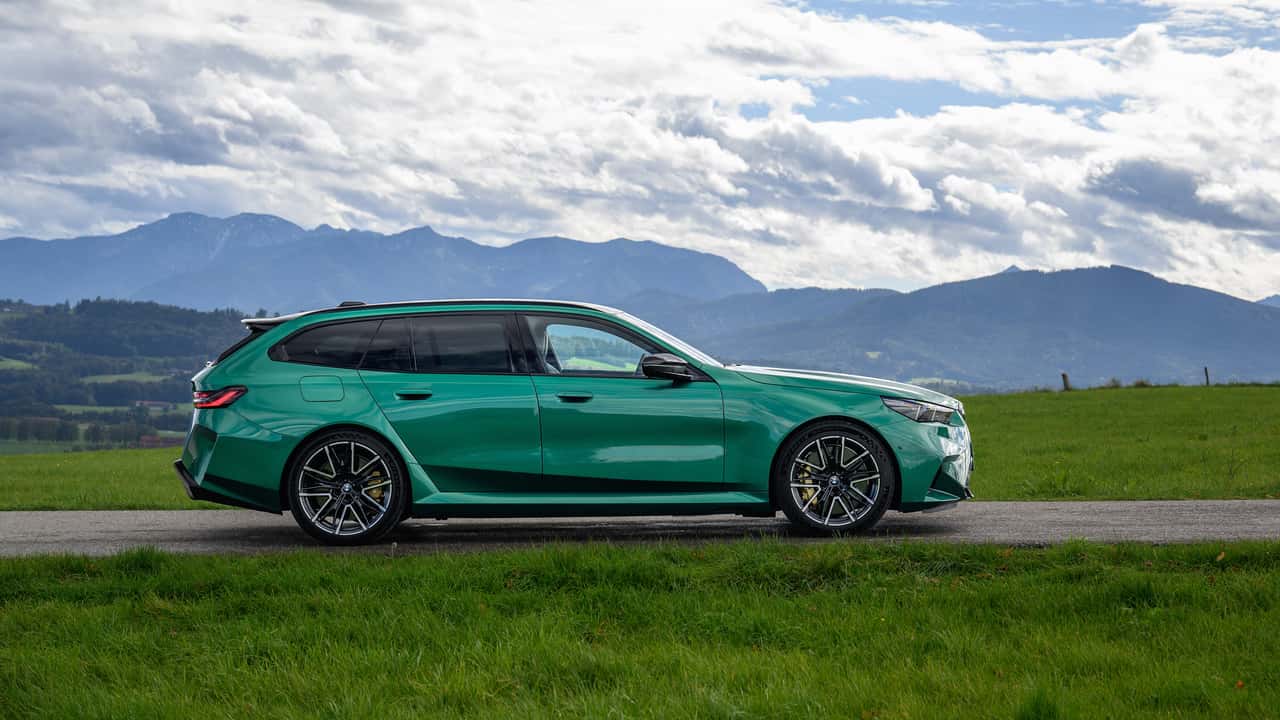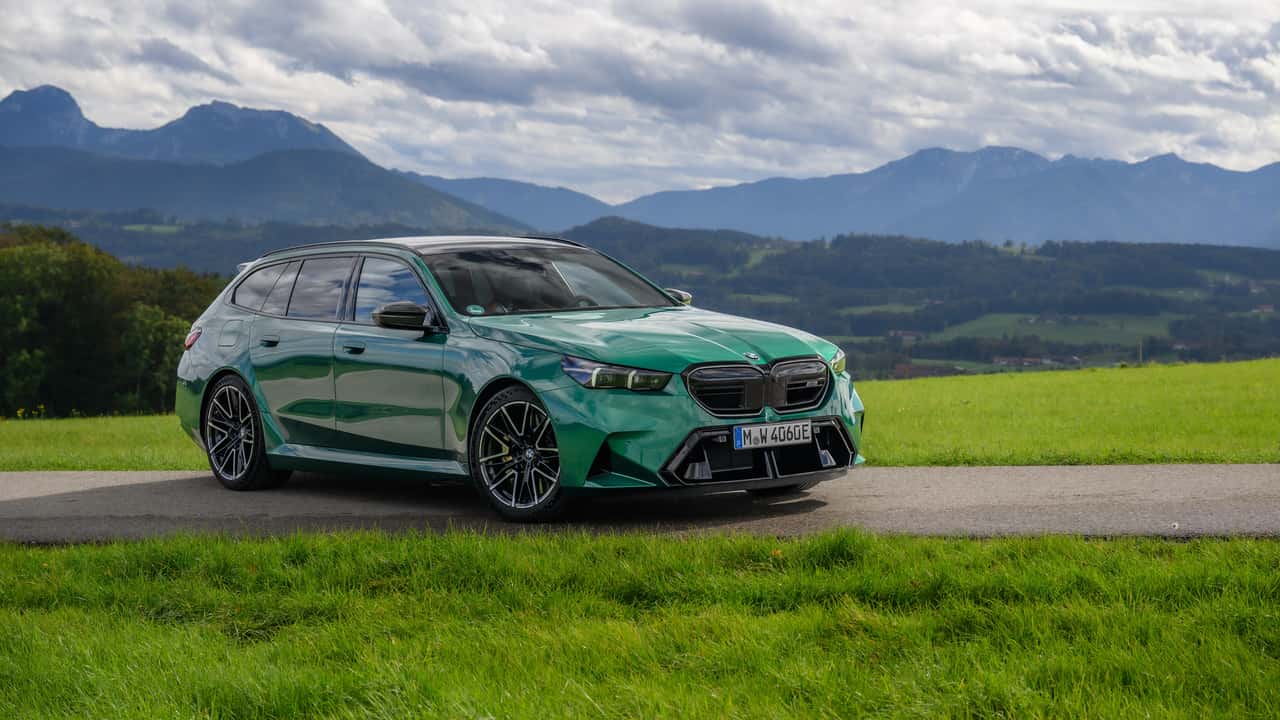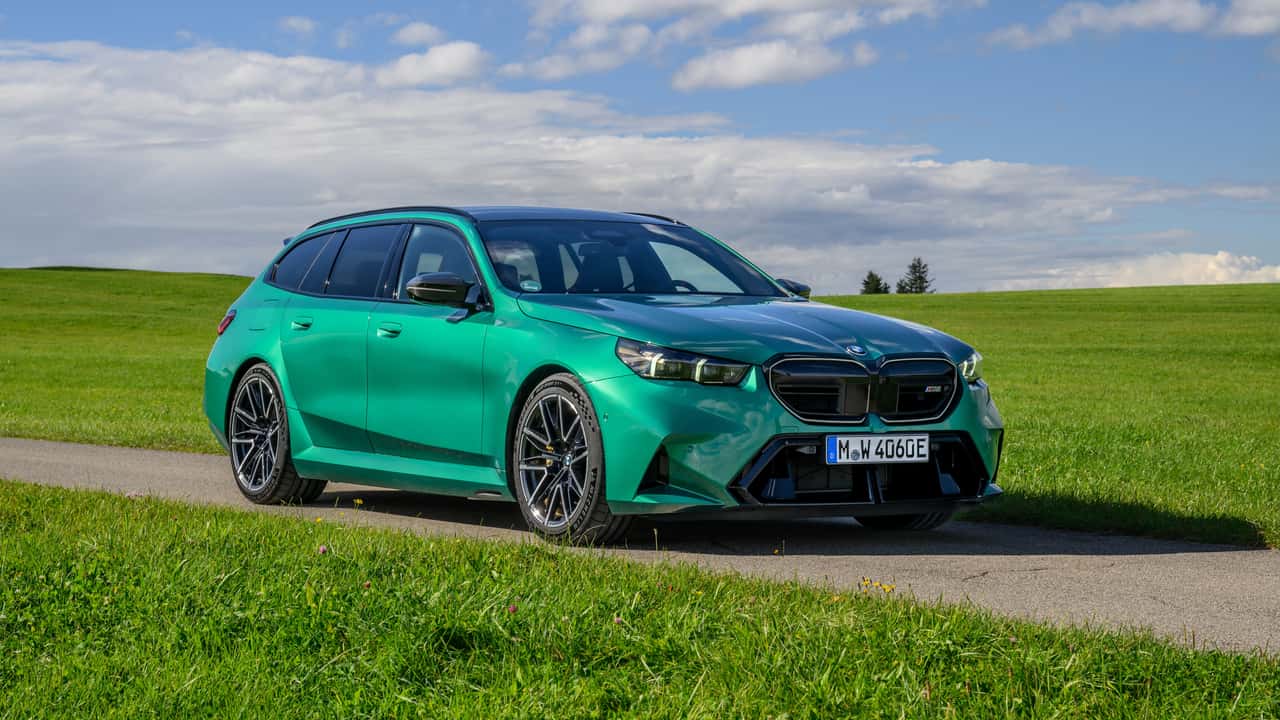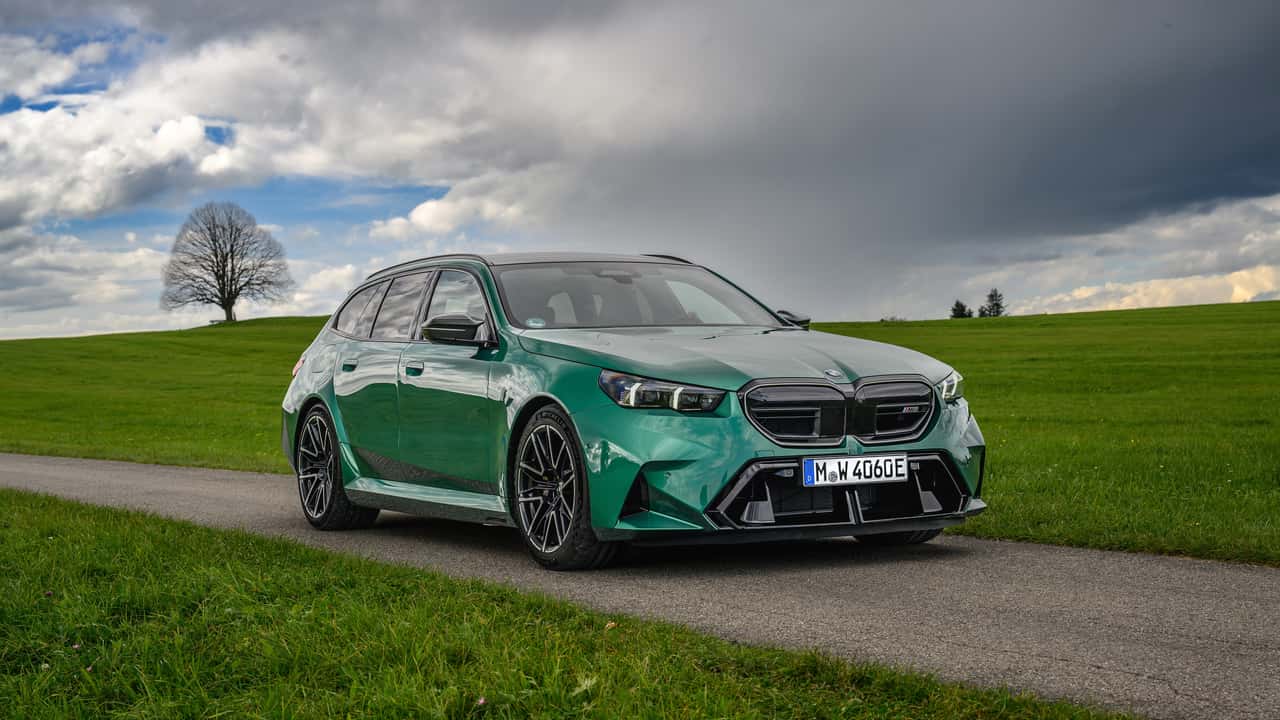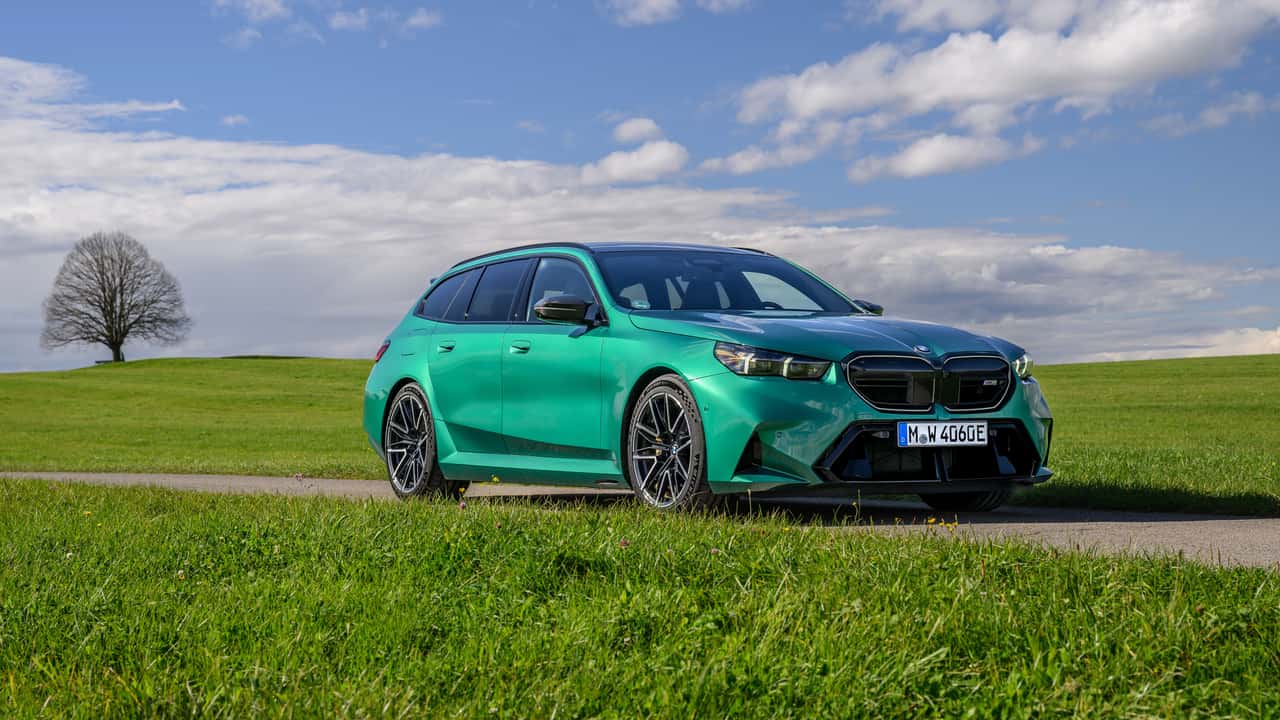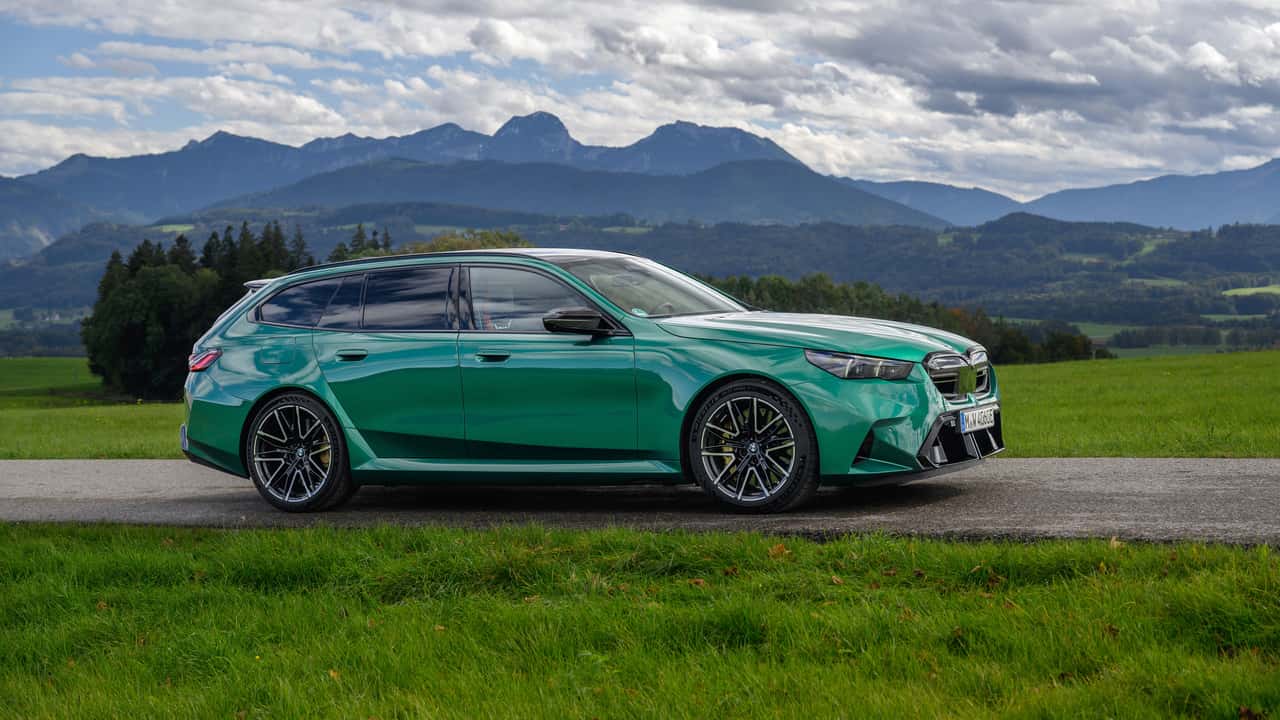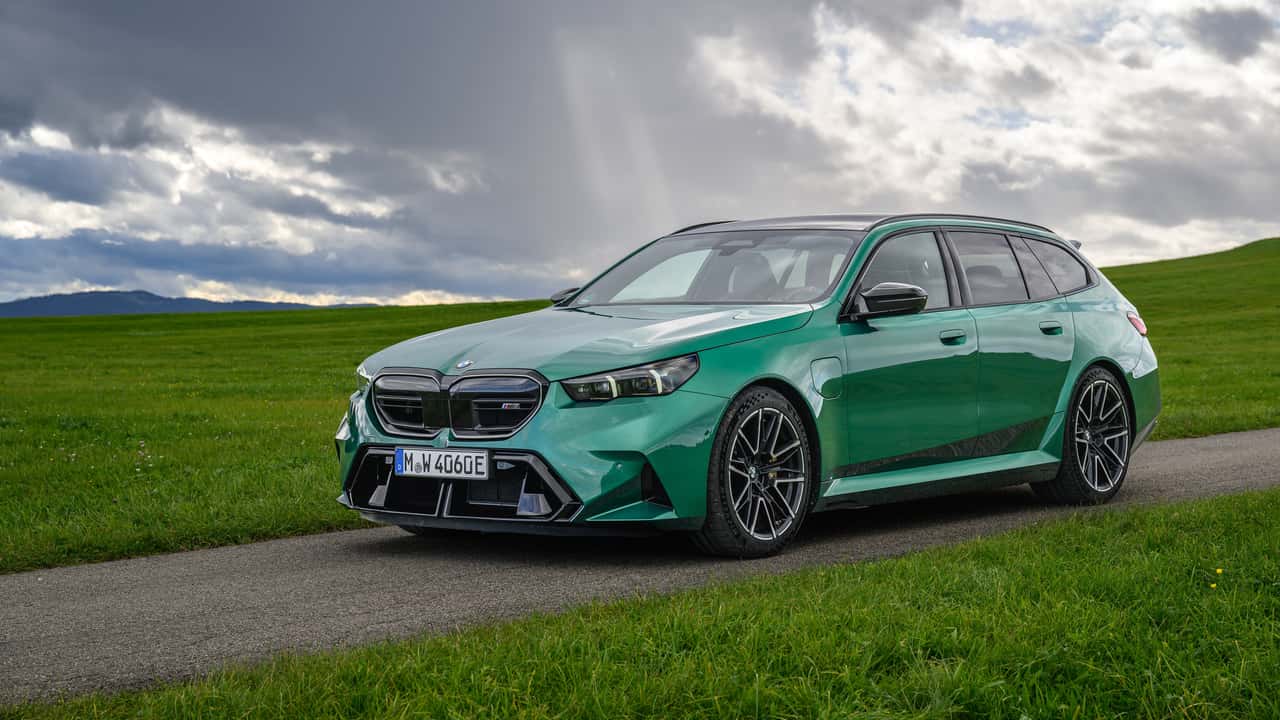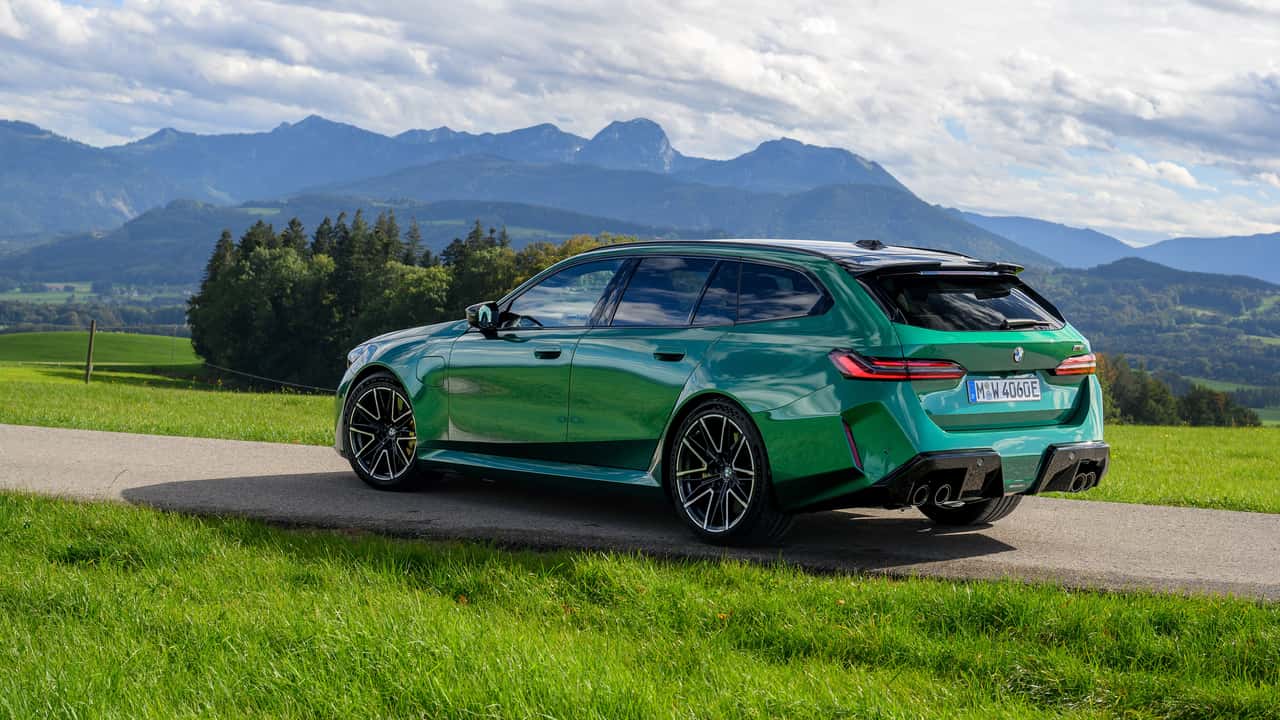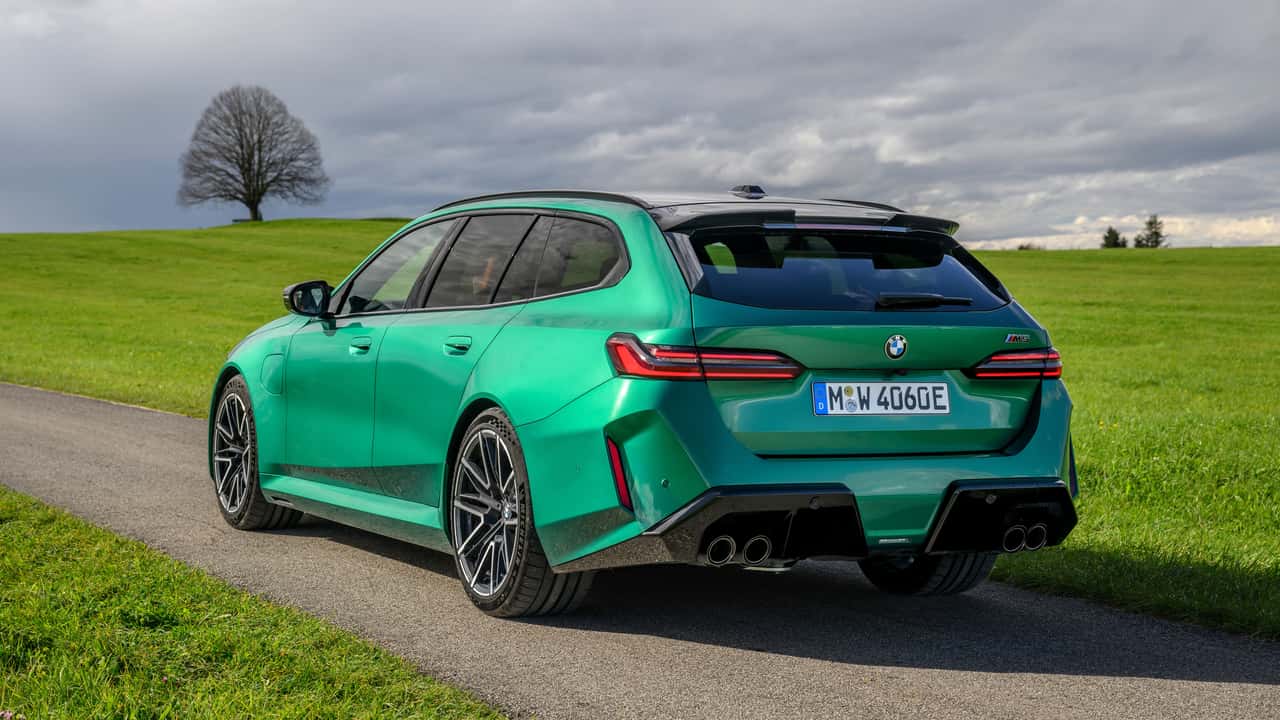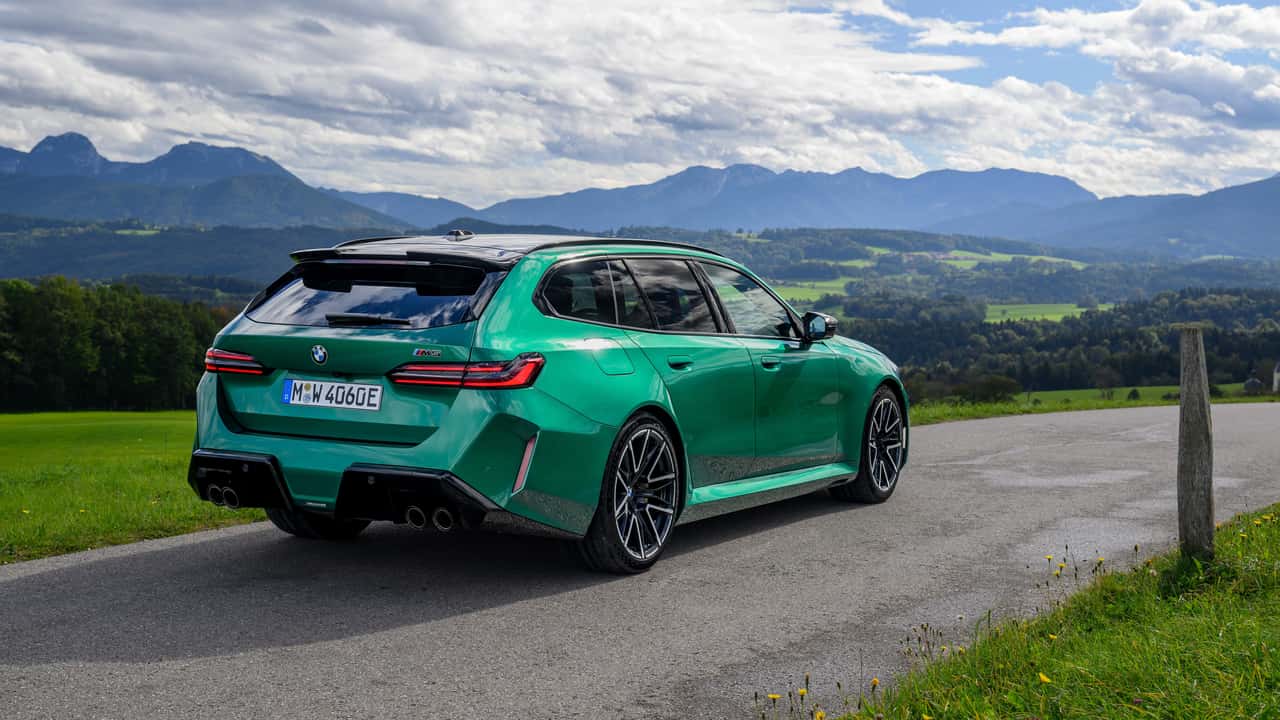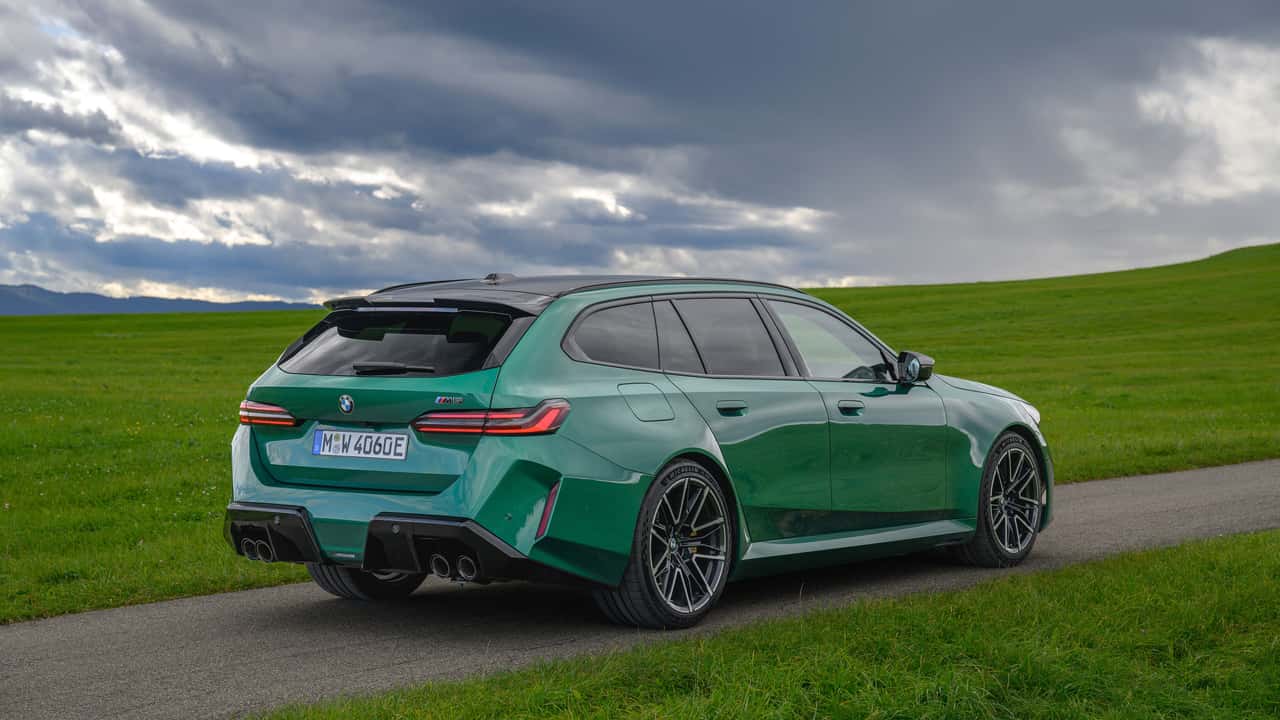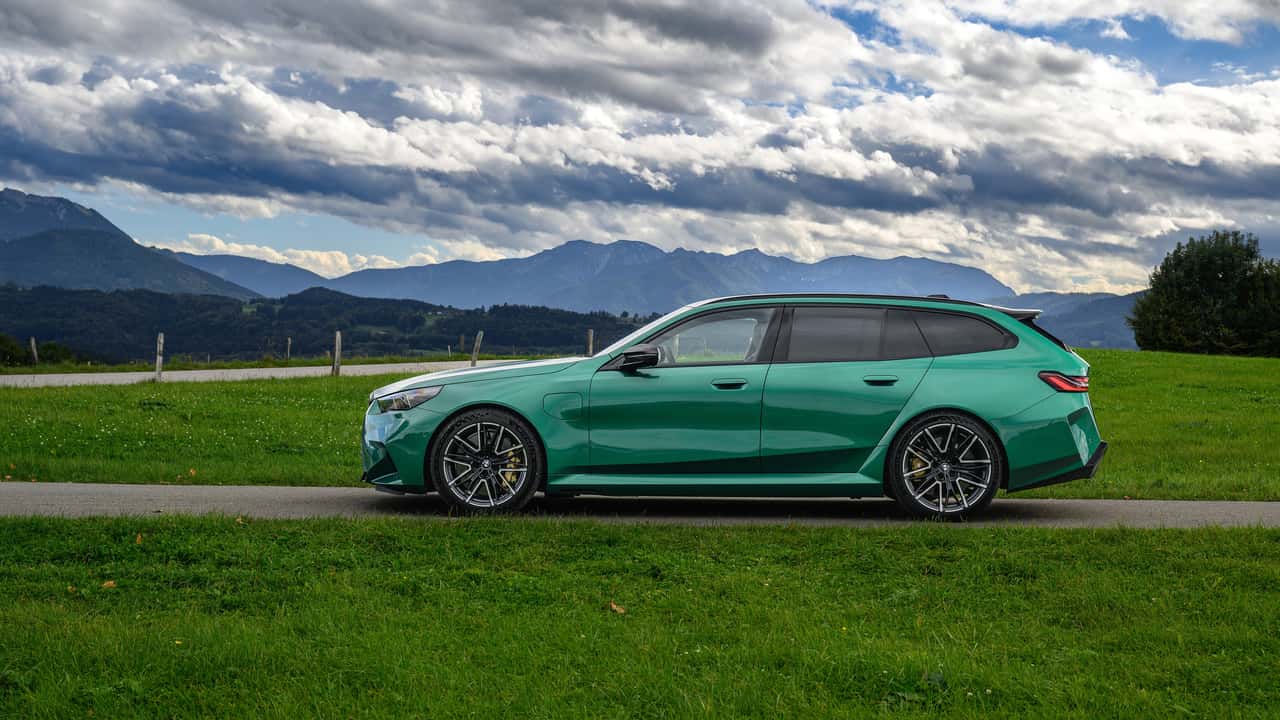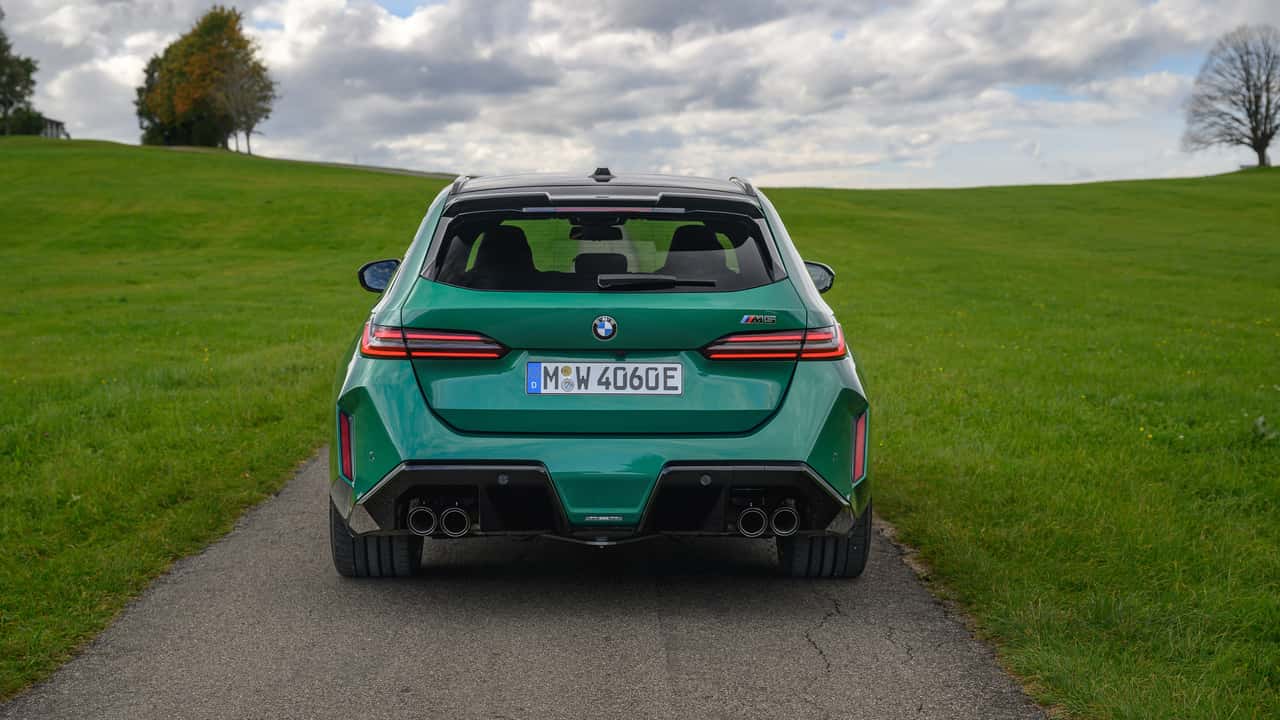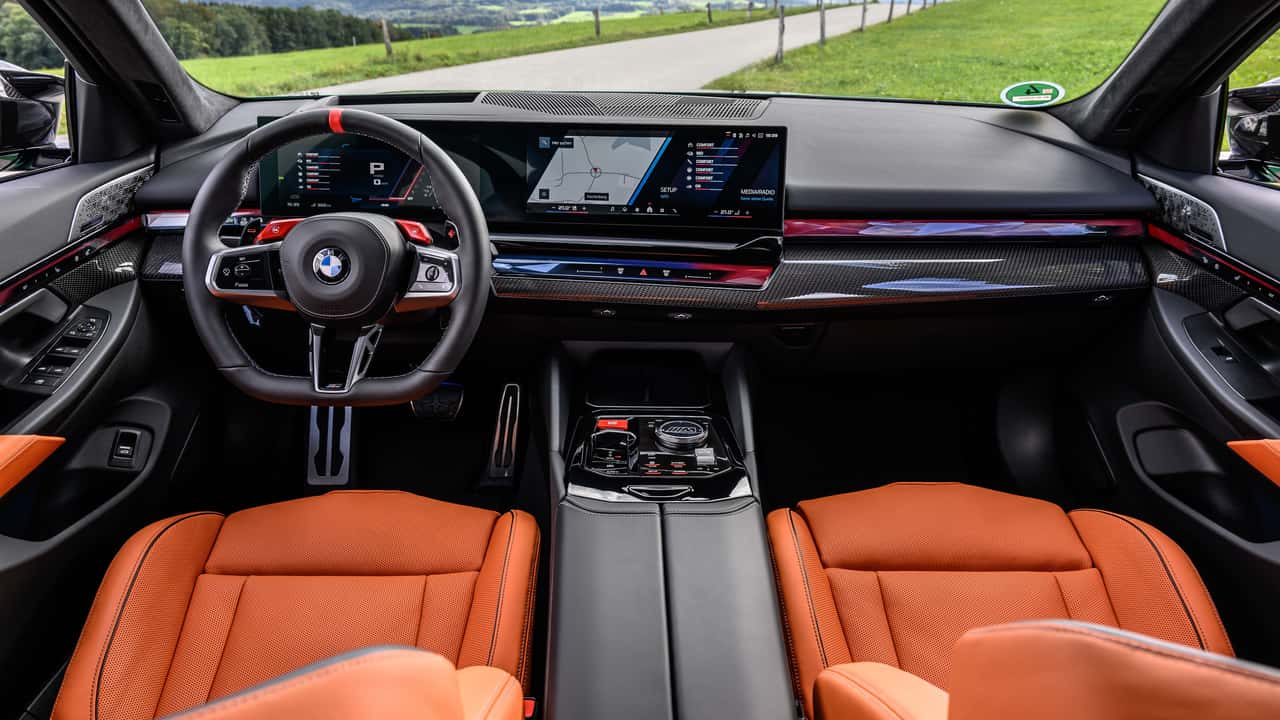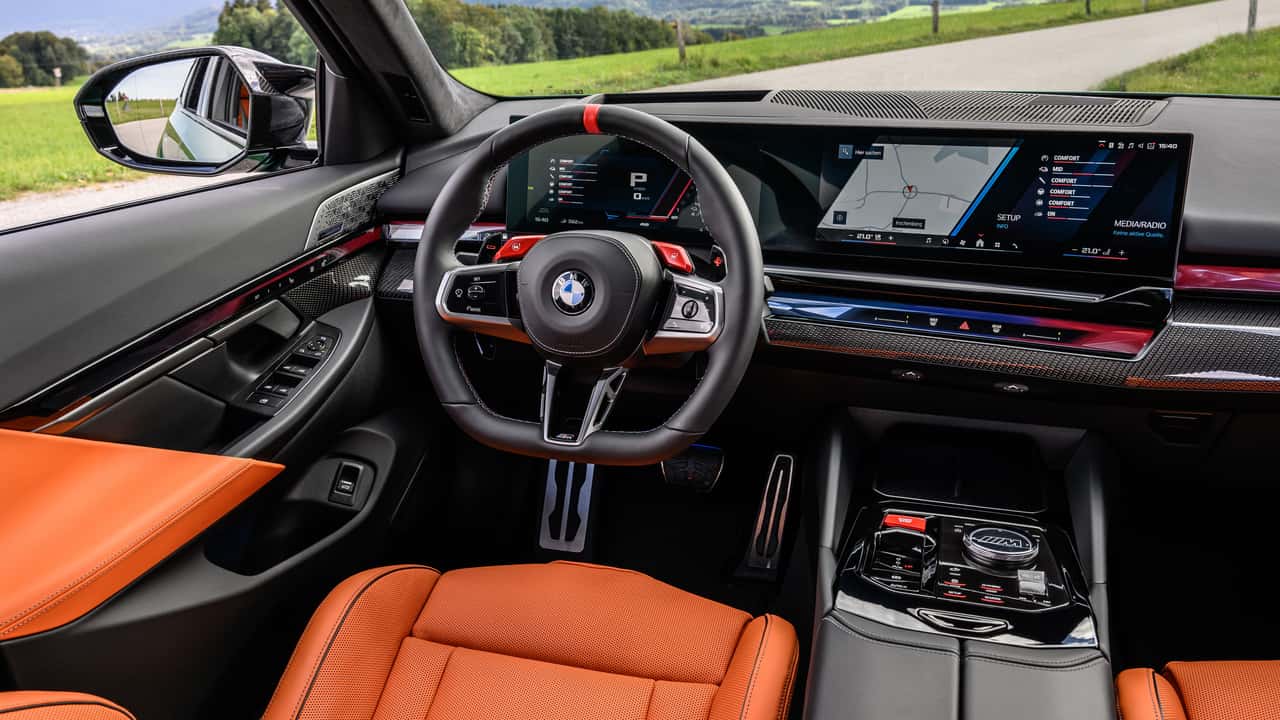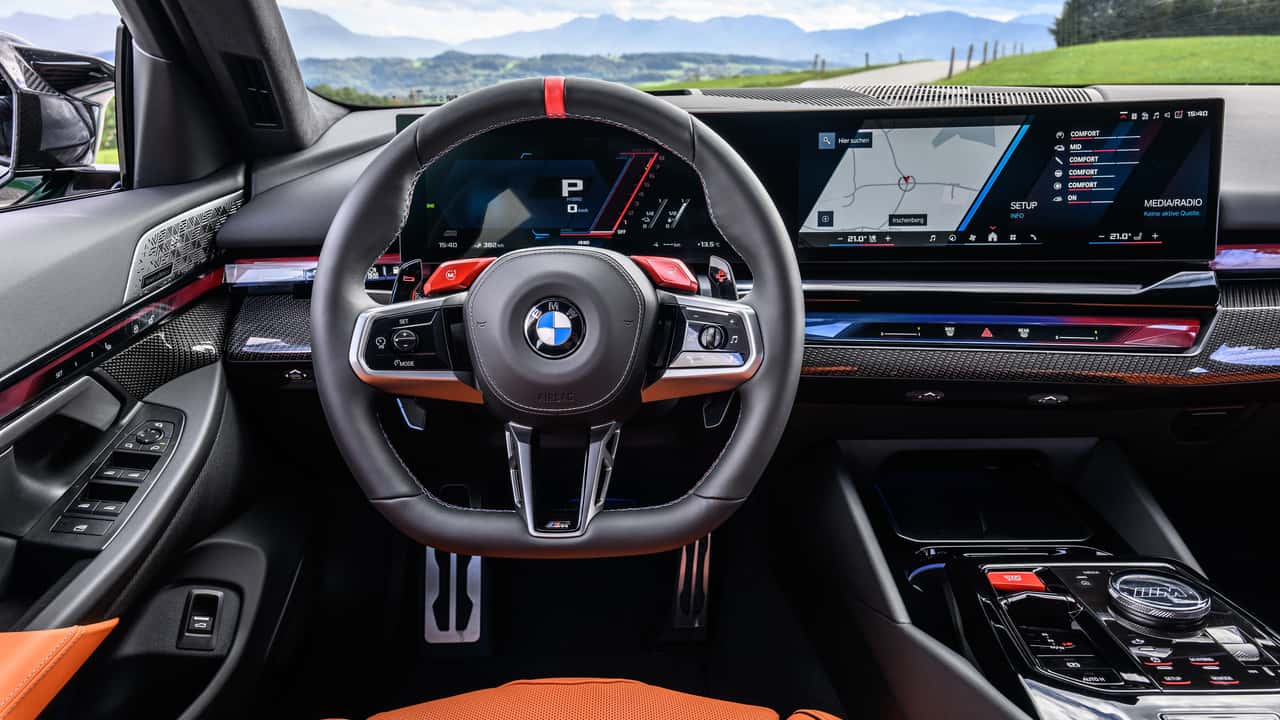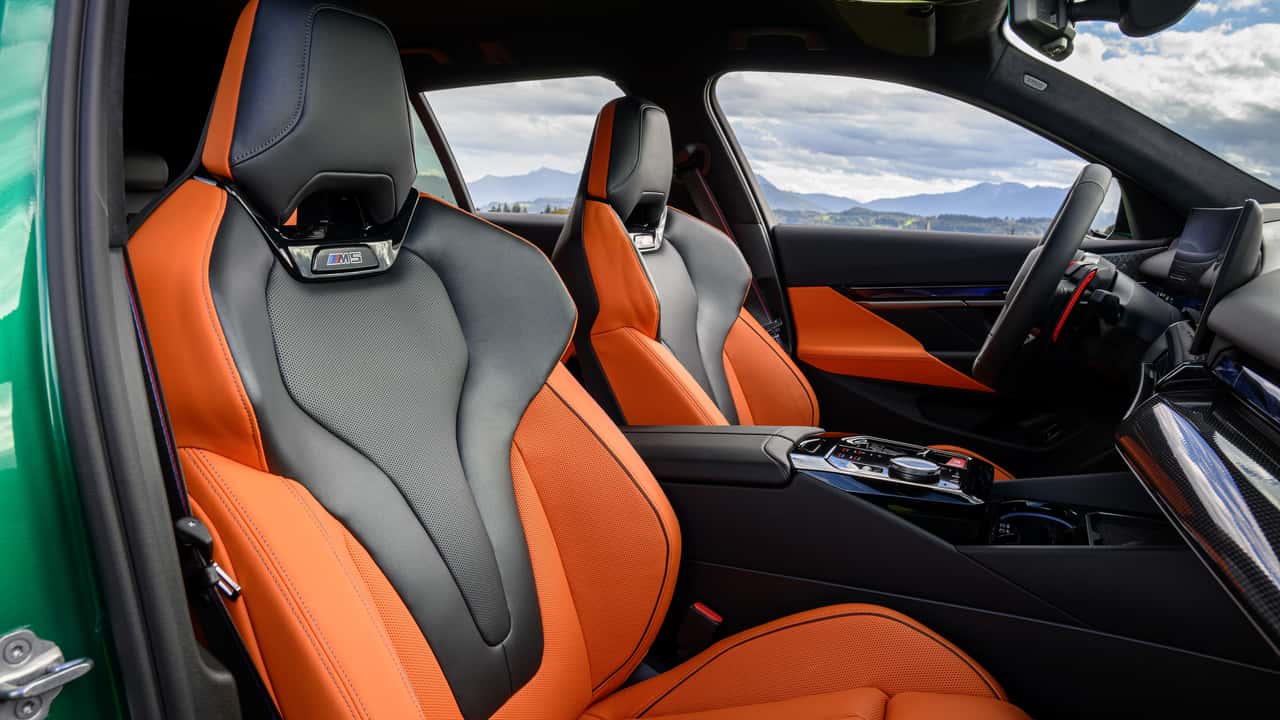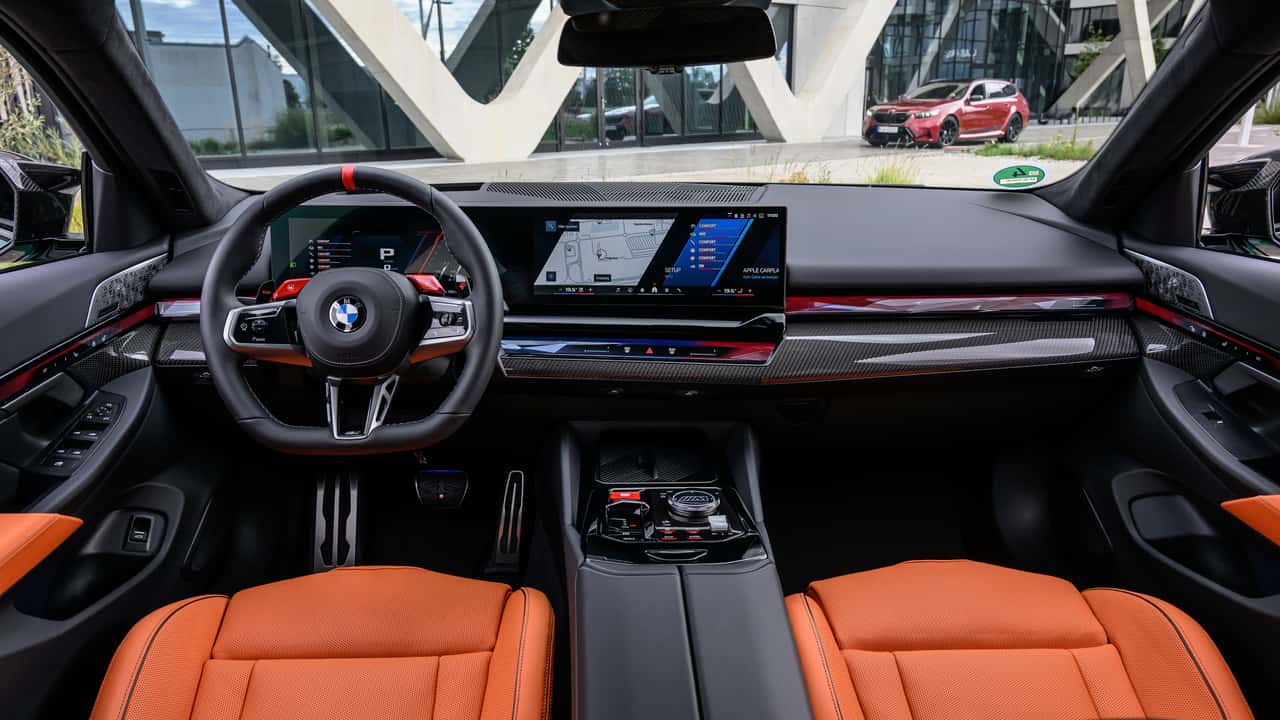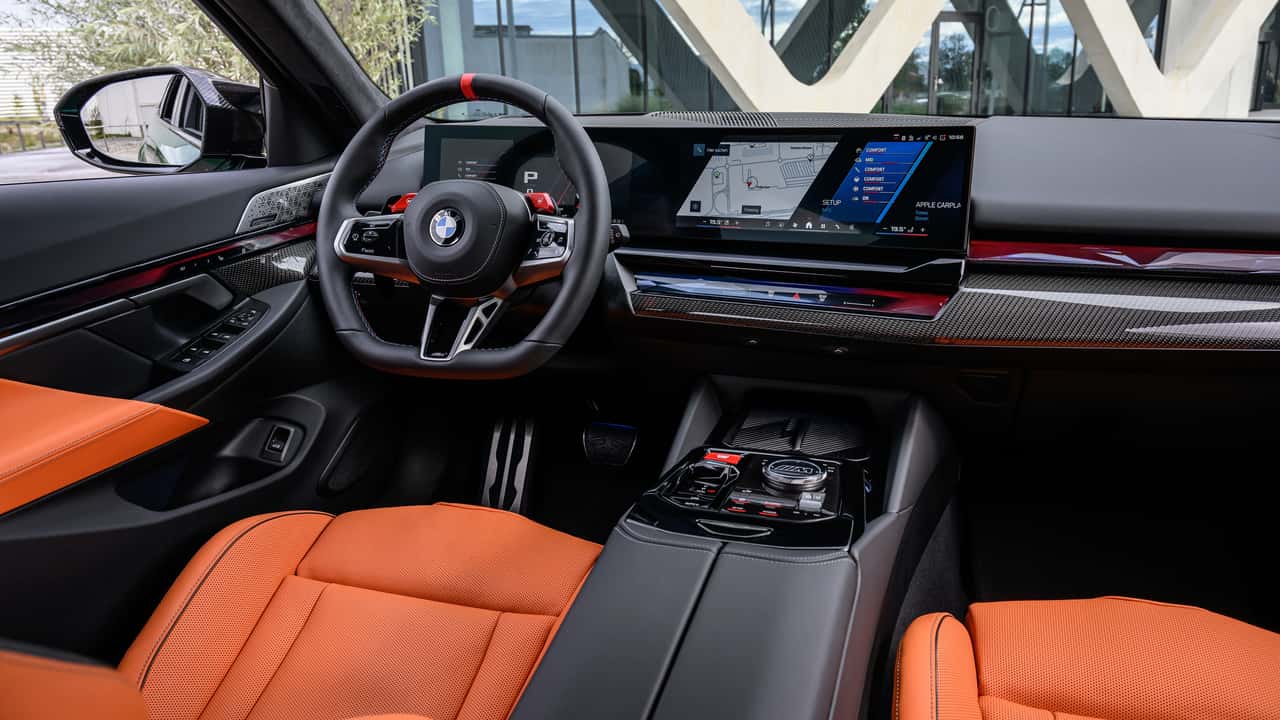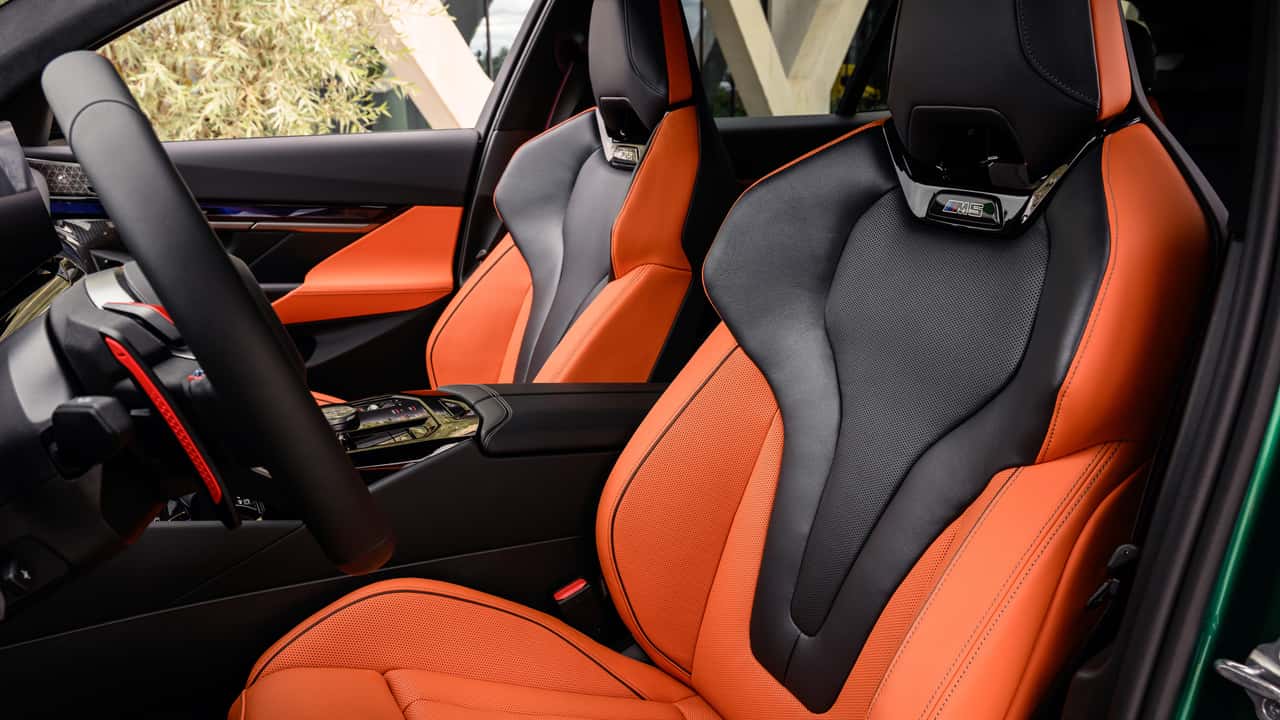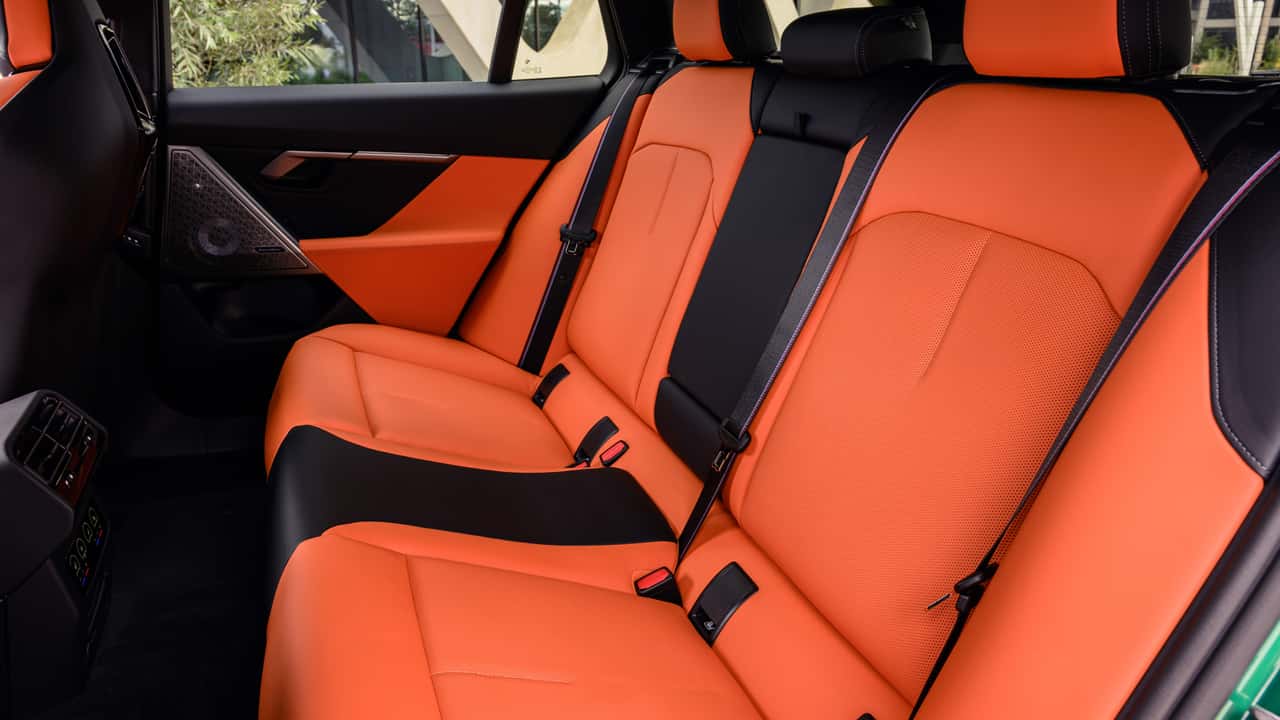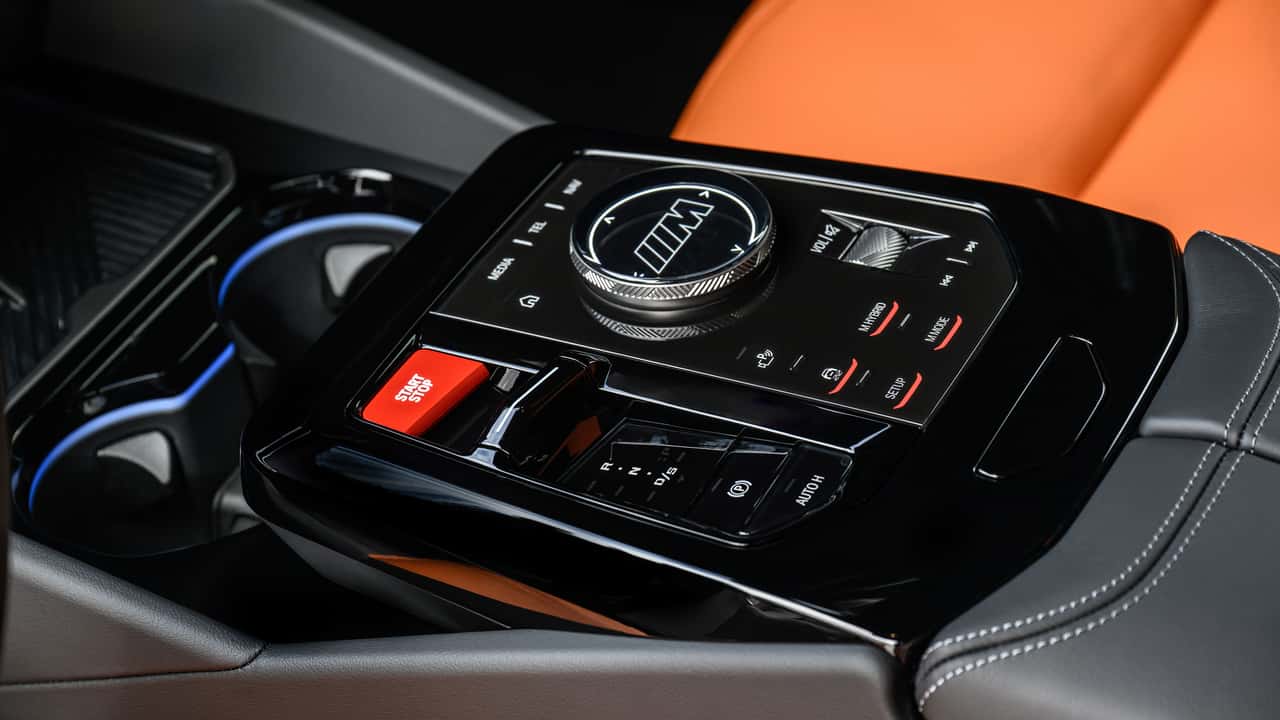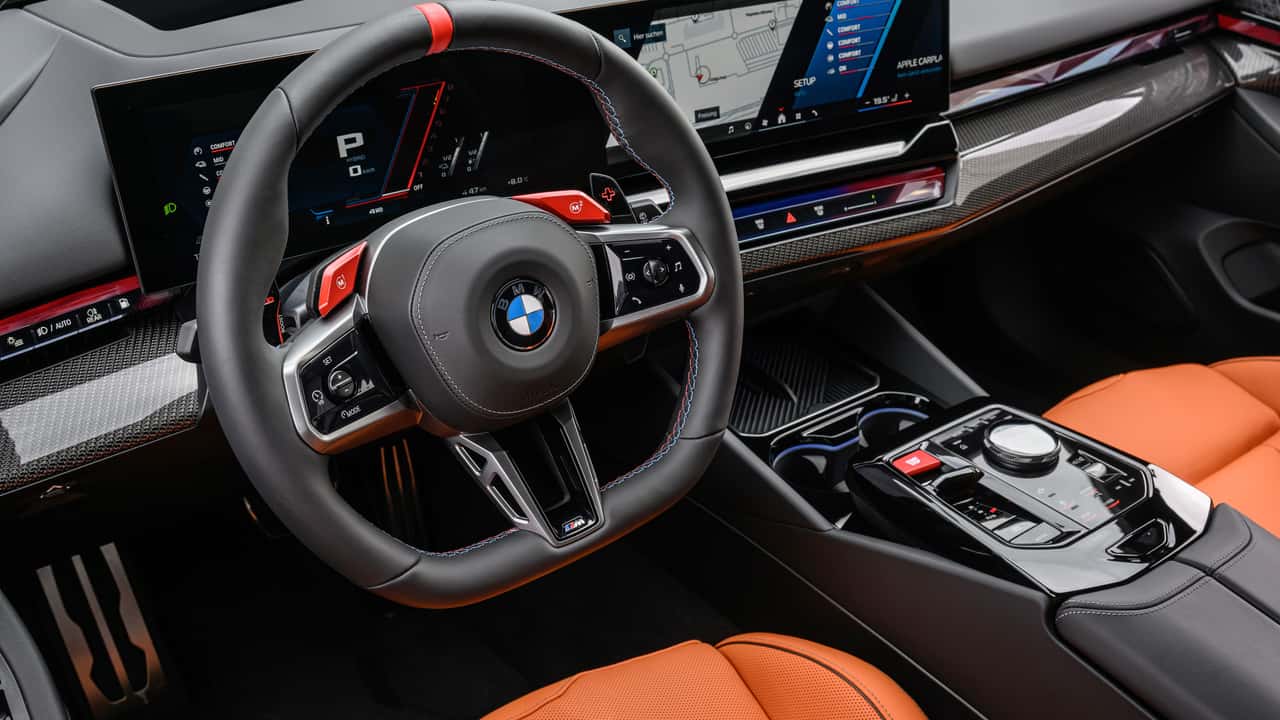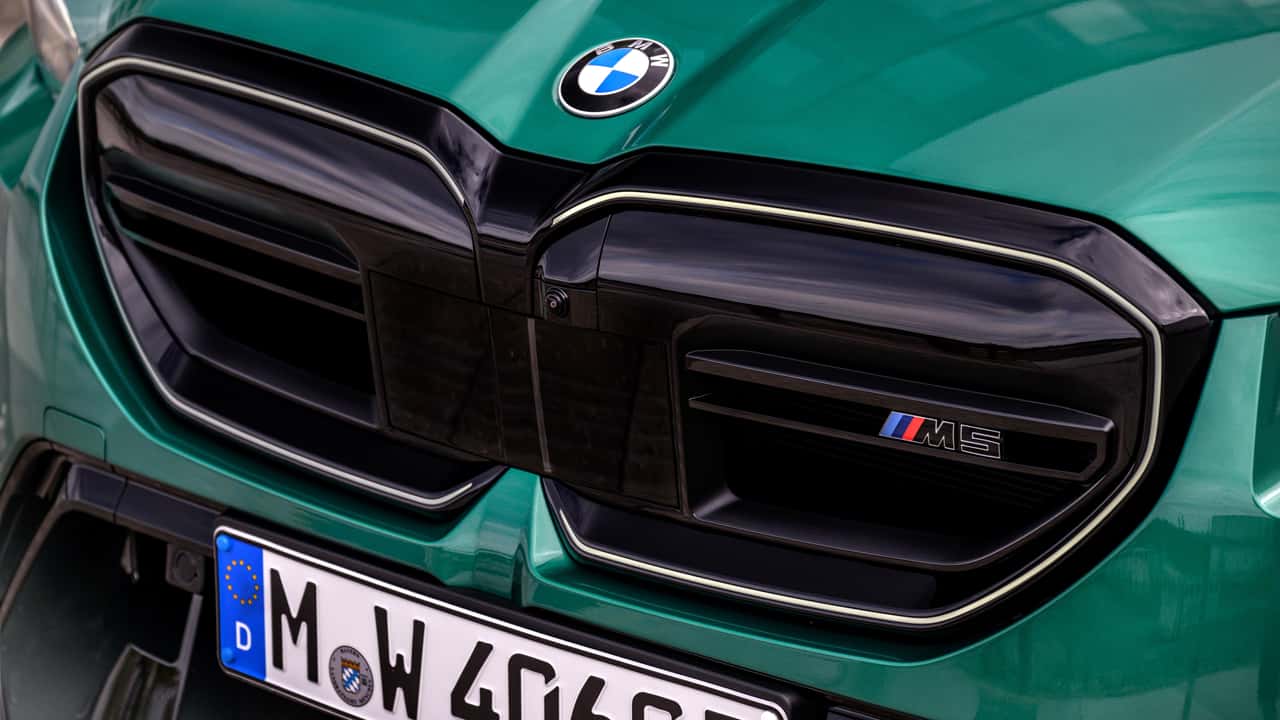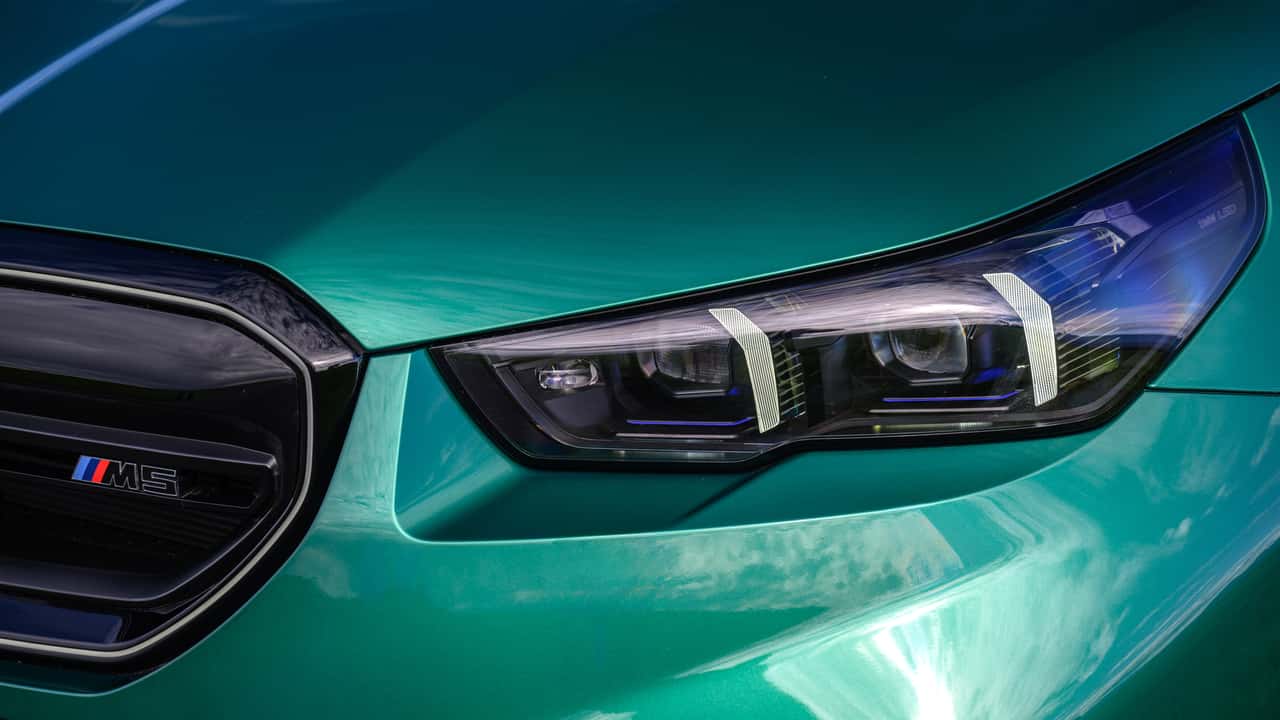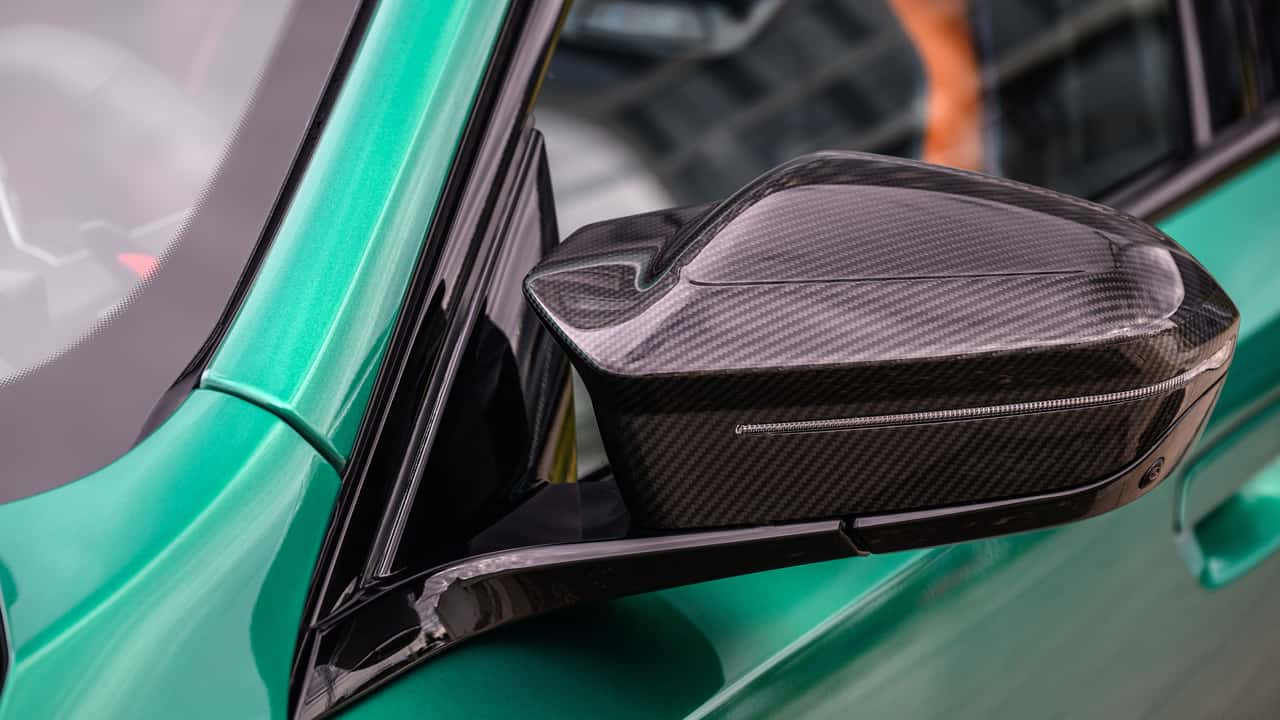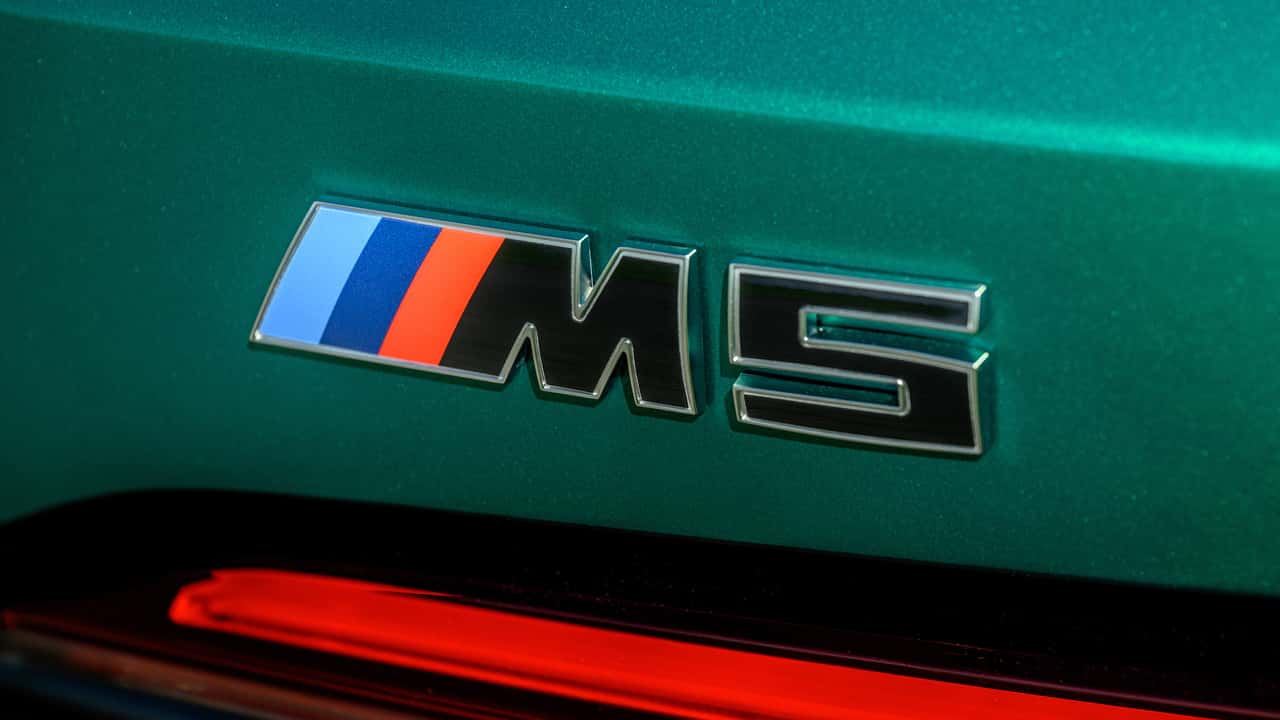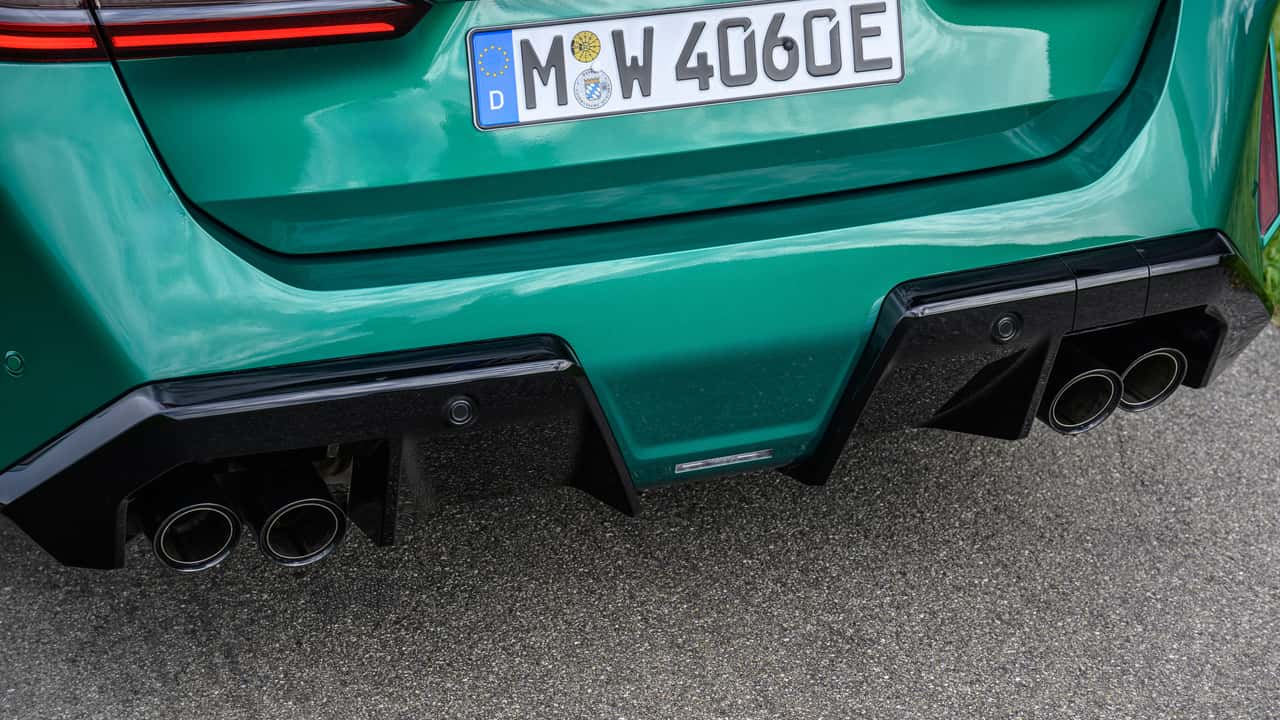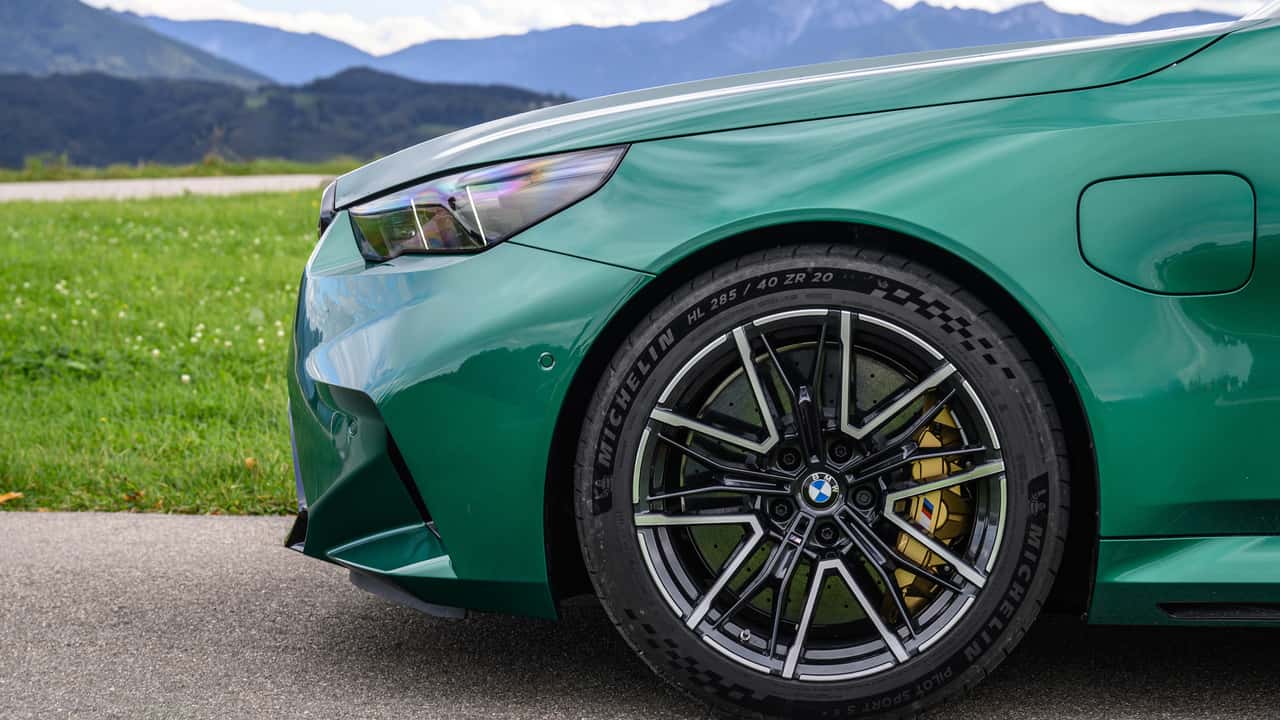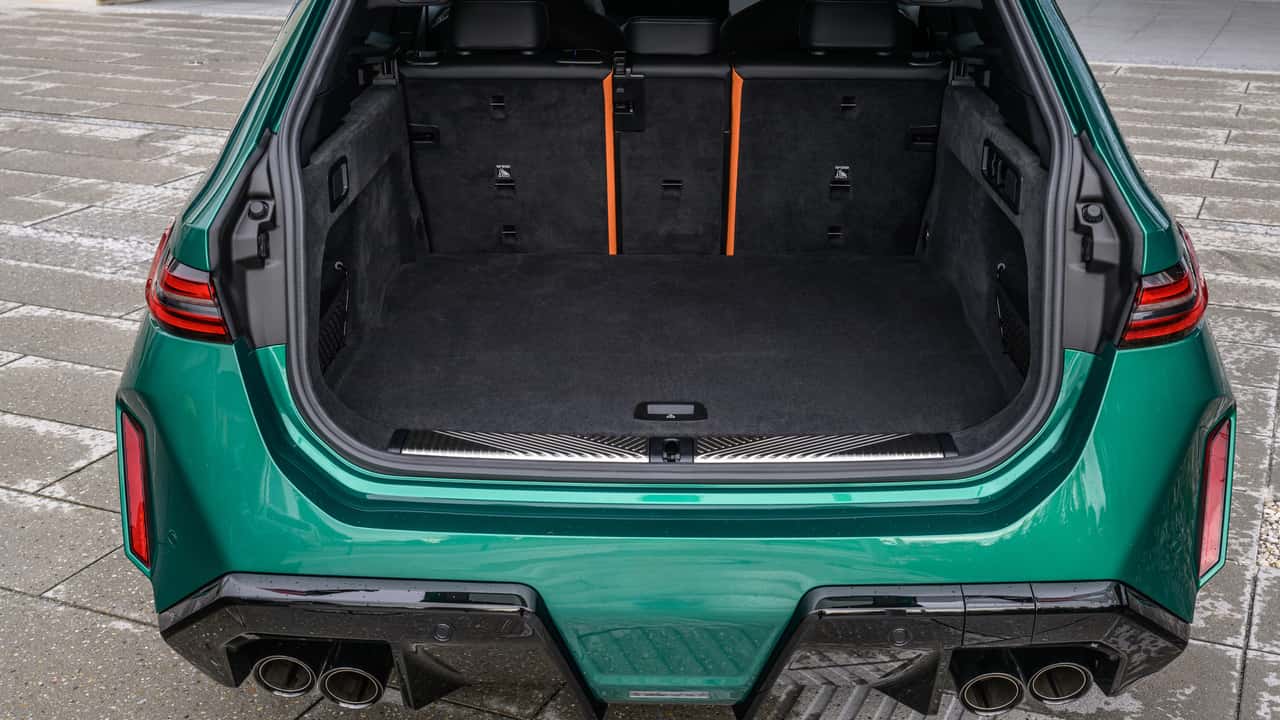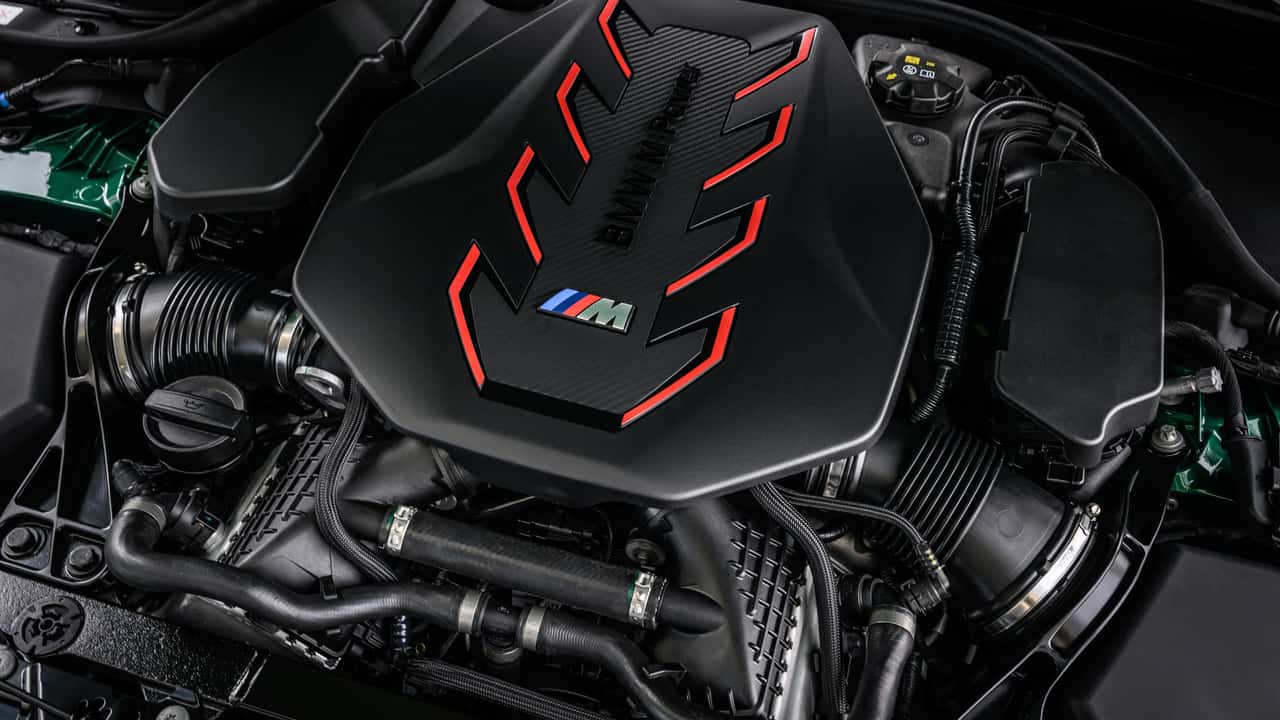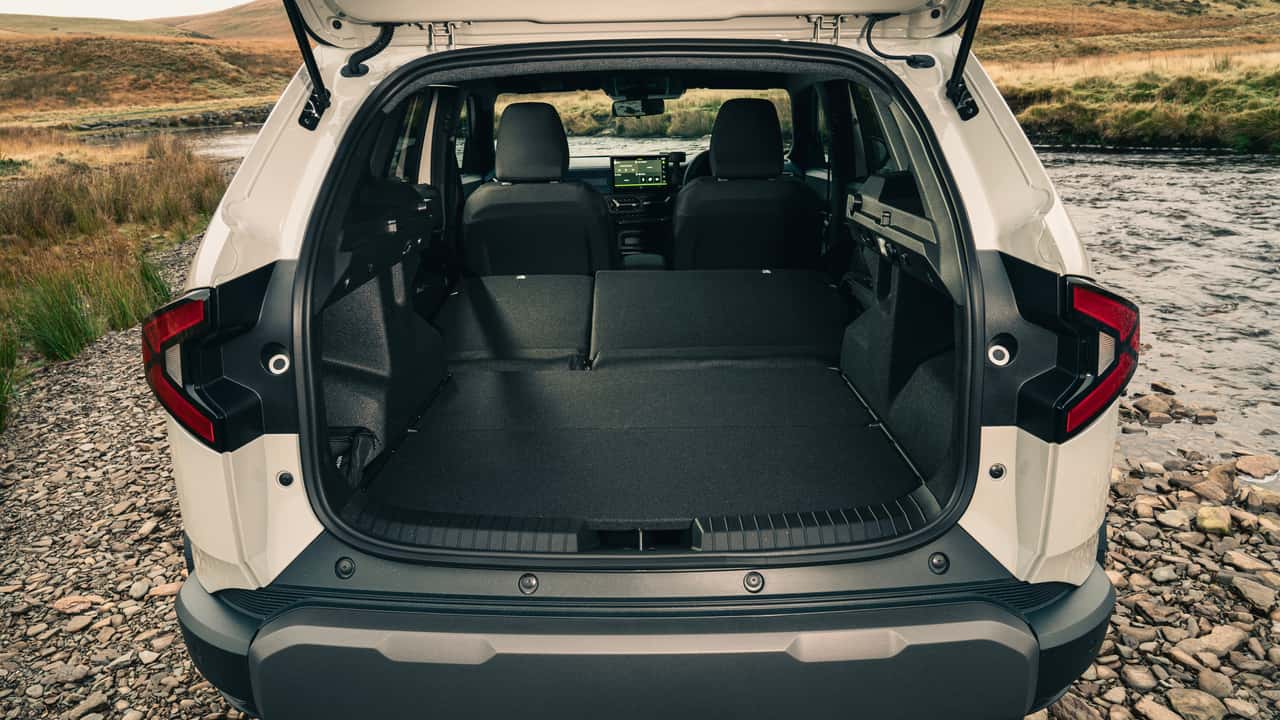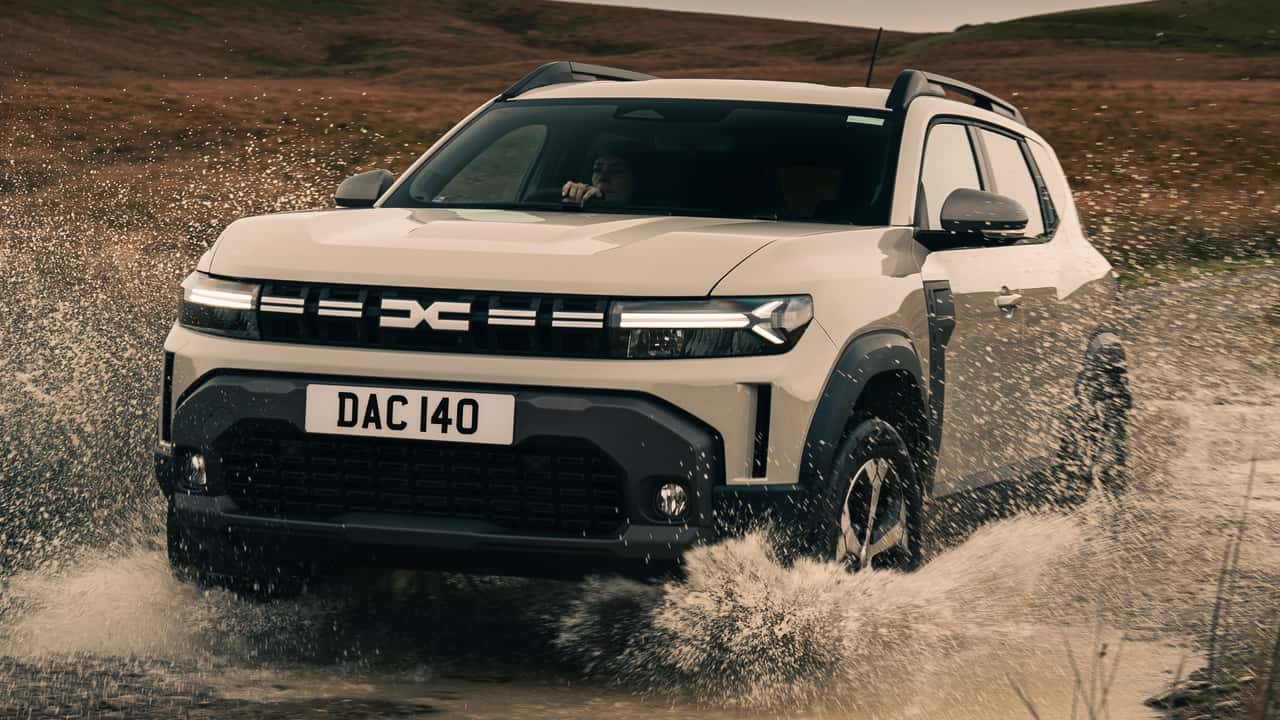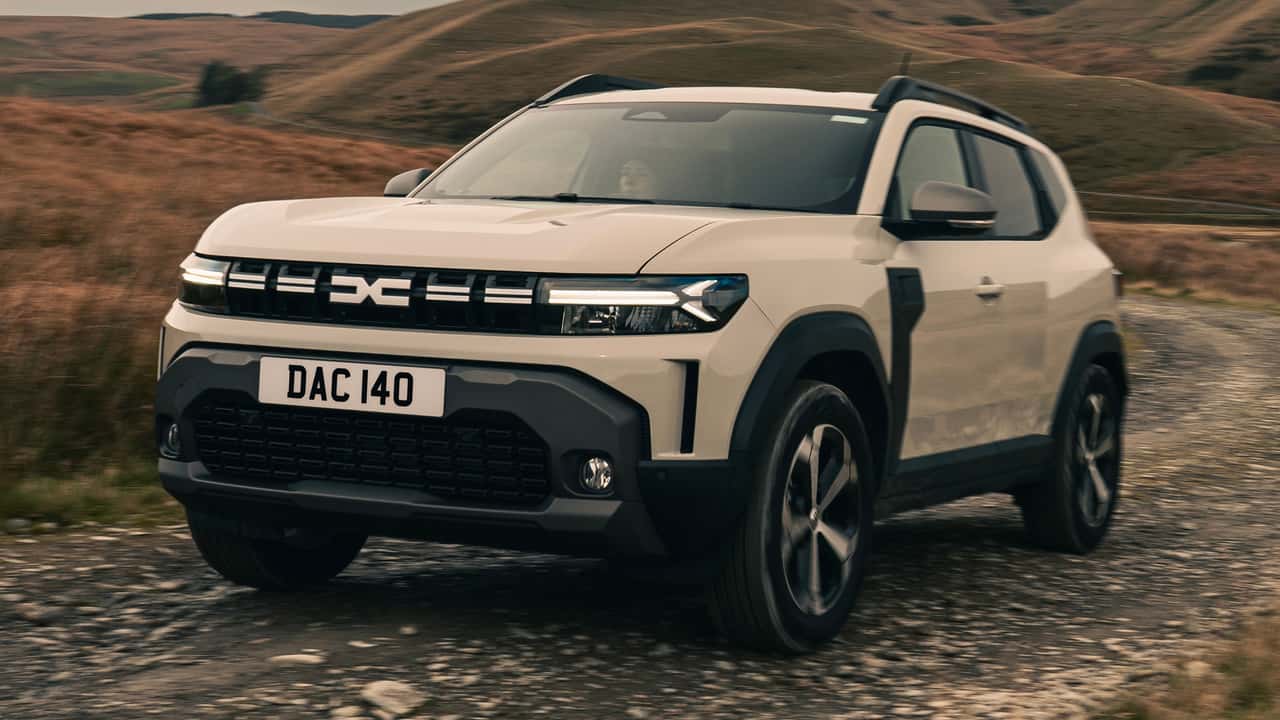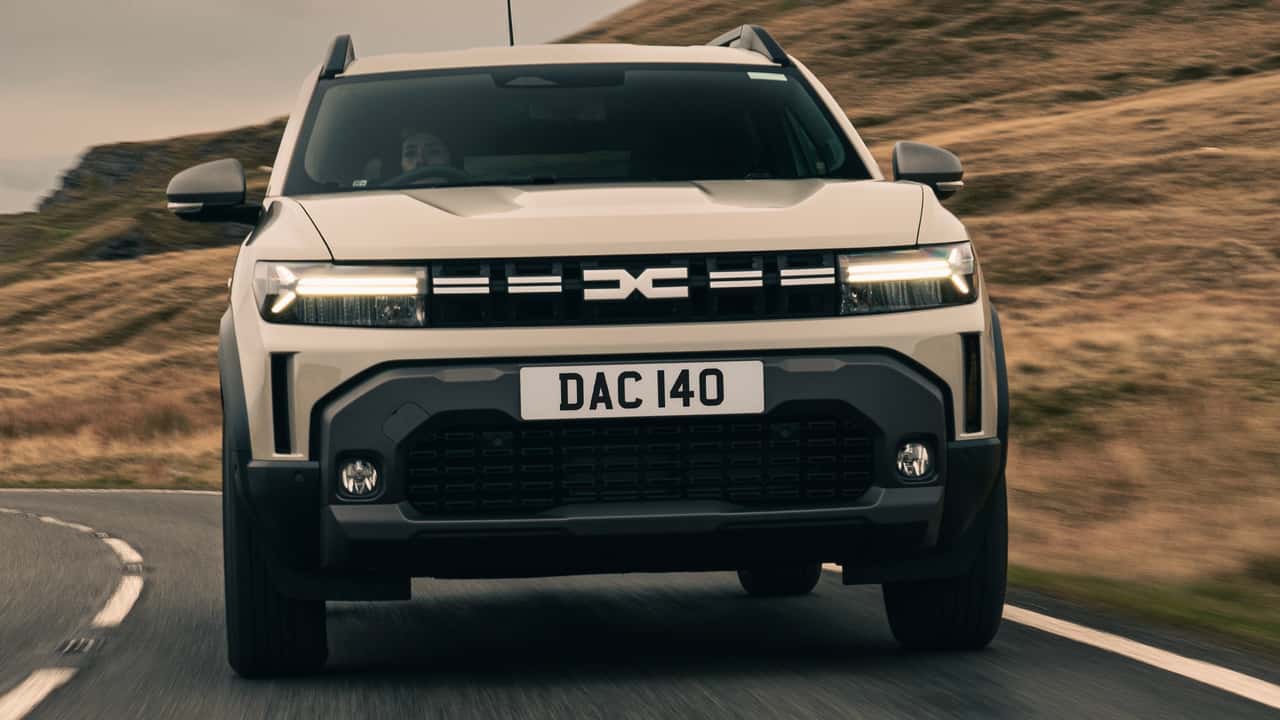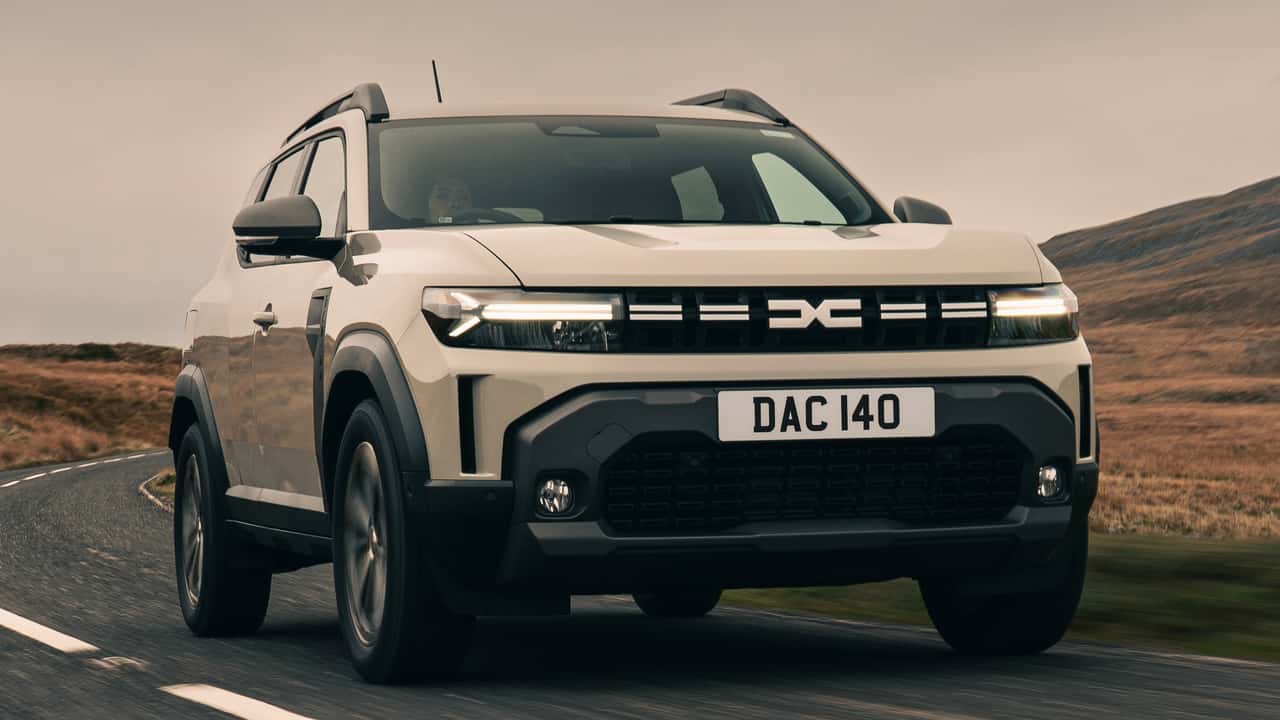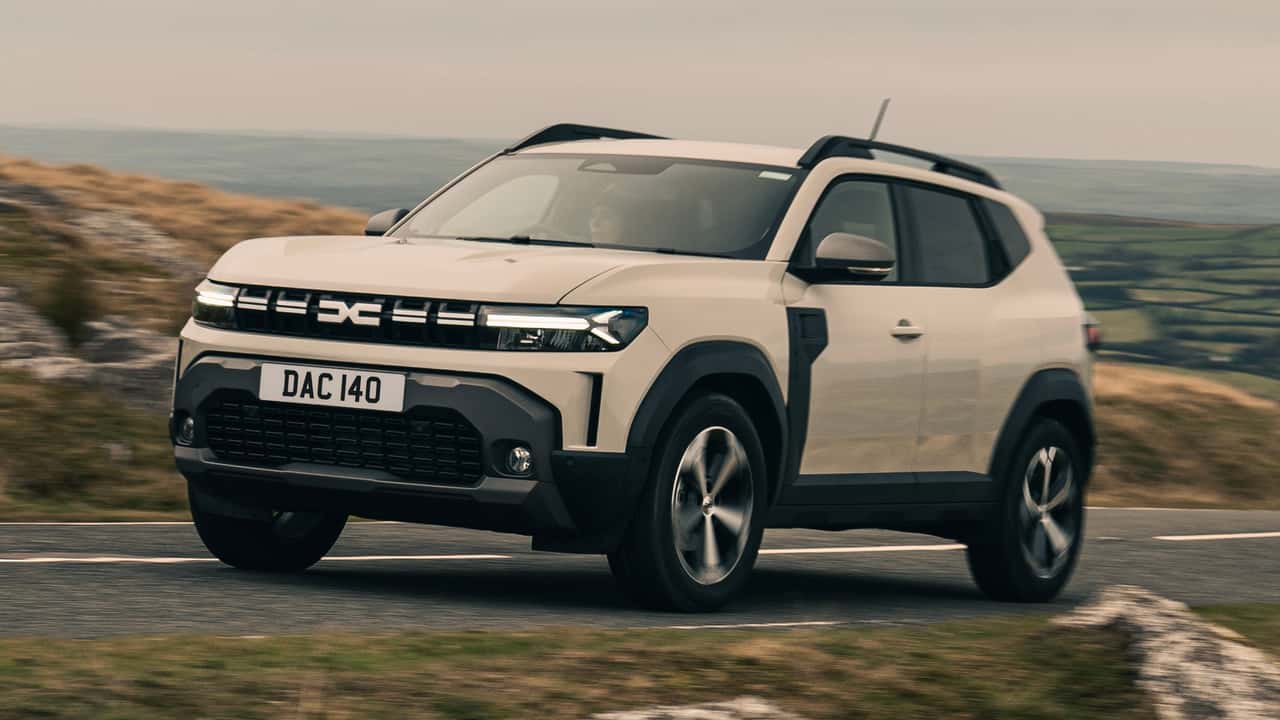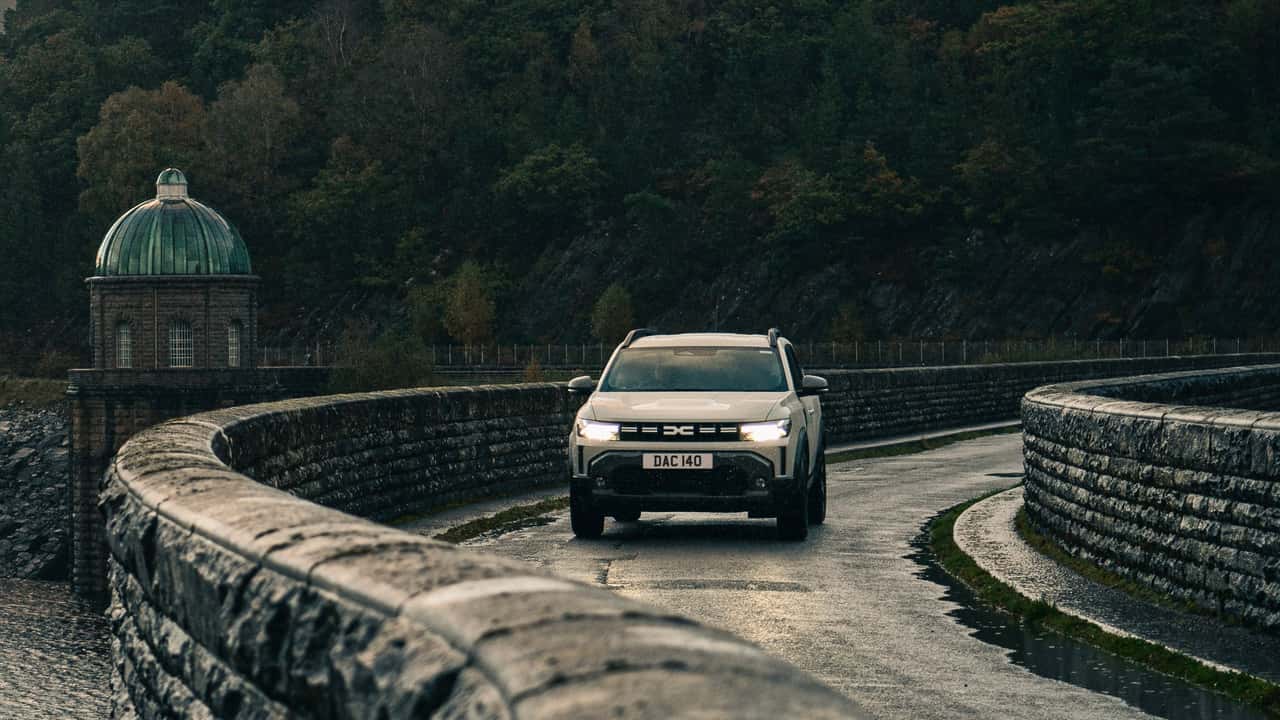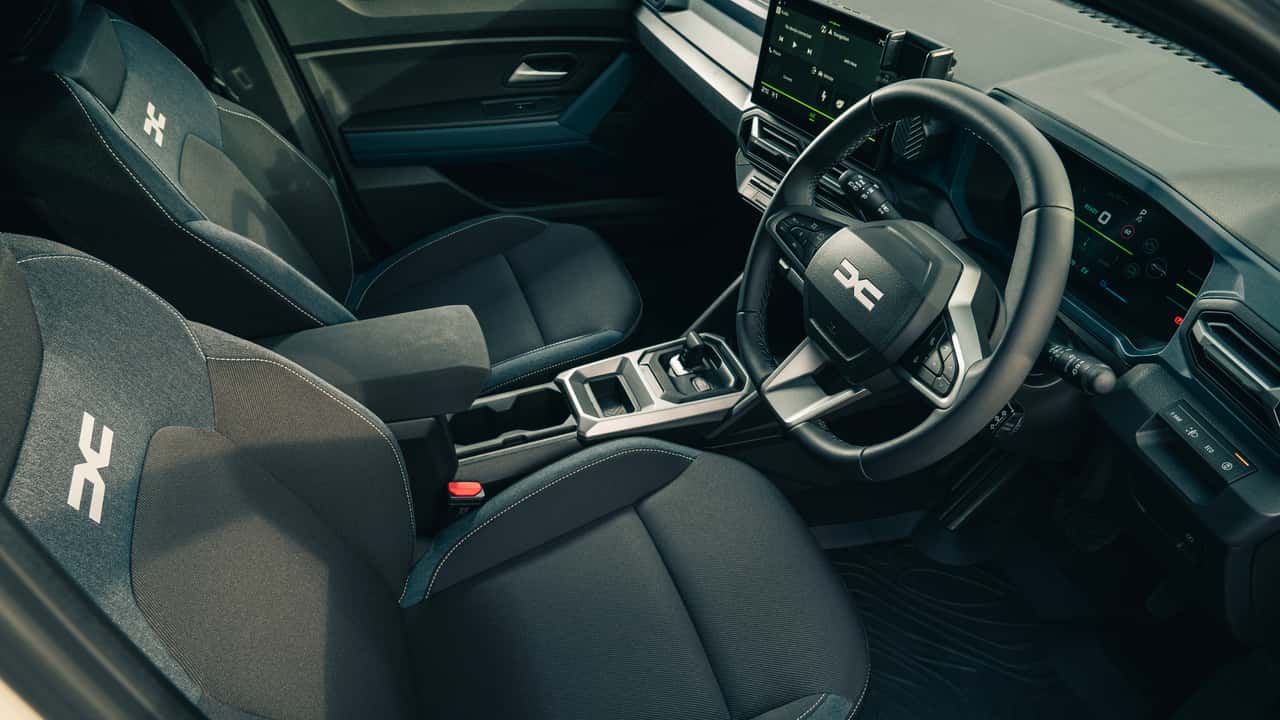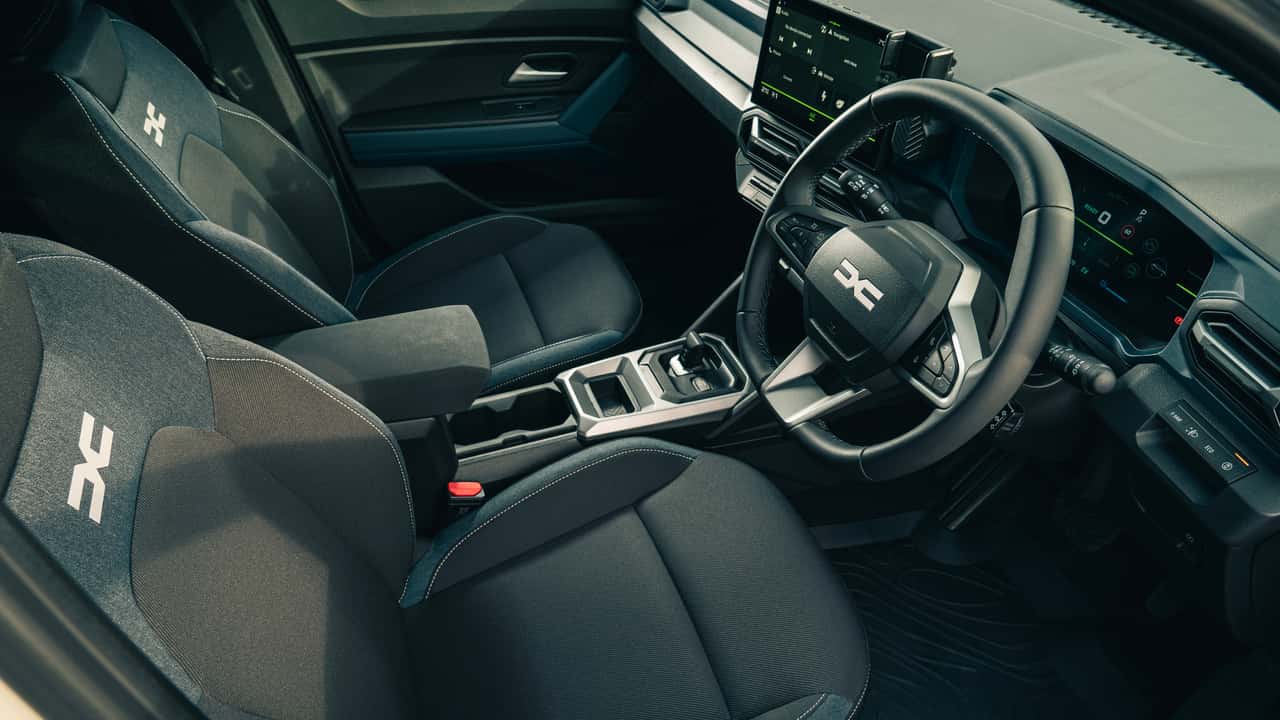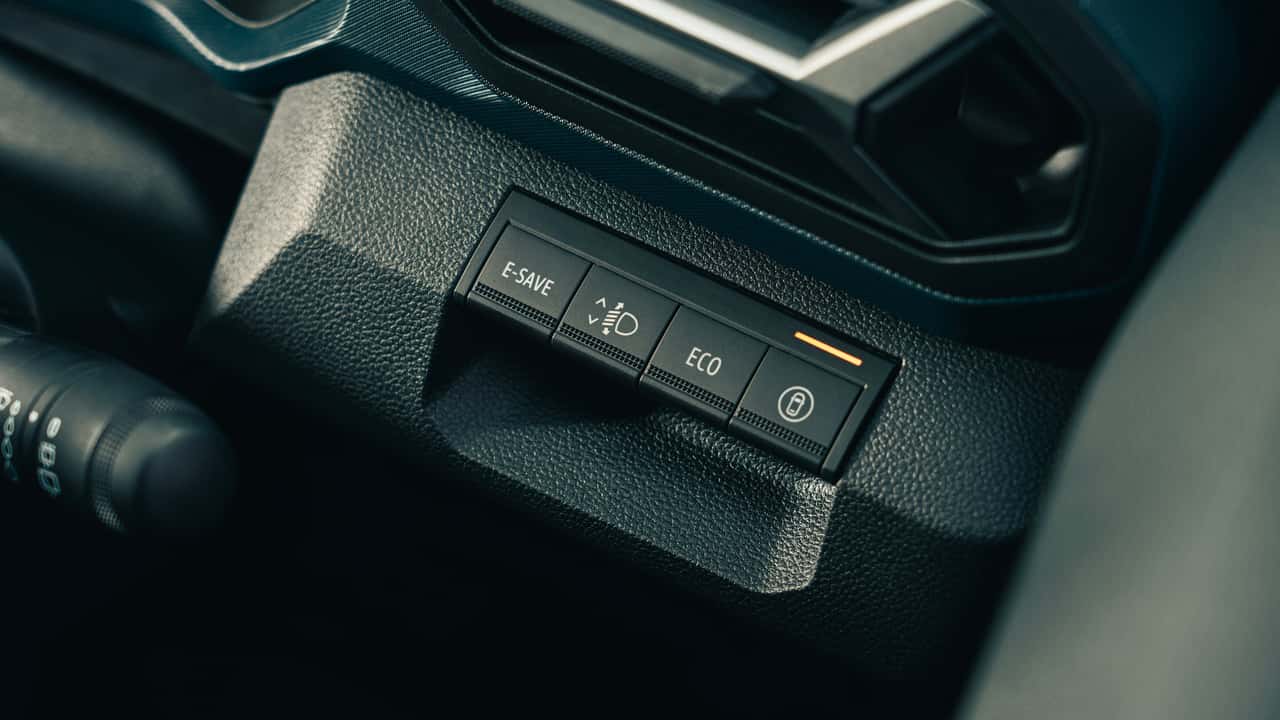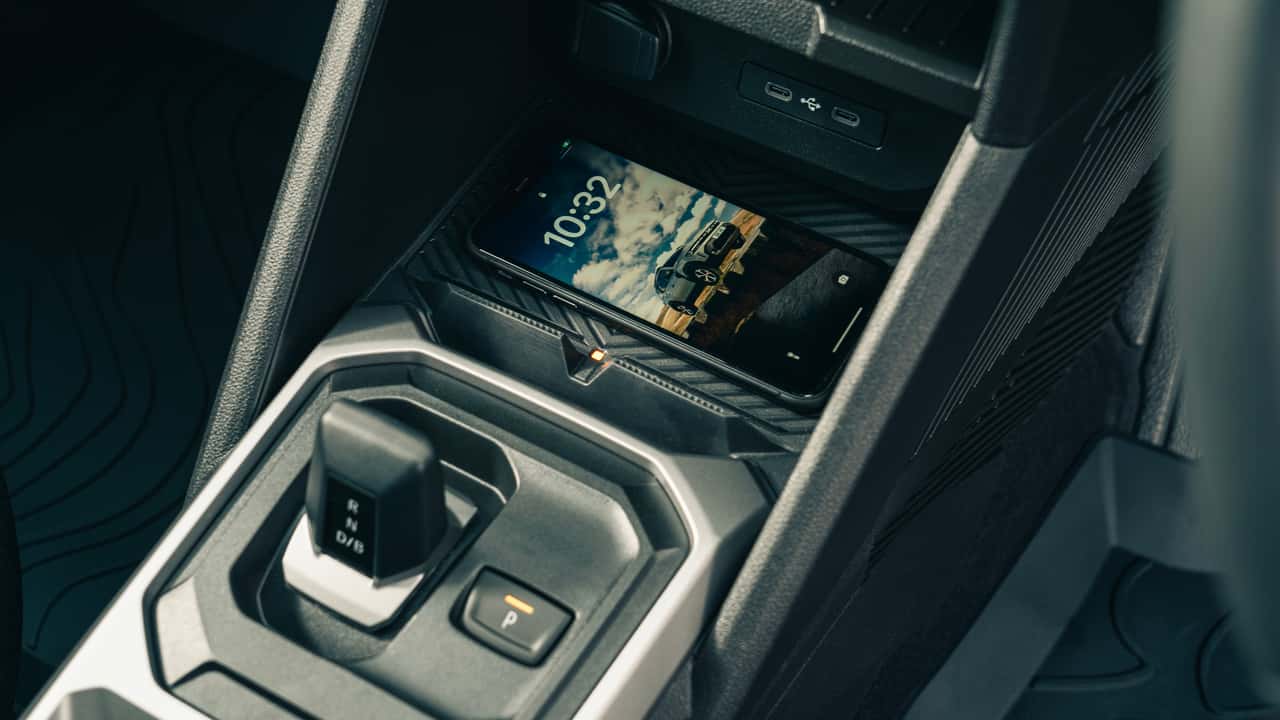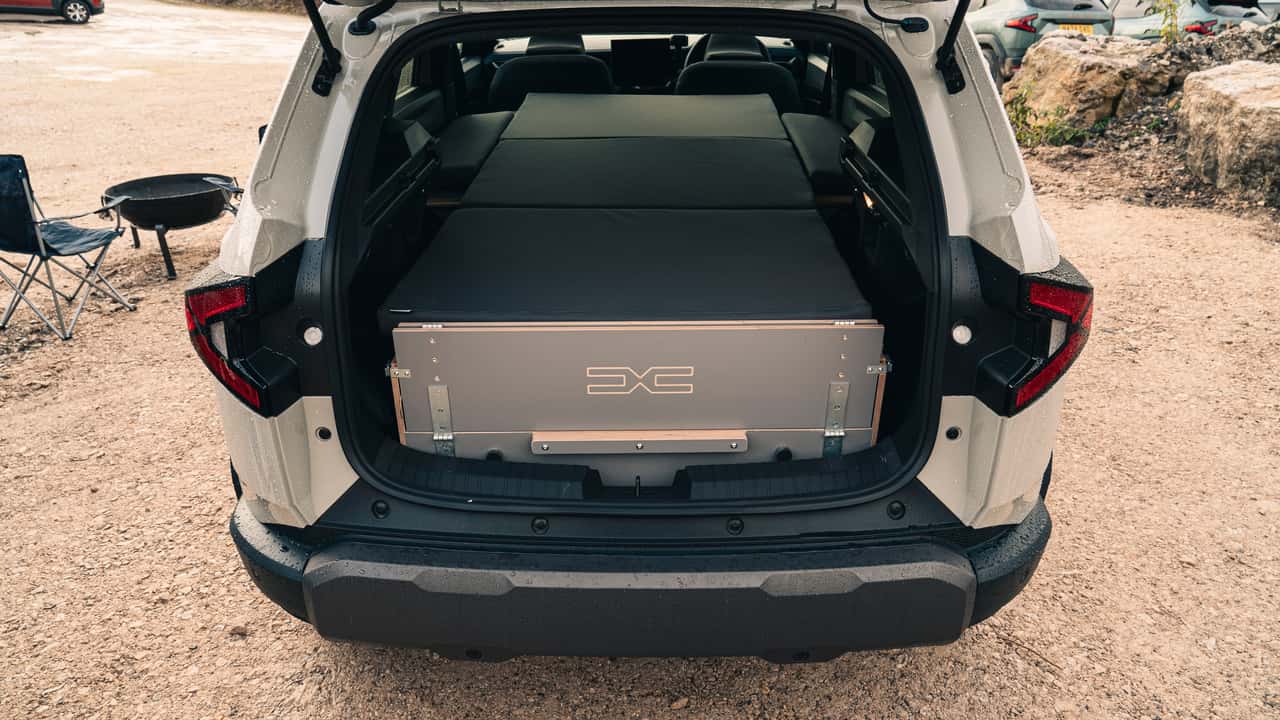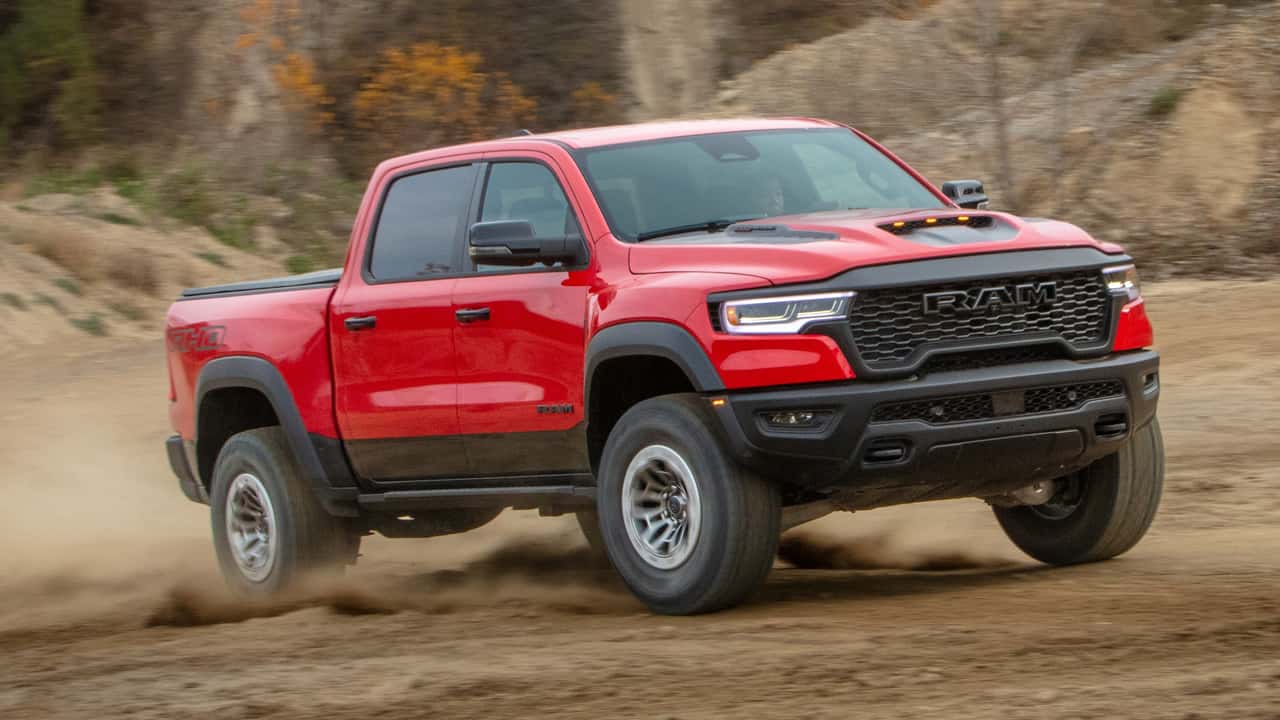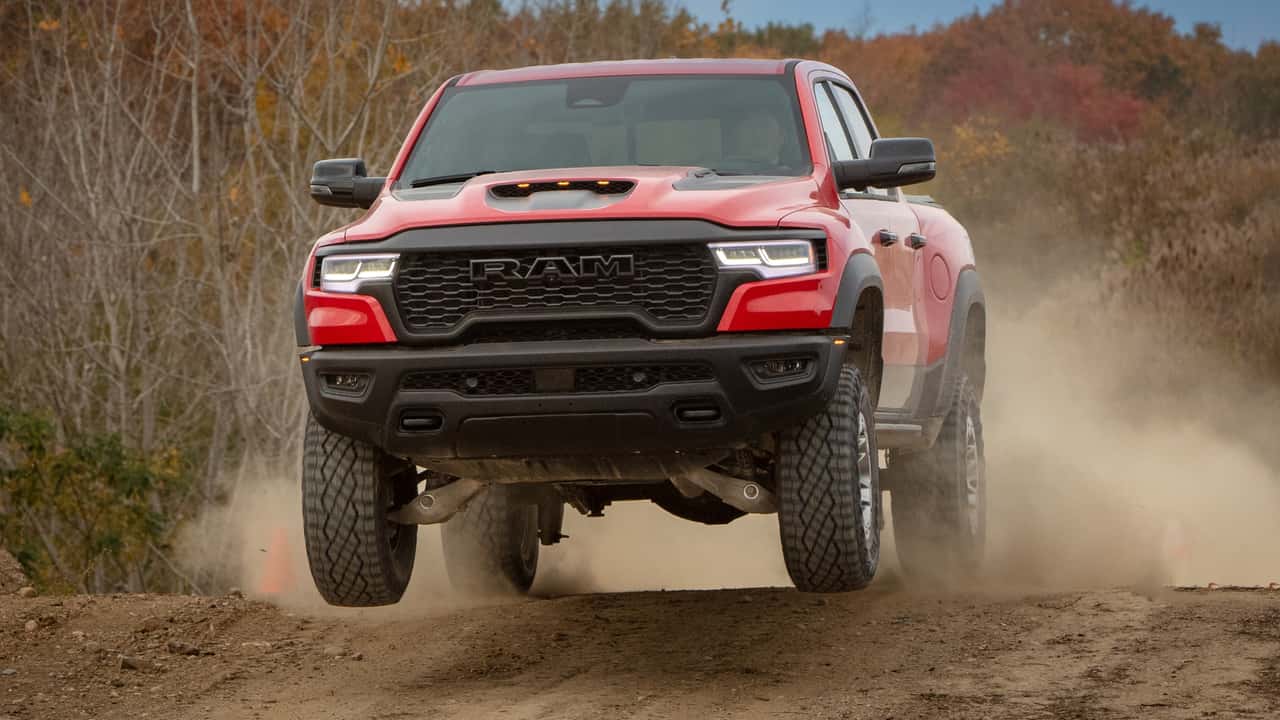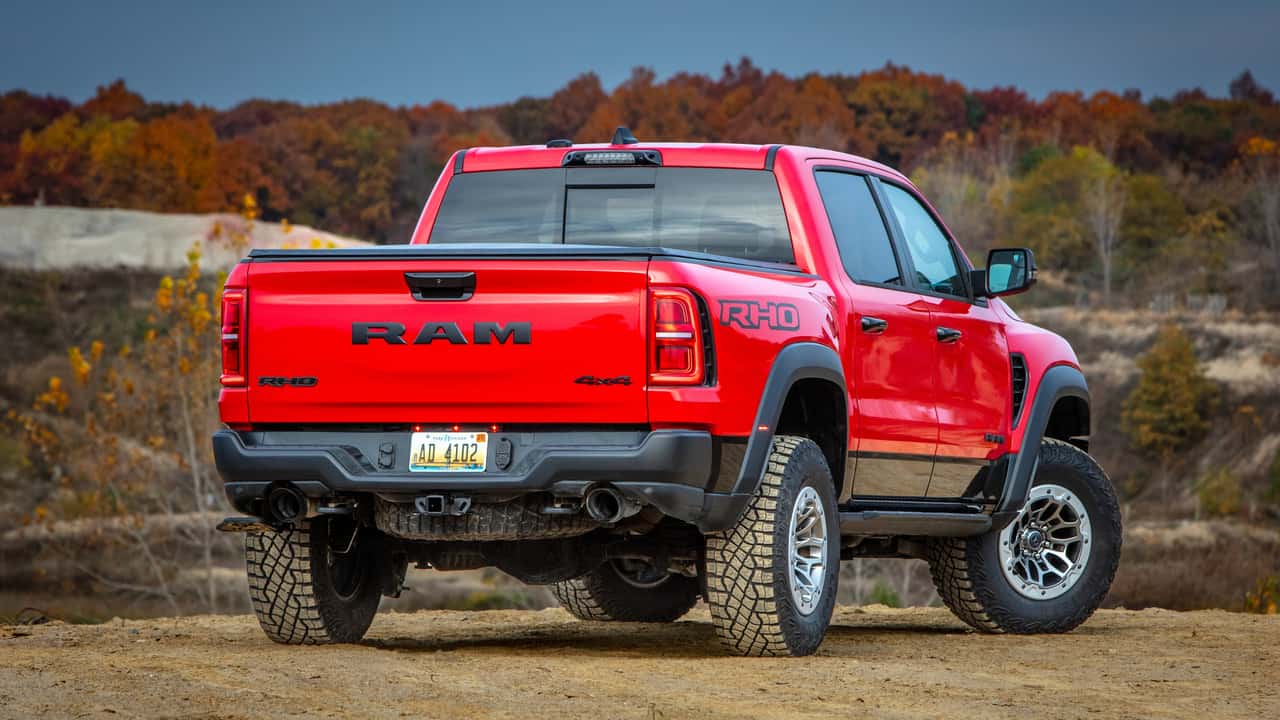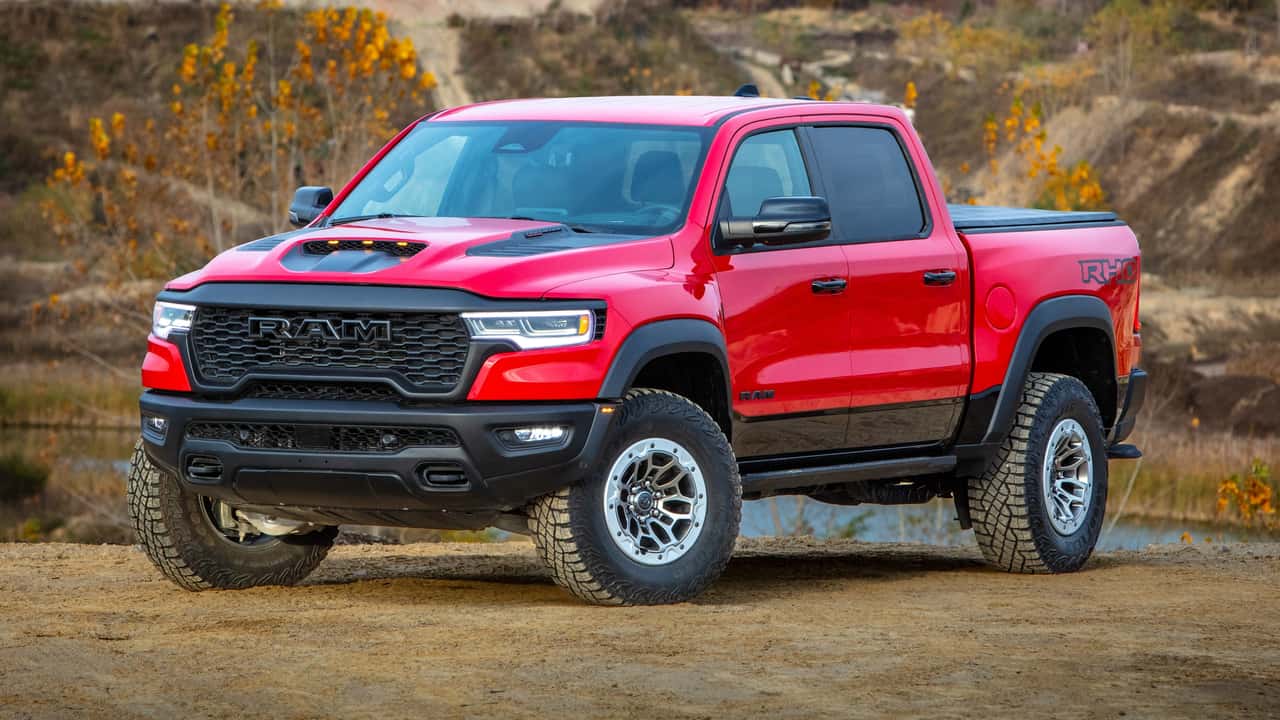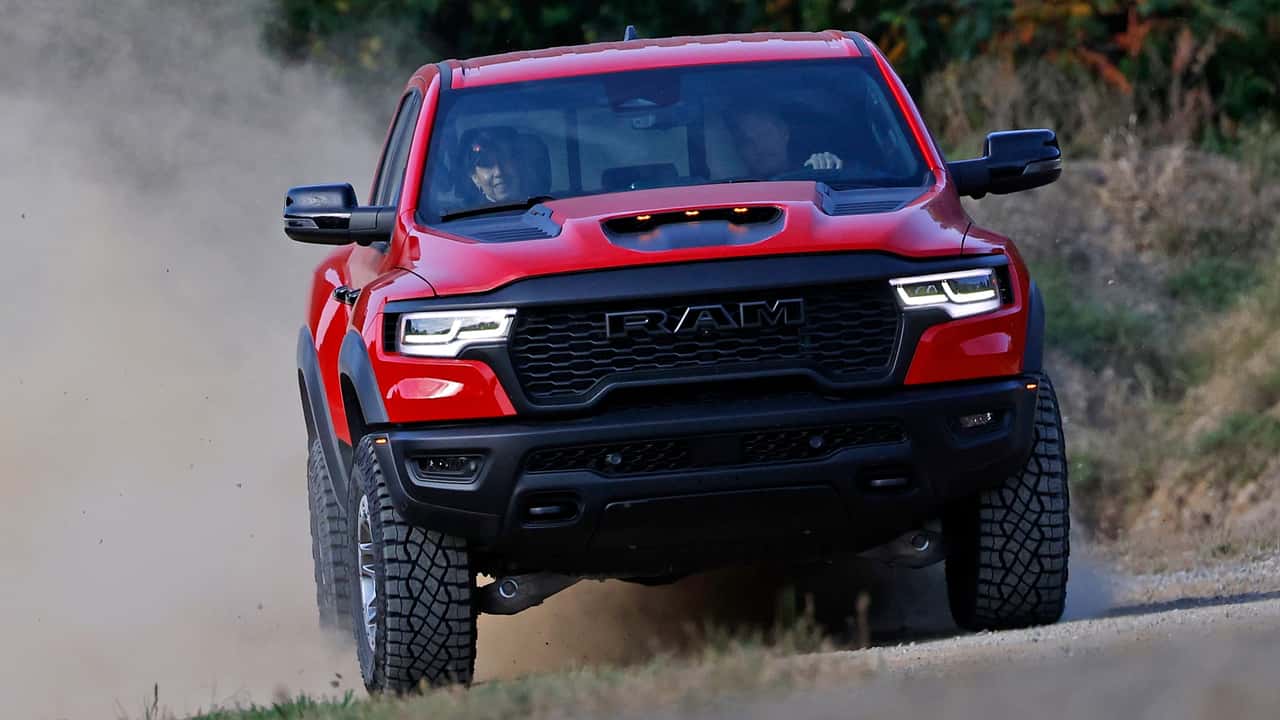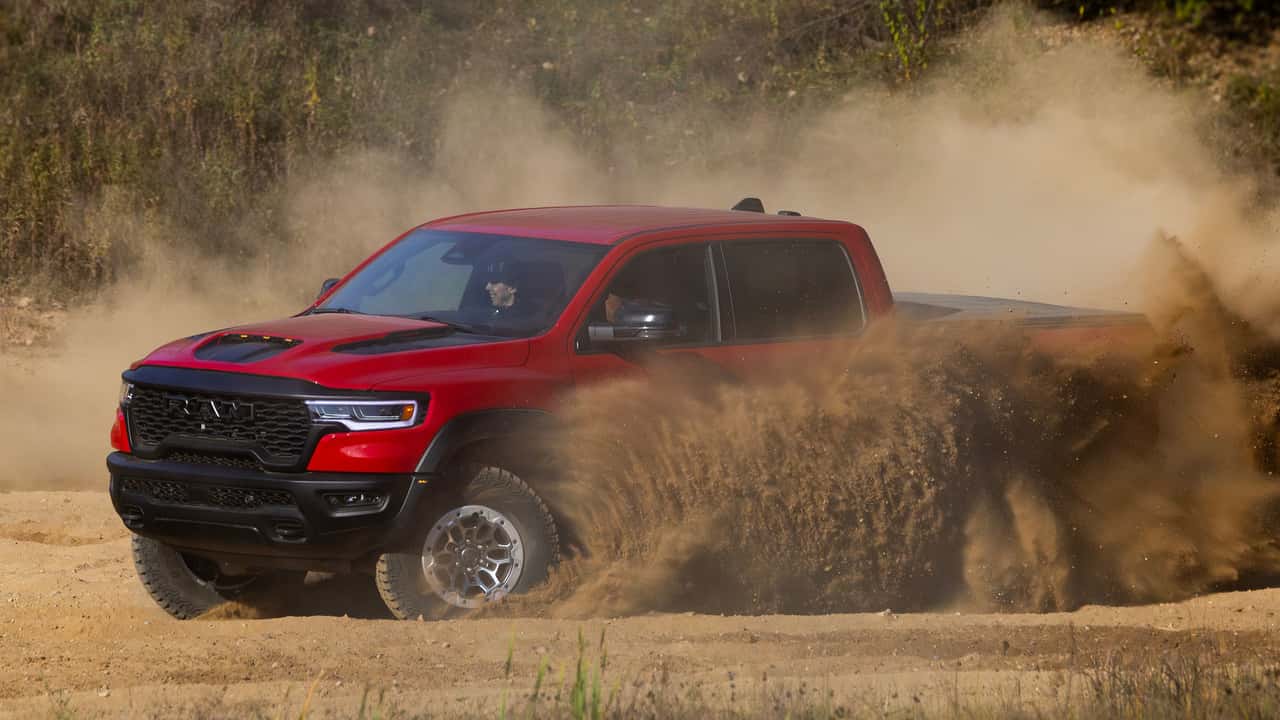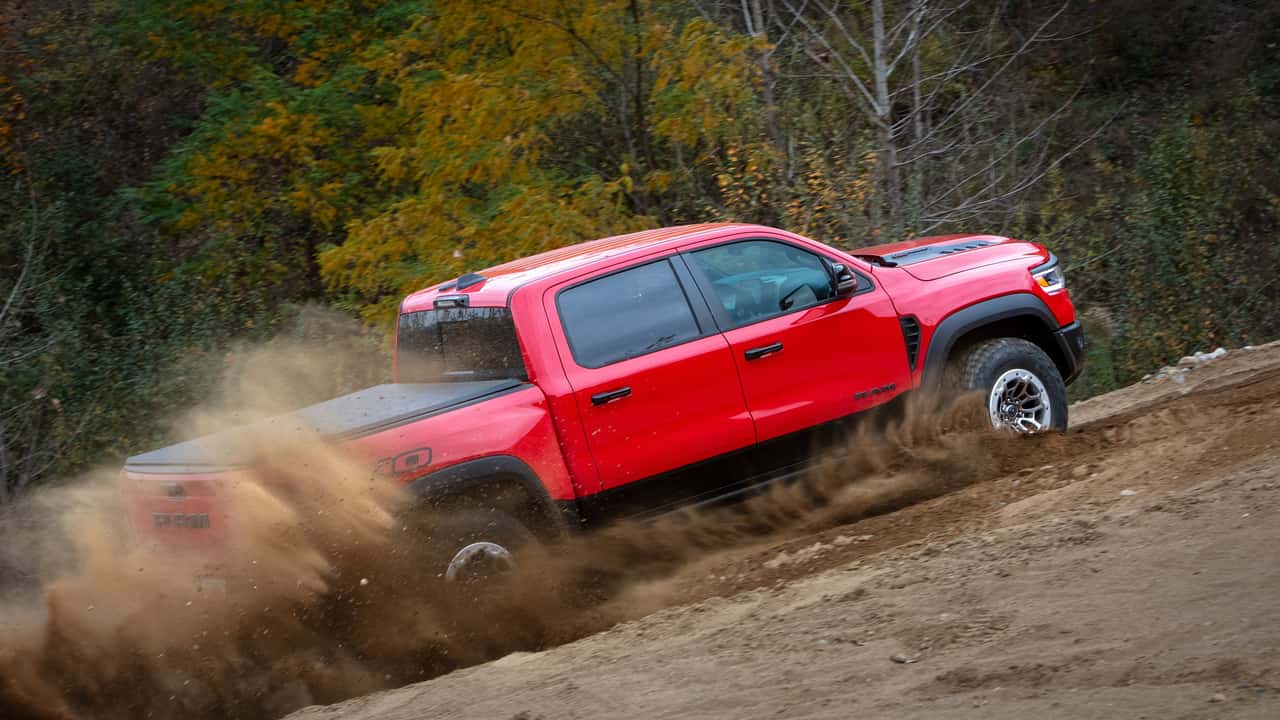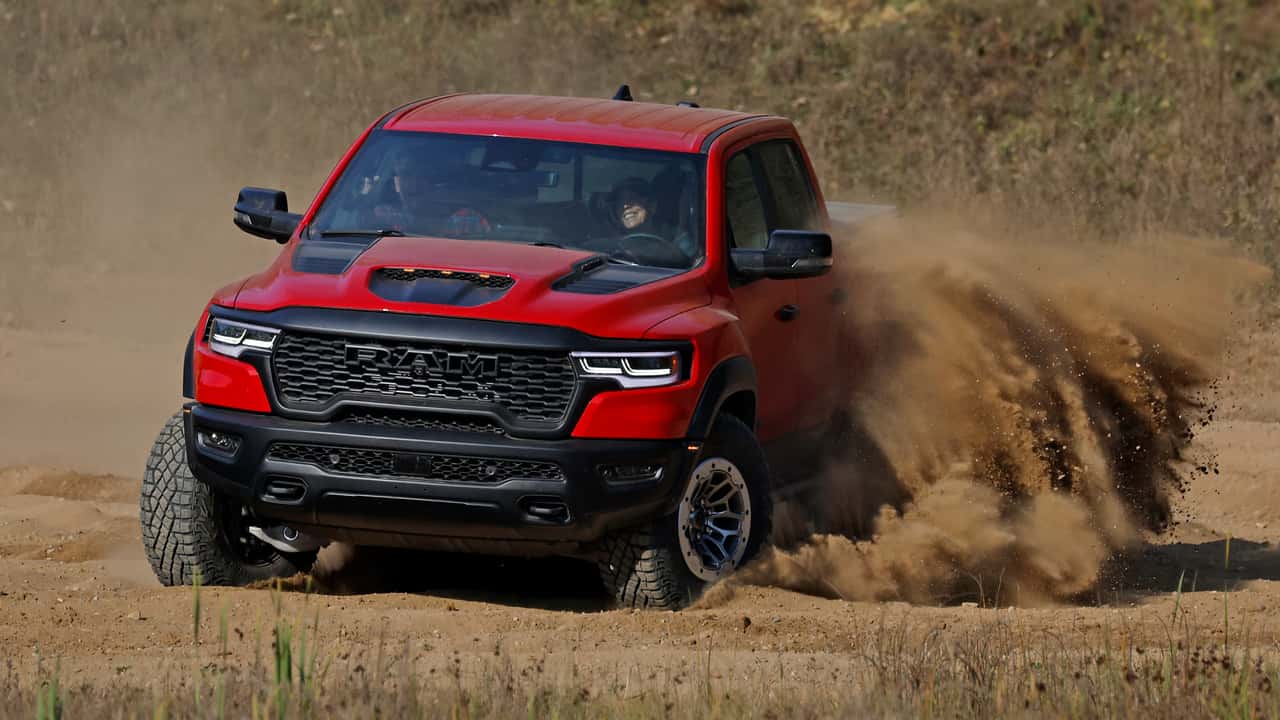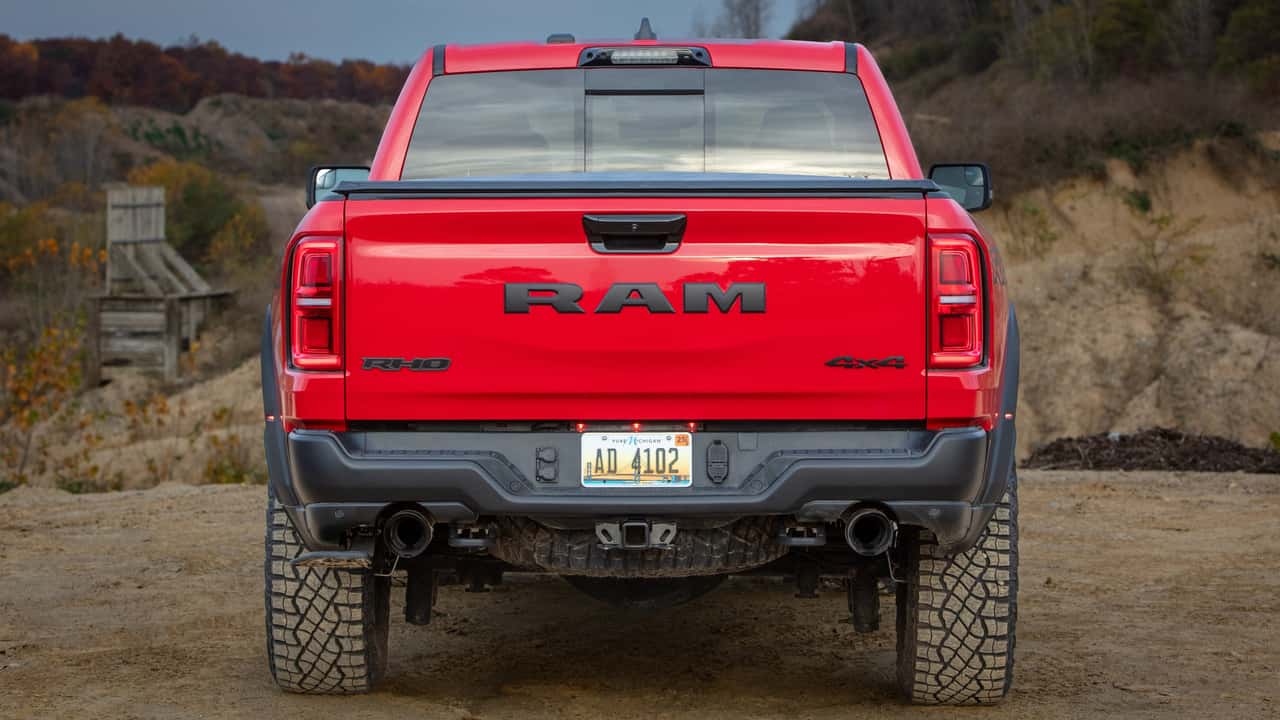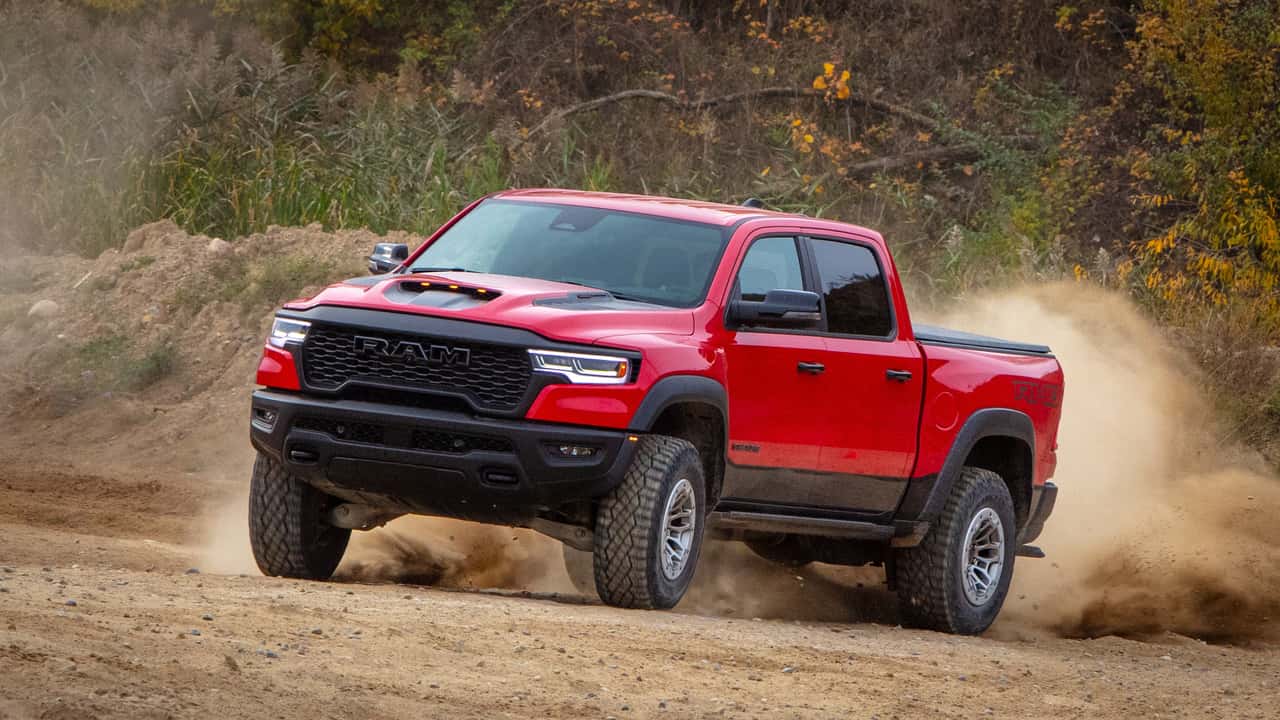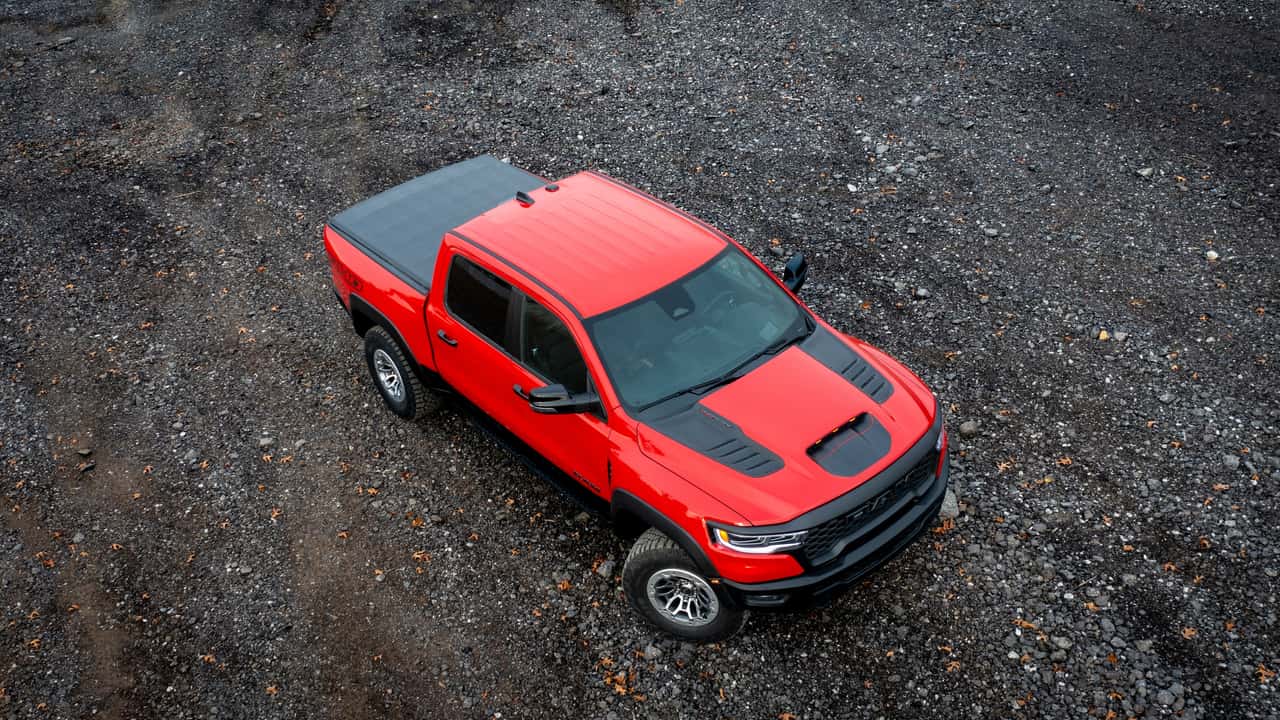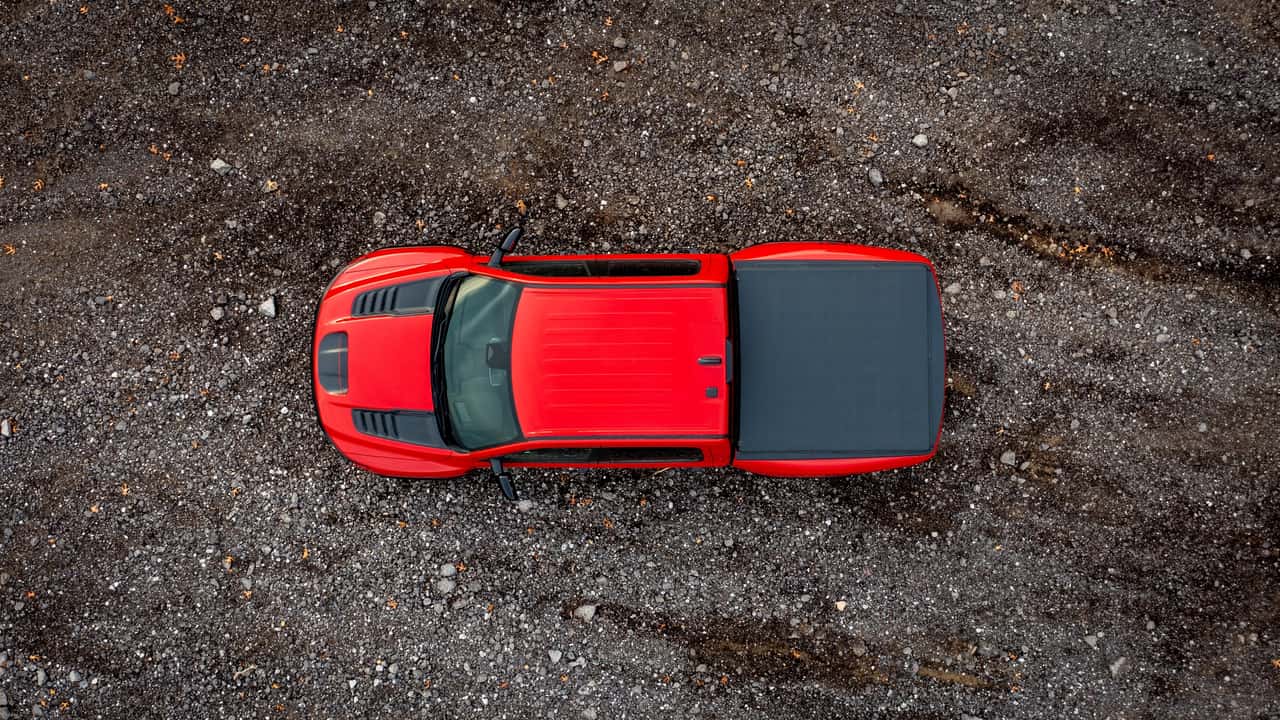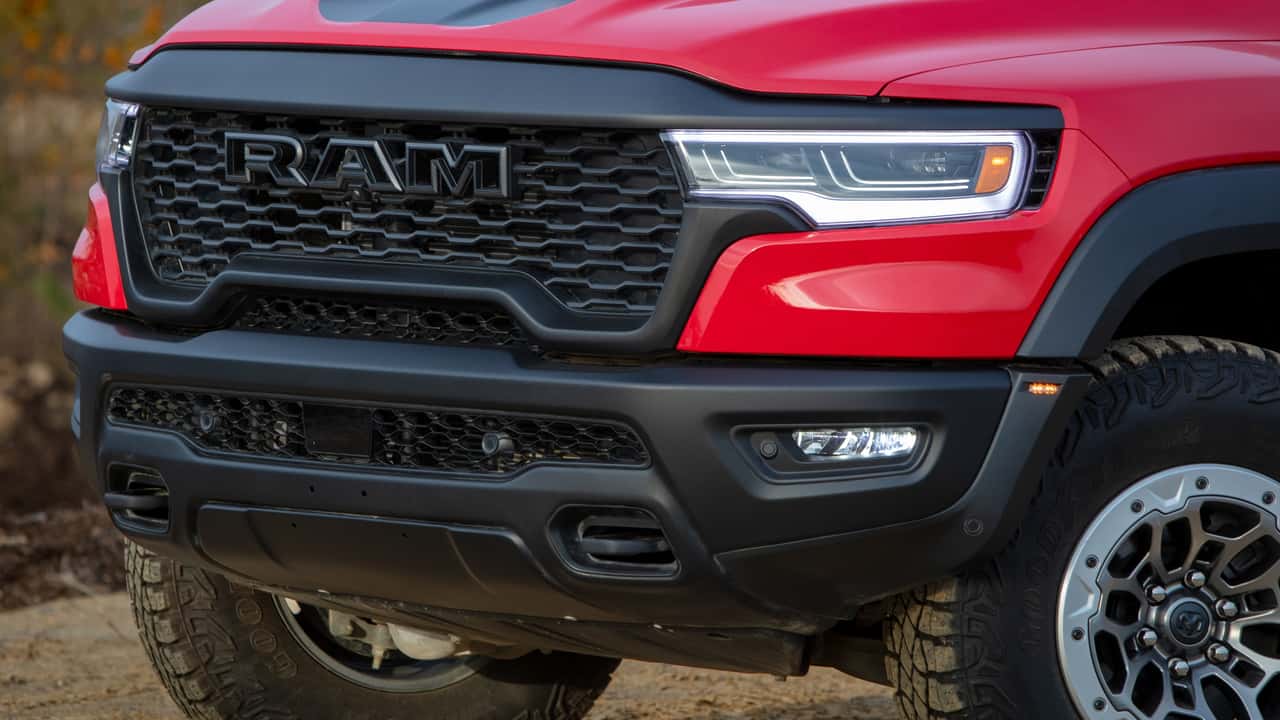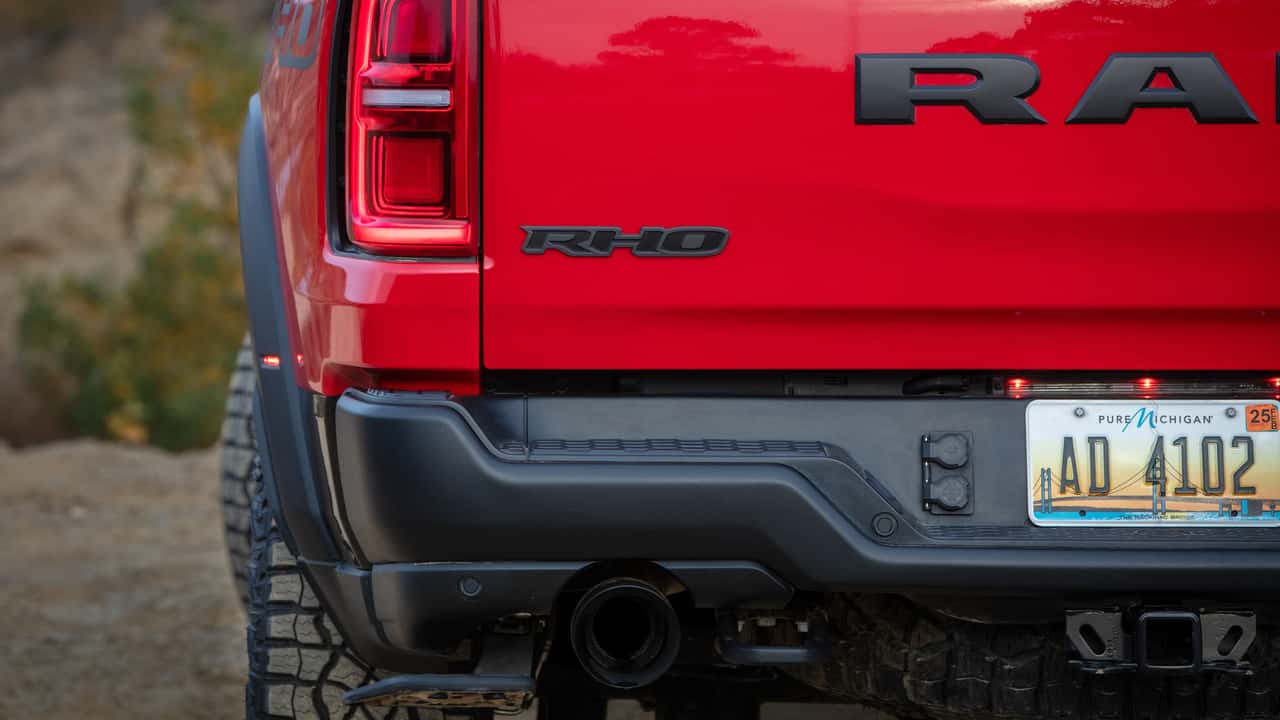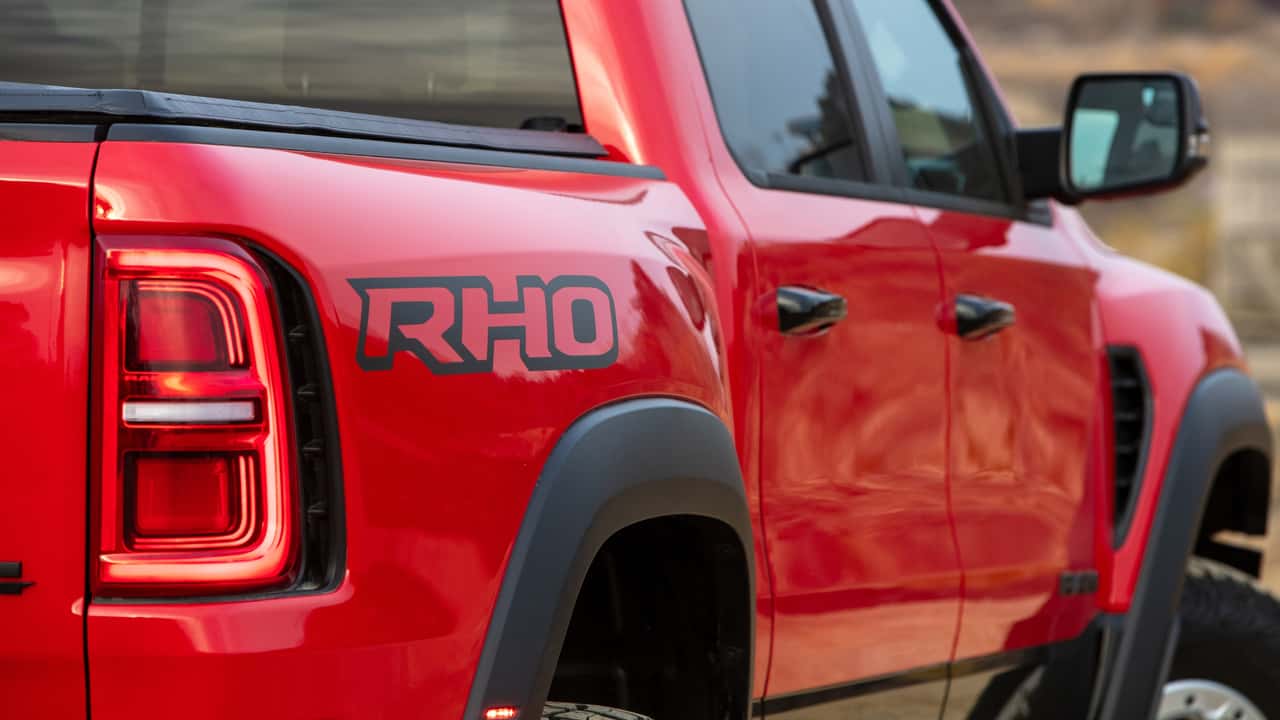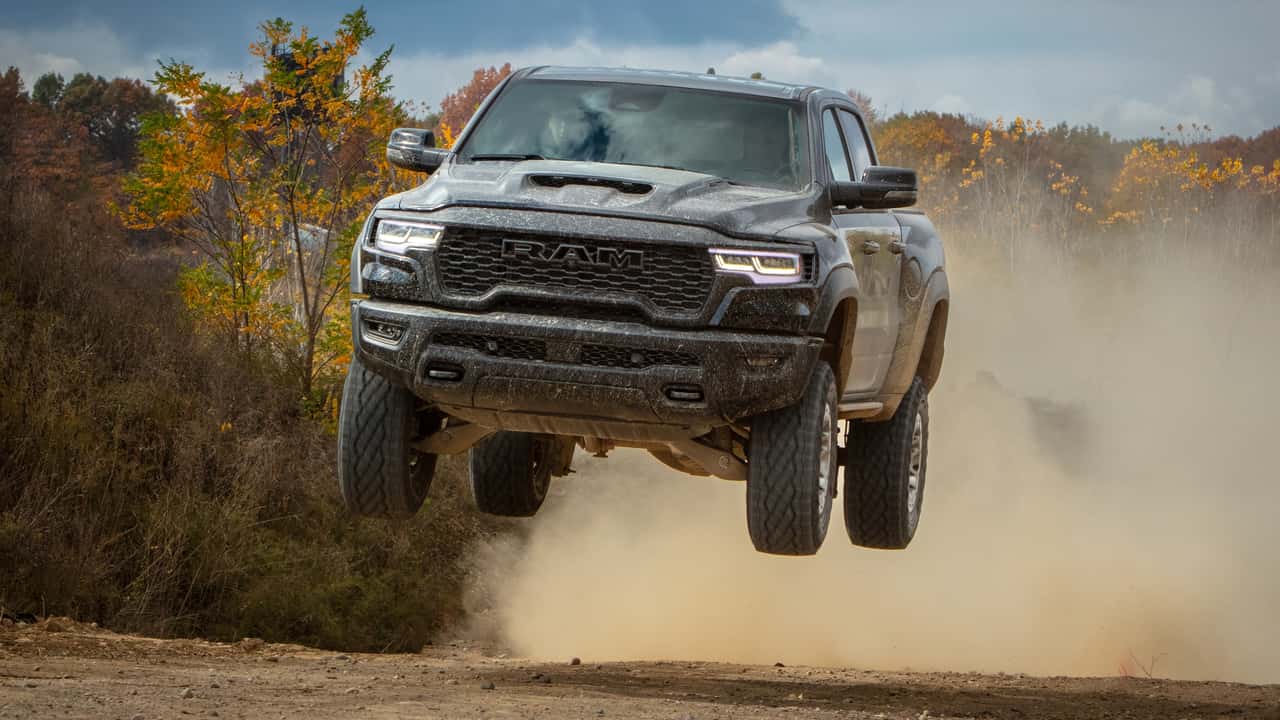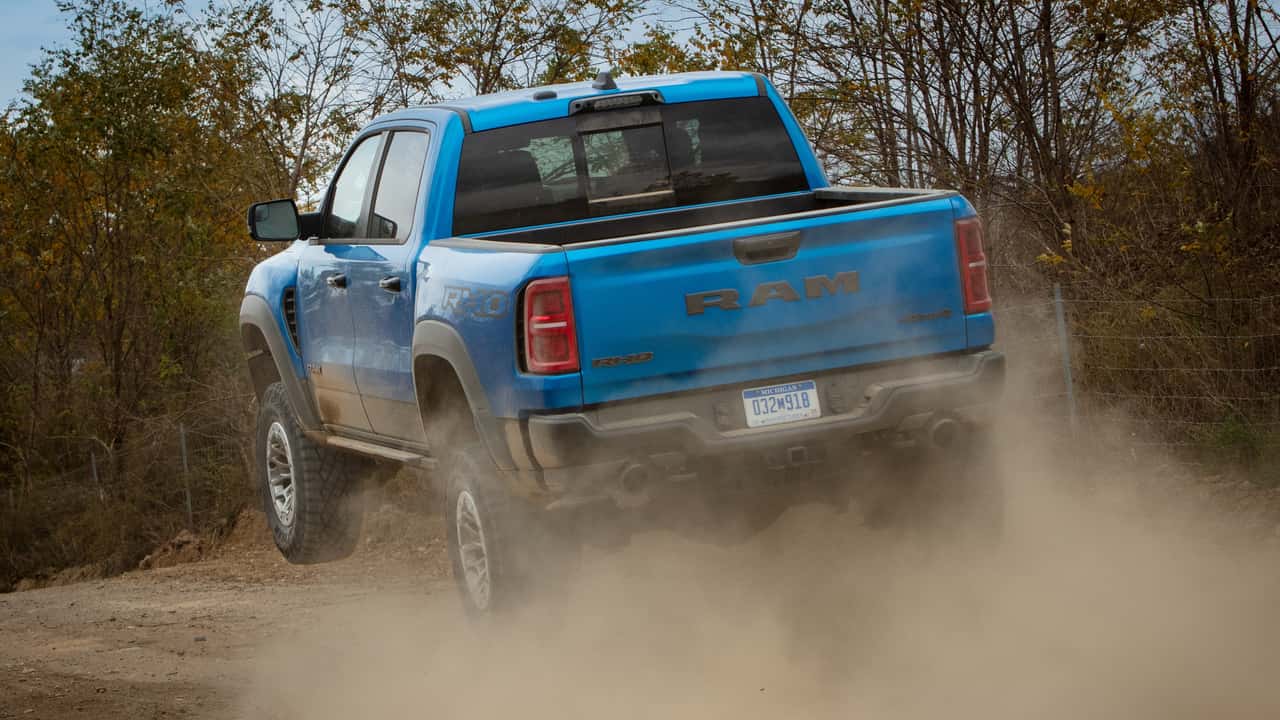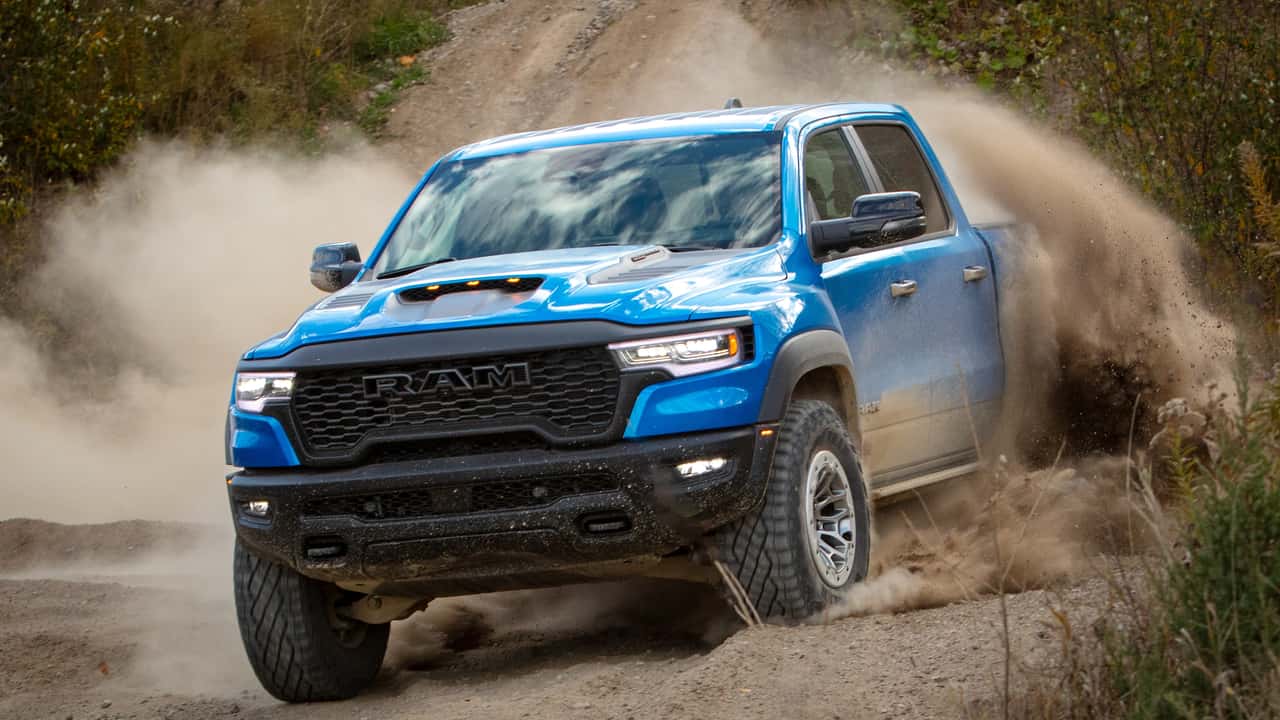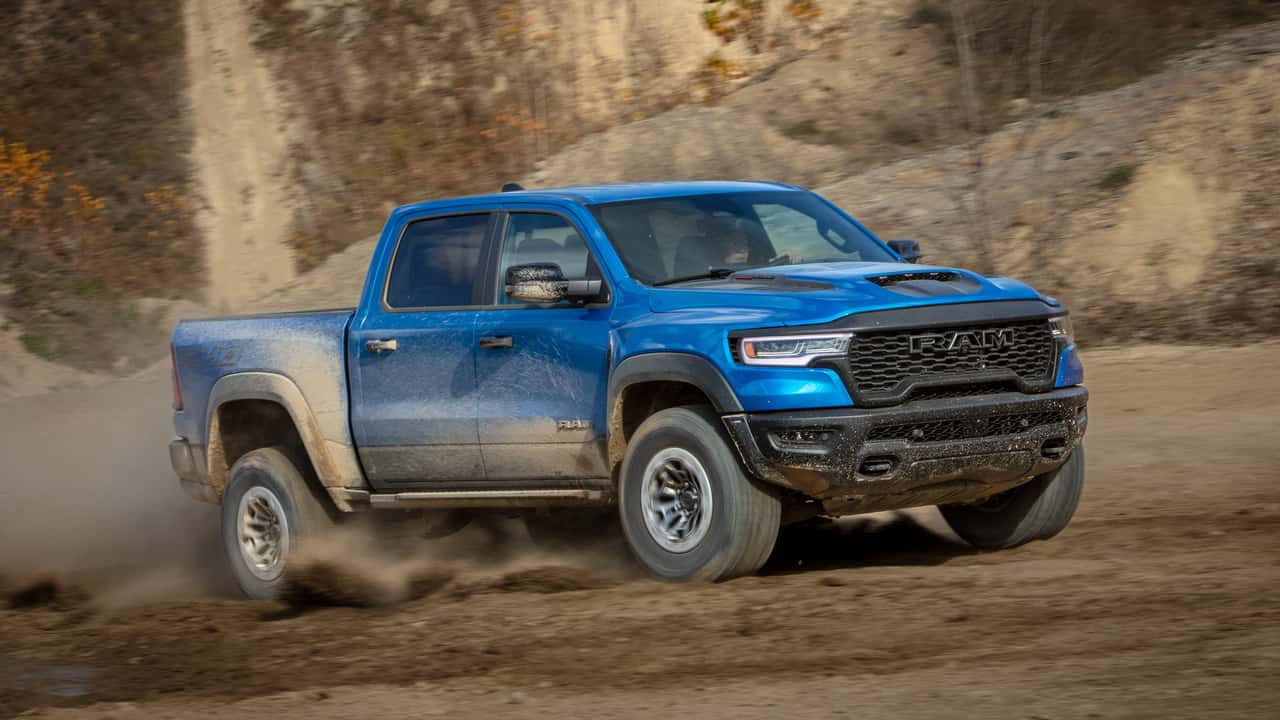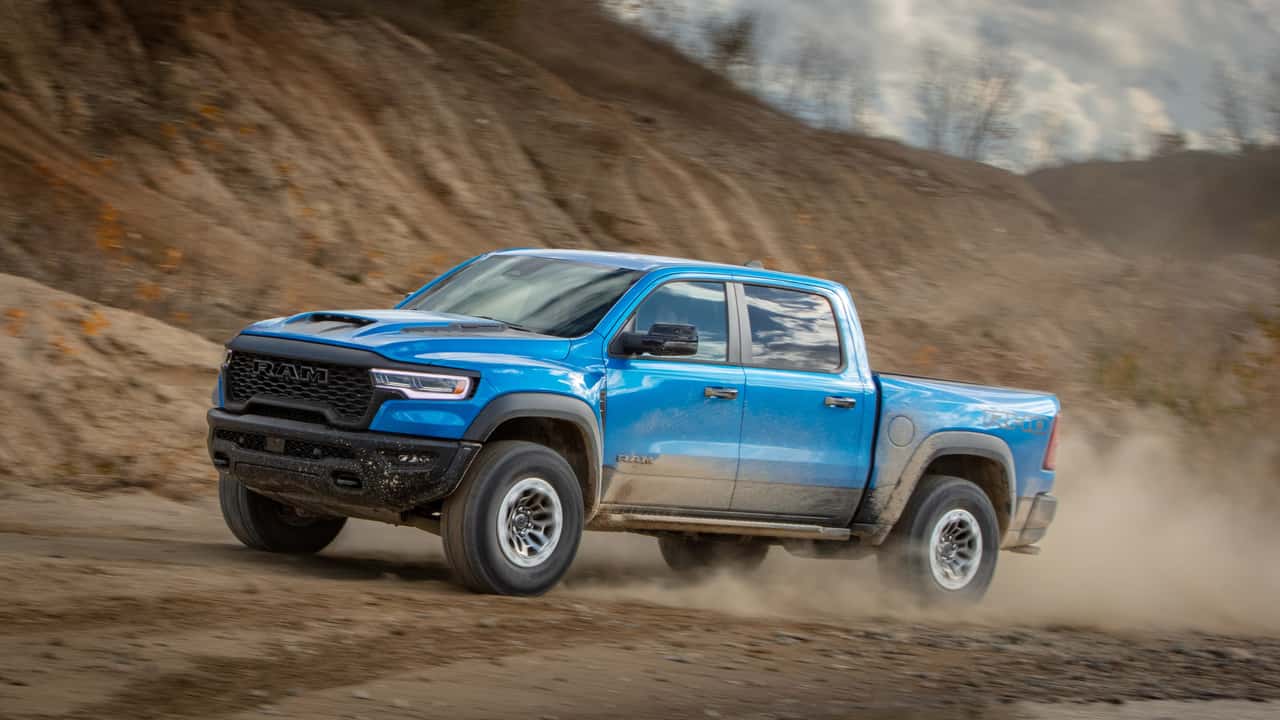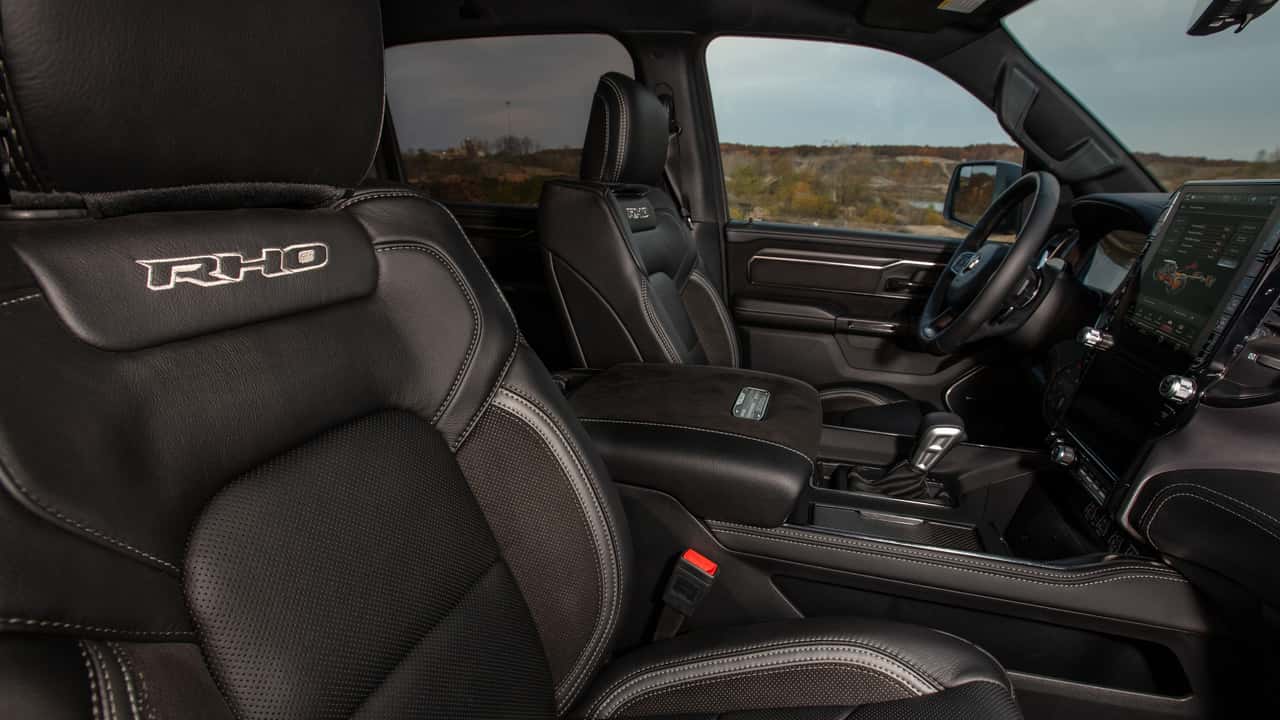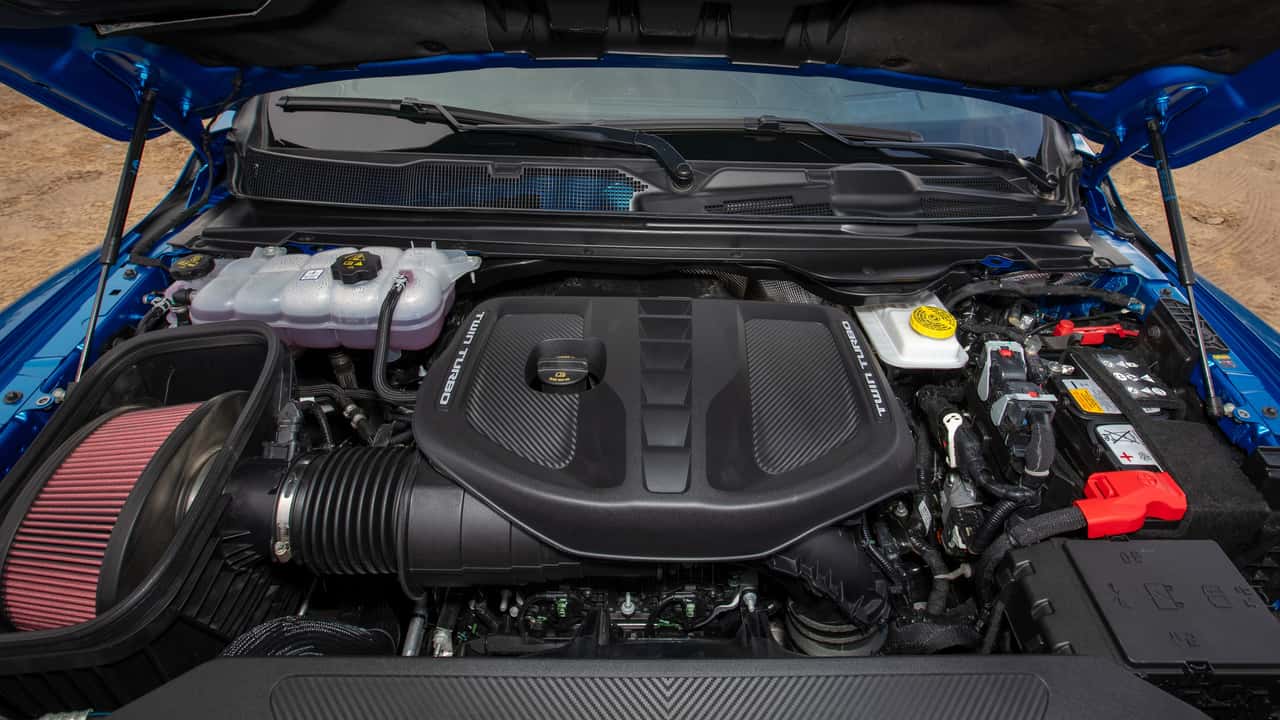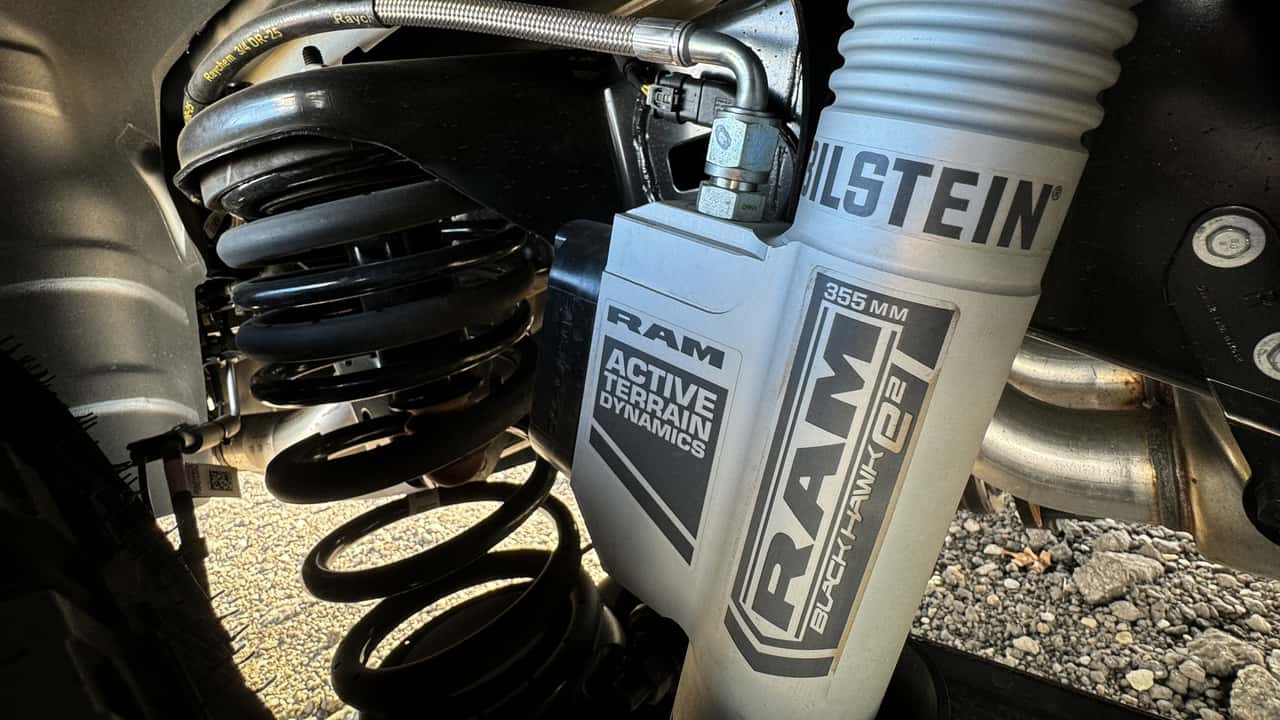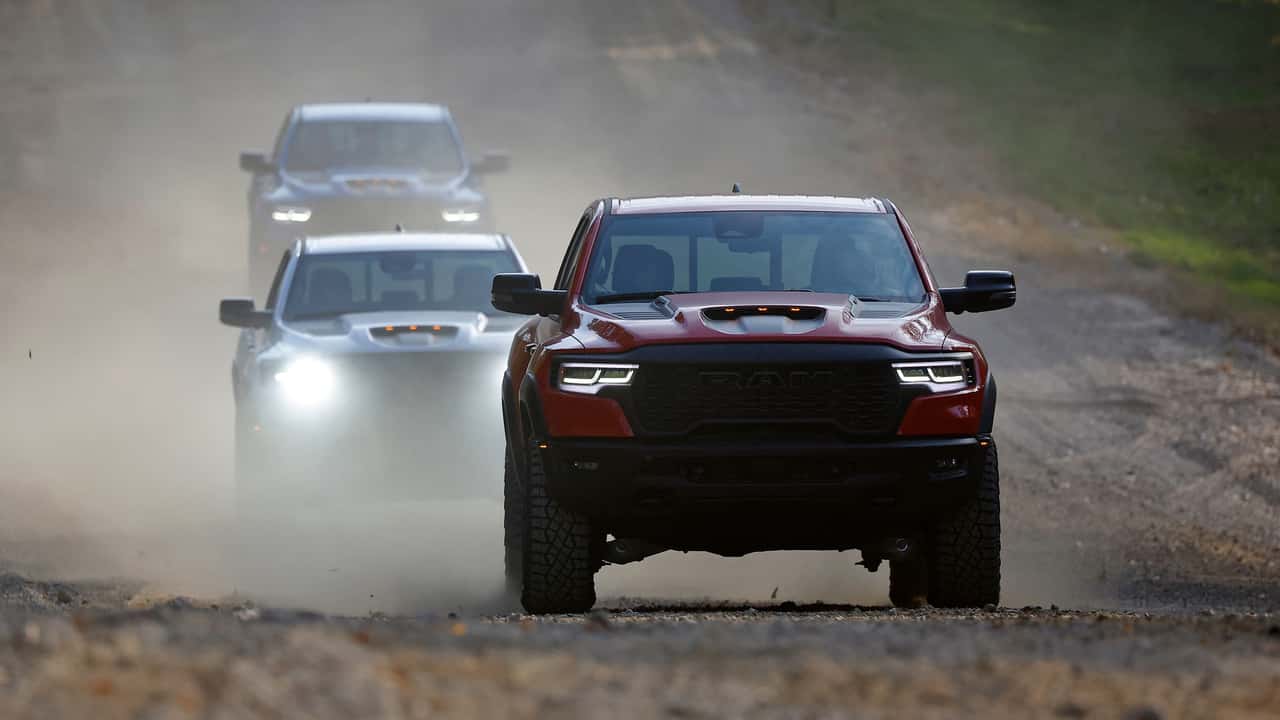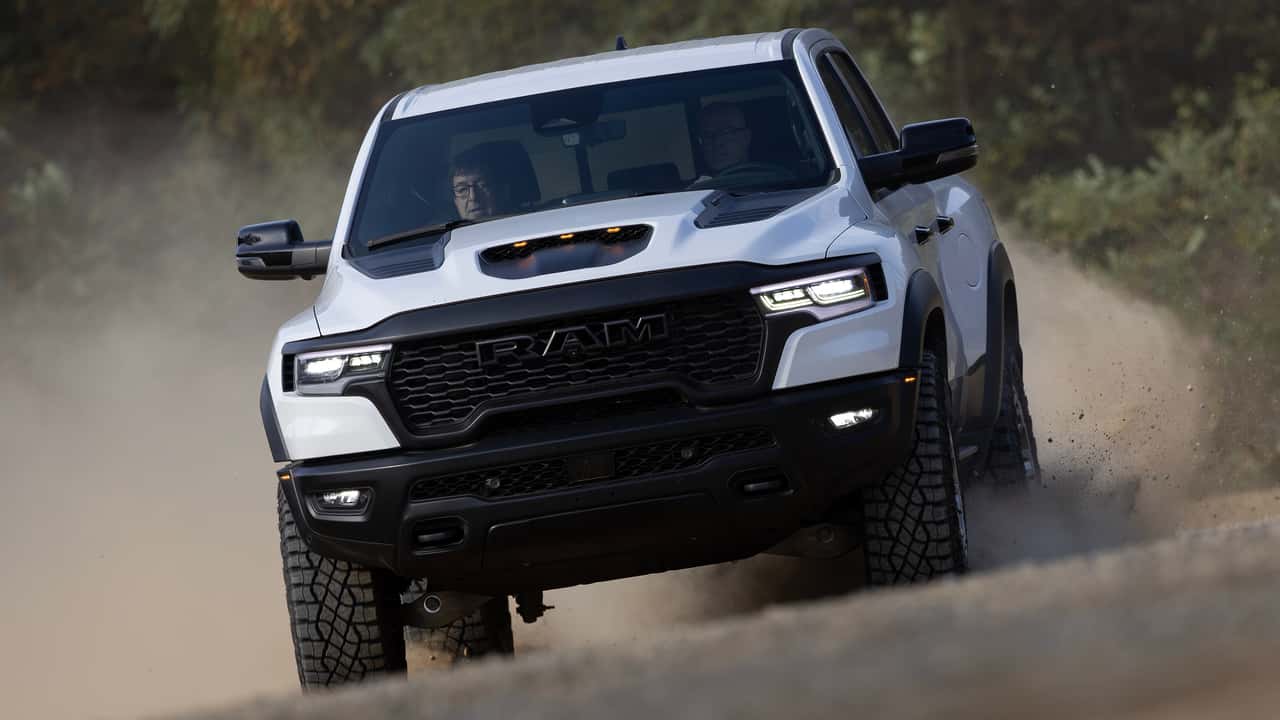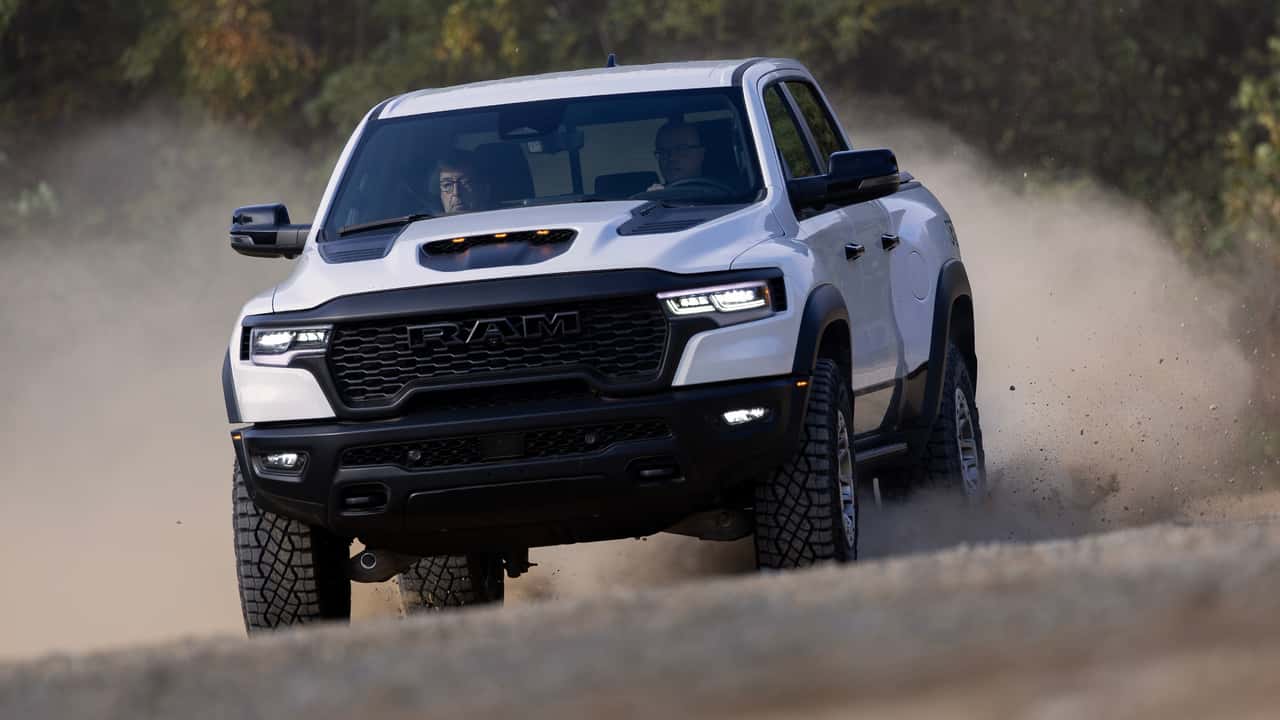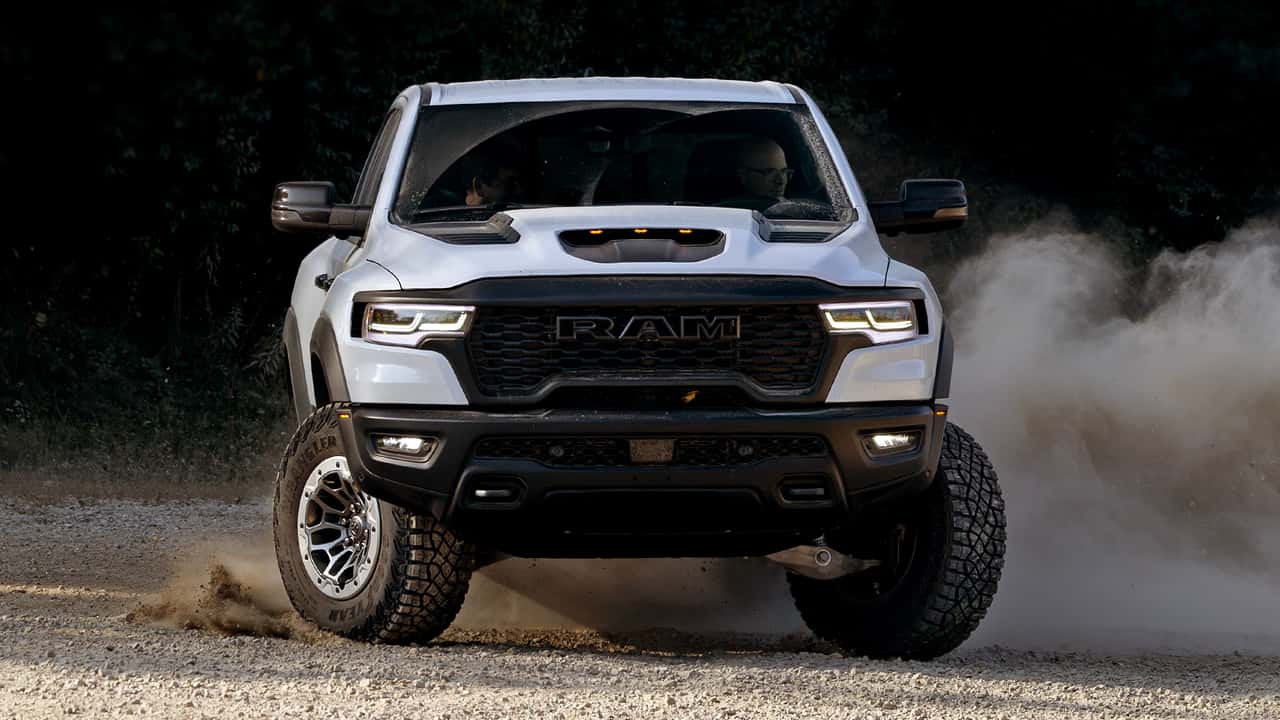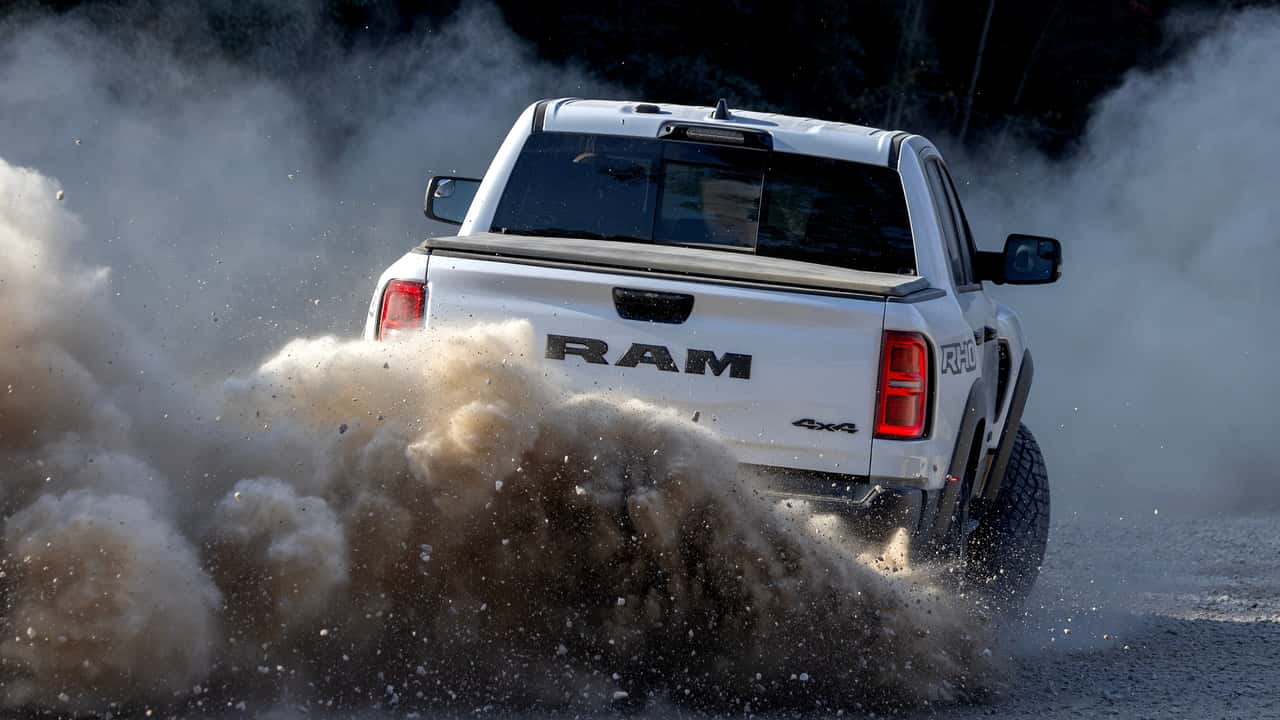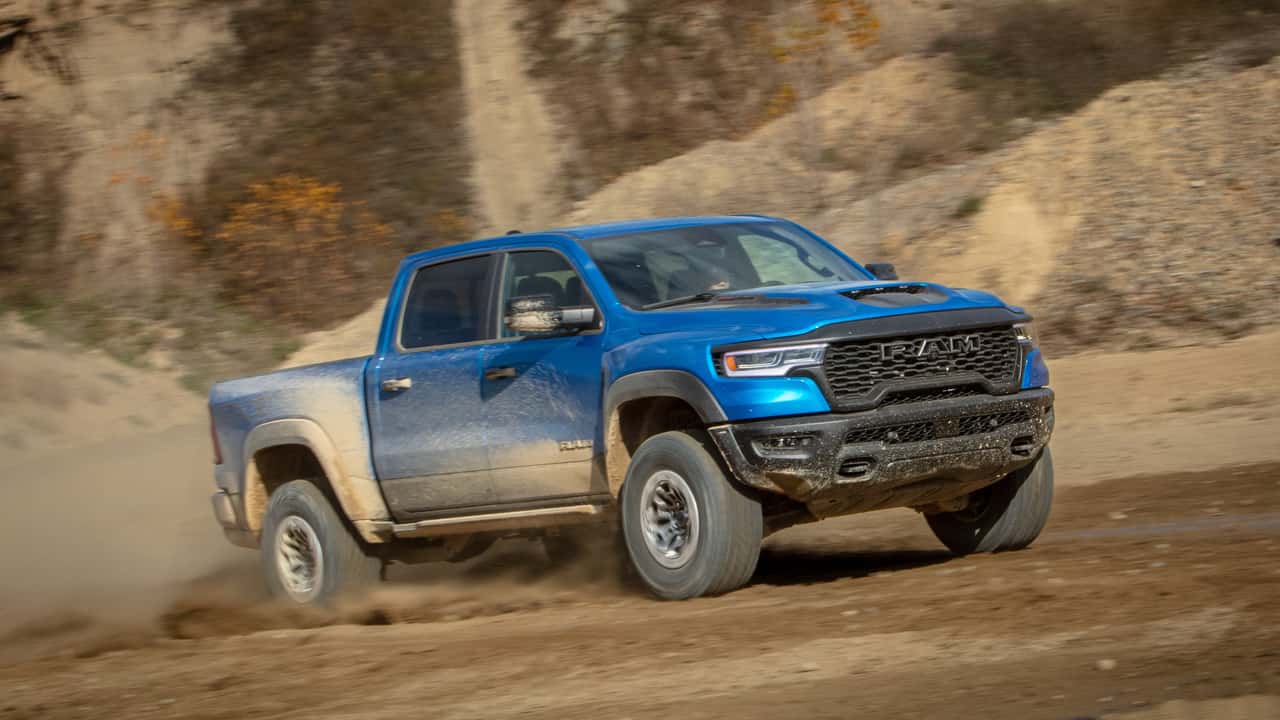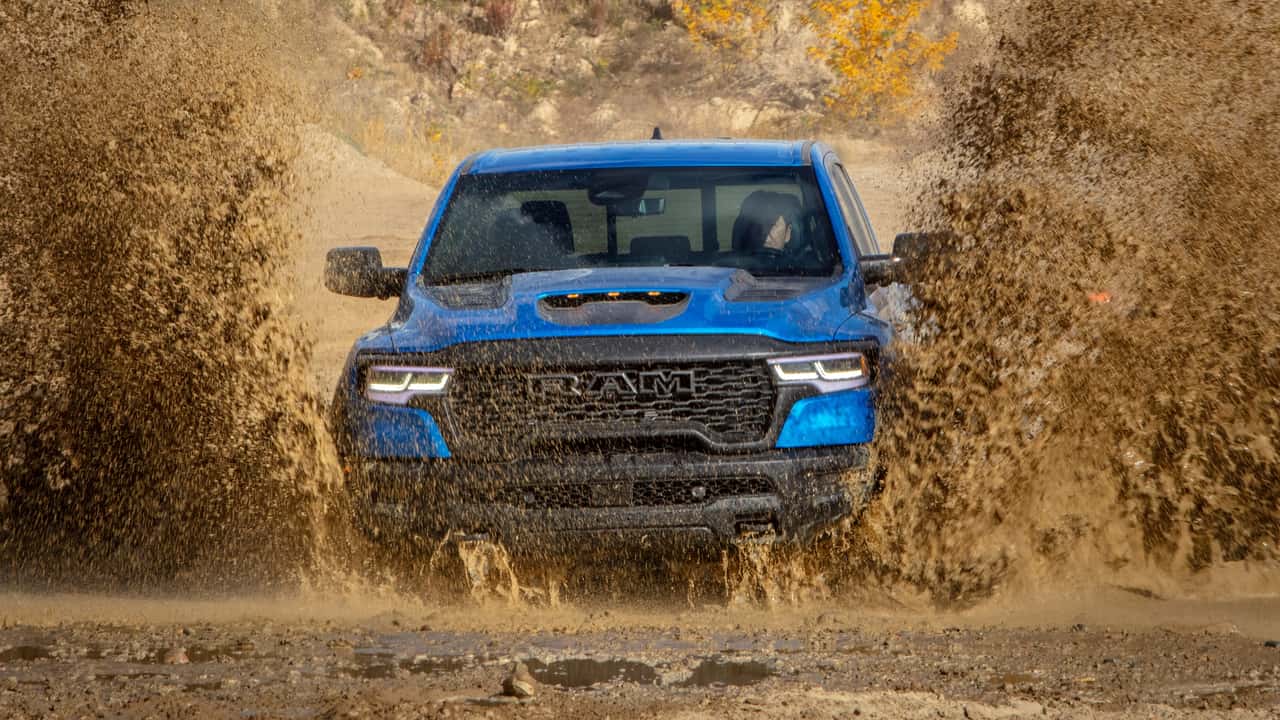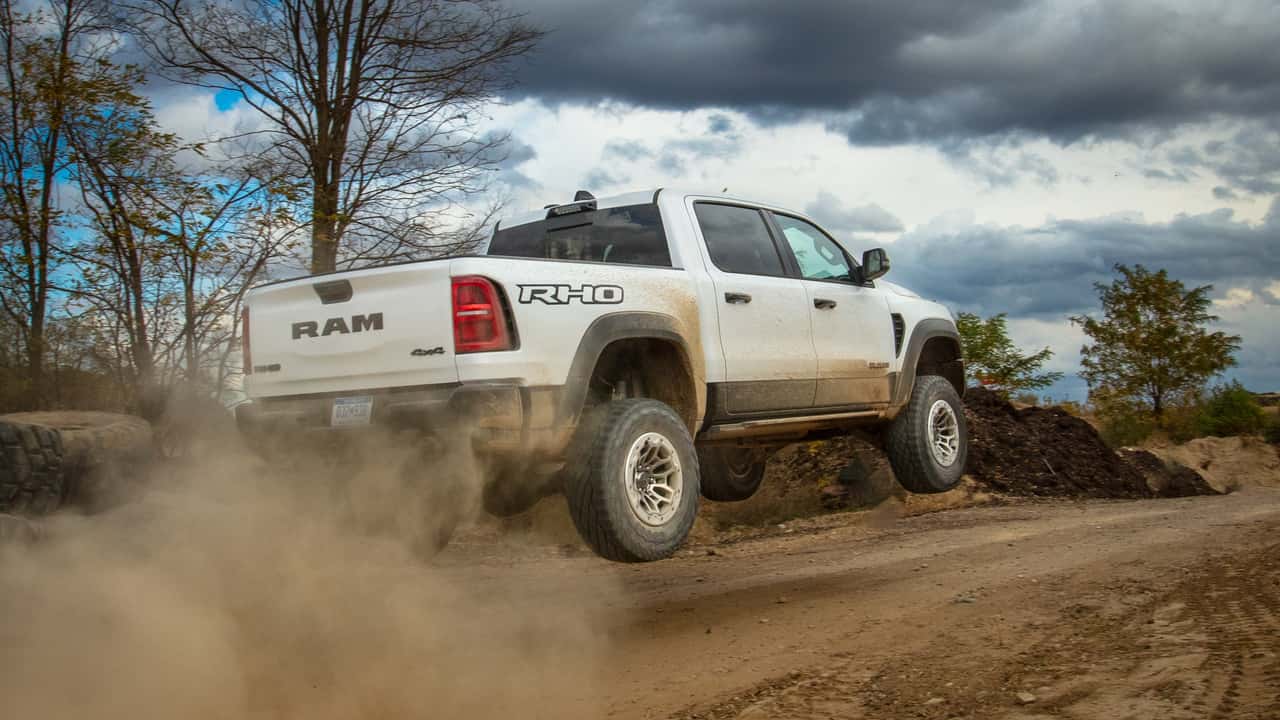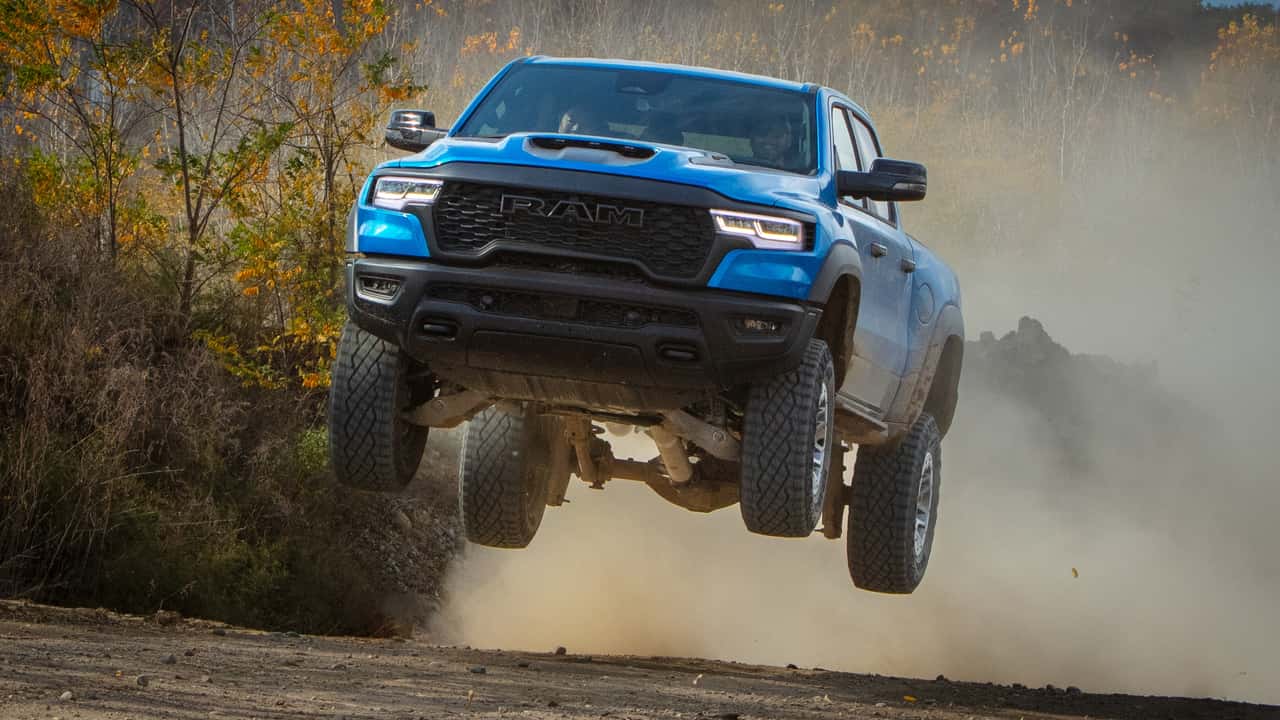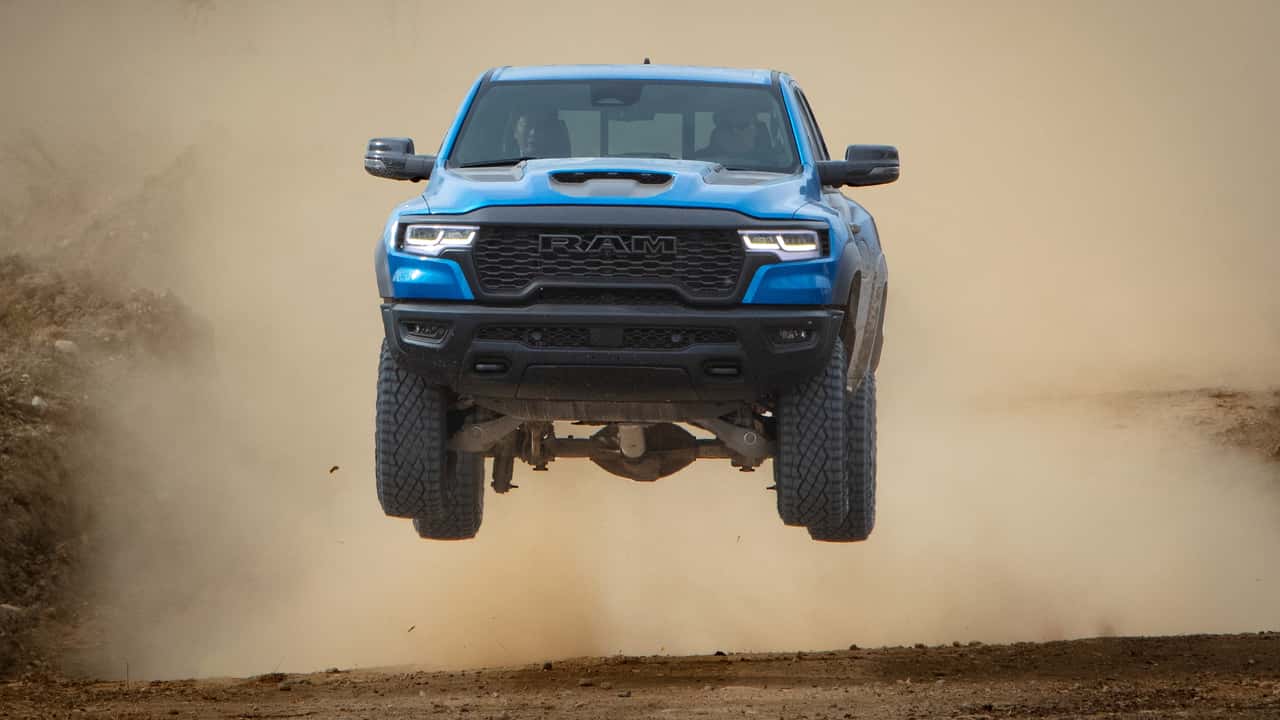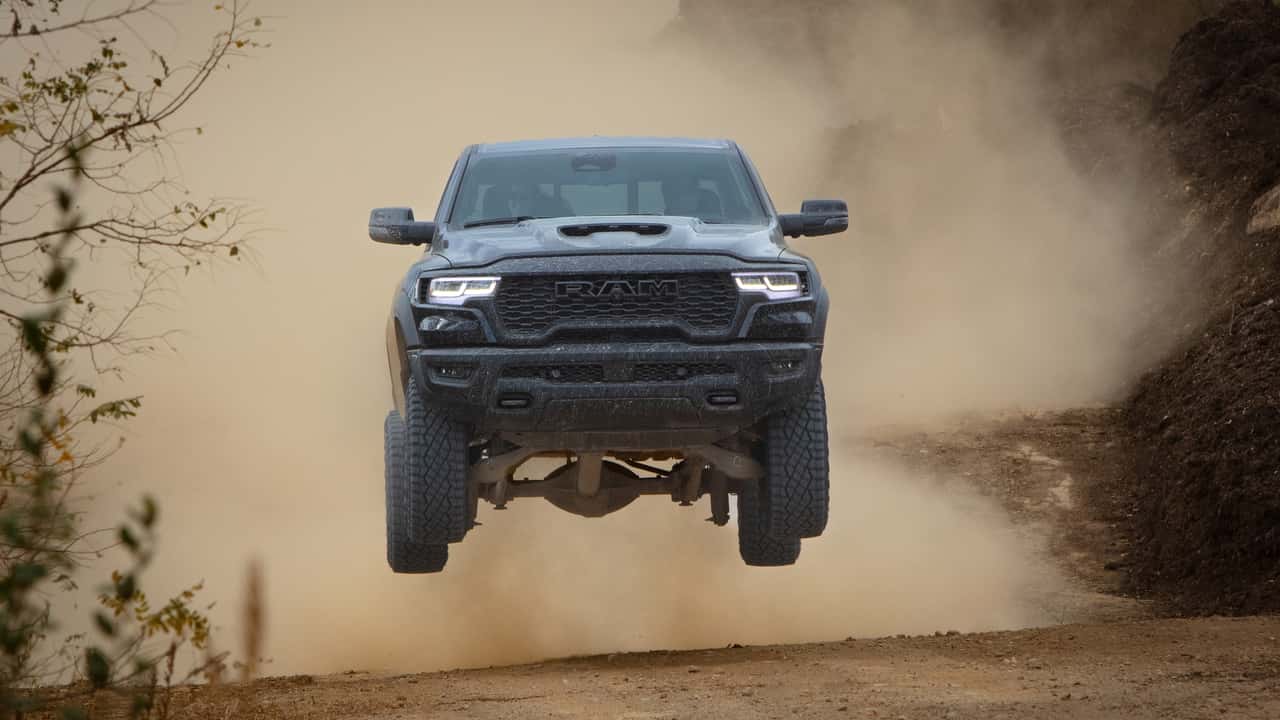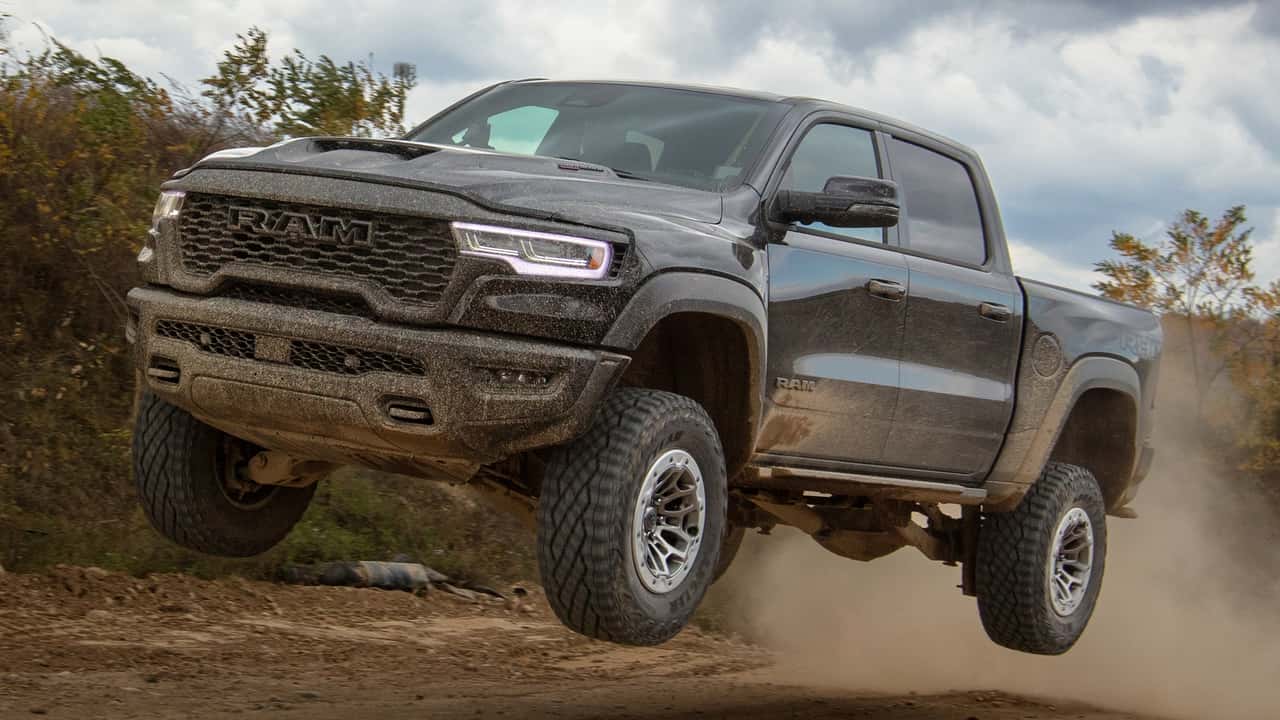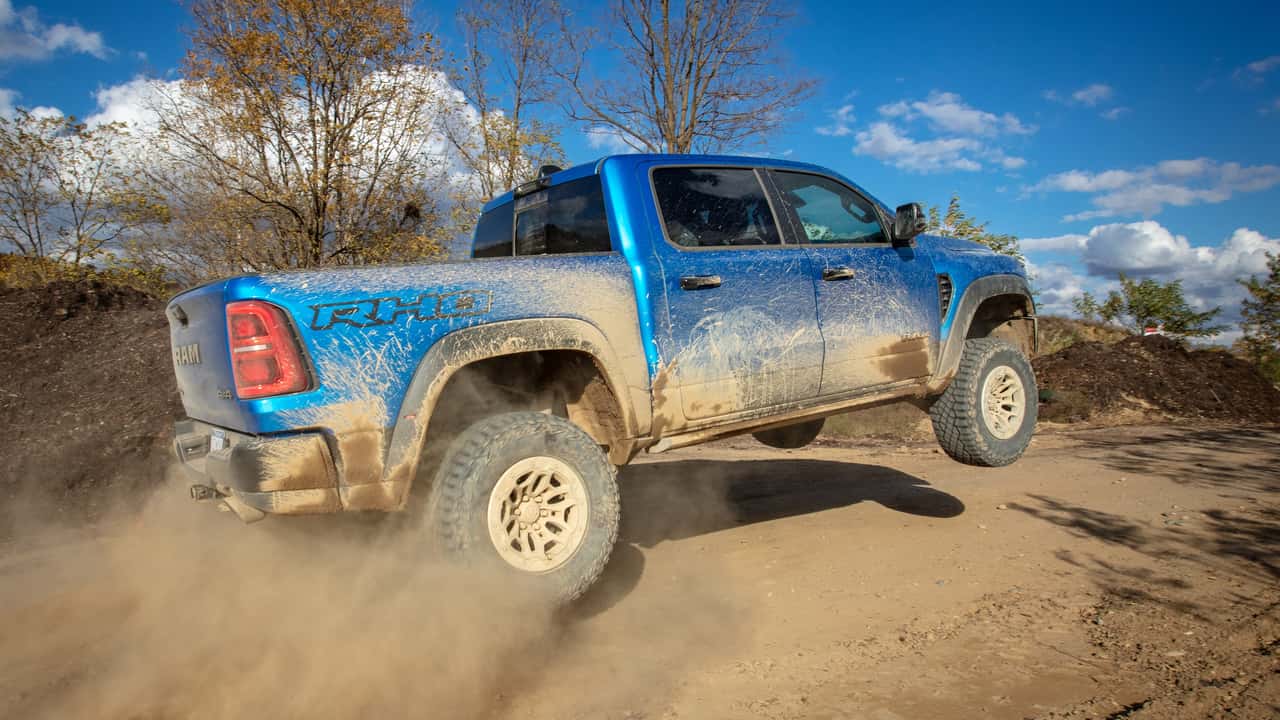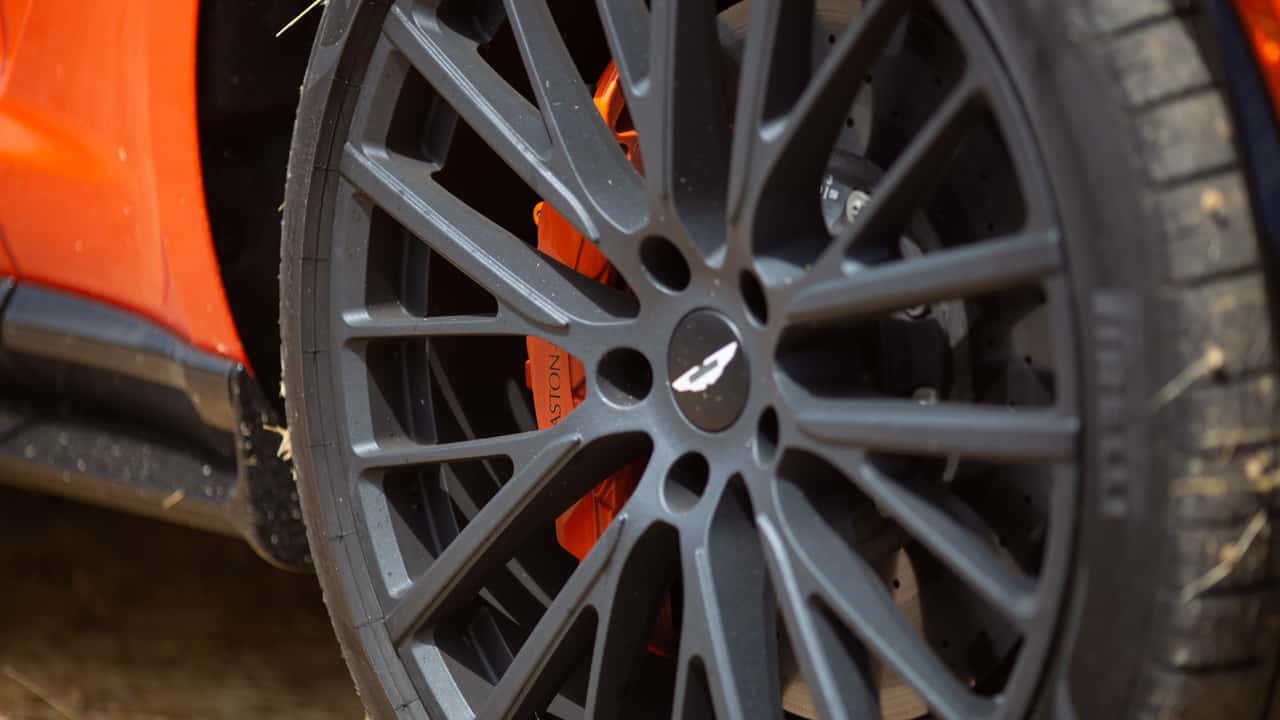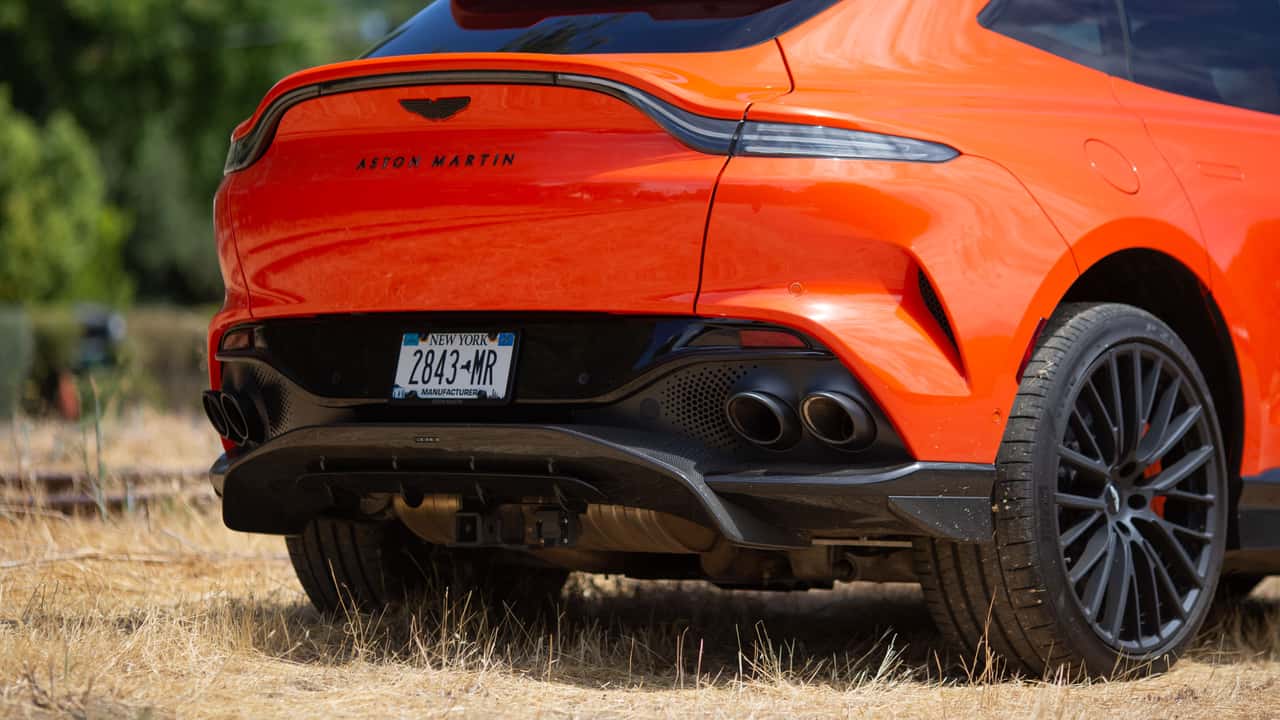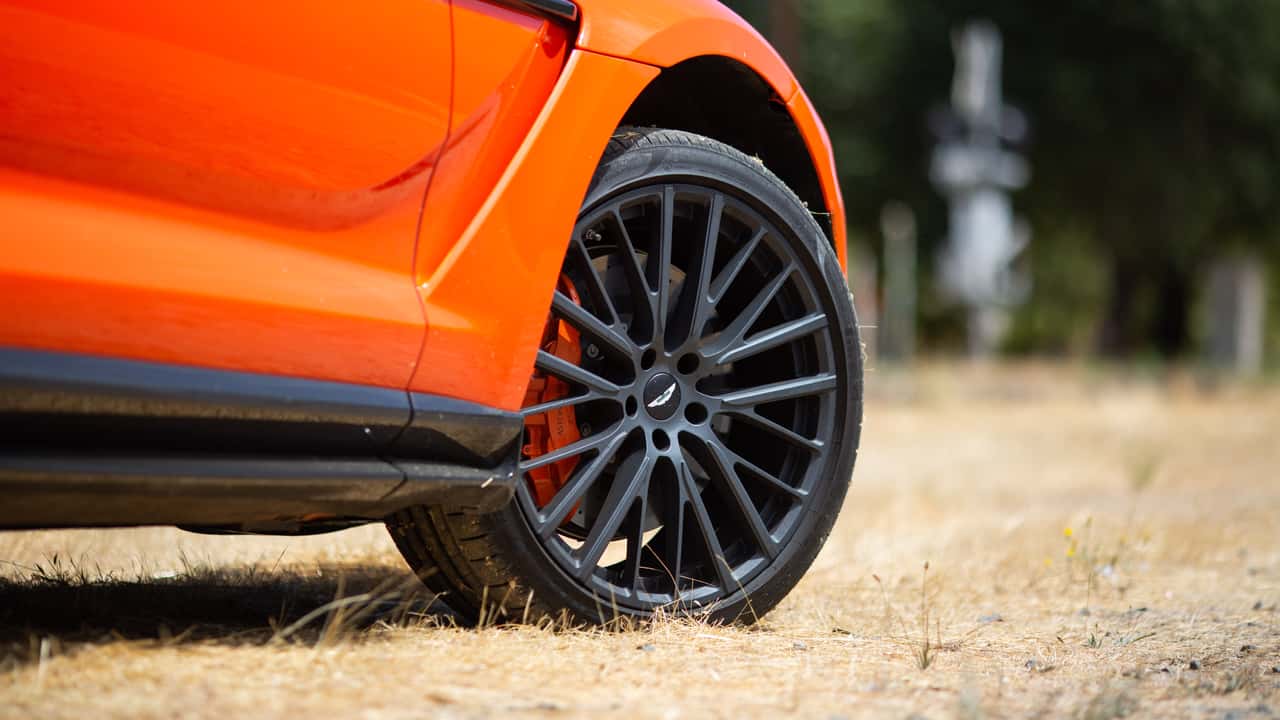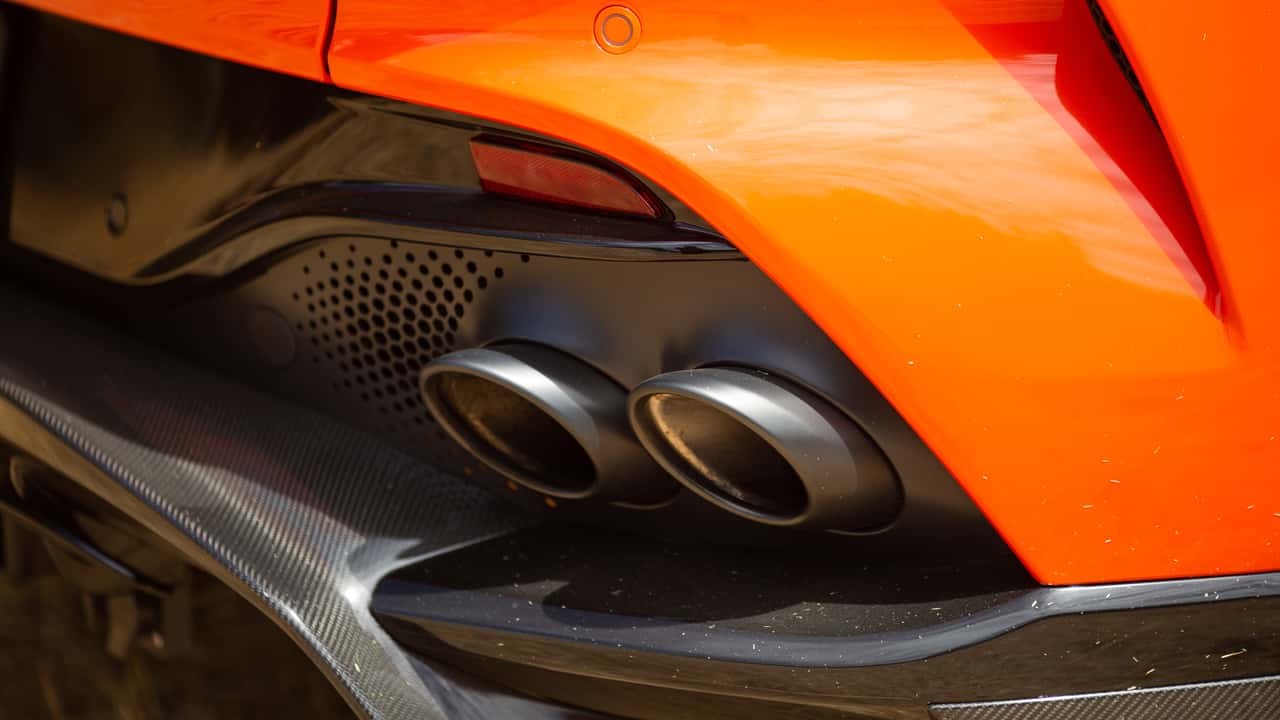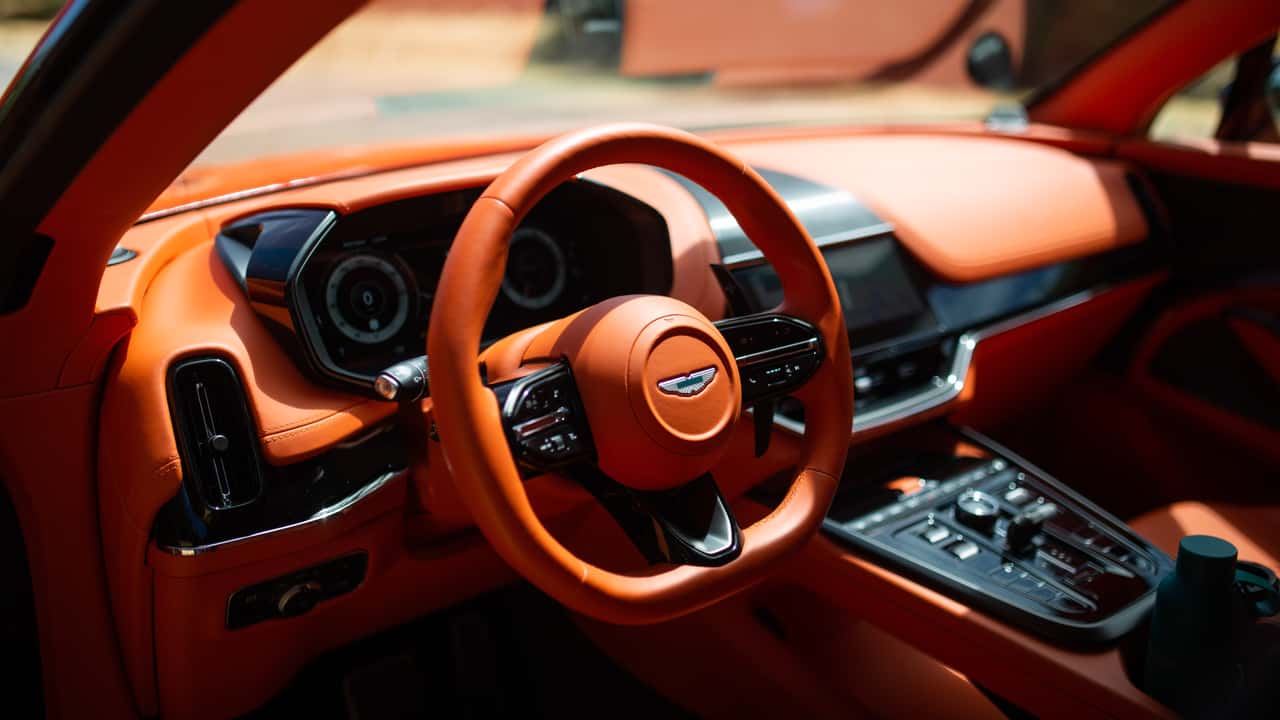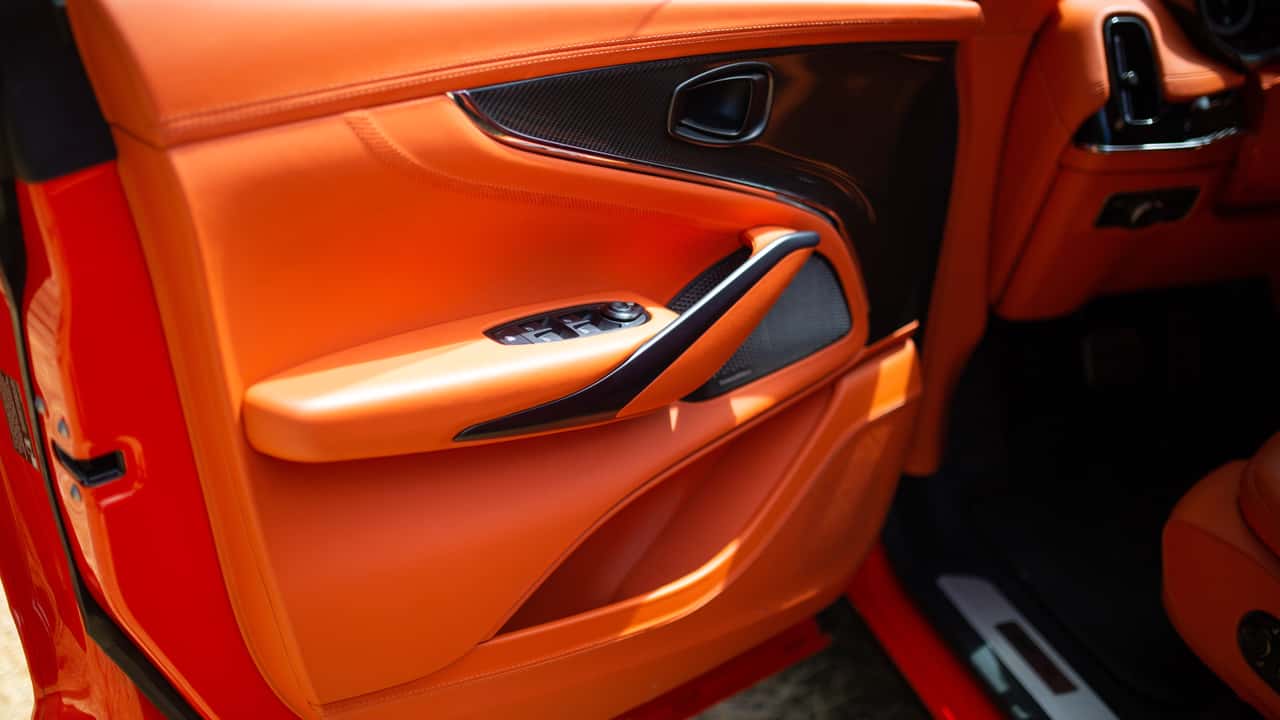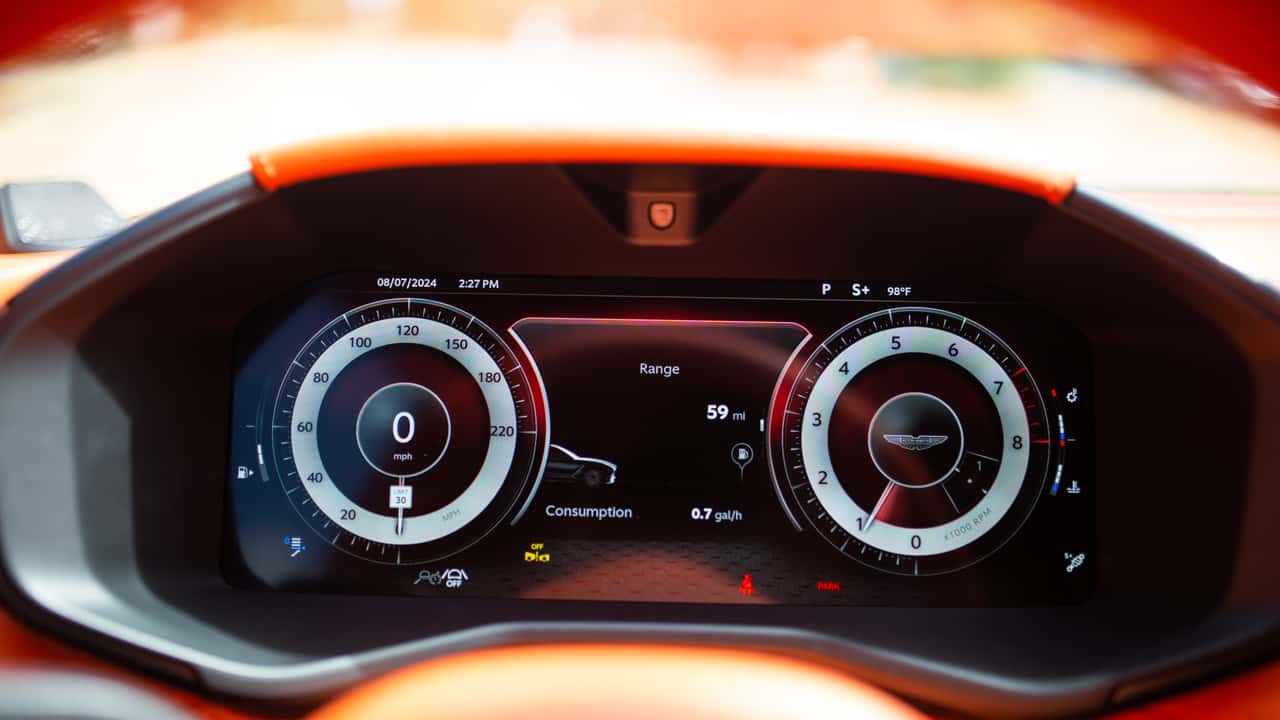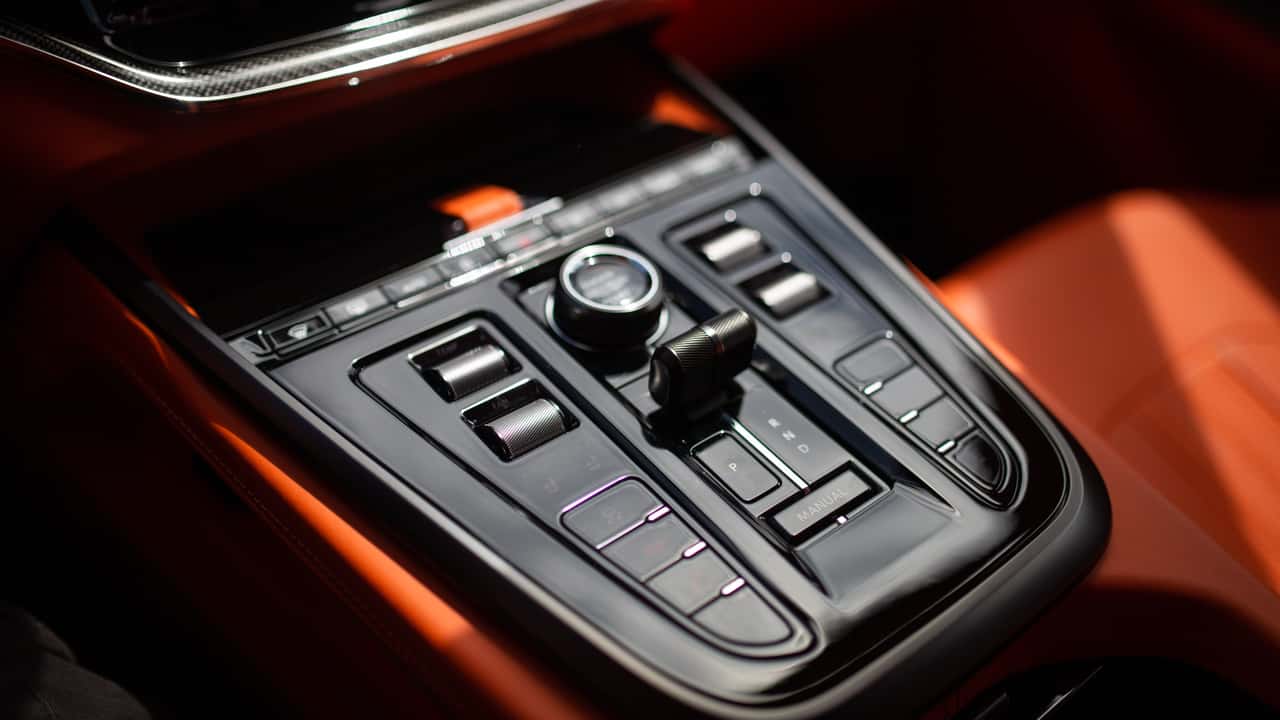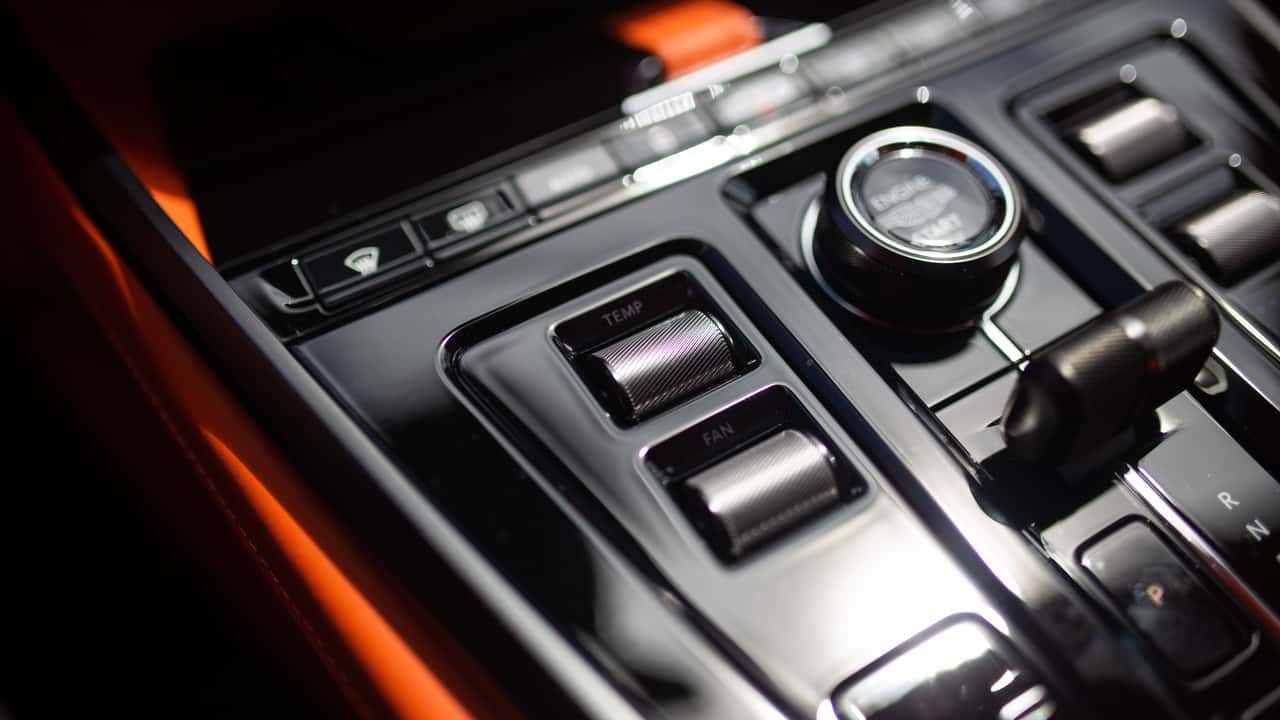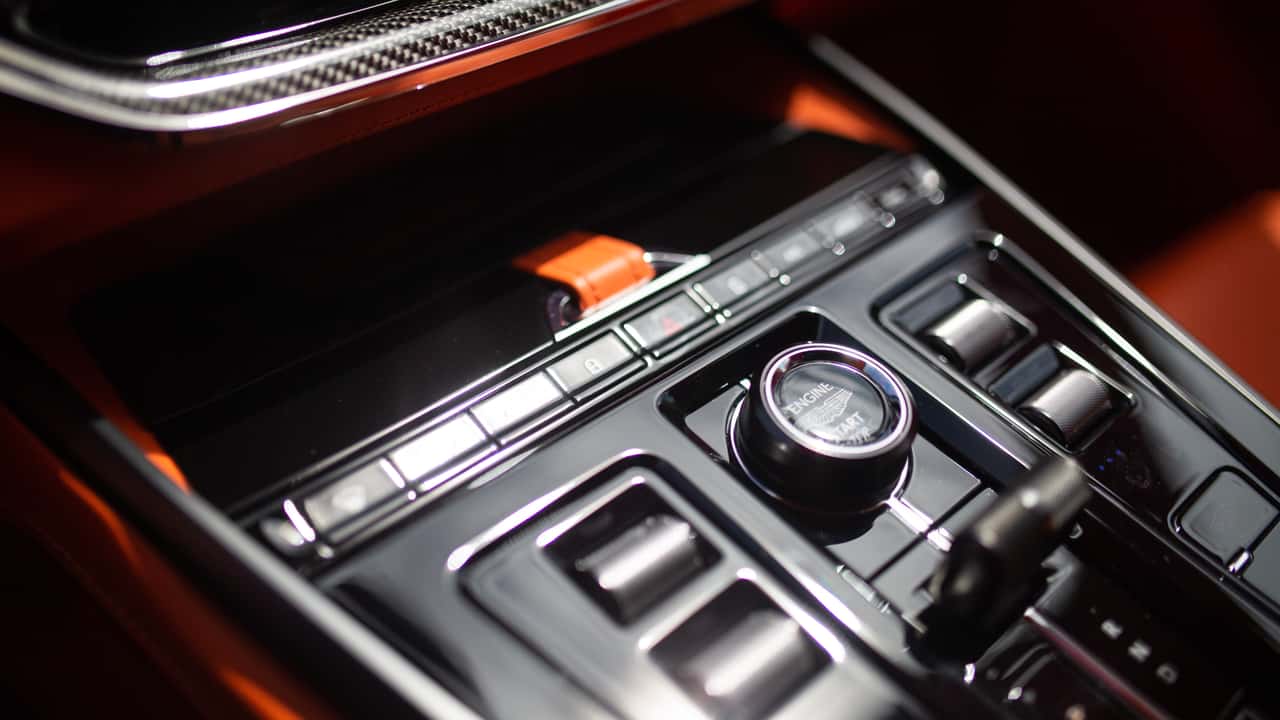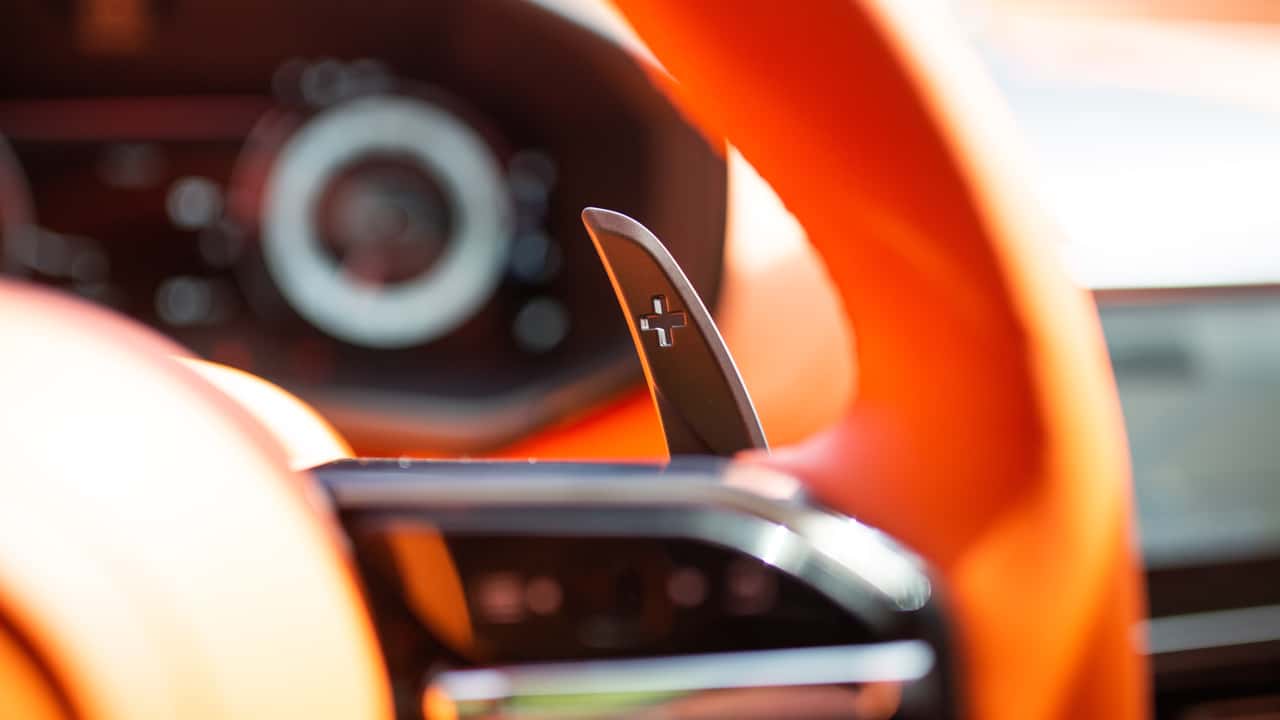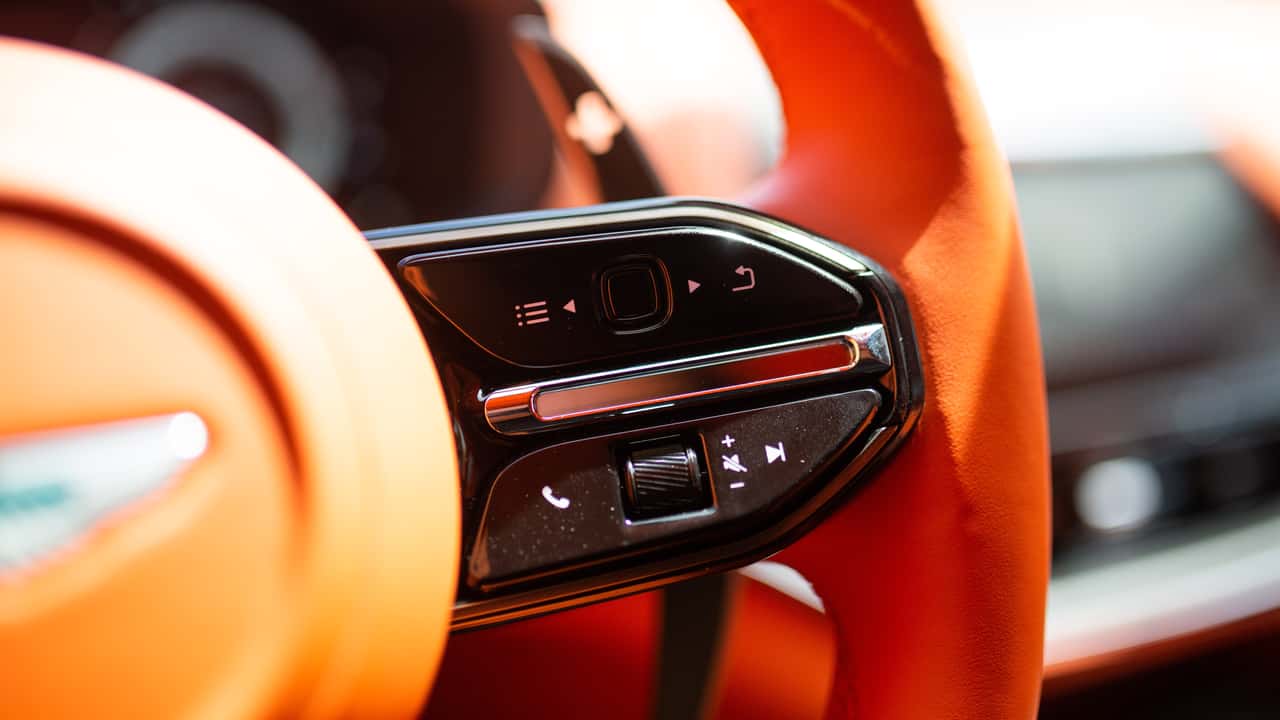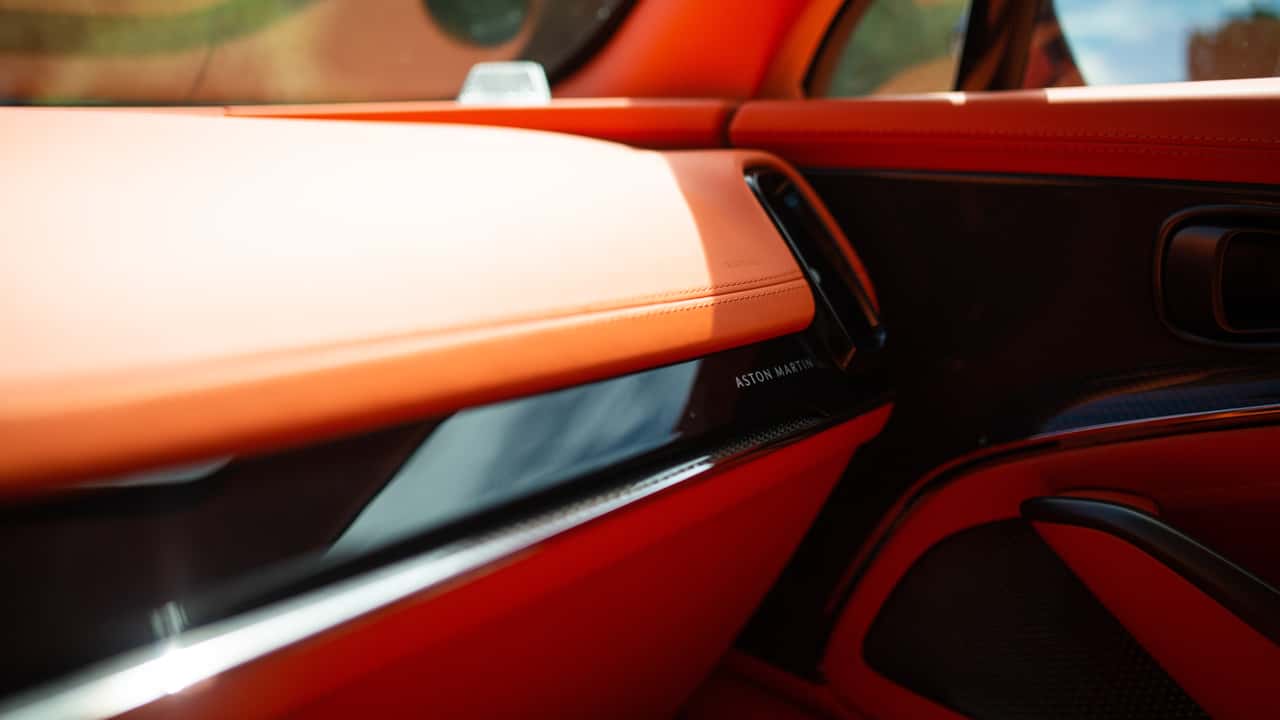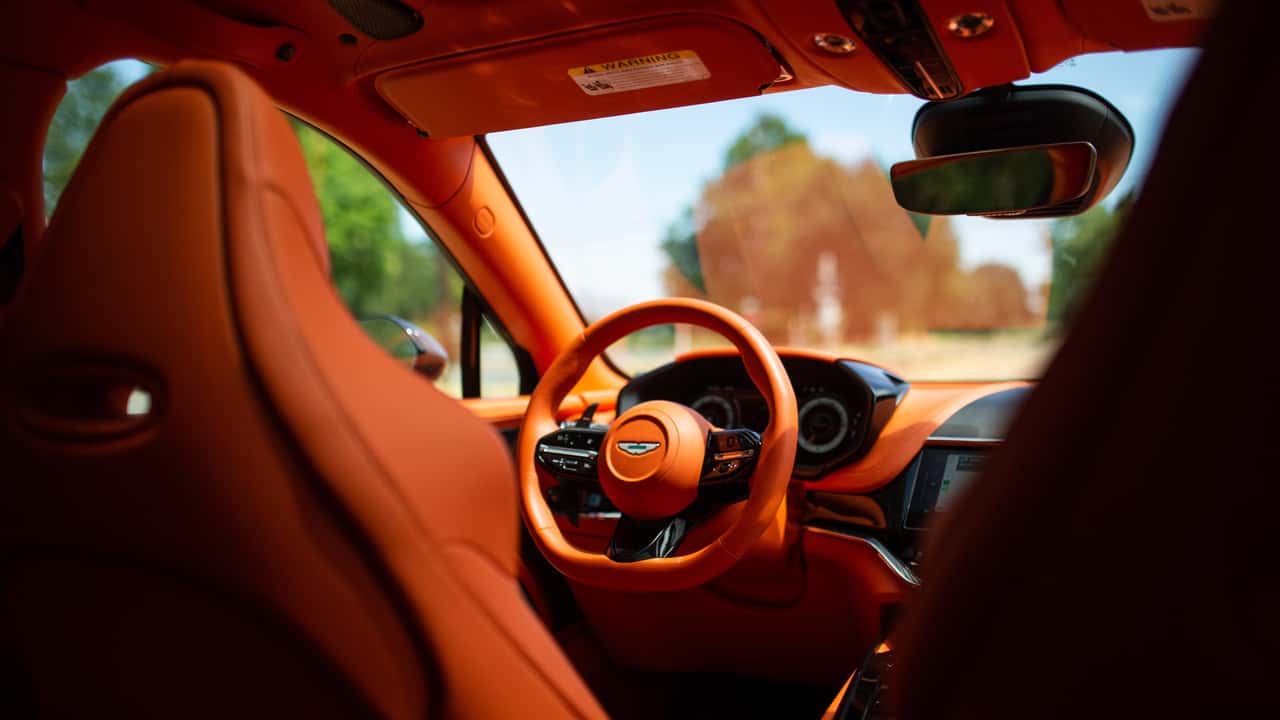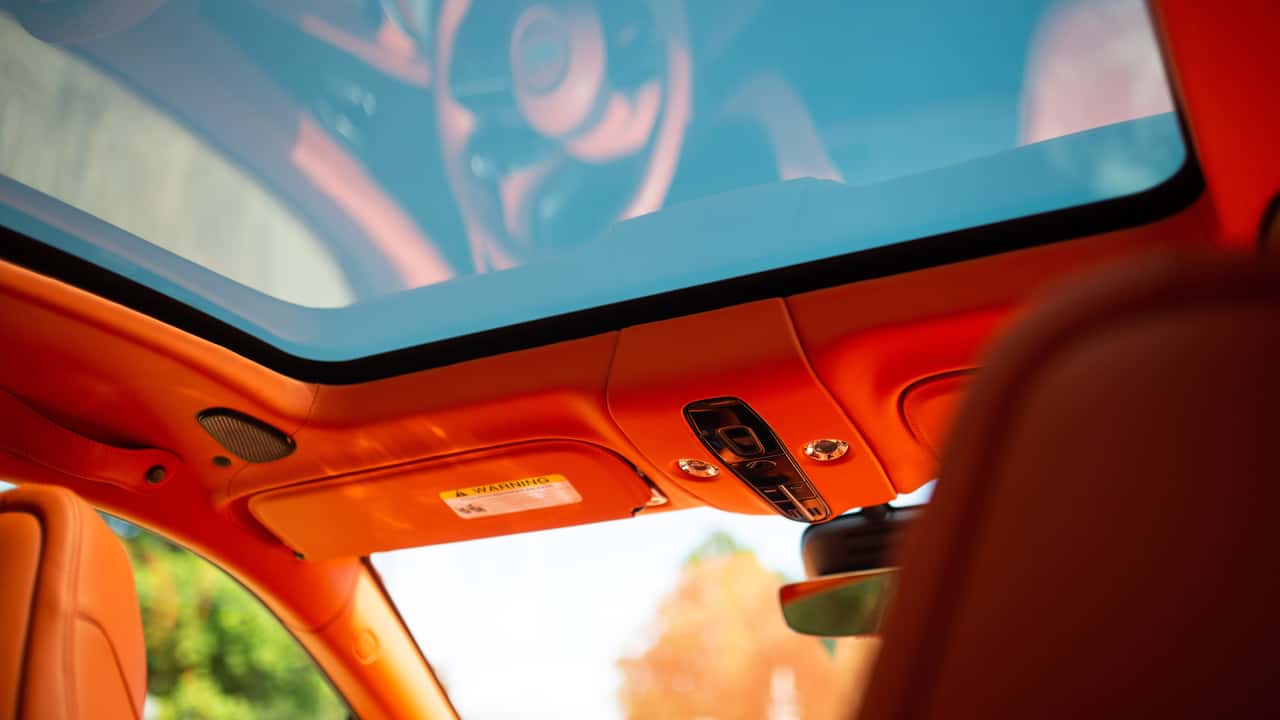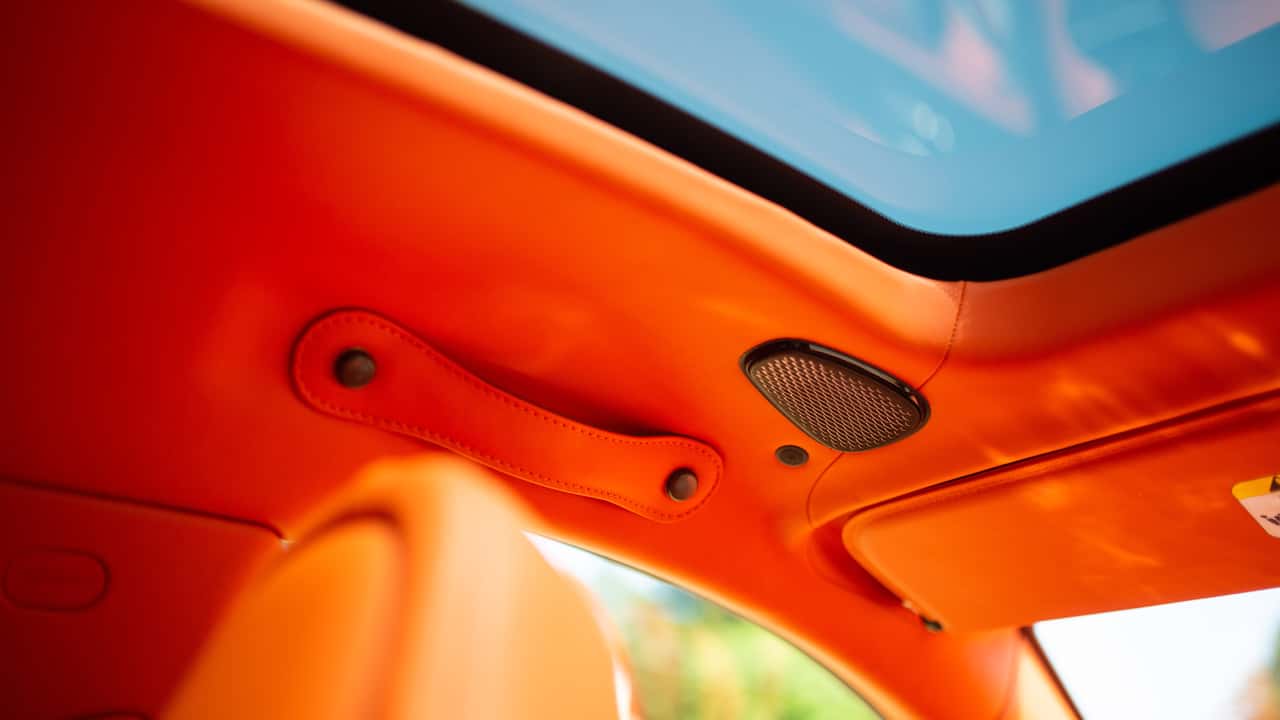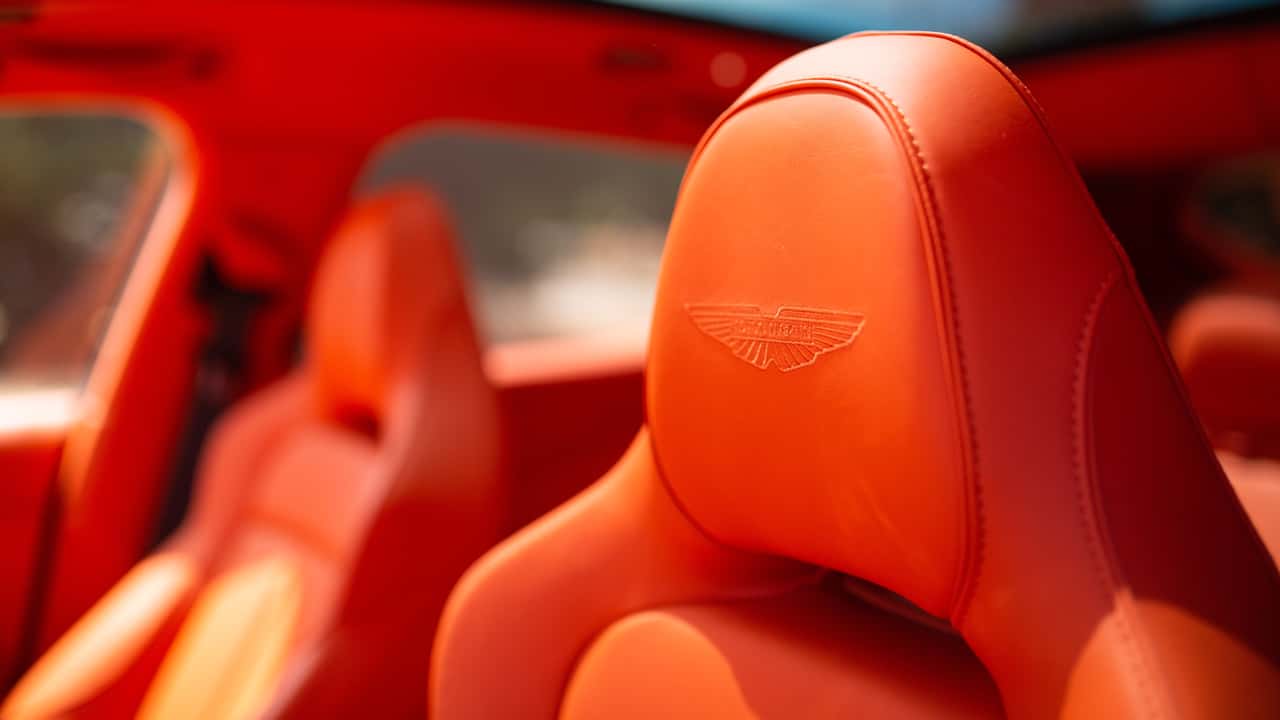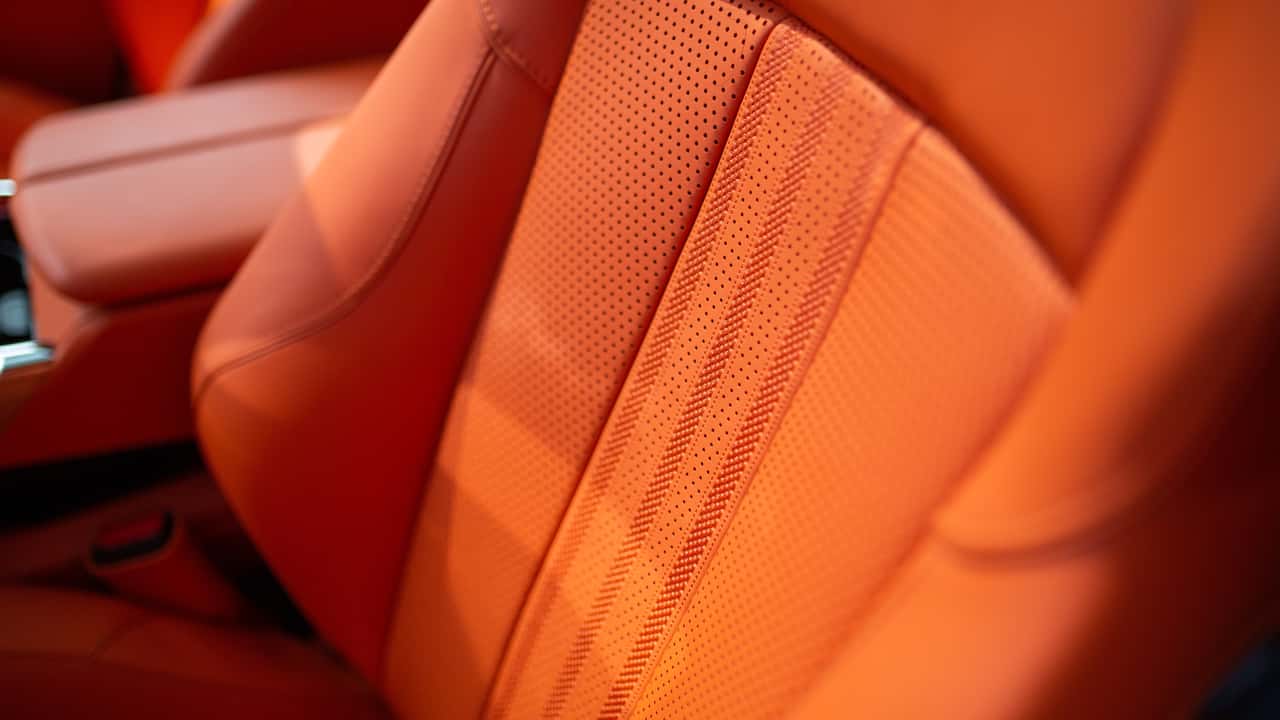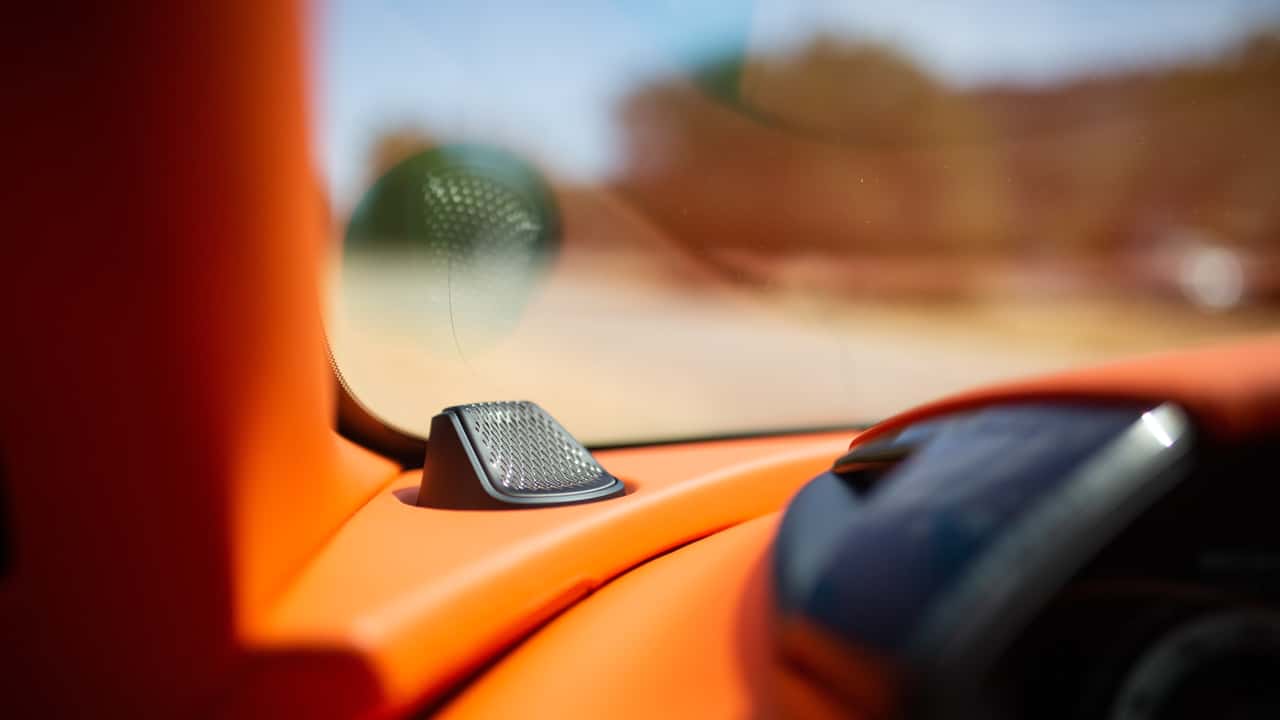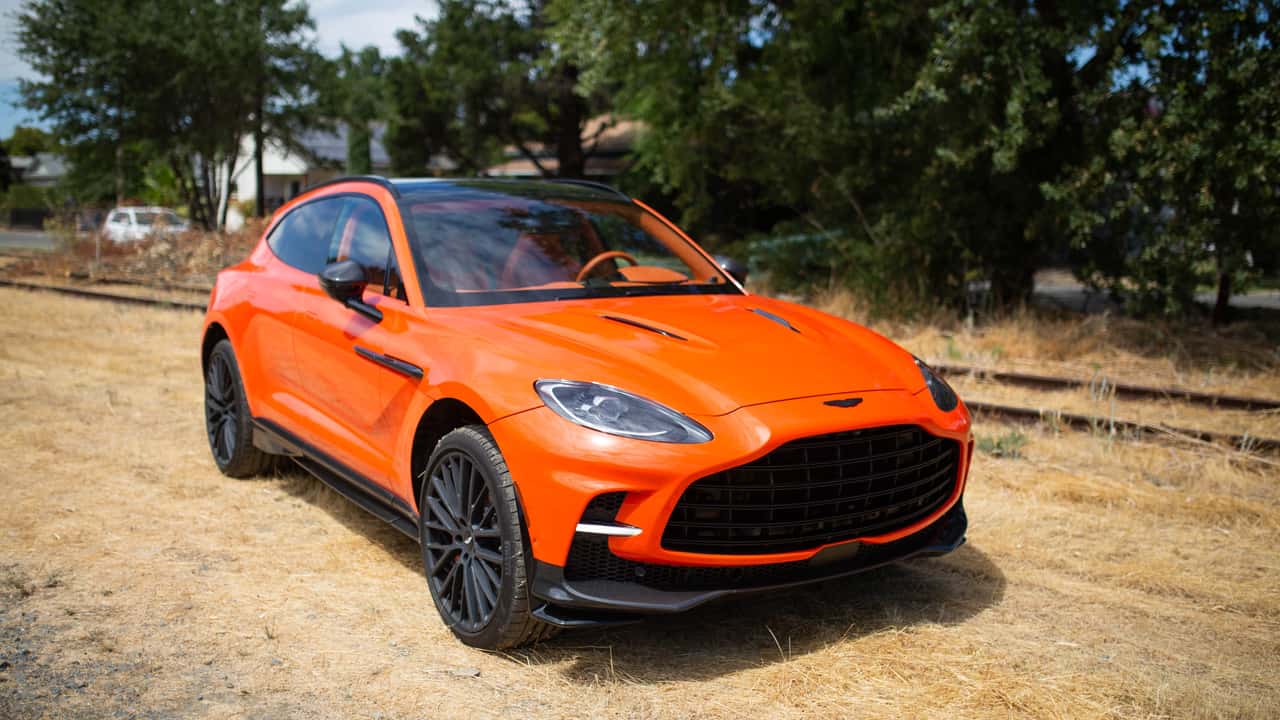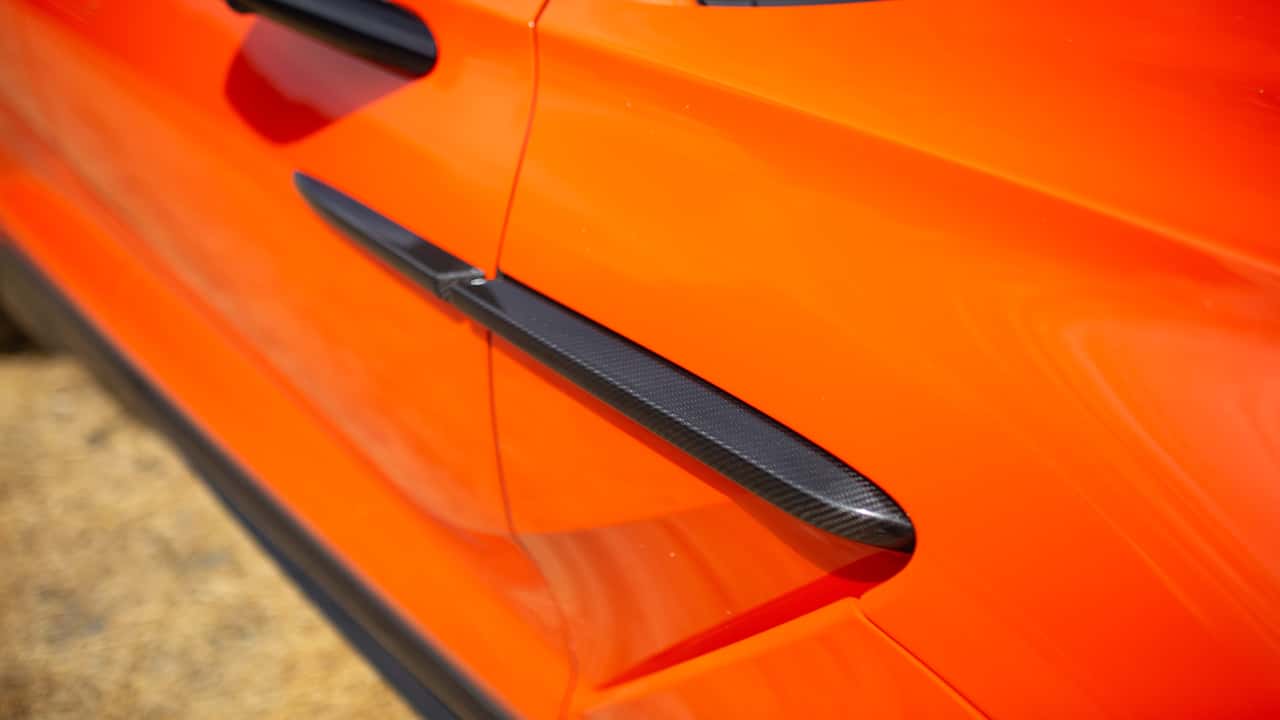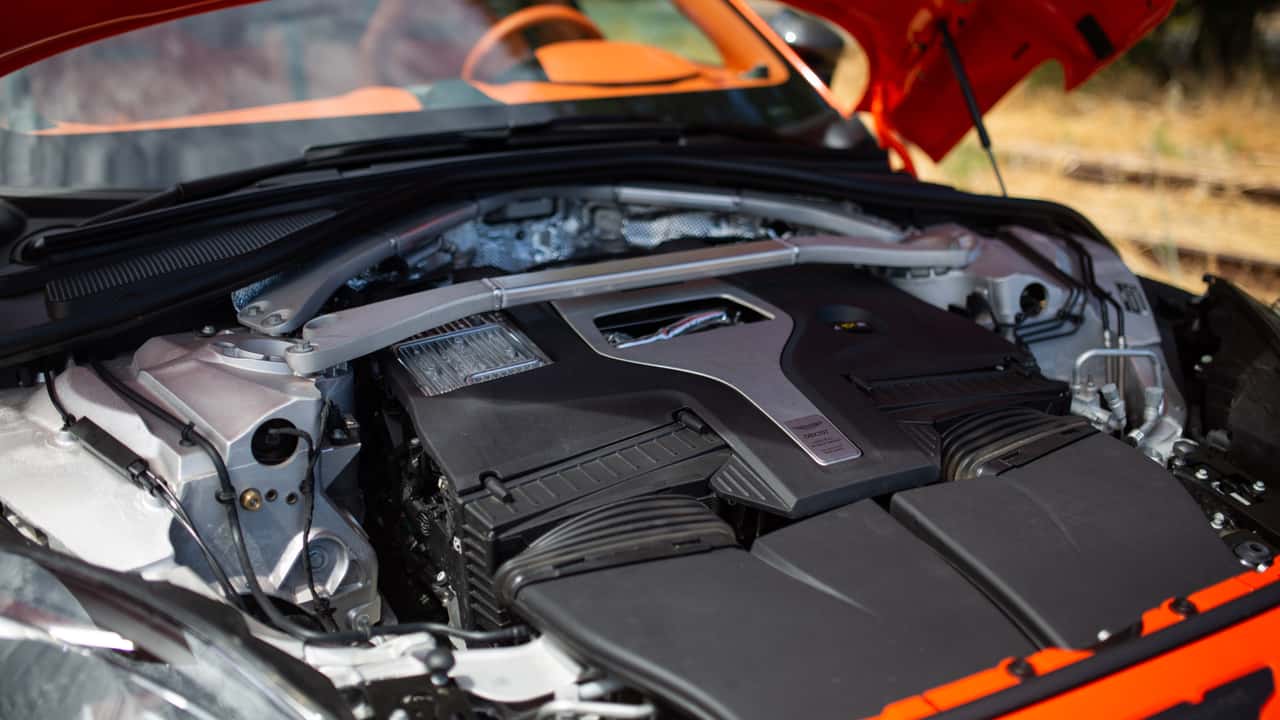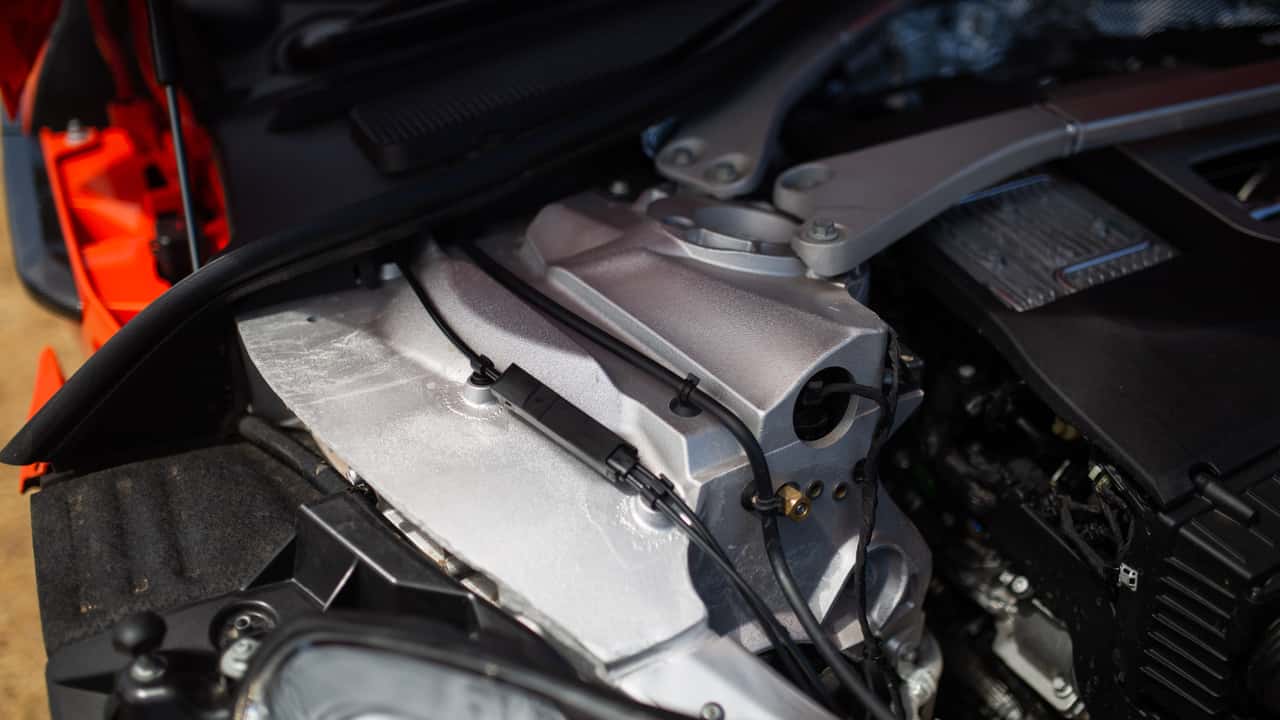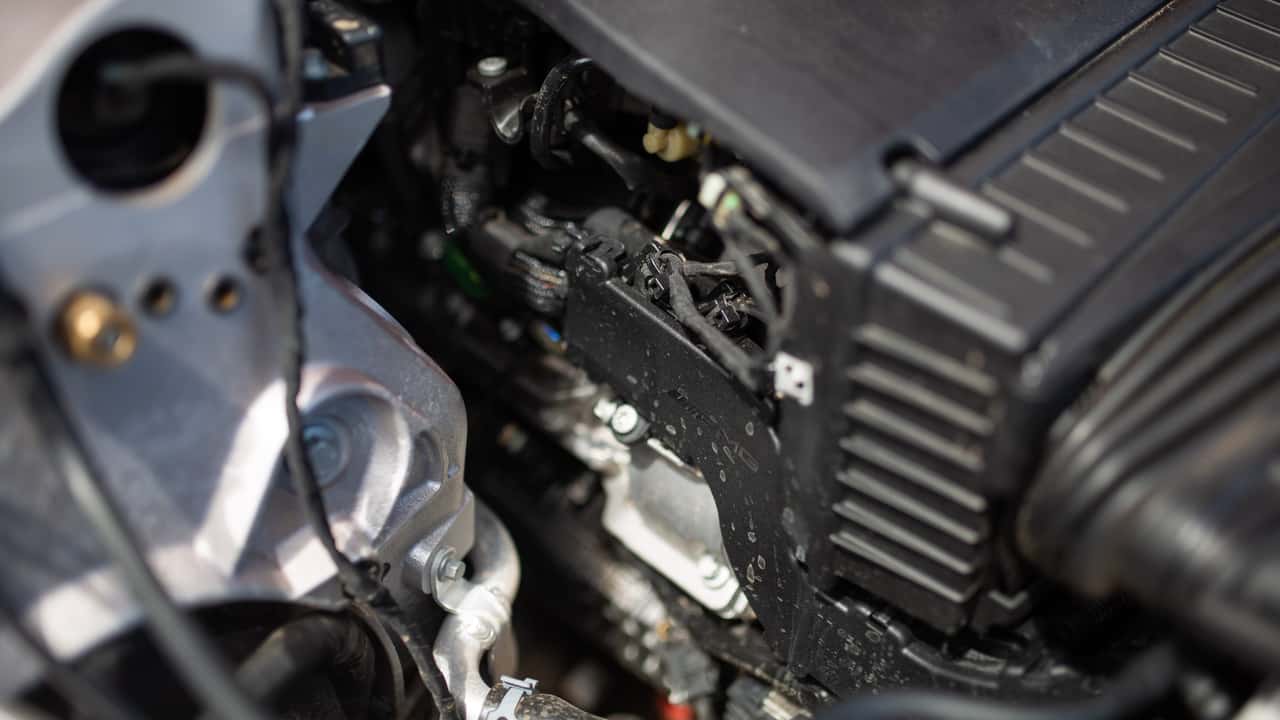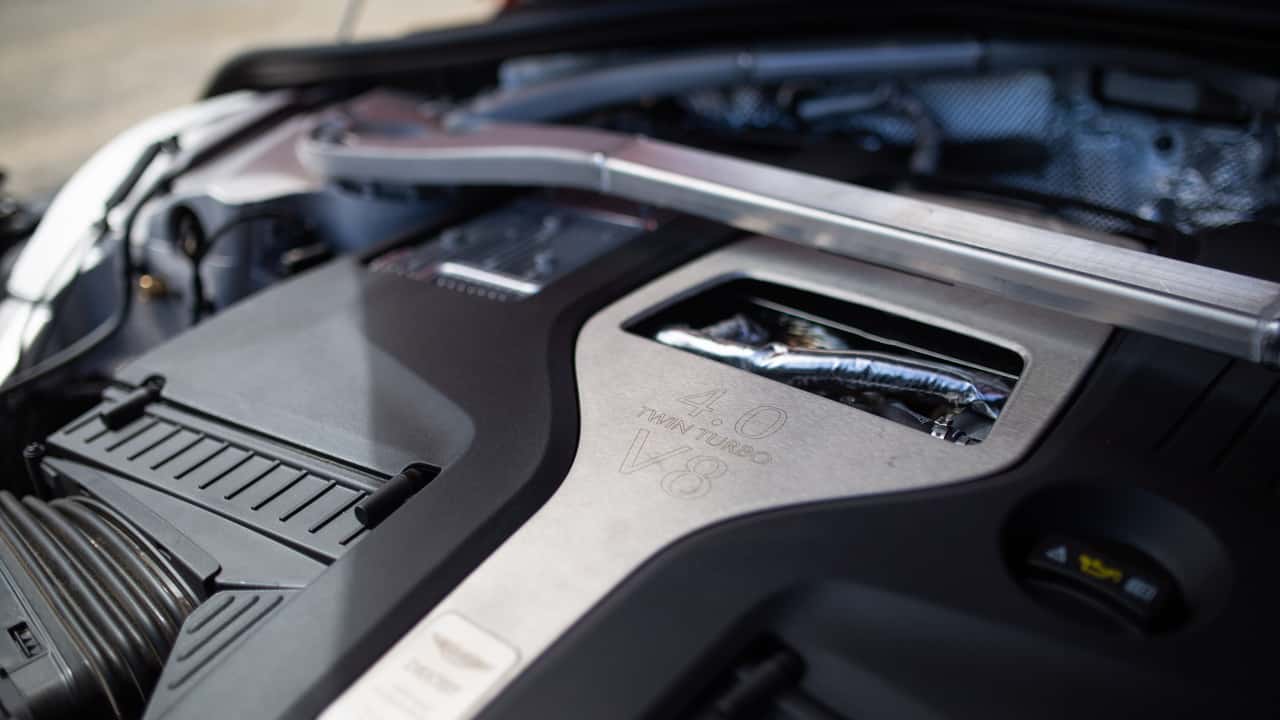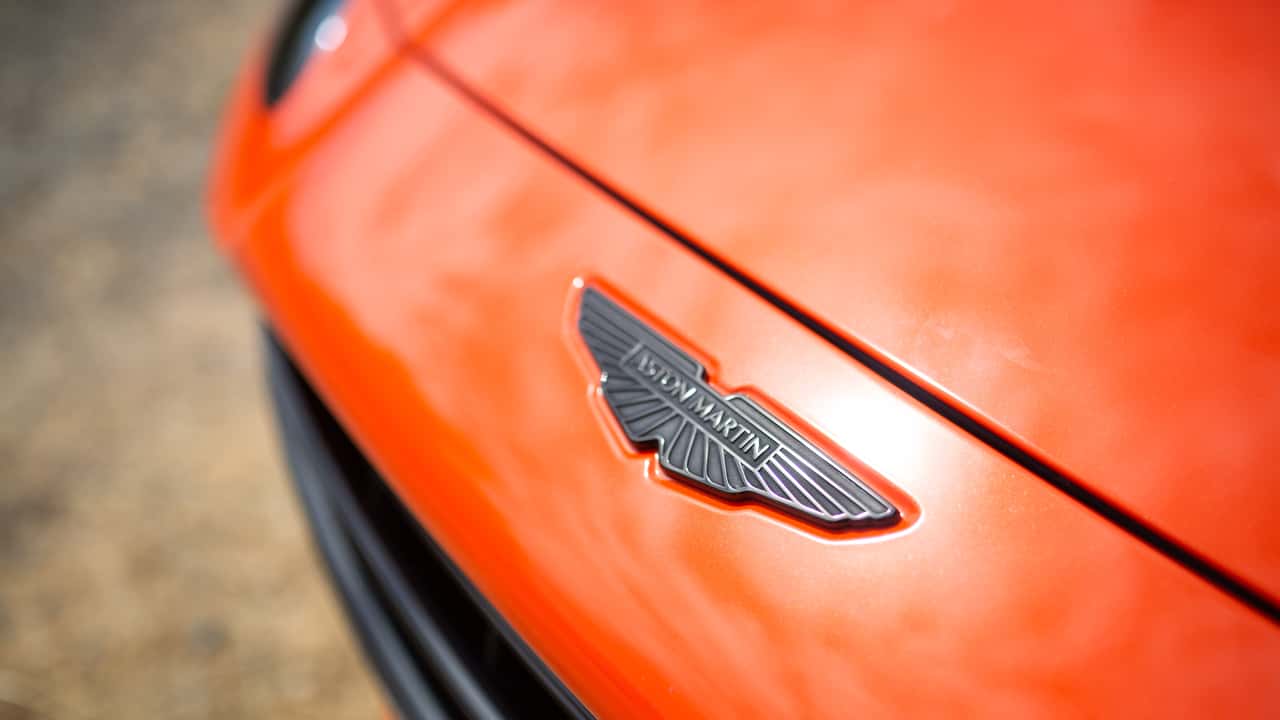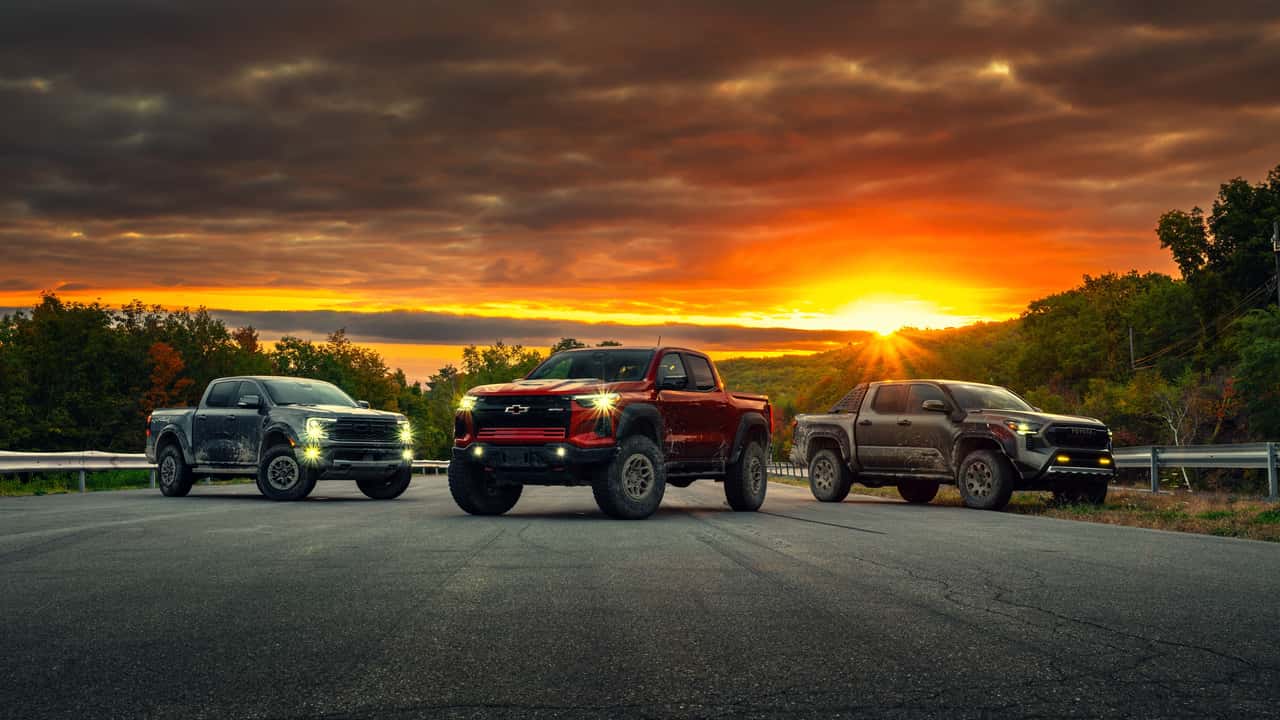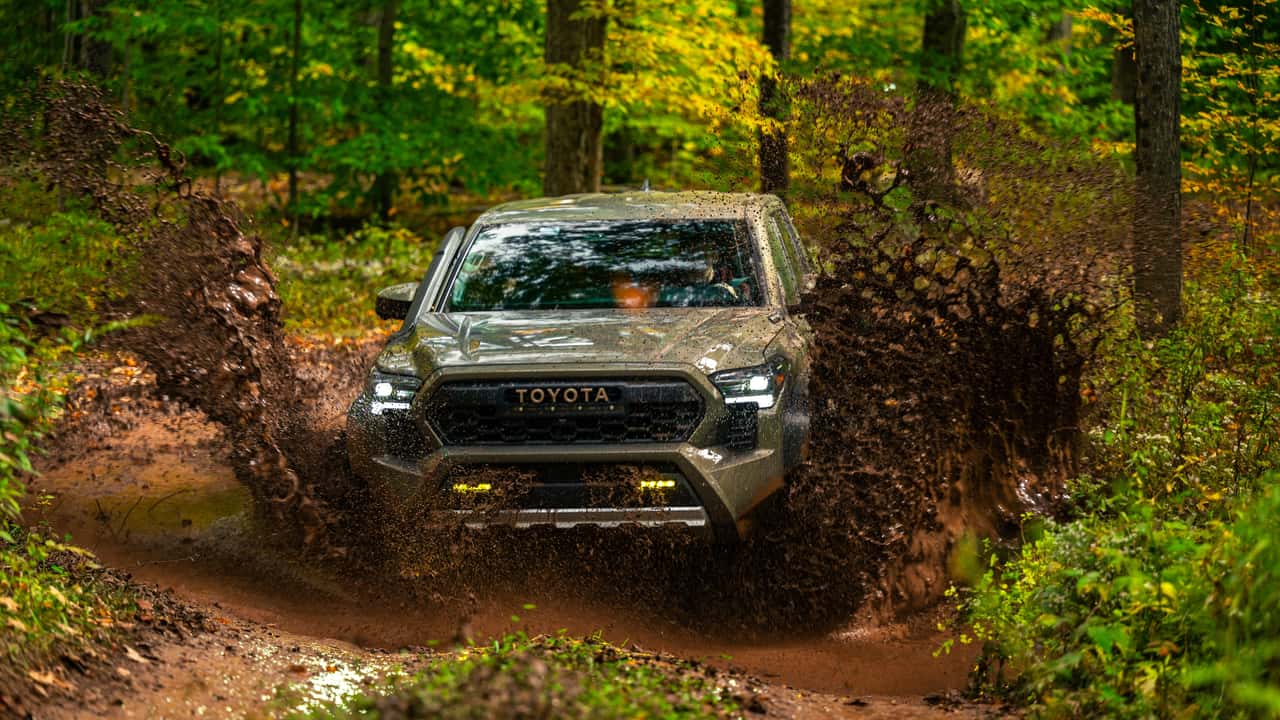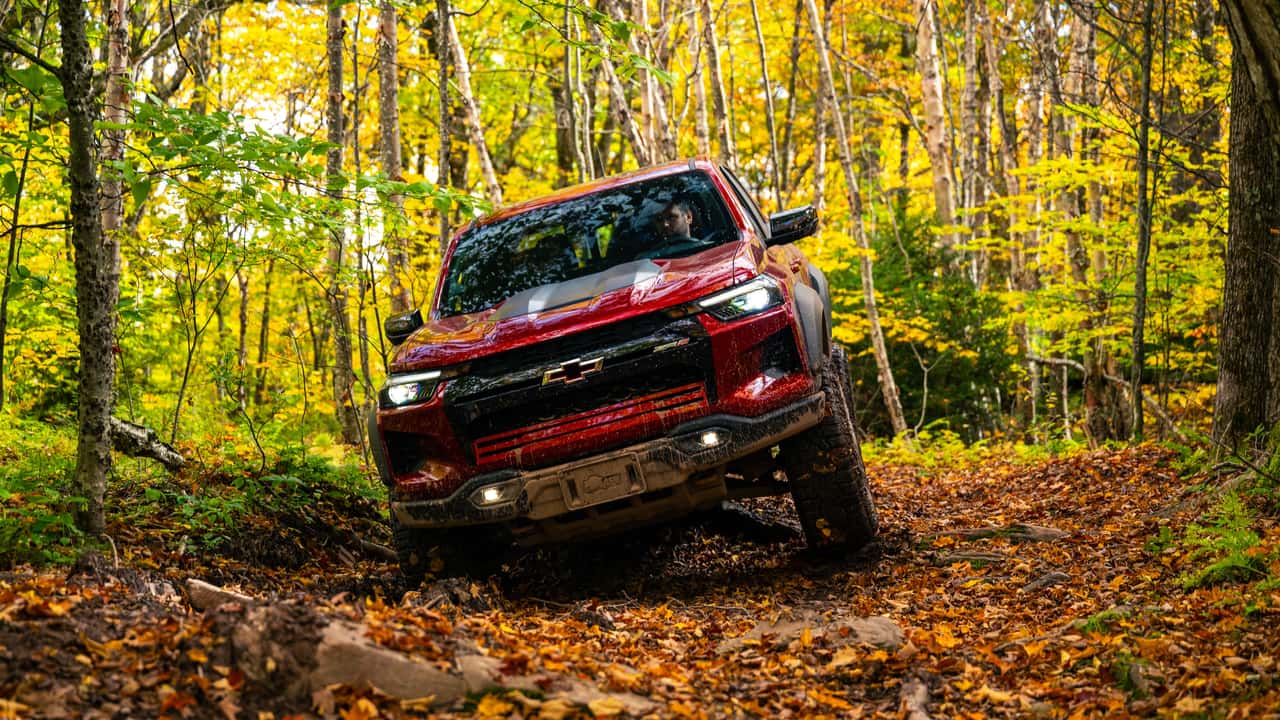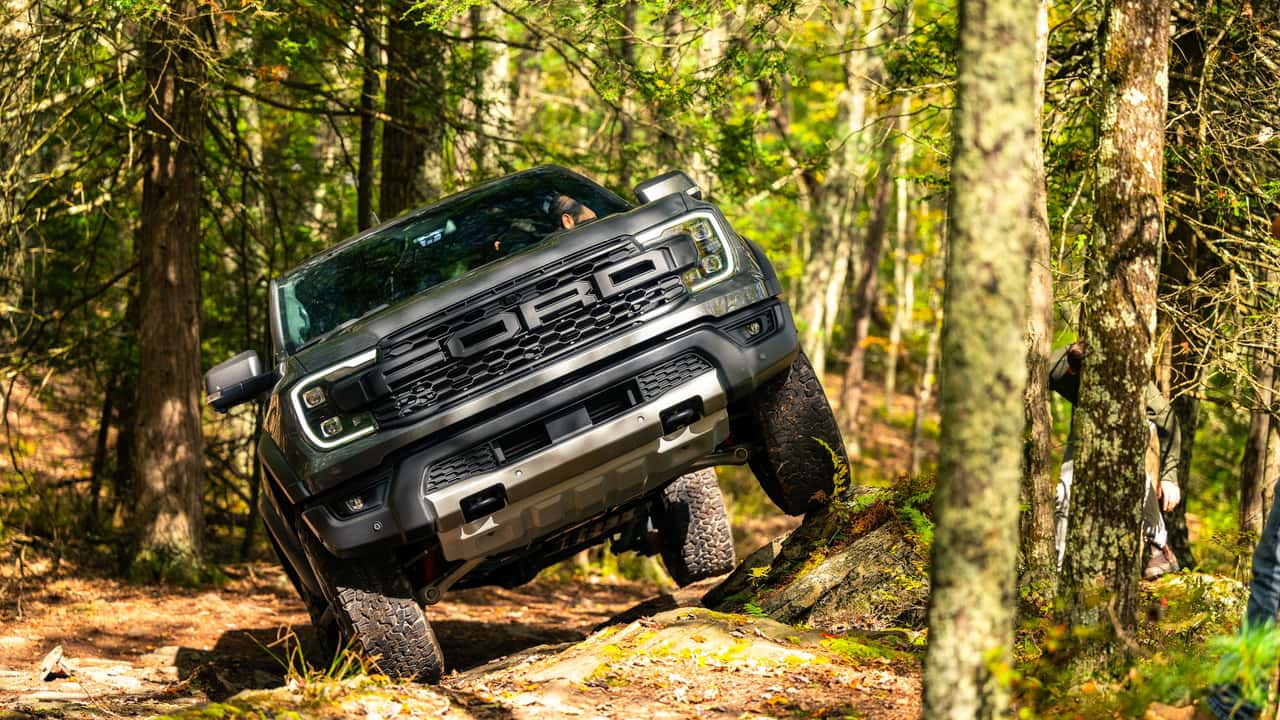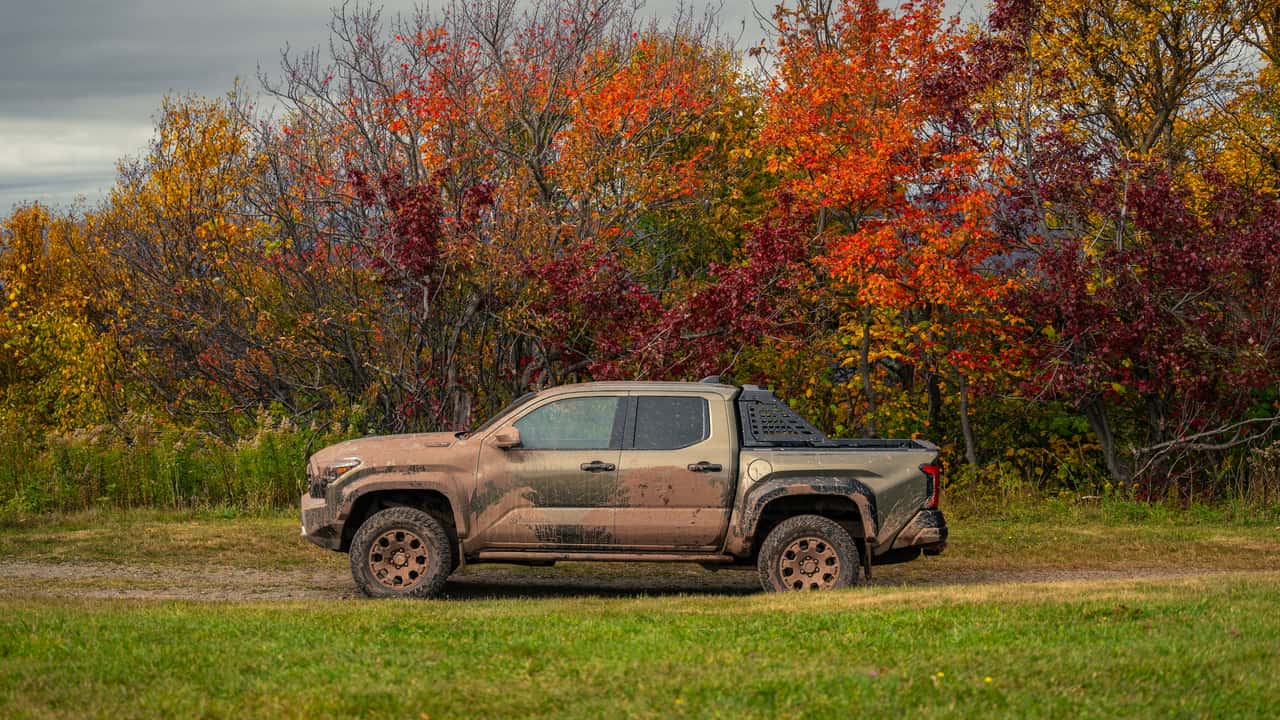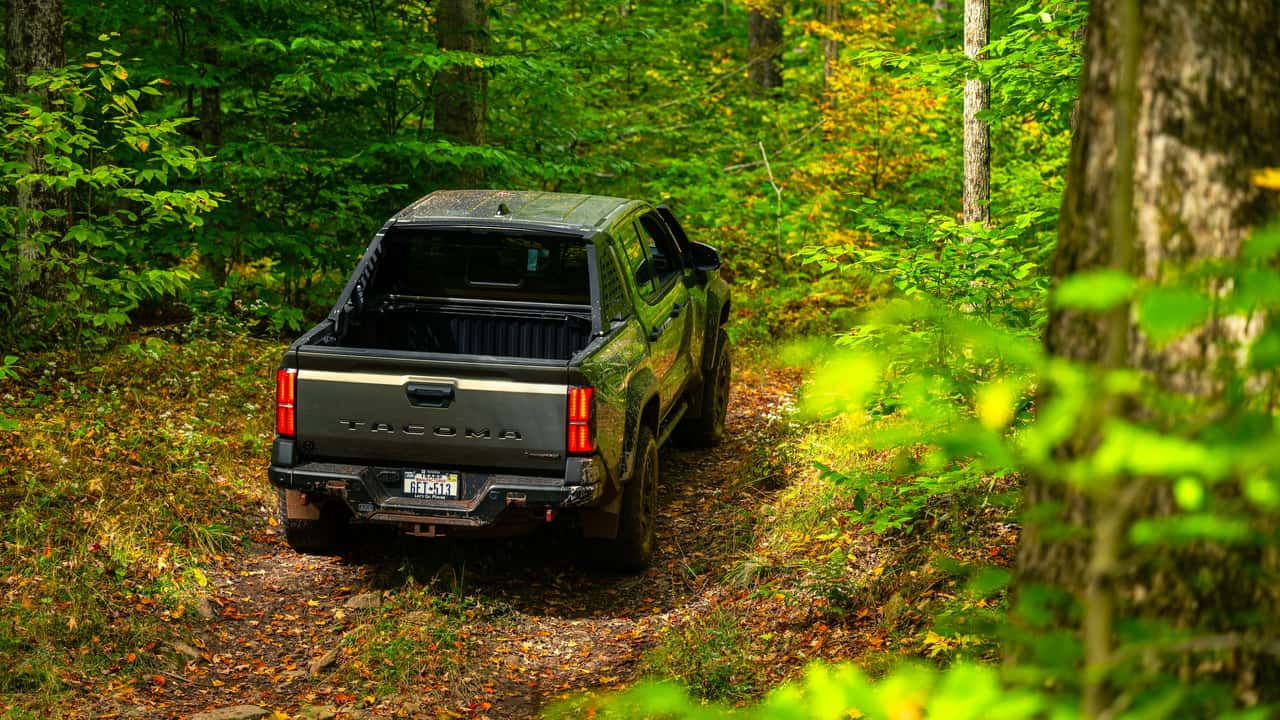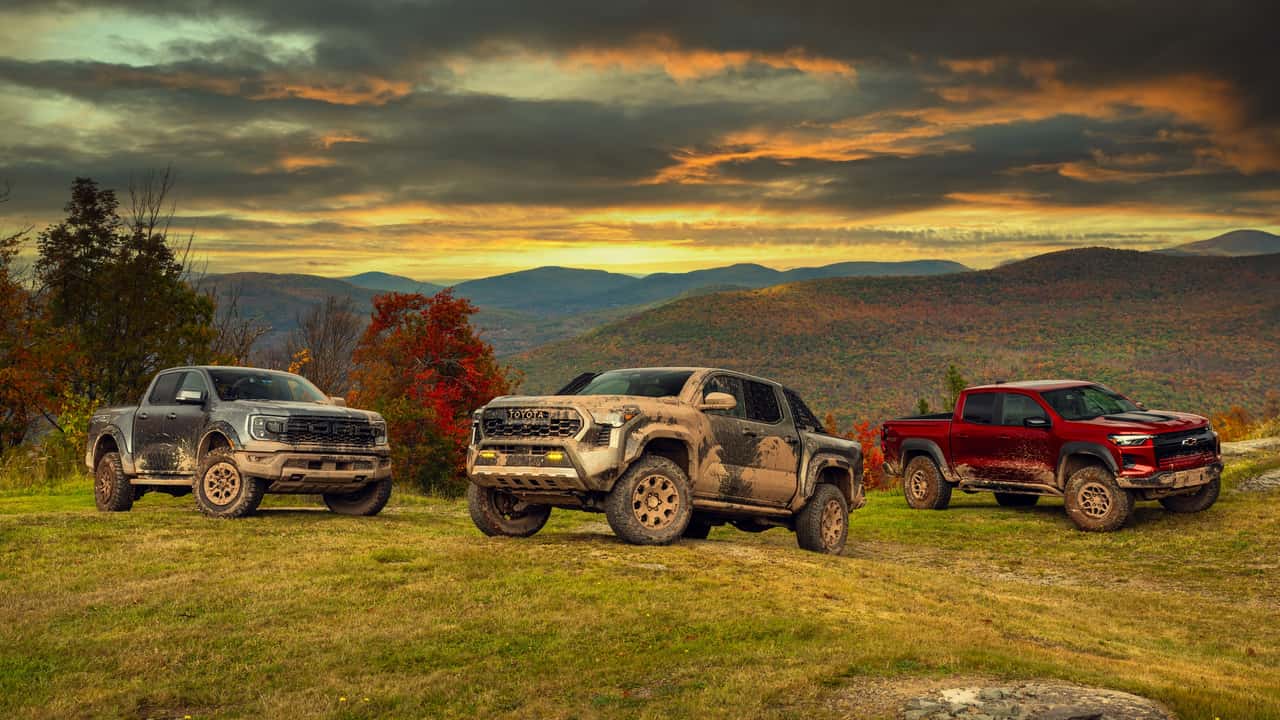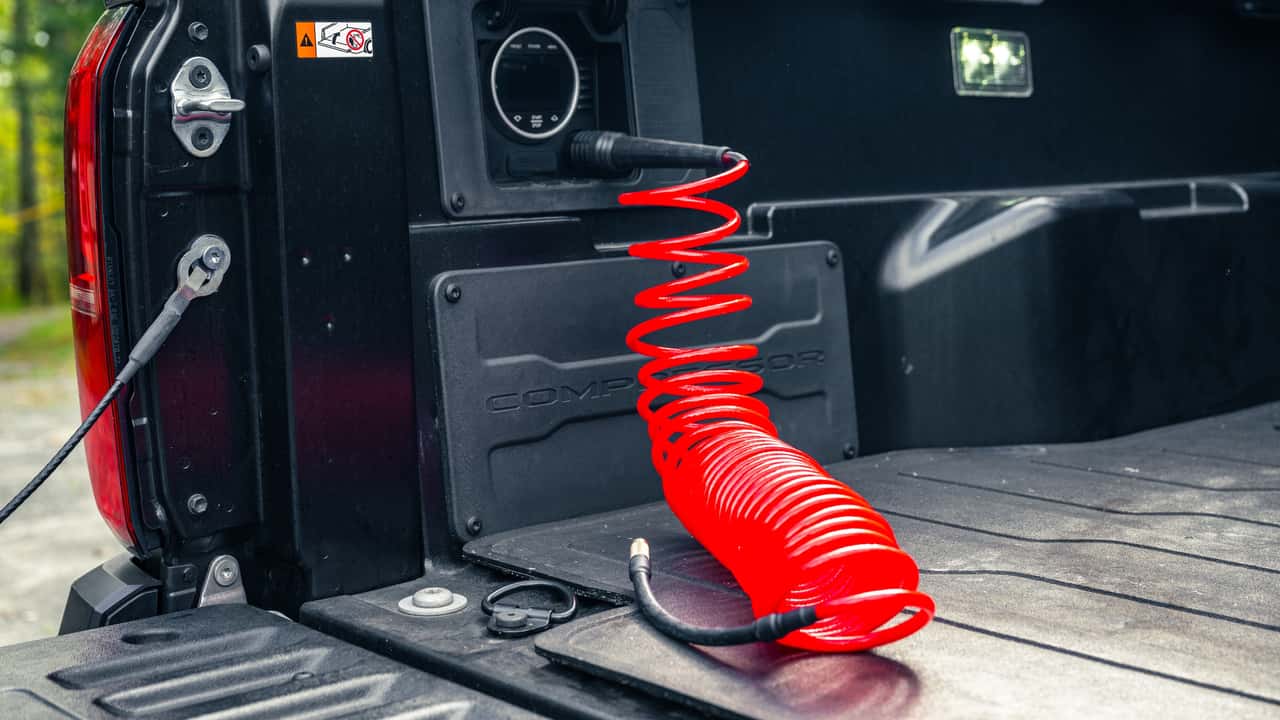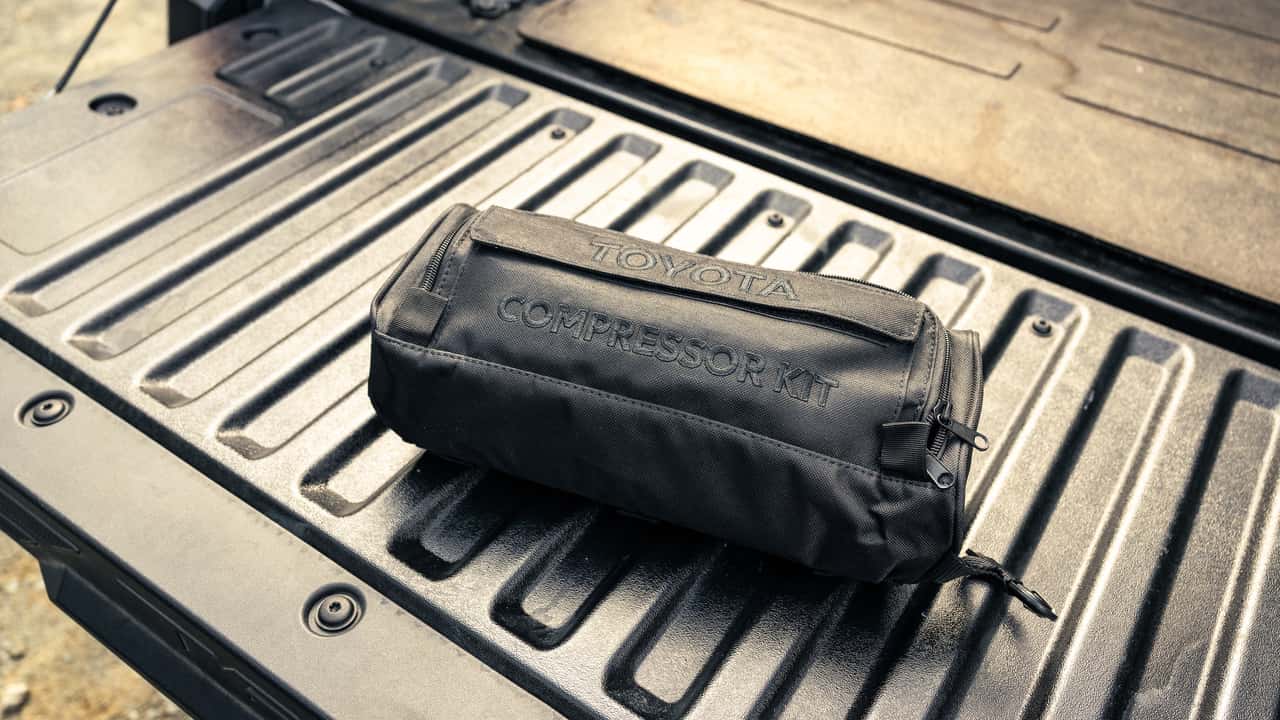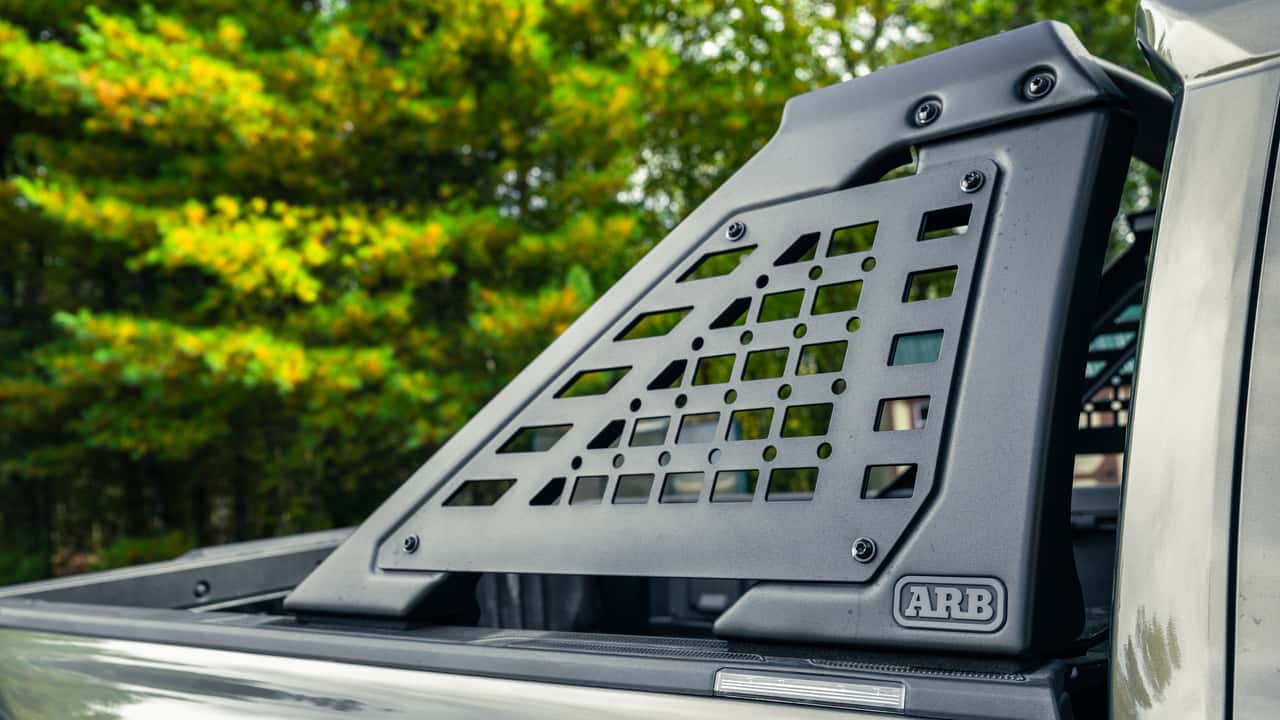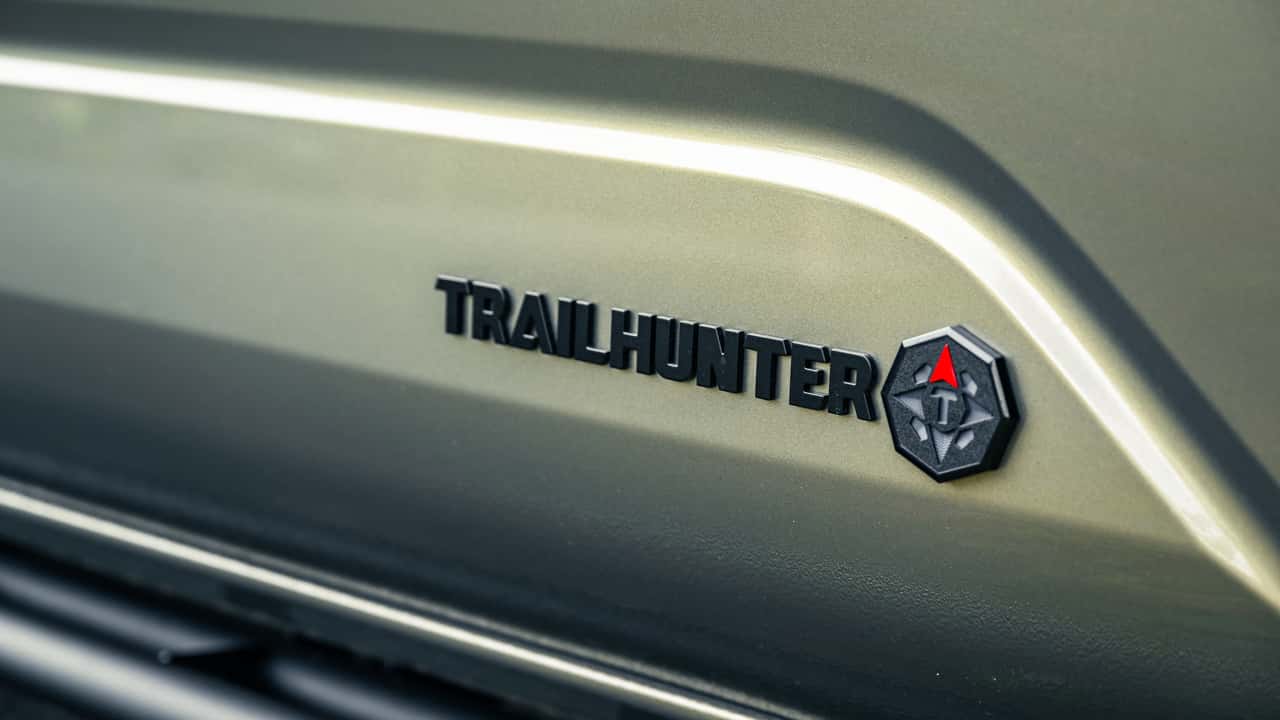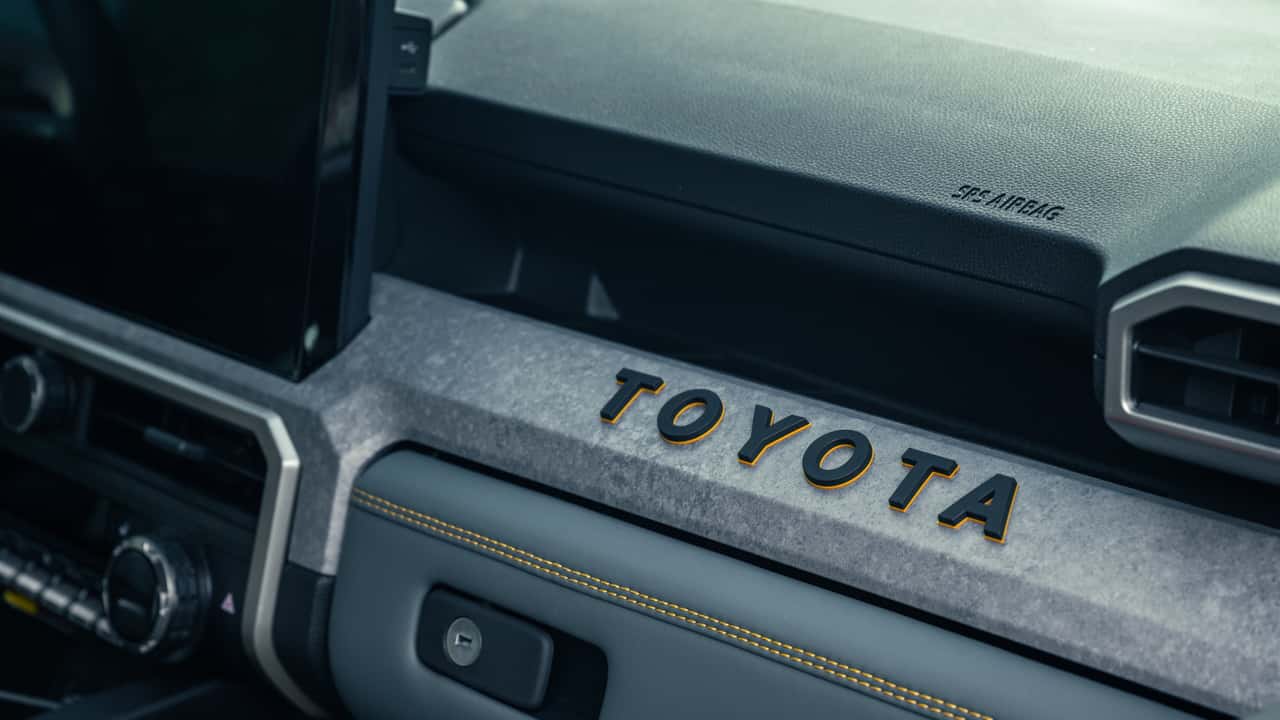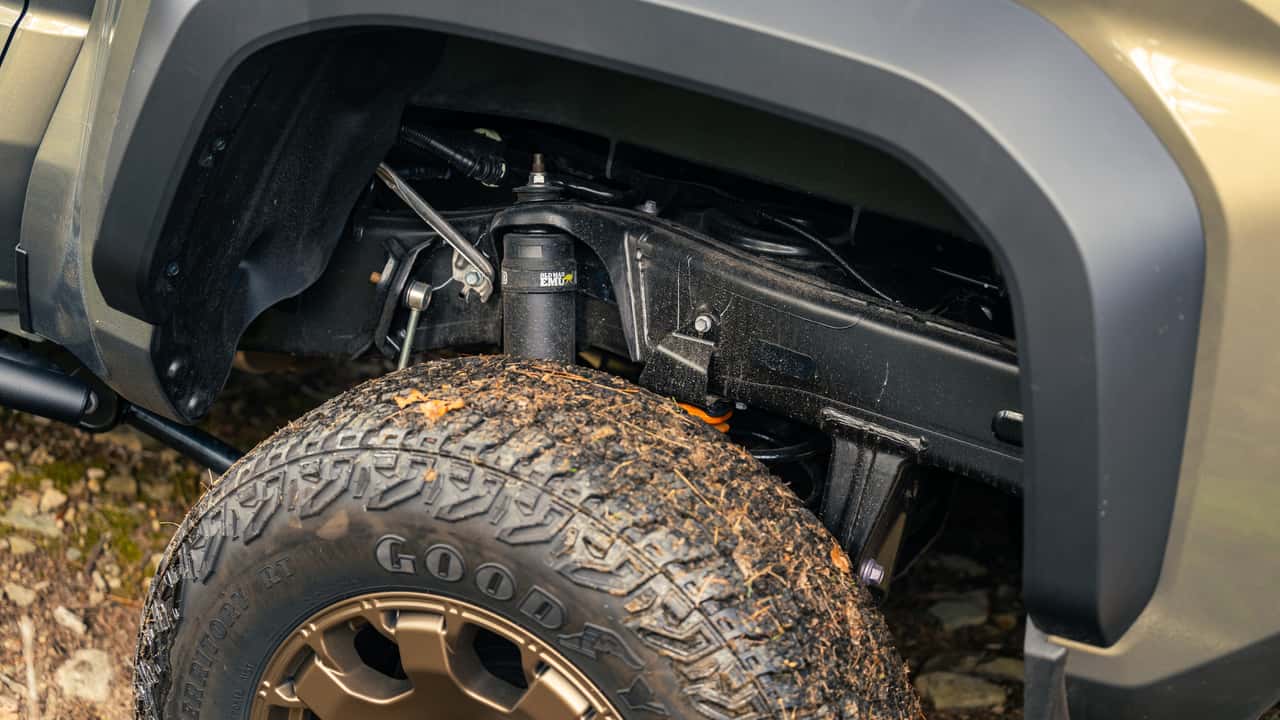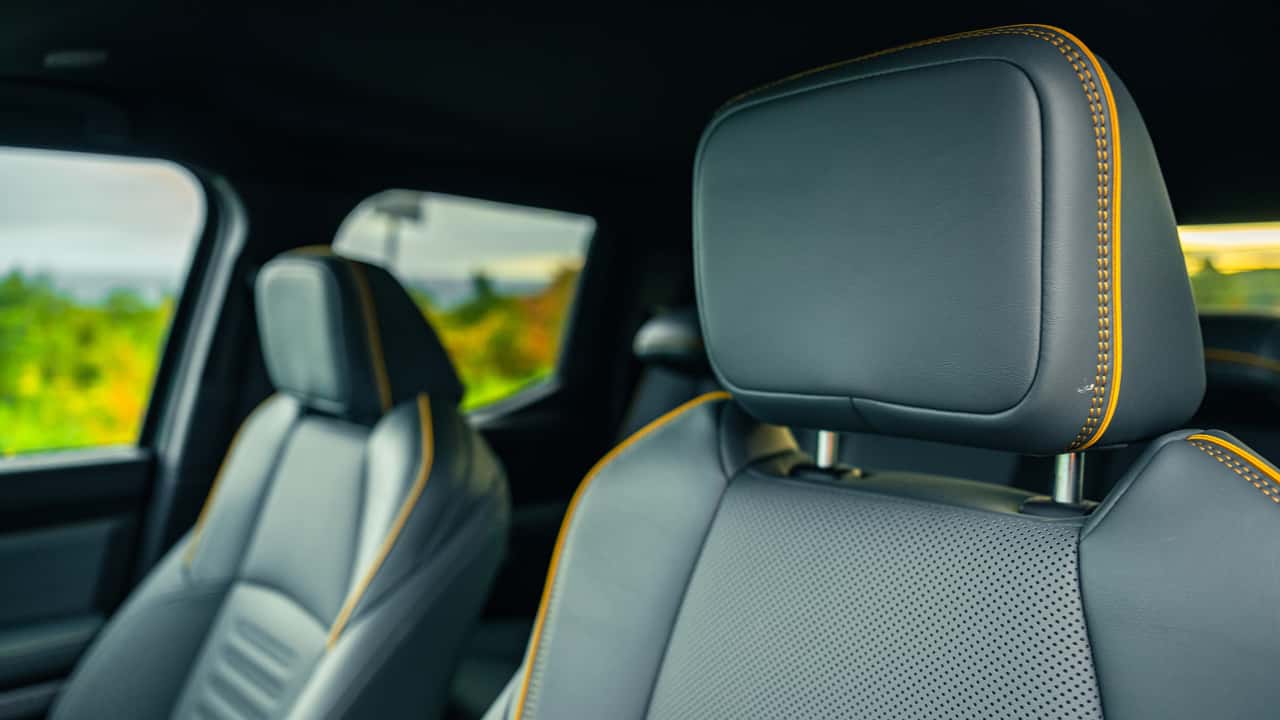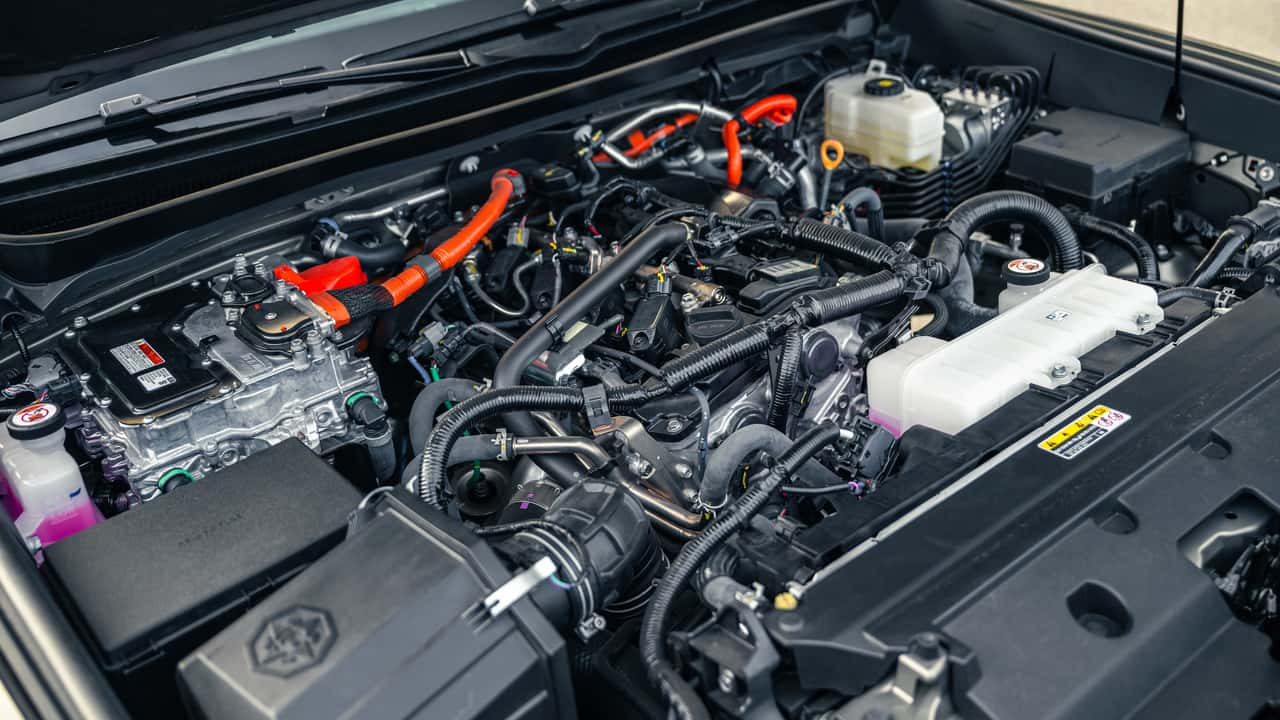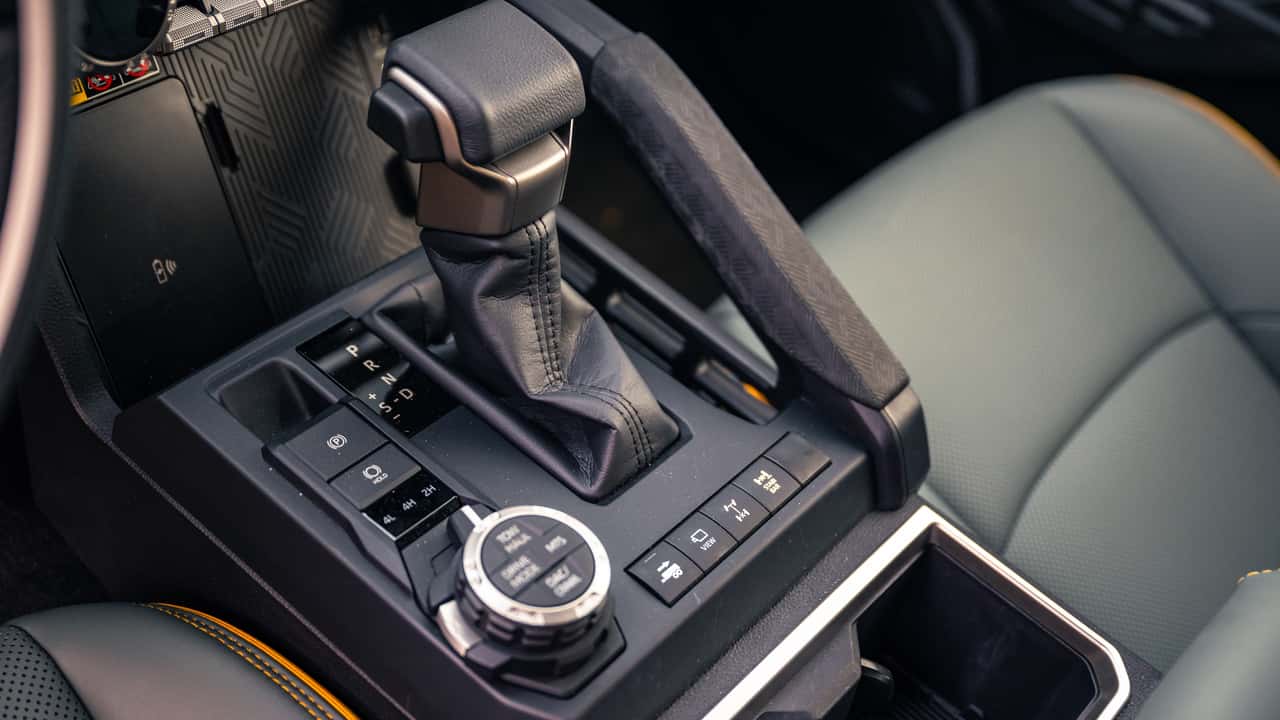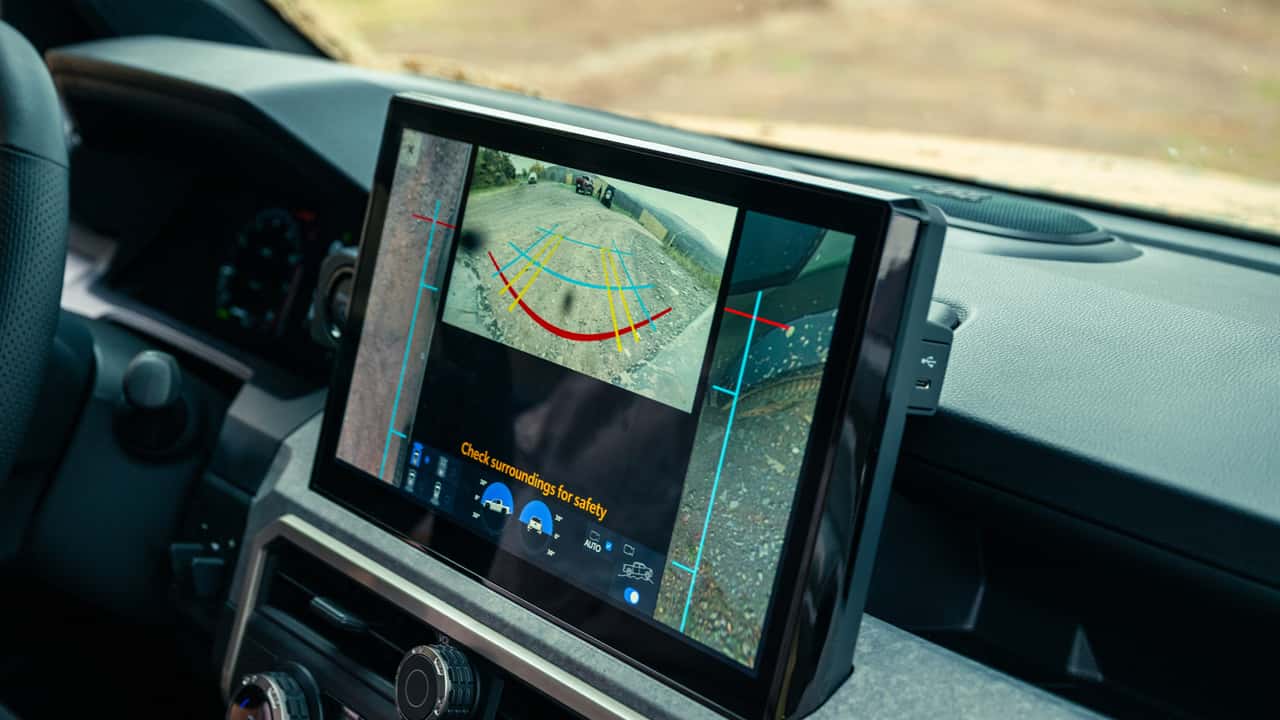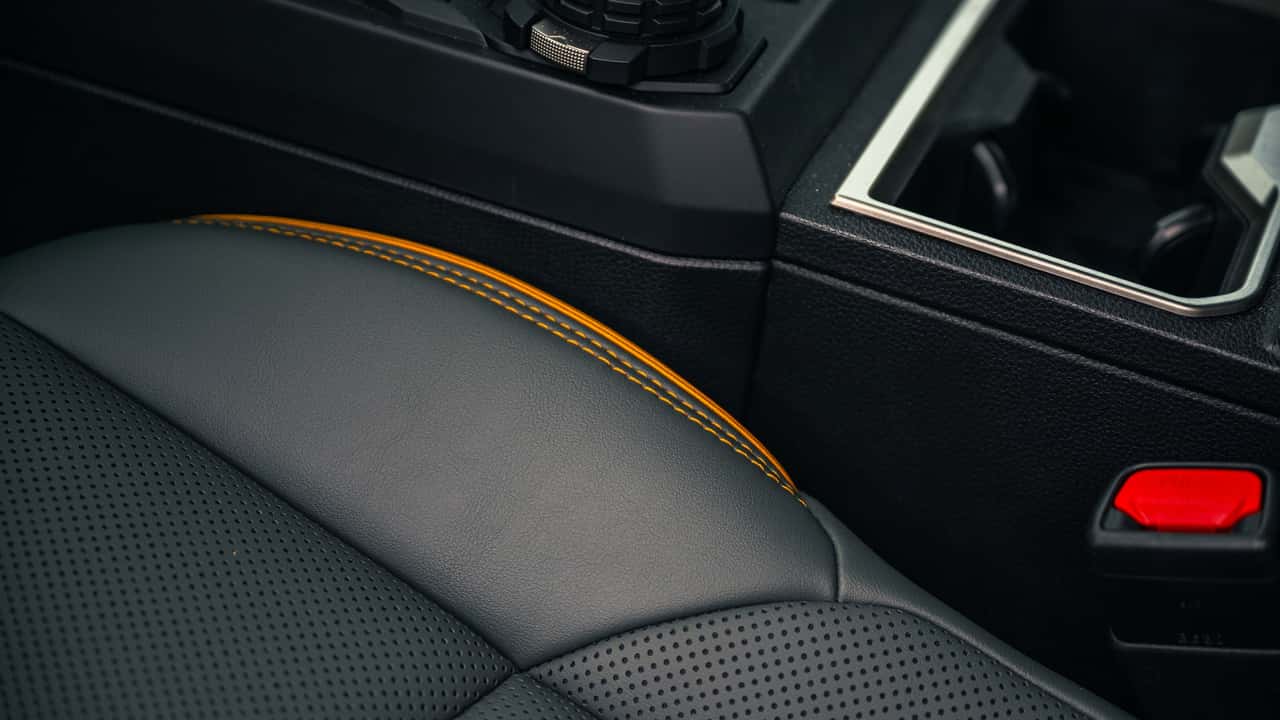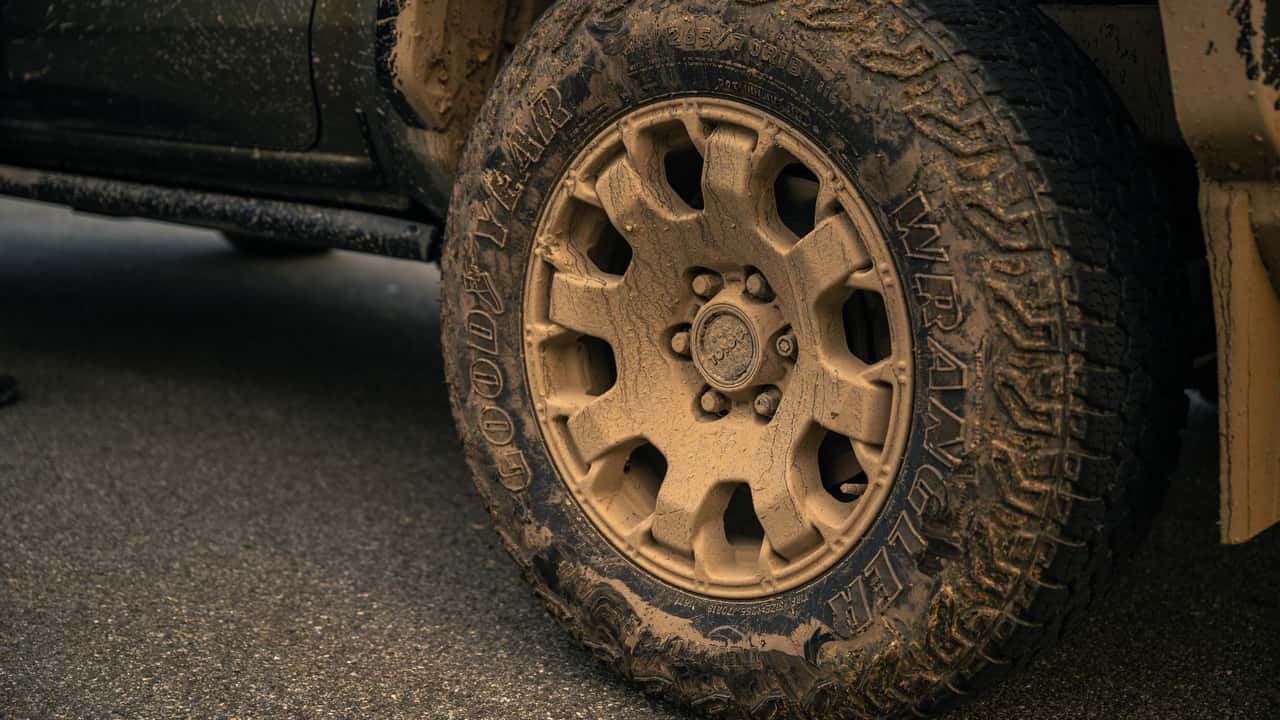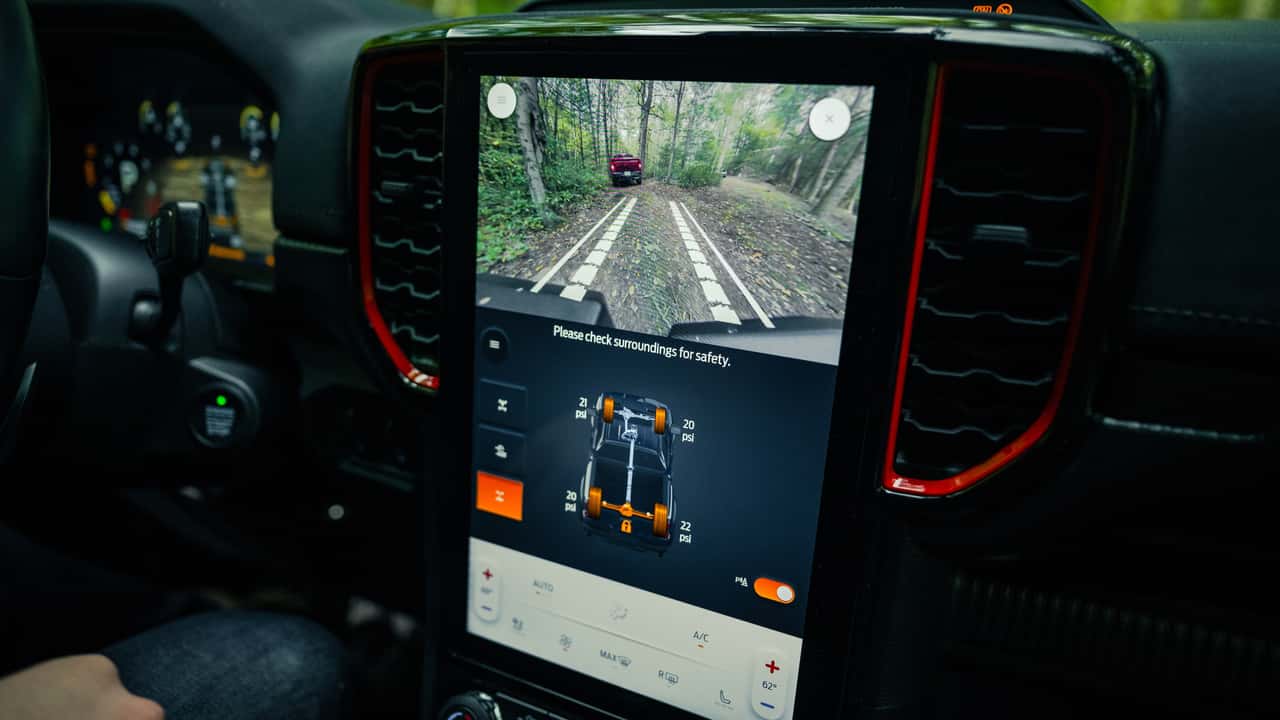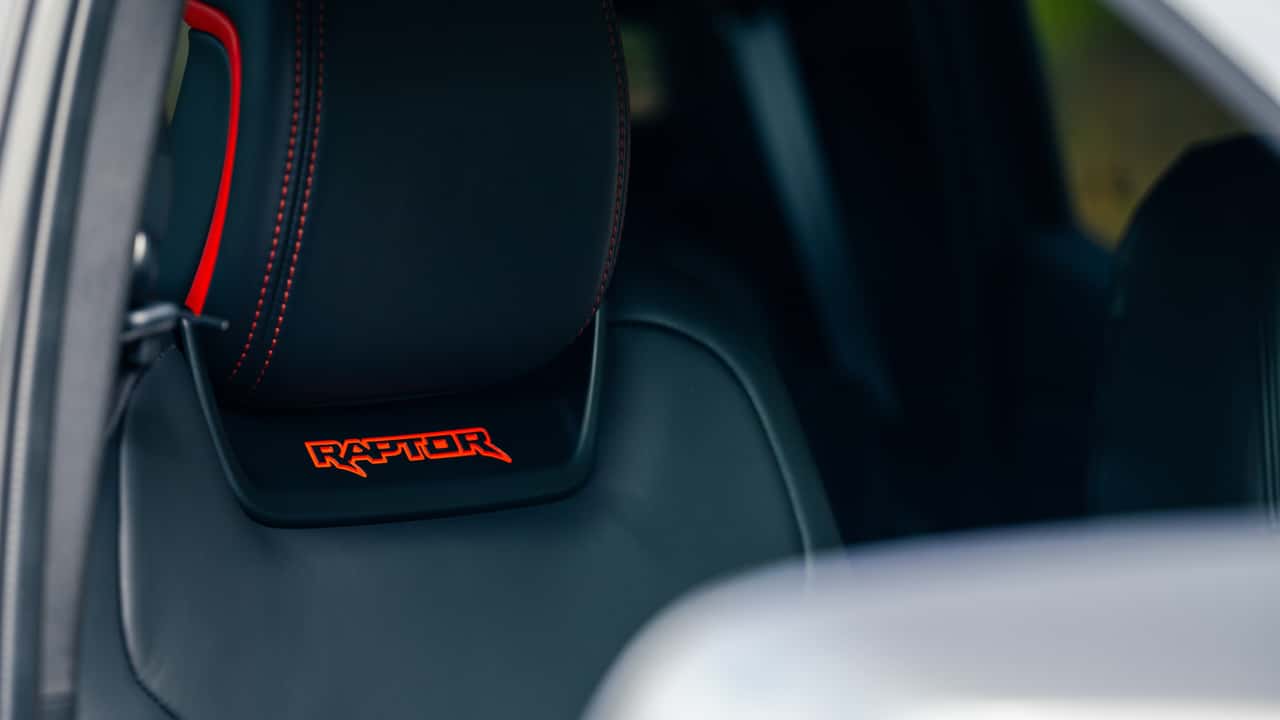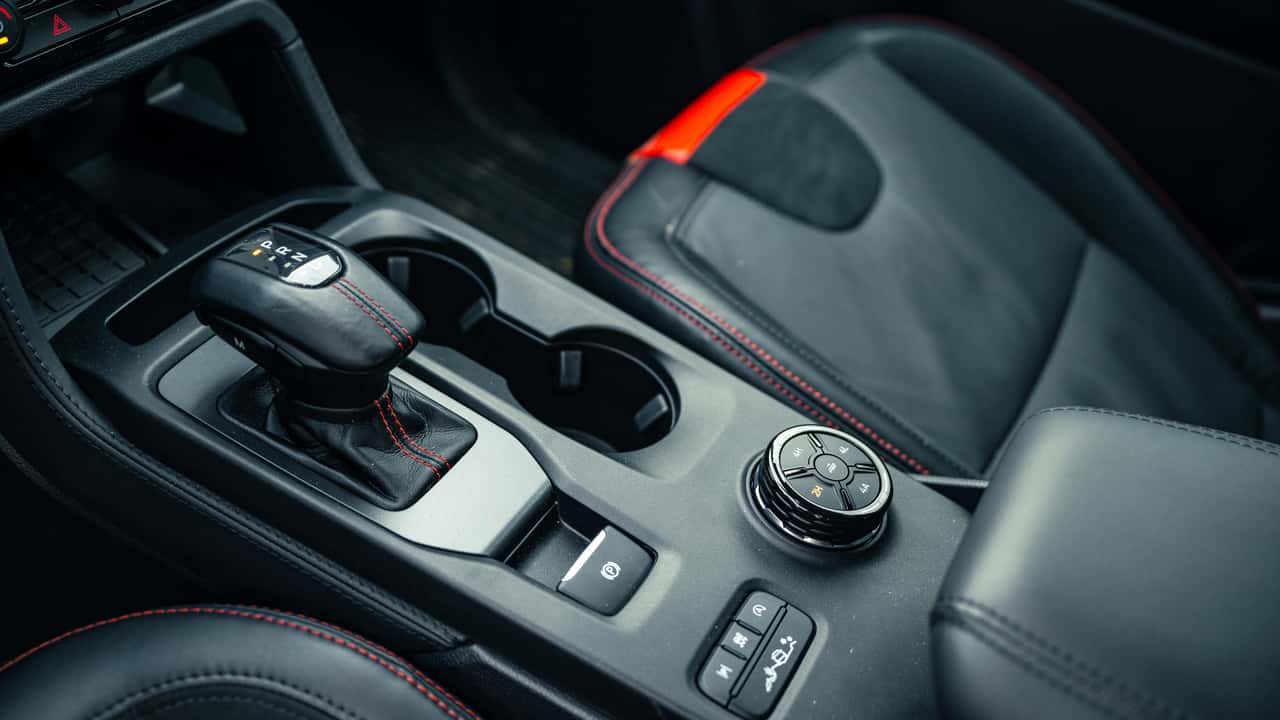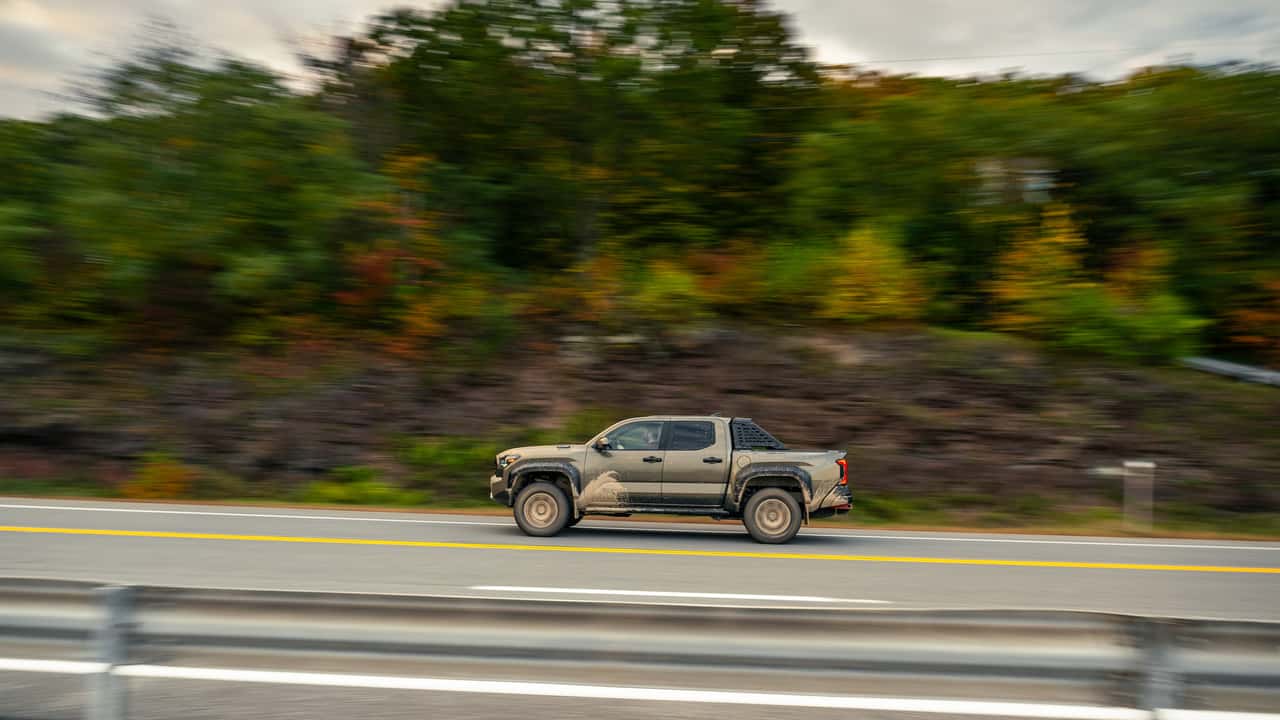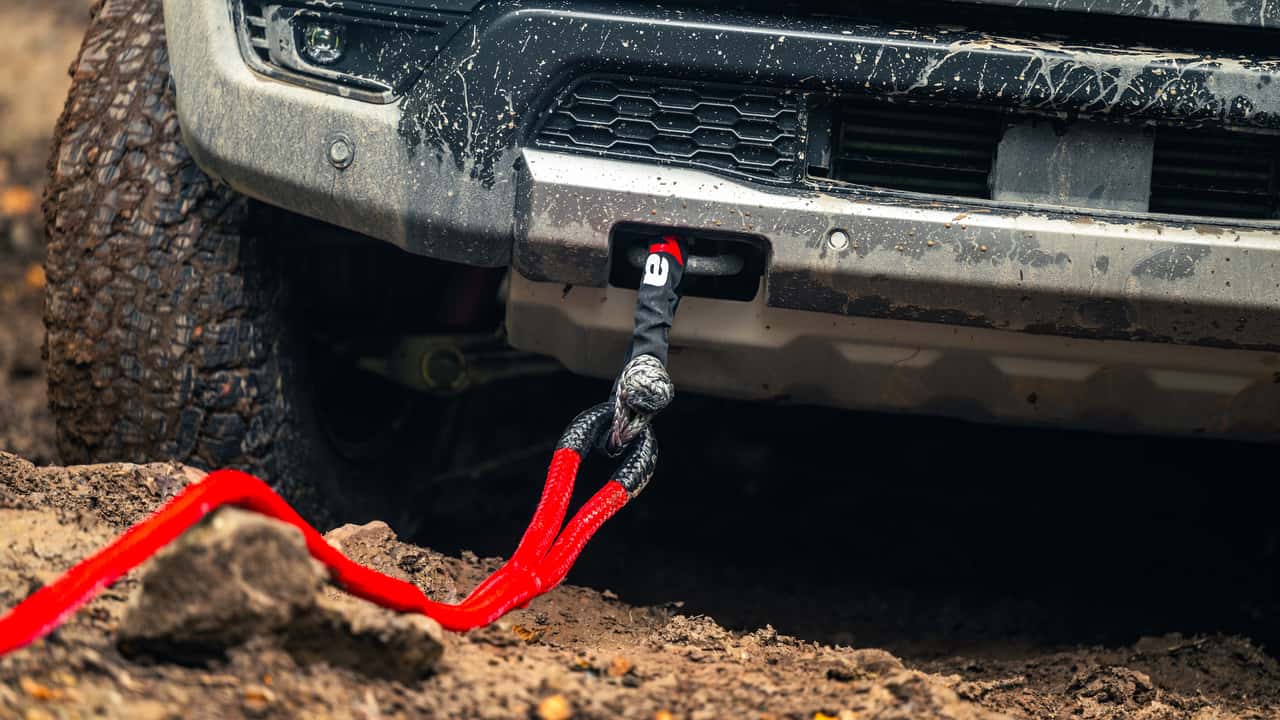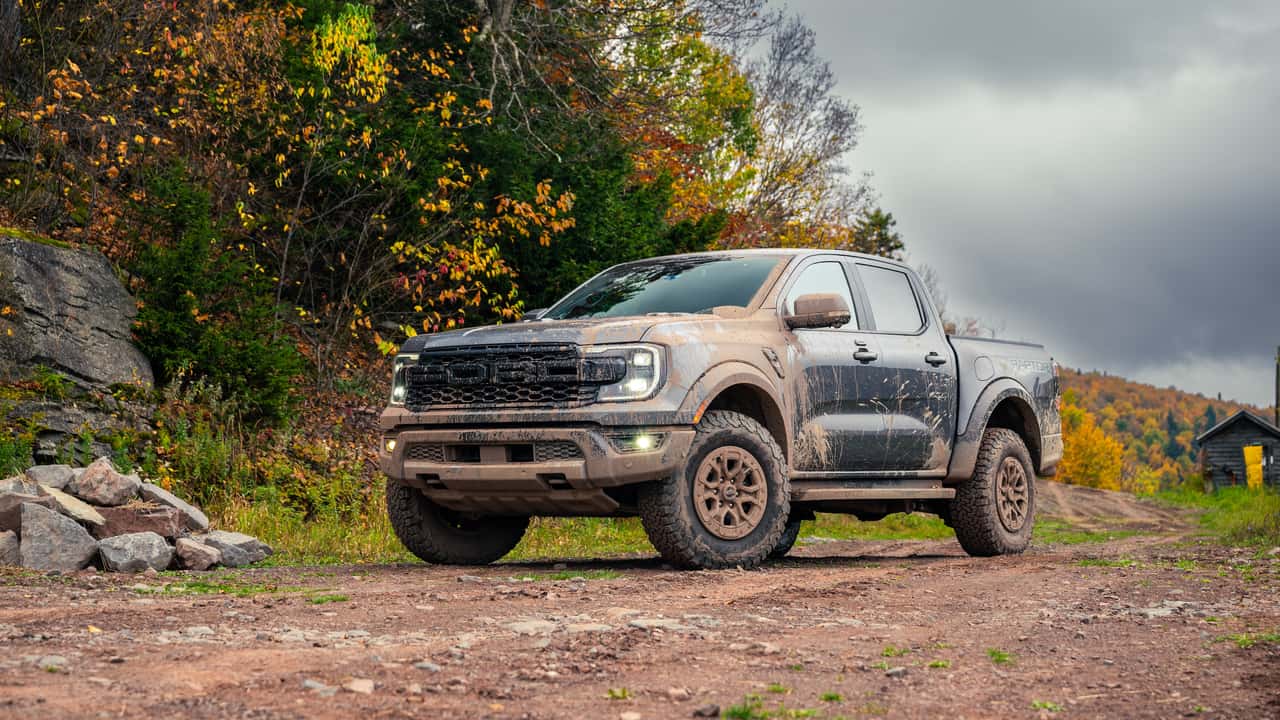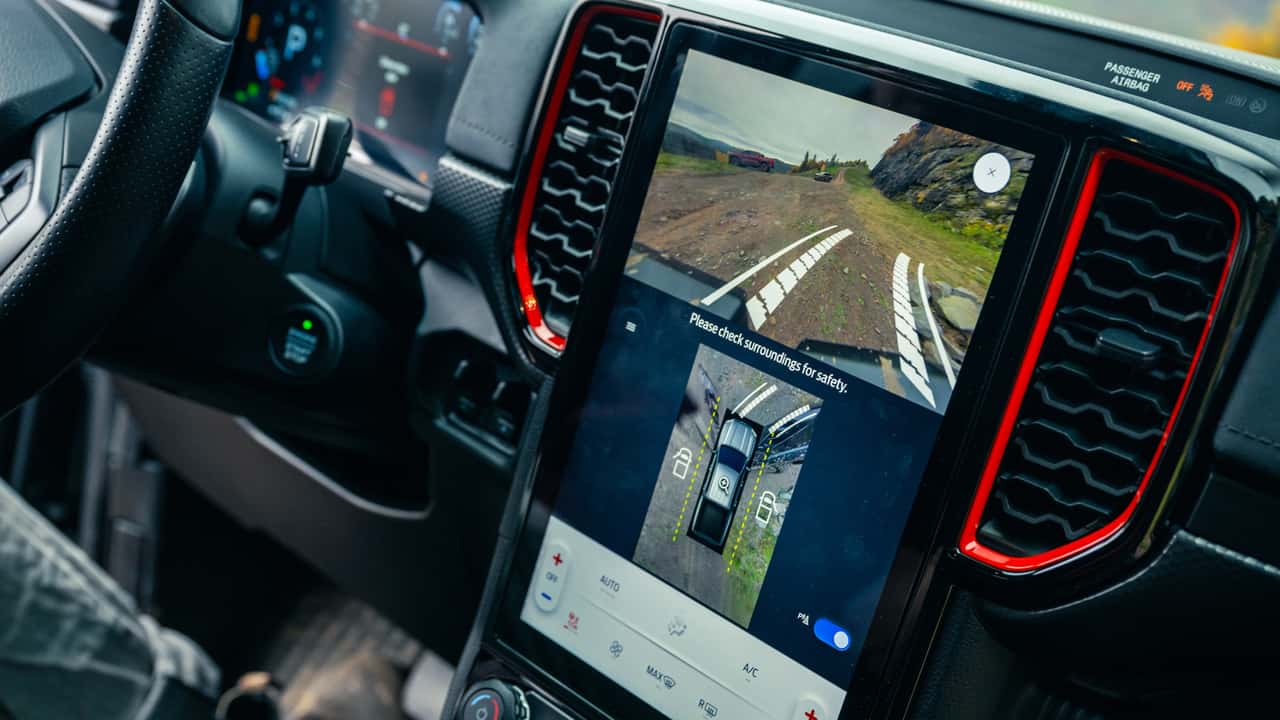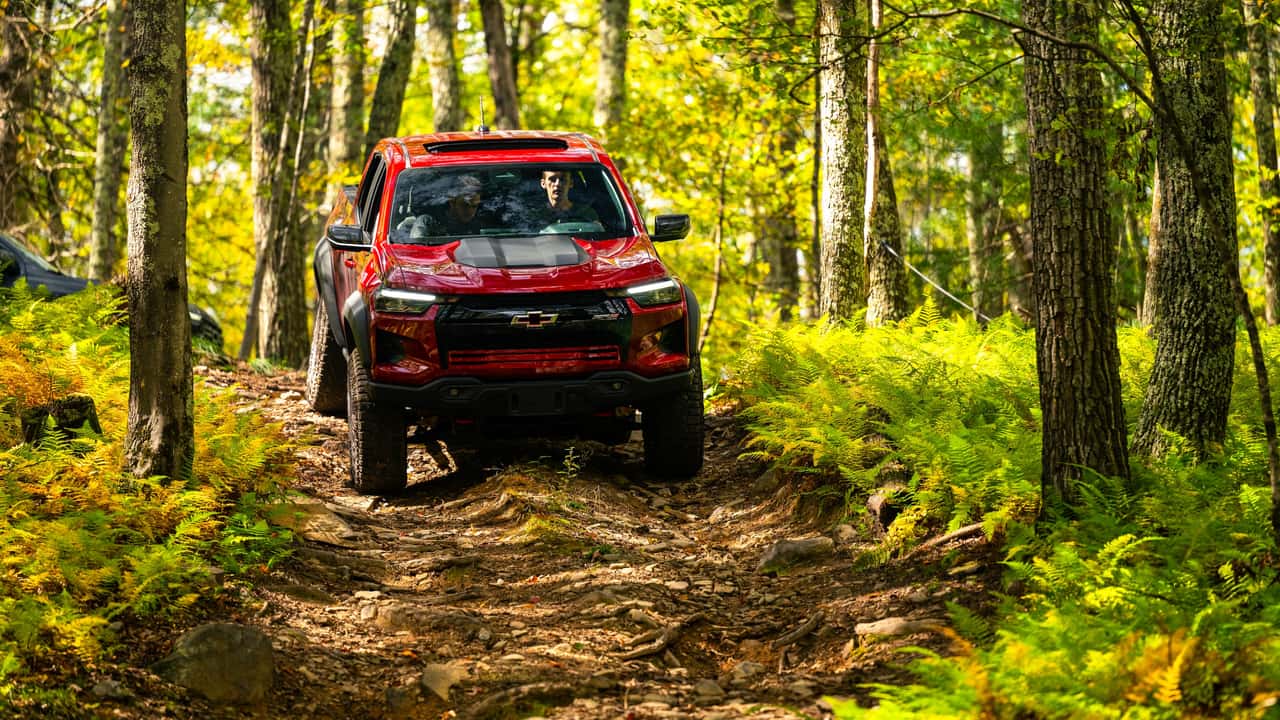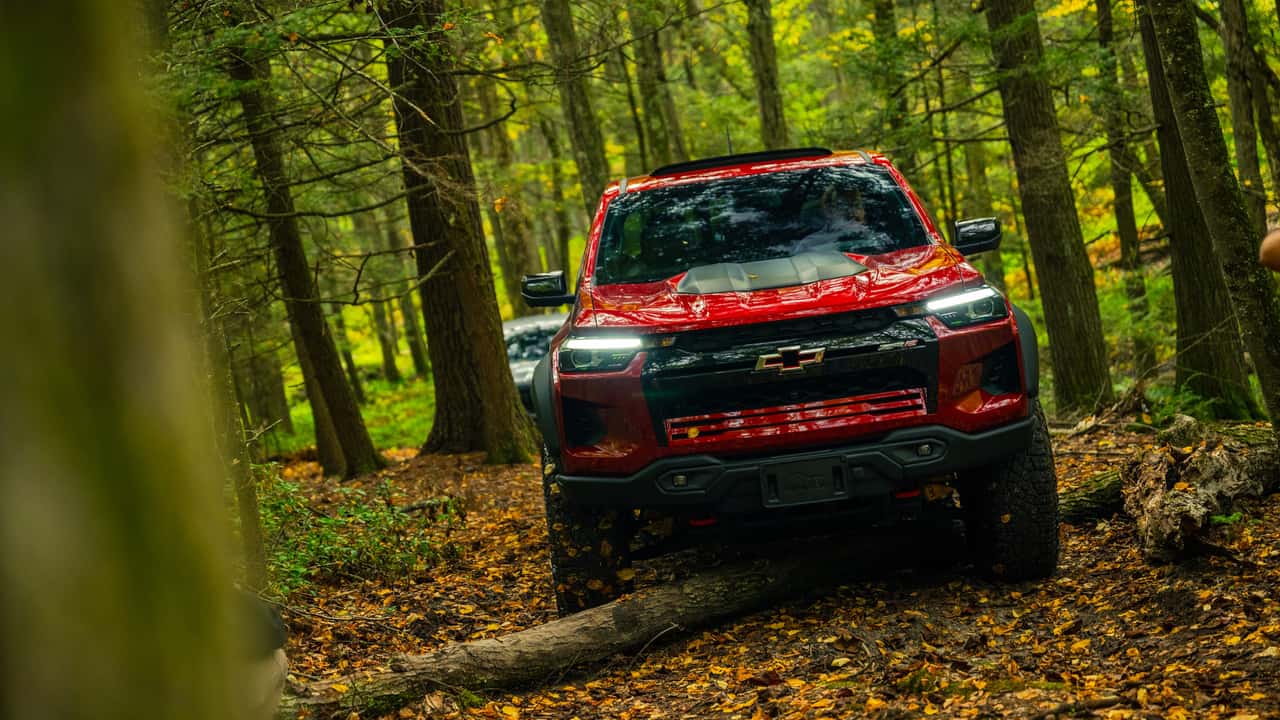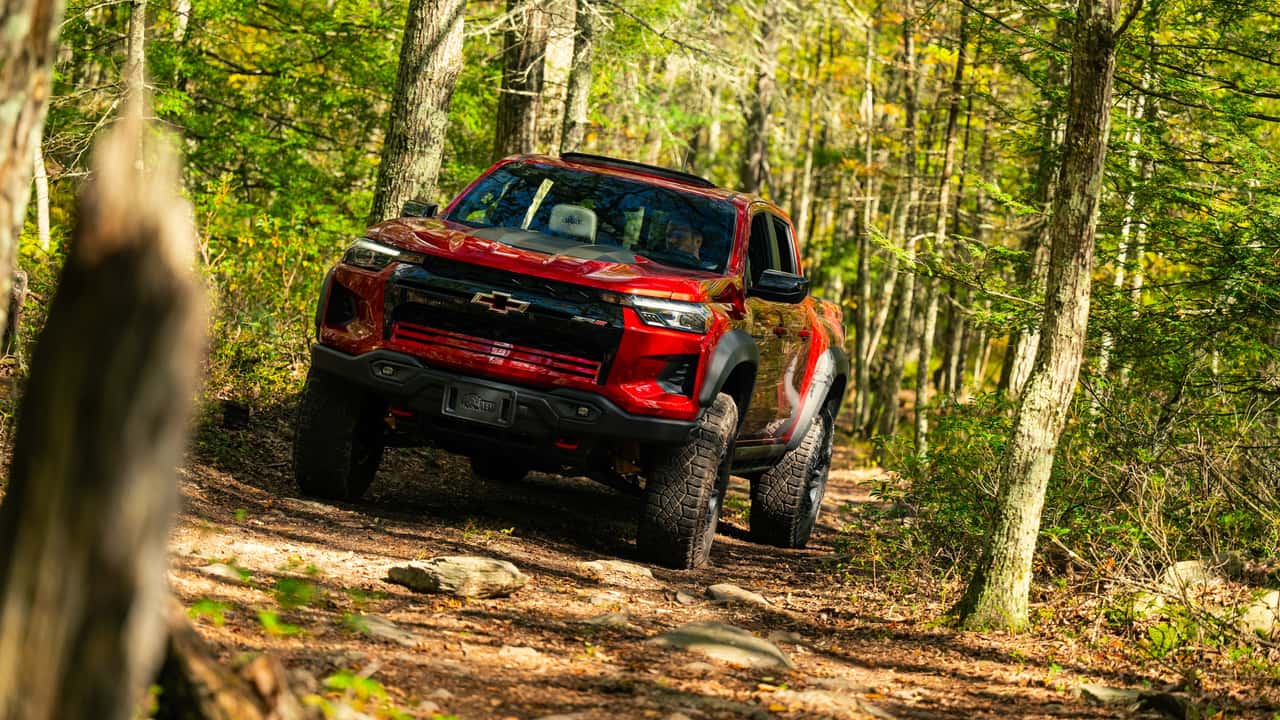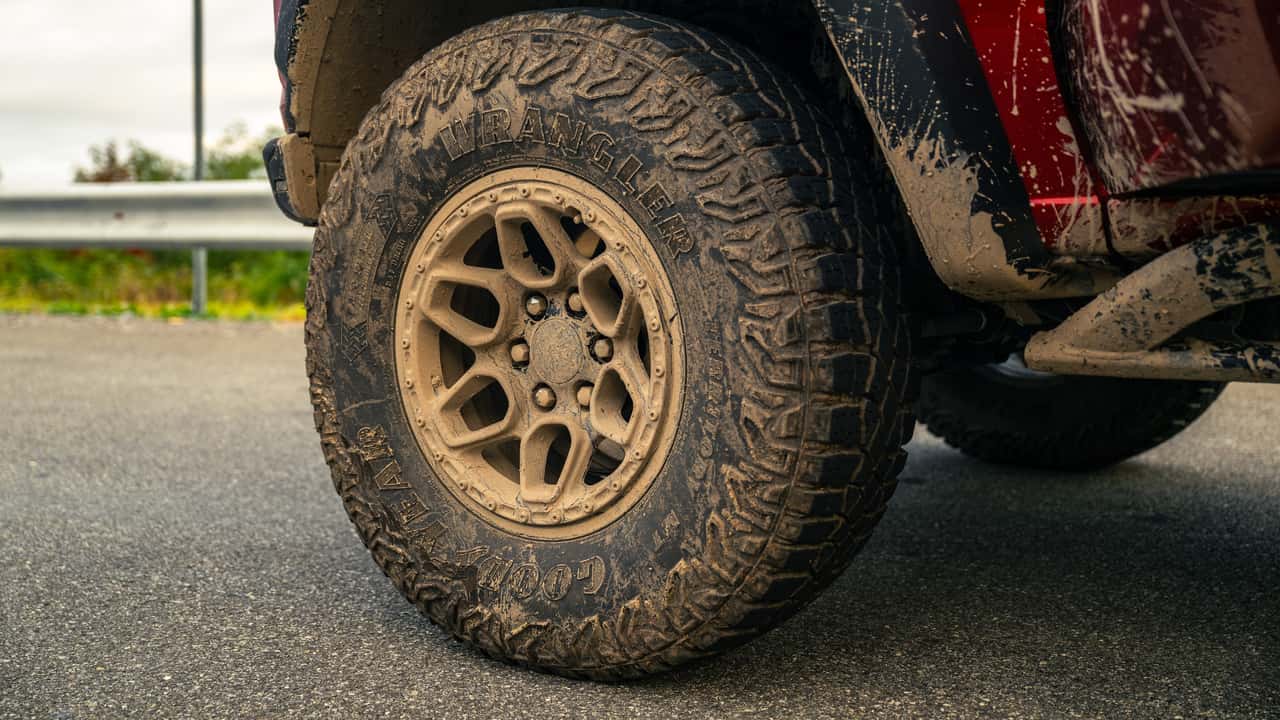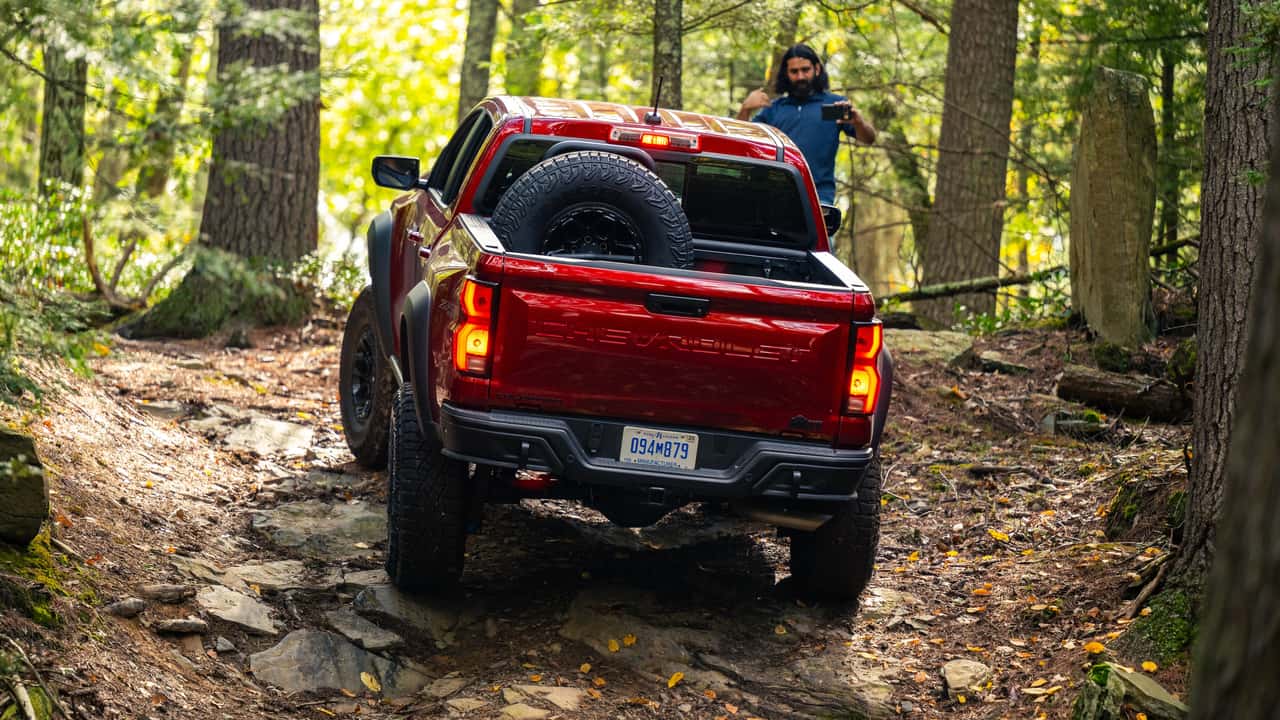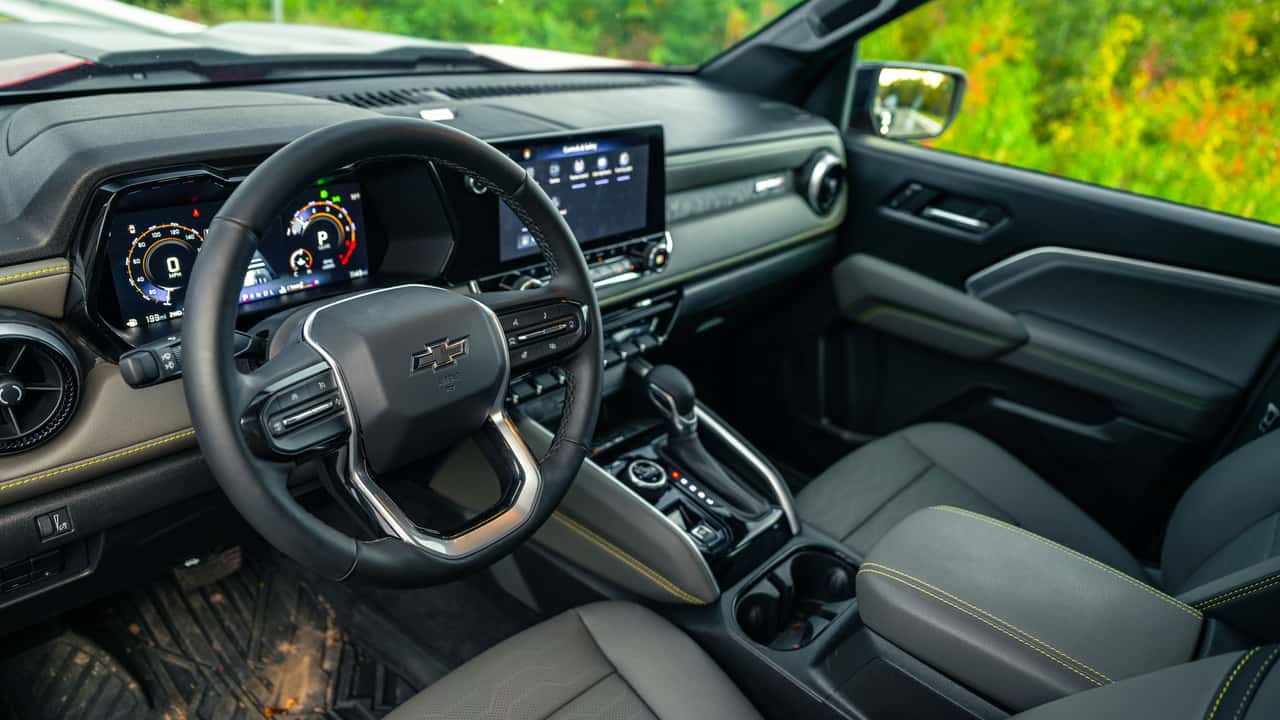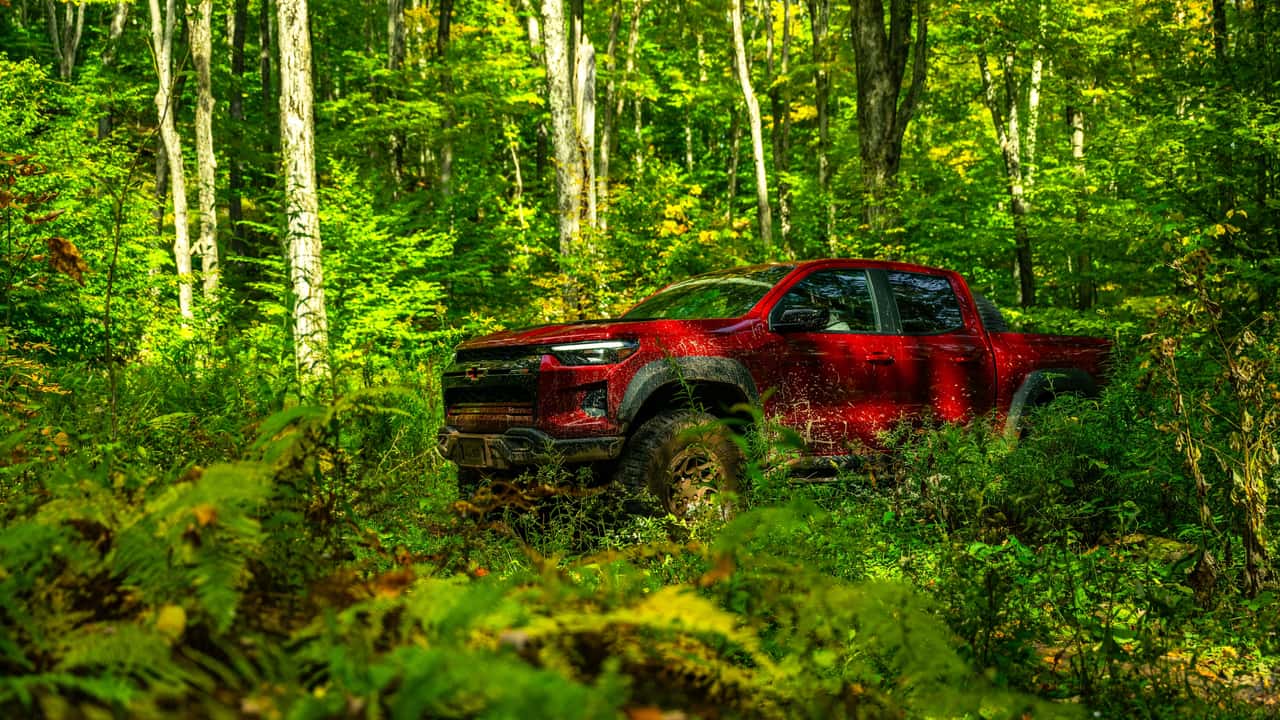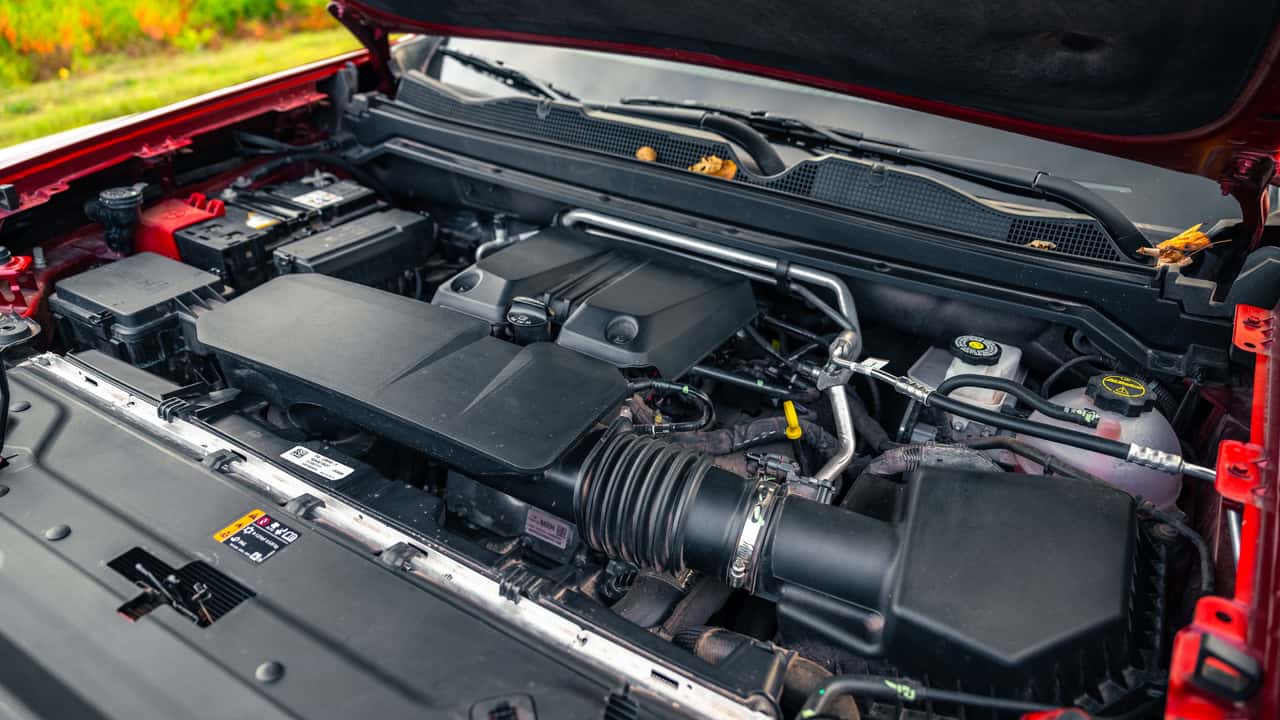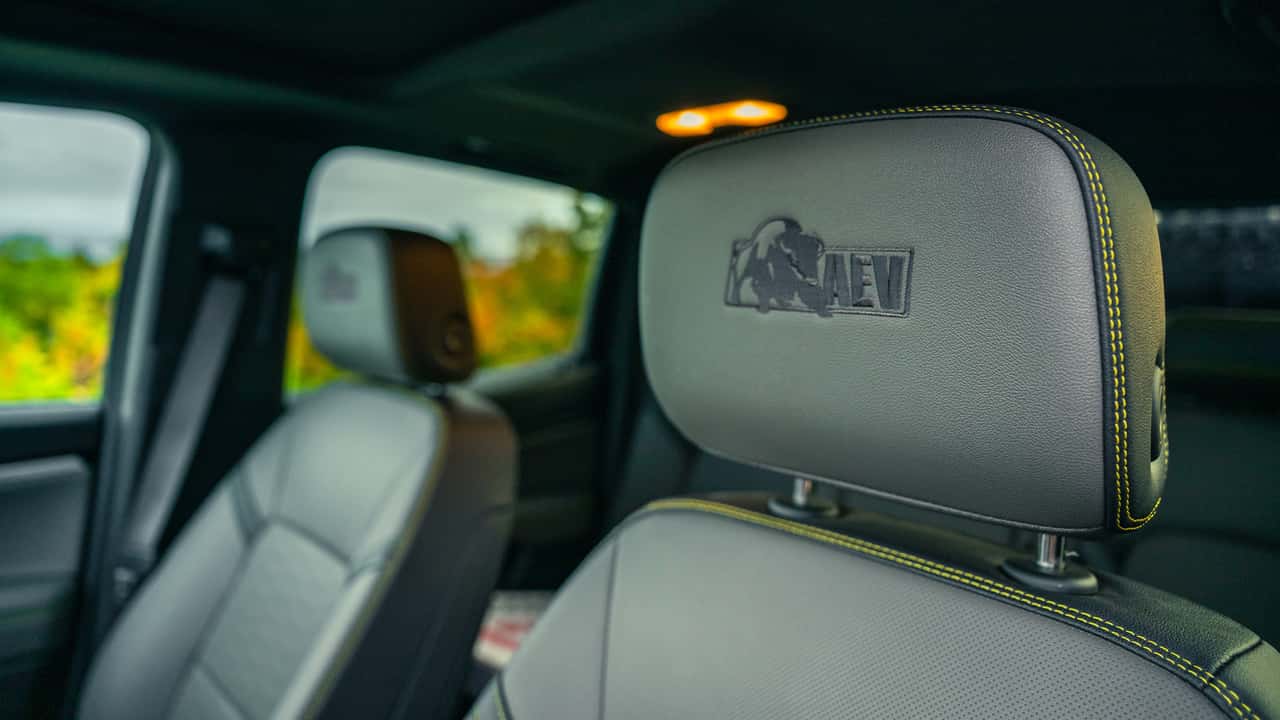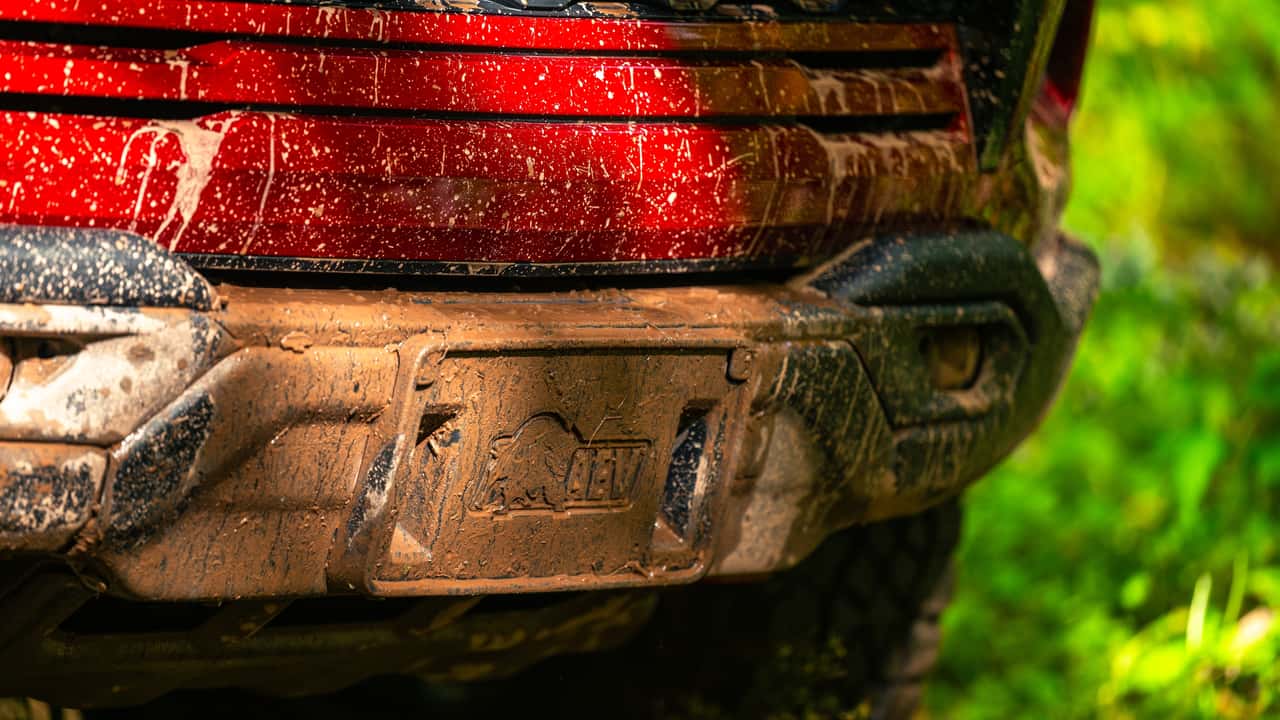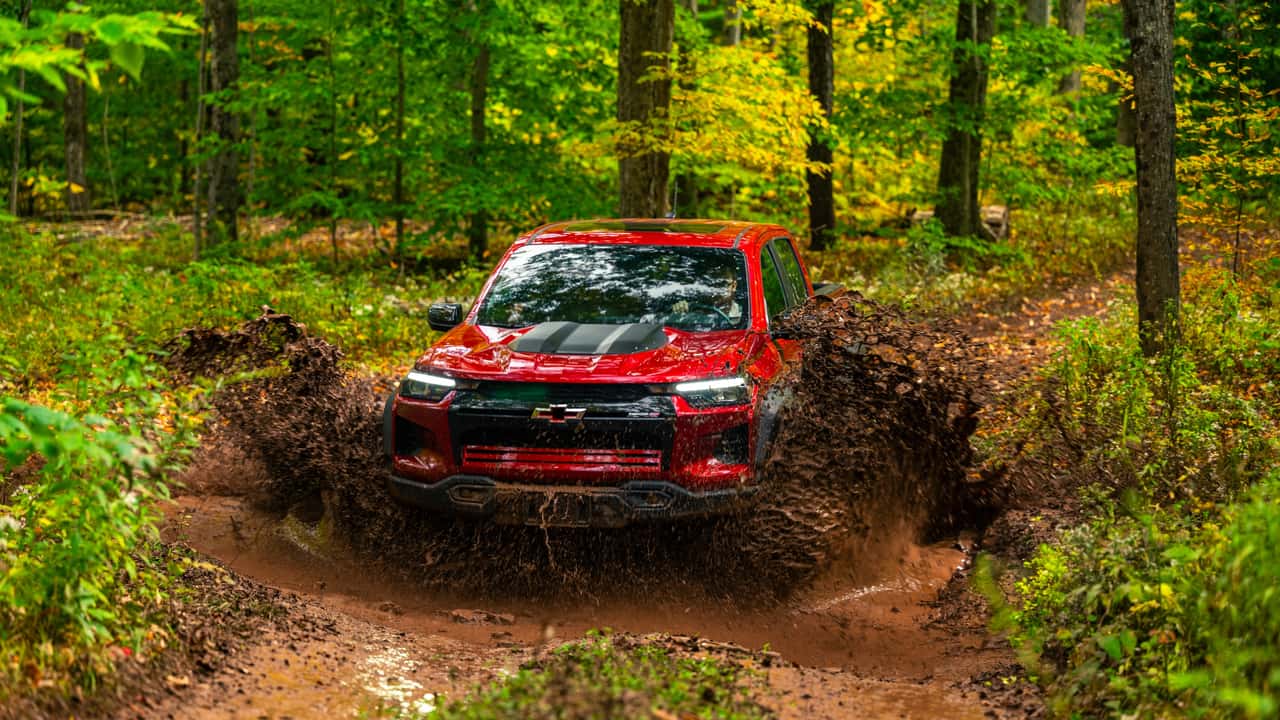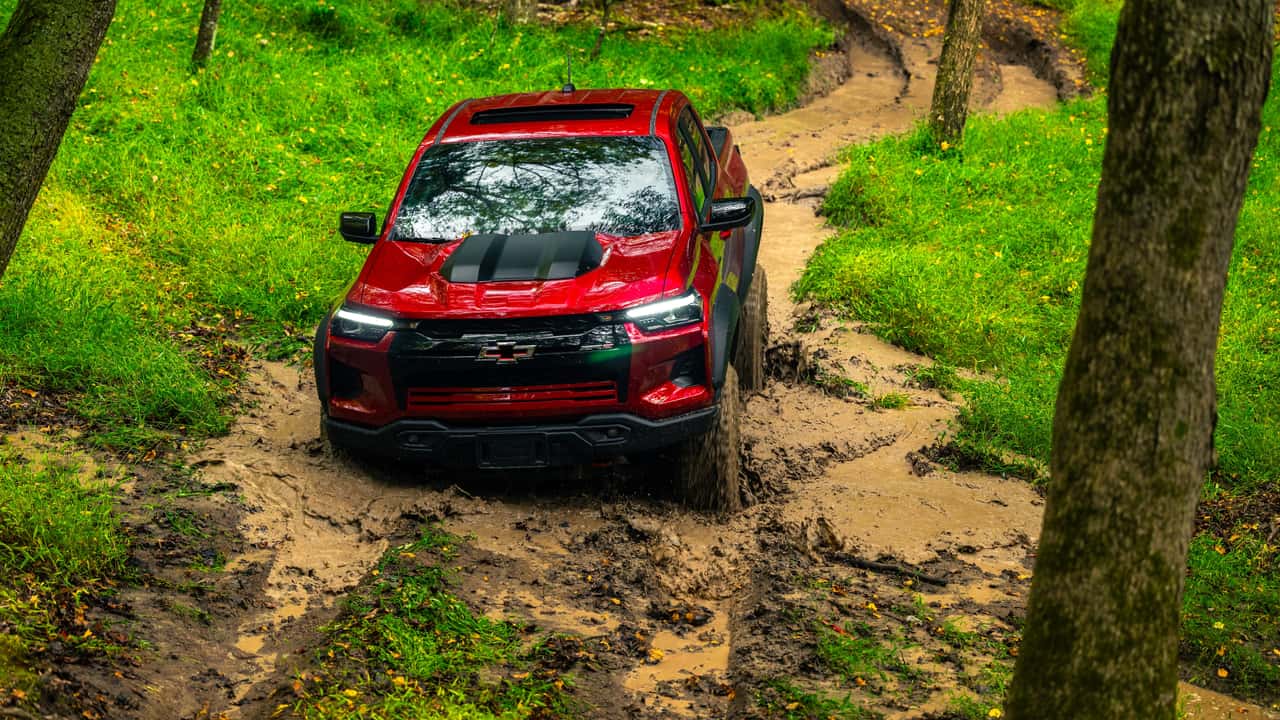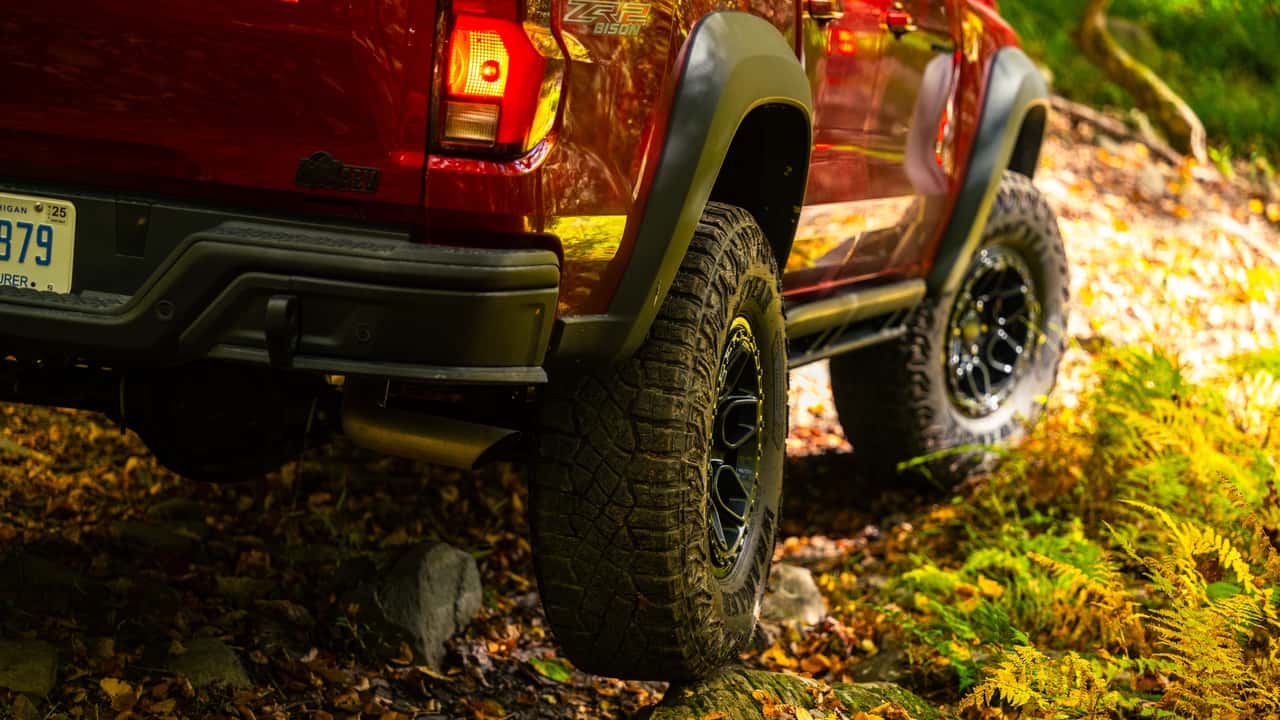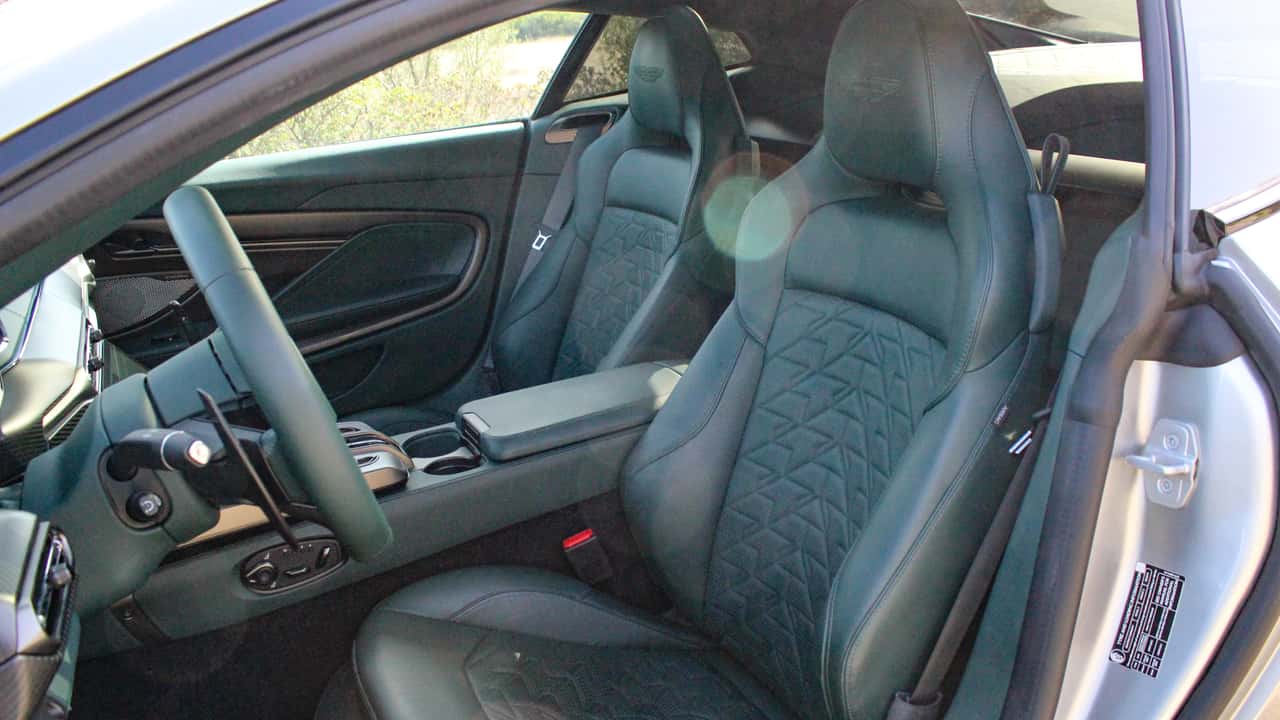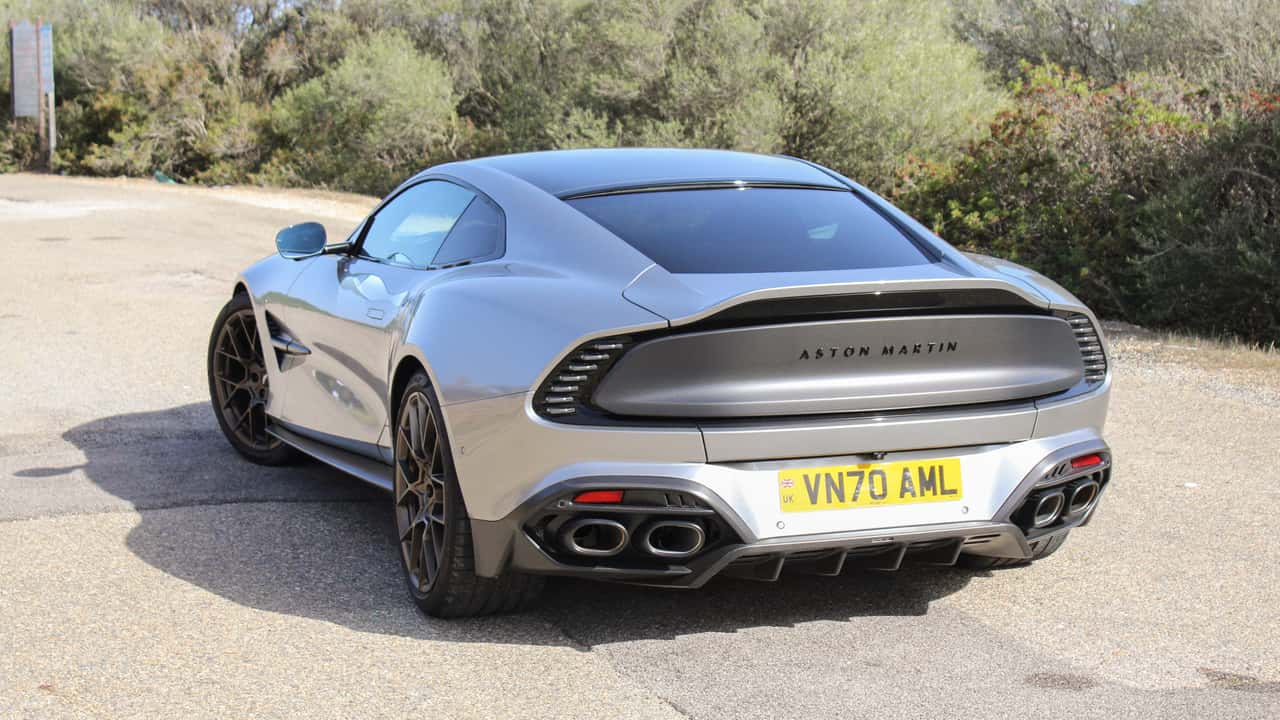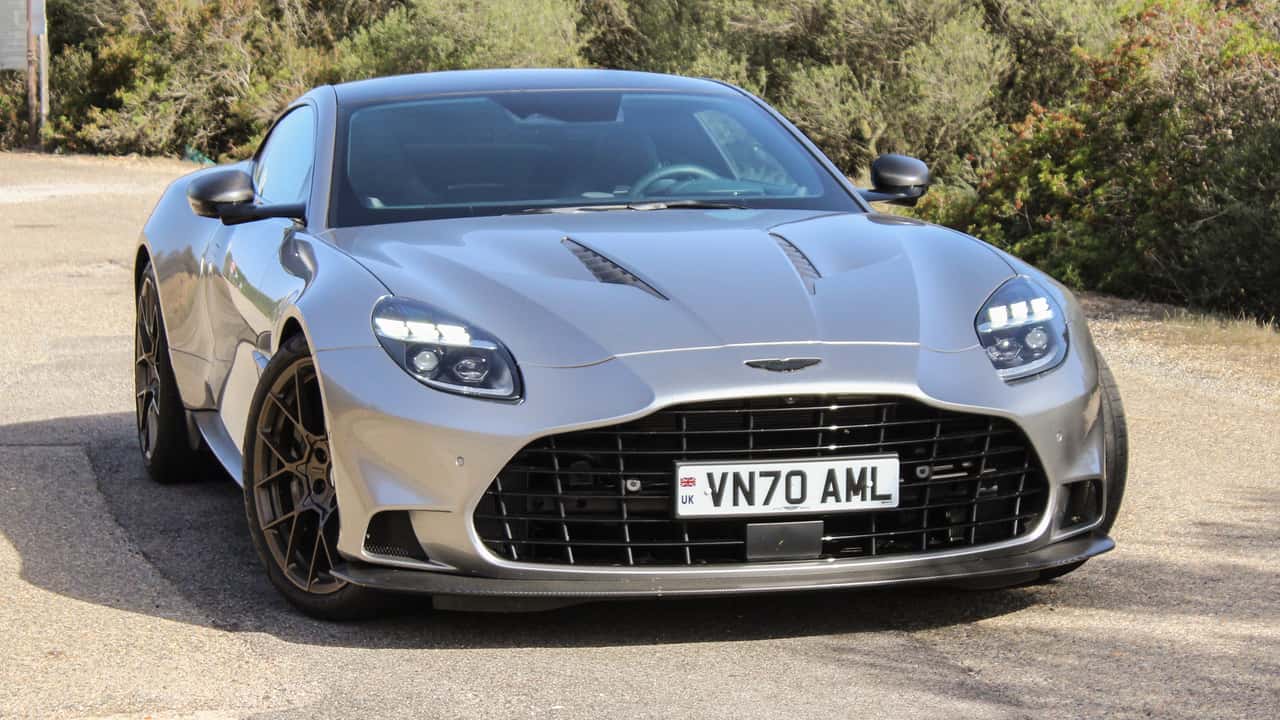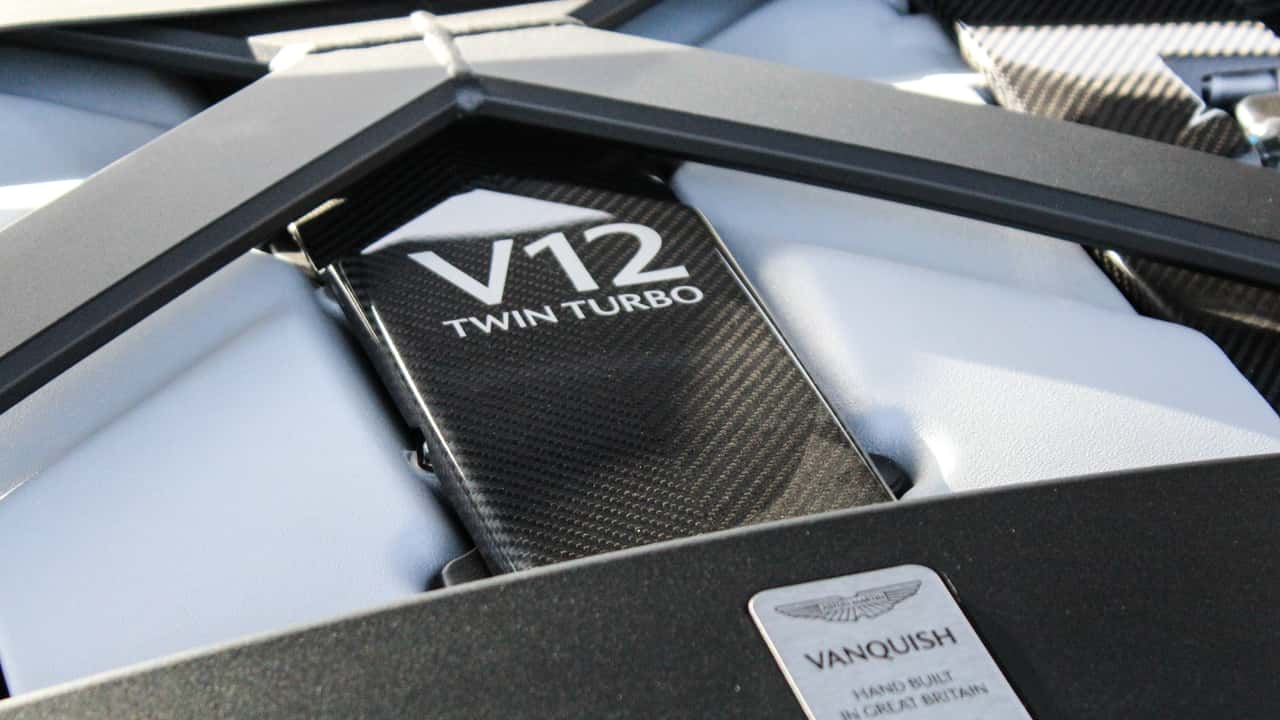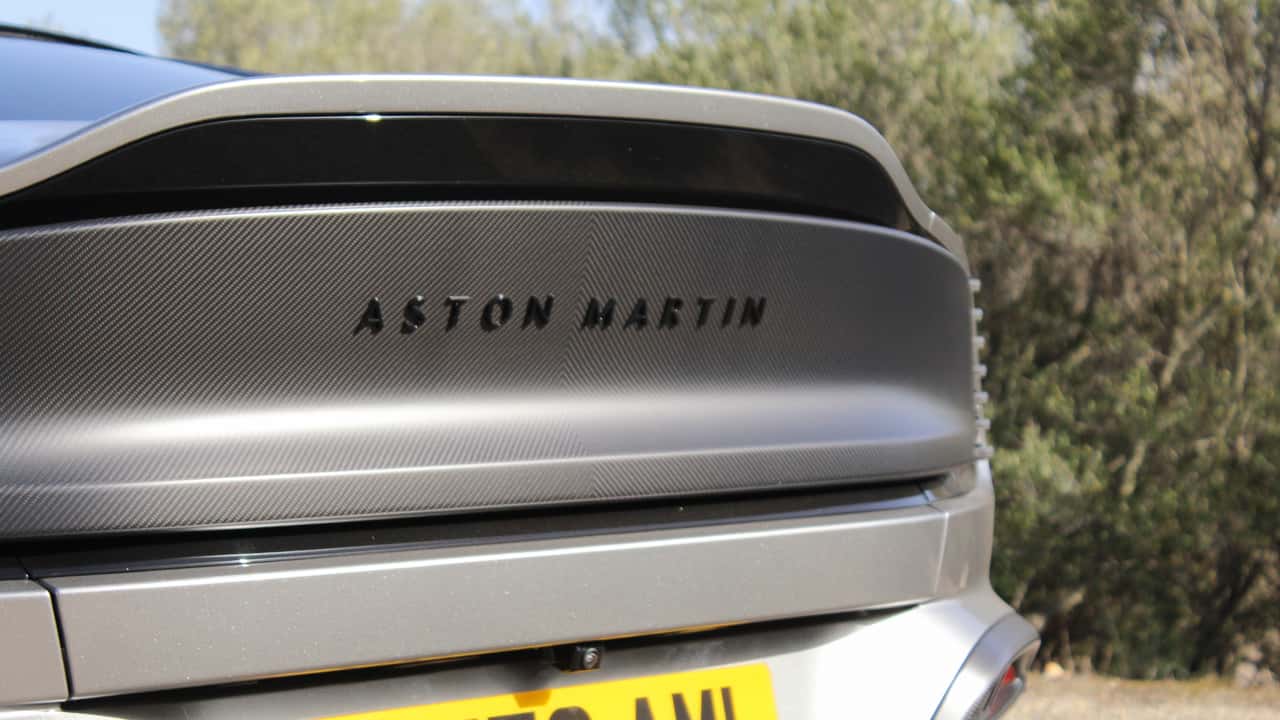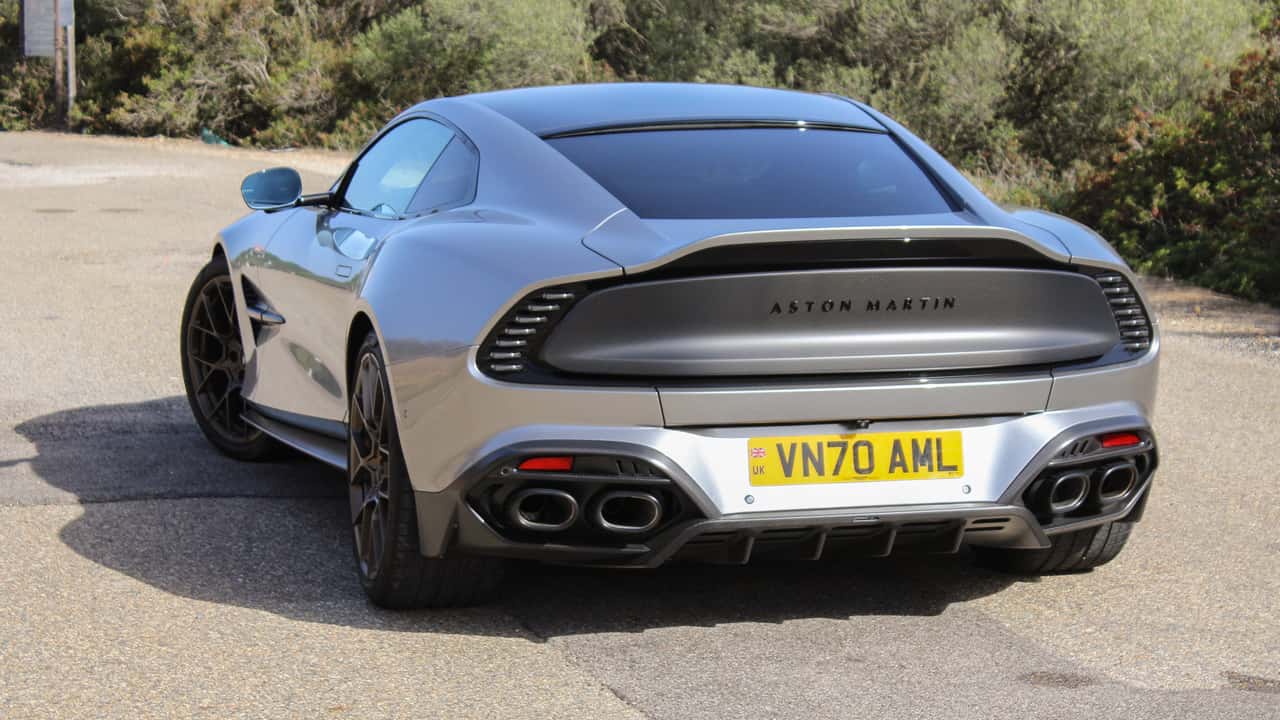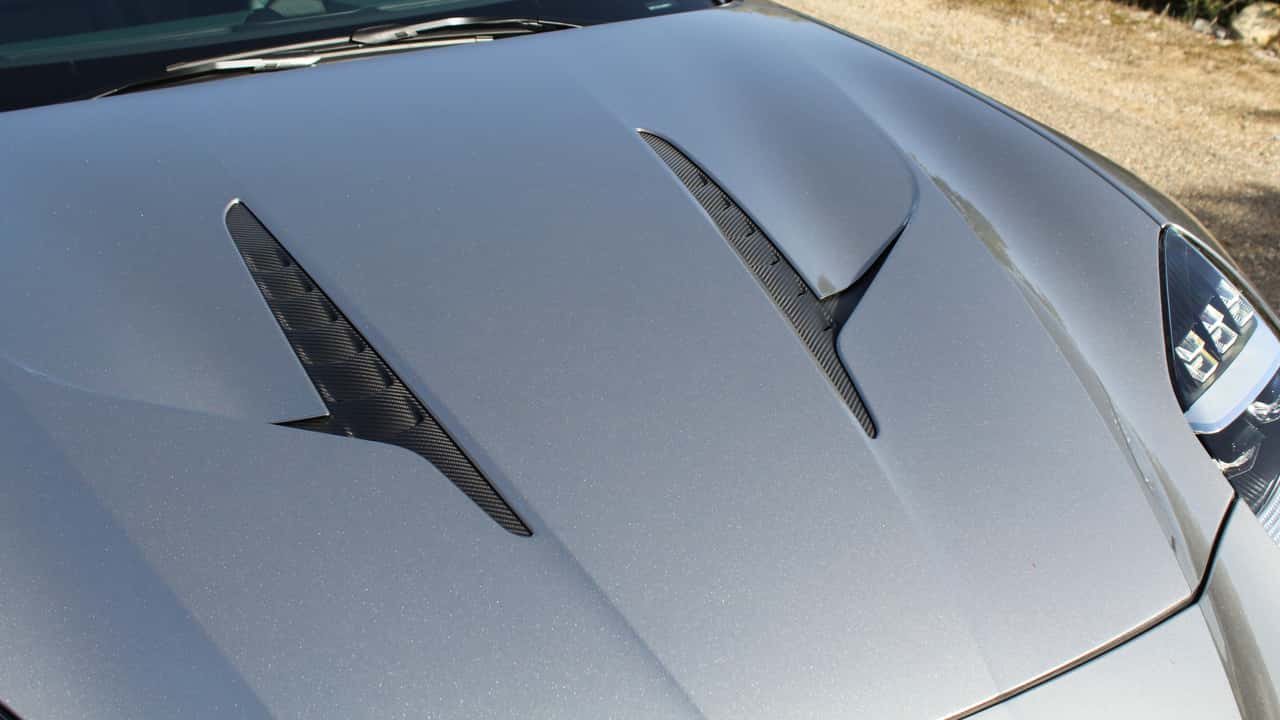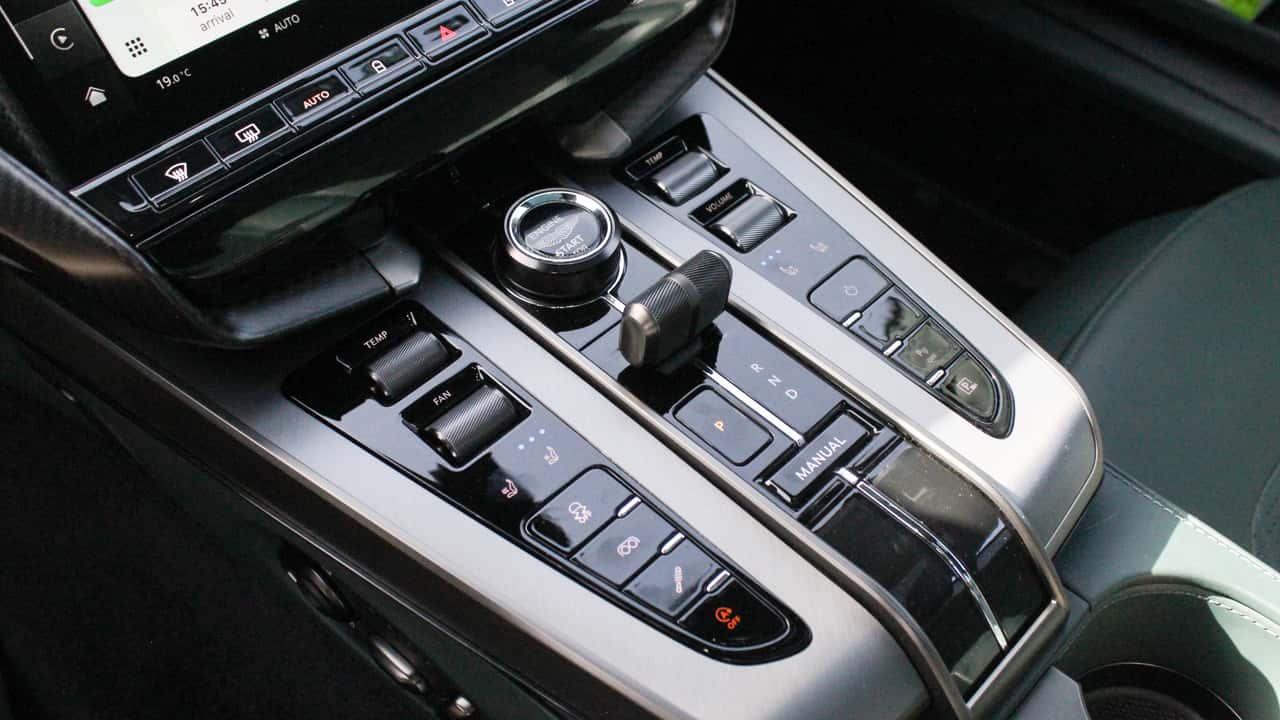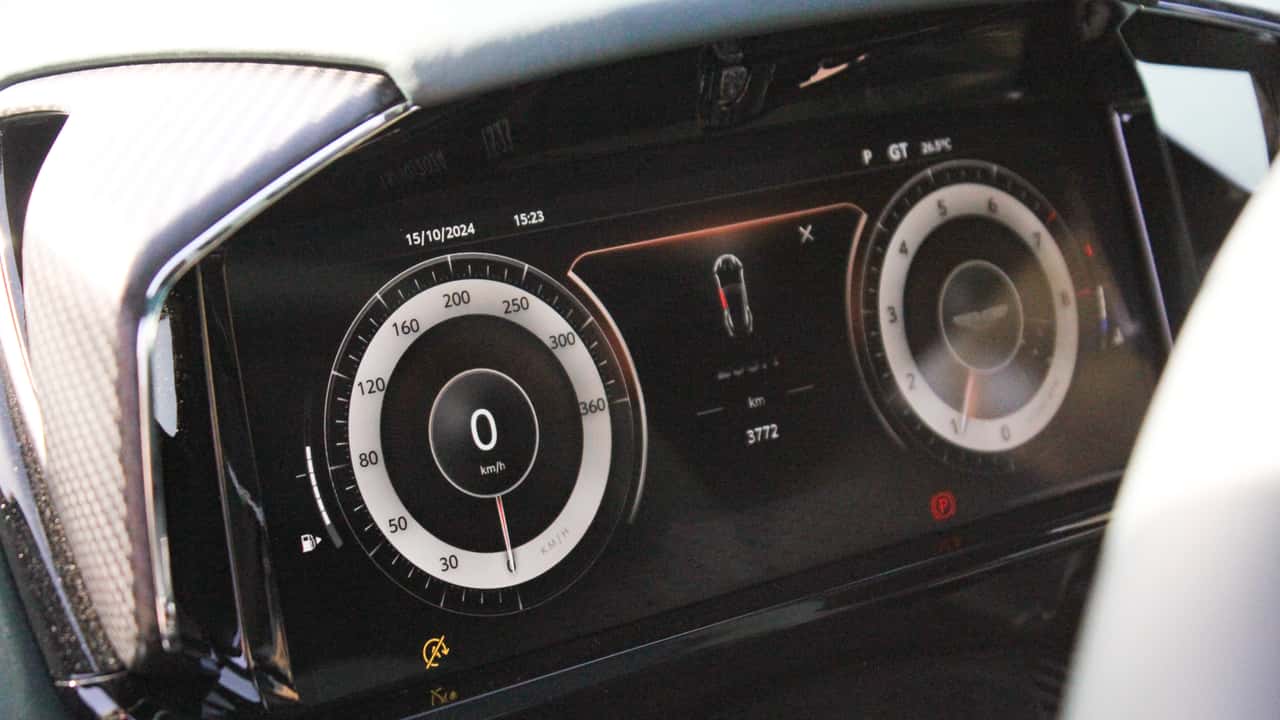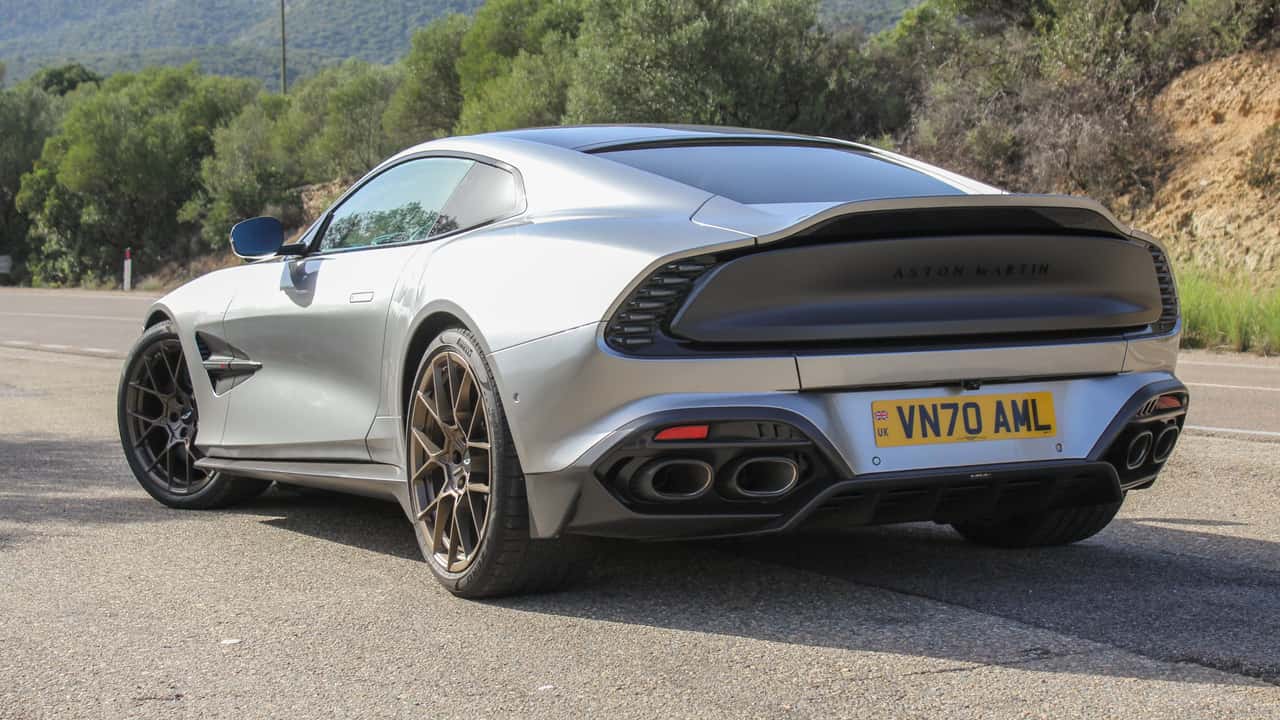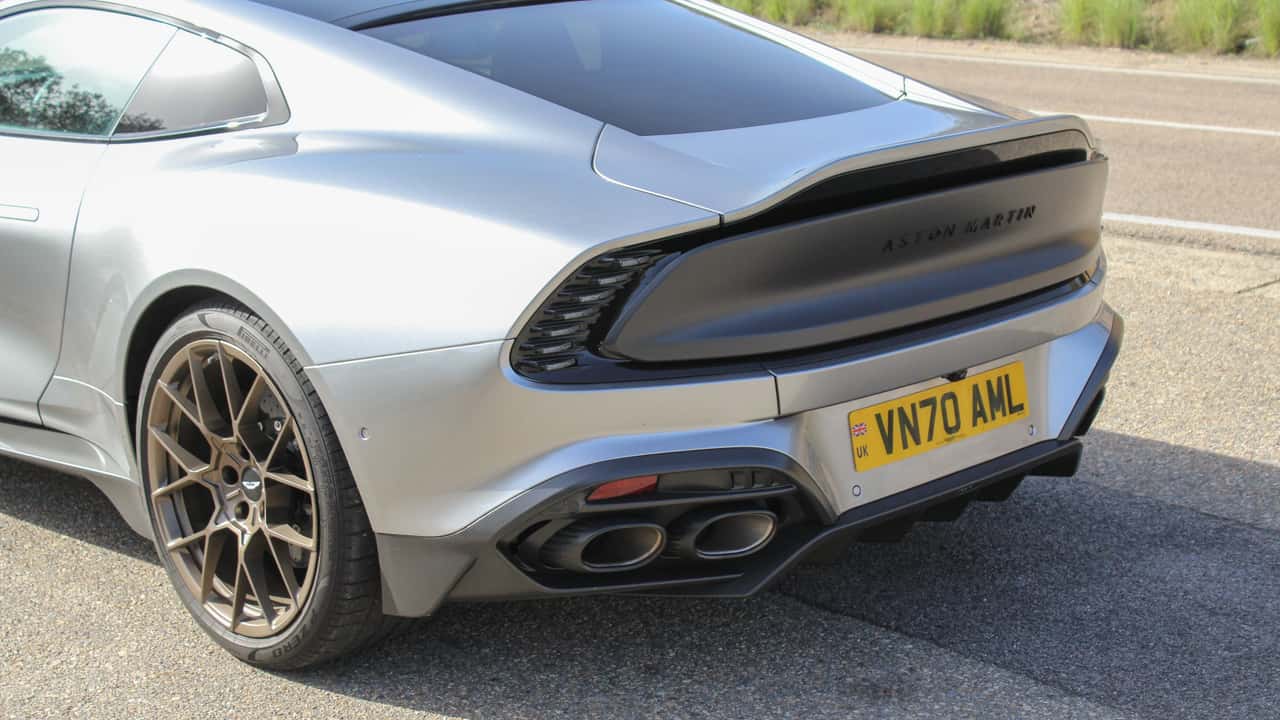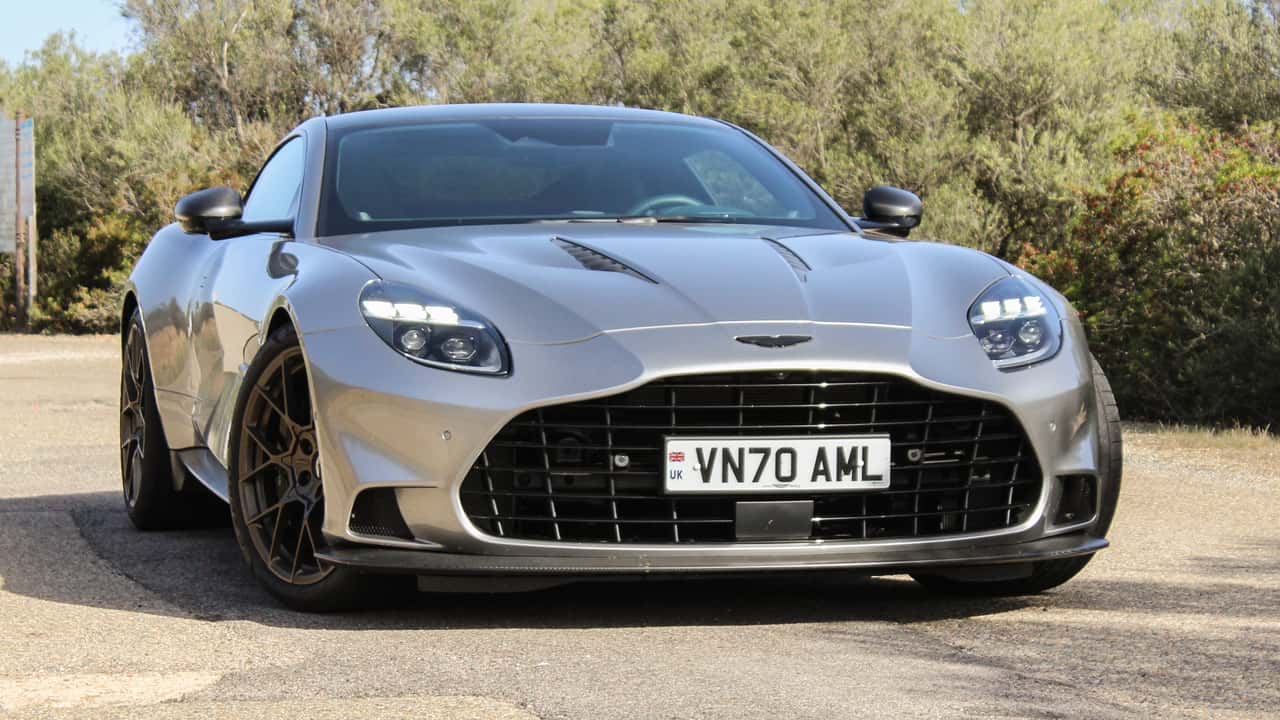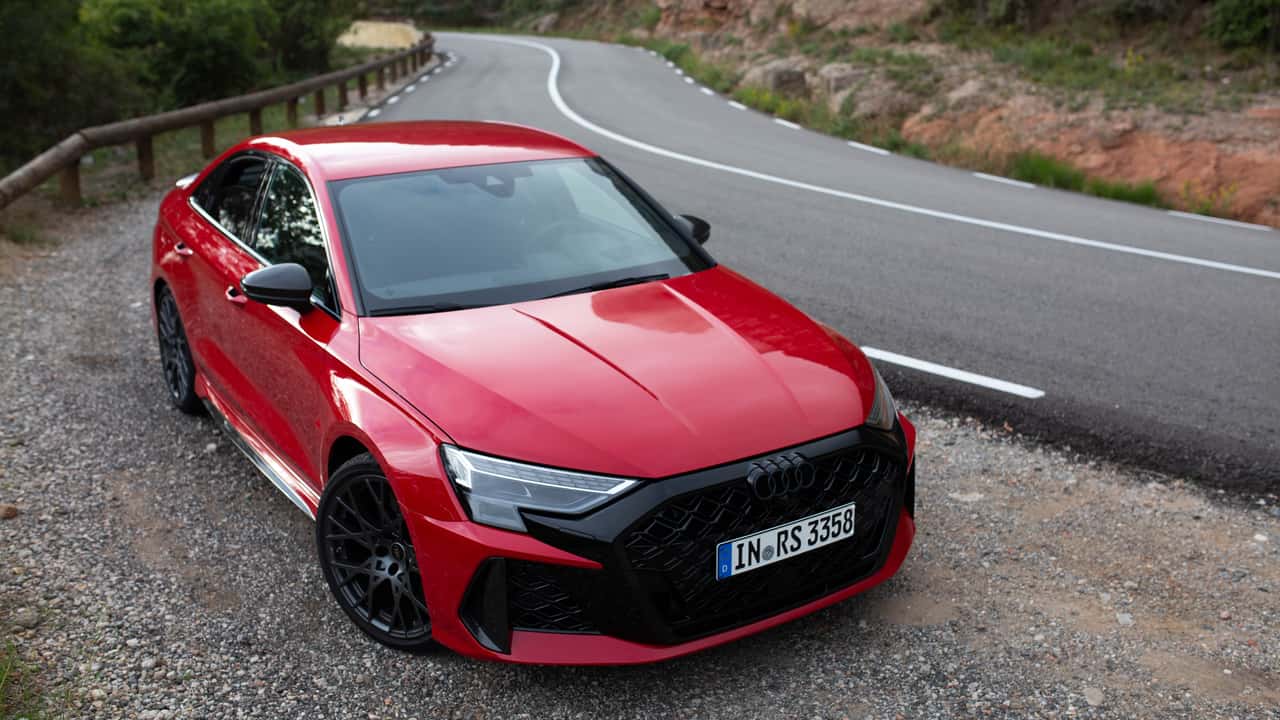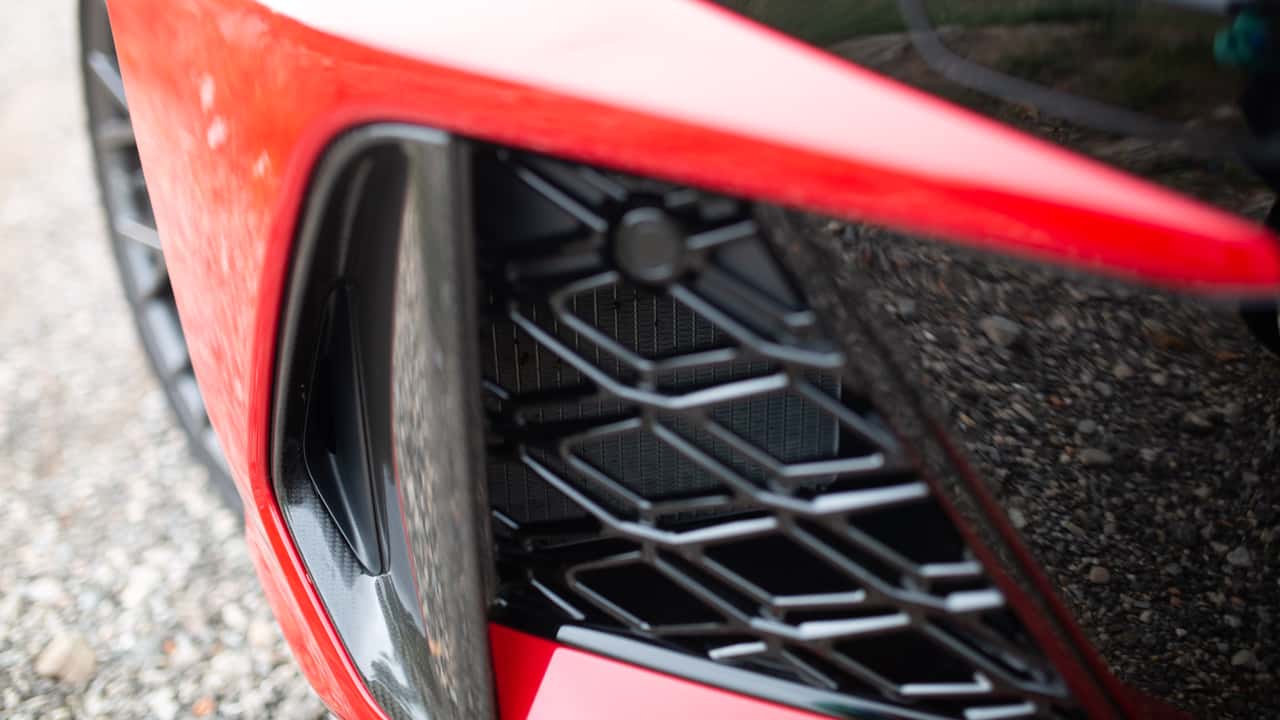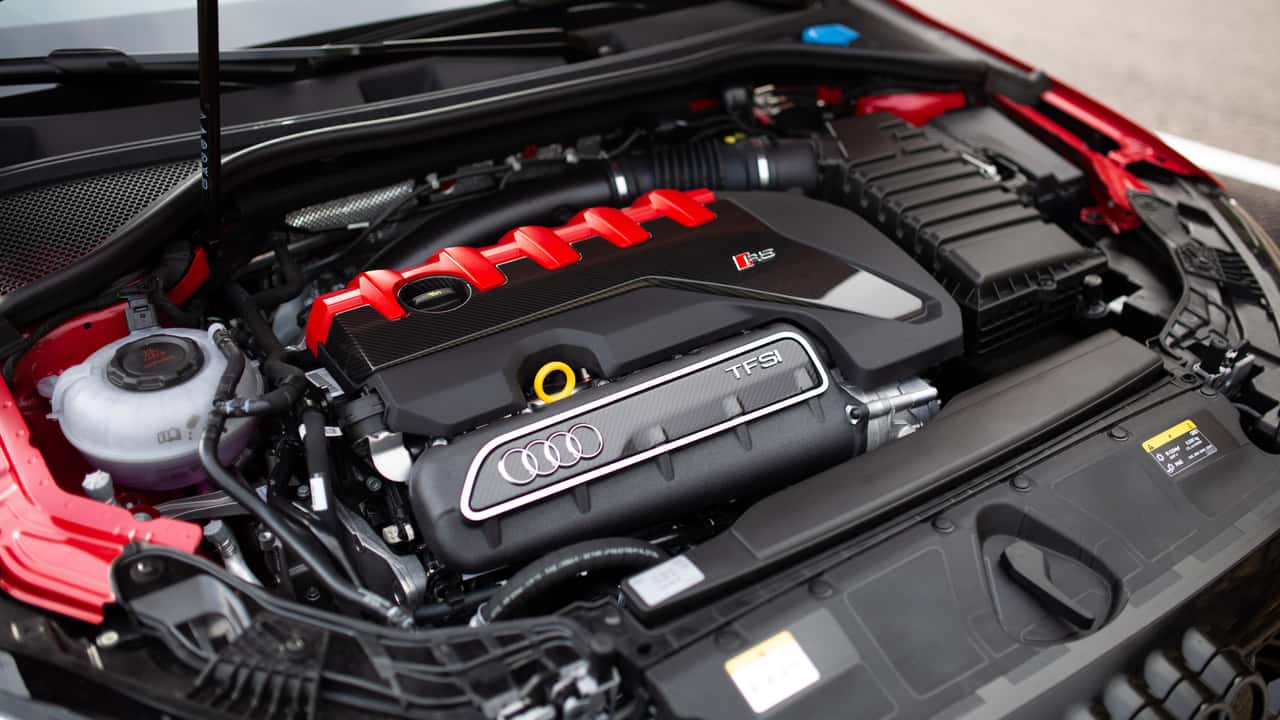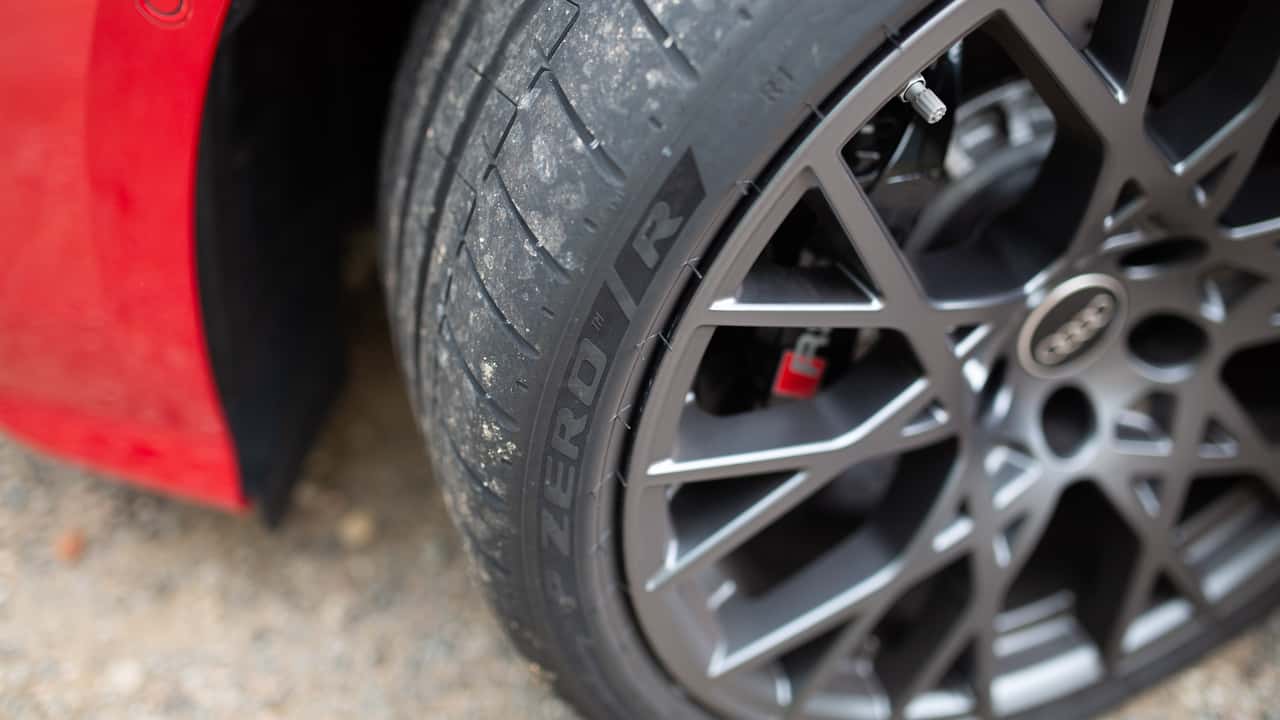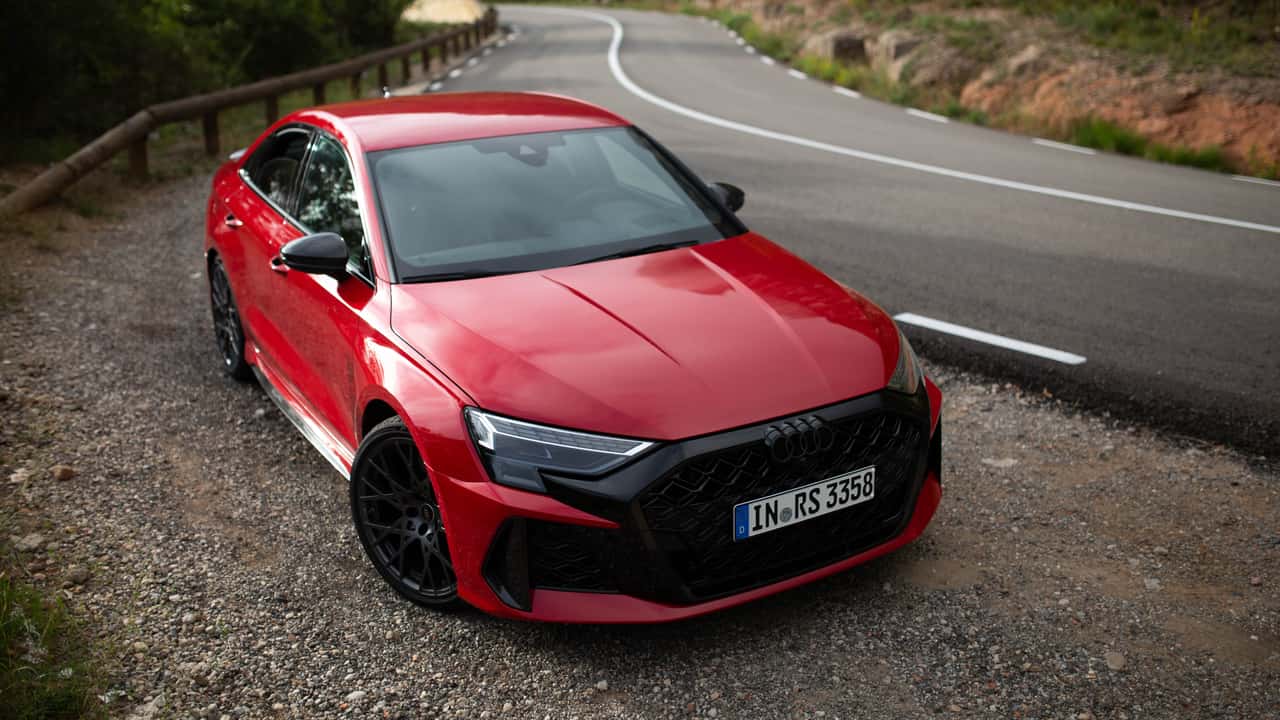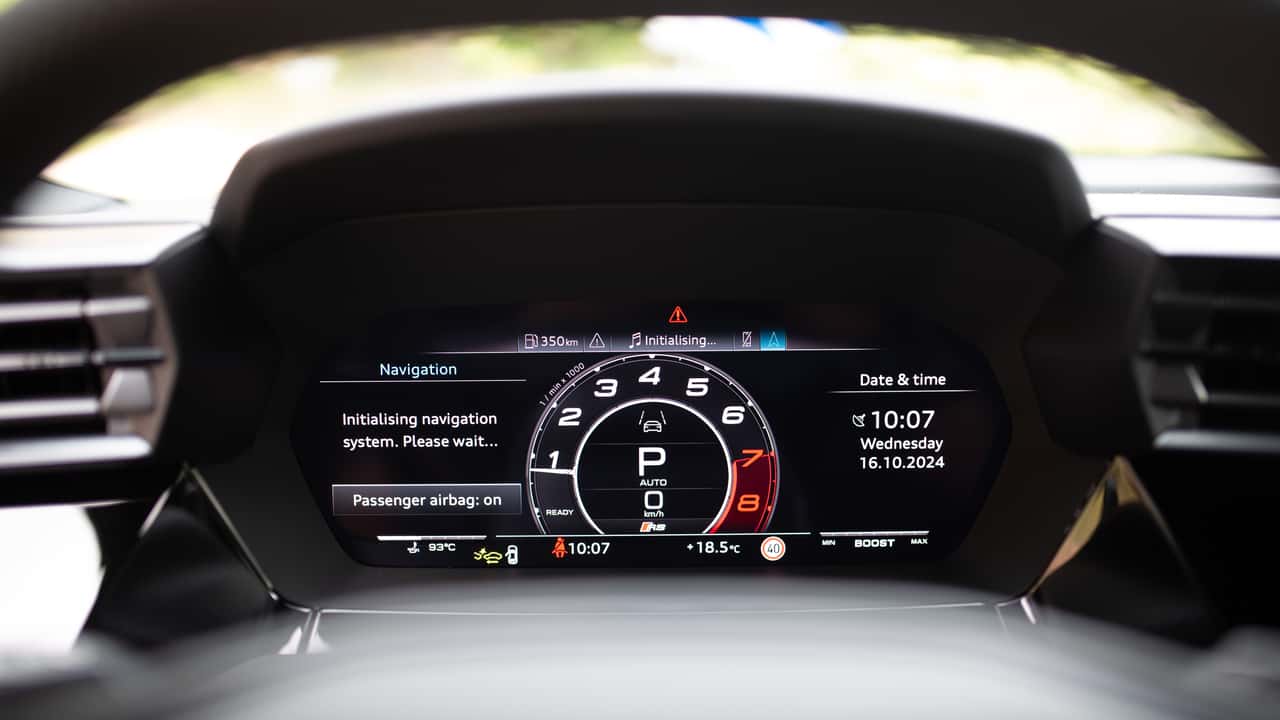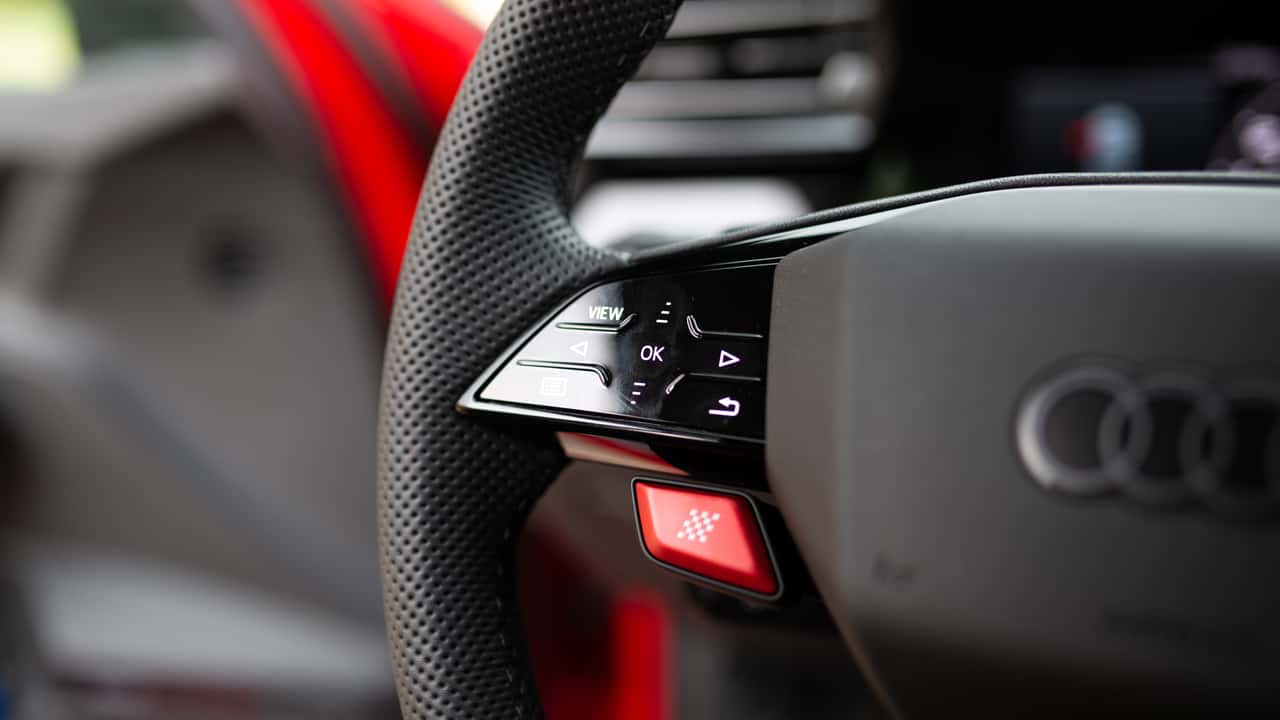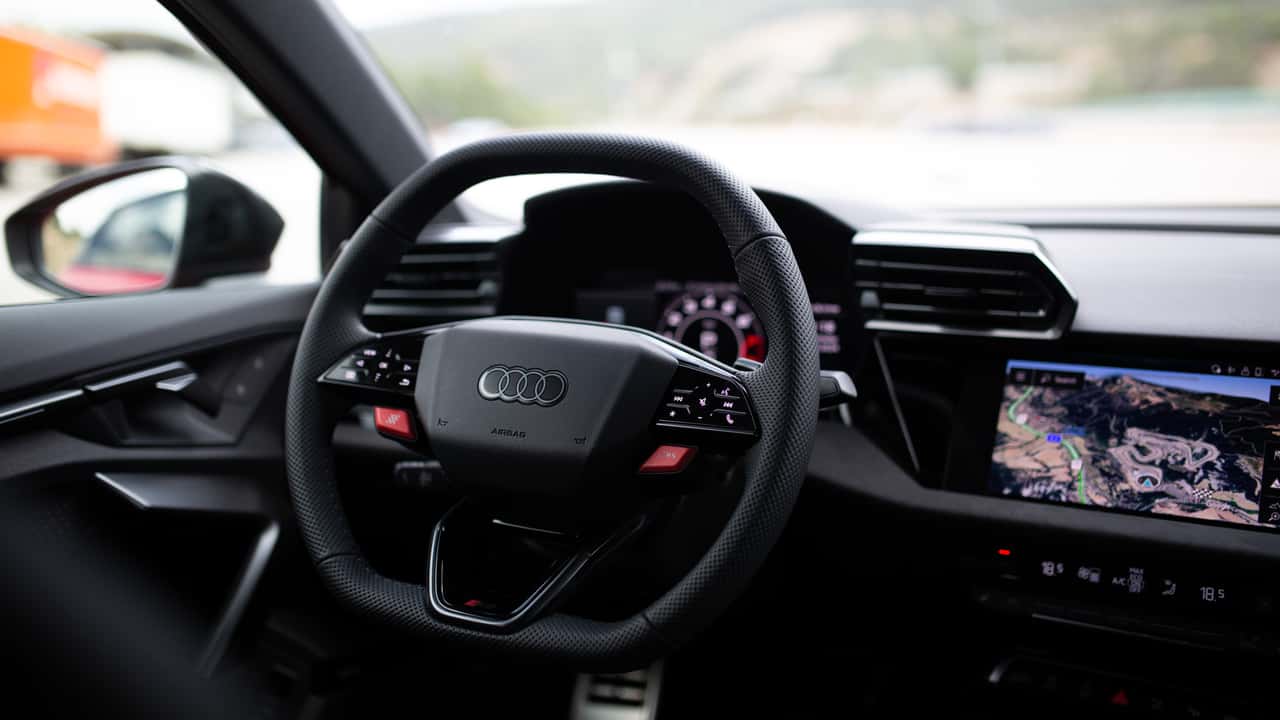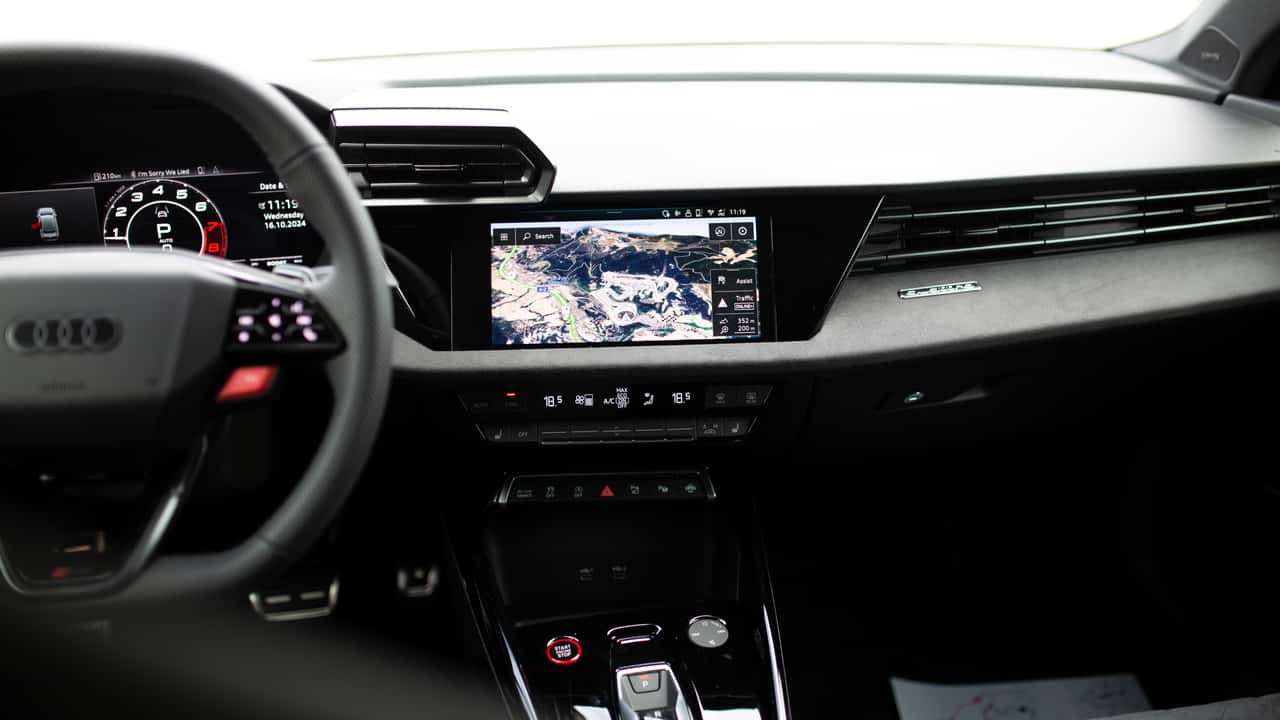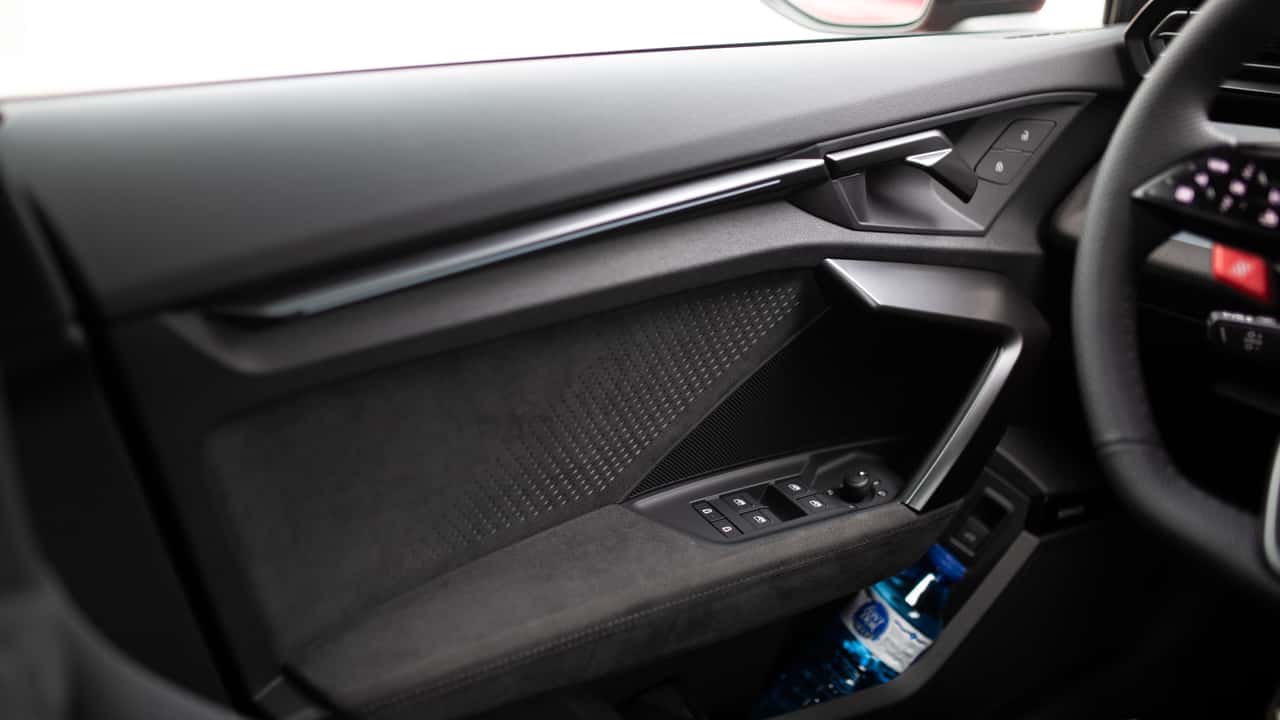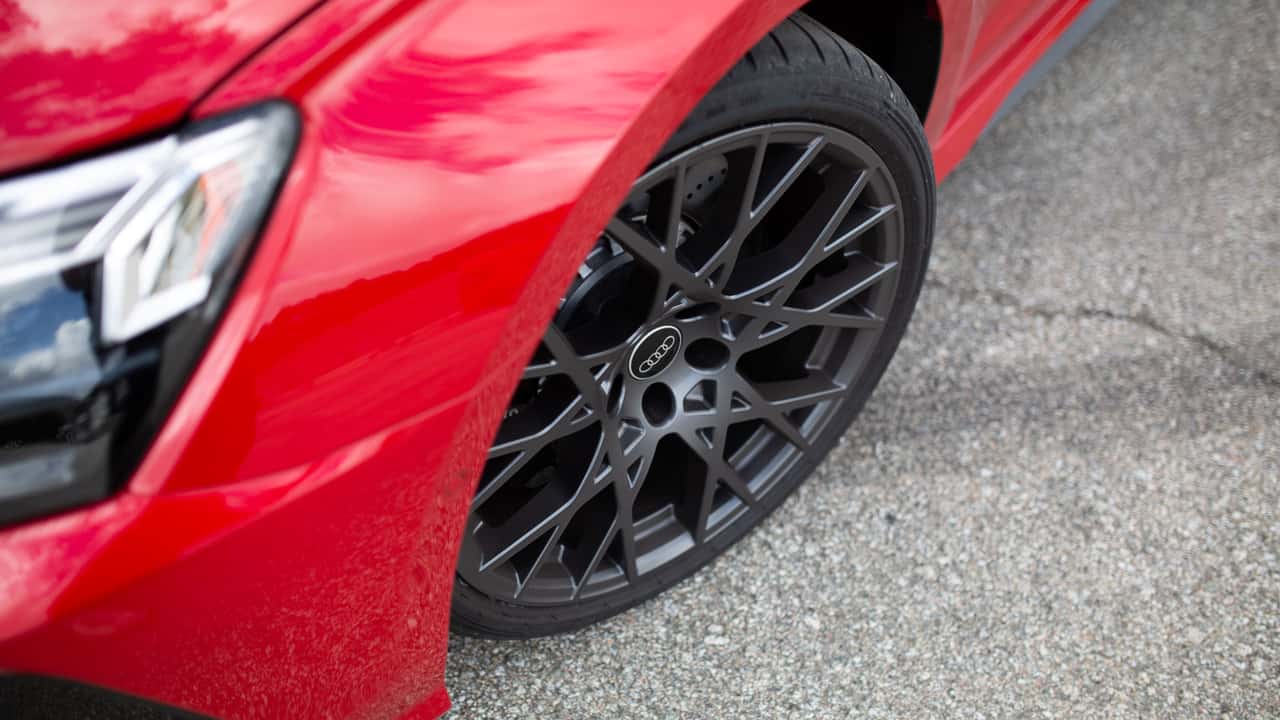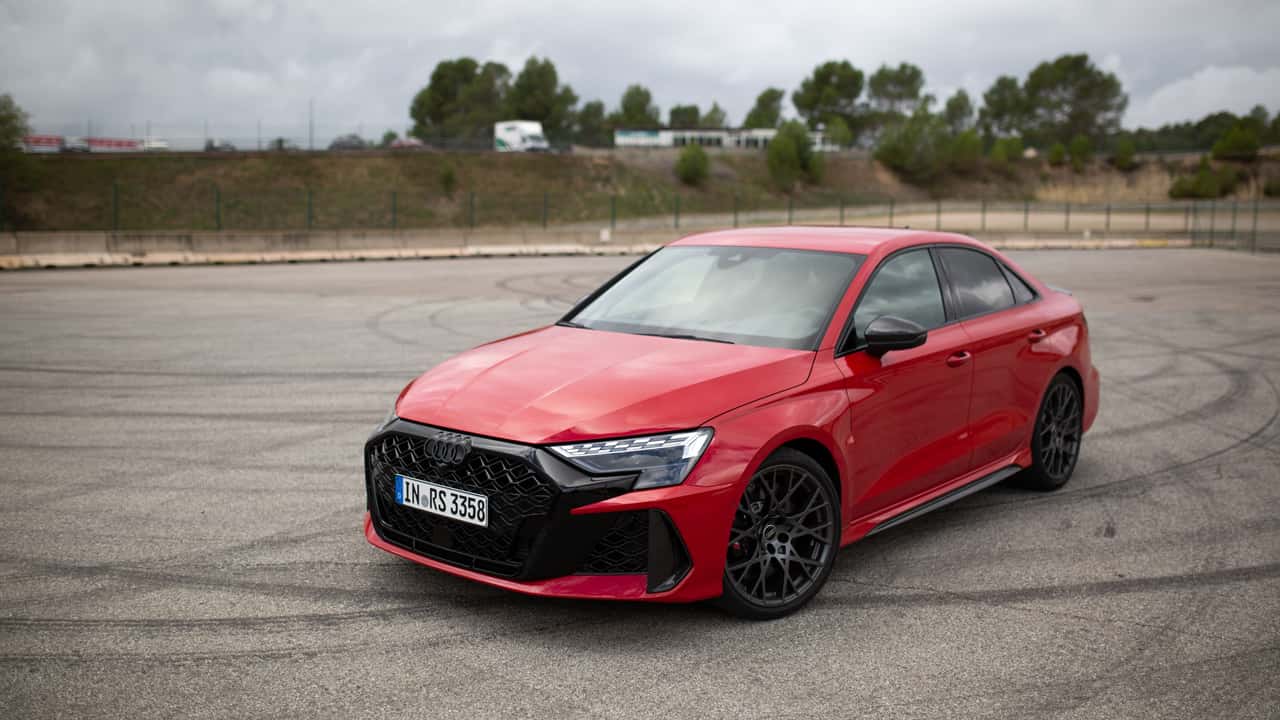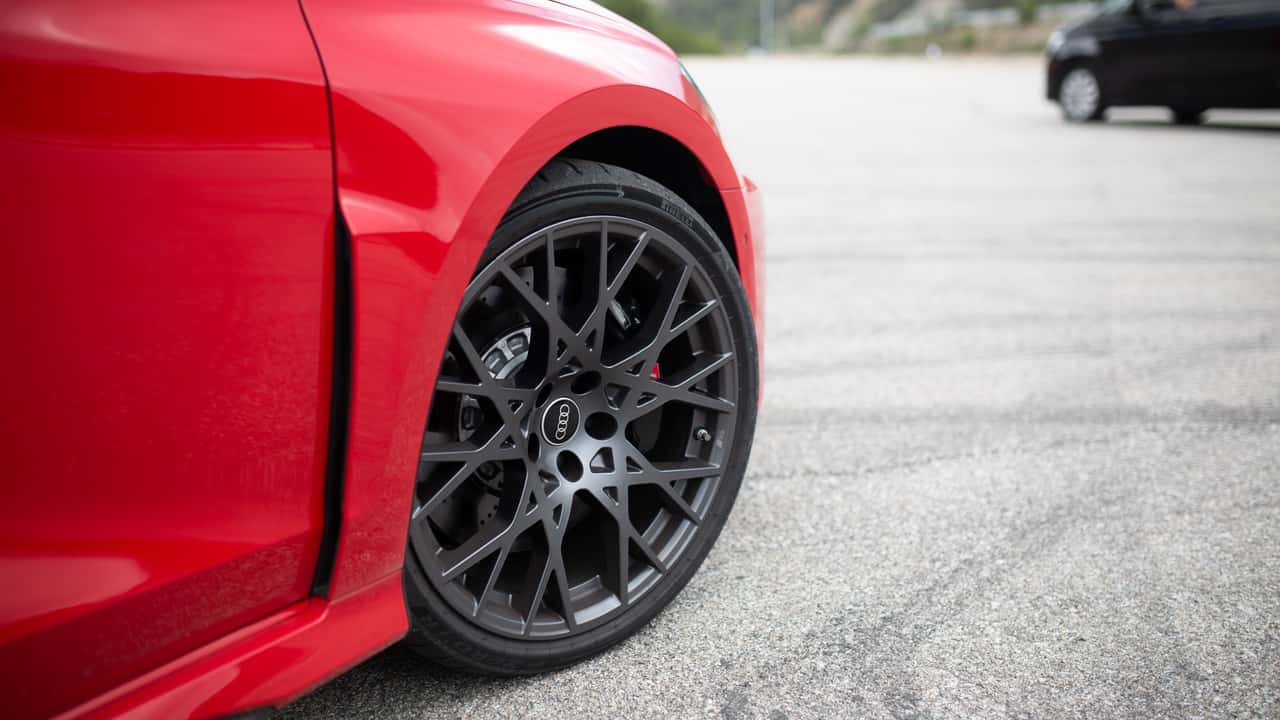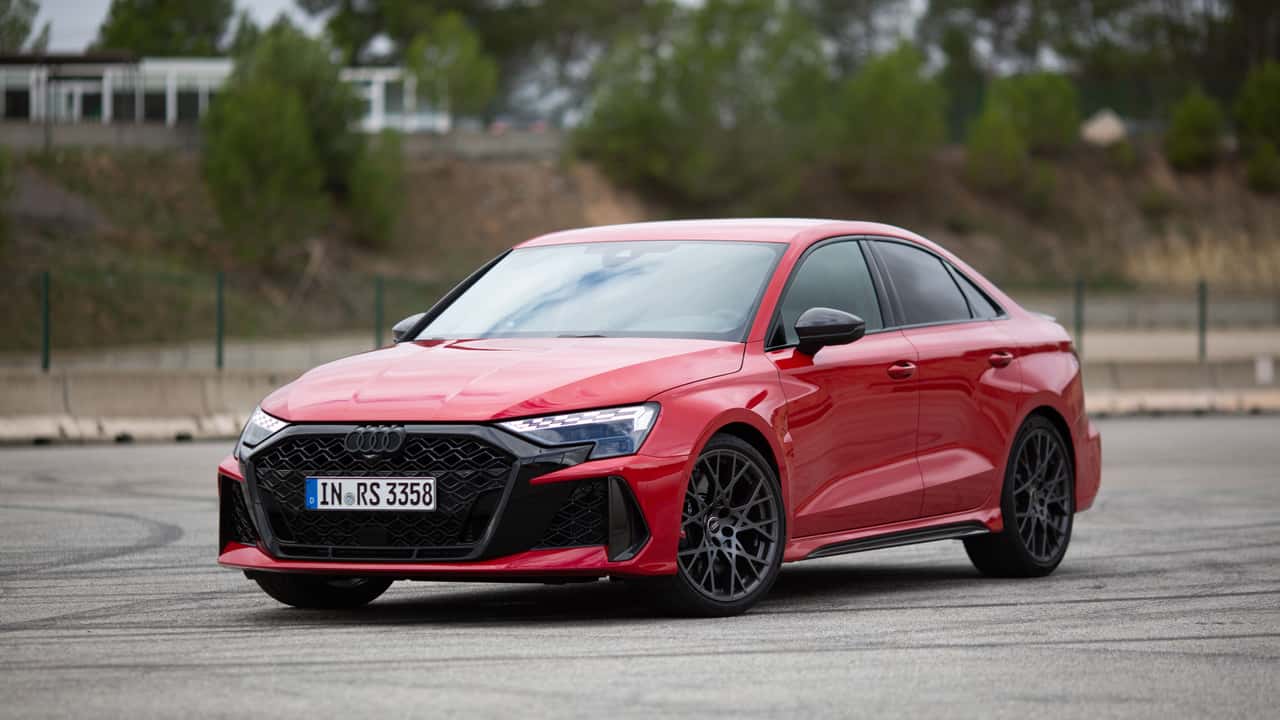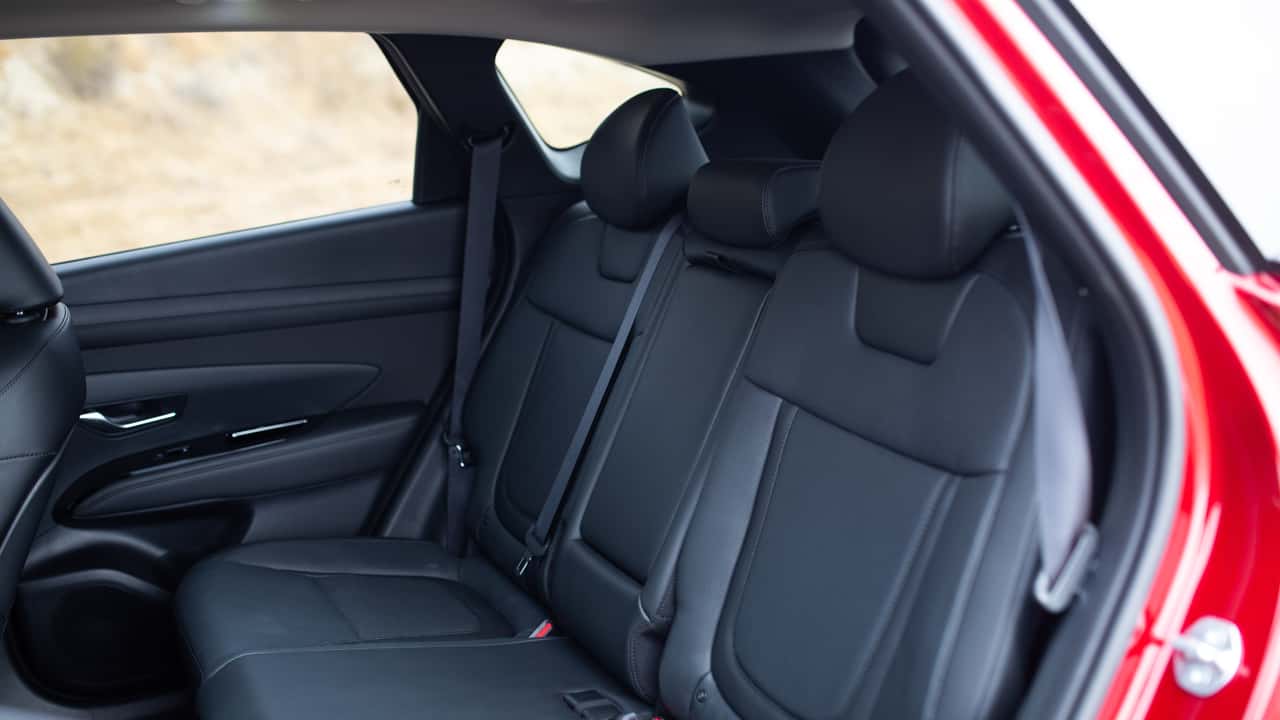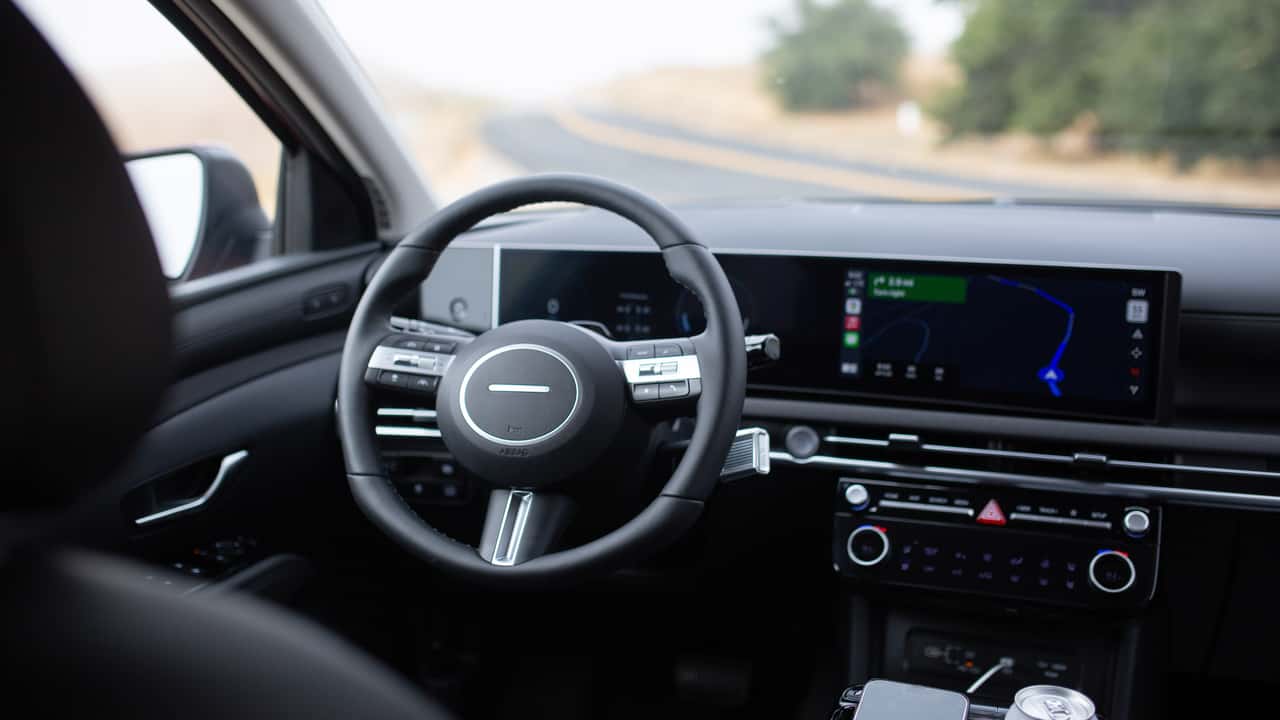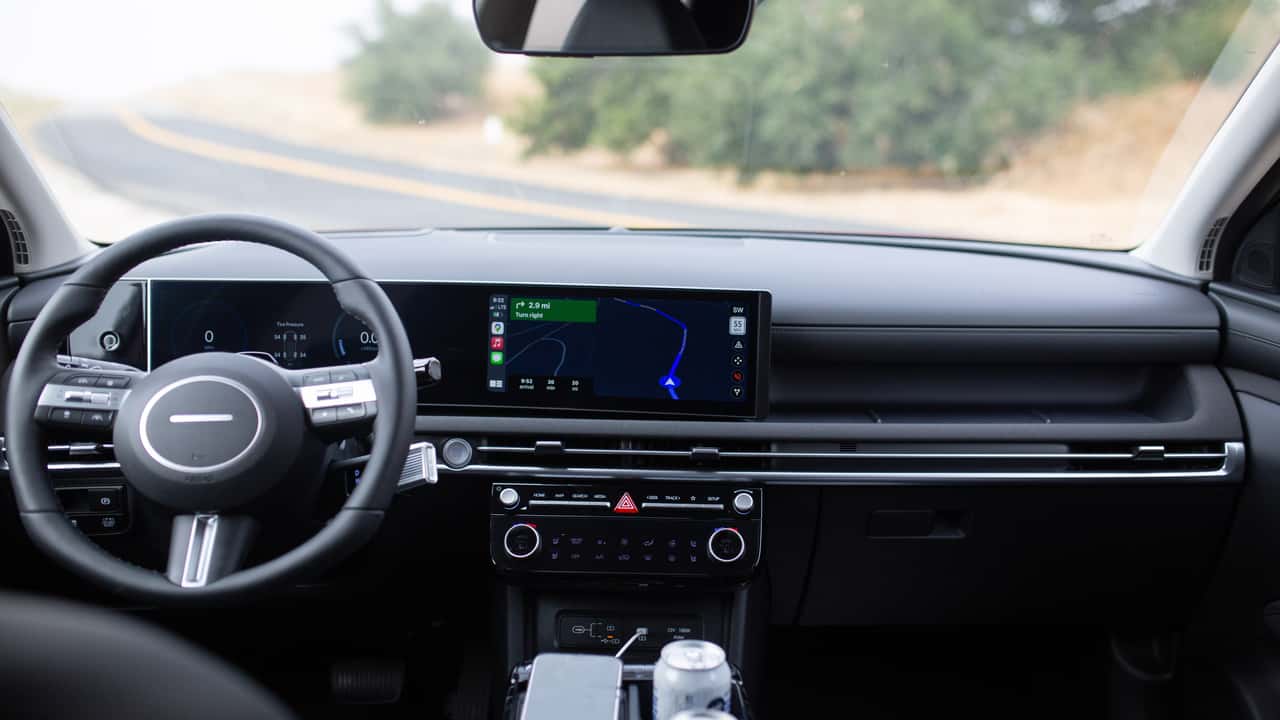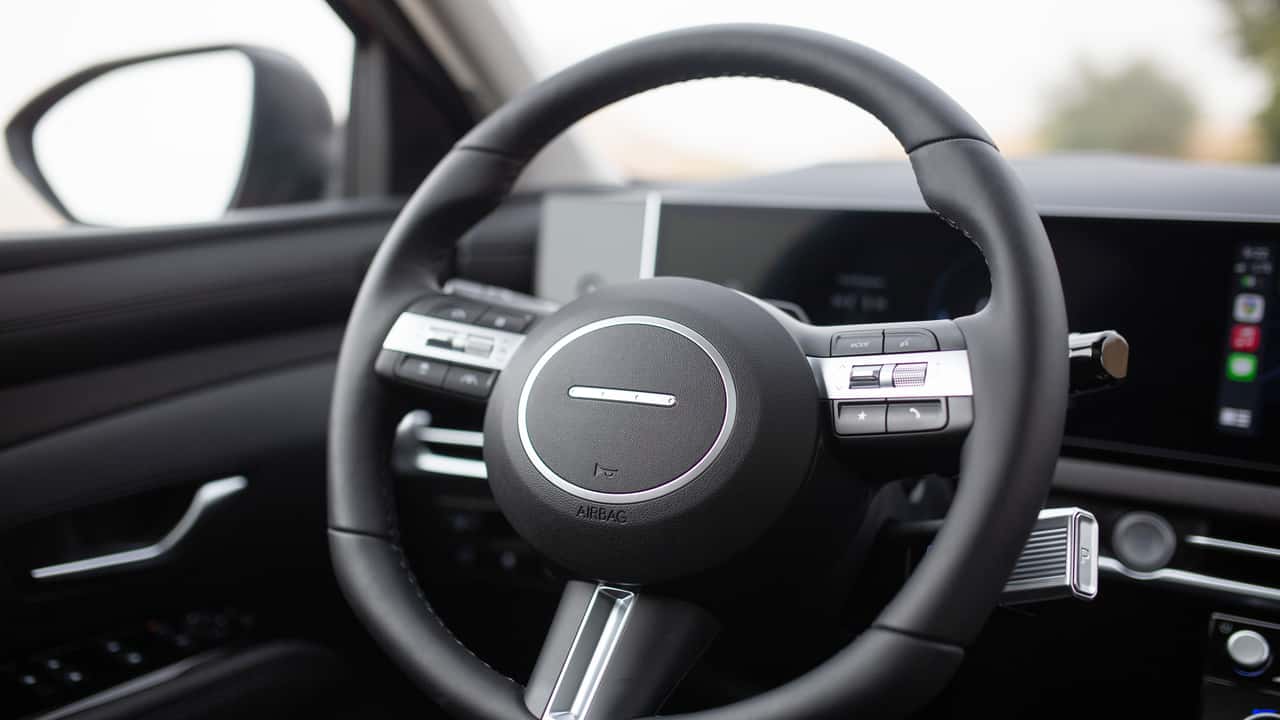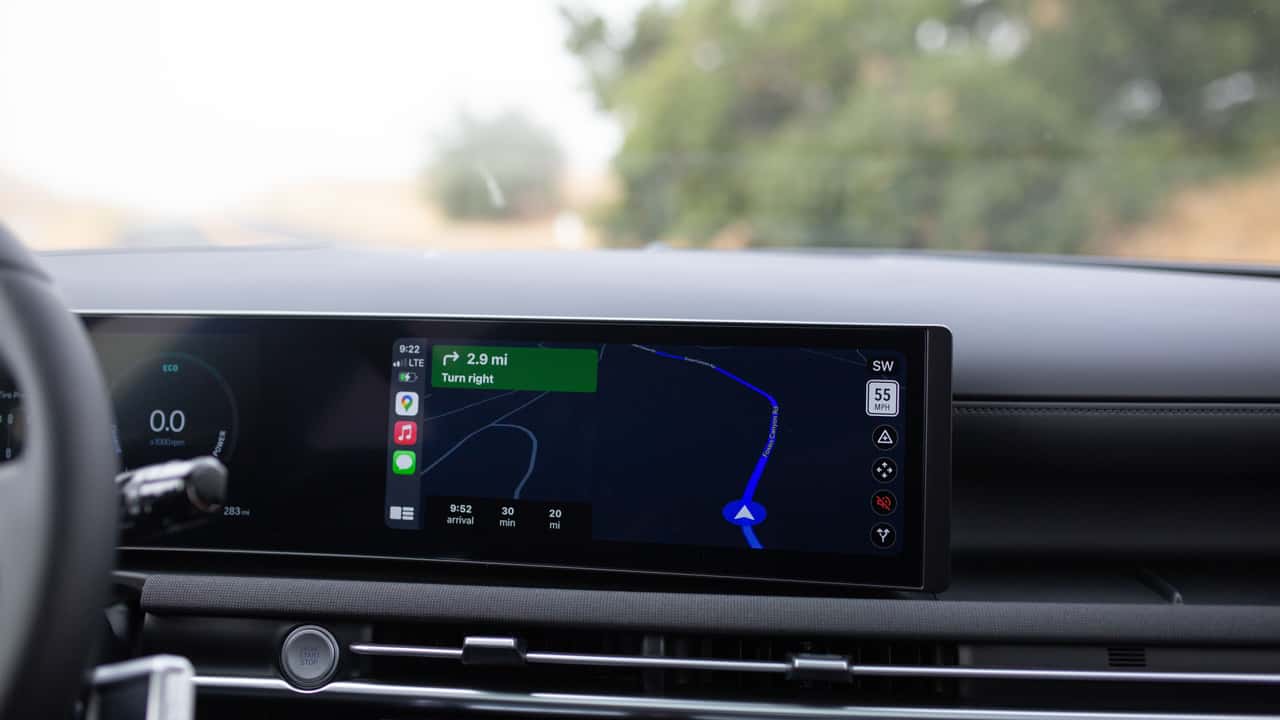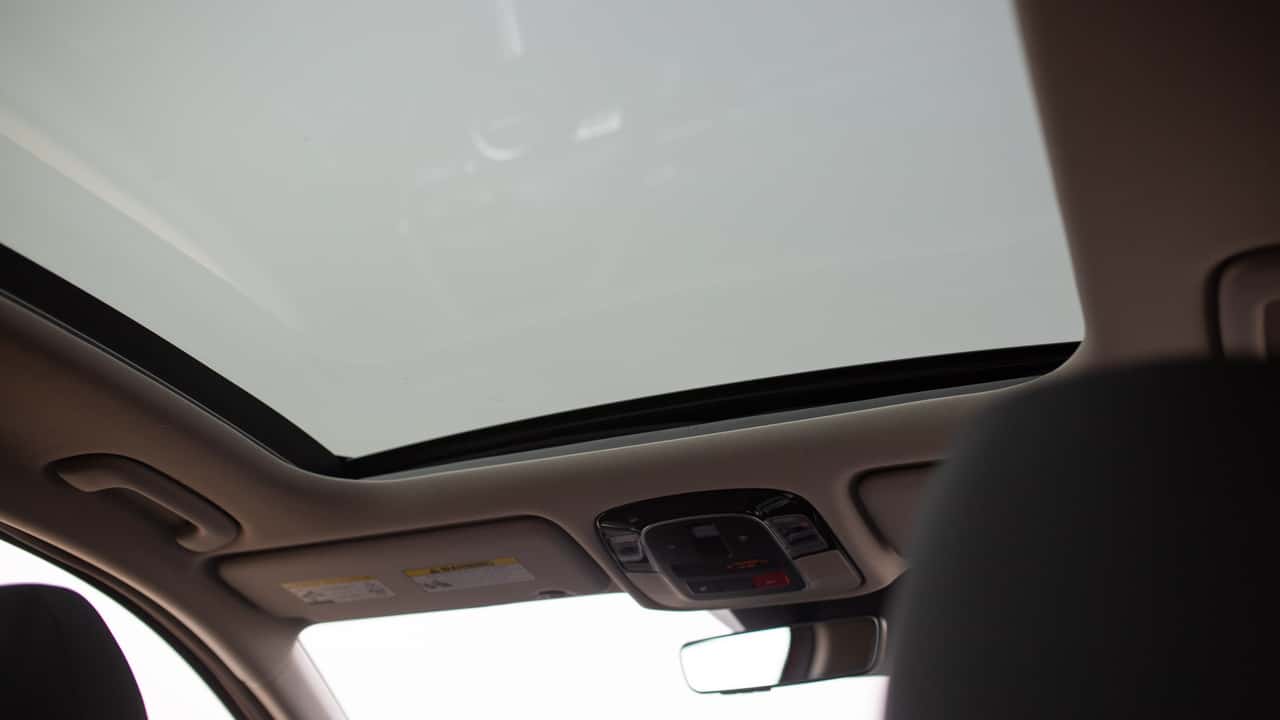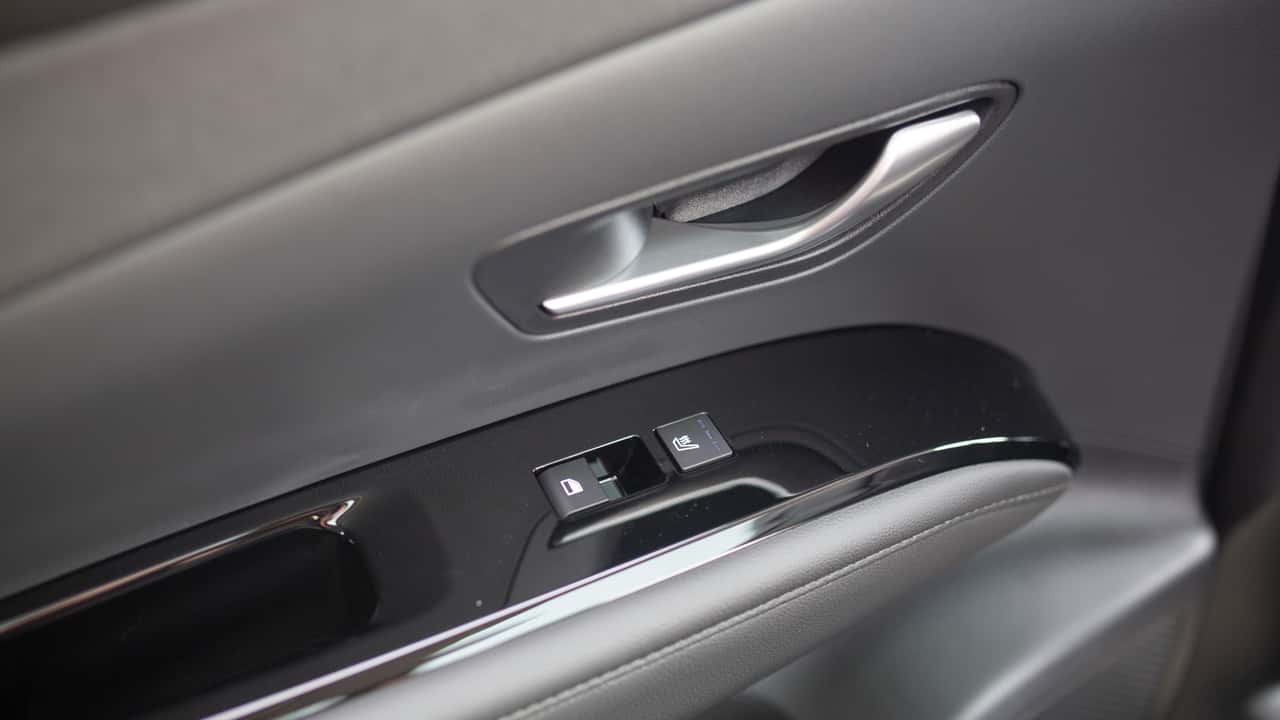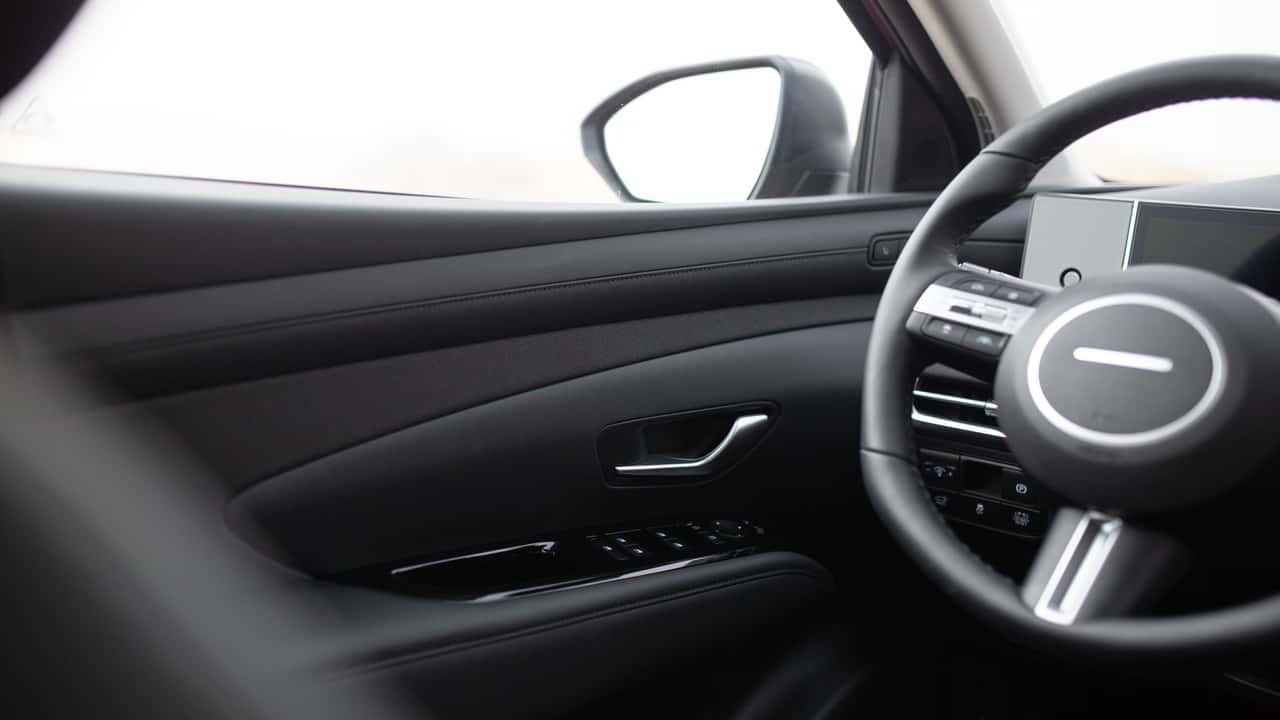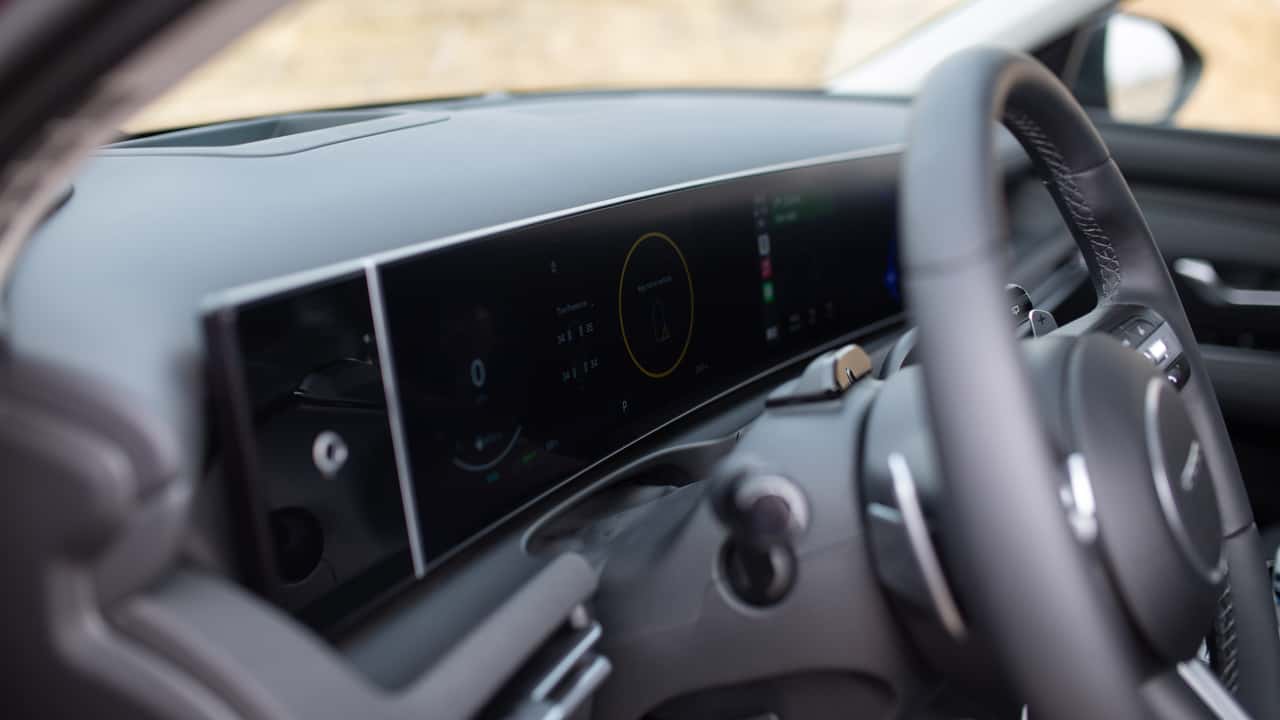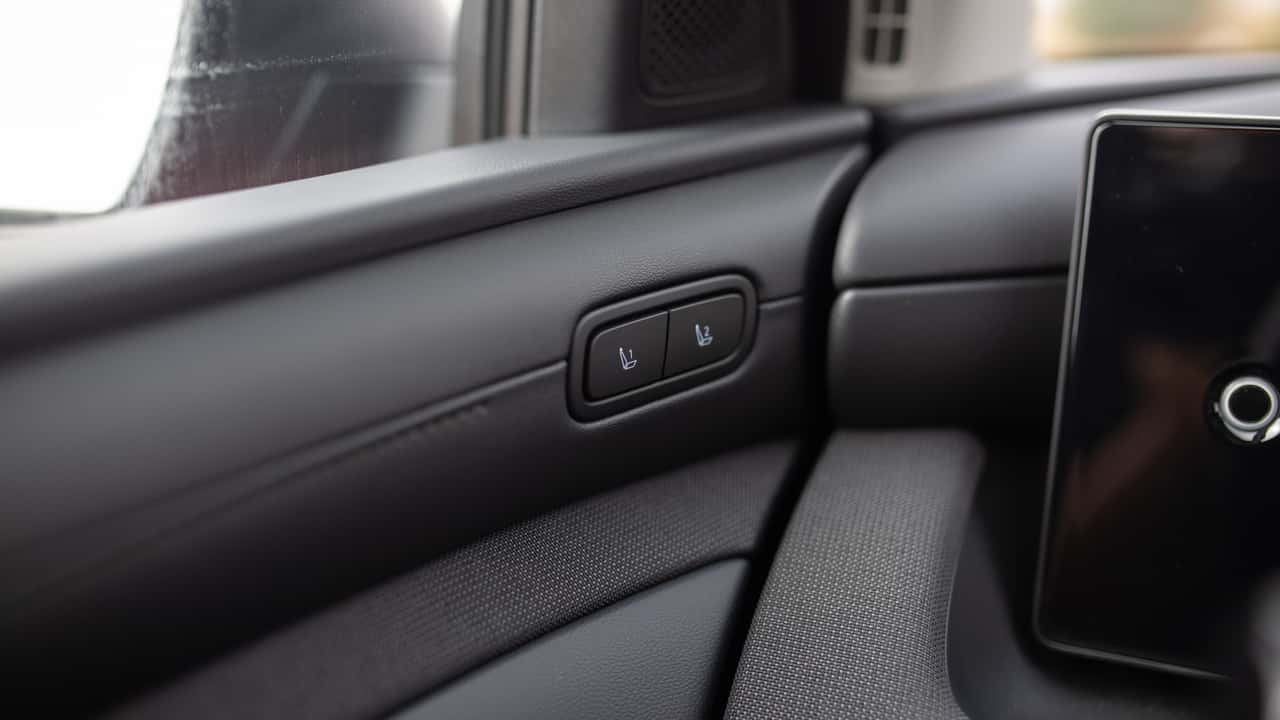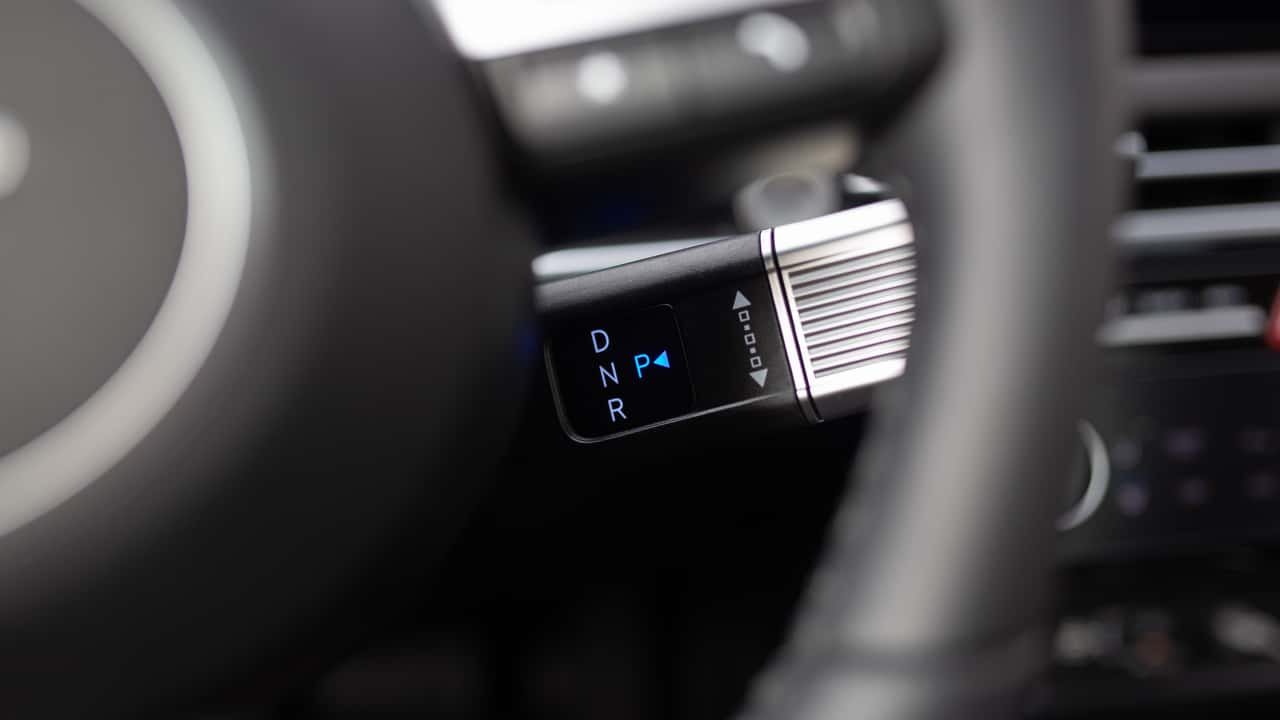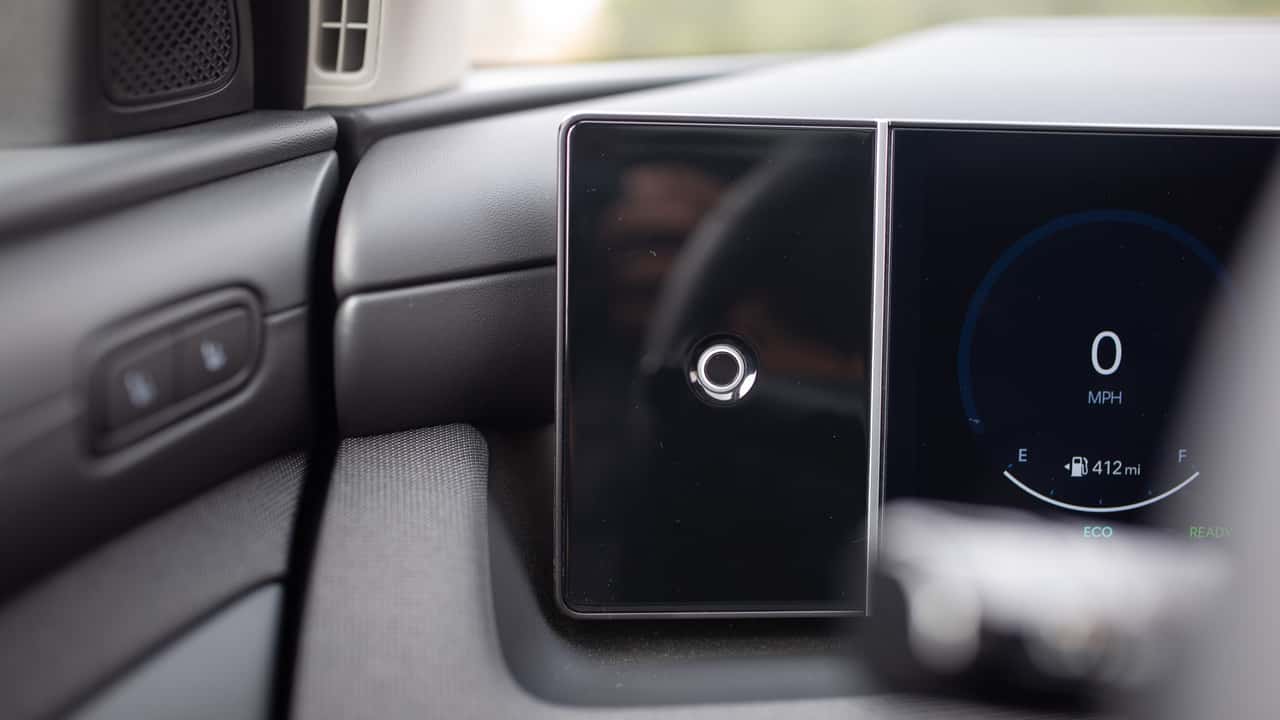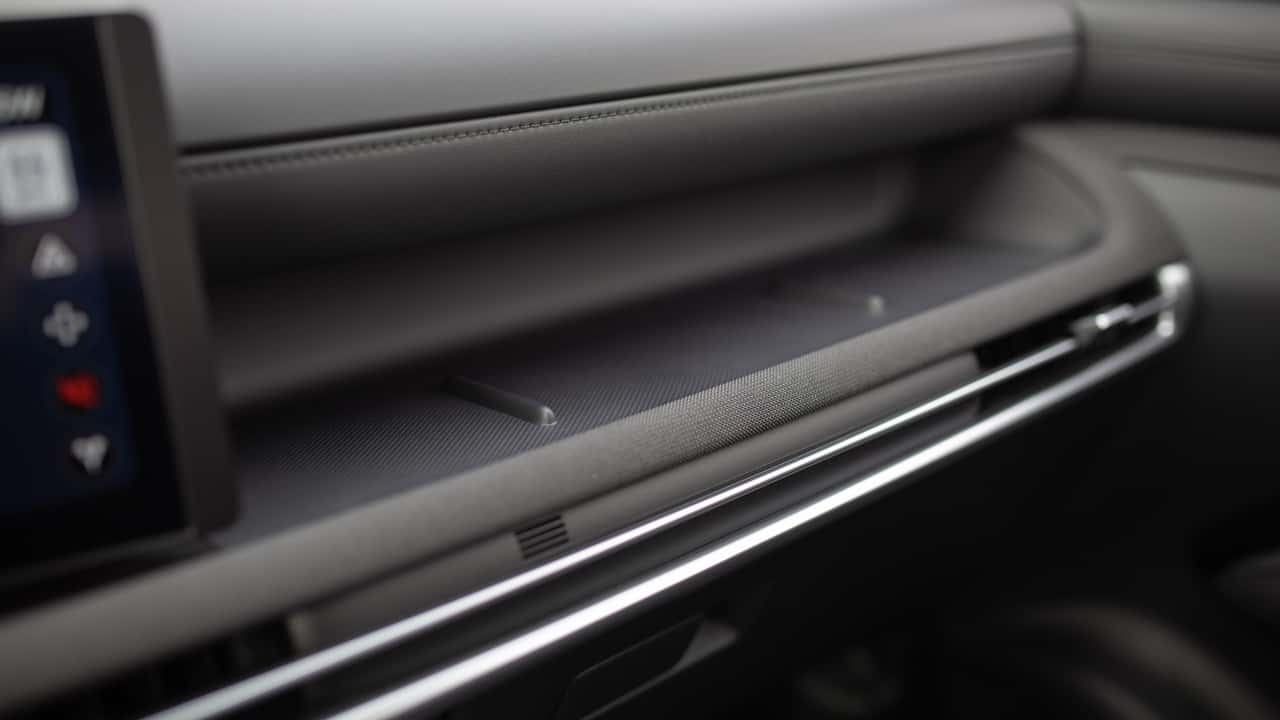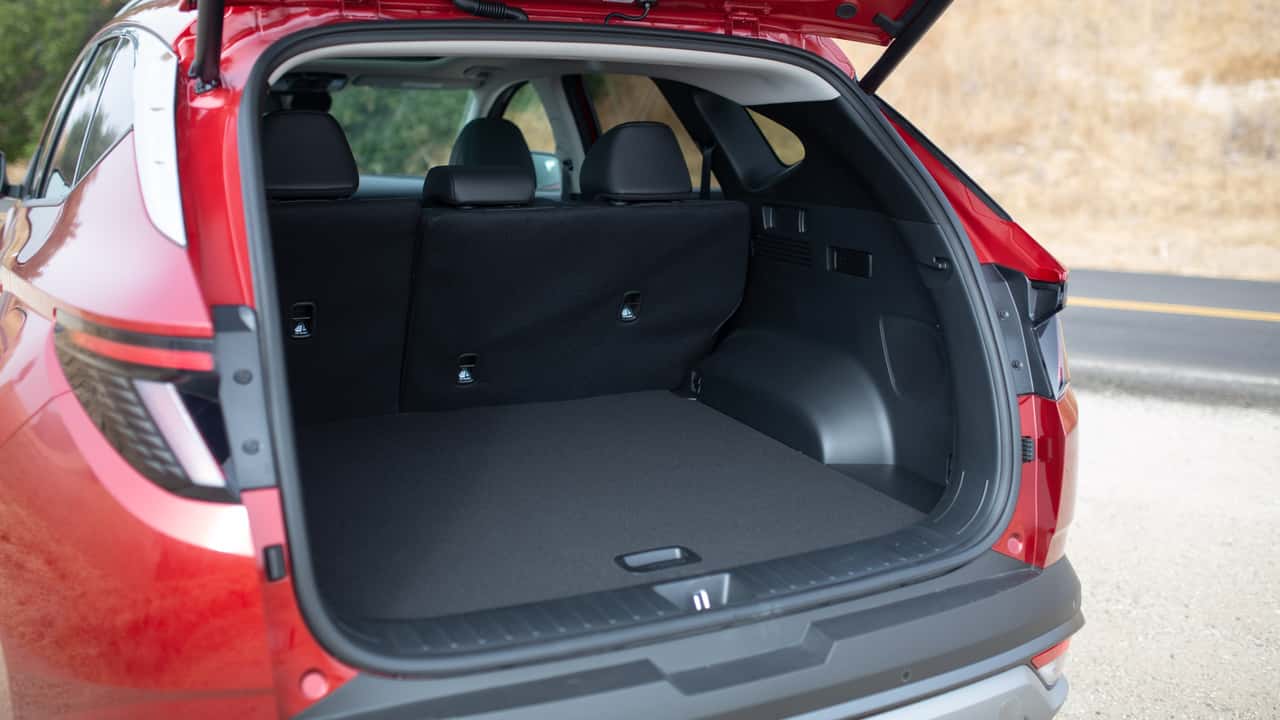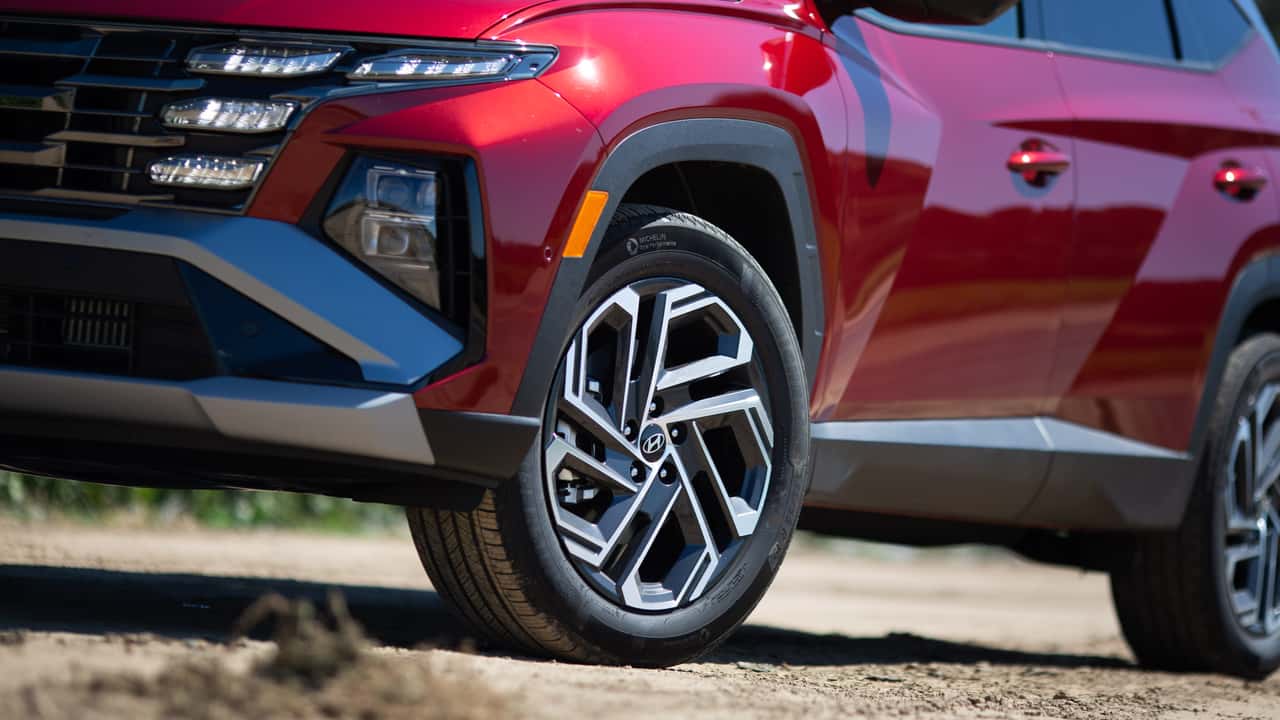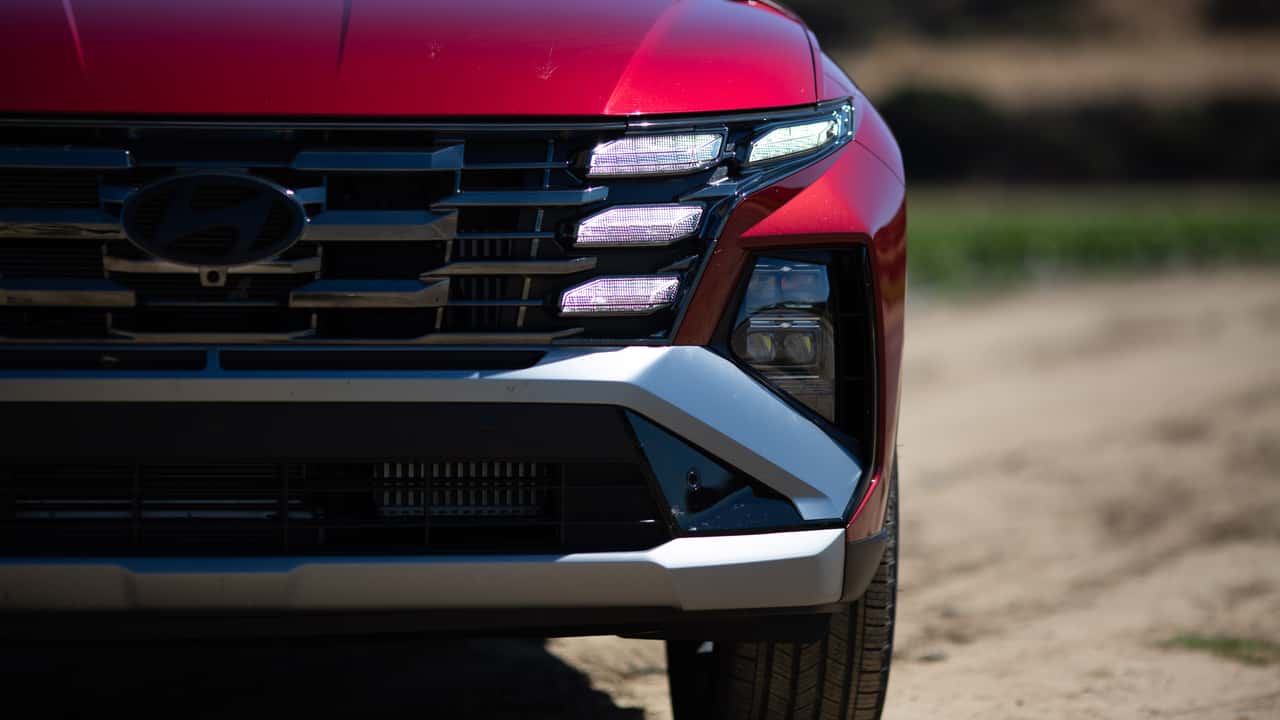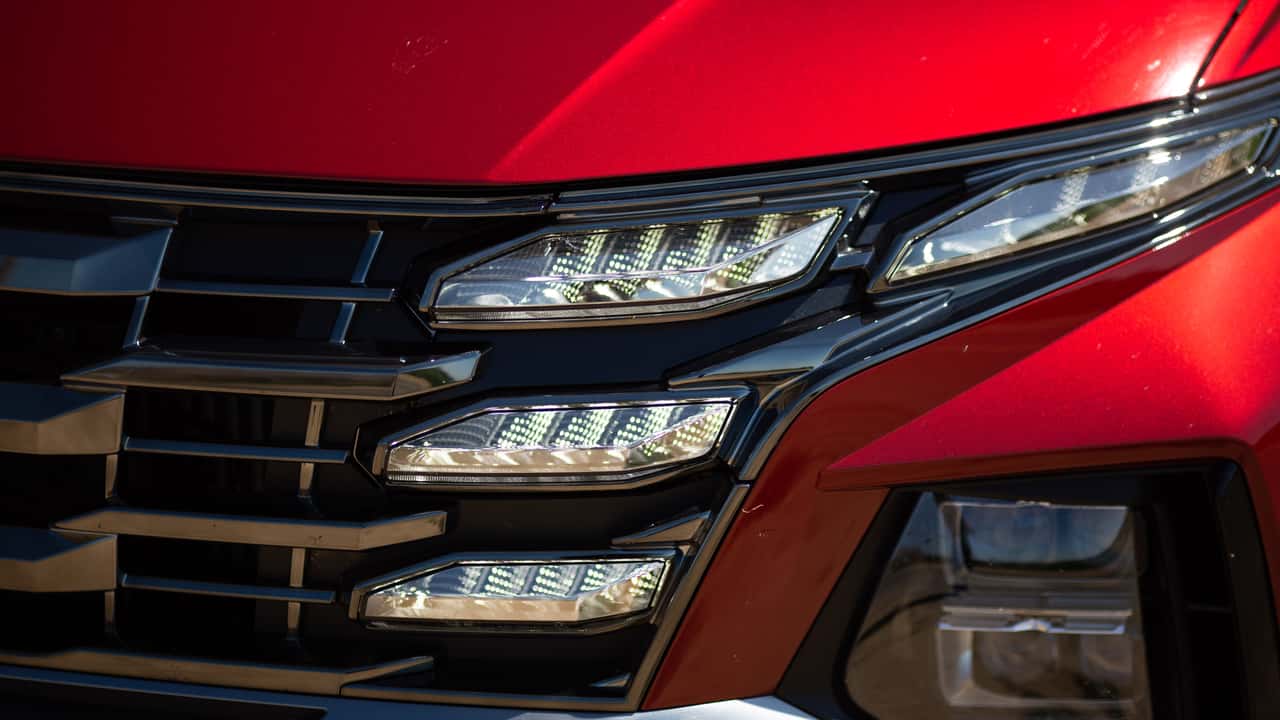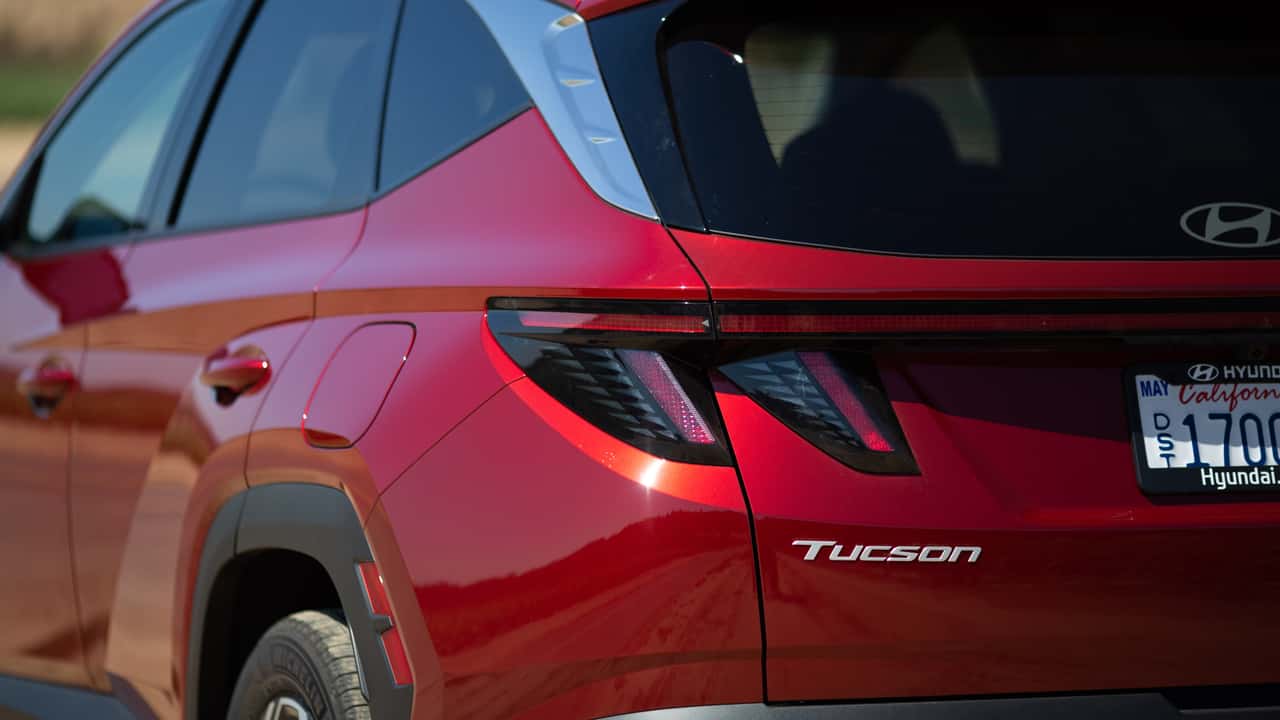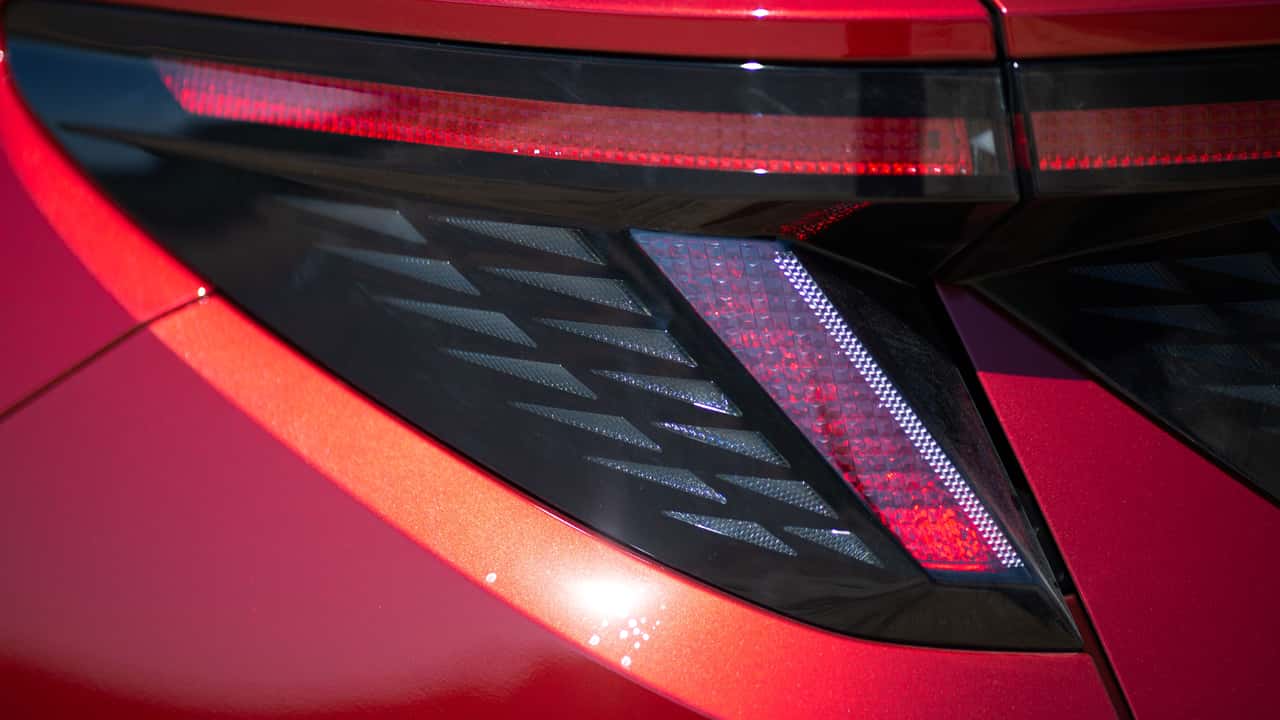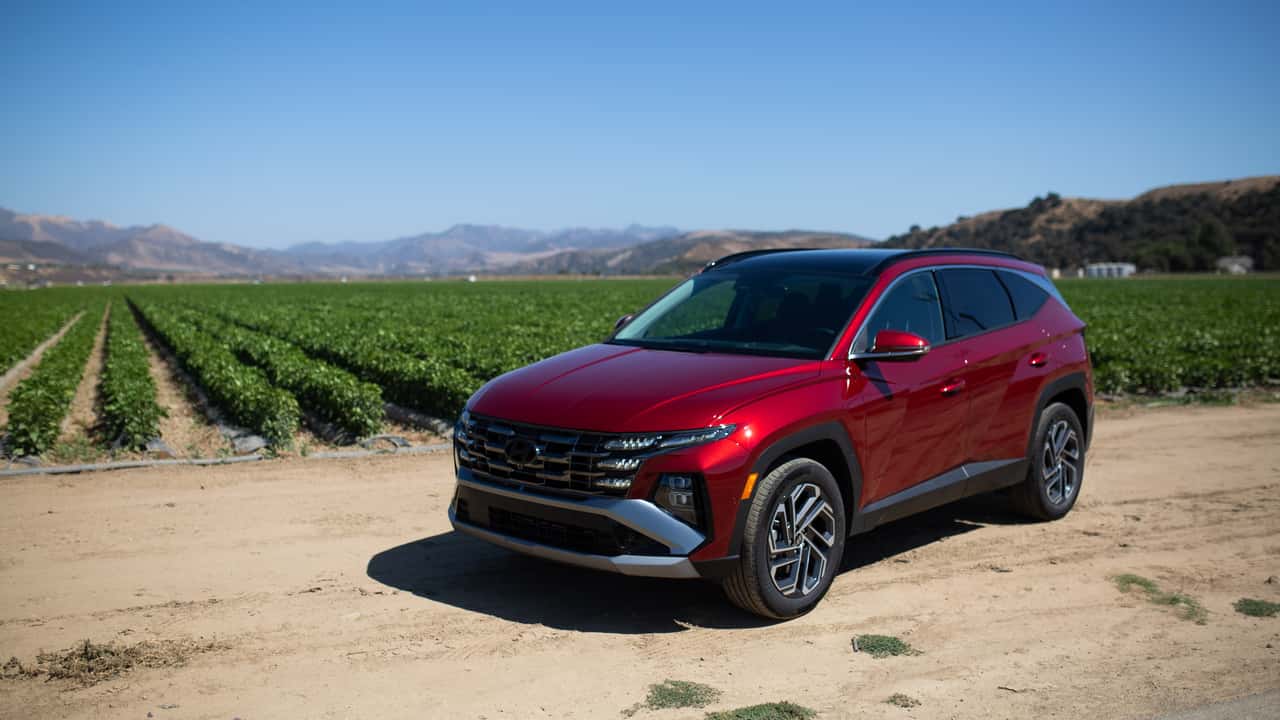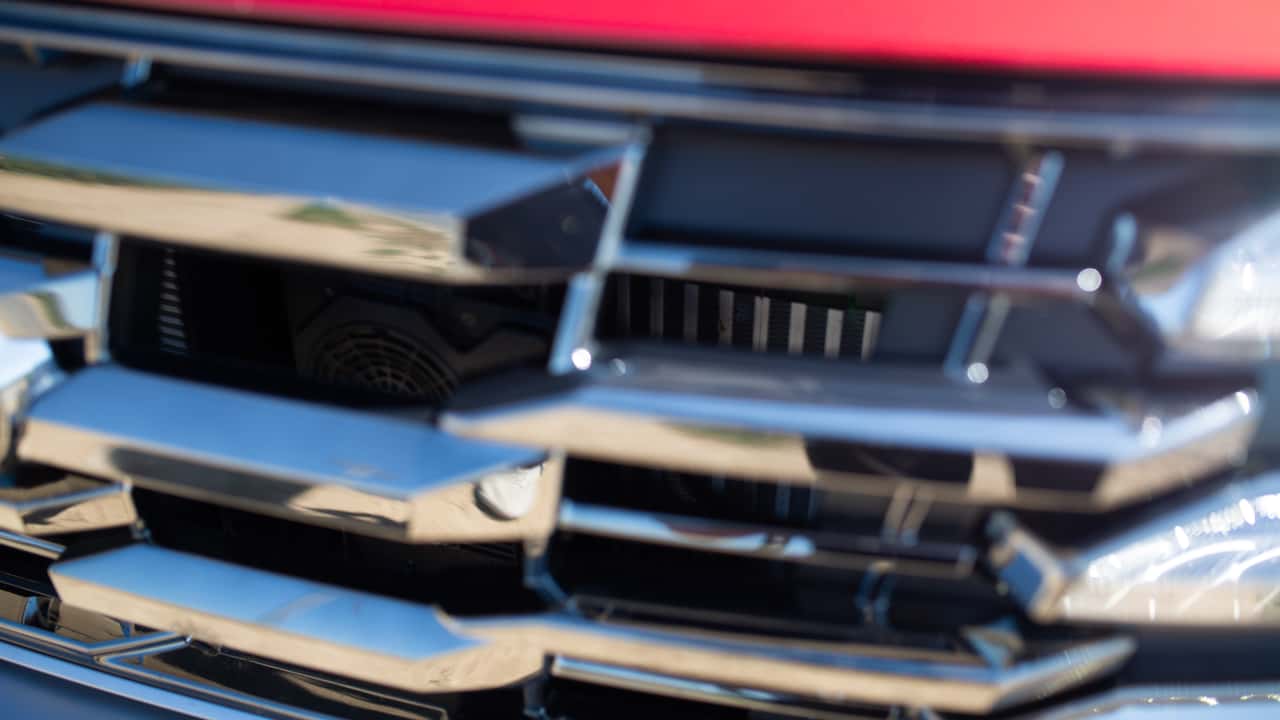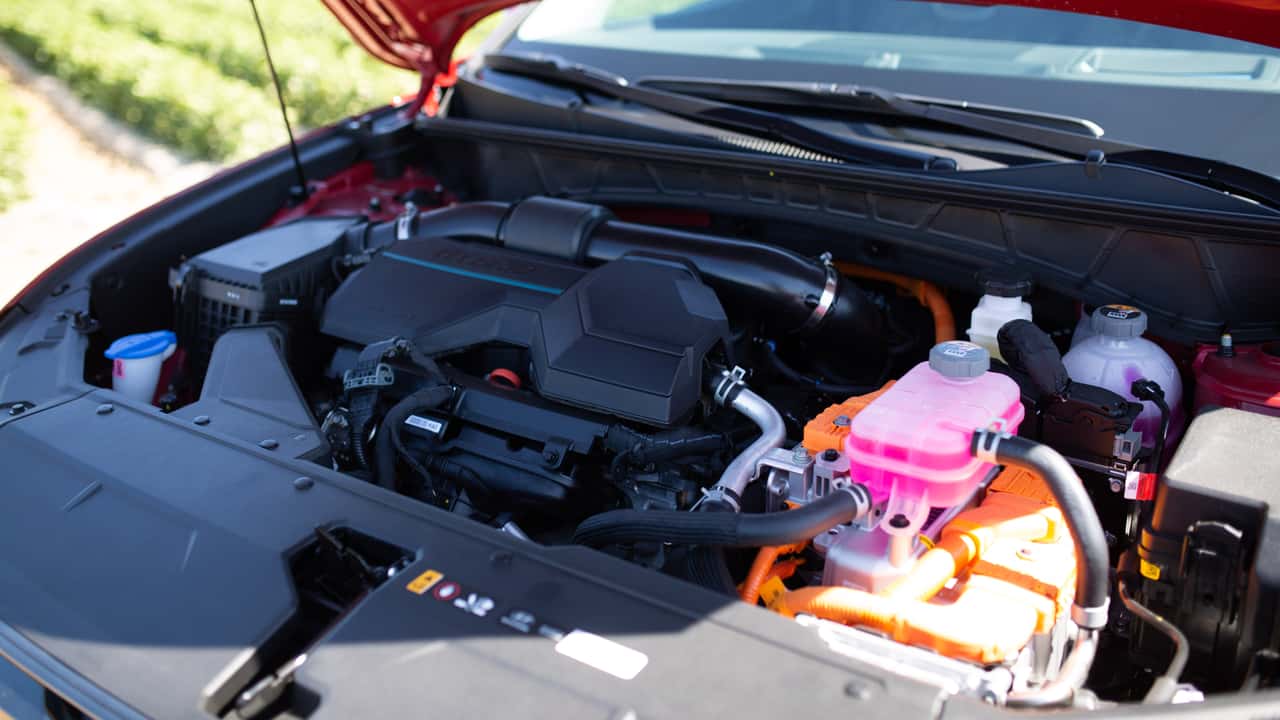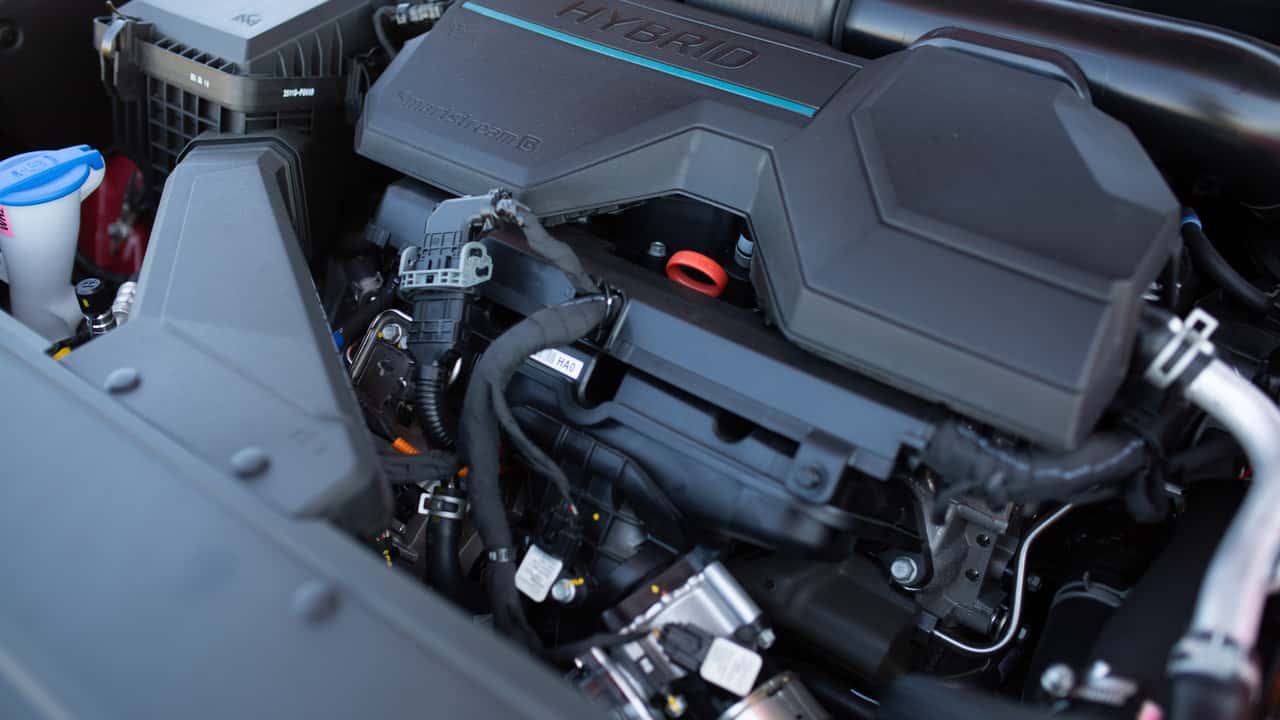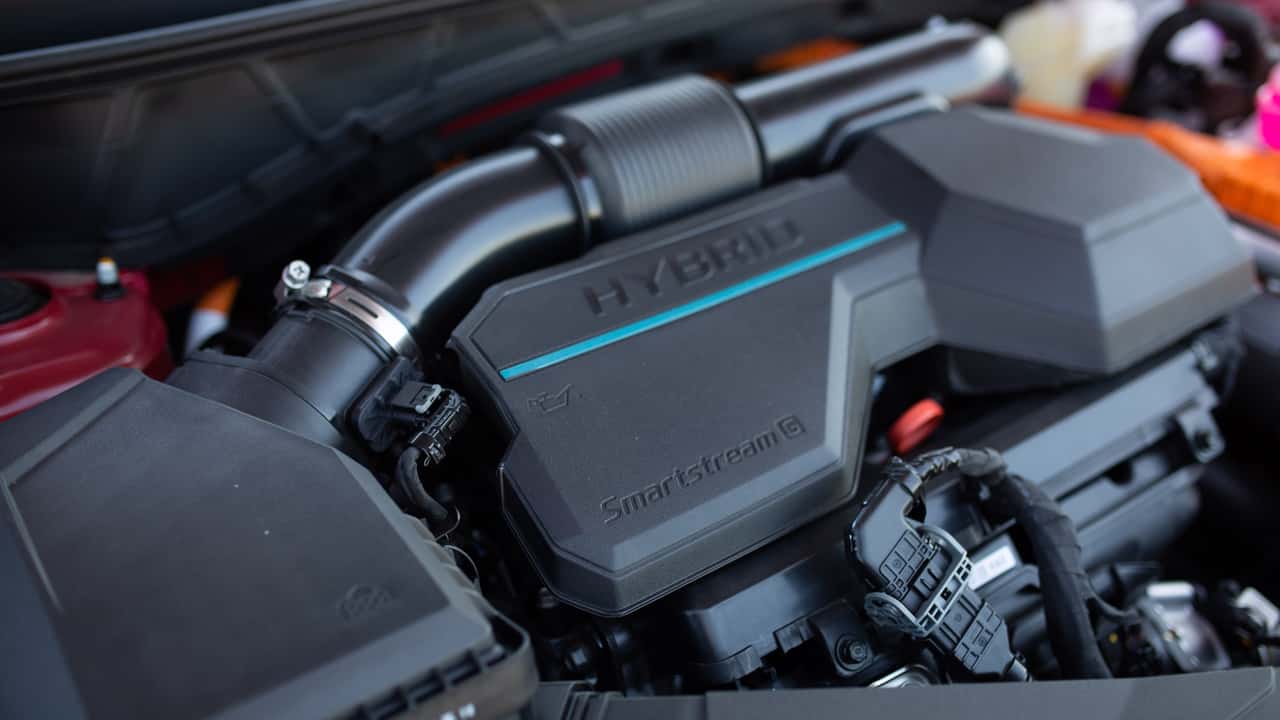5 Nov, 2024 | Admin | No Comments
You Should Buy the BMW M5 Touring Over the Sedan: First Drive Review
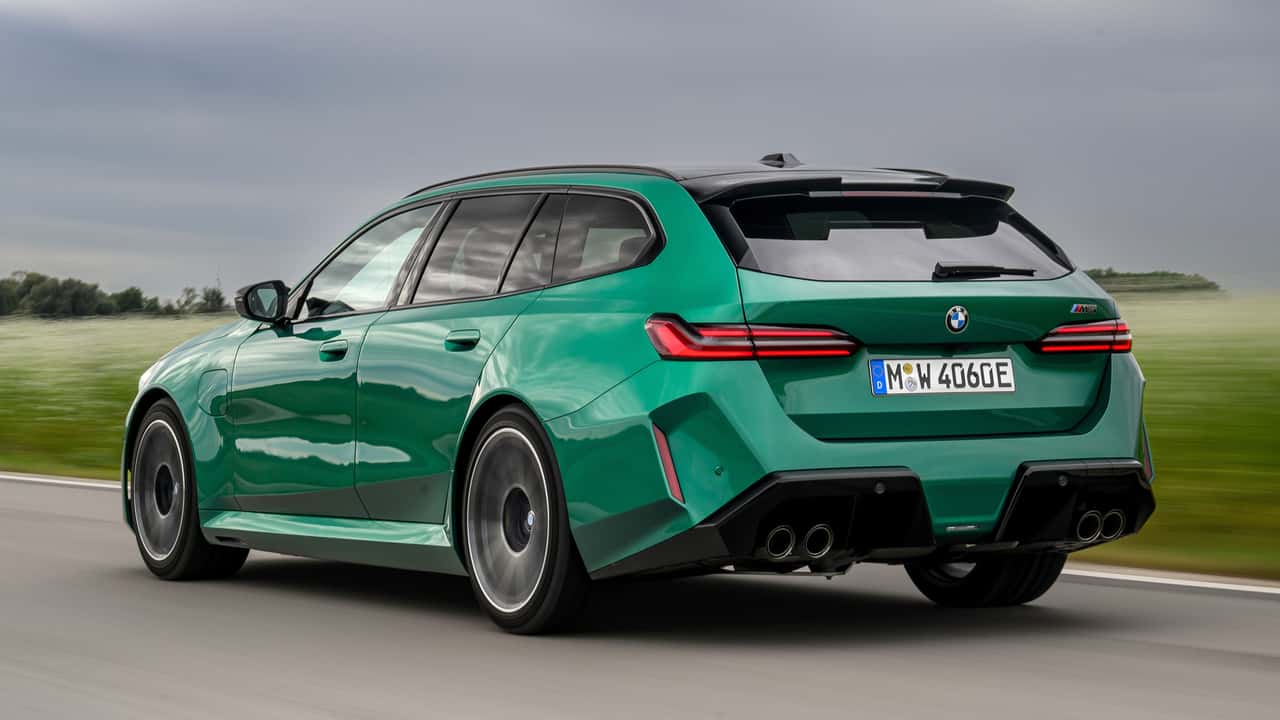

If you’re expecting to hear that driving the 2025 BMW M5 Touring is patently different than driving the M5 sedan, sorry to disappoint. Sure, there are some differences to the spring rates and chassis tuning to account for the long roof’s slightly heavier weight, but the intent is to make the two cars feel the same.
Mechanically, it’s the exact same car I reviewed just a few weeks ago. That means it has the same twin-turbocharged 4.4 liter V-8 combined with the plug-in hybrid system still making 717 horsepower and 737 pound-feet of torque. It’s paired to the same all-wheel-drive system and the same eight-speed automatic. All the same.
| Quick Specs | 2025 BMW M5 Touring |
| Engine | Twin-Turbo 4.4-Liter V-8 Hybrid |
| Output | 717 Horsepower / 738 Pound-Feet |
| 0-60 MPH | 3.5 Seconds (est.) |
| Weight | 5,530 Pounds |
| Base Price | $122,675 |
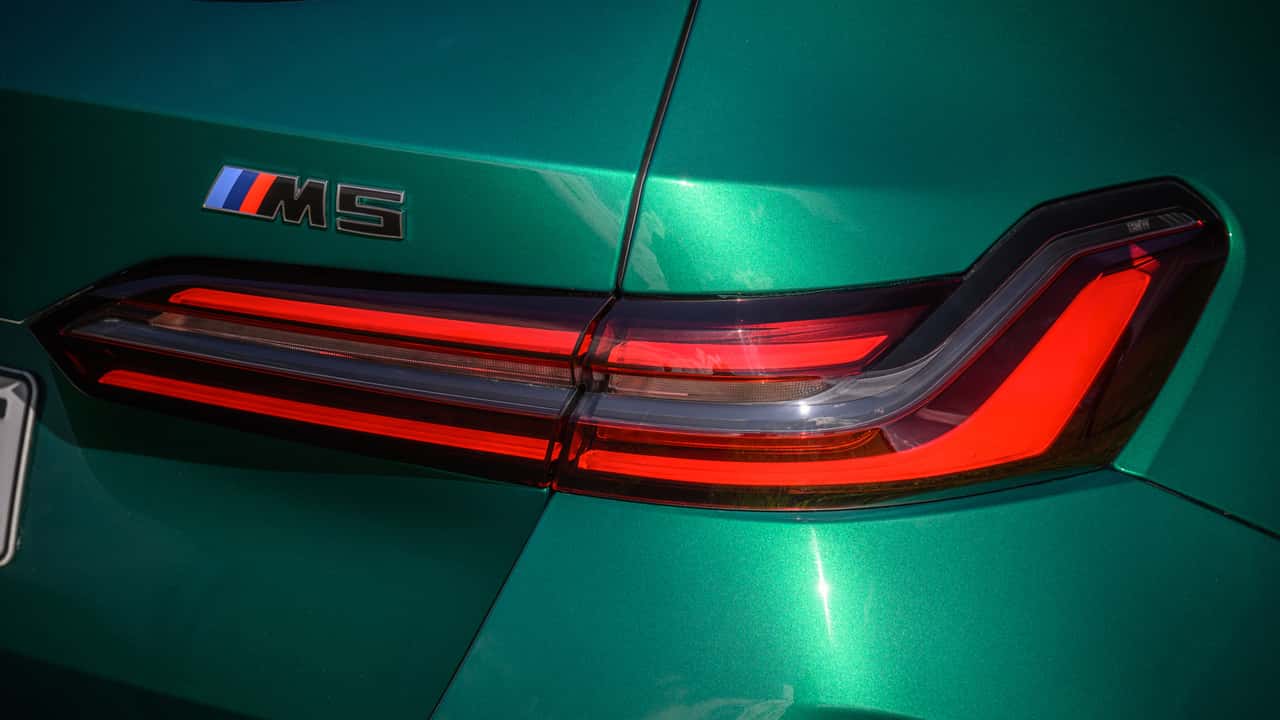
Photo by: BMW
Like the sedan, the touring is ballistically fast in a straight line and too isolating to feel like it’s ever working on a back road. The ride quality is still excellent on smooth and slightly imperfect pavement, no matter the damper settings. And the steering is still that new BMW normal: a quick rack with little feel. And it still has the same gorgeous interior. The Touring is also 140 pounds heavier than the sedan, weighing in at 5,530 pounds. That sounds like a lot, but on top of an already-stout 5,390 pounds for the sedan, the weight gain is miniscule.
This is, for intents and purposes, the same M5. It’s a grand touring wagon, the perfect car for long blasts on the highway to the coast of France with your family. That means you’ll be choosing your M5 because of the body style, not because of how they drive. And if it were me, it’d be the wagon all day every day for a few reasons.
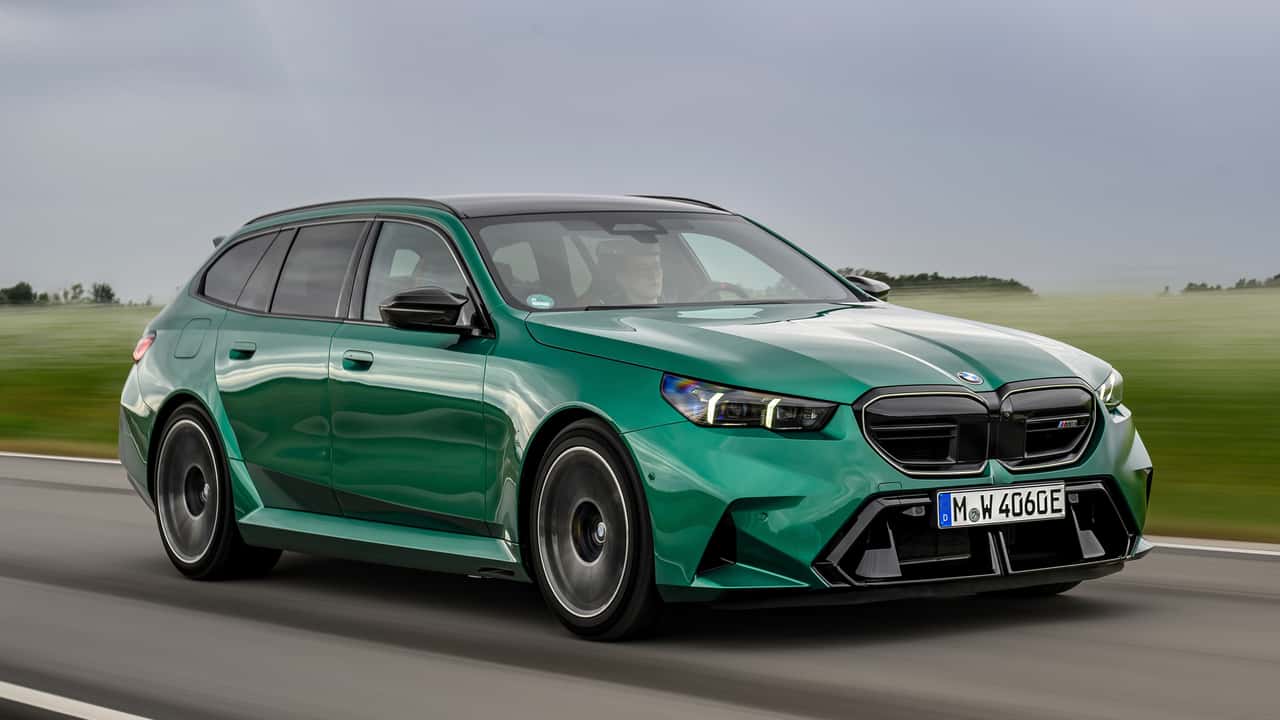
Photo by: BMW
Pros: Looks Great, Outrageously Fast, Lovely Interior, Wagon!
First, the wagon basically gets rid of any argument for buying the XM, which shares the M5’s powertrain. Judged against the XM, the M5 Touring looks better, drives better, and weighs nearly 500 pounds less. By comparison, this is the lightweight.
Second, the wagon just looks great, especially from that rear three-quarter angle. That’s a theme common with any of the fast wagons and their sedan counterparts, though. The Mercedes E63 is better as a wagon, and the Audi RS6 and its massive fender flares makes the RS7 look mundane. The new M5 has a true widebody, with a wider front and rear track. Those wider haunches combined with the rear hatch and the long roof give the M5 a great stance and a ton of presence.
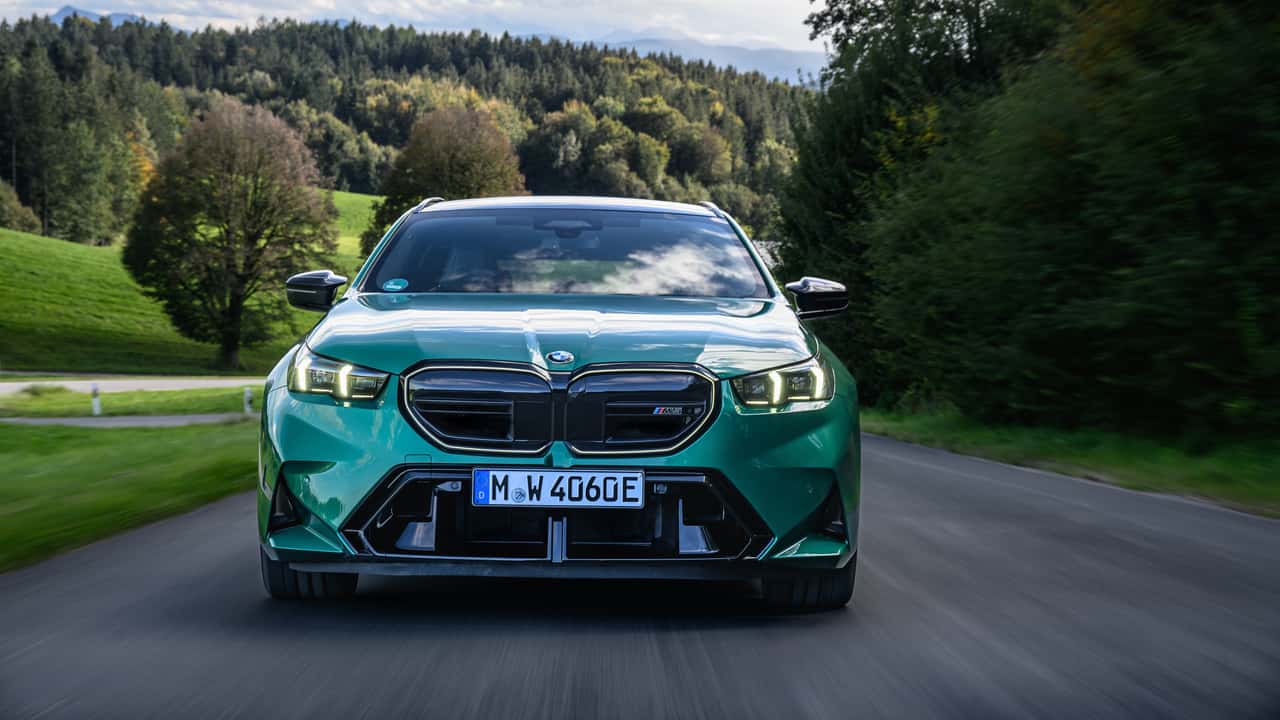
Photo by: BMW
Cons: Isolating And Distant At Reasonable Speeds, Limits Are Too High For On-Road Fun
Third, and probably most importantly, fast wagons are just rad sleepers. If you’re going fast in a sedan, people expect it. But flying by someone in a wagon, at least in America, will be confusing and leave them with more questions. Wagons haven’t been about taking kids to soccer for ages, but that reputation still exists.
Yes, the wagon does still share the negative aspects of the M5 and doesn’t pretend that it’s going to engage you at a safe speed on a back road. Essentially nobody will be taking this car to the track either. But as a family hauler that needs to cover vast highway distances repeatedly and quickly, there aren’t many cars that are better equipped.
Now, just set aside $122,675 before options and you can get one after production starts in November.
Competitors
Driving The New BMW M5
The 2025 BMW M5 Is Too Capable: First Drive Review
We Drove the New BMW M5. It’s a Hybrid Missile
Get the best news, reviews, columns, and more delivered straight to your inbox, daily.
back
Sign up For more information, read our
Privacy Policy and Terms of Use.
Based on a GR 86, the Toyota Rally Legacy Concept gets a 300hp version of the 1.6-cylinder engine found in the GR Yaris and Corolla.
Toyota one-off builds are something of a routine now for the annual SEMA event, check out last year’s FJ Brusier. Of course, 2024 is no different as Toyota once again delivers on out of the blue concept, this time to celebrate its rallying history, past and present. So, without further ado, say hello to the Toyota Rally Legacy Concept.

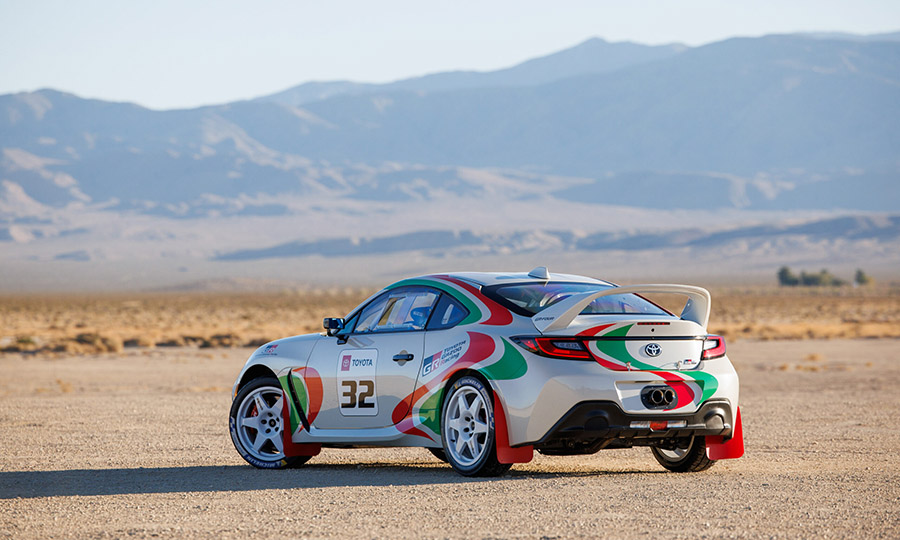
What is the Toyota Rally Legacy Concept?
While the outside resembles an ST205 Celica with the famous Castrol livery, it’s what’s underneath the bonnet that has got us all talking. You see, the base car for this concept is the Toyota GR86. That car is powered by a naturally-aspirated 2.4-litre turbocharged flat-four engine. While a fine sports car it is, underpowered, at times, can also be said of it. With the up in power from 224bhp to 300bhp and 273lb ft of torque, you have to wonder why Toyota didn’t opt to use the engine in the GR86 all along… Interestingly, there’s a new intercooler, a race ECU and a custom exhaust despite it making the same power as the standard GR Corolla. Oh, and it’s also a manual!
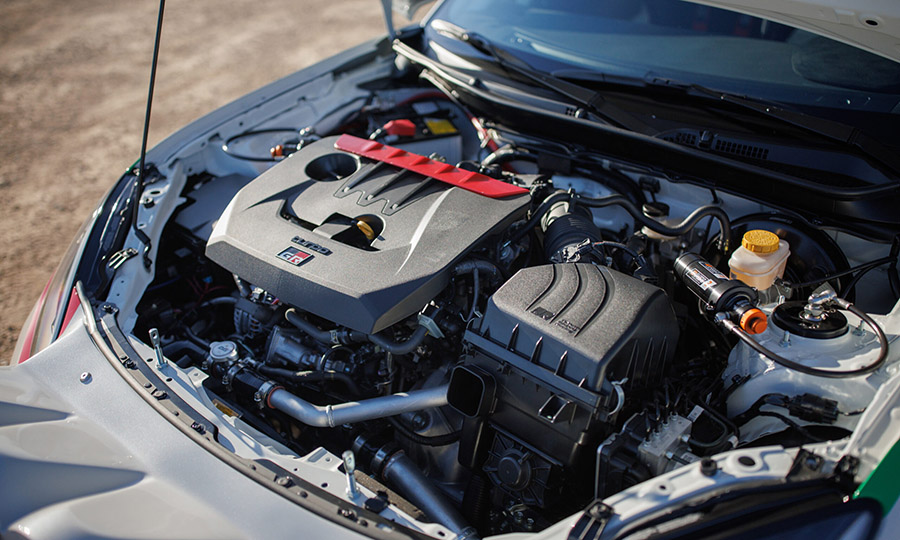
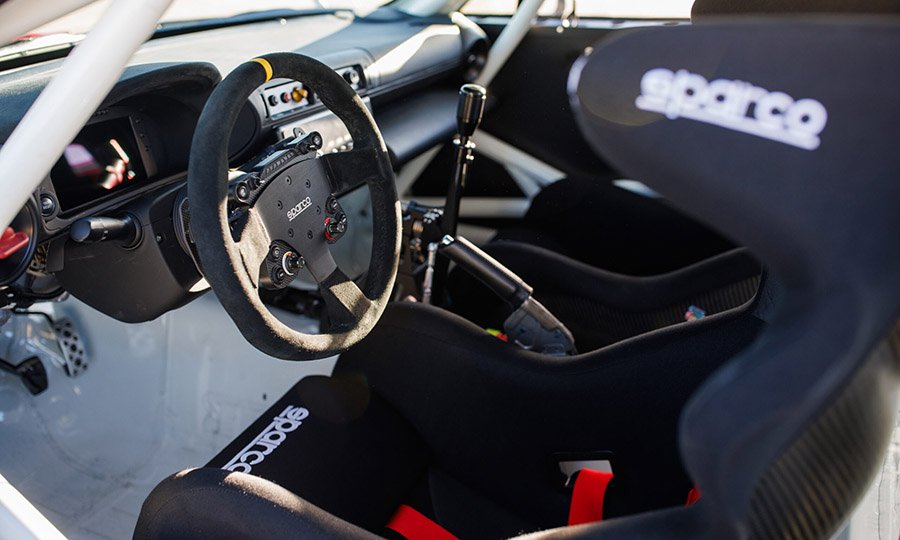
Underneath, Toyota has converted the GR86 chassis to feature all-wheel drive. As a result, the rear end is essentially a GR Corolla, with this concept receiving its differential, axles and gear ratios. Naturally, the modifications don’t end there, with the need for new control arms and other custom parts to make everything work.
Outside, as mentioned above, the concept has taken its design cues from the ST205 Celica GT Four. The Castrol livery is impossible to miss, as is the curved spoiler and those twin-exit pipes in the centre of the rear bumper. Inside, it’s rally car central, with a suitable roll cage, bucket seats, harnesses and all the gizmos you’d expect.
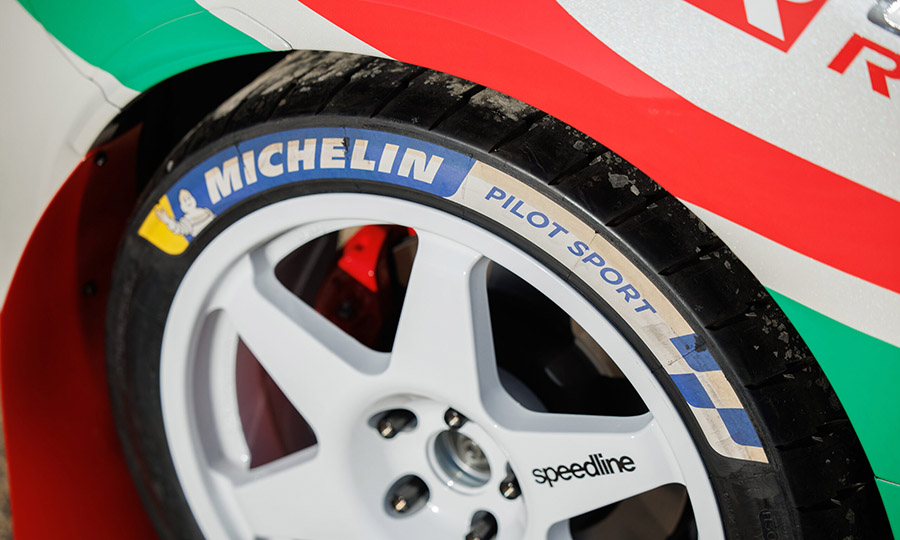
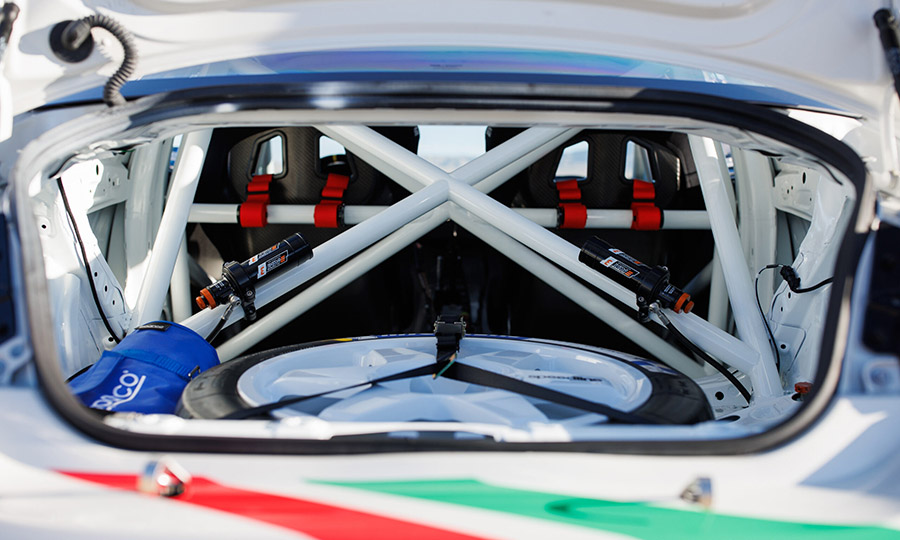
Will the concept become a production car?
Looking like this? Almost certainly not. In fact, there’s no word from Toyota that this means anything more than just an exercise in regonising its history while also showing what it can do. That being said, we can’t be the only ones curious about what a GR Yaris-engined coupé would feel like.
Love modified cars? Did you know that we host a number of performance car events throughout the year? Be sure to check out our Fast Car Events for more information on what’s coming up next!
The post Toyota Rally Legacy Concept Revealed At SEMA appeared first on Fast Car.
With 1000hp, an exposed carbon fibre body, striking shooting brake styling and a £700k price tag, the Brabus Rocket GTS is about as ridiculous as limited run cars get.
What you’re looking at isn’t the lovechild of a weird Z3M couple. And while Brabus has almost certainly taken design cues from the originally-hated-but-now-adored Z3M Coupe, this right here is a complete custom built car presumably reserved for those with very deep pockets. At around £700k, the price tag is almost as staggering as the way this car looks. For me, this might well be car of the year. I’m sick to death of seeing boxed-up SUVs with less personality than a stone. Finally, someone has decided to shove two fingers up to convention and shown us what can be done presumably without budget constraints. I digress.
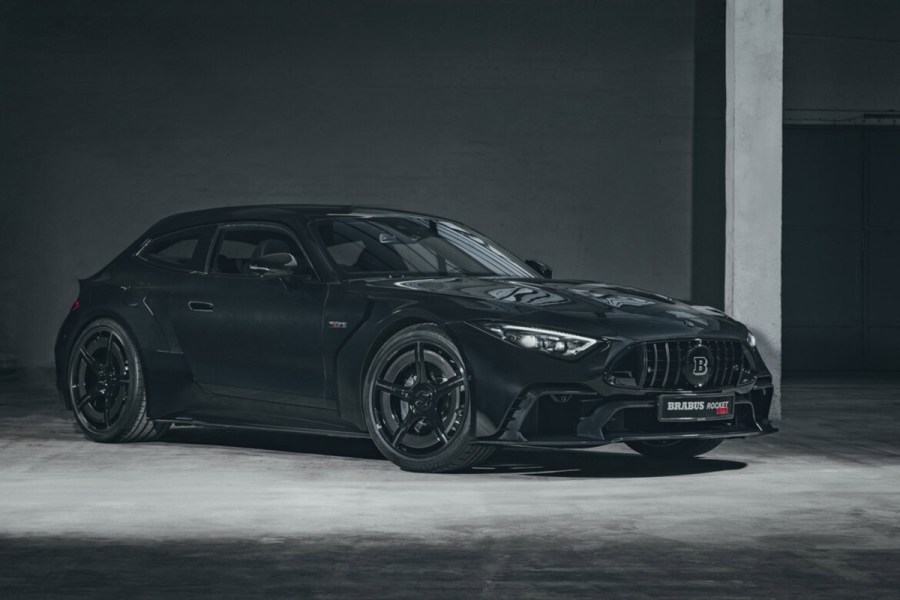
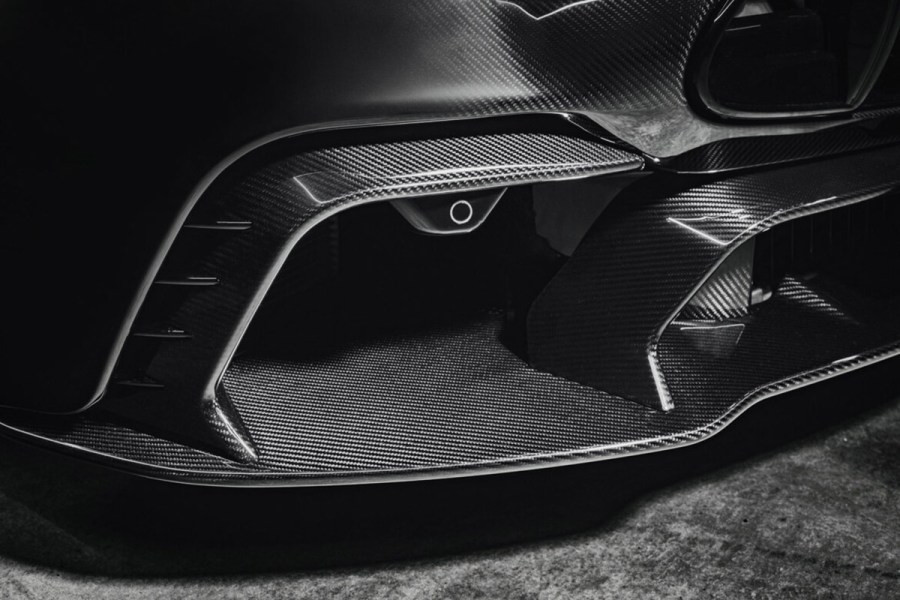
What is the Brabus Rocket GTS all about?
Sadly, Brabus hasn’t confirmed what the Rocket GTS is built from. Some have reported that it’s a modified Mercedes-AMG GT 63 S E Performance, while others have claimed it’s the SL 63 S E Performance. One thing for sure is that it shares the engine (and electric motor) with both of those cars, which meant it already came with 804bhp. But now, Brabus has turned up the wick to the tune of 1000hp and, wait for it, 1,342lb ft of torque!! That’s a lorry-pulling amount of torque… Thankfully it retains four-wheel drive and the 9-speed Mercedes DCT to make getting the power down far easier.
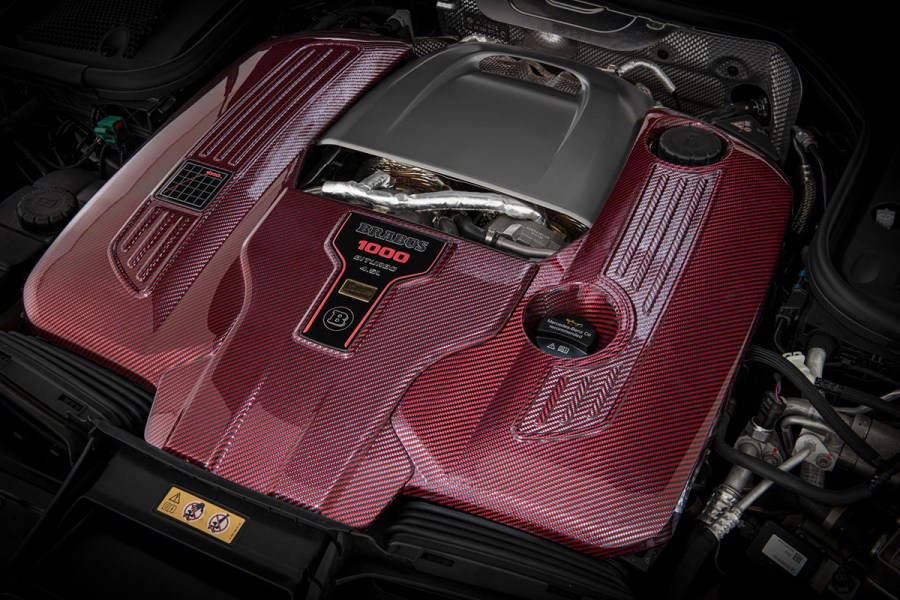
The increase in power has mostly come about thanks to the use of two new turbochargers. To support those bigger turbos, forged pistons and special con rods ensure the factory pistons don’t end up through the engine block… As you’d expect, a Brabus sports-cat downpipe and valved exhaust system complete the hardware changes.
All that power means 0-62mph is over with in a claimed 2.6 seconds, and 0-124mph in 9.5 seconds, while it’ll go on to an electronically-limited 197mph.
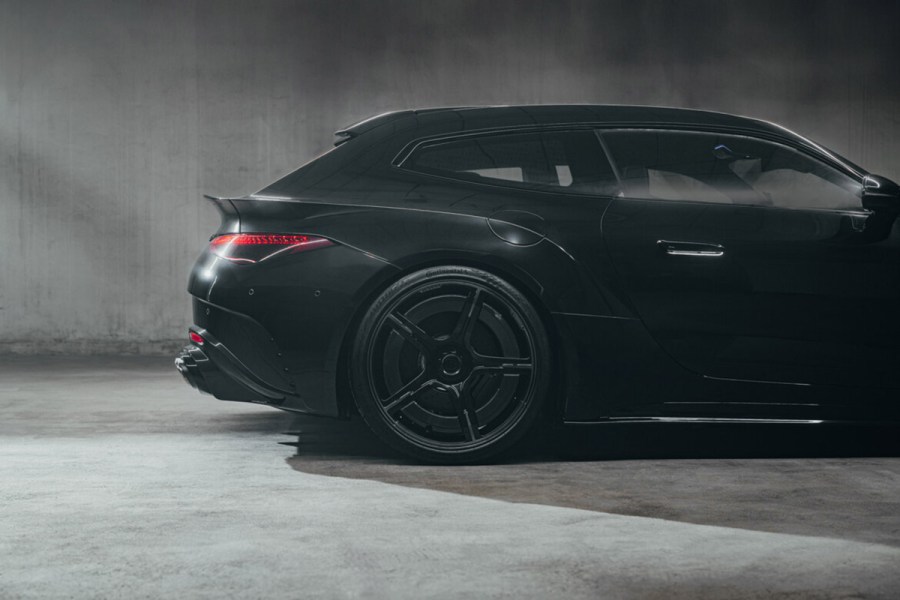
Brabus Rocket GTS Shooting Brake design
In order to create the carbon fibre body, Brabus has used state-of-the-art CAD and CFD technologies as well as wind tunnel optimisation. Brabus says that its design reduces front axle lift at high speeds while also providing superb stability at over 186mph. The design also guides more air into the radiators and brakes to improve cooling. And if you were wondering, that new rear end now measures 198.5cm wide…
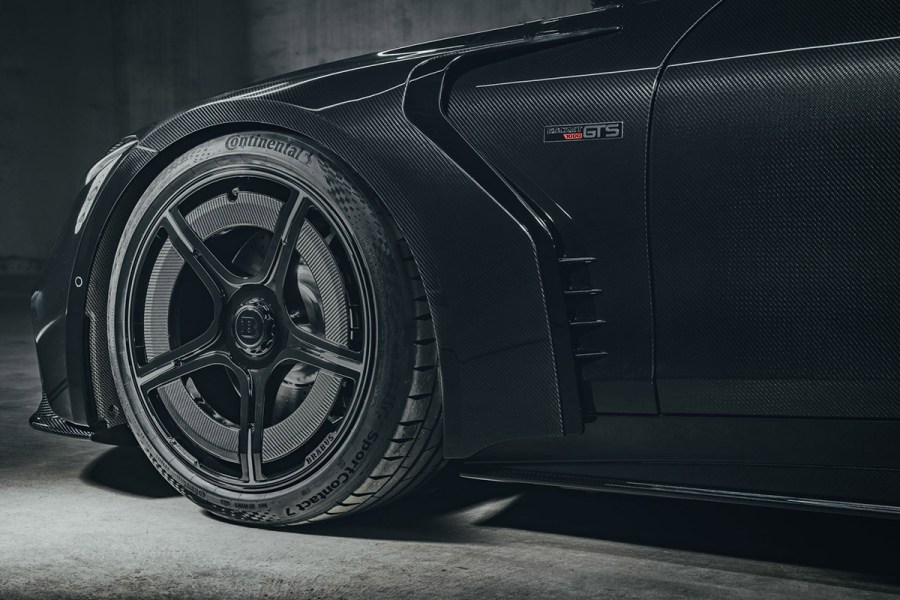
As you’d expect, the wheels Brabus has chosen for the Rocket GTS are suitably outrageous. Measuring 21 inches at the front and a whopping 22 inches at the rear, the Rocket GTS needs 275/35 tyres at the front and, wait for it, 335/25 at the rear! That won’t be cheap when it comes round to replacing those…
Inside, Brabus has gone about including its usual touches including new stitching on the seats, more carbon fibre and of course Rocket GTS badging. Customers can go to town on options here in order to create more personalisation.
Love cars? Be sure to check out our Fast Car Events page to see what performance car events we’re hosting next!
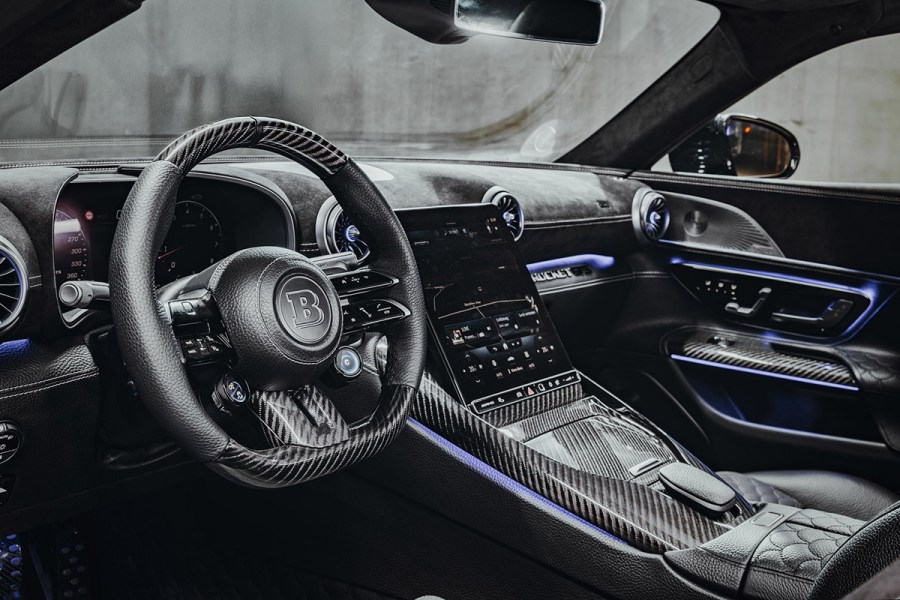
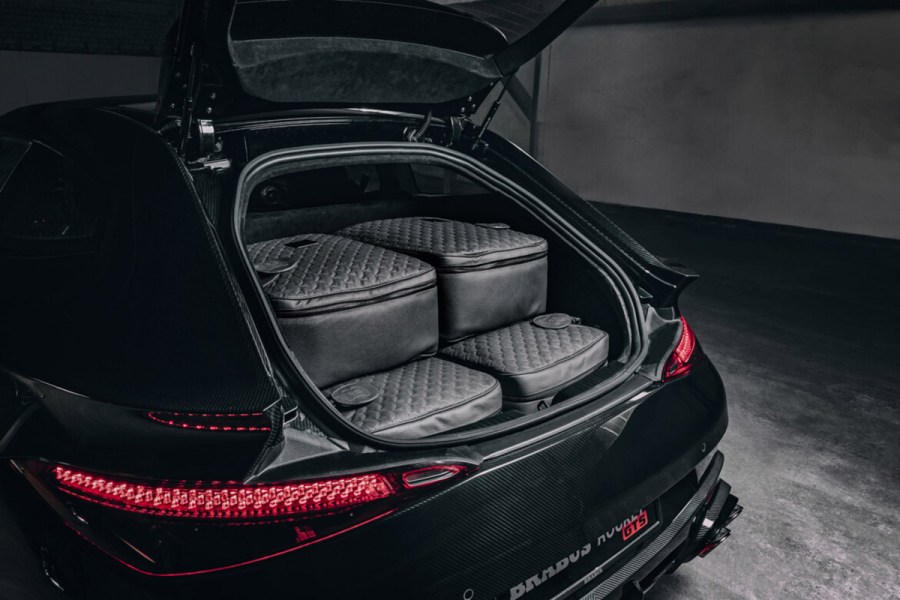
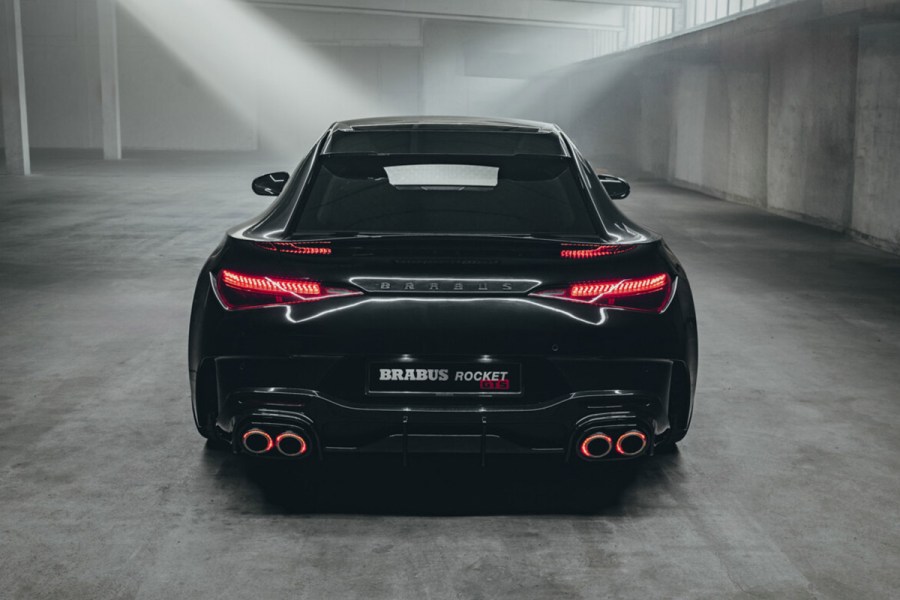
The post Brabus Reveals 1000hp Rocket GTS Shooting Brake appeared first on Fast Car.
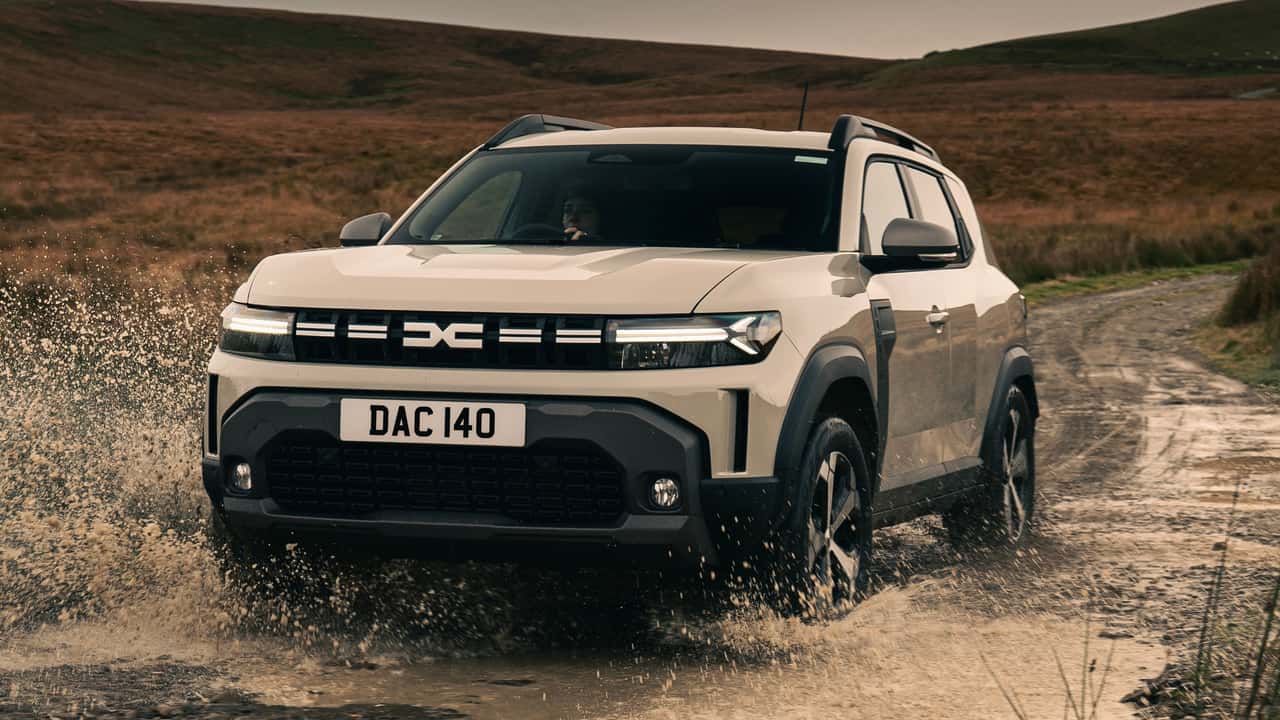
What if I told you there was a car that would happily fit a family of four and all of its gear, could hold its own off-road, and looks as fresh as they come, all while costing less than $36,000 (when converted to USD and with every option)? Would you slap me in the face or burst into a big grin and shout: “Oh, a Dacia Duster!” I really hope it’s the latter. Because that’s what I’m telling you about.
Renault has owned the Romanian automaker Dacia since 1999. Its jam is, in marketing speak, ‘good value cars.’ To you and I, that means cheap. The good thing is, Dacia doesn’t shroud itself in fluffy marketing pretending its cars are hewn from a single piece of myrrh, or that owning one will make people want to drink your tears. Dacia knows its cars are keenly priced, sure, but it also knows they have to do everything its drivers need without needless trinkets.
| Quick Specs | 2025 Dacia Duster |
| Engine | 1.0-Liter Four-Cylinder / 1.2-Liter Mild-Hybrid / 1.6-Liter Hybrid |
| Output | 99 – 193 Horsepower / 118 – 170 Pound-Feet |
| Transmission | Six-Speed Manual / Four-Speed Automatic |
| 0-62 MPH | 9.9 – 14.1 Seconds |
| Base Price | £18,745 ($24,326 USD) |
If that all sounds a bit budget, that’s because it is. But there’s a difference between the sort of budget that makes peoples’ faces all contorted and the sort of budget that makes them rub their hands together. Dacia is the latter.
Now, the lineup isn’t a mash of similar cars doing similar things. There’s a small hatch, a wagon that carries lots of people, a tiny EV, and a small SUV. There’s a big SUV coming soon, too. It’ll be called the Bigster, which is an awesome name. But the standout of the Dacia lineup is its small SUV: The Duster.
Why? Because since forever the Duster has been an unpretentious box that gets you from A to B without fuss, faff, or worry. It’s high off the ground so you can put children in the back without bending over. Its trim isn’t made of materials mined from the foothills of Mount Olympus, so if someone runs a shopping cart into them at the store, you won’t have to pay the earth to replace them. You can have one with all-wheel drive, so it’ll get over mud, twigs, and those dastardly puddles on the way to school. It’s what a lot of people need from a car, and nothing more.
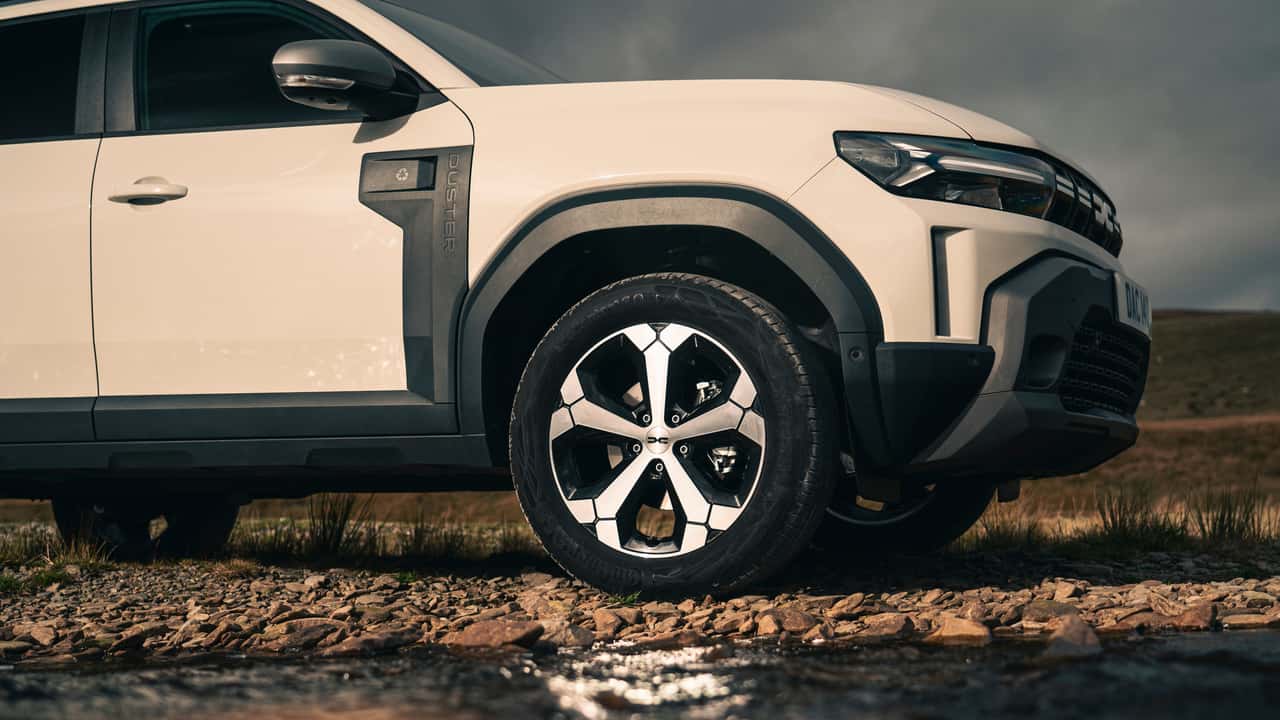
Photo by: Dacia
This year saw the launch of the third-generation Duster. It’s an important car for Dacia—over 2.2 million have been sold in Europe since 2010. Take a look around most towns and you’ll likely spot at least one Duster—if you find one in UN white with steel wheels, the more the better.
The new Duster comes with a mix of motors: A 1.0-liter bi-fuel, a 1.2-liter mild-hybrid, and even a 1.6-liter full hybrid. The first one isn’t a huge deal, but the other two will be where sales lie. You can spec front- or all-wheel drive, too, depending on your needs. The trunk, with all the seats folded down (and without a spare wheel), can fit up to 57.0 cubic feet of stuff in the front wheel drive car, you lose a bit if the rear wheels are driven.
Dacia’s kept the specs simple—there’s a basic Essential version that gets… a roof, and that’s pretty much it. Expression adds alloy wheels, a backup camera, a 10.1-inch infotainment screen, and more. Extreme gets the same as Expression as well as bigger wheels, Copper Brown details, and more things geared towards adventure. Journey is a parallel top spec, here geared towards comfort rather than fording rivers.

Photo by: Dacia
Pros: Cheap, Cheerful, Just Capable Enough
In order to keep the EU happy, cars need to come with active safety tech as standard. Dacia’s been a bit light on such things in the past—its customers didn’t want them, so why bother fitting them? A chunky touchscreen comes with web-linked navigation, satellite radio, screens to turn the various safety systems off, and compatibility with both Apple CarPlay and Android Auto so you can choose your own adventure.
The new car’s shape is pleasingly ‘concept-y,’ which means it’ll either age incredibly well a la BMW i8 or look like a Sci Fi version of ‘the future’ from a 1970s B-movie. Dacia’s keen to be as sustainable as possible; 20 percent of the plastic in the new Duster has been recycled, and even on some exterior trim.
Inside, you won’t find exotic materials or puffin hide, instead, there are nicely designed but hard plastics and comfy seats. Dacia’s customers don’t need puffin, nor do they need a throne that’ll massage their buttocks. They need something that children can kick, pointy things can grind against, and that won’t look like a bomb site after three days of moderate use.
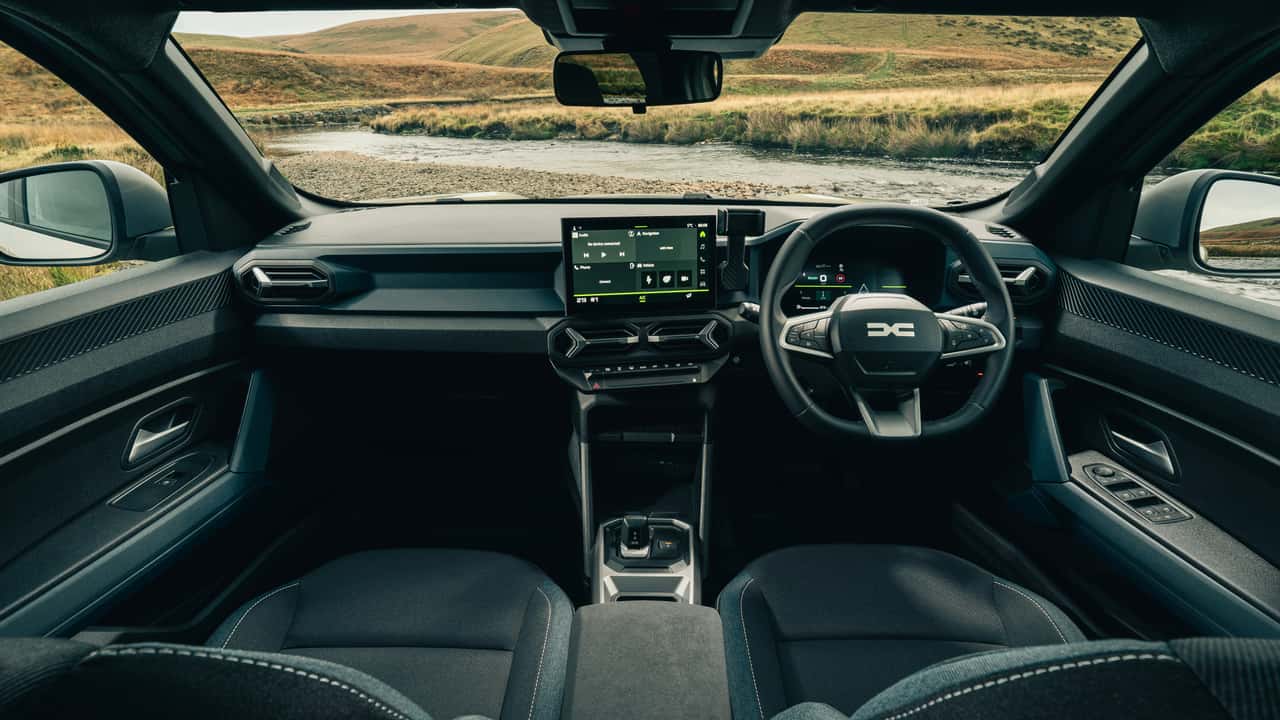
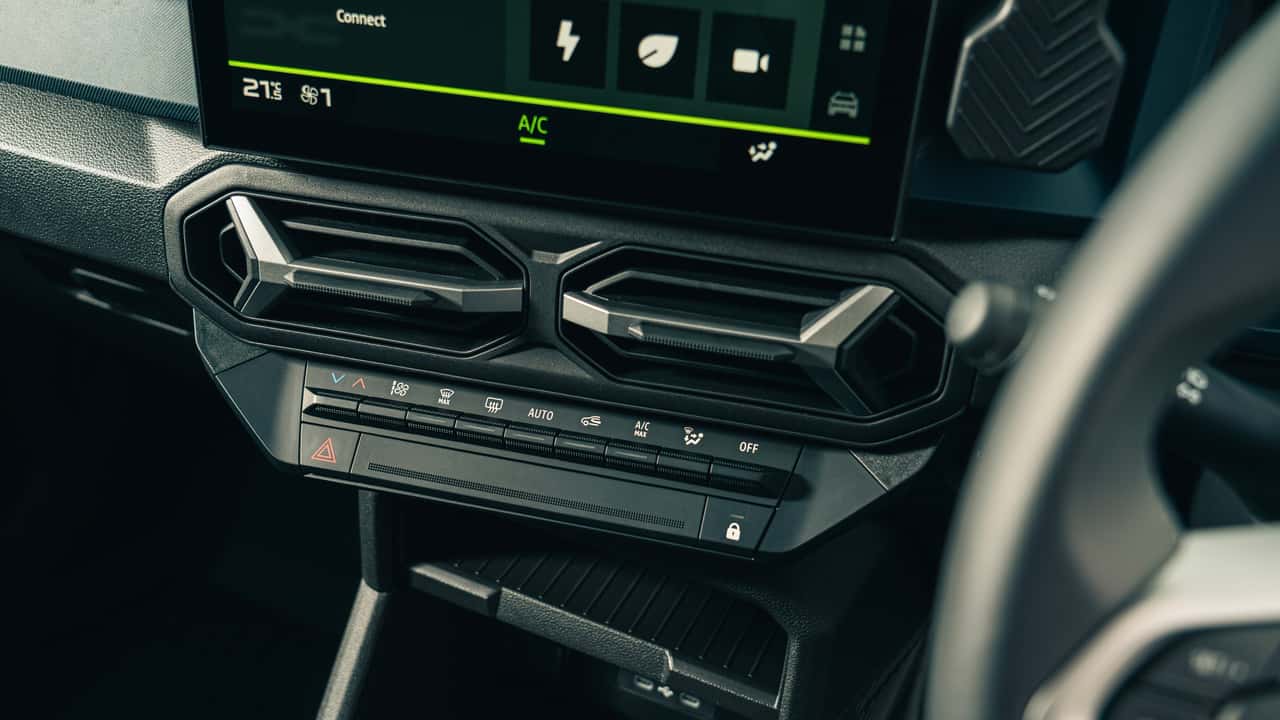
Photo by: Dacia
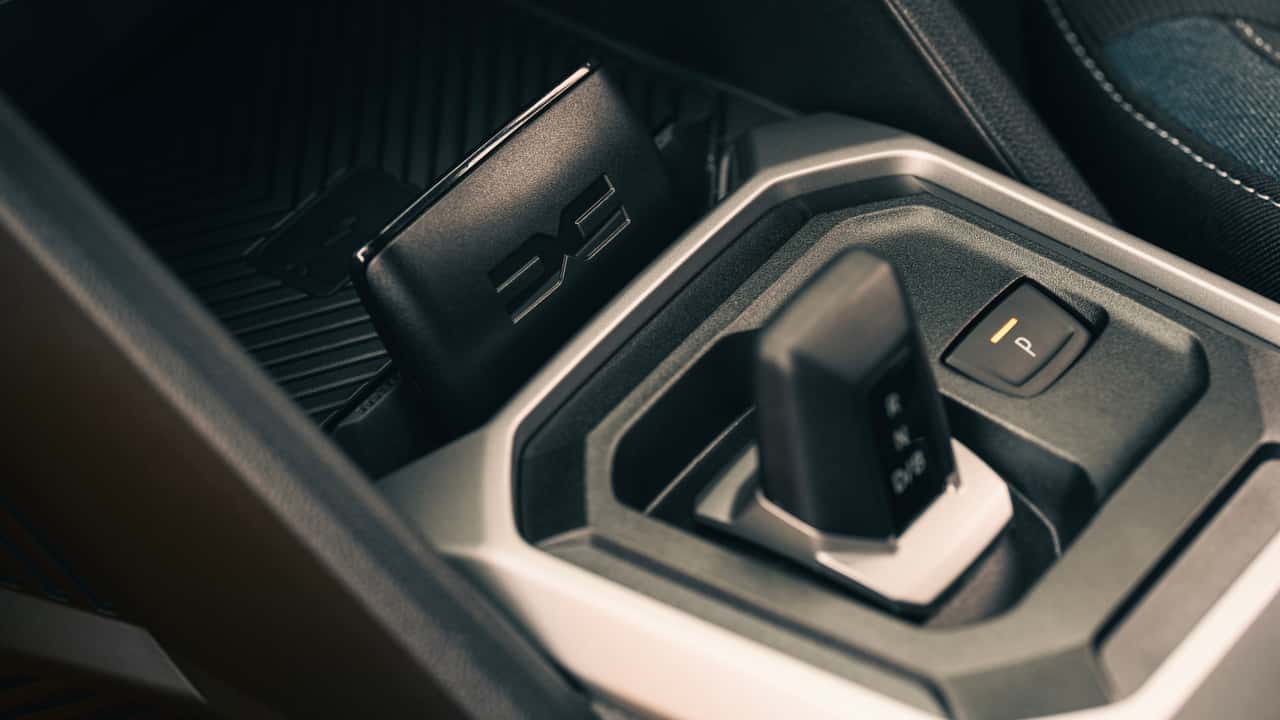
Photo by: Dacia
Given it has some off-road cred, I was delighted to find out it isn’t all mouth and no trousers. It won’t best a Wrangler up a mountain, but you can take through deep puddles and up steepish slopes, letting its hill descent control guide you down the other side, Dacia’s fitted a number of switchable modes so you can let the car know what it’s going to face, too, which isn’t unusual for a car that looks a bit SUV-ish, but it’s still pretty cool to see it at this price point. If you’re up for adventure you can even spec a ‘sleep pack’ to turn the trunk and rear seats into a bed. There’s a suite of adventure—stuff you can pick up should the call of the wild take you.
On the road, I played in both the mild and full hybrids. The mild hybrid comes with 129 horsepower and a six-speed manual. No, it’s not the sort of power that’ll set your hair on fire. Hell, giving it the beans around some truly stunning country roads, the performance barely even gets an ember going. But it was sustainably quick—its stick shift is fun and easy to use, I could quickly flick it from ratio to ratio, getting a little tingle of joy each time. There’s no spine-compressing acceleration, and the numbers on its digital speedometer don’t go up very quickly at all. But it makes a parpy noise and makes you smile.
Despite sitting decently high off the ground, the Duster doesn’t wallow or roll too much. An Alpine A110 it is not, but it keeps occupants upright and happy on a cruise. If you decide to be a child and see how quickly you can go around corners, it’ll make lots of noise while going not very quickly. Thankfully, you don’t get the impression that it’ll fall over.
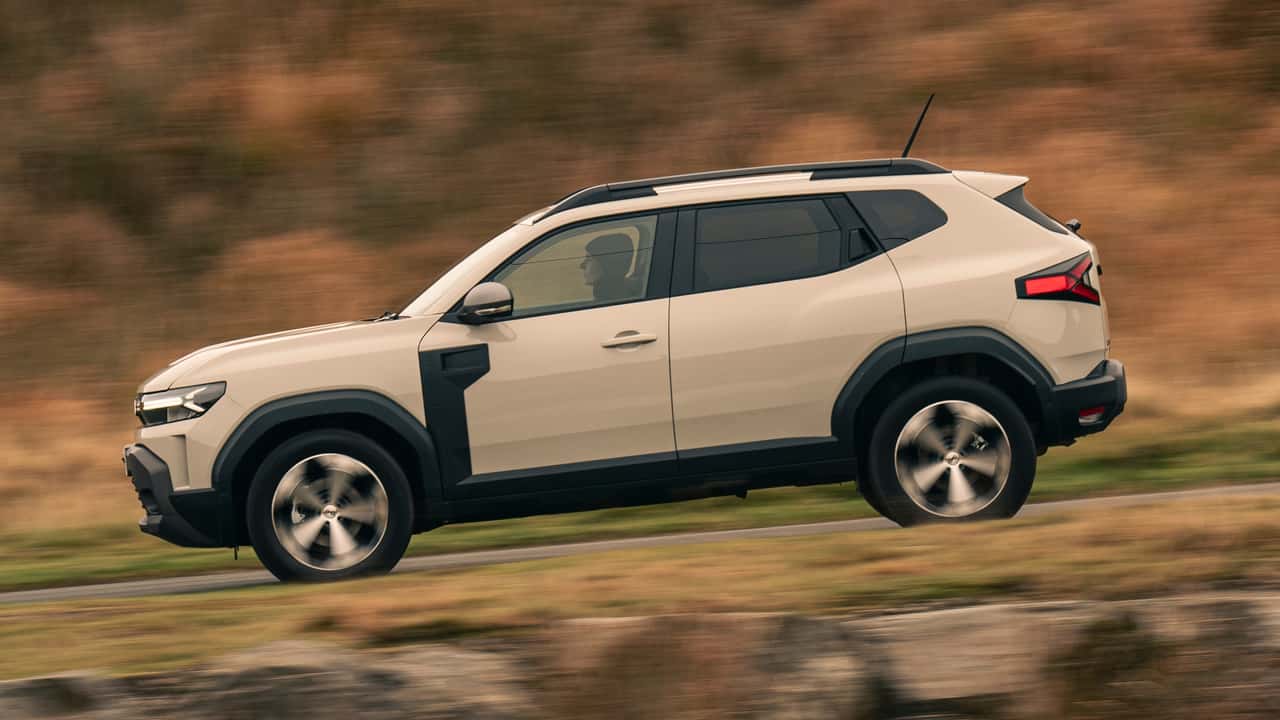
Photo by: Dacia
Cons: Oddly Noisy Hybrid, Not Quick At All
The full hybrid has a touch more power—139 horses—but there’s no manual there. Instead, you get a four-speed automatic and a read-out that shows you where power is going—to the battery, to the wheels, or anywhere else it fancies. The electric boost is welcome, and it glides neatly along until its ICE motor decides it wants to fire energy into the battery—here things get oddly noisy, and it can be a bit irksome. You can still cover all the ground you want in it without issue, though.
The new Duster has a tough job to do. Its predecessor did without many of the toys the new one comes with and is broadly adored by all who encounter it. Dacia’s goal of making cars that do what its customers need has been met here, and with a new look, some extra ability, and those extra tricks up its sleeve it’ll probably score huge points. Dacia UK says that 1,000 people have already ordered a new Duster without having even looked at a physical car.
Luckily, they’ll discover they’ve made a wise choice—the Duster is still excellent at what it does. Your SUV doesn’t need to be a rocket ship to be downright brilliant.
Cheap SUVs You Can Get In The US
The 2025 Nissan Kicks Has Grown Up and Glown Up: First Drive
The 2025 Chevrolet Equinox Does Enough
Get the best news, reviews, columns, and more delivered straight to your inbox, daily.
back
Sign up For more information, read our
Privacy Policy and Terms of Use.
| 2025 Dacia Duster | |
| Engine | 1.0-Liter Four-Cylinder / 1.2-Liter Mild-Hybrid / 1.6-Liter Hybrid |
| Output | 99 – 193 Horsepower / 118 – 170 Pound-Feet |
| Transmission | Six-Speed Manual / Four-Speed Automatic |
| Drive Type | Front-Wheel Drive / All-Wheel Drive |
| Speed 0-62 MPH | 9.9 – 14.1 Seconds |
| Maximum speed | 101 – 111 Miles Per Hour |
| Weight | 2,813 – 3,064 Pounds |
| Efficiency | 29 – 46 Combined |
| Seating Capacity | 5 |
| Base Price | £18,745 ($24,326 USD) |
| On Sale | Now (In Europe) |
29 Oct, 2024 | Admin | No Comments
The Ram 1500 RHO Isn't Just a Great Performance Truck: First Drive Review
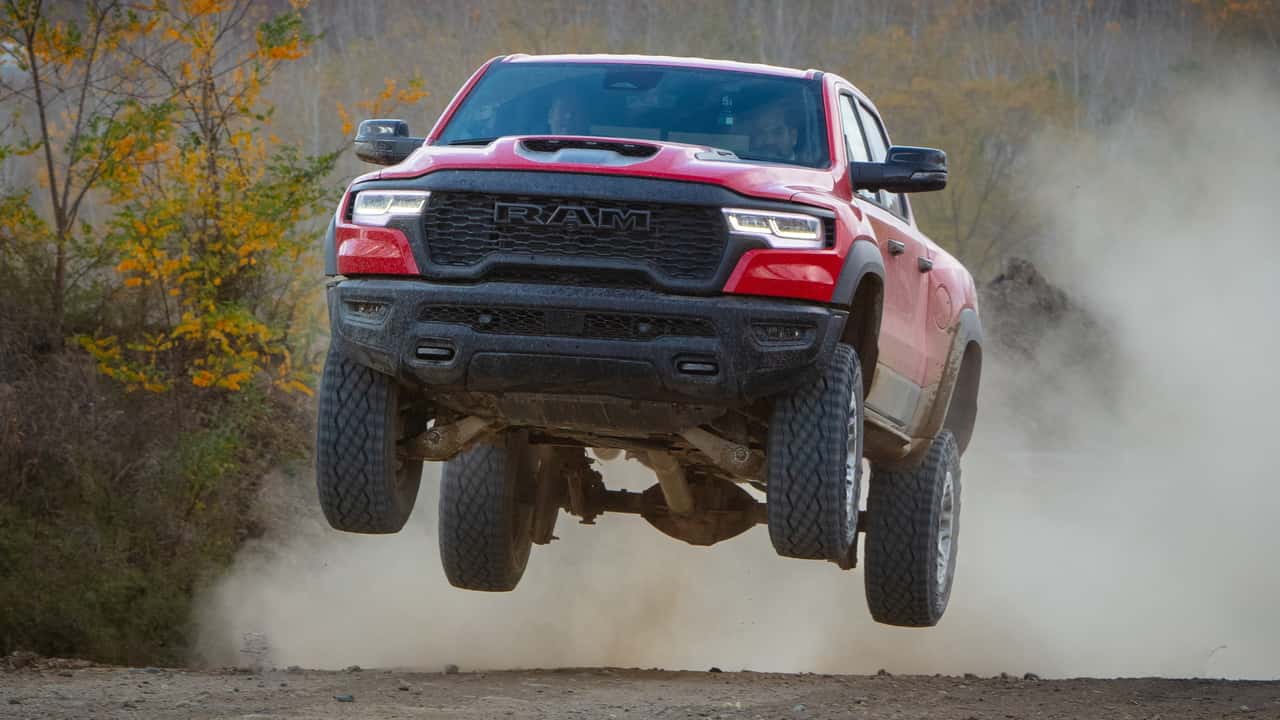

After barely 30 seconds in the driver’s seat of a 2025 Ram 1500 RHO, my co-driver is already egging me on for more speed: “Go faster! Full throttle! You can go faster through this section!”
It’s true. The 2025 Ram 1500 RHO is incredibly capable of zipping over rough terrain at stupid speeds. It doesn’t even feel very dramatic during the process. But like every seasoned autocross (or rallycross) veteran will tell you, the first lap of a course should always be taken slowly, so you can learn the layout. That’s what I was doing at the Holly Oaks ORV Park, a converted gravel pit north of Detroit with hills, moguls, sweeping turns, and jumps linked together through a 10-minute lap. Also, I didn’t want to roll down a 50-foot bank from a trail barely wider than the RHO’s 88.0-inch stance.
This truck’s capabilities are vast. I doubt the majority of RHO buyers will actually explore its impressively high limits off-road, at speed. Frankly, they have no reason to. But that off-road capability pays dividends on-road; This half-ton pickup is at its best on the fully paved (and oftentimes cratered) highways of America. Hell, it could be the best half-ton truck for daily commuting on the market right now.
| Quick Specs | 2025 Ram 1500 RHO |
| Engine | Twin-Turbocharged 3.0-Liter Inline-Six |
| Transmission | Eight-Speed Automatic |
| Output | 540 Horsepower / 521 Pound-Feet |
| 0-60 MPH | 4.6 Seconds |
| Base Price / As Tested | $71,990 / $81,985 |
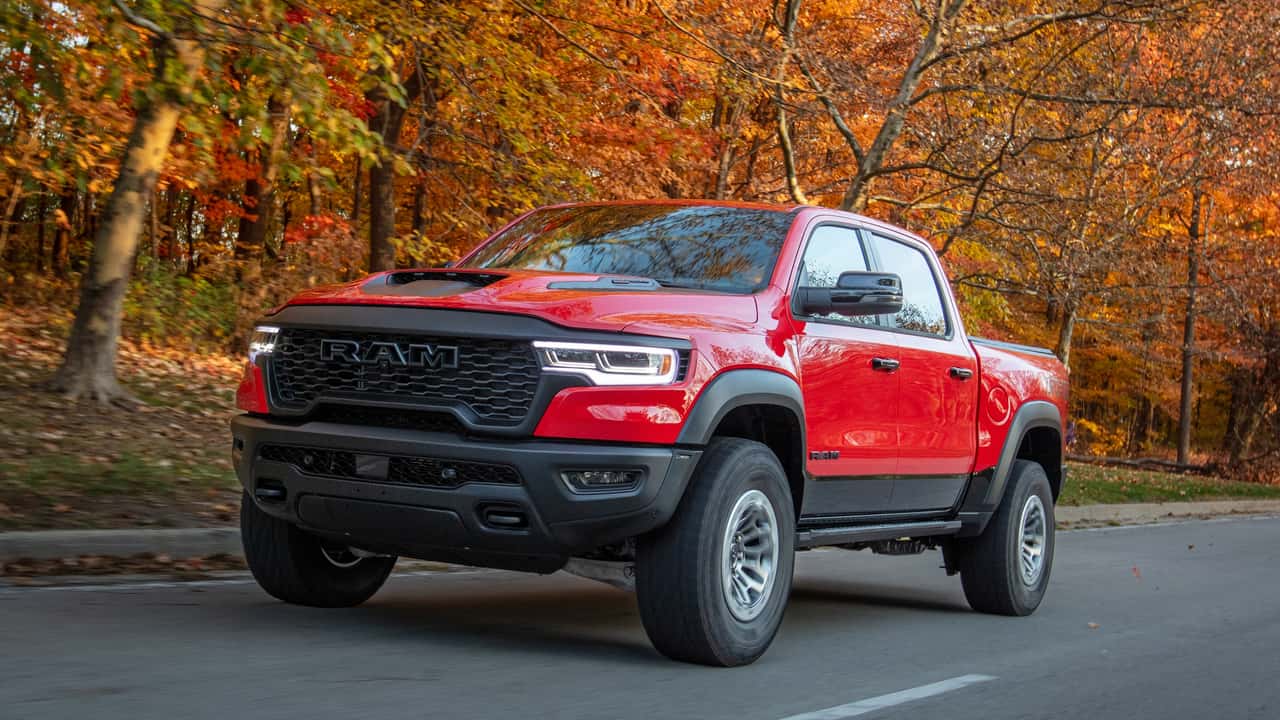
Photo by: Stellantis
Let me answer the obvious question first. Yes, the RHO jumps every bit as well as the old TRX does (or, did). Better in fact, because the RHO’s powertrain is 150 pounds lighter than the outgoing Hemi. Suspension travel is still the same—13.0 inches up front, 14.0 at the rear—and you’ll still find Bilstein e2 Blackhawk shocks amid a sea of RHO-specific hardware. But the company’s Active Terrain Dynamics suspension management system has been retuned for better use on the lighter RHO, and its milliseconds-fast response time is quicker than ever.
Should the truck get airborne, the system detects full extension of the suspension, just as it did on TRX. New for RHO, though, is something called Air Attitude, in which the truck considers vehicle angle and presets the adaptive dampers for the best possible landing. Engine power is also cut while airborne, thus eliminating possible powertrain damage or unexpected thrust if you panic and inadvertently floor it. As long as you aren’t auditioning for a spot on Nitro Circus, the 6,200-pound RHO should safely touch down to terra firma even if the truck gets a bit out of shape during liftoff.
And that’s exactly what happened on one of my six jumps in the RHO. I came in a bit too hot and slightly crooked as I hit the crest of a hill. This caused the truck to nose over and lean left, landing first on the driver-side front wheel. Not only did the RHO land without incident, it didn’t feel harsh from the driver’s seat. In fact, nothing felt harsh in the gravel bit, even going 60-plus mph across a rock-strewn surface into a series of small whoops. For the record, that was when Ram’s co-driver asked me to slow down, but only because I was fast approaching a hard left I’d forgotten from my first run.
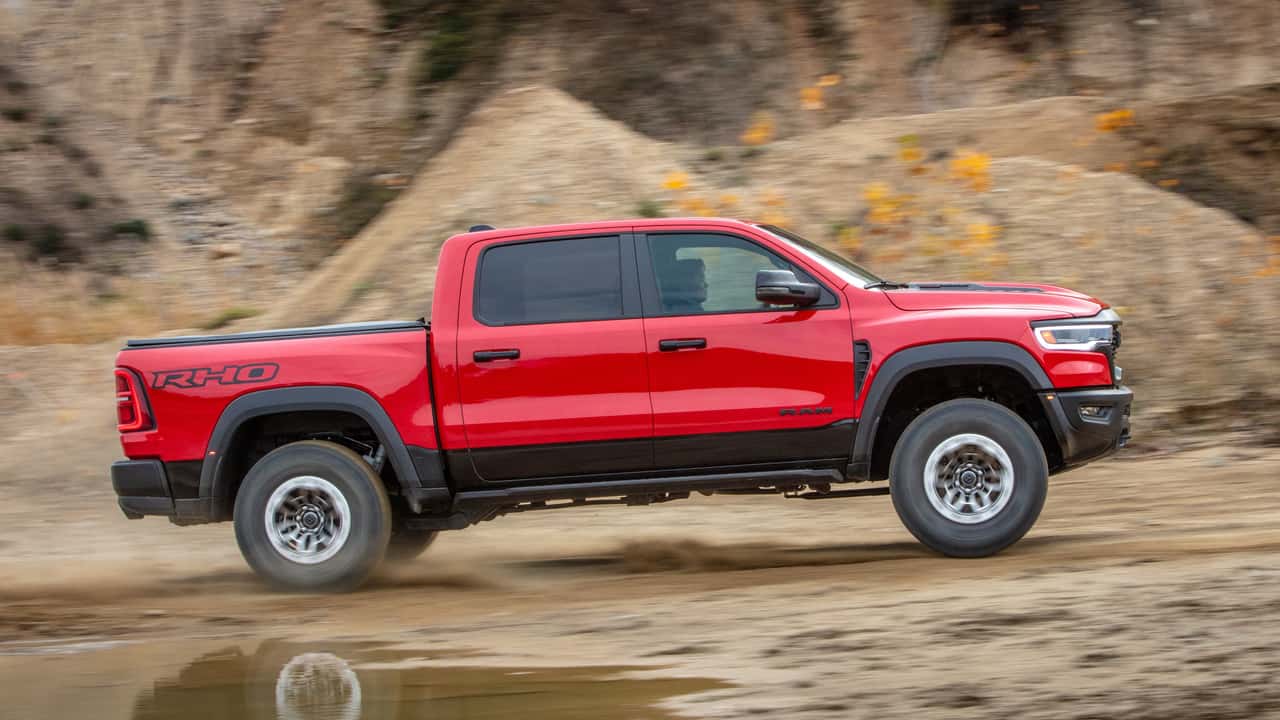
Photo by: Stellantis
Pros: Rides Like A Dream, Smooth Power, Stable And Confident In Most Situations
I was wholly engaged in the absurdity of blitzing the countryside at speed, reveling in the RHO’s poise and control. At these speeds, in other trucks, this would normally be a fight for survival. In Baja mode—which eases traction and stability settings while sending 75 percent power to the rear axle—the truck actually became a bit more comfortable at higher speeds. It still commands your full attention, make no mistake. But relatively simple steering corrections were all it took to keep the RHO pointed in the right direction. The suspension (and subdued stability control) did the rest.
I share this experience not because buyers will go full Baja in a $71,990 pickup truck. Even Ram admits most RHO customers won’t do anything like I did in the off-road park. However, in designing a suspension capable of such things, Ram also created a supremely comfortable truck for everyday use. Venturing outside the gravel pit for a 30-minute tour of Southeast Michigan, the RHO was as docile and relaxed as a luxury sedan. It was quiet, too, even with aggressive 35-inch Goodyear Wranglers. The same adaptive suspension that softens landings also tames wayward motions on the pavement. Dive under braking and body roll were minimal.
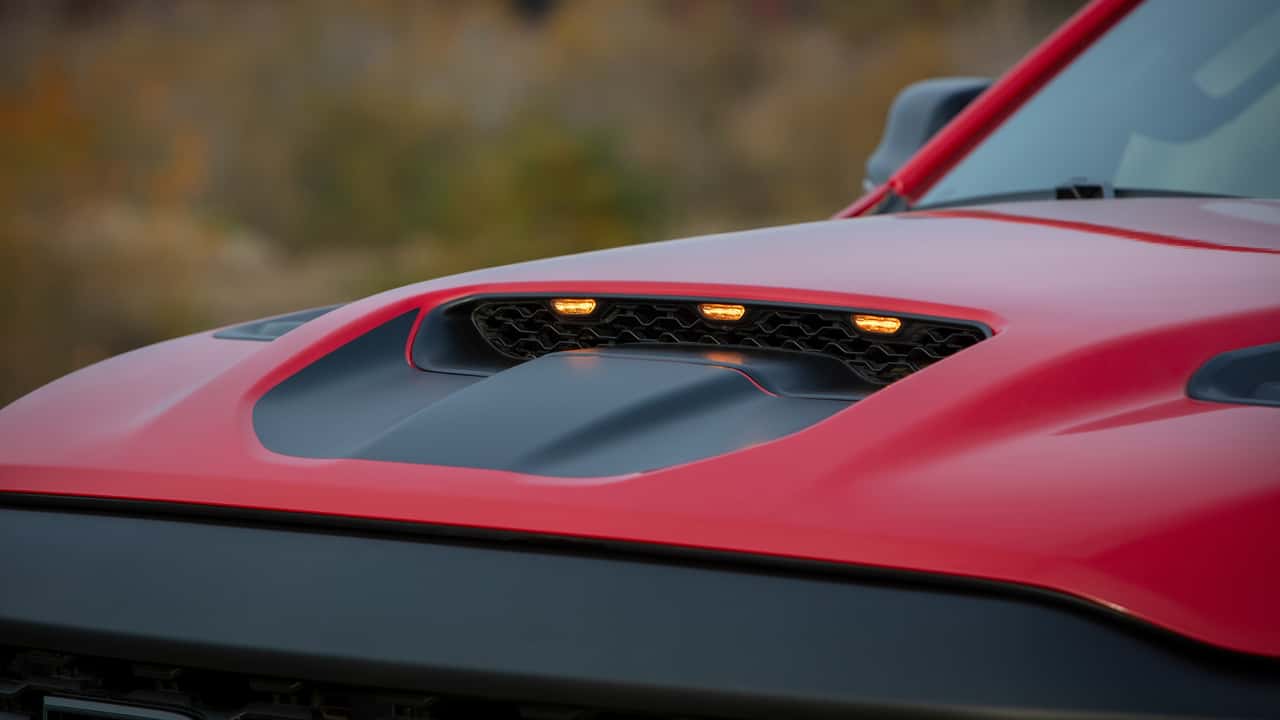
Photo by: Stellantis
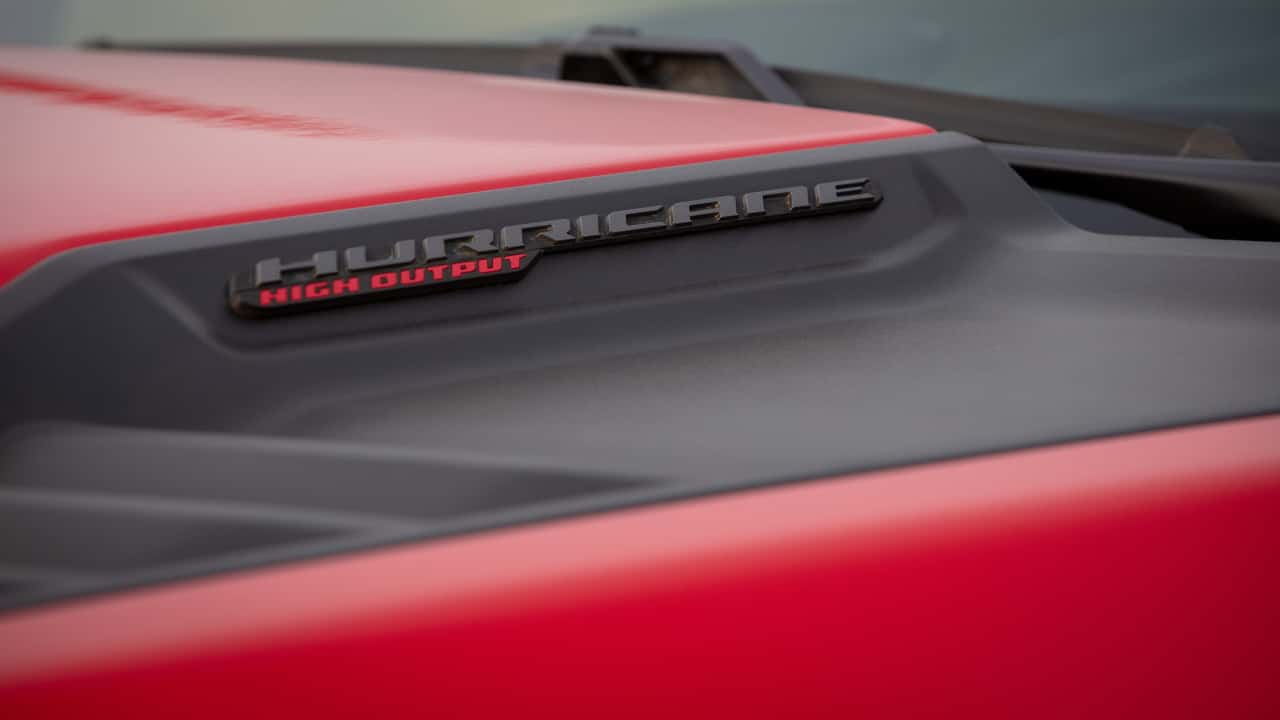
Photo by: Stellantis
Interior-wise, the RHO isn’t notably different from any other 2025 Ram save for trim choices and two notable items: “Performance” pages in the infotainment system, and a snazzy RHO plaque on the center console. The VIN is also etched onto the plaque, making each one specific to the truck. As a refresher, the 2025 Ram 1500 has a 12.3-inch driver display, a 14.5-inch portrait center display, and for RHO, a 10.3-inch passenger display. It’s a busy interior, but the presentation is both handsome and functional.
If you want some thrust, the RHO has it. The high-output, twin-turbocharged 3.0-liter Hurricane inline-six is the only choice, and actually, it’s the least expensive way to get this smooth-running engine. It makes 540 horsepower and 521 pound-feet of torque just as it does for pricier Limited and Tungsten trims, but Ram subtly suggests there might be more power at speed due to the RHO’s big hood scoop feeding it cold air. The exhaust system is specifically tuned for the RHO, too, but aside from a pledge that power delivery is different, Ram wouldn’t commit to anything beyond the published 540 hp.
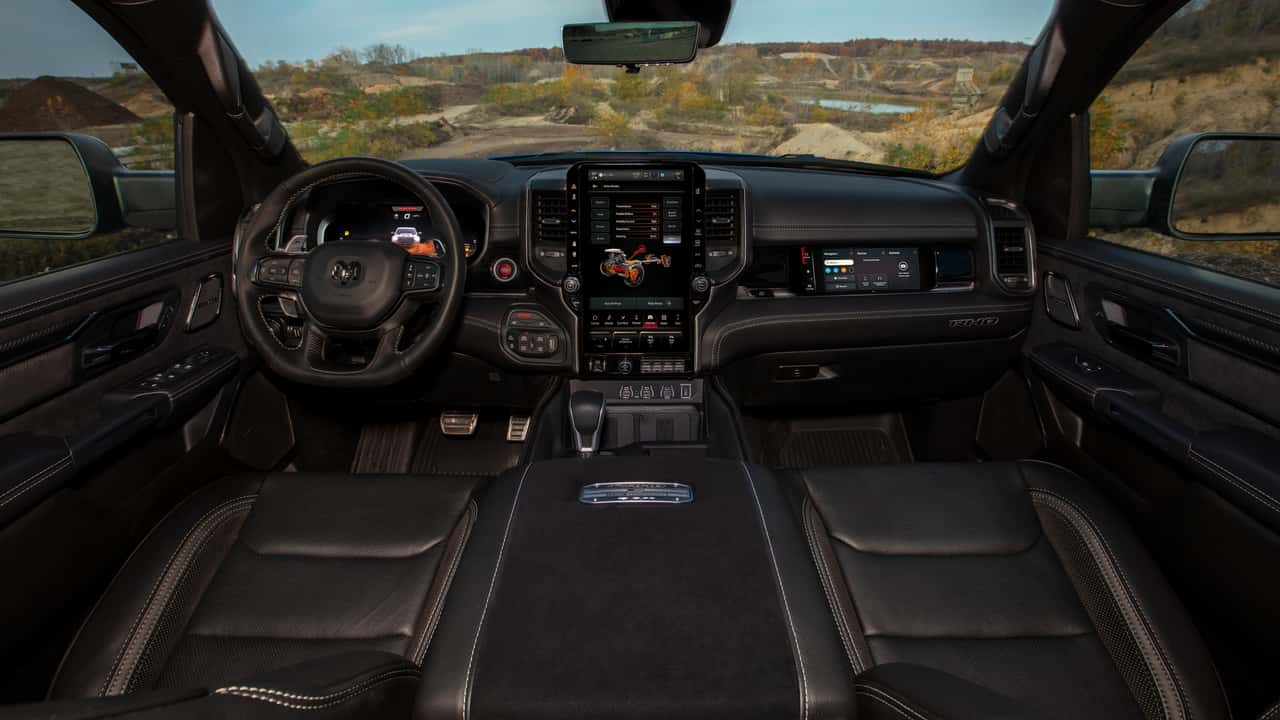
Photo by: Stellantis
Cons: Tiny Bit Of Turbo Lag, Starts At $70,000
That said, having driven a Ram 1500 Limited with the high-output six earlier this year, I didn’t notice any clear differences in power delivery. However, this is one area where the lack of a low-torque V-8 could be an issue. The supercharged Hellcat engine in the TRX produces immediate power on throttle tip-in, but careening through the gravel pit in the RHO, I was frustrated on a few occasions by turbo lag that derailed some glorious powerslide opportunities. But again, how many RHO owners will be booking down a trail in search of the perfect drift?
They won’t. RHO buyers will look at the mean stance, the horsepower, the cozy massaging seats, the hands-free driving capability, and decide they want a luxury truck with attitude that can also go off-road. What they’ll get is a pickup truck with a blissfully soft ride, sports car acceleration, a spacious interior, sharp looks, a towing capacity of 8,380 pounds, and fuel mileage that isn’t great at 15 miles per gallon combined, but is notably better than the TRX.
In short, they’ll get what could be the best daily driver for a pickup truck in any full-size segment.
Competitors
Chevrolet Silverado 1500 ZR2
Ford F-150 Raptor
GMC Sierra 1500 AT4X
Toyota Tundra TRD Pro
| 2025 Ram 1500 RHO | |
| Engine | Twin-Turbocharged 3.0-liter I-6 |
| Output | 540 Horsepower / 521 Pound-Feet |
| Transmission | Eight-Speed Automatic |
| Drive Type | Four-Wheel Drive |
| Seating Capacity | 5 |
| Speed 0-60 MPH | 4.6 Seconds |
| Efficiency | 14 City / 16 Highway / 15 Combined |
| Weight | 6,200 Pounds (est.) |
| Ground clearance | 11.8 Inches |
| Towing | 8,380 Pounds |
| Payload | 1,520 Pounds |
| Base Price | $71,990 |
| On Sale | Now |
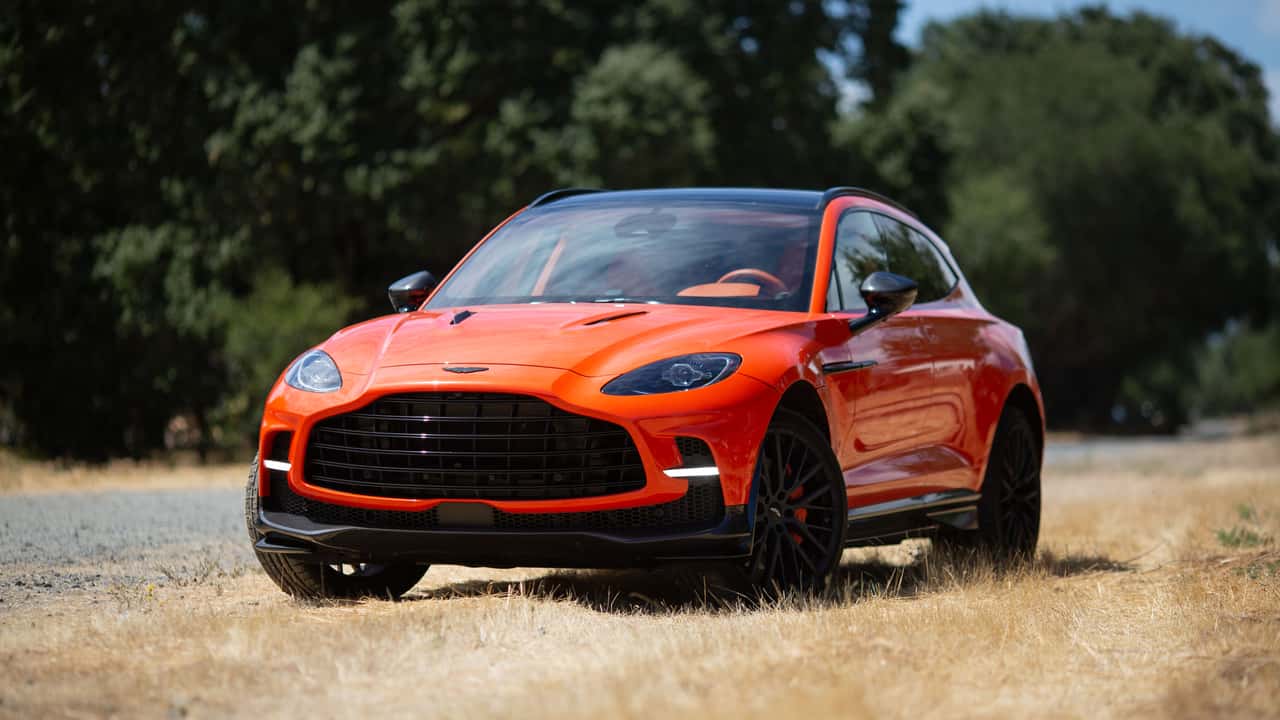
A quarter-million-dollar SUV with an Aston Martin badge should be a pretty easy sell these days, what with Bentley’s and Lamborghini’s SUVs moving quicker than the manufacturers can build them.
But the Aston Martin DBX hasn’t been nearly as popular as the Bentayga, Urus, or others in the sporty, ultra-luxe SUV segment, even though Aston’s contender is a gorgeous object with a twin-turbo V-8 making 697 horsepower. It makes you wonder: Why isn’t Aston raking in cash here?
All signs point to the DBX’s interior, which was the central focus of this model-year refresh. An outdated or funky interior is charming in an esoteric sports car or a GT, but less likable in the runabouts of one-percenters. Finally for 2025, though, Aston gave the DBX707 an interior to take the fight to Lamborghini. And it might just be enough to make the DBX the most compelling super-SUV available today.
| Quick Specs | 2025 Aston Martin DBX707 |
| Engine | Twin-Turbocharged 4.0-Liter V-8 |
| Output | 697 Horsepower / 663 Pound-Feet |
| 0-60 MPH | 3.0 Seconds (est.) |
| Weight | 4,940 Pounds |
| Base Price / As Tested | $249,000 / $352,200 |
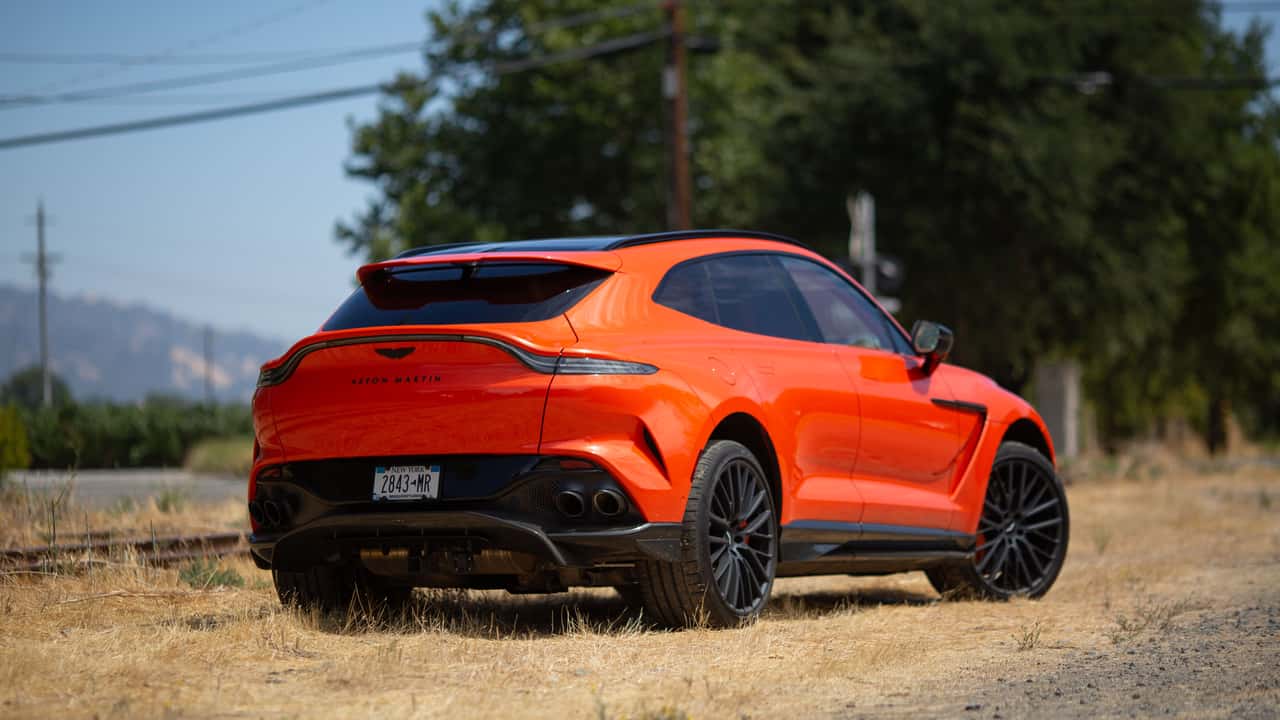
Chris Rosales / Motor1
Mechanically, the DBX remains largely the same. This SUV still has 697 horsepower and 663 pound-feet of torque. But there was some nipping and tucking of its various systems. Chief engineer Andy Tokley outlined the changes briefly, with most of the updates coming in the air suspension and electronic damper calibration. While no hardware has changed, the equipment is still plenty powerful, especially coupled with active sway bars. Tokley even says that the systems are powerful enough to force the DBX to corner flat, but he values natural feel over the outright domination of physics.
And now, the 707 is the only flavor of DBX available, with the take rate of the base DBX being in the single-digit percentages, according to Aston Martin. The one big change is the interior, which is essentially the same interior introduced on the DB12 and facelifted Vantage. The few of us who got to experience the old Aston interior know that it was at best impractical and at worst confusing, but it had decent leatherwork and quality.
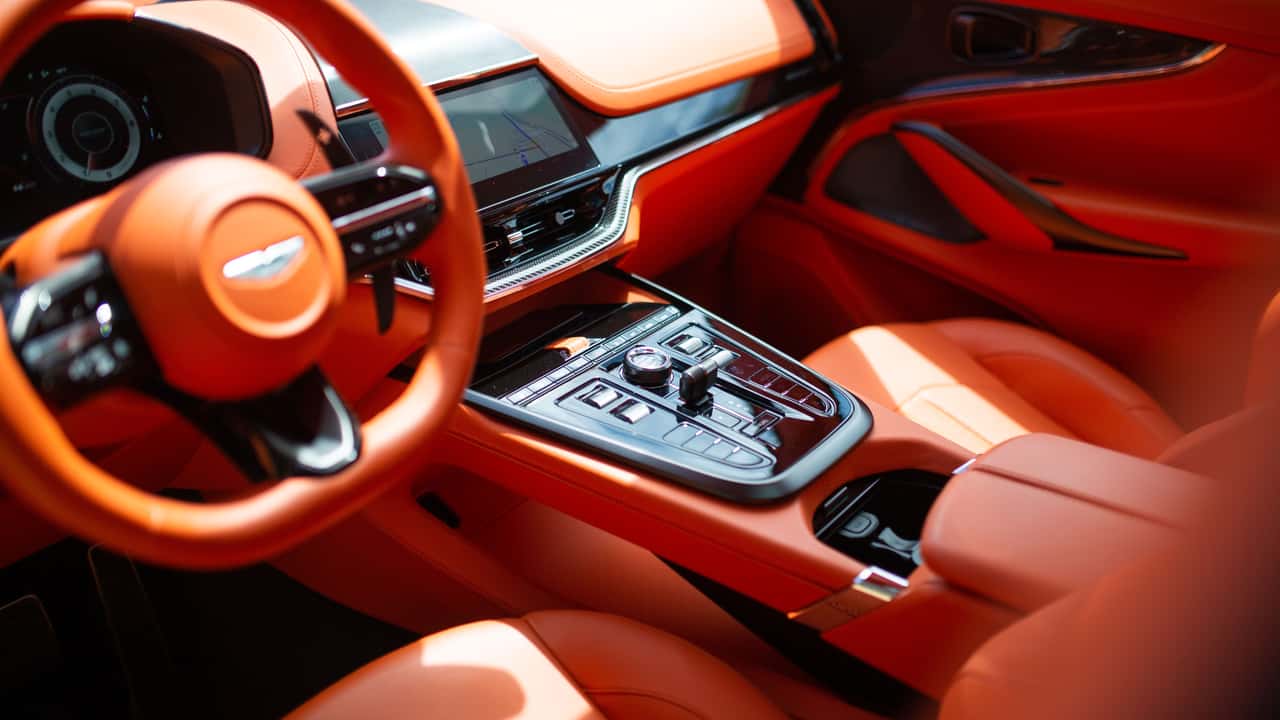
Chris Rosales / Motor1
Pros: Extraordinarily Power, Impeccable Ride Quality, Excellent Interior
This new interior offers a complete transformation. Whereas the Bentayga almost feels chintzy and the Urus is dungeonlike by comparison, the DBX707 looks excellent from every angle. The stitched leather is unmatched—even the surfaces tucked into corners of the cabin that otherwise go unused. The overhead handles feel like handmade, lifetime leather products rather than some hard-wearing but unpleasing synthetic. And the user interface—finally, mercifully—is satisfying to use.
The DBX has heavy, metallic, knurl-edged control knobs for every major function. Just switching drive modes using the thunk thunk thunk of the central control knob feels like an event, with an almost offensively heavy control weight. The same goes for the knurled barrels for the HVAC controls, and the new shift lever in place of the nonsensical buttons of the past. It is a wonderful feature that nobody else has.
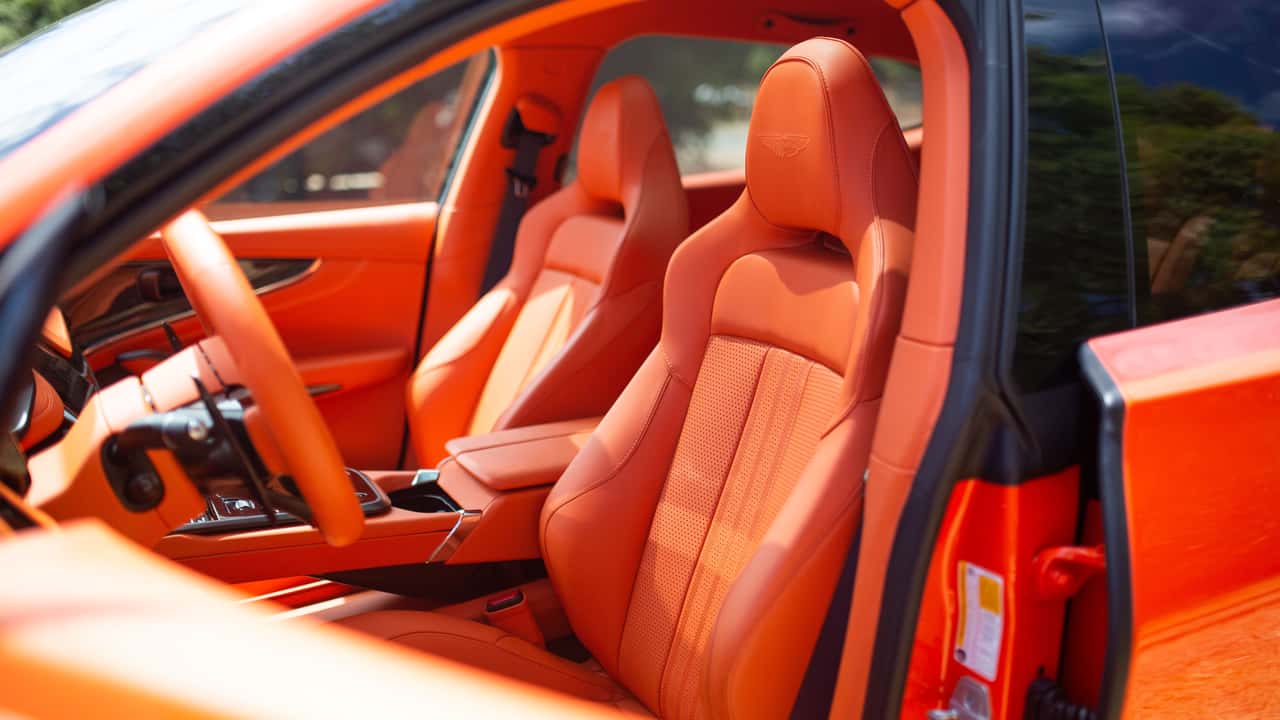
Chris Rosales / Motor1
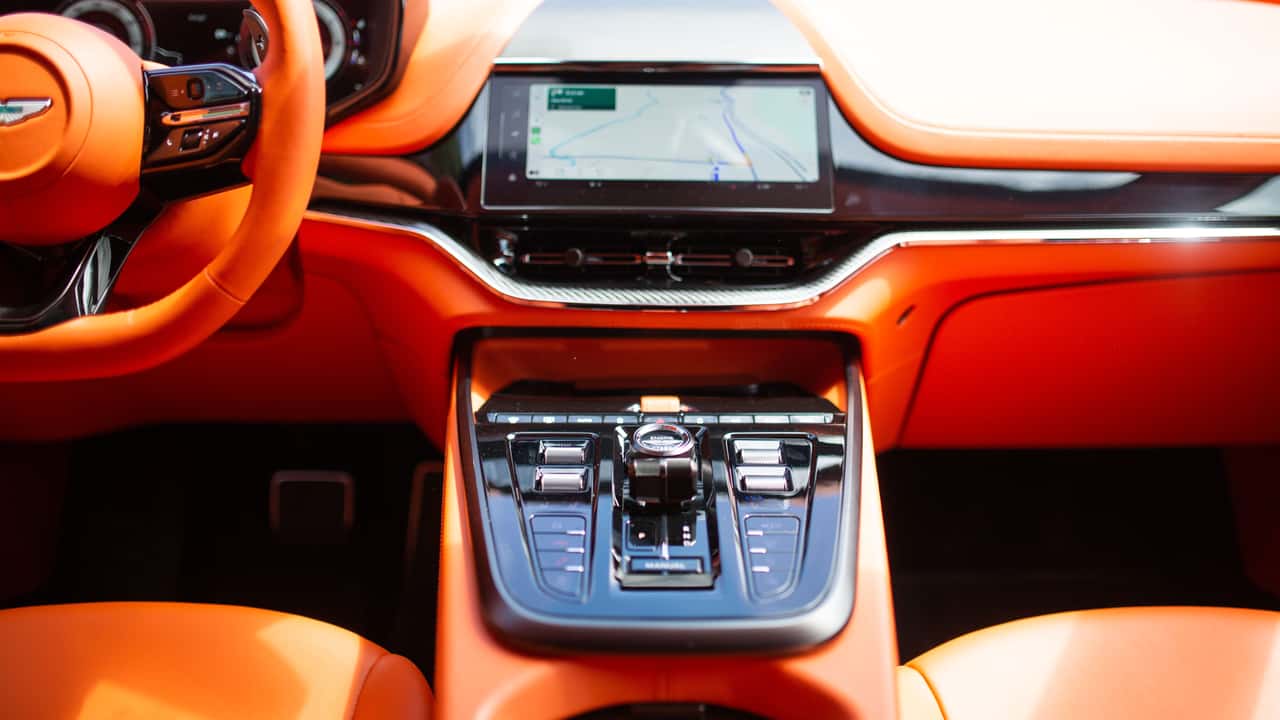
Chris Rosales / Motor1
The same can’t be said for some of the more conventional controls in the cabin. Aston, inexplicably, put the heated and cooled touch-capacitive controls in high-traffic areas. It’s way too easy to accidentally swipe a seat heater or cooler control on the way to adjusting HVAC or toggling a different damper mode, and it happened several times on a short drive.
Mercifully, the new infotainment is just as good as it is in the Vantage and DB12’s, perhaps even better. The touchscreen responds quickly, though sometimes it gets tripped up and laggy. And I could argue the 10.3-inch central screen feels a hint too small, but it still works well and most of the DBX’s functionality is buttons and knobs rather than screen-based, making a smaller screen a possibility. Yet, those are just ripples in an otherwise extraordinary experience.
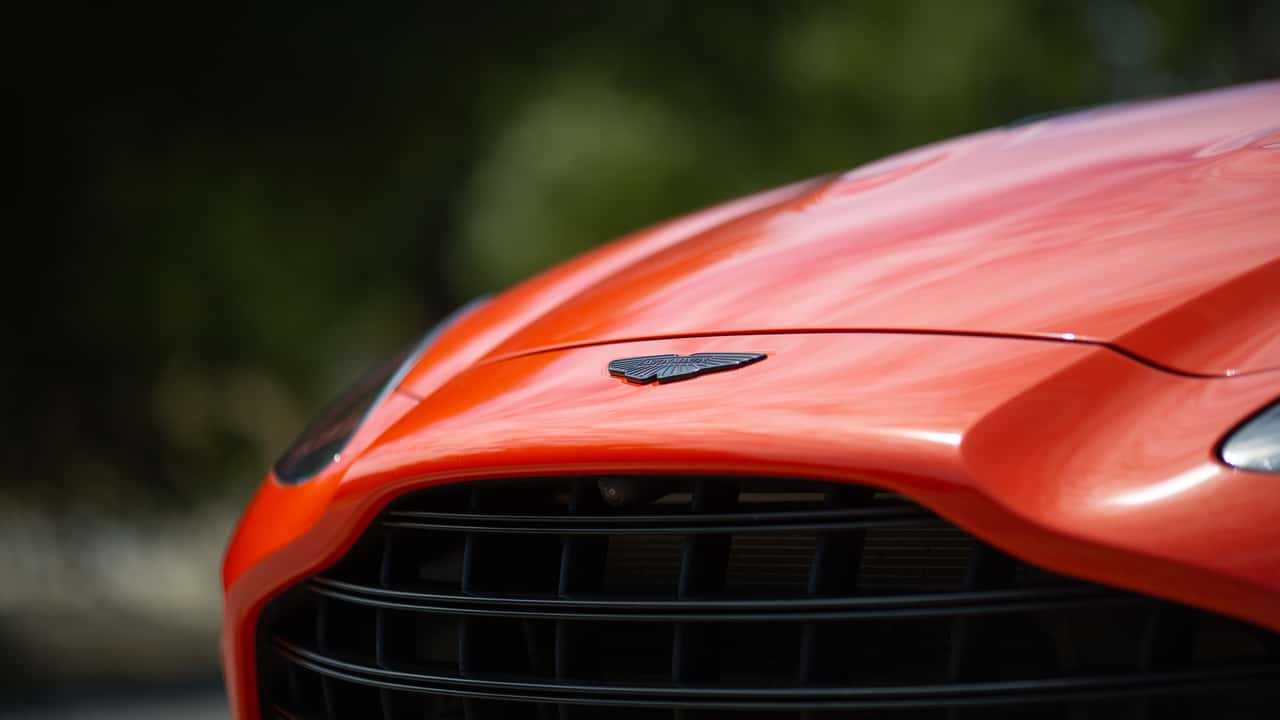
Chris Rosales / Motor1
Cons: Infotainment Is A Little Slow, Gauge Cluster Is Hard To Read
On the road, the cabin is quiet and comfortable, and the ride quality is exceptionally good. Over bumps of any size, there are never any secondary body motions, and the DBX remains resolutely level over consistently bumpy and broken surfaces. Save for true active suspension, what Tokley and his team accomplished is impressive, and the DBX might have the best ride this side of a Cullinan. It’s as though every inch of wheel travel is controlled by the millisecond, and that translates into stable, secure handling.
Sure, the DBX doesn’t really party on a backroad like a Vantage, but it does the job well enough. Handling balance is excellent, and the fundamentals of the all-around dual wishbone suspension and bonded aluminum body shine through. Carving up a small, winding track up a mountain feels athletic and easy, and the scale of the DBX never really catches up despite physics threatening to step in.
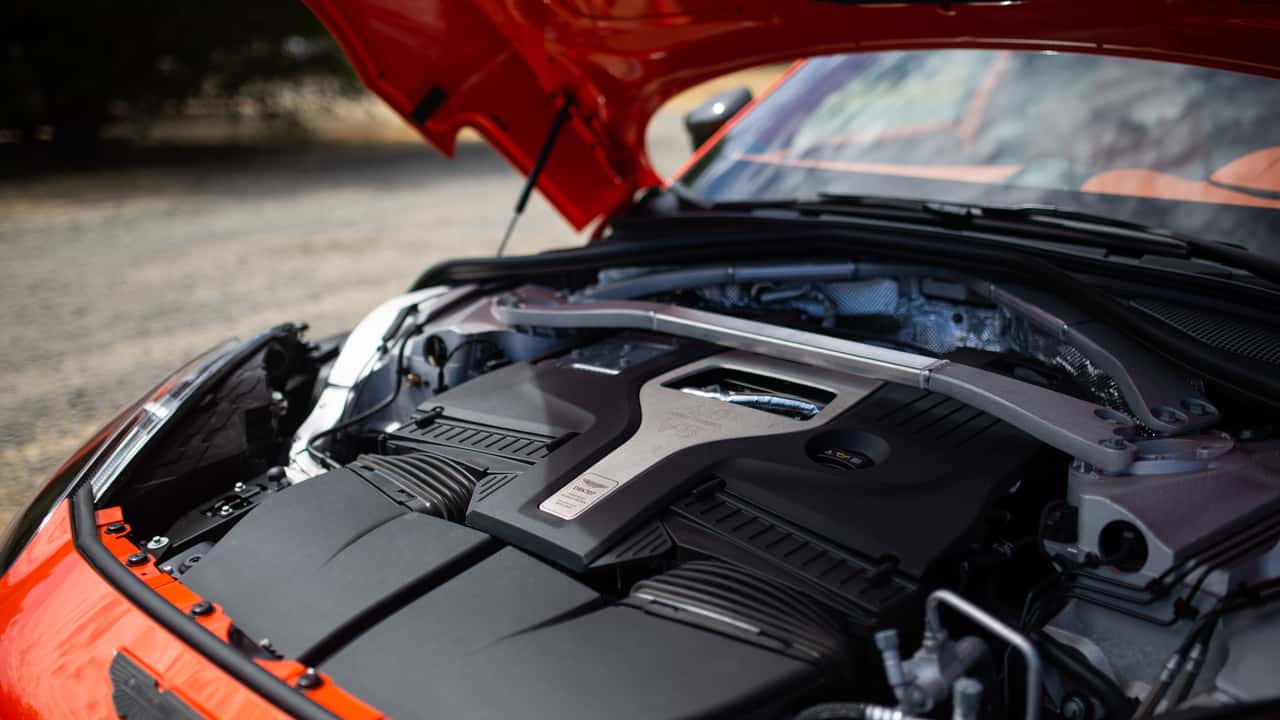
Chris Rosales / Motor1
My only complaint is that the steering is number than Linkin Park, but it’s a fair enough concession for a family SUV. It’s just a shame that the Porsche Cayenne can have great steering and not feel tiresome—more automakers could stand to learn this lesson.
Much like the Vantage, the DBX707 really has no more excuses. It is simply an excellent product that can stand on its own, beyond any of the excuses we normally draw up for the Bond brand. The DBX707 is so good that it’s safe to say this: Lamborghini Urus, watch out.
Competitors
Bentley Bentayga
Lamborghini Urus
Porsche Cayenne Turbo GT
Rolls Royce Cullinan
More Super SUV Reviews
Ferrari Purosangue: The Most Fun SUV Ever
You Need to Take the Lamborghini Urus Hybrid Seriously: Review
Get the best news, reviews, columns, and more delivered straight to your inbox, daily.
Sign up For more information, read our
Privacy Policy and Terms of Use.
28 Oct, 2024 | Admin | No Comments
Bison Vs Raptor Vs Trailhunter: The Ultimate Off-Road Truck Showdown
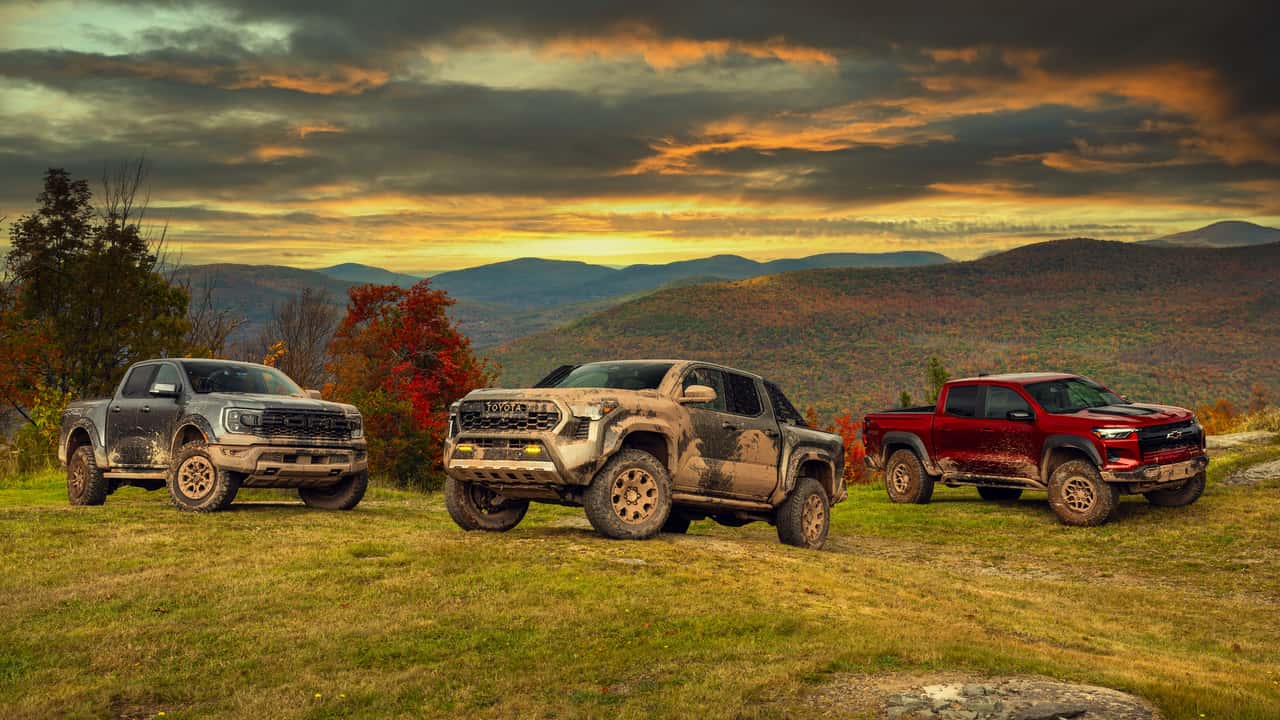

The American West can credibly stake its claim as the most beautiful part of the country. At least most of the year. But for a few short weeks each fall, the Northeast is spectacular, an overhead explosion of red, orange, and yellow attracts the masses to the Adirondacks, Appalachian, Poconos, and these mountains, the Catskills. Long a refuge for weary New Yorkers who need a bit of maple and birch in their life, it’s also the perfect place and time to test the year’s greatest off-road pickups.
These sorts of trucks didn’t exist all that long ago. Even five years ago, the thought of an automaker selling you a mid-size pickup on 33-inch tires was laughable. Let alone one on 35s. But overlanding and off-roading have exploded in popularity, and within the last two years, we’ve gotten new versions of the Toyota Tacoma, Ford Ranger, and Chevrolet Colorado, each with its own hardcore off-roading variant.
We carried this test out over two days with the help of the wonderful folks at Northeast Off-Road Adventures in the eastern Catskill mountains. Day one was at NORA’s facility in Ellenville, NY, with technical terrain to test each truck’s mettle. The next, a tour up Hunter Mountain for some more casual off-roading, and a good excuse to take in the changing scenery.
| Colorado ZR2 Bison | Ranger Raptor | Tacoma Trailhunter | |
| Engine | Turbo 2.7-Liter Four-Cylinder | Twin-Turbo 3.0-Liter V-6 | Turbo 2.4-Liter Four-Cylinder Hybrid |
| Output | 310 Horsepower / 430 Pound-Feet | 405 Horsepower / 430 Pound-Feet | 323 Horsepower / 465 Pound-Feet |
| Payload | 1,050 Pounds | 1,542 Pounds | 1,475 Pounds |
| Towing | 5,500 Pounds | 7,500 Pounds | 6,000 Pounds |
| Base Price / As Tested | $60,095 / $65,030 | $57,215 / $59,530 | $64,395 / $64,944 |
The Chevrolet Colorado ZR2 Bison has been around since 2018, though this second version is a far more serious proposition than the first. Developed in tandem with upfitter American Expedition Vehicles, the Bison gets the ZR2’s incredible Multimatic Dynamic Spool-Valve Suspension (DSSV) dampers, plus locking differentials, then and adds new hydraulic bump stops to the suspension, steel bumpers front and rear, steel underbody protection, rock rails, and 35-inch Goodyear Wrangler tires instead of the standard 33s. The Bison package adds an $11,750 upcharge over the standard ZR2’s $48,695 MSRP, adding a ton of protection but only around 200 pounds of weight overall, thanks to the use of boron steel throughout.
Toyota takes aim at the mid-size supertruck segment with two flagship off-road Tacoma variants. There’s the familiar desert-runner TRD Pro, and this, the overlanding-focused Trailhunter. Like the ZR2 Bison, the Trailhunter is upfitted from the factory. Toyota partnered with ARB for a new steel rear bumper, a sport bar with MOLLE panels for mounting gear, underbody protection, lights, and lifted Old Man Emu suspension. There’s also a sway-bar disconnect, 33-inch Goodyears, and a snorkel, among other off-road goodies. It’s yours for $64,395, and the only truck here available in five- and six-foot bed configurations.
While Ford previously had a Ranger Raptor, this is the first offered in America. It’s the odd one out here, designed for wide-open desert running rather than threading between birch trees. But, it’s got 33s, front and rear lockers, Ford’s off-road cruise control system, and a snarling twin-turbo 3.0-liter V-6 paired with a 10-speed automatic. While it’s not cheap, with a base price of $57,215, the Ranger Raptor is the cheapest truck here.
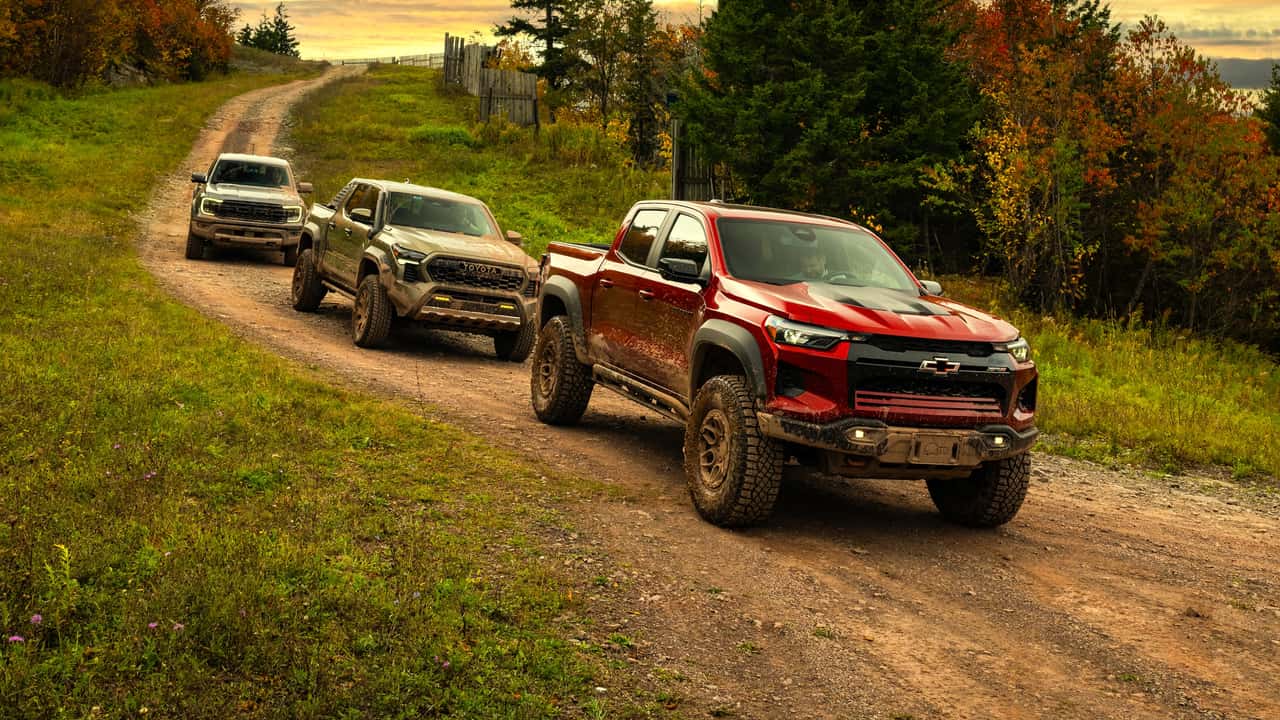
Andrew Link | Motor1
NORA considers itself a training facility, not a traditional off-road park, and within its wooded 75 acres is every type of terrain you can imagine. Steep ascents and descents, narrow paths through the trees—too small for full-size pickups—ridges, stream crossings, and lots and lots of rocks.
Out on the trails, it doesn’t take long to realize the ZR2 Bison is easily the most capable. Thirty-fives will do that, but so will a well-executed traction control system. At first, it’s a little hard to make sense of the ZR2’s drive modes, with settings labeled simply “Off-Road” and “Terrain,” and no sort of low-speed cruise control system other than hill descent control, which is buried in the infotainment system. Essentially, you can forget about Terrain most of the time. It’s a sort of one-pedal off-road mode, which aggressively grabs the brakes as you come off the throttle. Terrain makes left-foot braking a little easier in technical off-roading scenarios, but I find it to be unintuitive.
Just put the Bison in Off-Road mode, switch its transfer case to 4-Lo, and be amazed at the way the Chevy makes every obstacle feel like nothing. We weren’t on the most difficult terrain, admittedly, but we did leave the tires aired up just to make things a bit more challenging. Still, nothing was stopping the ZR2—we never once engaged the diff locks. The sheer mechanical grip on offer, combined with traction control, just took care of everything. Real-deal rock rails are a big help over NORA’s “rock river” and various stream crossings, too. That, plus lots of underbody armor, takes a lot of the stress out of difficult terrain—you know you’re well-protected from most obstacles.
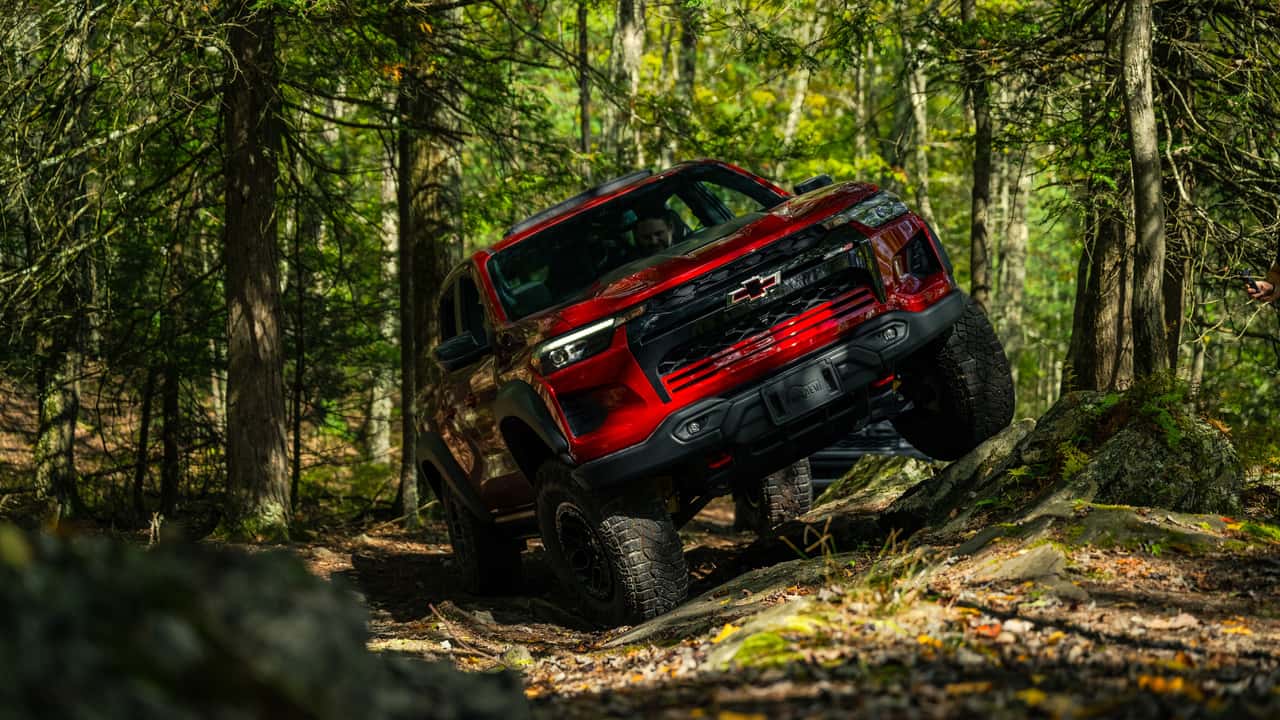
Andrew Link | Motor1
One of the best parts of NORA’s trails is what they call “Pucker Ridge,” an articulation test over rocks on the edge of—you guessed it—a ridge. Here, the Chevy asserts its dominance. Our trail guide immediately recognizes the potential and has me put my left front tire up a steep rock to make things even harder. You’ll hardly find a passenger vehicle that won’t lift a tire or two up over the rocks, and the Bison does, but traction isn’t an issue. Hold a constant throttle and the truck figures out how to get you up and over.
Yet, the ZR2 Bison doesn’t simply walk away here—the Toyota has a ton to offer, too. Over Pucker Ridge, we ran the Trailhunter twice, once with the sway bar connected and once with it disconnected. The first time, it struggled a bit, but with the rear differential locked and Toyota’s excellent traction control system figuring things out, it got over. Just not quite as gracefully as the Bison. With the front bar disconnected, however, it did even better. From outside, you can see the effect, and the Trailhunter looks quite noble coming back onto the main trail.
“The Tacoma is really easy to drive off road,” says Social Media Editor Maddox Kay. “Switching drive modes and enabling different off-road features in this is much more intuitive than it is in Colorado, where you have to tap around in more menus.”
| Colorado ZR2 Bison | Ranger Raptor | Tacoma Trailhunter | |
| Approach | 38.2° | 33° | 35.2° |
| Breakover | 26.9° | 26.4° | 26.4° |
| Departure | 26° | 24.2° | 24.2° |
| Ground Clearance | 12.2 Inches | 10.7 Inches | 11.0 Inches |
| Width | 80.1 Inches | 79.8 Inches | 79.9 Inches |
| Wheelbase | 131.0 Inches | 128.7 Inches | 131.9 Inches |
The Tacoma has a handy panel in the center console with buttons and toggles for 2-Hi, 4-Hi, and 4-Lo, plus all of Toyota’s excellent off-road systems. Multi-Terrain Select (MTS) optimizes traction for various surfaces, and Crawl Control—a low-speed, off-road cruise control. On paper, we thought the Toyota’s lack of a locking front differential would be an issue, but its clever software does such a good job of managing traction that we didn’t miss it. Sure, we had to use the rear locker from time to time, but the Trailhunter’s front sway bar disconnect helps improve articulation massively.
“The Colorado uses its muscle, its hardware, but the Toyota has all the tech to make it seem just as capable,” says Head Of Video Mike Roselli.
Of the three, it’s by far the easiest to get in and wheel. You can tell Toyota is going for something a little different here, prioritizing off-road comfort and stability over eking out the last little bits of capability.
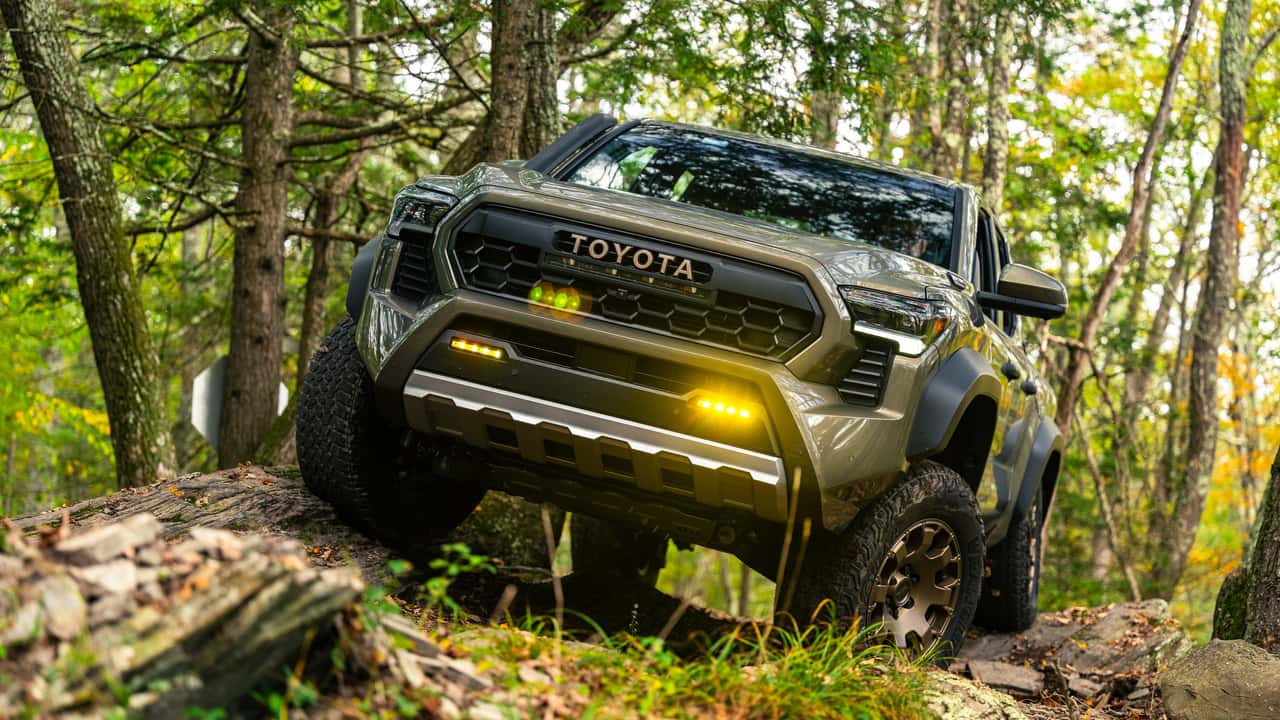
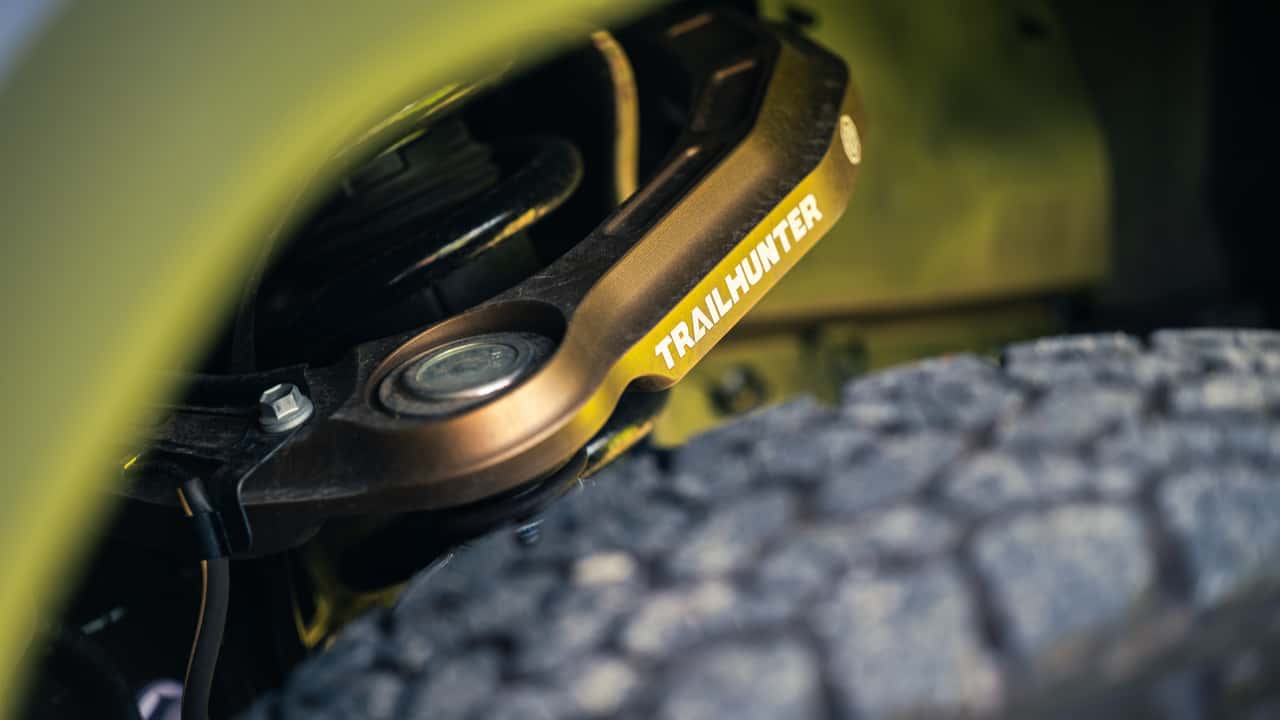
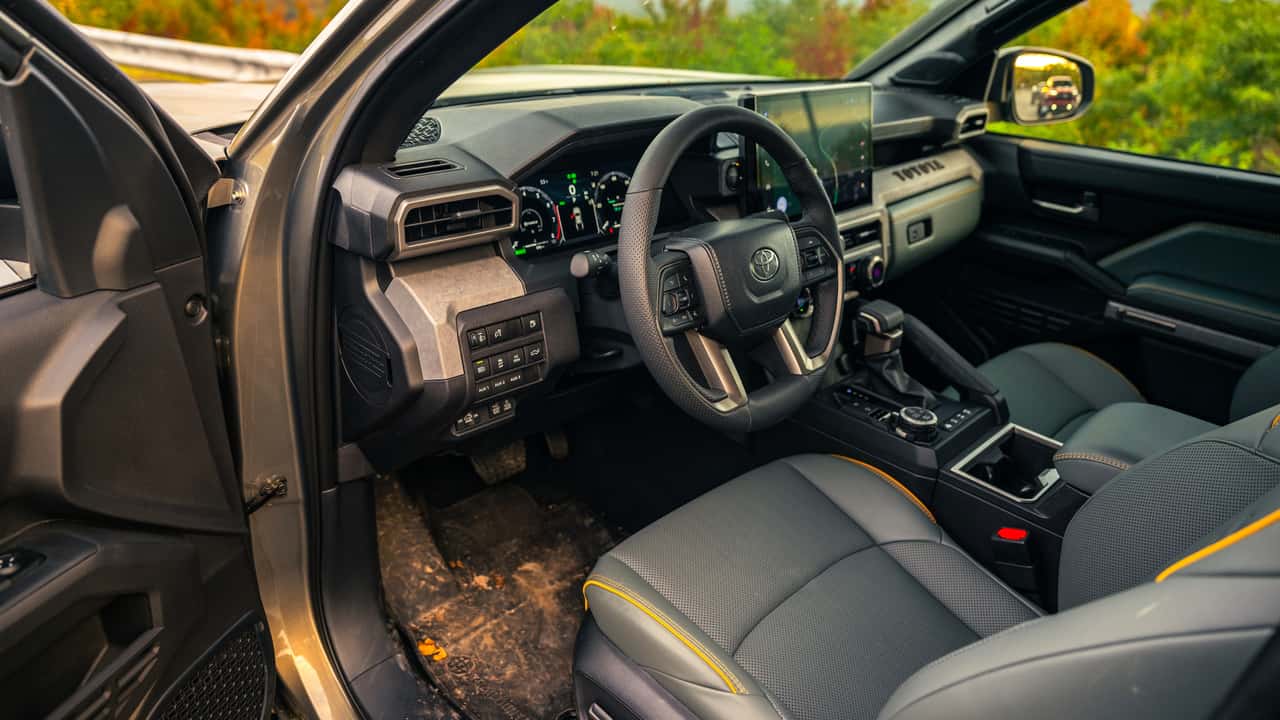
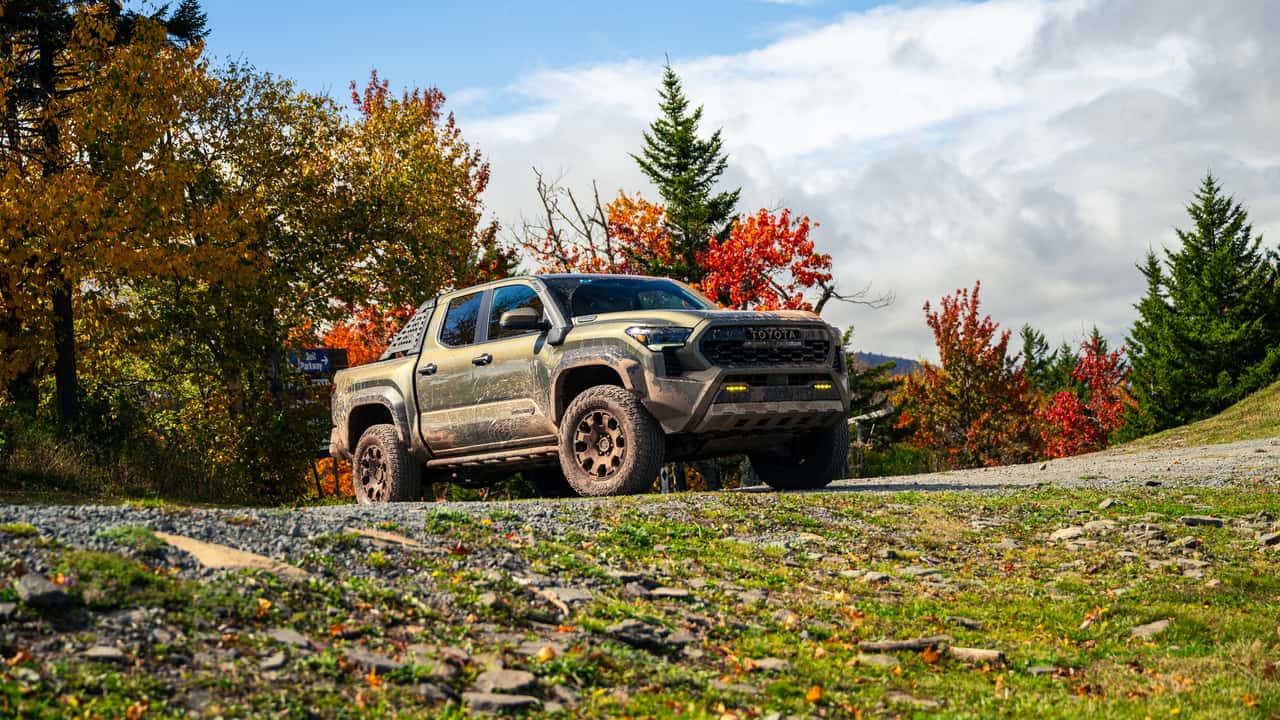
Andrew Link | Motor1
“To me, the Tacoma is for the person who wants to get to the trailhead, the person who wants to get to the off-the-grid campsite, or the really remote mountain biking trail. You’re off roading to somewhere with this,” says Kay. “Where the Colorado is for the person for whom off-roading is the activity in and of itself.”
This is also the only hybrid here, and Toyota’s done an excellent job of integrating its turbocharged 2.4-liter four-cylinder with an electric motor for near-instant torque all the time. The ZR2 is plenty torquey, with 410 pound-feet on tap, but the Trailhunter’s 465 pound-feet is available from an incredibly low 1,700 rpm. Toyota also has better cameras, which are easier to see on the Tacoma’s 14.0-inch center display, but the ZR2 might have the best camera view on any off-roader yet. There are front and rear cameras with their own built-in washer on the center differential, allowing an informative view of what’s going on underneath the truck, not around it. Everyone else needs to have this, like yesterday.
The Tacoma is really easy to drive off road.
I almost feel a little bad for the Ford in this particular test. Over Pucker Ridge, we needed to use both front and rear differential locks to get it over the obstacles, and later, it was the only truck we (I) got stuck. Admittedly, it was a very challenging bit. There’s a big mud splash, which we all hit at a decent speed for maximum drama, and then a steep uphill after the fact. You need to take a wide line up a right-hand bend with some speed to make it up the hill. I was up last, which meant that the hill was very slick. I took too tight a line up the hill and packed the tires with mud.
The only thing that does the trick is airing down the tires, and once we do, I get positioned and make it up the hill. It wasn’t too tough. Our instructor at NORA says it’s about half my fault, half the truck’s fault.
“I think that the Ford was the hardest to drive,” says Roselli. “It was very skittish and it wasn’t intuitive.”

Andrew Link | Motor1
This thing does trail work well enough—it’s got the right approach and departure angles, good 33-inch tires, and a suite of off-roading traction systems plus locking diffs, but we had to use those diffs a lot. And eventually, we had to air down to get up a particularly muddy hill. Unlike the other two, the Raptor lacks real rock rails, too. Instead, you get some pretty tough metal sideboards, but these will scuff and scrape against rocks often. The user experience is the worst here too, with lots of controls relegated to the touch screen, including the two differential locks.
Still, there’s a lot to like. The throttle mapping is excellent, and it’s easy to drive this truck precisely at low speeds. Plus, the low-speed off-road cruise control system works very well and operates at higher speeds than Toyota’s Crawl Control. We liked the V-6, too, which sounds a hell of a lot nicer than its competitors’ four-cylinders, but the transmission came in for mixed reviews.
The Ford was the hardest to drive. It was very skittish and it wasn’t intuitive.
The Ranger has 10 speeds to the Chevy and Toyota’s eight. Super short gearing plus low range means you can do steep descents in 2nd or even 3rd without touching the brake pedal. But, the 1-2 upshift is almost always abrupt in the Ford, while it’s very well smoothed over in the others. Better to use manual mode.
In Ford’s defense, the Ranger Raptor is not a rock crawler. But you also can’t help but wonder why Ford hasn’t done something similar to Chevy and Toyota, partnering with an upfitter for some steel bumpers, underbody armor, and other goodies. It can’t be too expensive to develop, and like Chevy and Toyota, Ford could charge well over $60,000 for the truck. The Raptor would provide a great platform to build upon to reach even more off-roaders, many of whom don’t live within reasonable driving distance of a desert.
As much as the Catskills are an outdoor-activity paradise, it’s actually sports-car country too. You’ll find some of New York state’s better twisty roads up here, winding along rivers and up the mountains, so handling matters. Here, the Raptor quickly starts to earn back points, with its fun, sport-truck vibe.
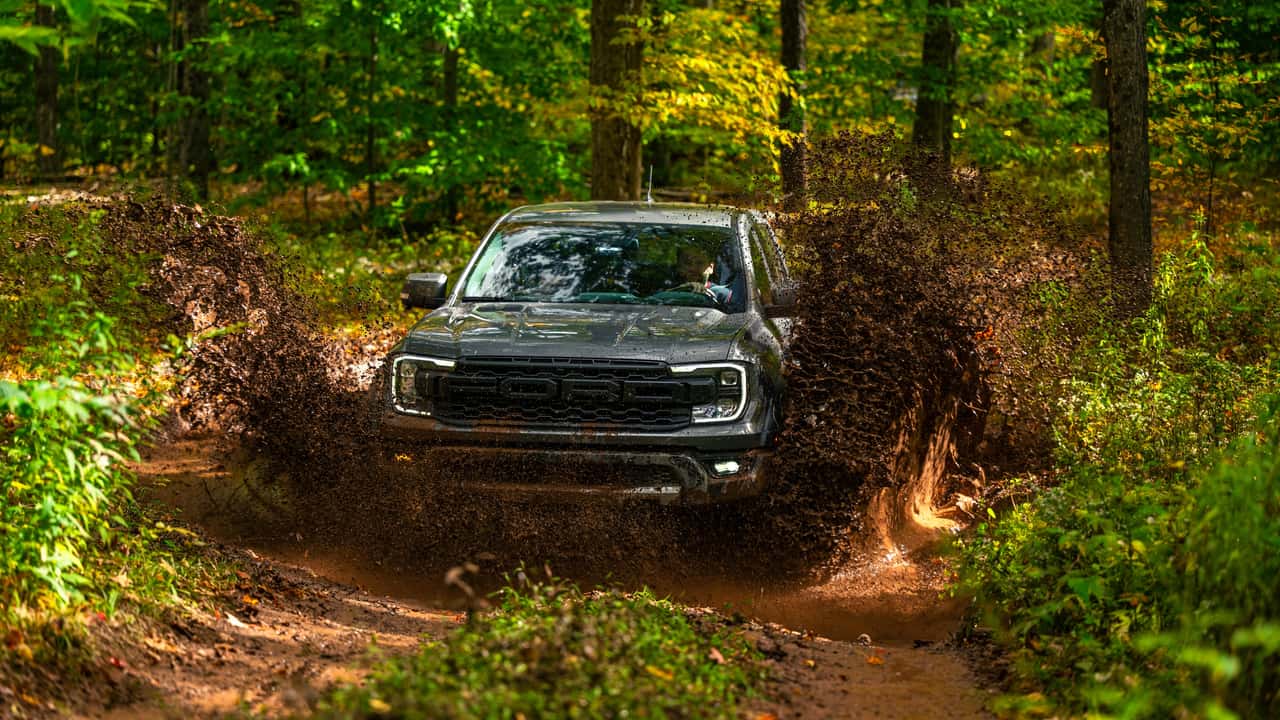

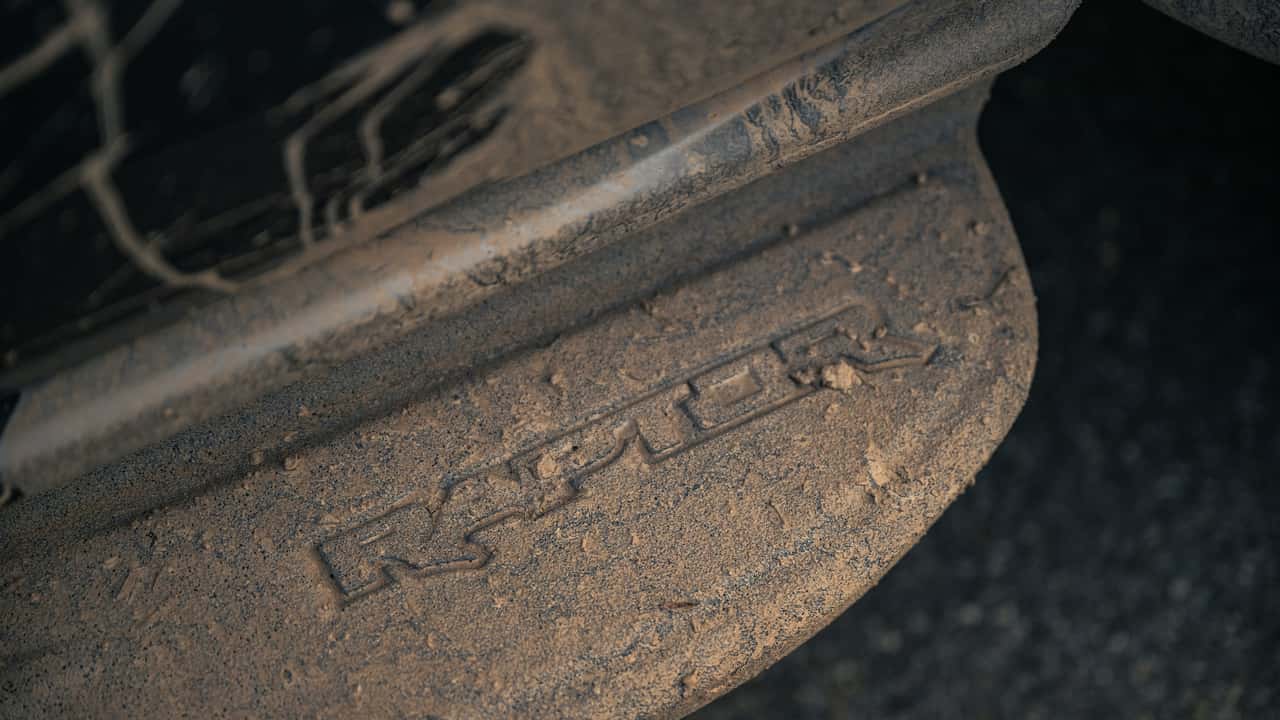
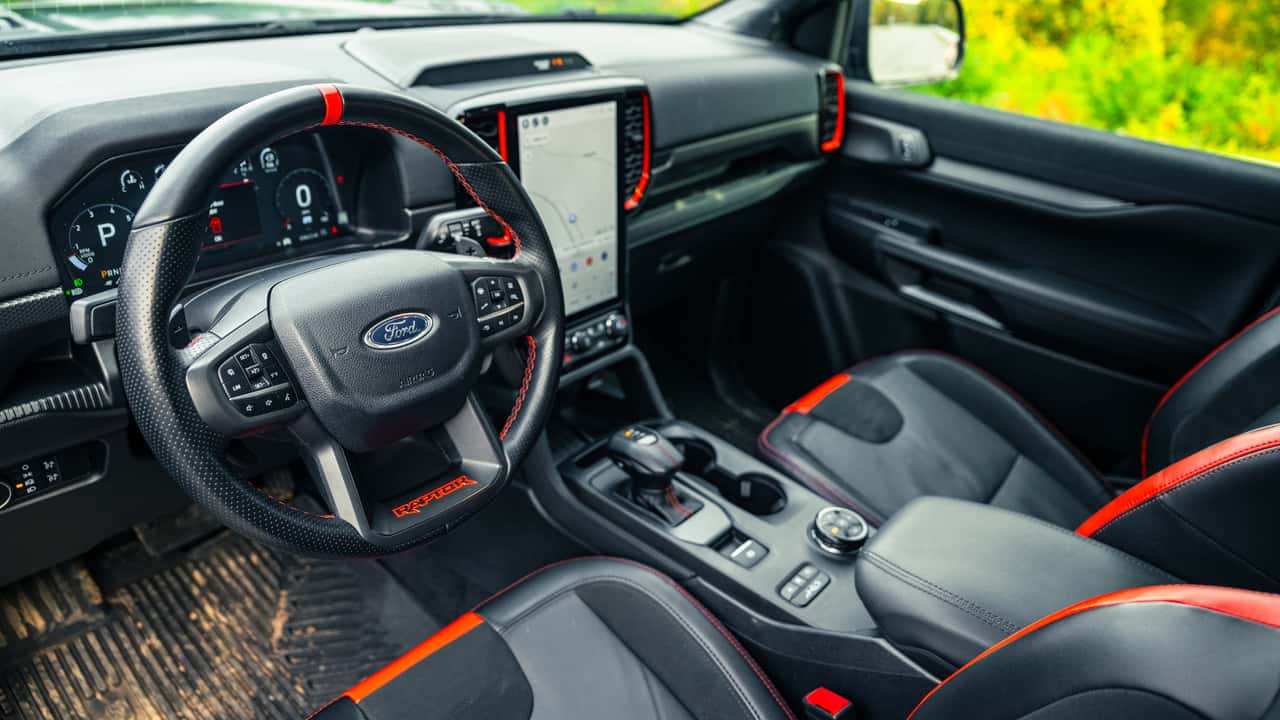
Andrew Link | Motor1
You get the typical soft ride we’ve come to love in other Raptors, plus some neat toys like paddle shifters, and adjustable steering, exhaust, and Fox Live Valve dampers. It’s actually quite a lot of fun to hustle this thing up a mountain road, and it’s surprisingly quick, too. I could see people buying it for this reason alone.
This is also the most subtle Raptor yet, and while most Raptor buyers might want more bombast, I think it has a lot of appeal as is. Other than the 33s, the letters “FORD” replacing the blue oval on the grille, and a couple of decals, it doesn’t look all that crazy. If you want the capability, but not the attention, finally, there’s a Raptor for you.
Out on the trails, it doesn’t take long to realize the ZR2 Bison is easily the most capable.
The Raptor’s lower hood means it has the best visibility of the trio, and everyone loved its cushy, yet well-bolstered seats and big metal shift paddles. Still, it feels the cheapest of the three on the inside, and the noisiest, with the most tire roar and exhaust drone.
Meanwhile, the Toyota’s interior is hard to fault in terms of quality or ease of use, though Roselli did chafe at its busy design, and noted that it has by far the smallest back seat of the three. You’ll struggle to get a child seat back there.
It also has the firmest ride on the road of the three, but I think that’s because Toyota is aiming this at overlanders who are going to load up the bed with hundreds of pounds of gear. Unladen, though, it’s pretty stiff, but like all the new Tacoma models, it handles surprisingly well. It has the lightest, quickest steering, which helps make it feel a bit more car-like, and the powertrain is the best here.
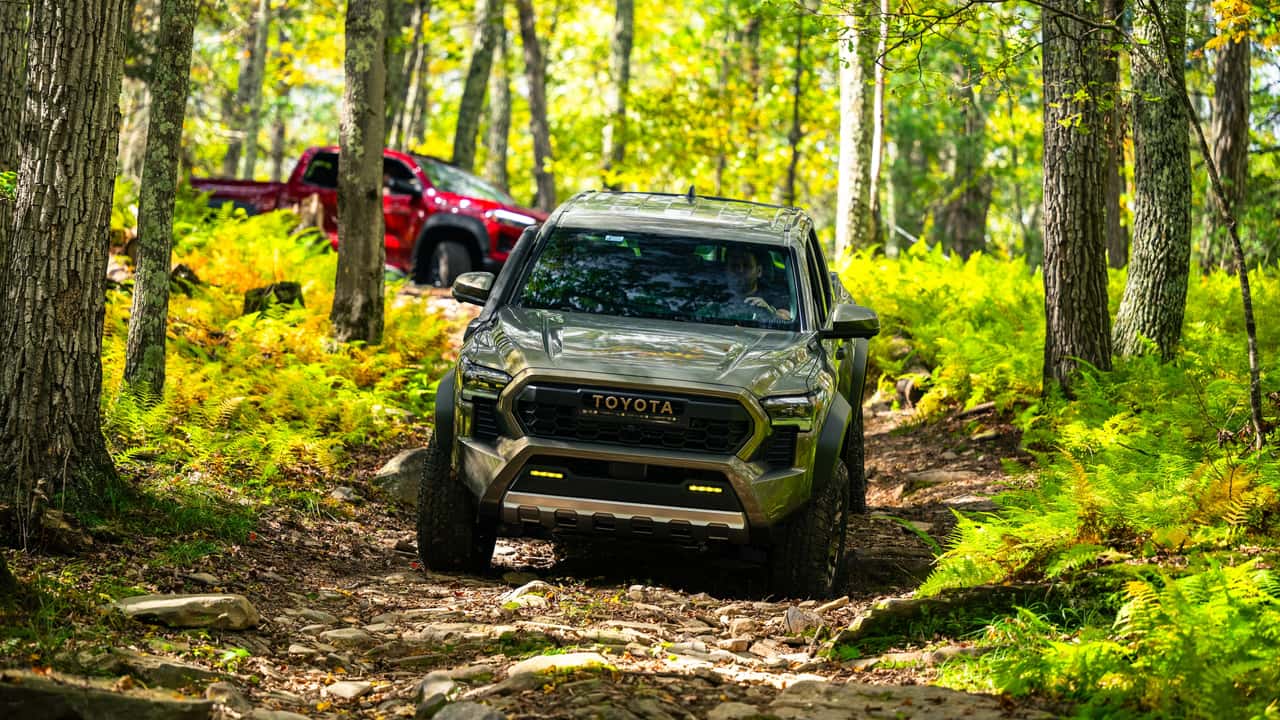
Andrew Link | Motor1
There’s just so much torque available instantaneously, you hardly stress the engine. On a two-mile run up a hill on a 55-mph road, I never revved the Toyota beyond 2,000 rpm. Plus, you get goofy turbo wooshes and blow-off valve chirps from the snorkel, which are comically loud with the window down. The center screen is maybe a bit too big, dominating the dashboard, but the infotainment system is brilliantly simple. The only tricky thing here is configuring the digital gauge cluster, which takes a few minutes of futzing around to figure out.
“If you need to fit a baby seat back there, that might be a dealbreaker,” says Kay of the Toyota, “but it also has all these small livability wins. The interior other than that back seat is great.”
While we all felt the Chevy was a little too reliant on its touchscreen, overall, it has a great interior. It feels just as high-quality as the Toyota’s, and it too has an easily operable infotainment system, complete with Google Maps and Waze built right in. (And GM products still have Apple CarPlay and Android Auto.) Visibility is tough, though, as the hood is tall and the 35-inch spare blocks almost the entire rear window. Infuriatingly, GM offers a wonderful rear-view camera system on other cars, but not this, the one that needs it most.
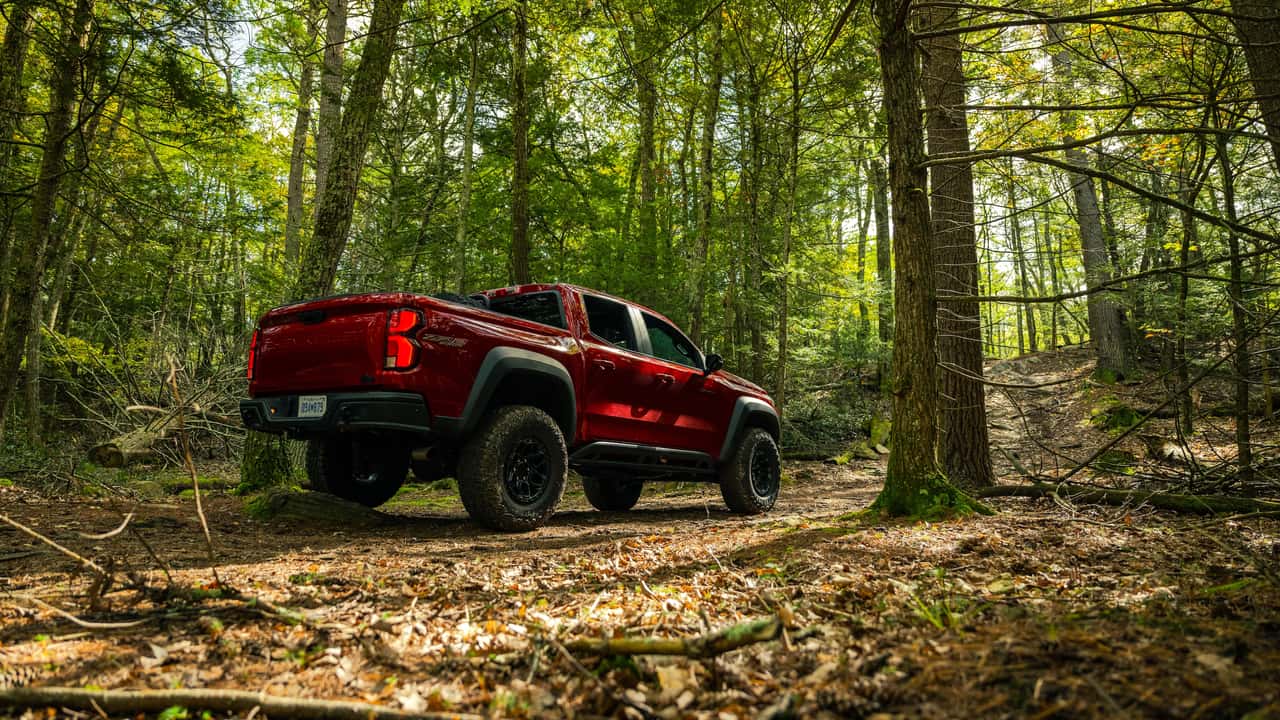
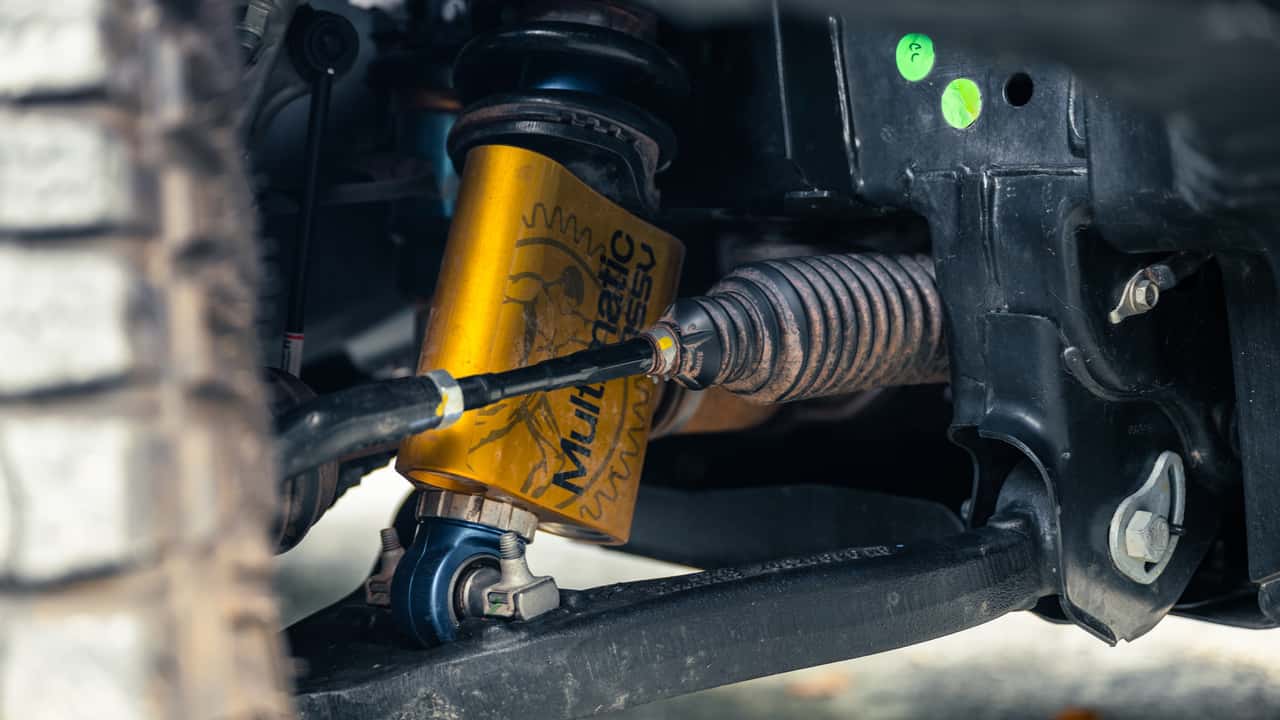

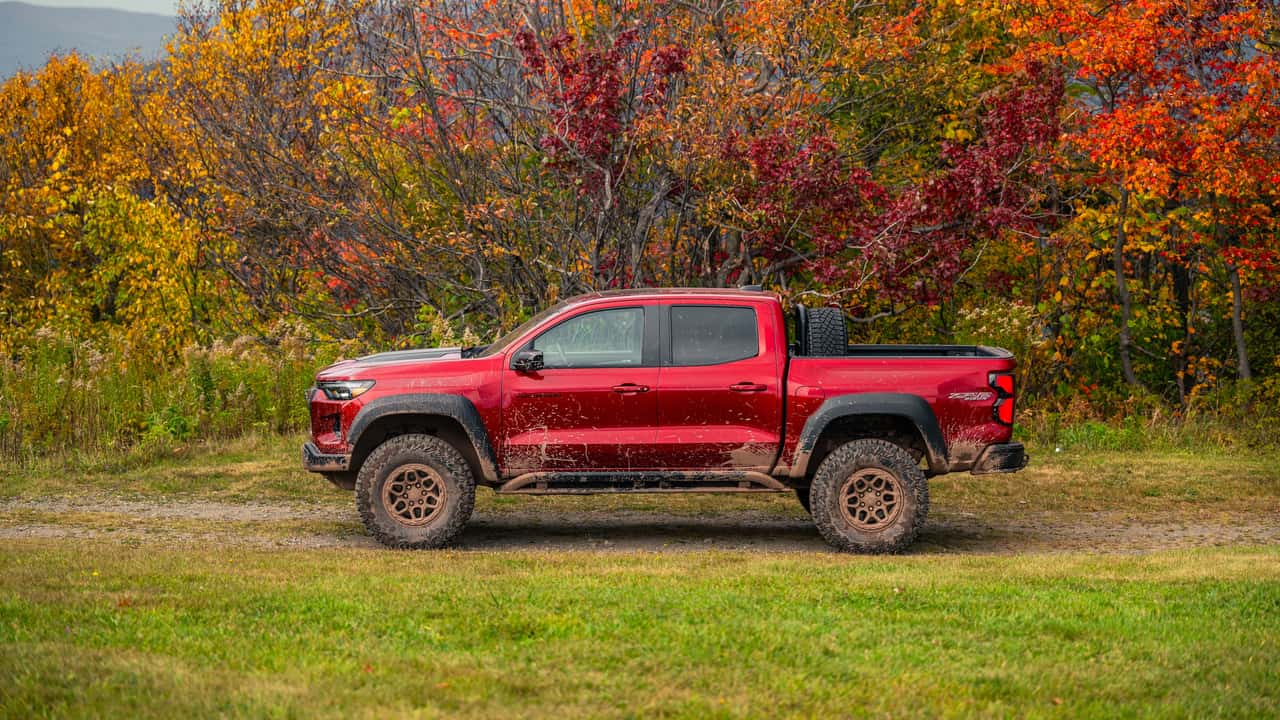
Andrew Link | Motor1
In a vacuum, the 2.7-liter four-cylinder and eight-speed automatic are good, but up against the Toyota and Ford, it lacks oomph and responsiveness. Yet, that’s the only problem with the way the Bison drives. Despite big, heavy 35s, the Bison has freakishly good ride and handling. Thank that fancy Multimatic suspension, which makes this pickup feel like… not a pickup.
The suspension has always been the party piece of the ZR2. Multimatic usually supplies these dampers to high-end performance and race cars, and they work genuine magic here. If this only had the powertrain responses of the Raptor or Trailhunter, we could say definitively that this is the best on the road.
The Chevy is shockingly quiet, too, with way less wind and tire noise than you’d expect. But, it lacks the advanced driver-assist features of the Toyota and Ford, both of which augment adaptive cruise control with steering assistance on the highway.
Though this is an off-road test, it still really matters how these trucks perform on road. That’s where they’ll spend most time, and for many buyers, these will be daily drivers. Practicality and livability are a big deal, and there’s no clear winner on the road. The Ranger has a sense of fun on pavement that the other two lack, plus a generally practical interior and a nice bed; The Toyota is probably the most practical overall, and it has the best powertrain for driving on road, yet the tiny rear seats are a huge drawback; The Chevy has the best ride and handling by far, and a nice interior, though you can’t ignore the huge spare tire in the bed, nor the comparative lack of grunt.
“There’s always little things that’ll piss somebody off about each one of these,” Associate Editor Anthony Alaniz says, neatly summing things up.
Off-road it’s easier to separate the three. At Hunter Mountain, there wasn’t a ton more to learn compared with the previous day on NORA’s trails—other than the fact that they all do good mud splashes—but the place did provide us an opportunity to reflect on the trio. (And, take more pretty pictures.)
The sheer brawn of the ZR2 Bison is hard not to love. It’s probably the most enthusiast-aimed off-roader here with the best hardware and a good traction-control system to make the most of it.
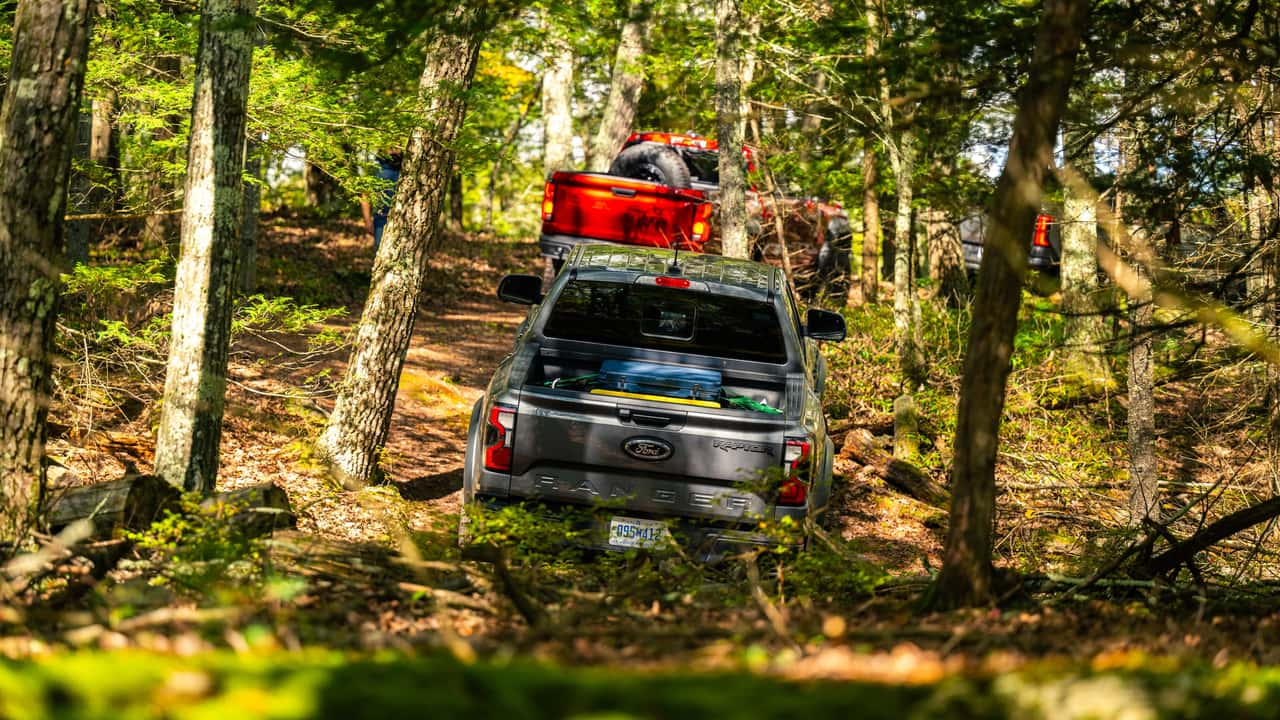
Andrew Link | Motor1
There’s a ton to like about the Toyota, too, and it feels precisely targeted at a specific buyer. This is the truck for the couple who loves to get out in nature, and simply wants the best tool for the job. It’s sort of what the Tacoma long has been, just with the capability ramped way up and a superb hybrid powertrain.
And even though the Ford was outmatched here in many ways, it’s still a deeply charming vehicle. It exists somewhere on the spectrum between the original F-150 Lightning and the other Raptors. And in terms of sheer practicality, it’s probably the best of this bunch, though Roselli prefers the extra lights, cubbies, and cameras in the Tacoma’s bed.
Each has its own use case, and each will appeal to different sorts of buyers. So, it’s futile to declare an overall winner. Myself and Roselli love the ZR2 for its absolute capability off and on road. Kay and Alaniz love the Toyota for its ease of use, and because it’s the truck best suited for facilitating outdoor adventures. And I still like the Ford as a street truck that can still handle itself off-road.
Even though they’re all around the same size, and cost within $5,000 of each other, these are remarkably different vehicles. If you’re in the market, you’ll have to weigh what’s important to you, and how you’ll use the rig.
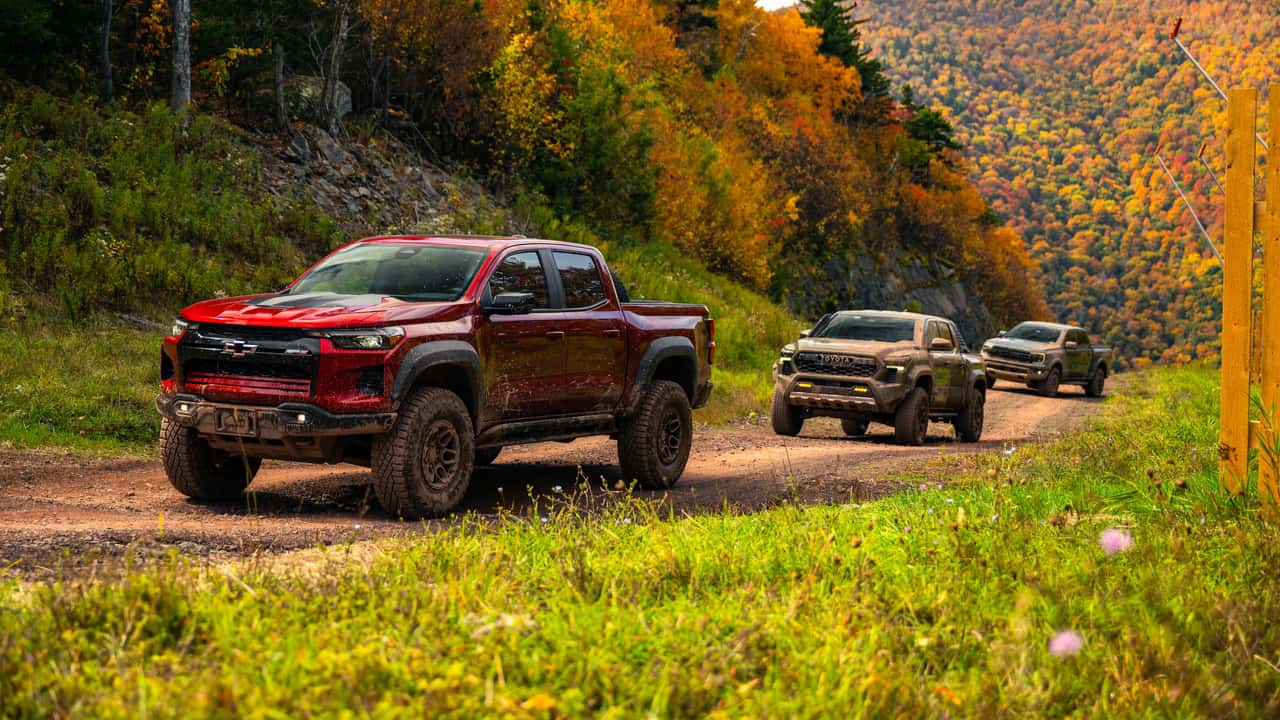
Andrew Link | Motor1
Admittedly, we could’ve done all of this with “lesser” versions of these trucks—a Tacoma TRD Off-Road, a Ranger Tremor, and a Colorado Trail Boss. But how could you not want one of these? There’s an undeniable cool about all of them—Roselli, the most avid off-roader and gear enthusiast of the group, has a shit-eating grin for the entire two days. These appeal to our innate desire to want the very best, even if its capabilities far exceed our own.
Where once this segment was nonexistent, now, mid-size off-road pickup buyers are spoiled for choice. And that’s a very good thing.
More Off-Road Adventures
It’s a Jeep Thing, and I Seek to Understand
The 2024 Lexus GX Kicks Ass
Get the best news, reviews, columns, and more delivered straight to your inbox, daily.
Sign up For more information, read our
Privacy Policy and Terms of Use.
27 Oct, 2024 | Admin | No Comments
The Vanquish and Its V-12 Will Save Aston Martin: First Drive Review
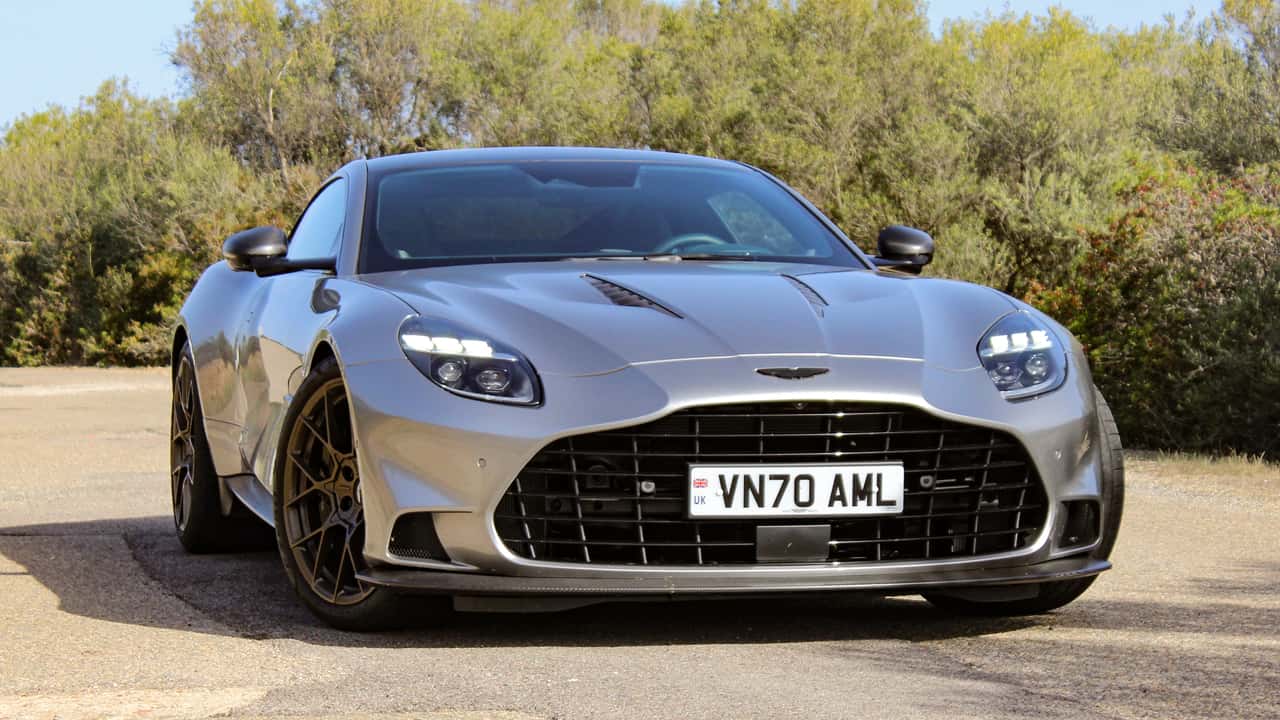

Aston Martin is in desperate need of a flagship. The DB12 and the Vantage are great cars with lots of style, but they don’t exactly have the same vibes as Astons past. Their borrowed V-8 engines aren’t nearly as awe-inspiring as Aston’s iconic V-12s. Enter the new Vanquish.
The Vanquish you see here isn’t the mid-engine, V-6 hybrid-powered marvel promised by Aston in 2019, but rather, a front-engine two-seater powered by a twin-turbo V-12 designed in-house, complete with striking carbon-fiber bodywork, and gobs of speed and grip. On paper, it sounds like a fitting bearer of the Vanquish name. And after a brief first test, it’s clear this car is worthy of sitting at the top of Aston Martin’s lineup.
| Quick Specs | 2025 Aston Martin Vanquish |
| Engine | Twin-Turbocharged 5.2-Liter V-12 |
| Transmission | Eight-Speed Automatic |
| Output | 820 Horsepower / 783 Pound-Feet |
| 0-60 MPH | 3.2 Seconds |
| Base Price / As-Tested Price | $429,000 / $549,600 |
When the last Vanquish exited the market in 2019, it cost $296,475. This new one costs $123,000 more—or an entire Porsche 911 on top of the old car. Thankfully, that money has gone to useful places. Just because Aston gave up on developing the mid-engine Vanquish doesn’t mean it half-assed this one. Every inch of the car is changed in some way.
The front-rear drivetrain layout doesn’t change in the transformation from DB12 to Vanquish, but the wheelbase increases by 3.1 inches—between the front axle and A-pillars—to fit the bigger engine and allow designers to resculpt the car’s lines. There are a handful of distinctions that make the Vanquish stand out amongst the lineup—the grille is the largest of any Aston, the carbon side plates allow air to vent from the fenders, and there are hood vents to promote clean airflow on top of the car. The louvers inside those vents are borrowed from the design found on Aston’s F1 car, according to head designer Marek Reichman.
The biggest visual change comes at the rear, where Aston’s incorporated a Kamm tail-like flat face the company describes as “ruthlessly abrupt.” The design incorporates upright, slatted tail lights into either end, giving the Vanquish a uniquely purposeful, racy vibe over its lesser siblings. Don’t like the clashing carbon fiber? The panel can be painted in matching body color, if you prefer.
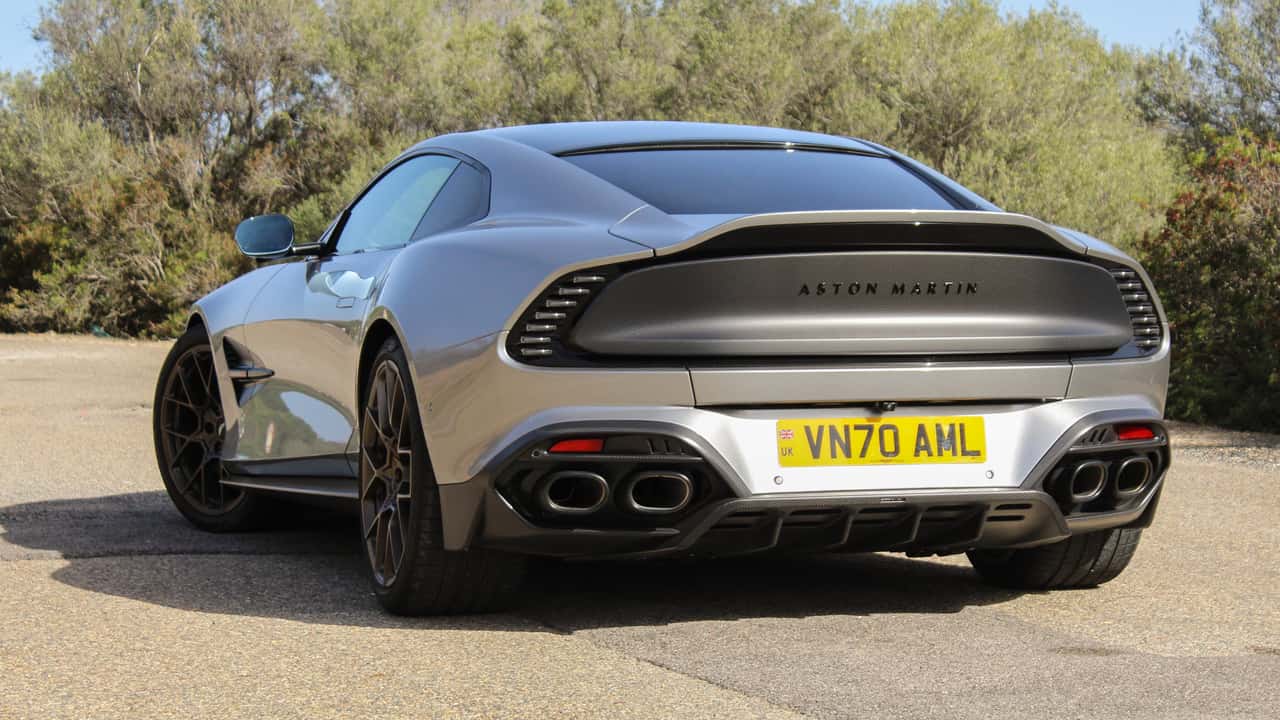
Brian Silvestro / Motor1
Pros: Exquisite Design, Triumphant V-12 Engine, Exceptional Handling For A Two-Ton Car
Despite all the obvious changes, we suspect only eagle-eyed enthusiasts will be able to spot a Vanquish right away. Sadly, the average onlooker will likely be challenged to tell it apart from the Vantage or the DB12, especially from a distance. That’s the price of a shared front-engine layout and corporate grille shape.
Nonetheless, the Vanquish is a beautiful machine. It’s physically imposing and very long, poised and elegant without ever coming off as brash or ostentatious—something only an Aston Martin could pull off.
It’s much easier to identify a Vanquish through the sound of its exhaust. Aston says the 5.2-liter twin-turbo V-12 is essentially all-new, sharing only dimensions with the outgoing design found in the DBS Superleggera. The block is new, as are all of the internals. The turbos are actually smaller than before, to promote response and reduce lag. Despite restrictive exhausts and ever-tightening regulations in the EU, Aston Martin somehow managed to squeeze gargantuan numbers from this thing: 820 horsepower and 738 pound-feet of torque.
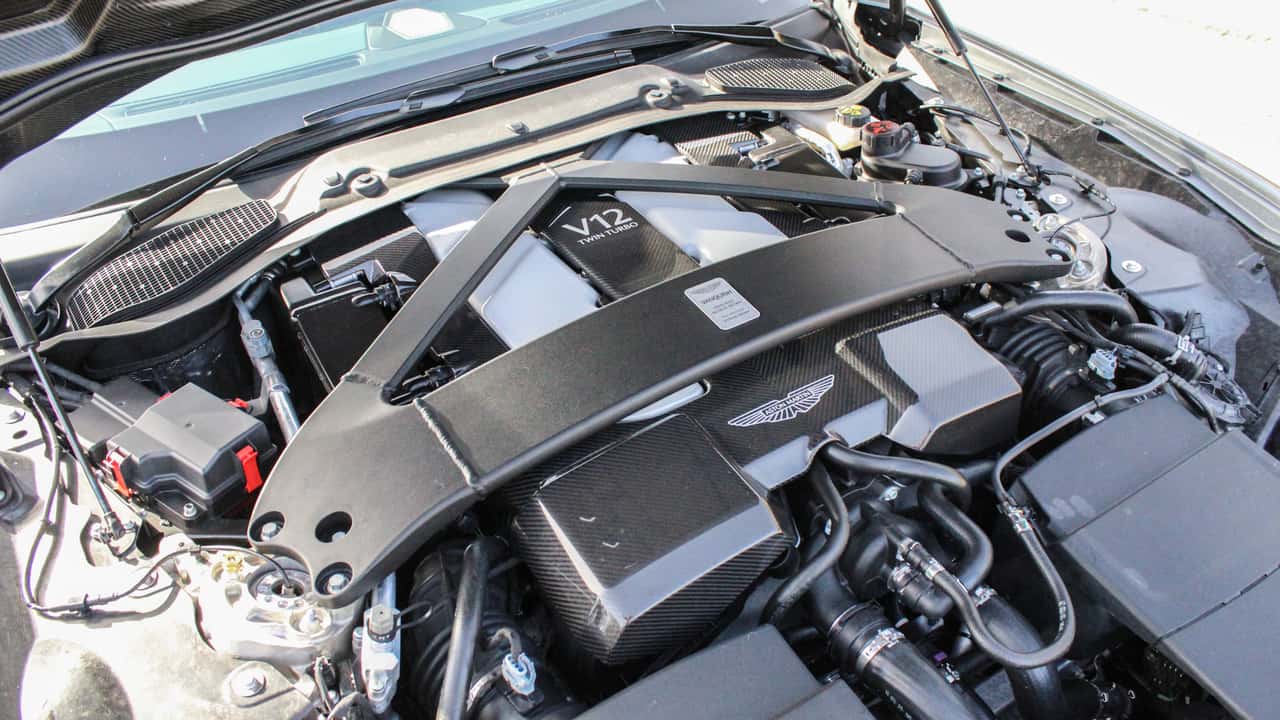
Brian Silvestro / Motor1
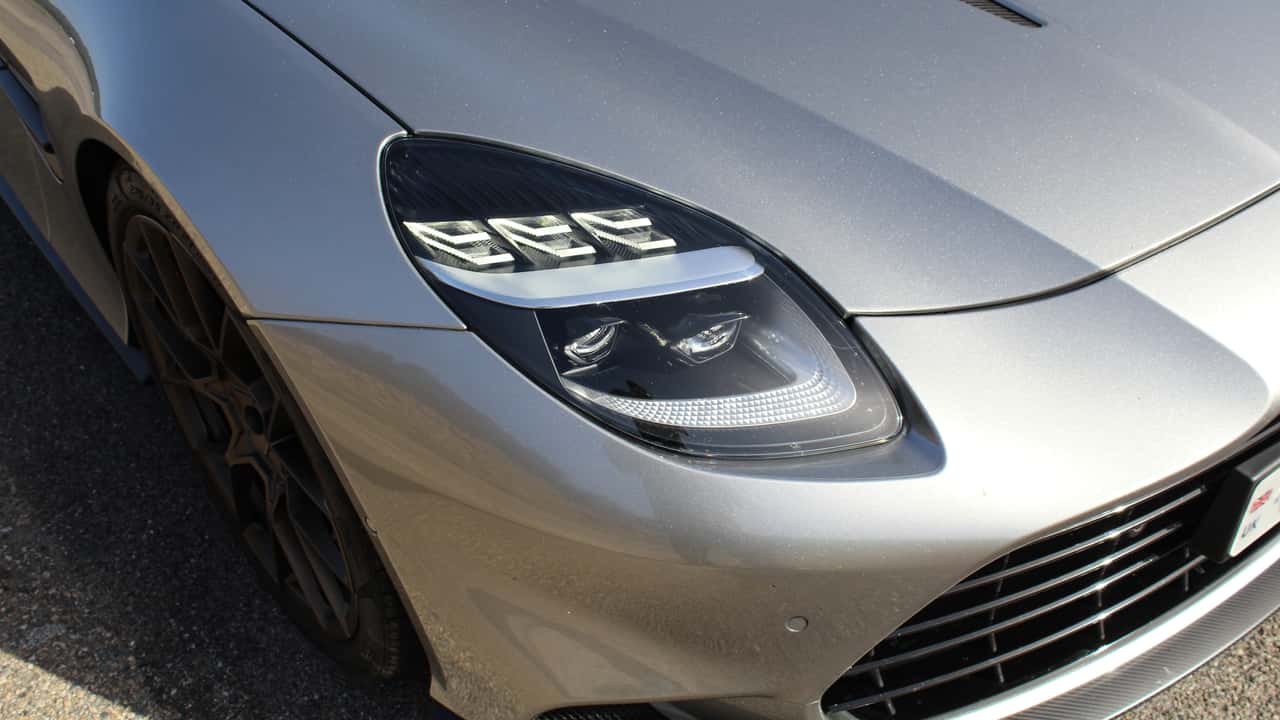
Brian Silvestro / Motor1
The new Vanquish is stupidly quick as a result. We only got a few hours of driving, mostly on a collection of tight mountain roads on the island of Sardinia. Regardless of the relatively long 2.93 final drive ratio—in place to reach a top speed of 214 miles per hour—the engine had no trouble responding to quick, varied throttle inputs between and through small radius corners. The few big, open sections of roadway seemed to disappear in an instant, the V-12 delivering dump trucks of torque and power from idle all the way to its 7,000-rpm redline. We don’t doubt that top-speed claim for a second.
Unleashing over 800 hp to the rear wheels sounds like a recipe for unlimited tire smoke, but Aston implemented a torque-by-gear system that bends the torque curve depending on the drive mode and current gear. This way the Vanquish doesn’t immediately melt the rear tires to bits if you slam down on the throttle at low speeds. Switching between the default GT and Sport modes highlights the differences, with a smoother, more linear ramp-up in the softer mode versus the sportier settings. It makes the car far more approachable, especially if you’re not used to something with this much raw power.
The only thing more satisfying than the immense power delivery is the engine’s excellent soundtrack. Any V-12 is a special thing, but this one surprised with its particularly sonorous note, considering the turbos, and particulate filters necessary for EU regulations. Sure, Aston’s V-8s sound great too, but they can’t ever hope to match the noise from these pipes. This sound elevates the Vanquish in a way no design cue or power number can. In a growing sea of twin-turbo V-8 performance cars, the V-12 makes the Vanquish a truly exceptional thing.
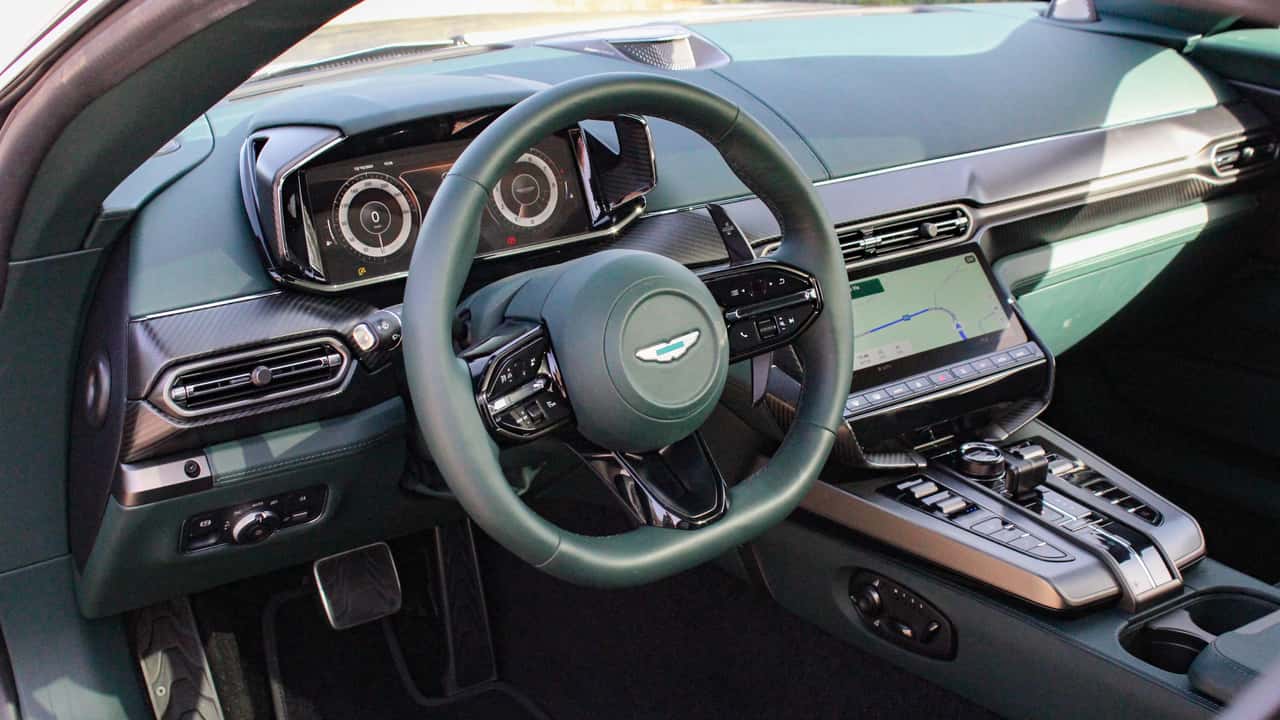
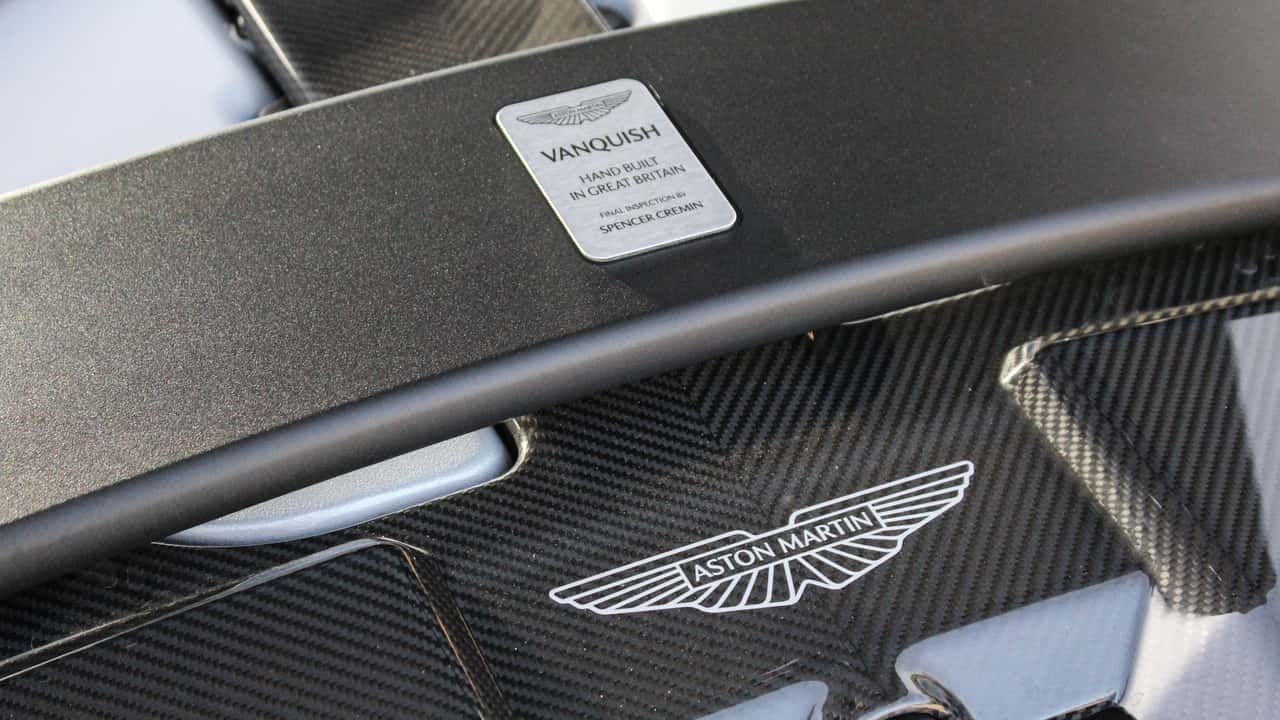
Brian Silvestro / Motor1
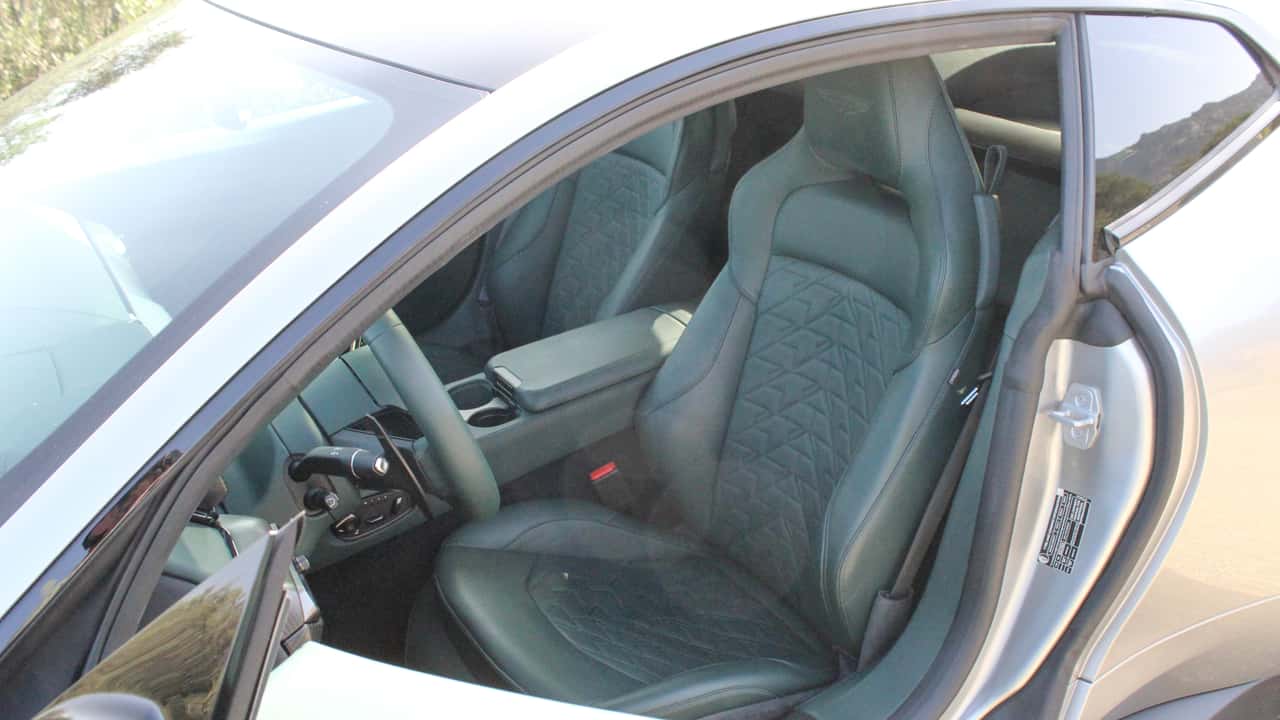
Brian Silvestro / Motor1
This grand tourer can handle corners, too. Aston managed to keep weight distribution fairly centered despite the bigger engine, at 50.6 percent front to 49.4 percent rear. While that’s not as good as a DB12, it’s enough to extract real joy through twisty sections of tarmac. Where some competitors strive for ultimate lightness, the Vanquish’s steering has a pleasant heft to it, making it easy to dial in the front end. There’s a nice agility to the rear, too, thanks to an electronic limited-slip differential allocating torque to the outside wheel to promote rotation. It all happens fairly naturally, too, so it doesn’t feel like the computers are doing all the work.
Head to head, the smaller Vantage is probably a bit nicer to drive thanks to its lighter nose and shorter wheelbase. But it’d be tough to notice any real difference unless you drove them back to back. All things equal, I’d rather have the Vanquish. It just feels way more special thanks to that V-12.
Instead of developing a new dual-clutch to match the Vanquish’s closest competitor, the Ferrari 12Cilindri, Aston went with a version of ZF’s venerable eight-speed automatic. It’s a great transmission, snapping off shifts on demand from the steering wheel-mounted paddles as quickly as something like a BMW M3. But it’s missing that last layer of sharpness you’d expect from a car at this level. In most scenarios, it’s just as good as a DCT from Ferrari or Porsche, but every so often, it’ll deny a shift or deliver a cog change a fraction of a second slower than you expect.
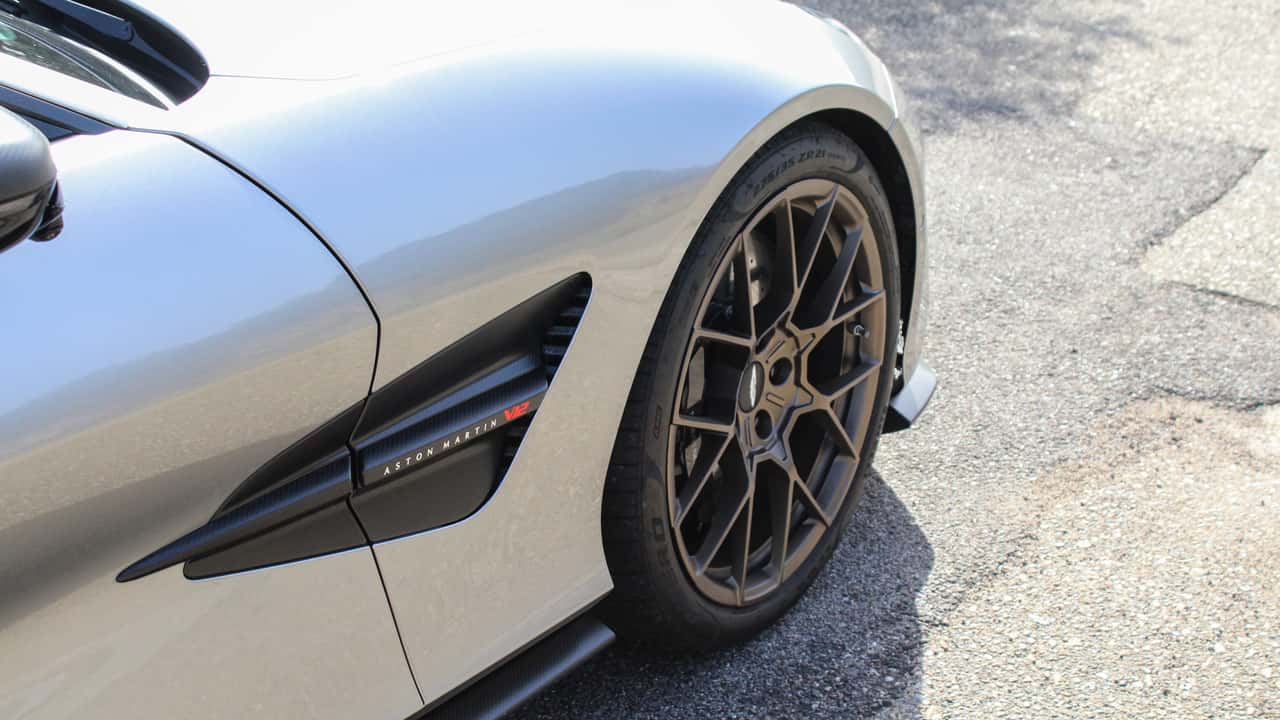
Brian Silvestro / Motor1
Cons: Transmission Can’t Keep Up With Dual-Clutch Competitors, Some Switchgear Feels Cheap
The cabin, too, is mostly superb. It’s a gigantic leap forward from the last-gen, with a premium design language and lots of nice materials. Finally, the Vanquish is a flagship Aston that doesn’t feel like a parts-bin special on the inside. Still, some of the steering wheel controls feel cheap and flimsy. Better than a DBS, yes, but still not as good as the inside of a Bentley Continental GT.
Buyers probably won’t care, though. They likely have a Conti (or three) already, and just want something more special to add to their collection. The Vanquish fills that niche perfectly, leaning further into the sports-car side of things than the Bentley while delivering a sound few cars can match.
A starting price of $429,000 for any front-engine Aston sounds ridiculous, but to the people lining up to buy them, the price doesn’t matter. They’re paying for the exclusivity—Aston plans to limit production to 1,000 units per year—the looks, the noise, and the clout. The lovely driving experience is just the cherry on top.
Competitors
Bentley Continental GT Speed
Ferrari 12Cilindri
Maserati GranTurismo Trofeo
More From Aston Martin
First Drive: The Valour Is Proof Aston Martin Can Still Make a Perfect Car
Aston Martin Knows People Want Manual Transmissions
Get the best news, reviews, columns, and more delivered straight to your inbox, daily.
Sign up For more information, read our
Privacy Policy and Terms of Use.
| 2025 Aston Martin | |
| Engine | 5.2-Liter Twin-Turbo V-12 |
| Output | 820 Horsepower / 783 Pound-Feet |
| Transmission | Eight-Speed Automatic |
| Drive Type | Rear-Wheel Drive |
| Speed 0-60 MPH | 3.2 Seconds (mfr.) |
| Maximum speed | 214 MPH (mfr.) |
| Weight | 3,911 Pounds Dry (mfr.) |
| Efficiency | 14 City / 22 Highway / 17 Combined (est.) |
| Seating Capacity | 2 |
| Cargo Volume | 8.8 Cubic Feet |
| On Sale | 2025 |
| Base Price | $429,000 |
| As-Tested Price | $549,600 |
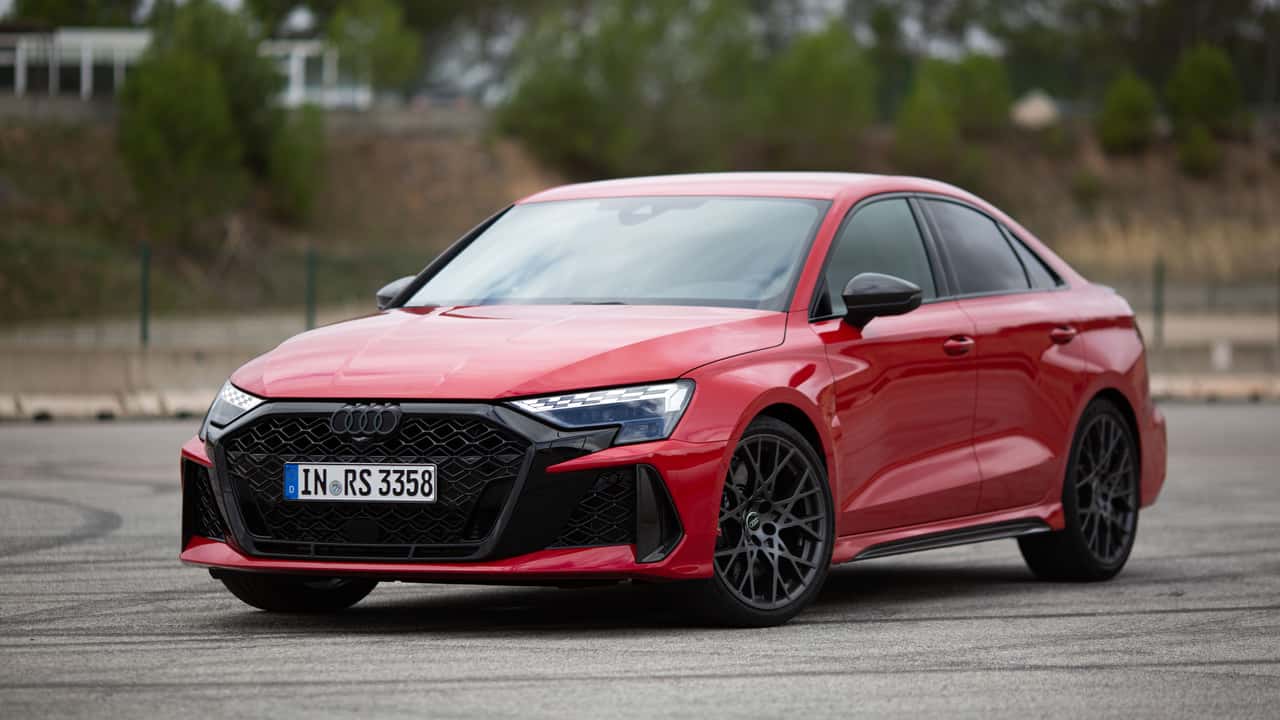
All it took was a young, hungry Austrian engineer by the name of Ferdinand Karl Piëch to think, “An inline-four runs a bit too rough” and “Well, an inline-six is a bit too long” for the odd but lovable inline-five to first exist, then become the defining engine layout for Audi.
Well, Piëch was also a grandson of Ferdinand Porsche and heir to the Volkswagen empire, so nobody could say ‘no’ to an idea like that one, or any other idea for that matter. Take the impossible Volkswagen Phaeton, Bugatti Veyron, Porsche 917, and Audi Quattro as examples. Dieselgate too.
Long after Piech’s departure, his influence remains. The facelifted Audi RS3 has an inline-five in 2025, that lovely little off-beat engine called the 07K.
| Quick Specs | 2025 Audi RS3 |
| Engine | Turbocharged 2.5-Liter Inline-Five |
| Output | 401 Horsepower / 369 Pound-Feet |
| 0-60 MPH | 3.6 Seconds (est.) |
| Price / As Tested | TBA |
Unfortunately, power hasn’t increased for 2025—but we should be thankful that 07K still exists at all. The turbocharged 2.5-liter engine still makes 401 horsepower and 369 pound-feet of torque, still paired to a seven-speed dual-clutch transmission and standard Quattro all-wheel drive. With ever-constricting emissions regulations, Audi found other ways to sharpen the RS3.
The changes are subtle but significant. Audi spent considerable time giving the RS3 a calibration overhaul for the adaptive dampers, electronically controlled rear differential, brake vectoring, and steering. Pair that with brand-new Pirelli P Zero R tires (with the same stagger that places a 265-millimeter wide tire on the front axle and a 245-millimeter tire on the rear), and these changes redefine the RS3 driving experience.
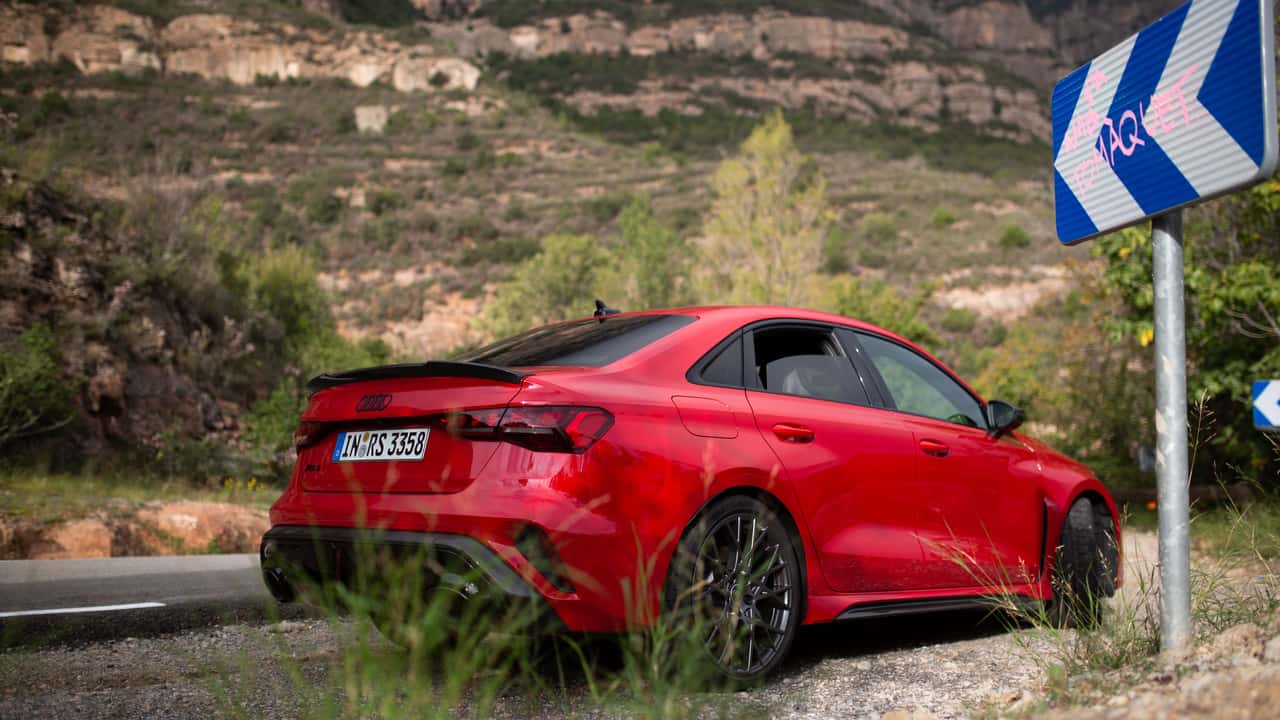
Chris Rosales / Motor1
Specific focus was placed on the rear differential and brake vectoring, both of which have a powerful effect on handling balance through every stage of the corner. A quick breakdown just to get your bearings on the RS3’s all-wheel drive: The RS3 can send 50 percent of its power to the rear axle. From there, the electronic rear differential can send 100 percent of that power to either wheel. Audi has retuned this program to favor more stability, especially to promote confidence on corner entry.
The rear diff is a trick unit on its own. It’s a locked differential with a clutch pack at each axle output. The clutch packs are controlled by worm gears instead of hydraulics—an odd choice, but effective. This setup allows the RS3 to send its torque quickly to wherever it’s needed. Coupled with a more-aggressive brake vectoring program that truly manipulates the cornering attitude of the car, the RS3 was formidable on both the gorgeous backroads of Spain and at the track.
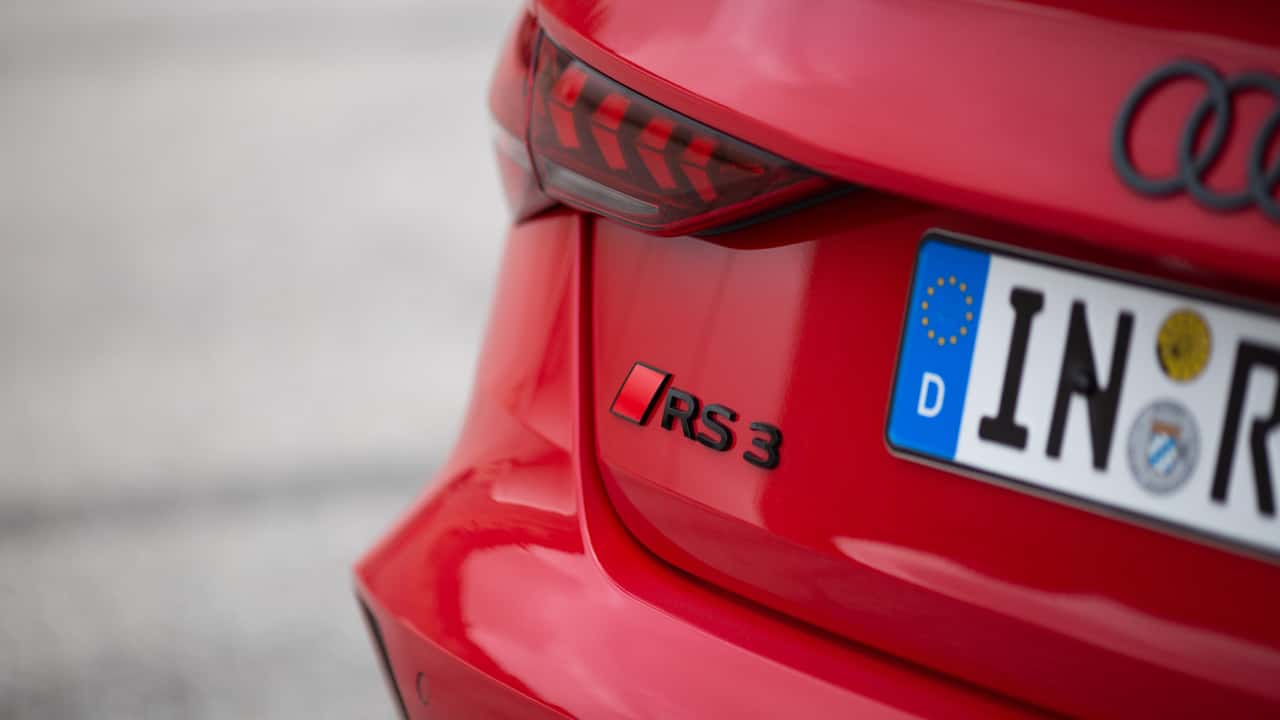
Chris Rosales / Motor1
Pros: Doesn’t Change The Formula, Rides Even Better
Audi doesn’t claim any changes to the steering or brakes, but the facelifted RS3 does feel considerably better in both departments. Squeezing the brake pedal in the pre-facelift car was more imprecise, while the facelifted car has shorter pedal travel and a stiffer pedal that’s easier to modulate. Ditto for the steering: The old rack was extremely quick and alert on-center, but disconnected. The new car’s ratio feels considerably slower but more natural, with a lovely, linear weight buildup.
The result is a more sumptuous driving experience. Despite nearly identical mechanicals, the facelifted RS3 felt substantially different. It traded in the crazed nervousness of the previous car for something more pleasurable and easier to grasp.
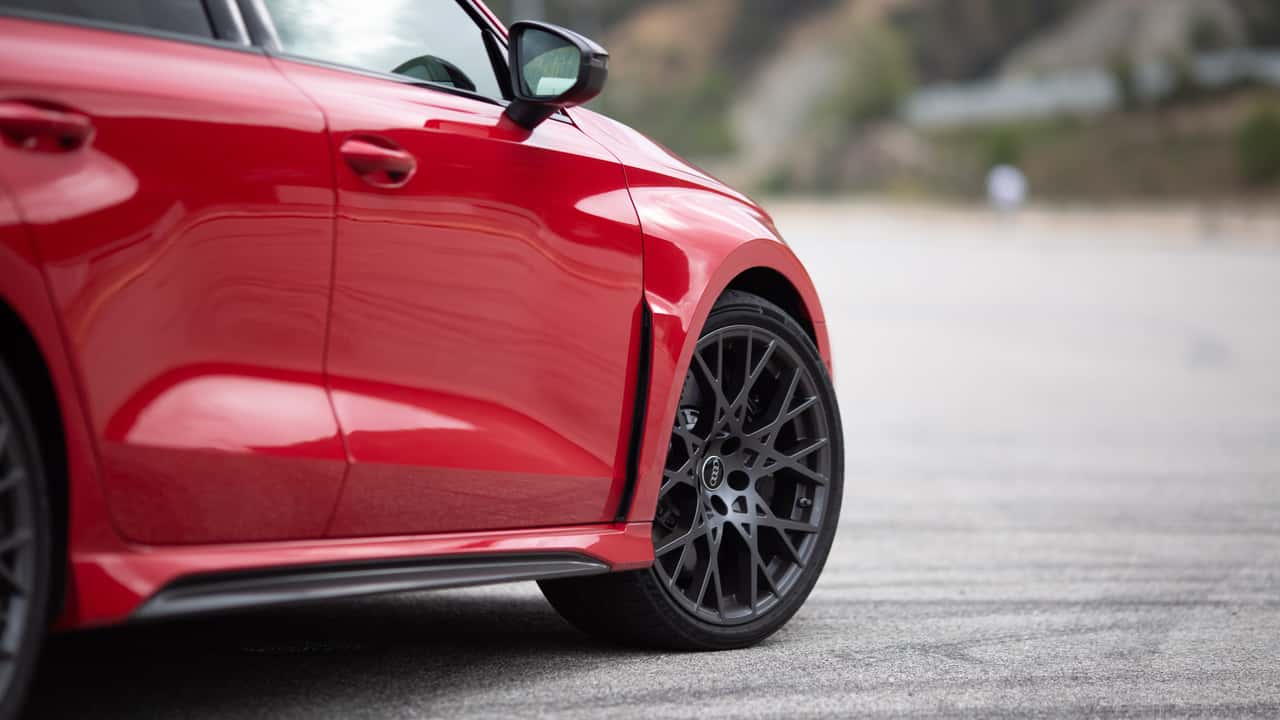
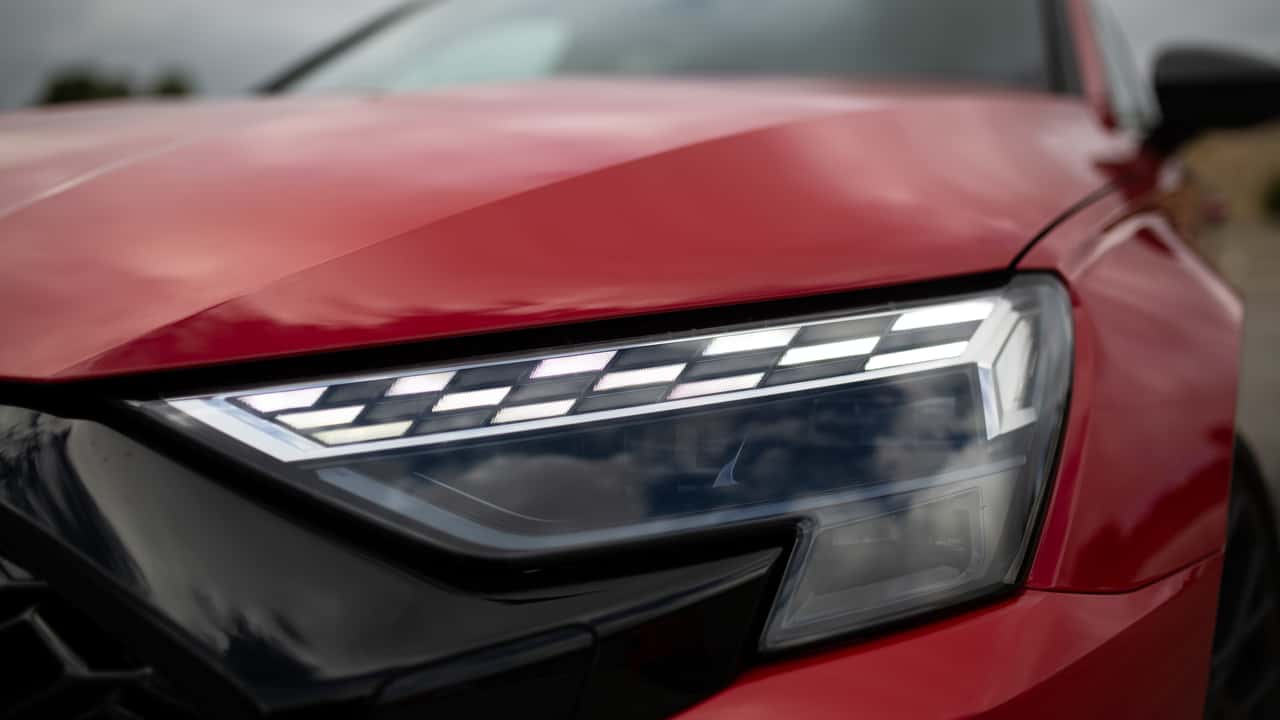

Chris Rosales / Motor1
Handling balance was splendid, with unshakeable stability during corner entry gradually turning into mid-corner yaw. At the suggestion of throttle, the yaw continued, keeping the RS3 pointy until the very end of the corner. The car’s raw mechanical setup was truly excellent, shining through when pushed beyond the limit. The RS3 simply never stopped turning, never entirely succumbing to a true understeer. It is a weapon both on the track and a winding backroad.
If only the RS3 could get out of its own way. With all systems off and the differential set to its most rear-biased mode, the leash was never entirely gone. A new layer of safety exists where there wasn’t one before, even when I demand danger. That can get annoying, but only to those who will track (and drift) their RS3s regularly. Let’s be real—this is a road-going exercise.
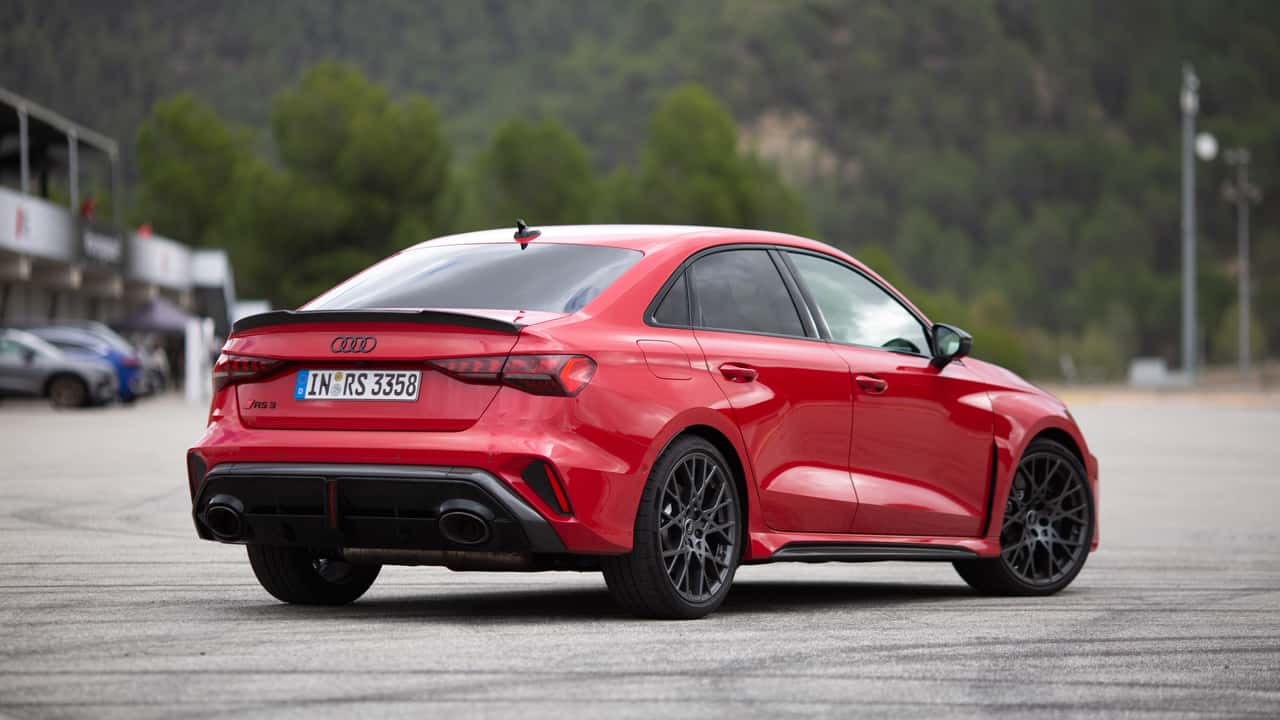
Chris Rosales / Motor1
Cons: Terrible New Steering Wheel, Controls Are Still Confusing
Beyond driving like a lunatic, it’s also a wonderful runabout. The ride, which was nice before, is even more well-damped. There’s just enough road information to remind you that it’s still a performance car, but it absorbs cracks and larger bumps easily. It’s not soft, but it is optimized well.
Couple that with a reasonably quiet cabin, although not totally silent, and a good suite of technology like a heads-up display, a crisp 10.1-inch infotainment screen, a matching 12.3-inch gauge cluster, and a Sonos stereo, and it also feels well-equipped. The only real misses are the new steering wheel, which is no longer round and looks extremely ugly, and a slightly confusing touch-sensitive volume control.
The tweaks were subtle, but the new RS3 is a much better car. Most of all, it has character and charm that comes down almost entirely to two things: The trick rear diff and the inline-five. Mostly the inline-five. And if this world needs something more than ever, it’s cars that are novel and fun. The RS3 fulfills just that.
Competitors
More Audi Reviews
The 2025 Audi Q7 Is Sneaky Great: Review
The S6 Is Classic Audi
Get the best news, reviews, columns, and more delivered straight to your inbox, daily.
Sign up For more information, read our
Privacy Policy and Terms of Use.
| 2025 Audi RS3 | |
| Engine | Turbocharged 2.5-Liter Inline-Five |
| Output | 401 Horsepower / 369 Pound-Feet |
| Transmission | Seven-Speed Dual Clutch Automatic |
| Drive Type | All-Wheel Drive |
| Speed 0-60 MPH | 3.6 Seconds (est.) |
| Base Price | TBA |
25 Oct, 2024 | Admin | No Comments
The 2025 Hyundai Tucson Is God-Tier NPC Transportation: First Drive Review
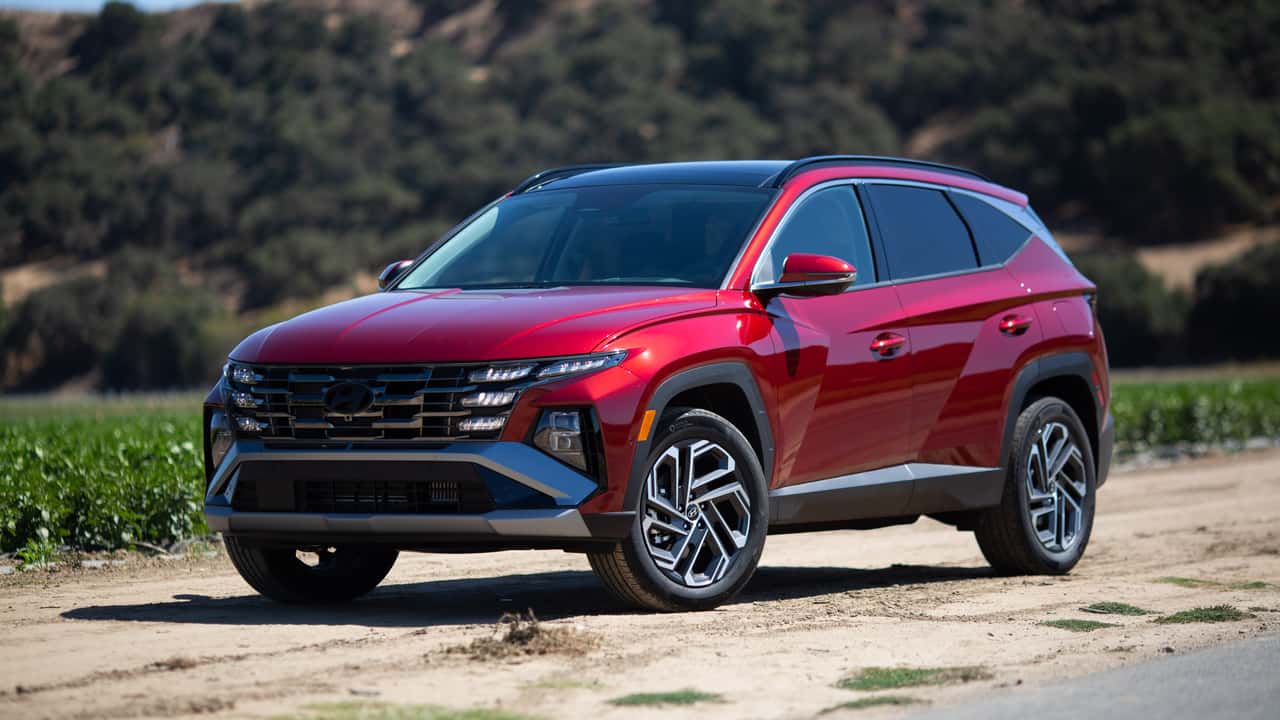

A simple, effective update is all a car needs sometimes. The 2025 Hyundai Tucson is a sterling example. A slight facelift, some new tech, and a brand-new interior help keep the Tucson competitive with other best-sellers in the compact SUV segment. But is it enough to secure victory over top dogs like Toyota RAV4 and Honda CR-V?
| Quick Specs | 2025 Hyundai Tucson Limited Hybrid |
| Engine | Turbocharged 1.6-Liter Four-Cylinder Hybrid |
| Output | 231 Horsepower / 271 Pound-Feet |
| 0-60 MPH | 8.0 Seconds (est.) |
| Weight | 3,906 Pounds |
| Base Price / As Tested | $30,000 (Gas) / $43,060 |
The Tucson basics are all still here. You get three powertrain options: A 2.5-liter four-cylinder, a 1.6-liter turbo hybrid, and a 1.6-liter turbo plug-in hybrid. The 2.5-liter can be had in front-wheel or all-wheel drive while both hybrids get standard all-wheel drive. Then you have your choice of trim levels, from the barebones $30,000 SE FWD, up through the mid-grade SEL that ranges from $32,000 to $34,000, and finally, the top-trim Limited that ranges from $38,000 for a Limited FWD to $47,000 for a Limited plug-in hybrid.
Nothing of note has changed mechanically, with small updates applied to various systems. Most notably, hybrid models get driver-adjustable regenerative braking through steering-wheel-mounted paddles, just like Hyundai’s EVs. Otherwise, it’s the same efficient and refined hybrid powertrain as before, and the same slightly lethargic non-hybrid 2.5-liter engine as well.
The colossal update comes with the interior, which is almost entirely new for the 2025 Tucson. It ditches the already decent old interior with a dashboard layout nearly identical to the Elantra and Santa Fe. A wide, curved instrument panel spans most of the dashboard with twin 12.3-inch screens, one for the gauge cluster and the other for the infotainment. A new dash also brings back a feature not seen since the early ’90s with an open storage cubby in the passenger-side dash, as well as a new touch-sensitive HVAC panel.
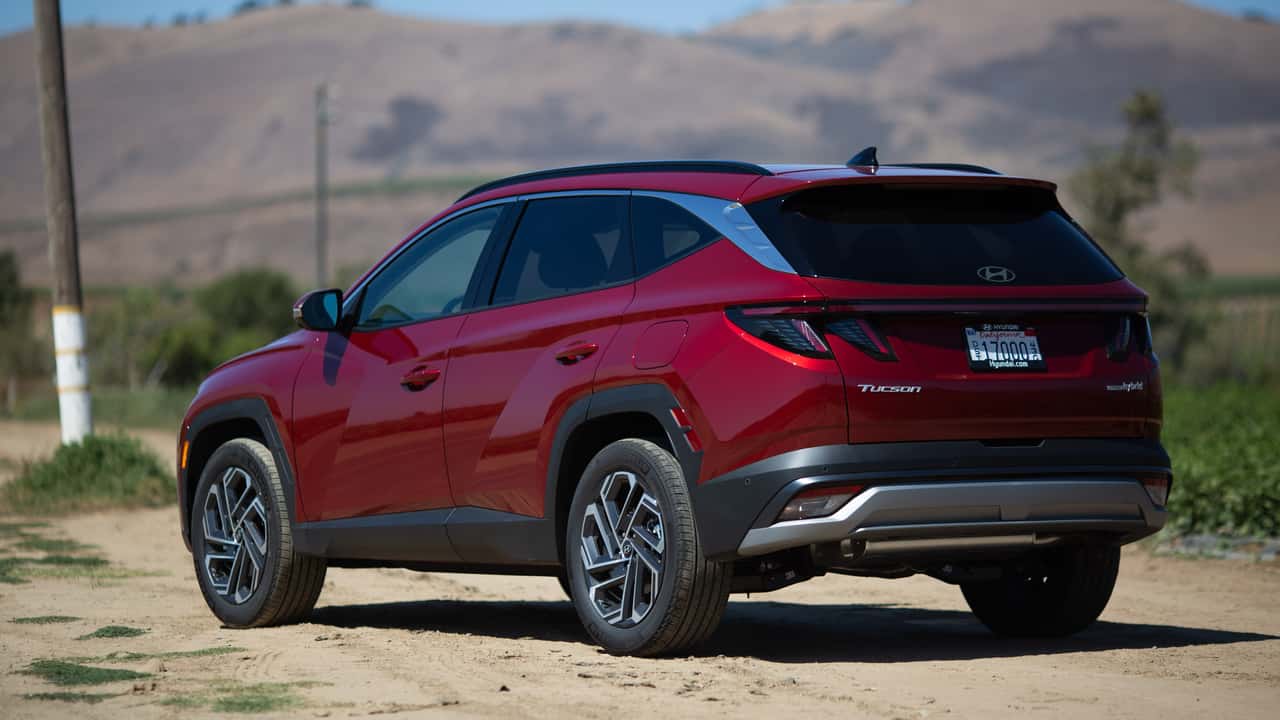
Chris Rosales / Motor1
Pros: Nice Interior, Great Fuel Economy, Surprisingly Nice To Drive, Good Ride
On the road, the Tucson hits its marks with a confident stride. The new interior is exceedingly usable, with plenty of storage space and lots of pockets around the cabin. The new screen layout looks crisp and the infotainment screen has smartphone-esque responsiveness. Everything feels high-quality with a nice spread of materials, including some textured fabrics and soft leather surfaces adding tactile intrigue.
It was a lovely place to spend time, with only a couple of demerits. For one, there’s too much interior noise, with critical frequencies from the tires and wind noticeable at highway speeds. It was reasonably quiet for the most part, which maybe made those other sounds more obvious, but it was unexpected. Not a dealbreaker, but it’s certainly in contrast to the rest of the interior’s quiet excellence.


Chris Rosales / Motor1
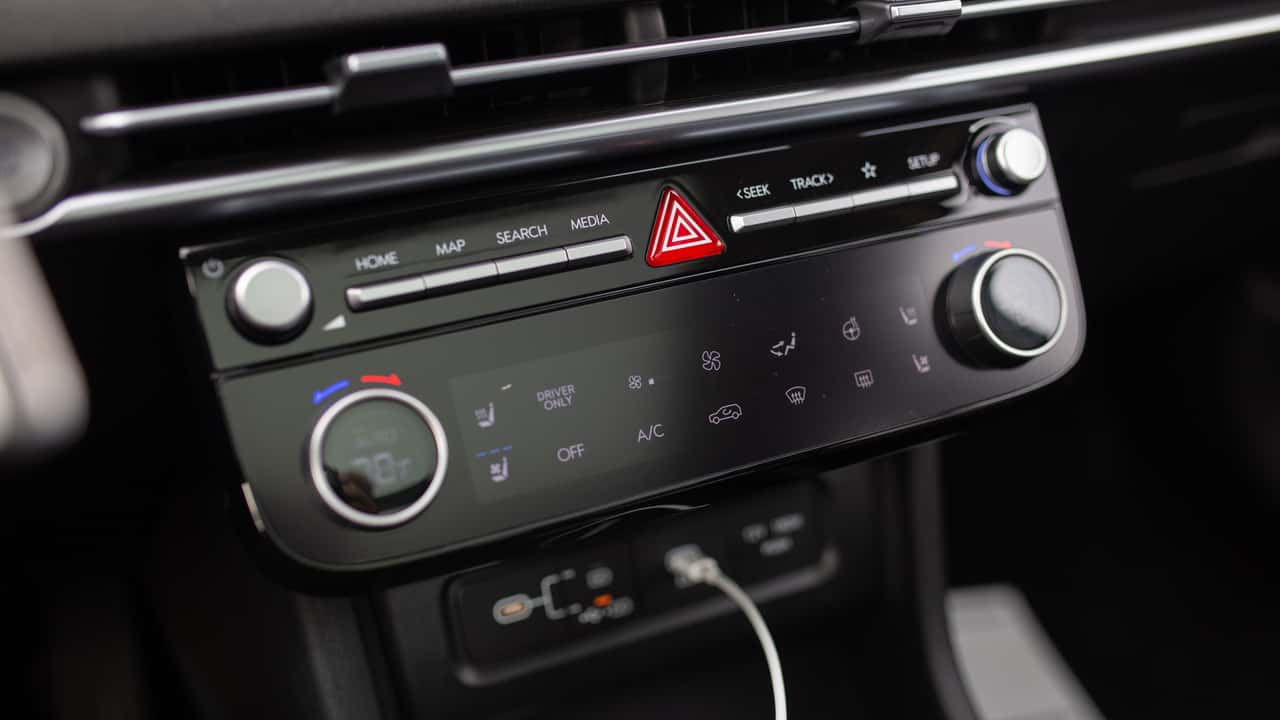
Chris Rosales / Motor1
Meanwhile, other minor details were welcomed—like slots for the rear seatbelt buckles to live in while the second row is folded down, or a quiet mode that mutes the rear speakers for rear passengers. The general attention to detail and design make the Tucson more lovable than I expected.
For the stated power output of the Limited hybrid I drove, it didn’t feel too eager to accelerate. It had adequate power, but didn’t feel like the 231 horsepower I was expecting, even with a brimmed battery pack. This is probably because the Tucson Limited hybrid is fairly heavy at 3,904 pounds, but at least it did return an honest 34 miles per gallon combined on a 150-mile loop. Then there was Hyundai’s advanced driver’s assistance system, dubbed Highway Driving Assist II. The adaptive cruise control worked well and braked smoothly in traffic, but I found the lane keeping to be irritatingly swervy.
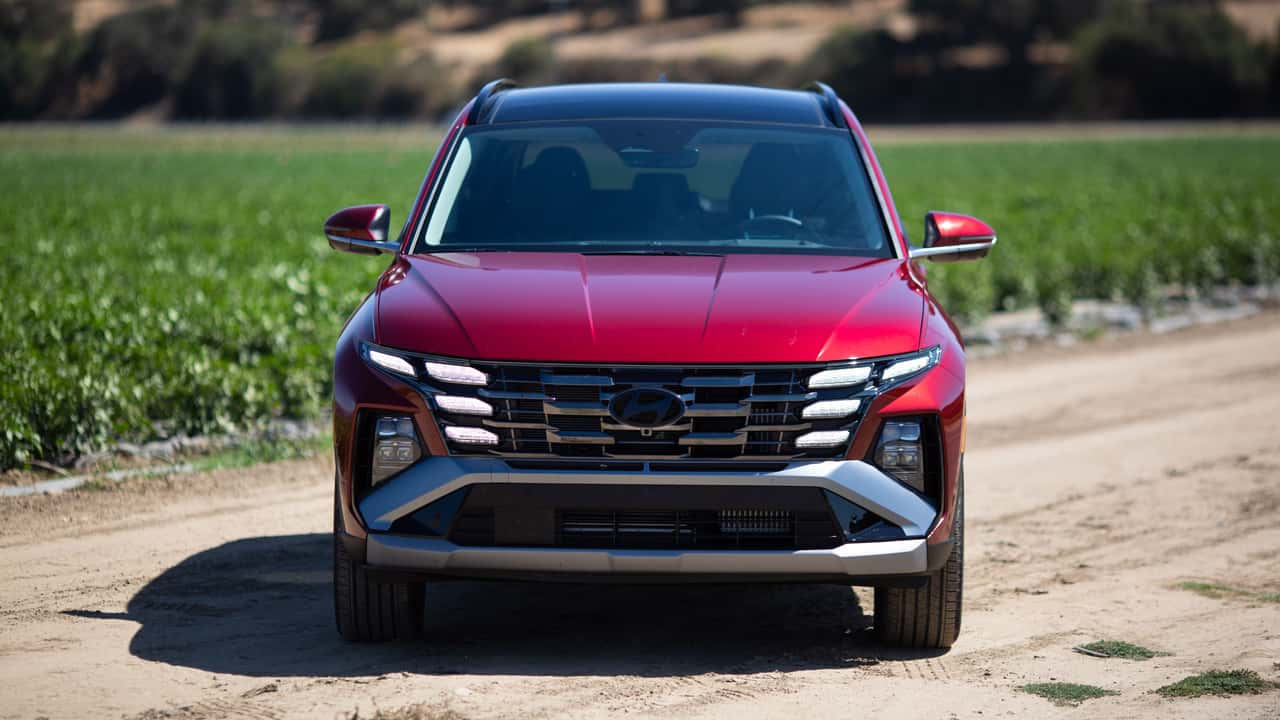
Chris Rosales / Motor1
Cons: Not All That Power, Adaptive Safety Needs Refinement
There is no doubt, however, that the updated Tucson drives well. Its ride quality approaches exceptional, with excellent damping over a mix of large and small bumps. What was most impressive was how soft it was without compromising handling or body control.
Typically, handling doesn’t factor all that much into a compact SUV purchase, but the Tucson also handles well enough to make note of it. It has a nice, natural steering effort curve and excellent feedback from the electronically assisted rack. The steering wasn’t afraid to weigh up in corners and never felt too light or disconnected. A strangely impressive effort in an otherwise ordinary car.
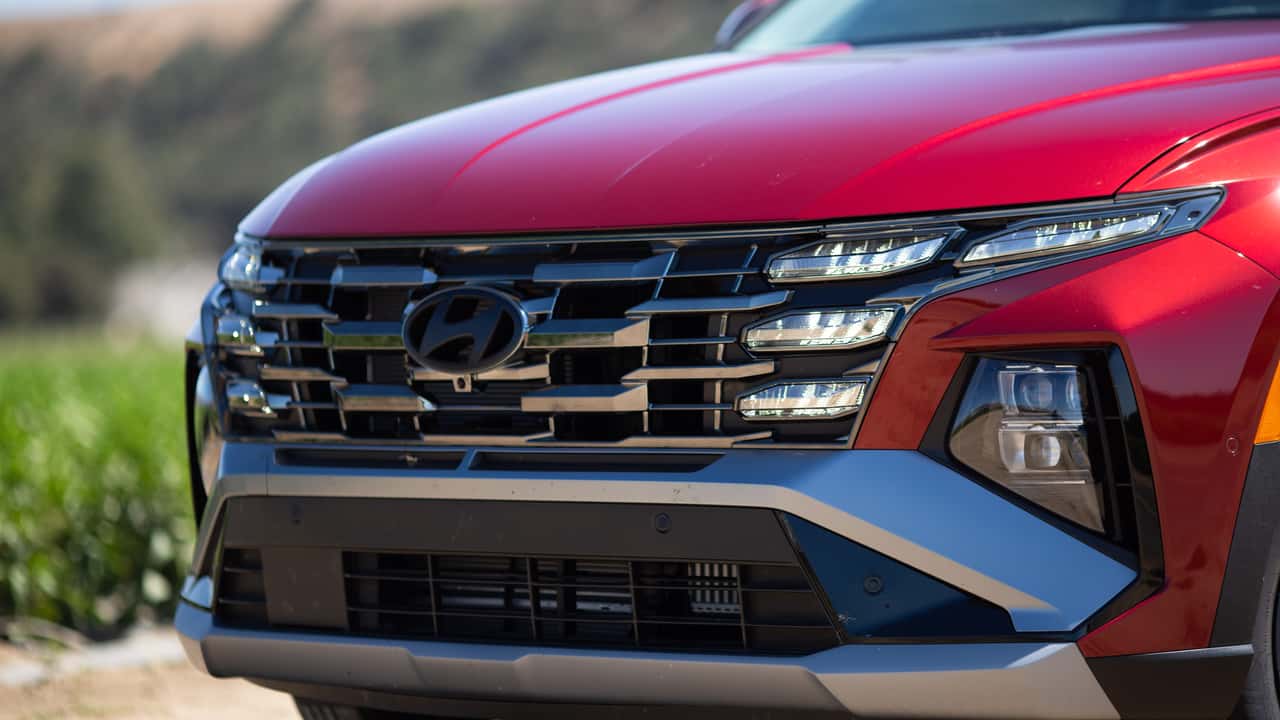
Chris Rosales / Motor1
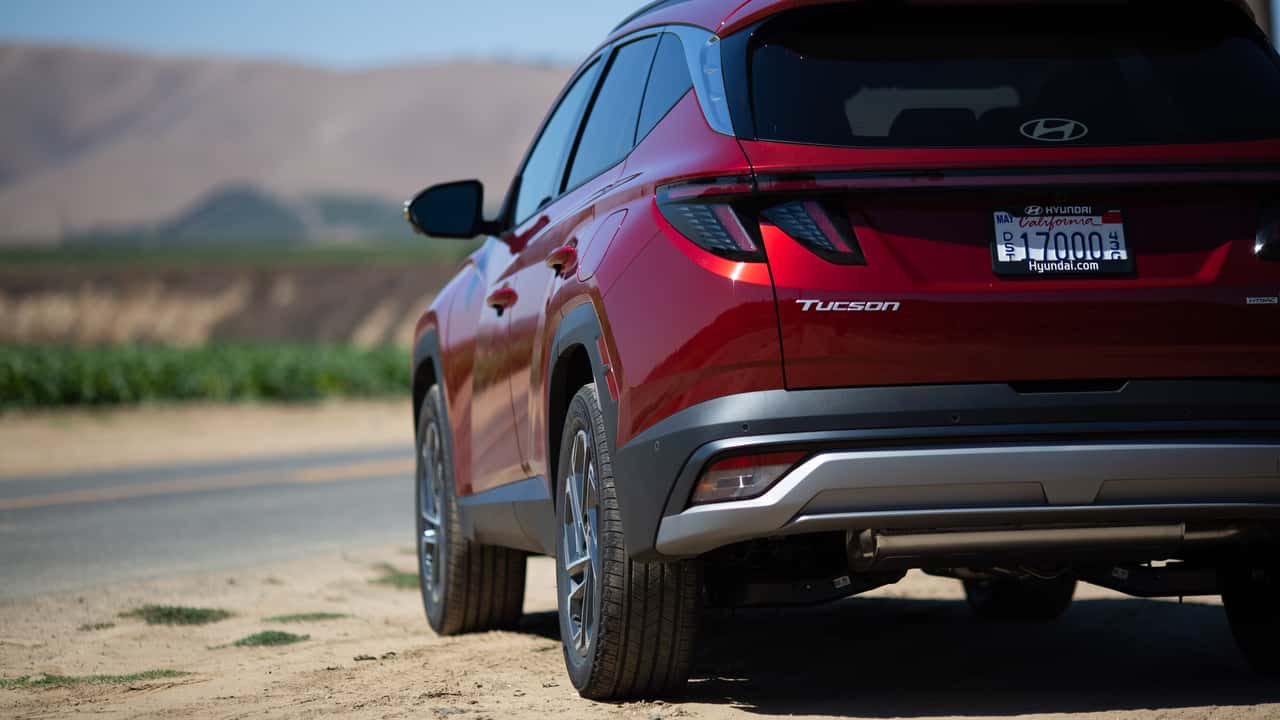
Chris Rosales / Motor1
Hyundai’s effort amounts to an SUV that can truly take the fight to the top contenders in the segment. Hyundai’s infotainment and screen tech is class-leading, as is the ride and handling, and the powertrains do a similar job to the competition. The 2025 Tucson falls slightly short in interior noise—but that’s about it.
Overall, the Hyundai Tucson is a true value proposition with a range of meaningful updates and added features that amount to a more cohesive SUV than the rest. In many ways, the Tucson feels like the best compact SUV in the segment.
Competitors
Chevrolet Equinox
Honda CR-V
Mazda CX-5
Toyota RAV4
Competitor Reviews
The 2025 Chevrolet Equinox Does Enough
2023 Honda CR-V Hybrid Review: Loud, Thrifty, And Expensive
Get the best news, reviews, columns, and more delivered straight to your inbox, daily.
Sign up For more information, read our
Privacy Policy and Terms of Use.
| 2025 Hyundai Tucson Limited Hybrid | |
| Engine | Turbocharged 1.6-Liter Four-Cylinder Hybrid |
| Output | 231 Horsepower / 271 Pound-Feet |
| Transmission | Six-Speed Automatic |
| Drive Type | All-Wheel Drive |
| Speed 0-60 MPH | 8.0 Seconds (est.) |
| Weight | 3,906 Pounds |
| Efficiency | 35 City / 35 Highway / 35 Combined |
| Seating Capacity | 5 |
| Towing | 2,000 Pounds |
| Cargo Volume | 38.7 / 74.5 Cubic Feet |
| Base Price | $30,000 (Gas) |
| As-Tested Price | $43,060 |
| On Sale | Now |

